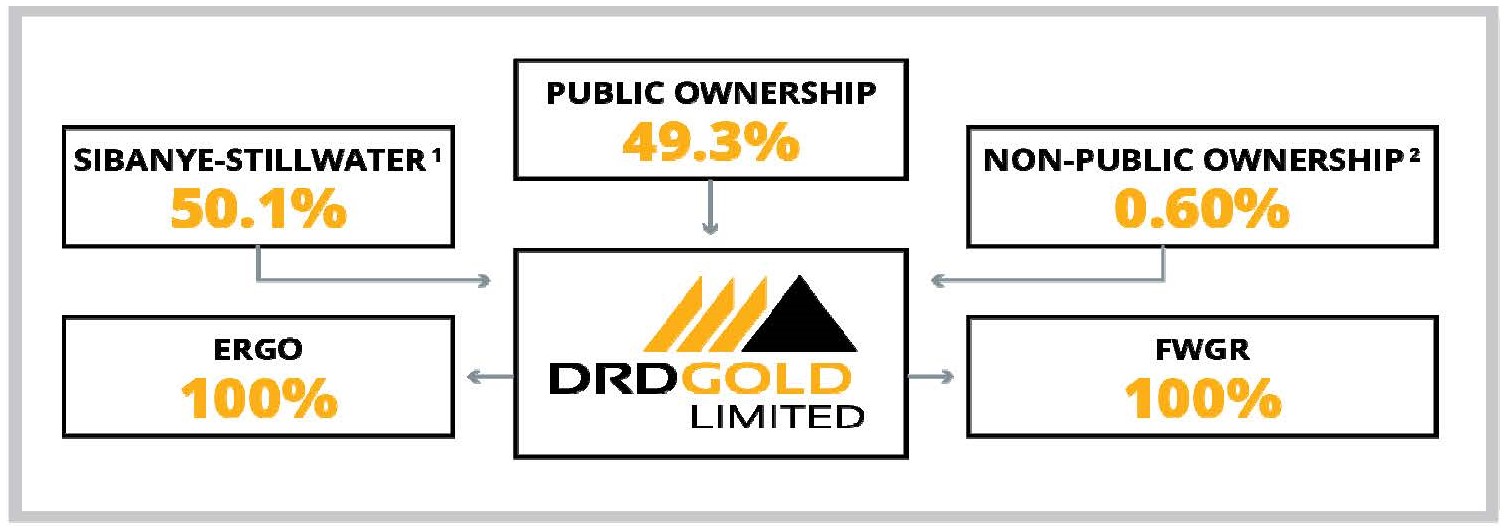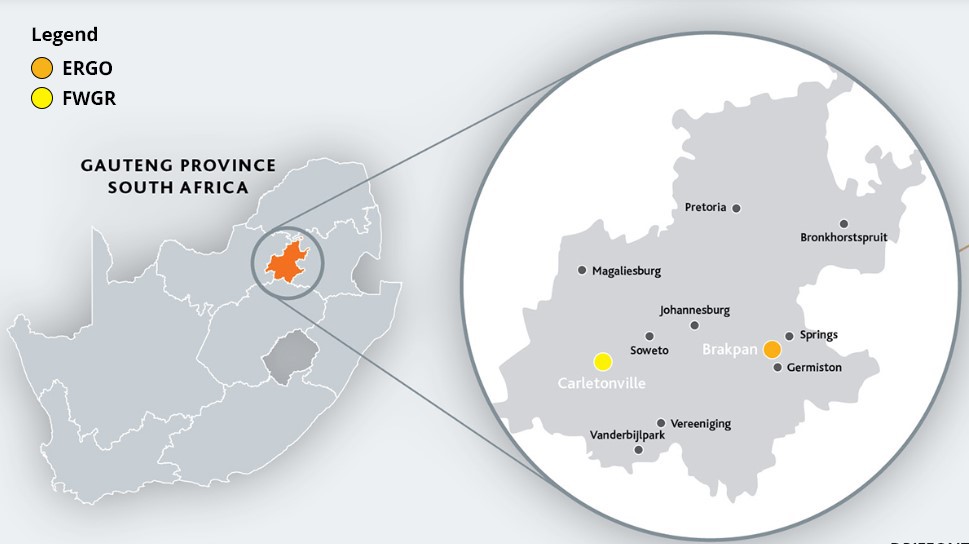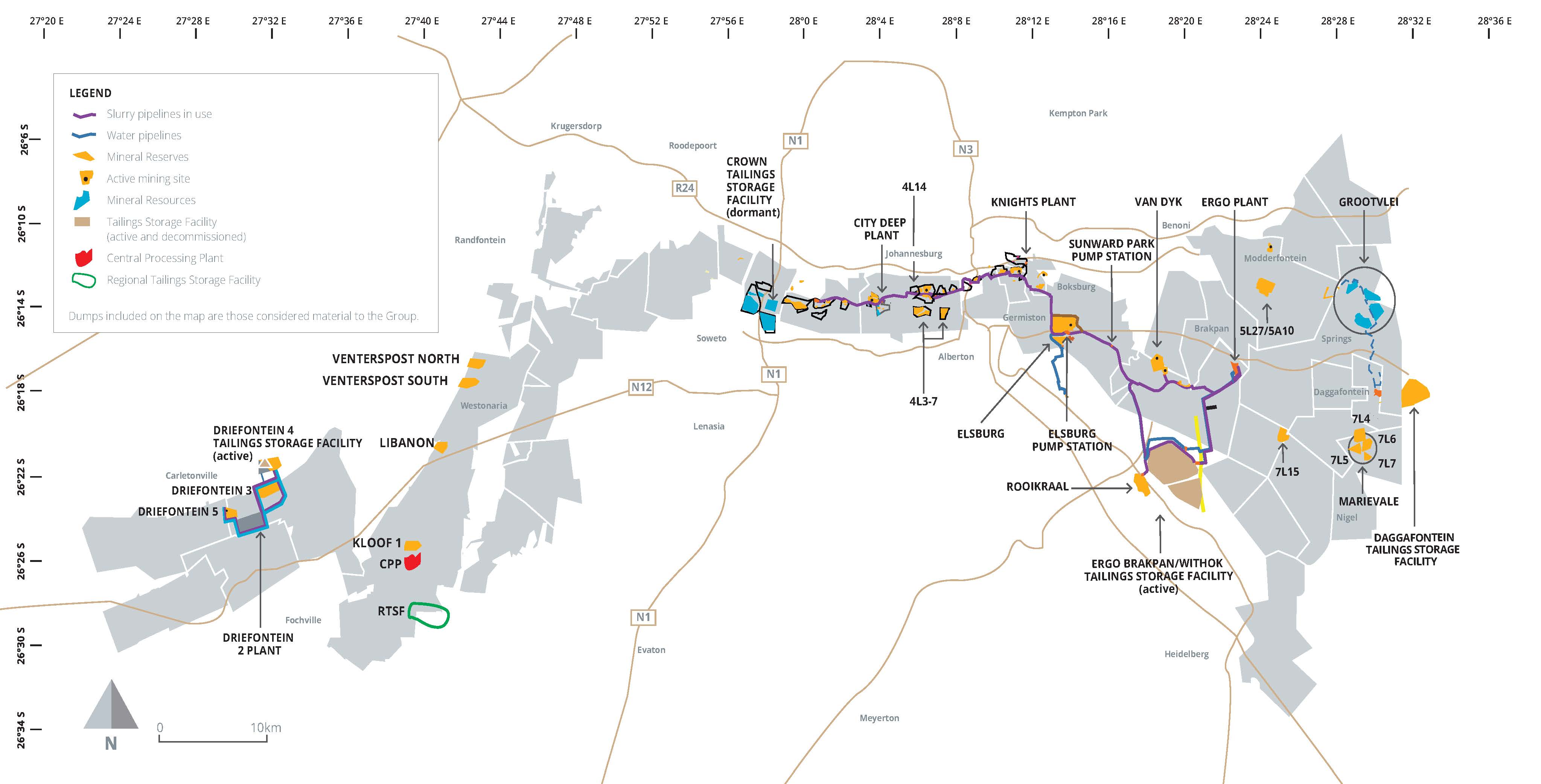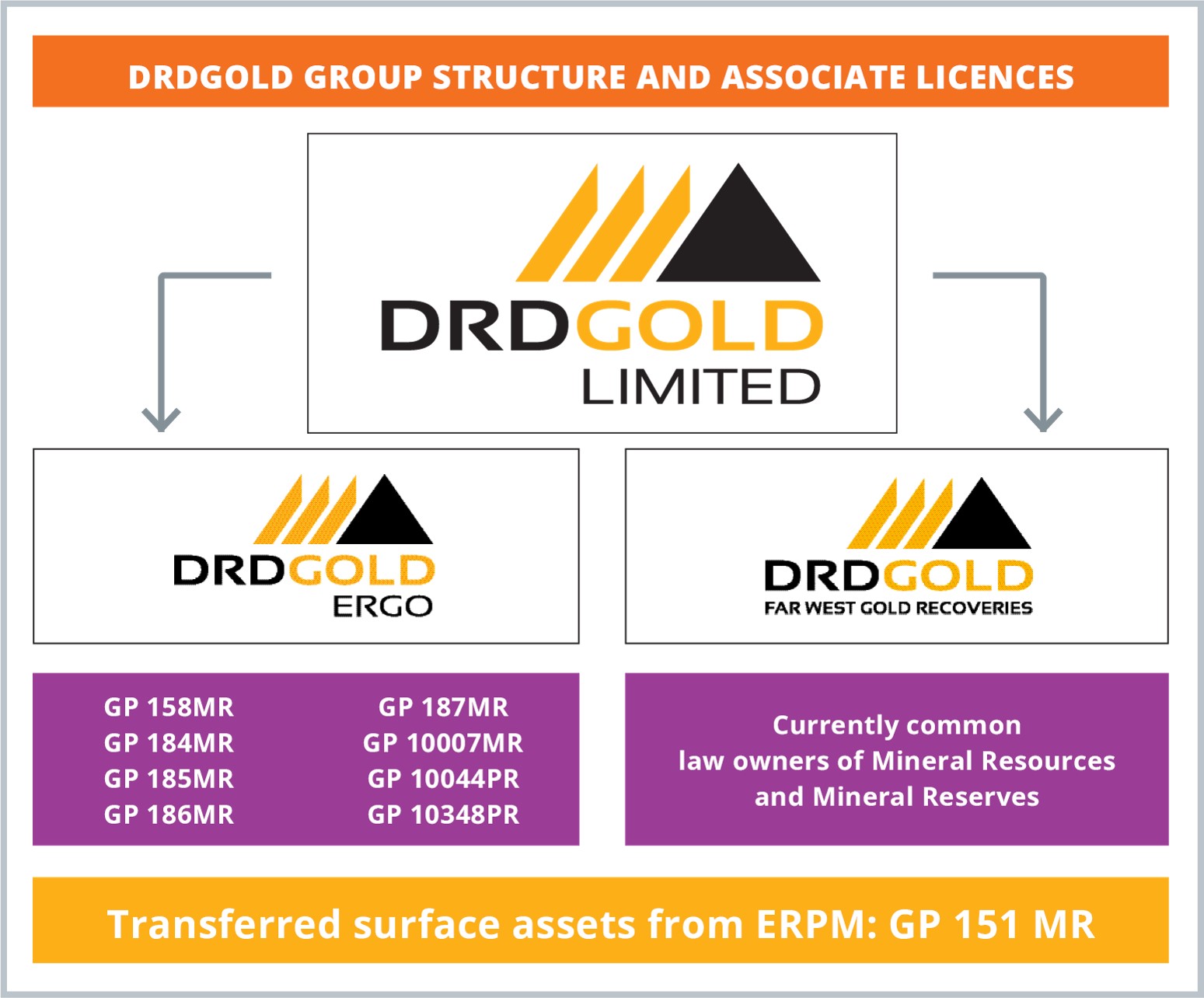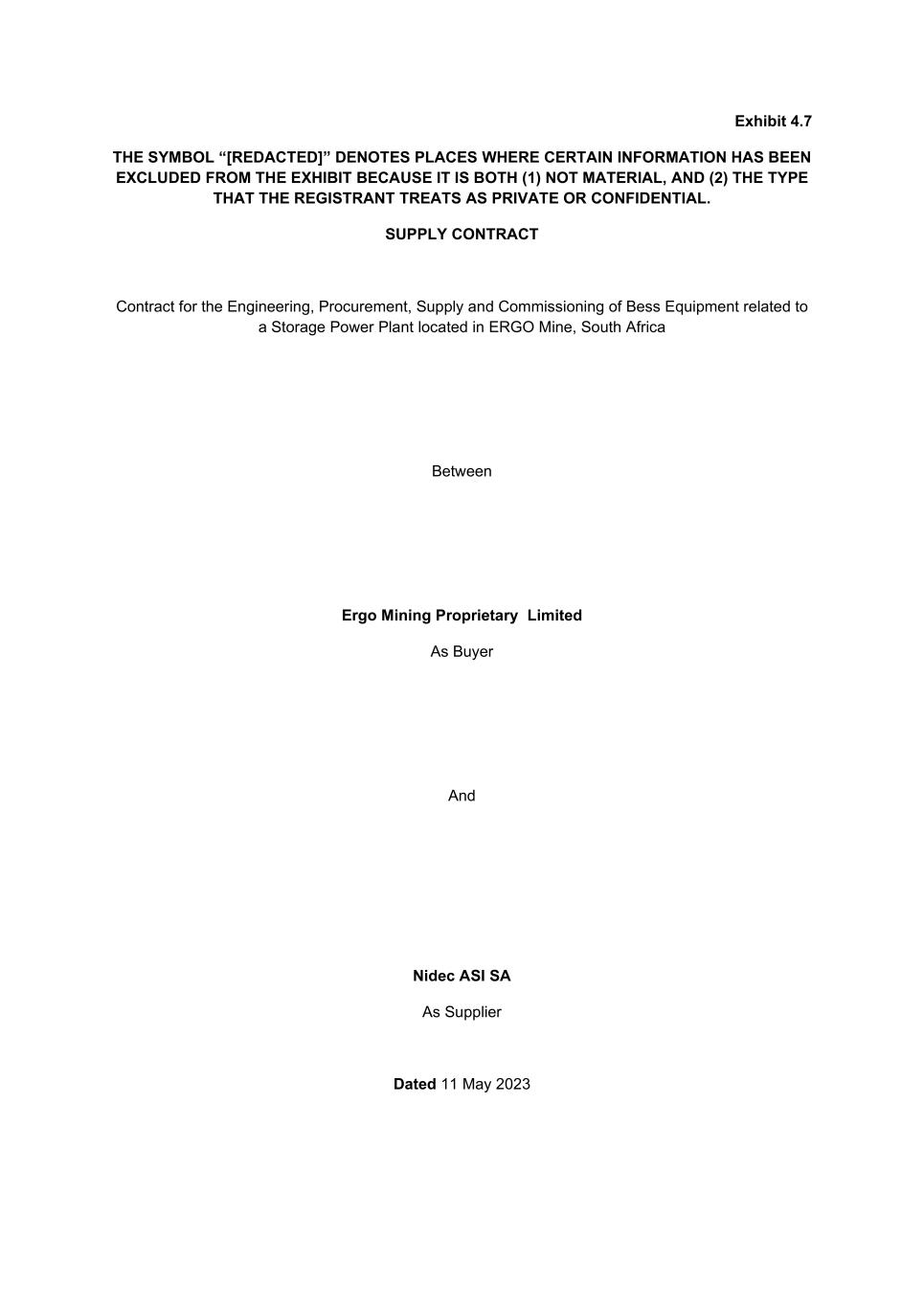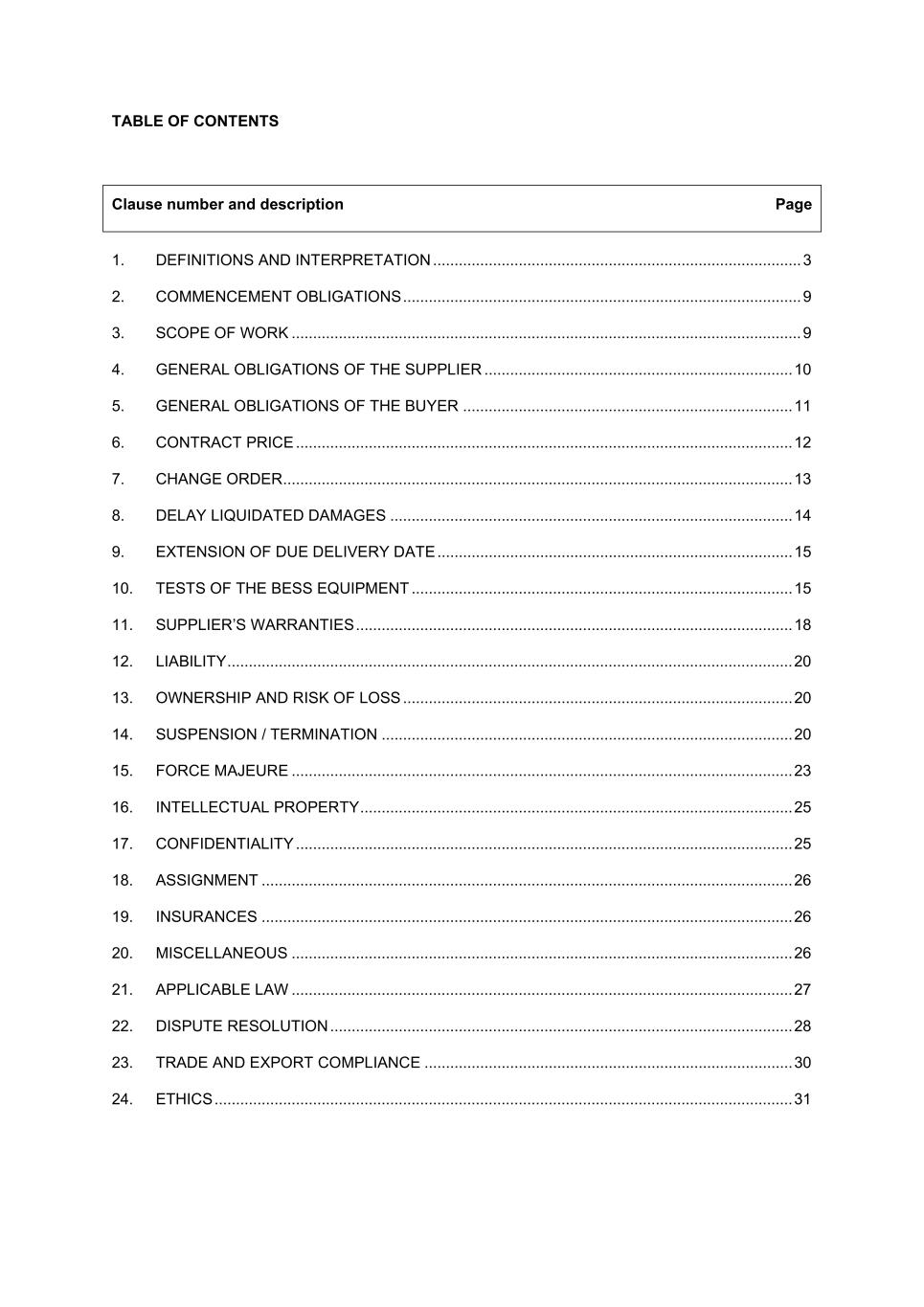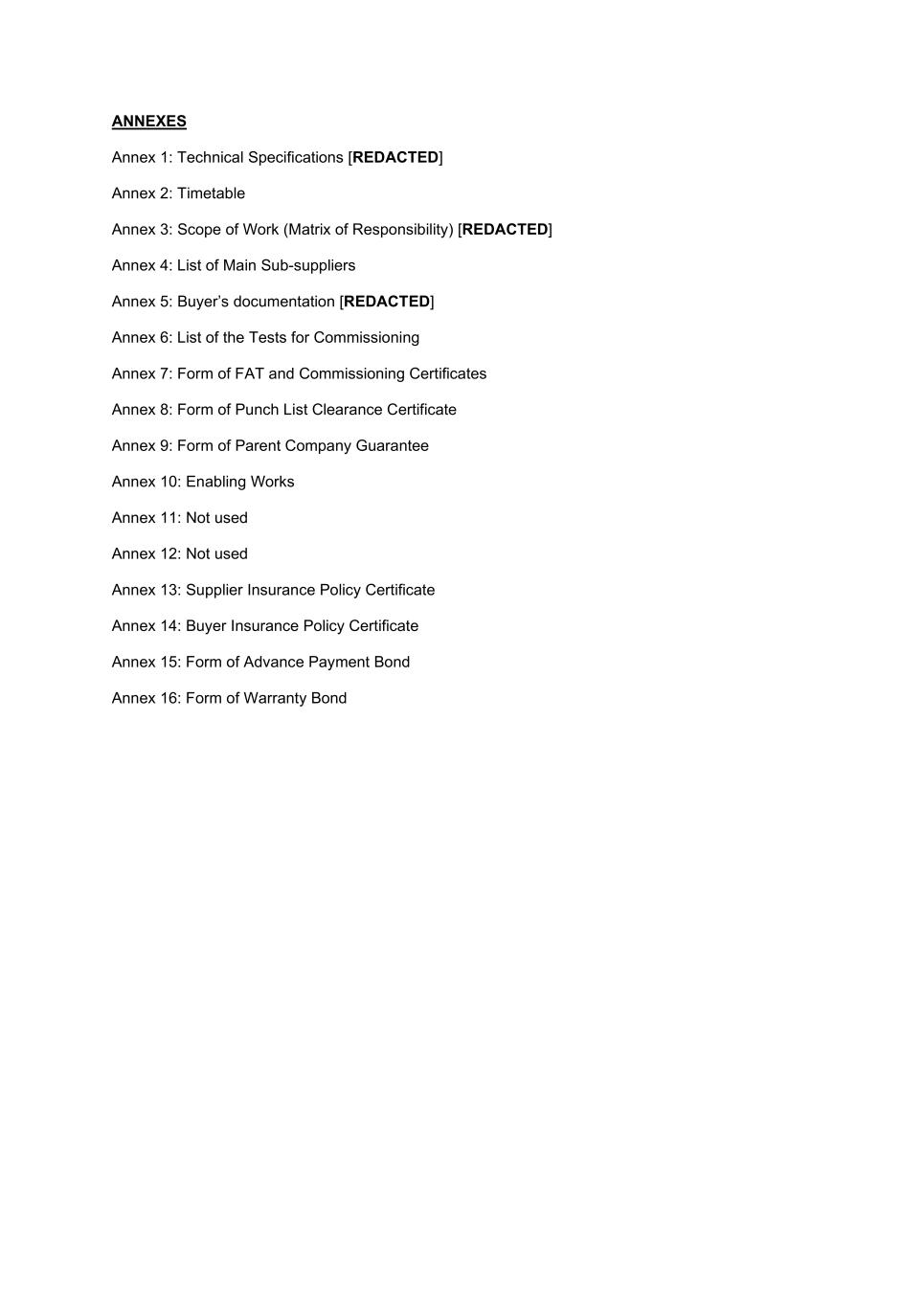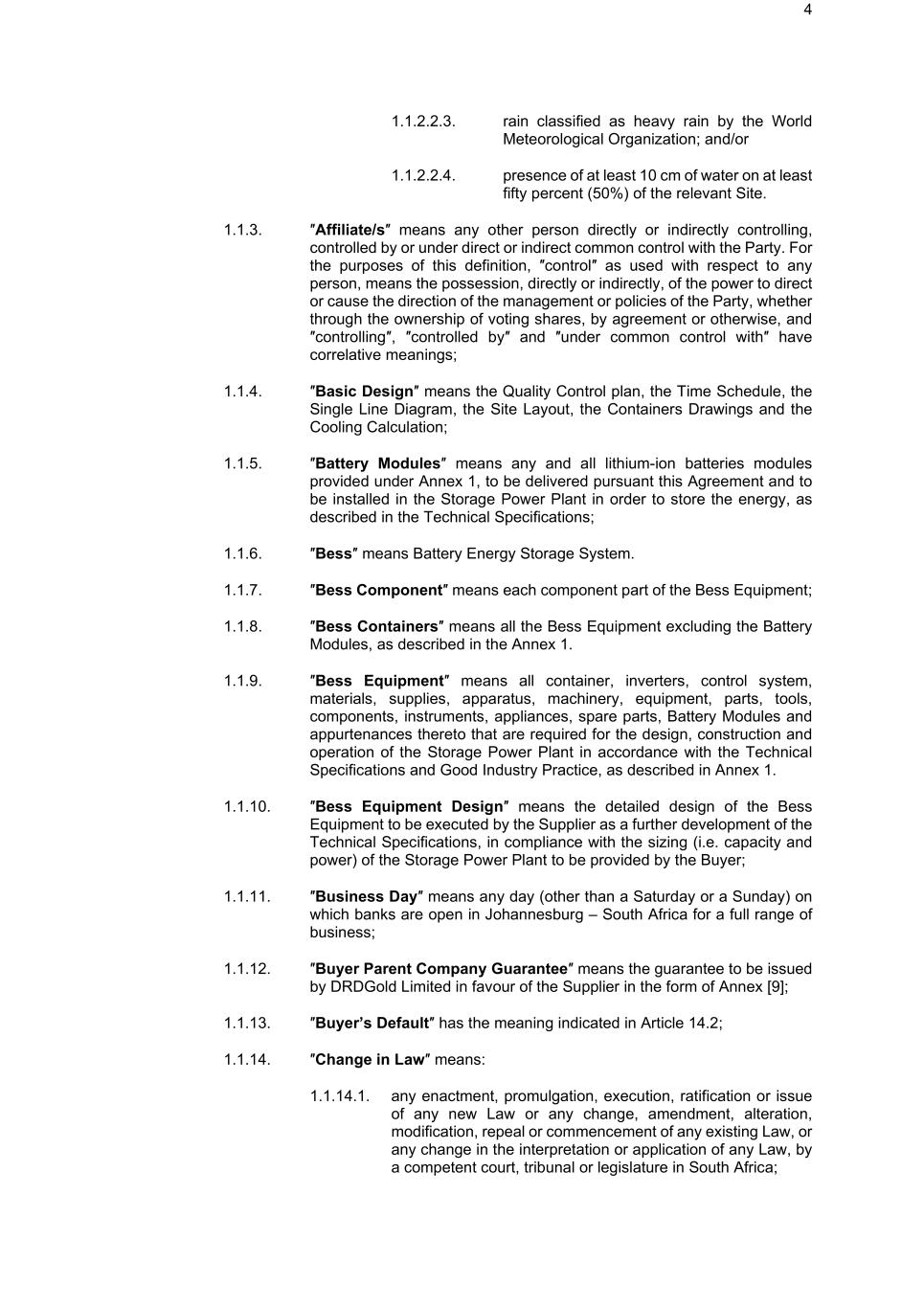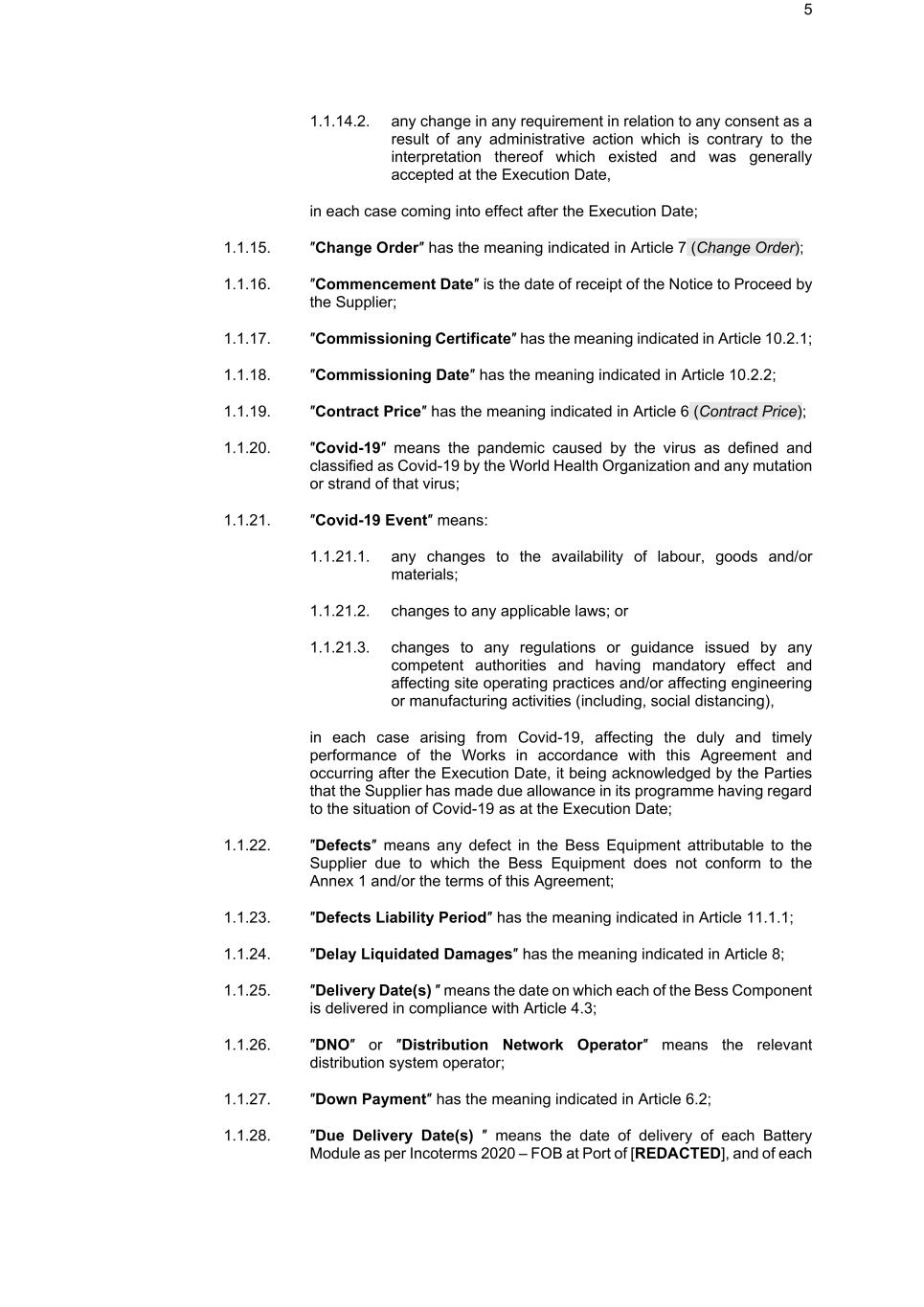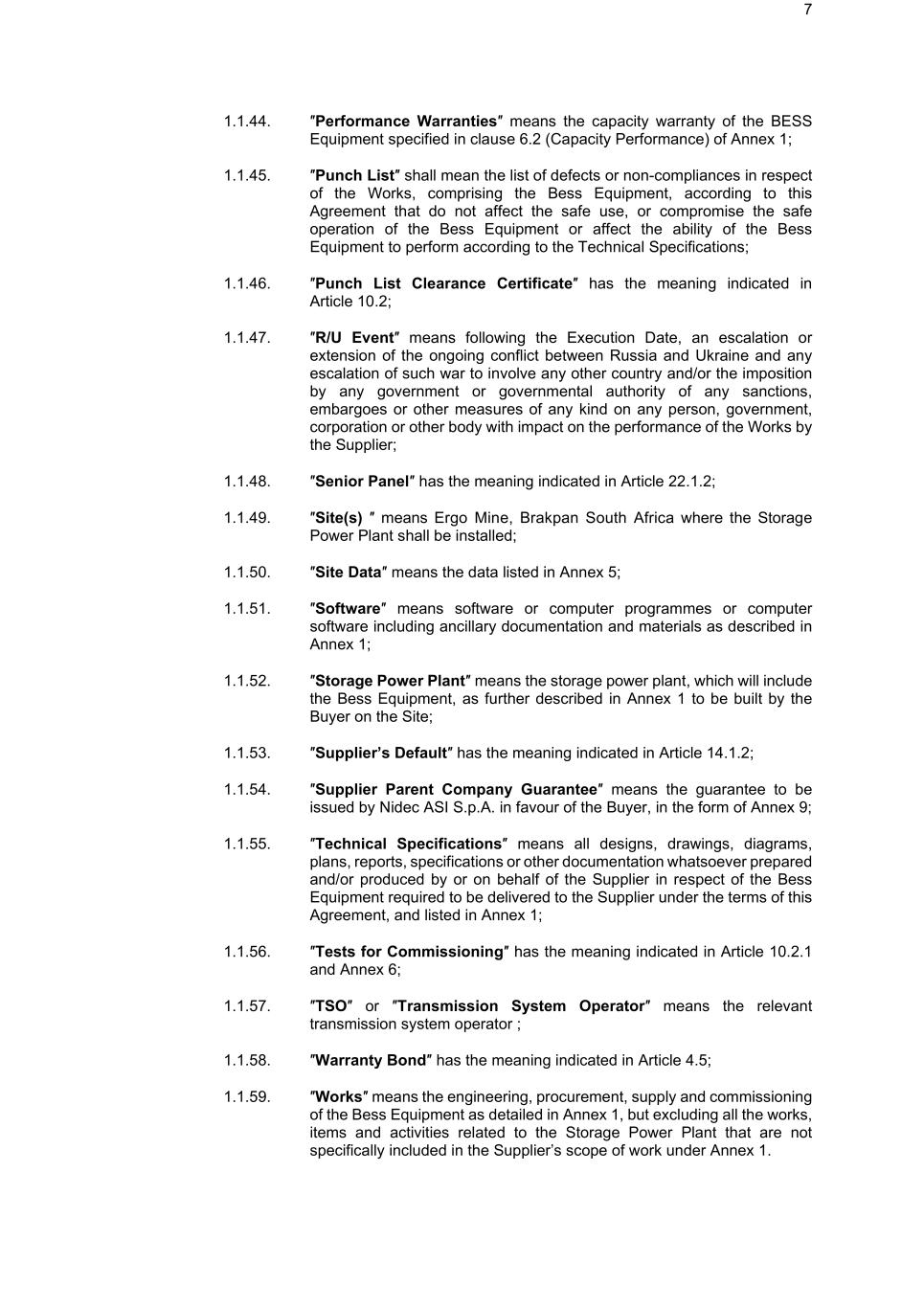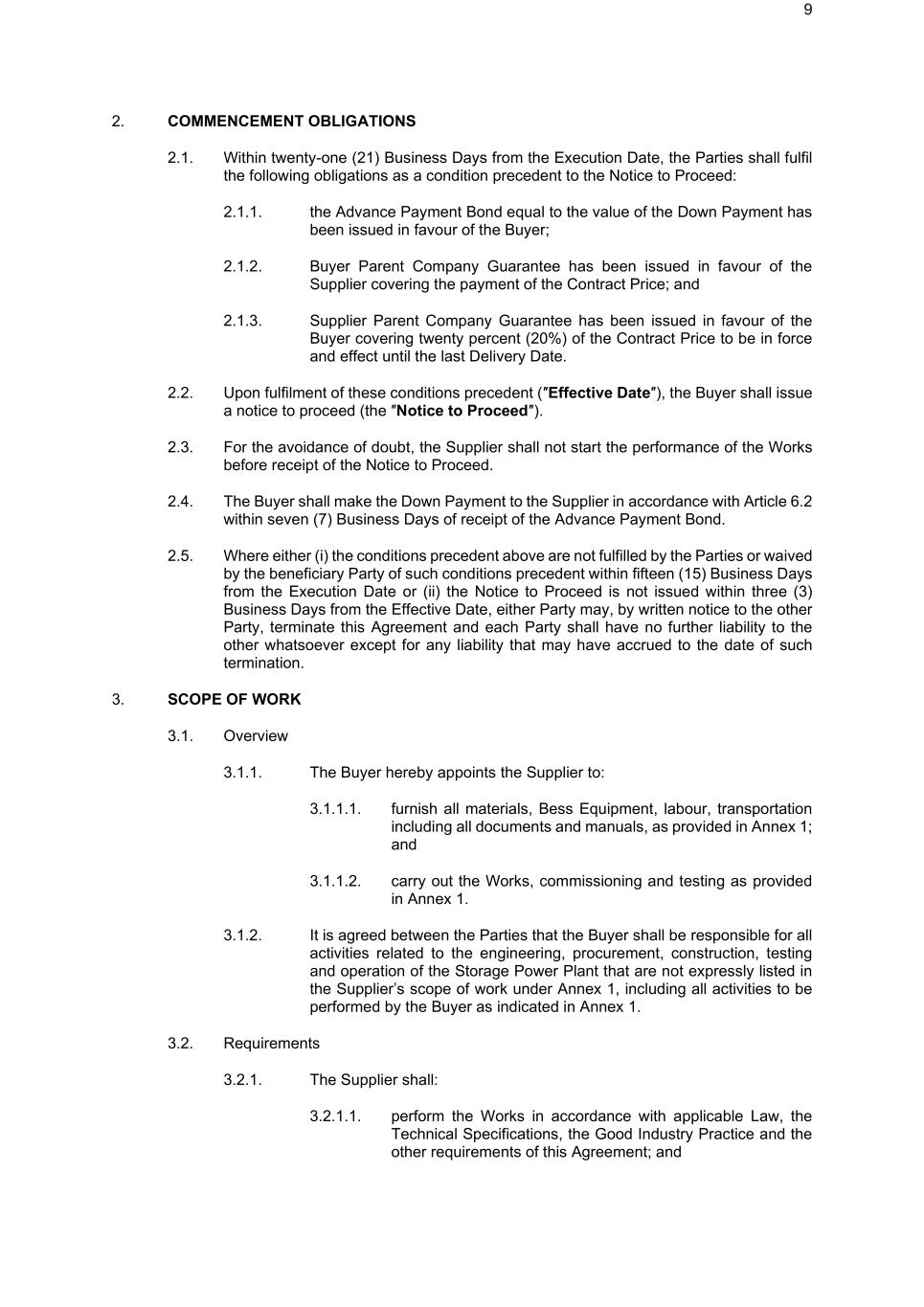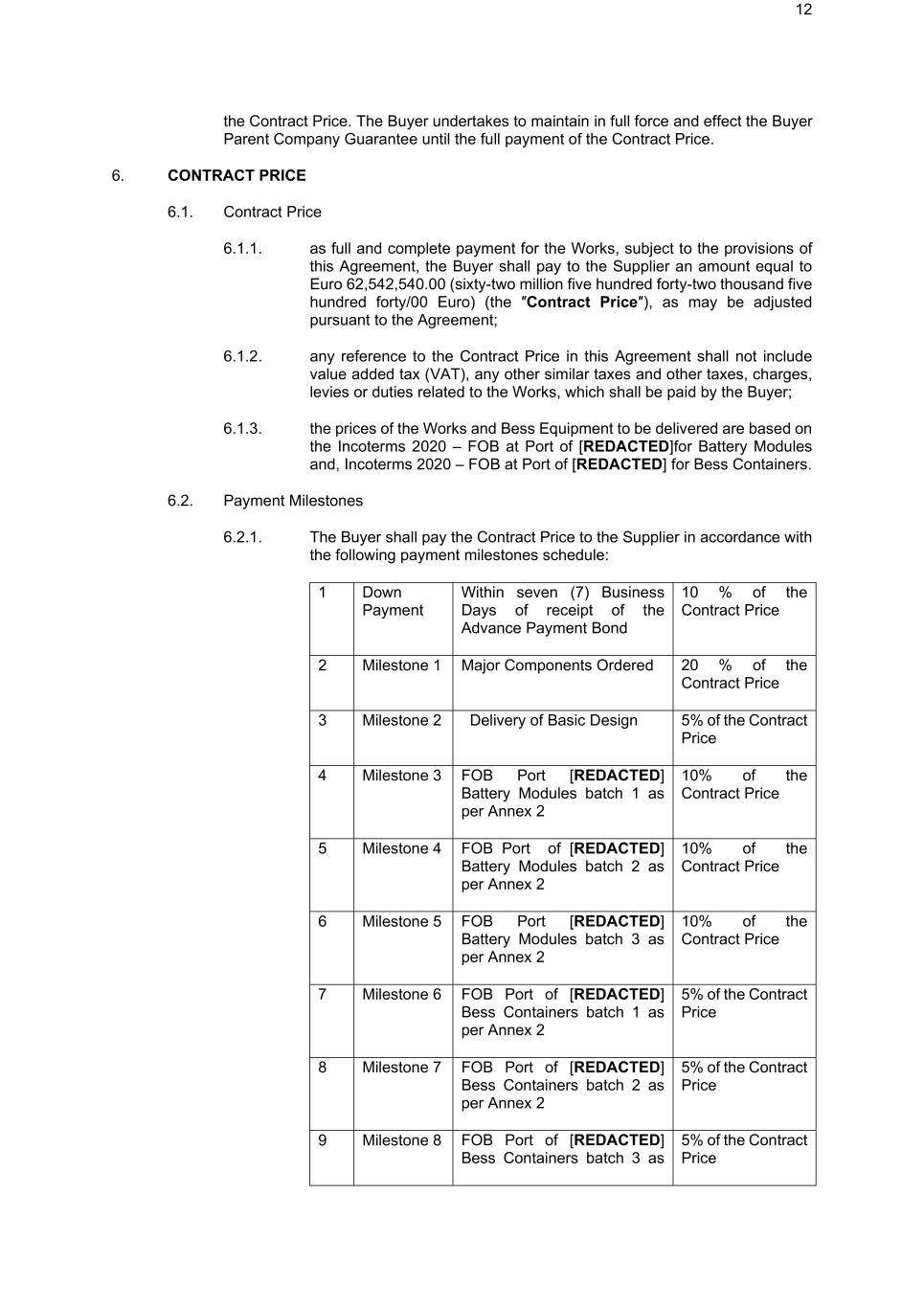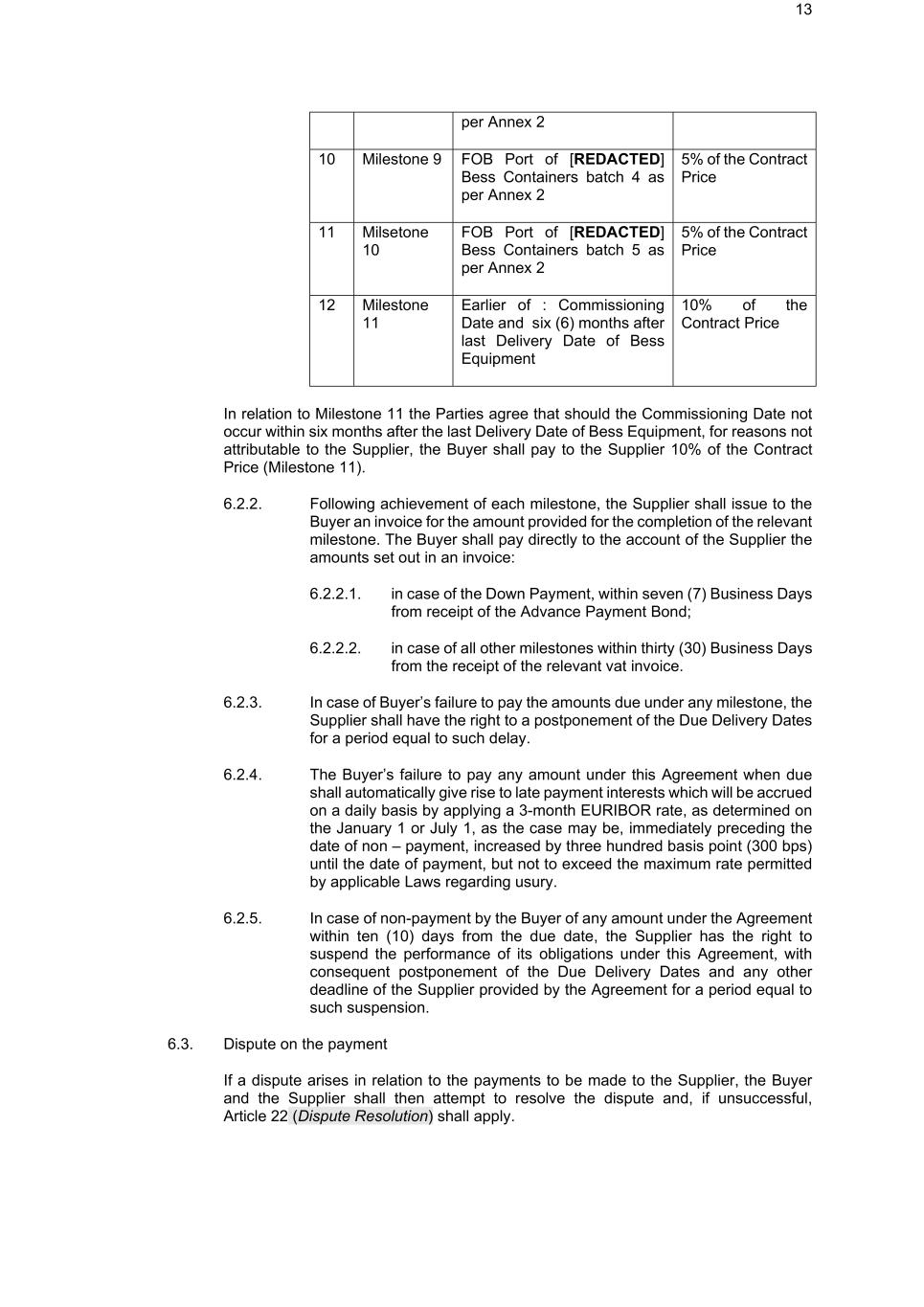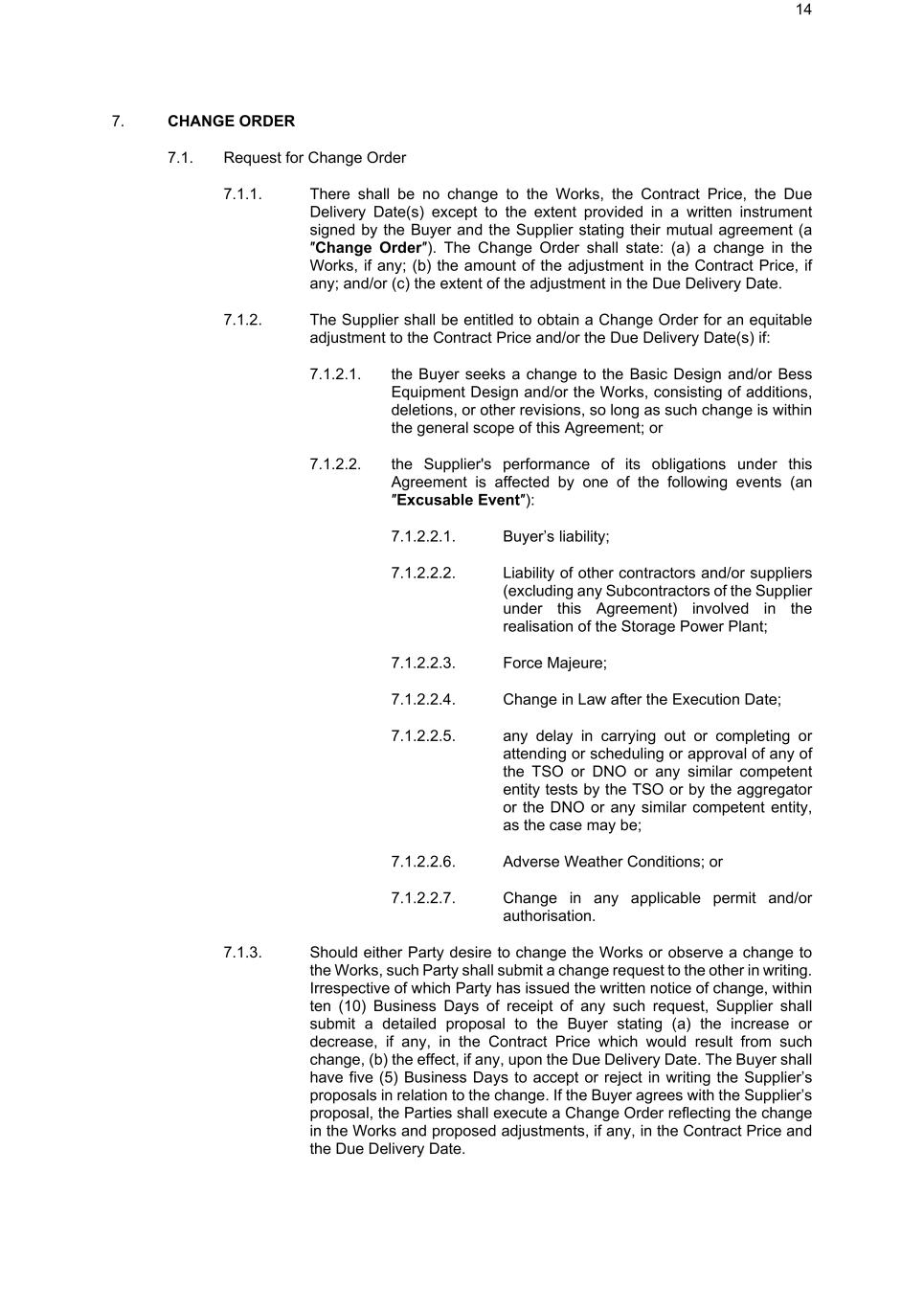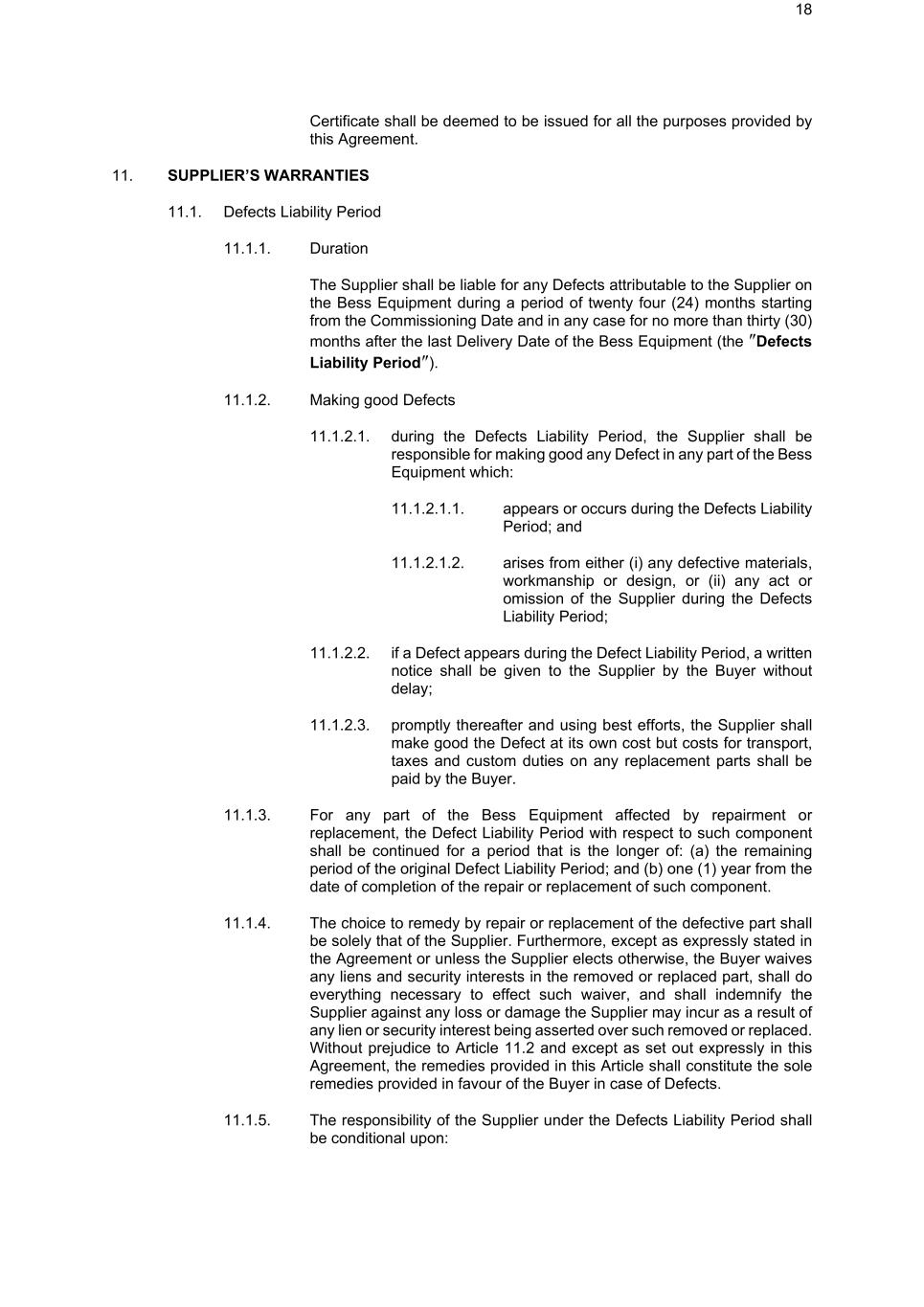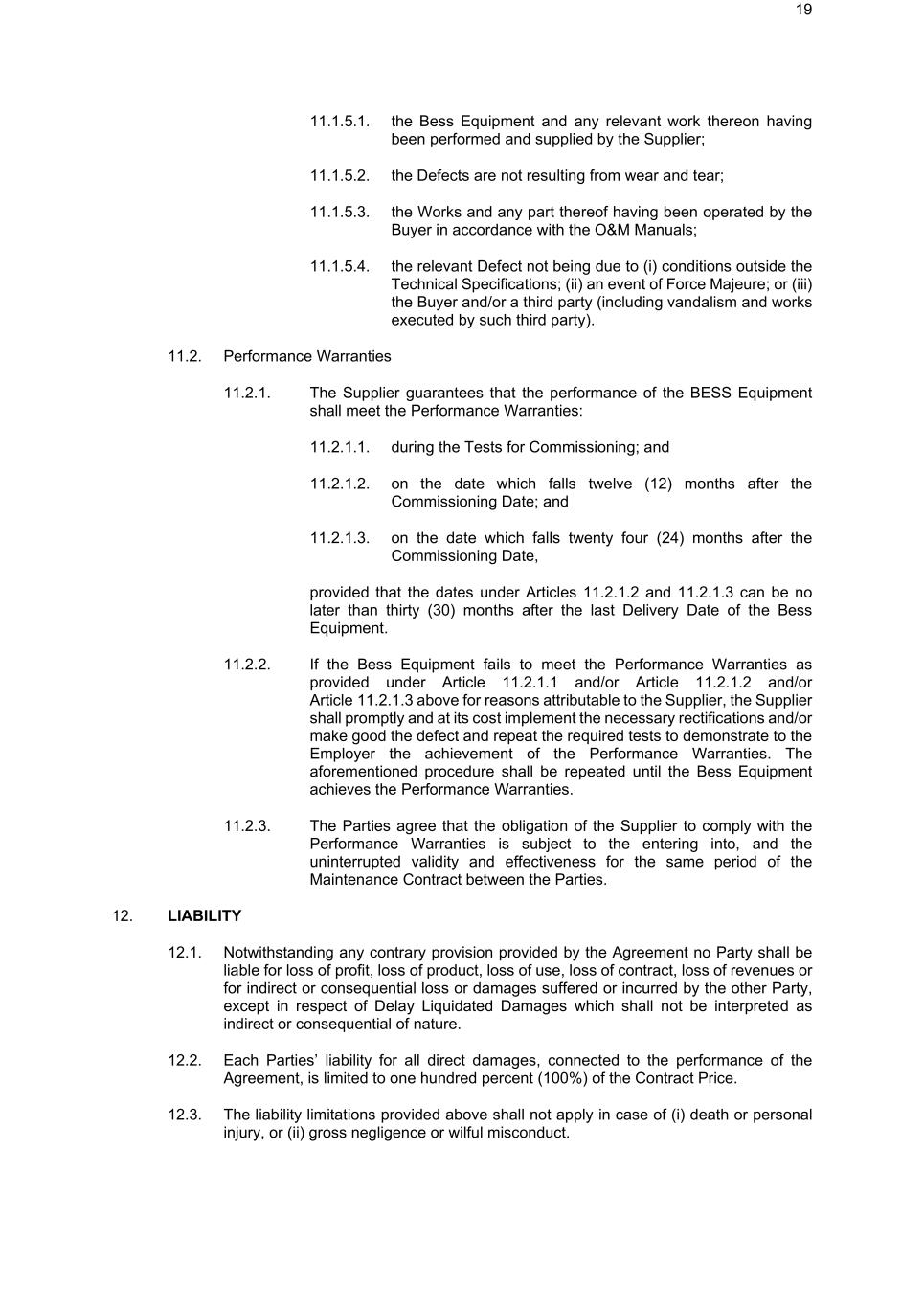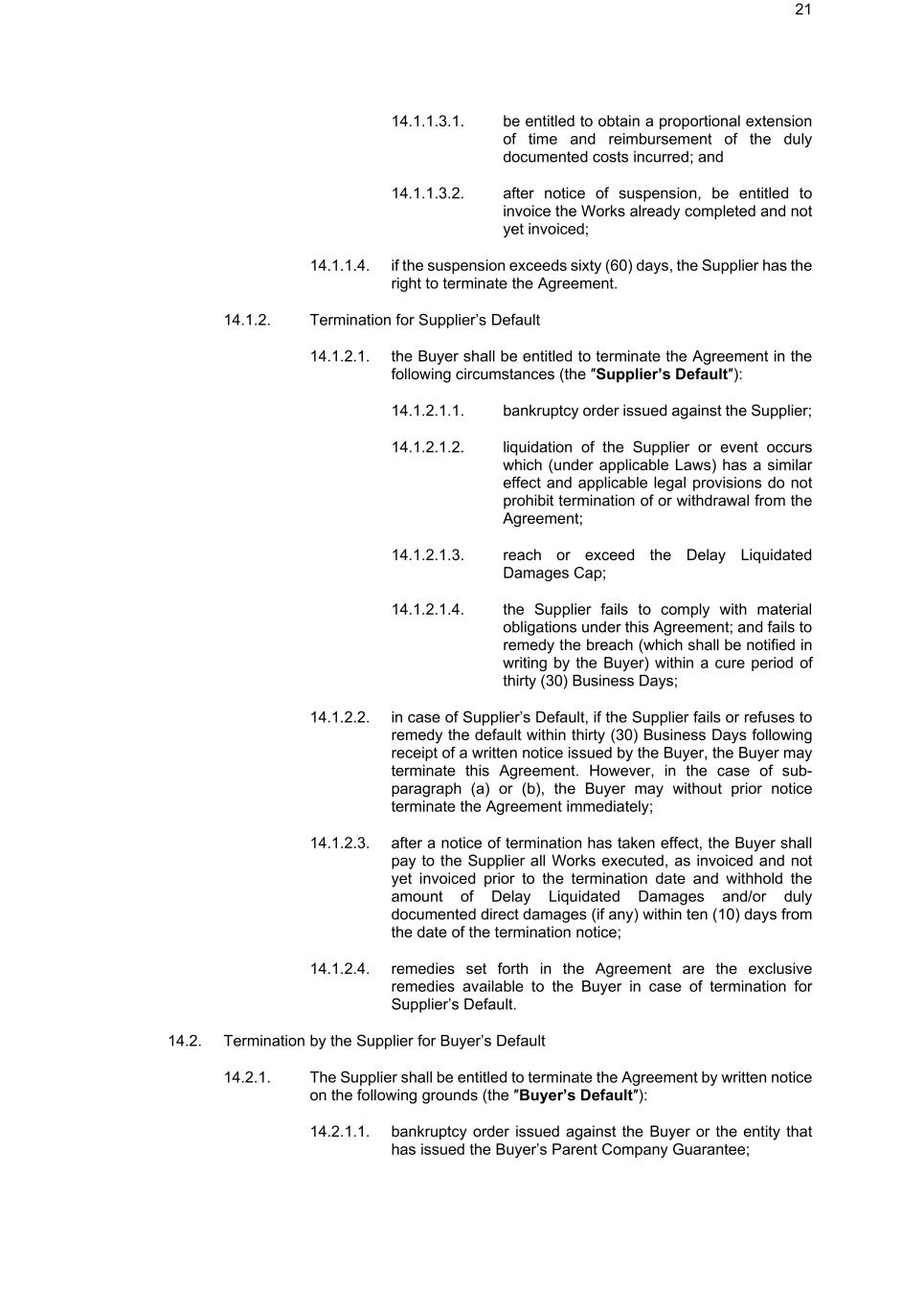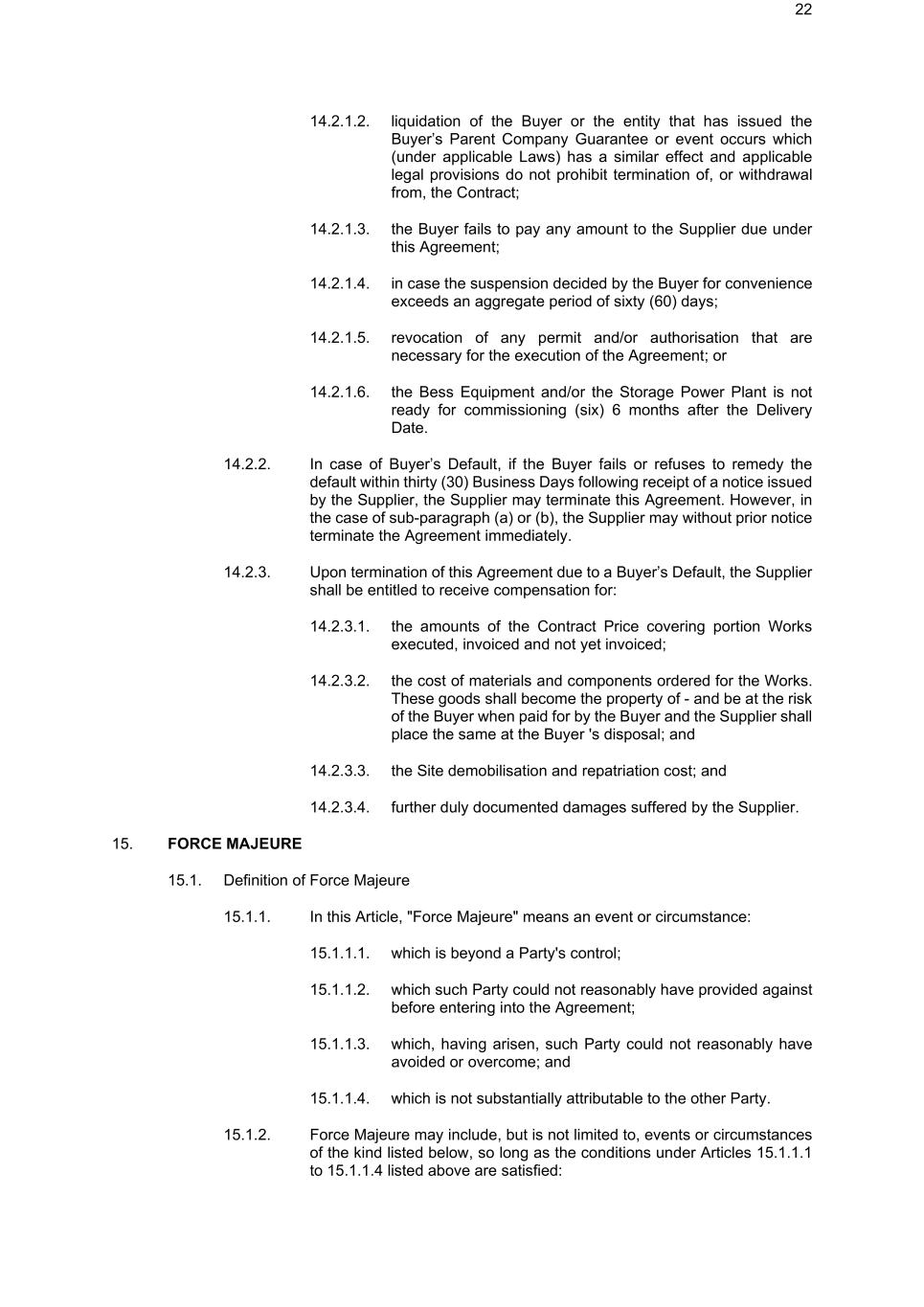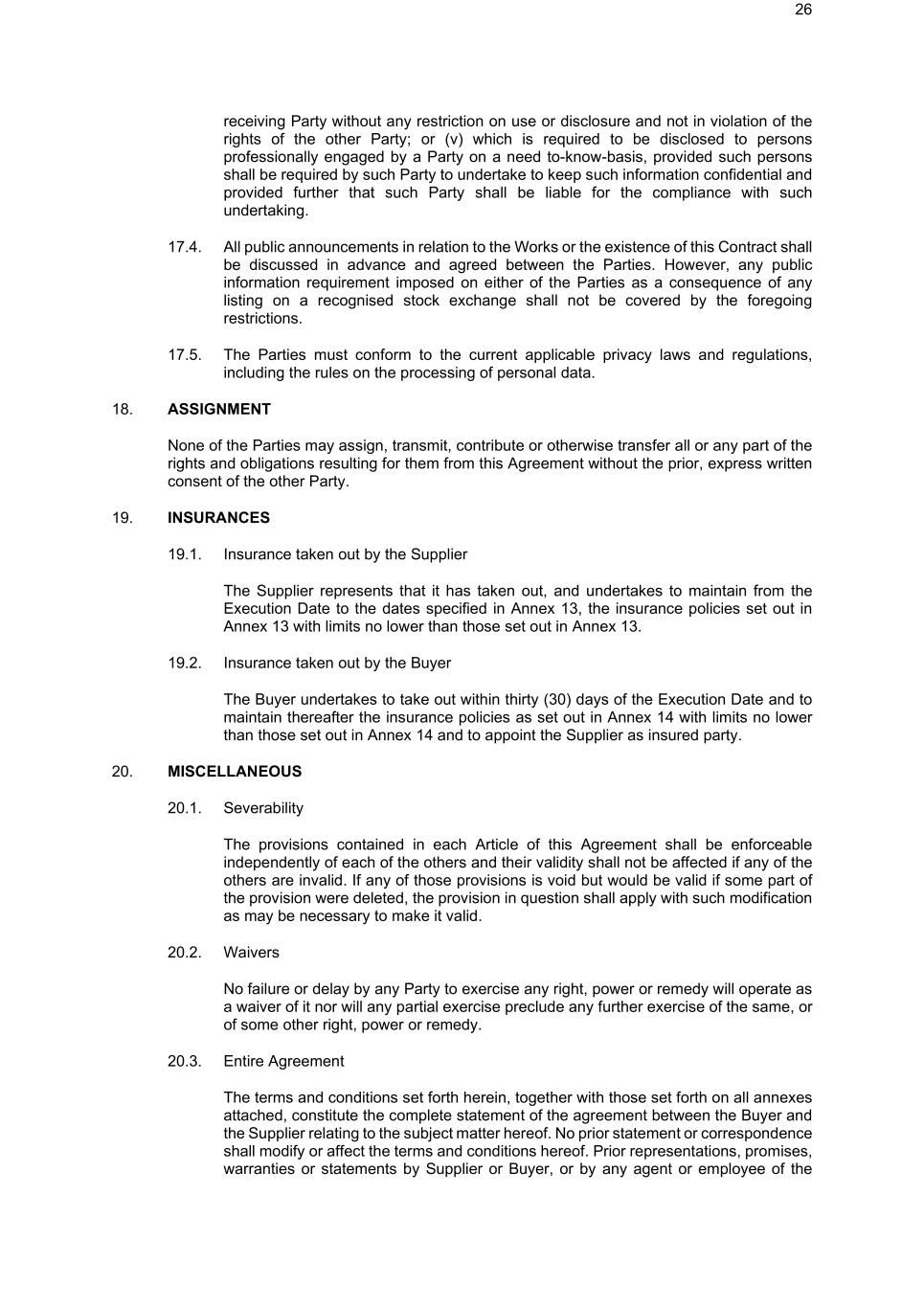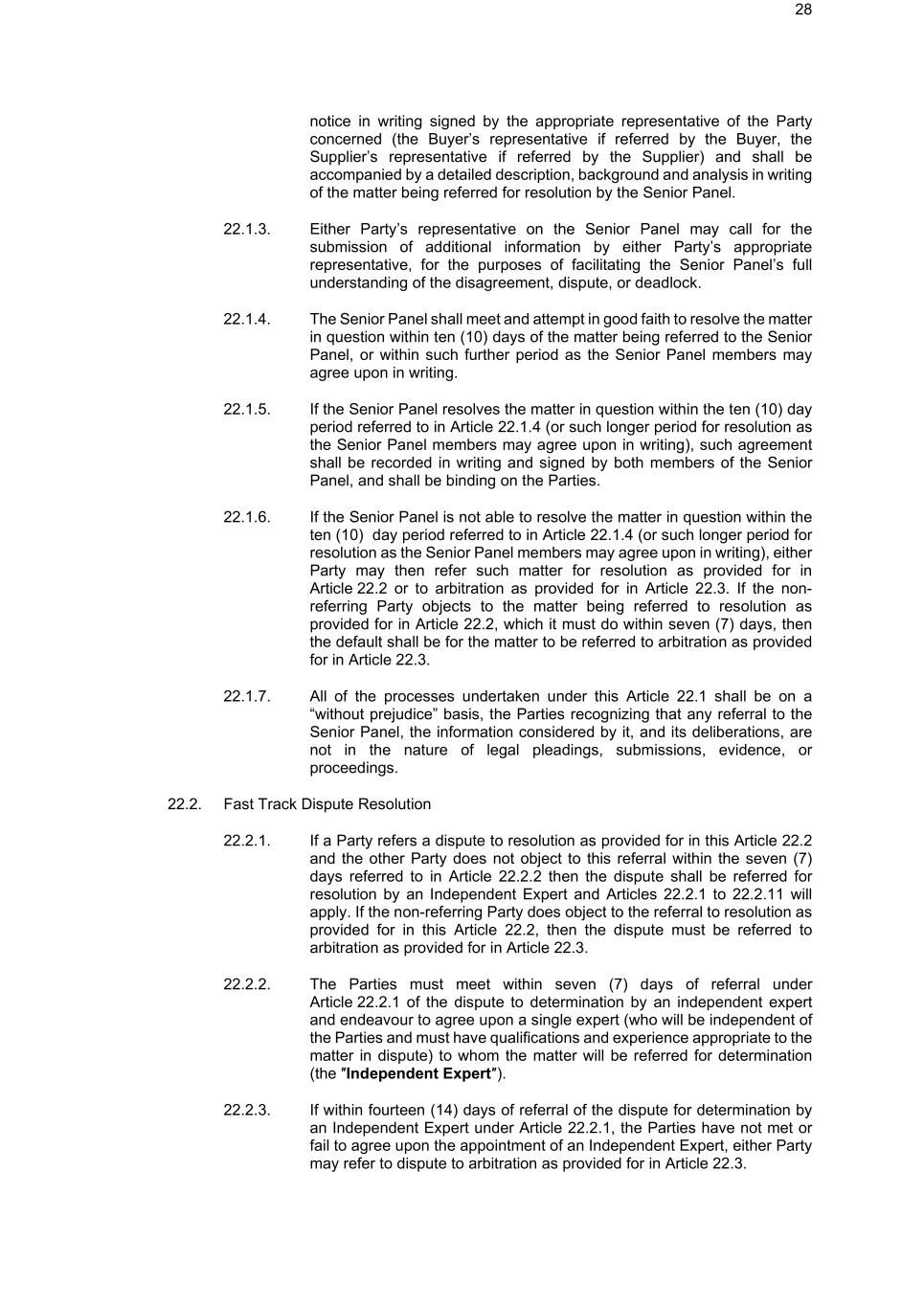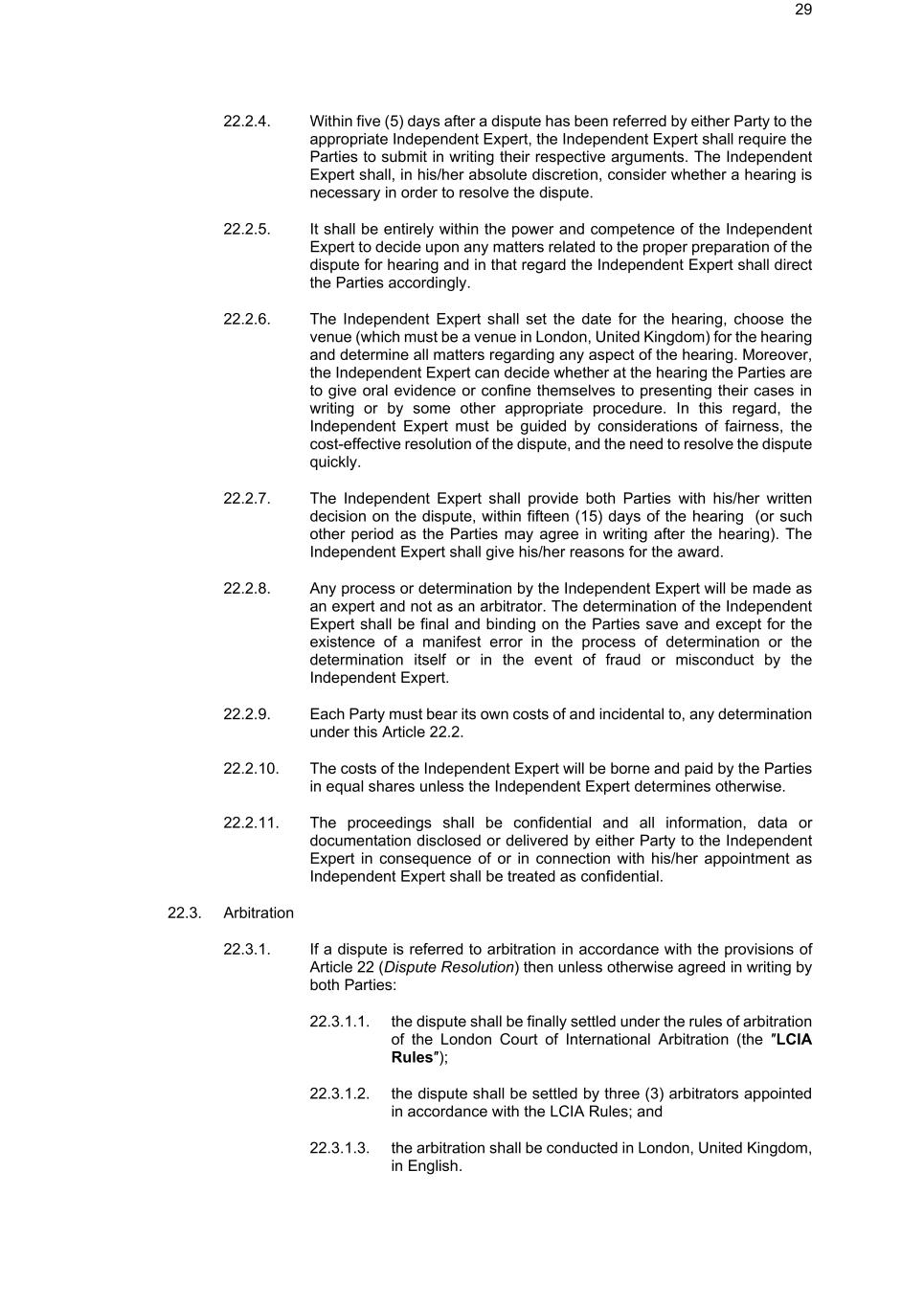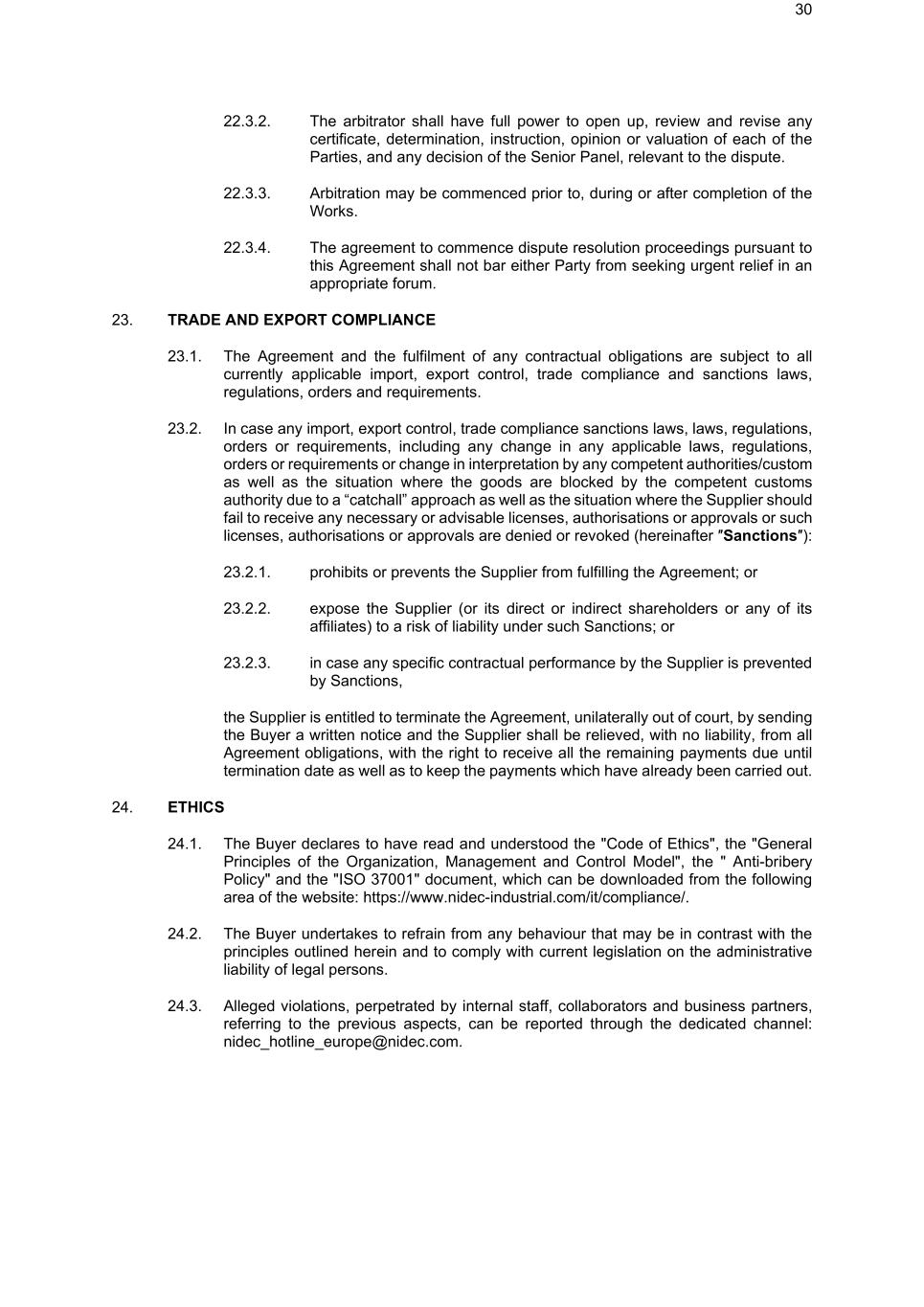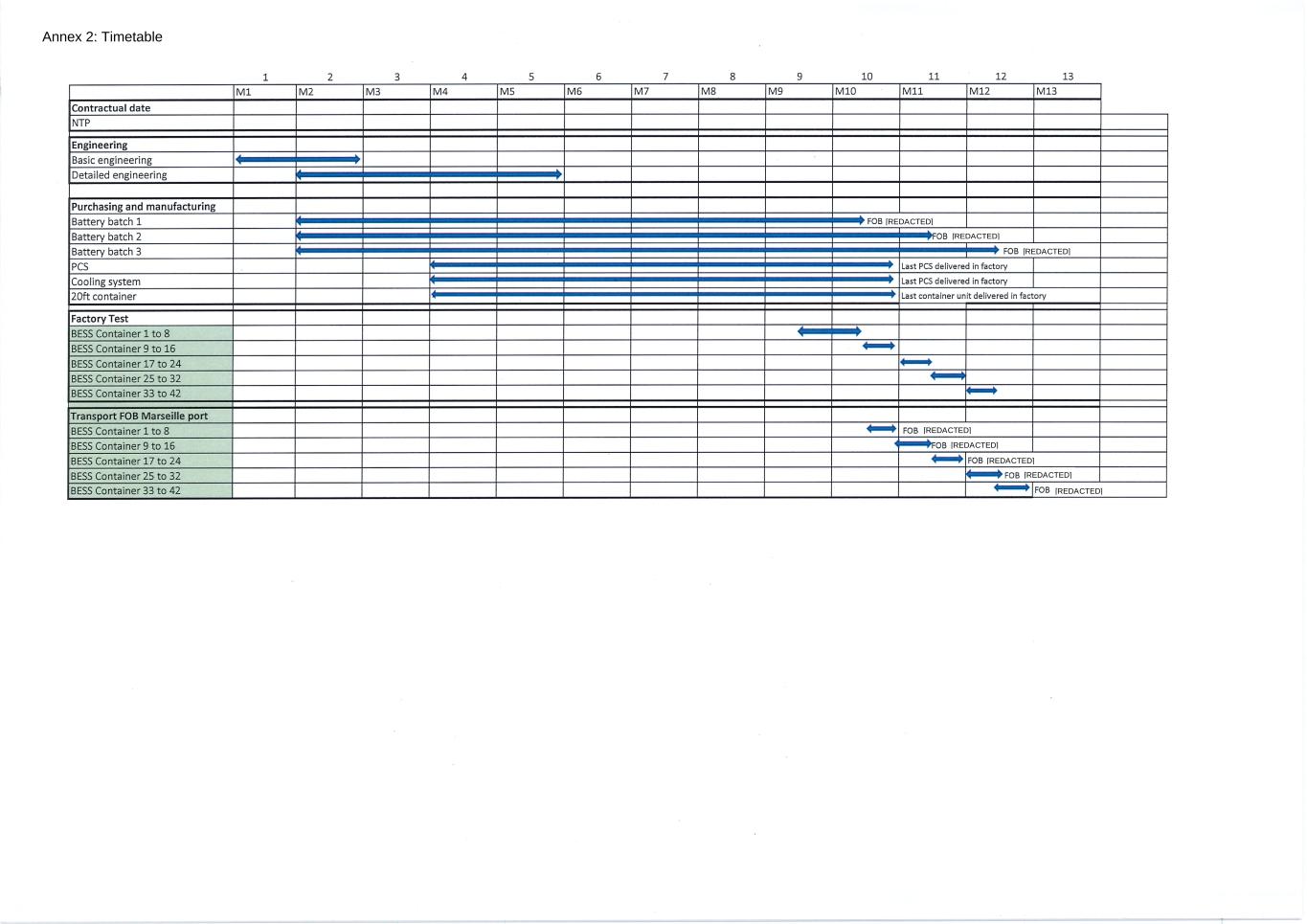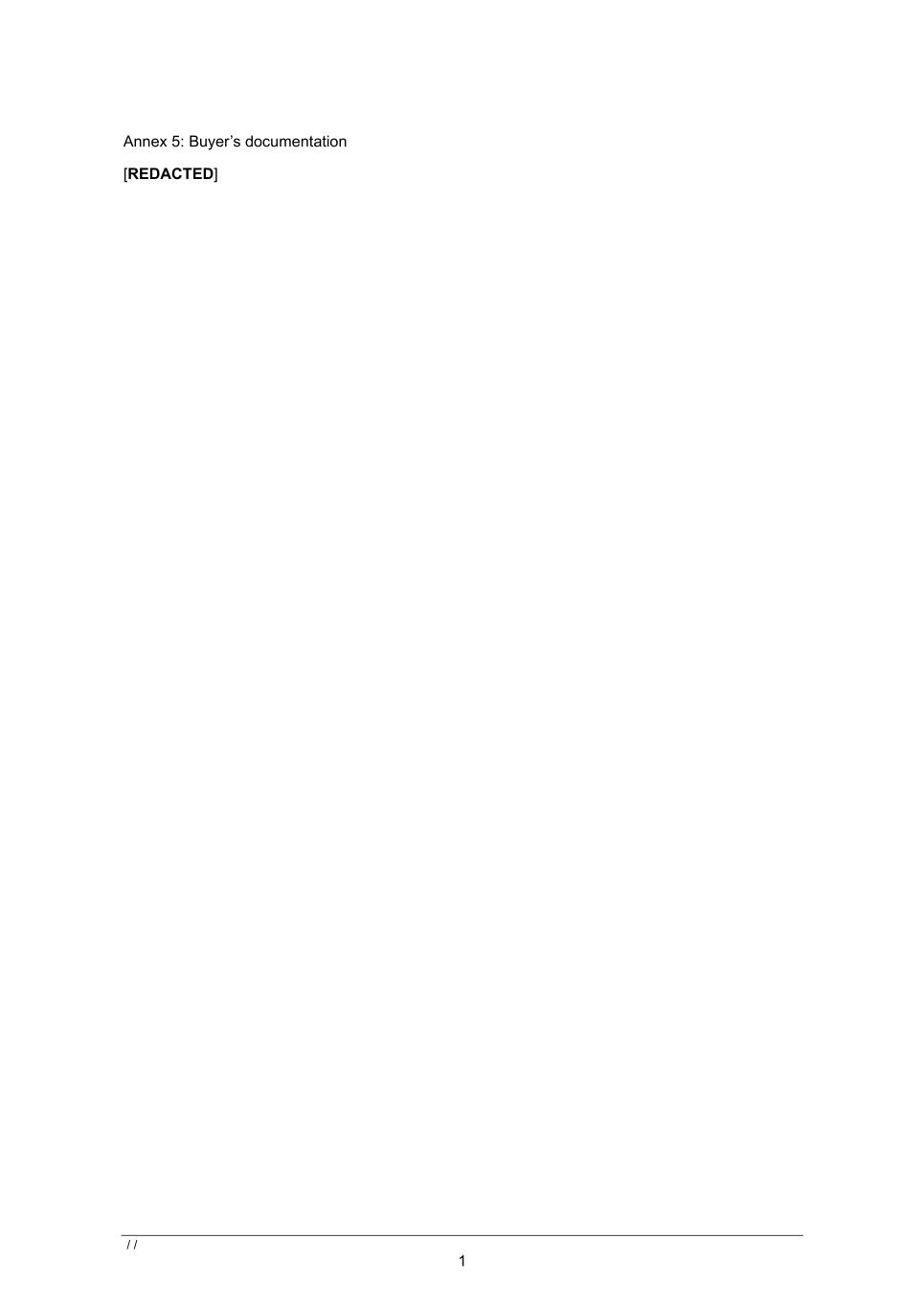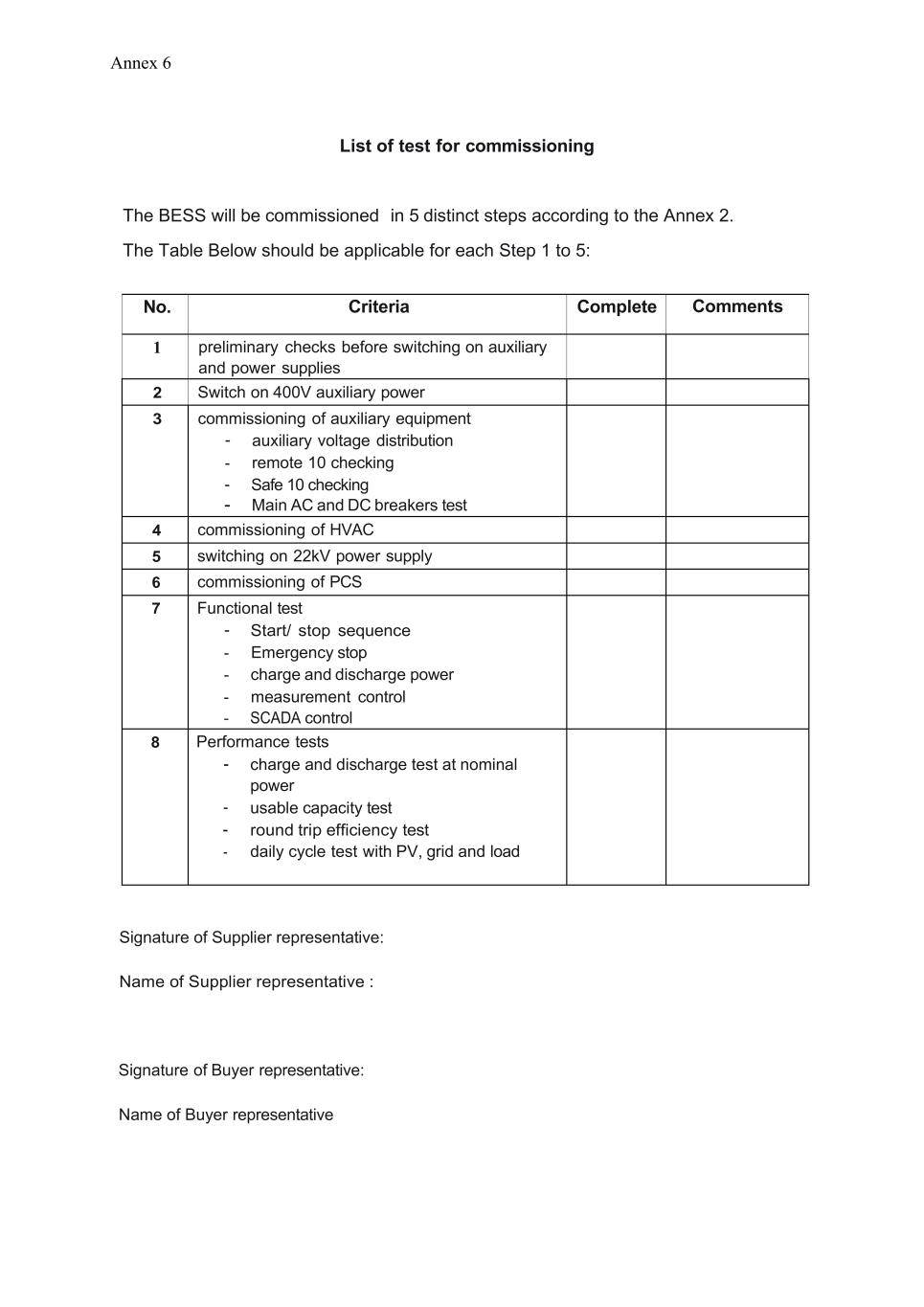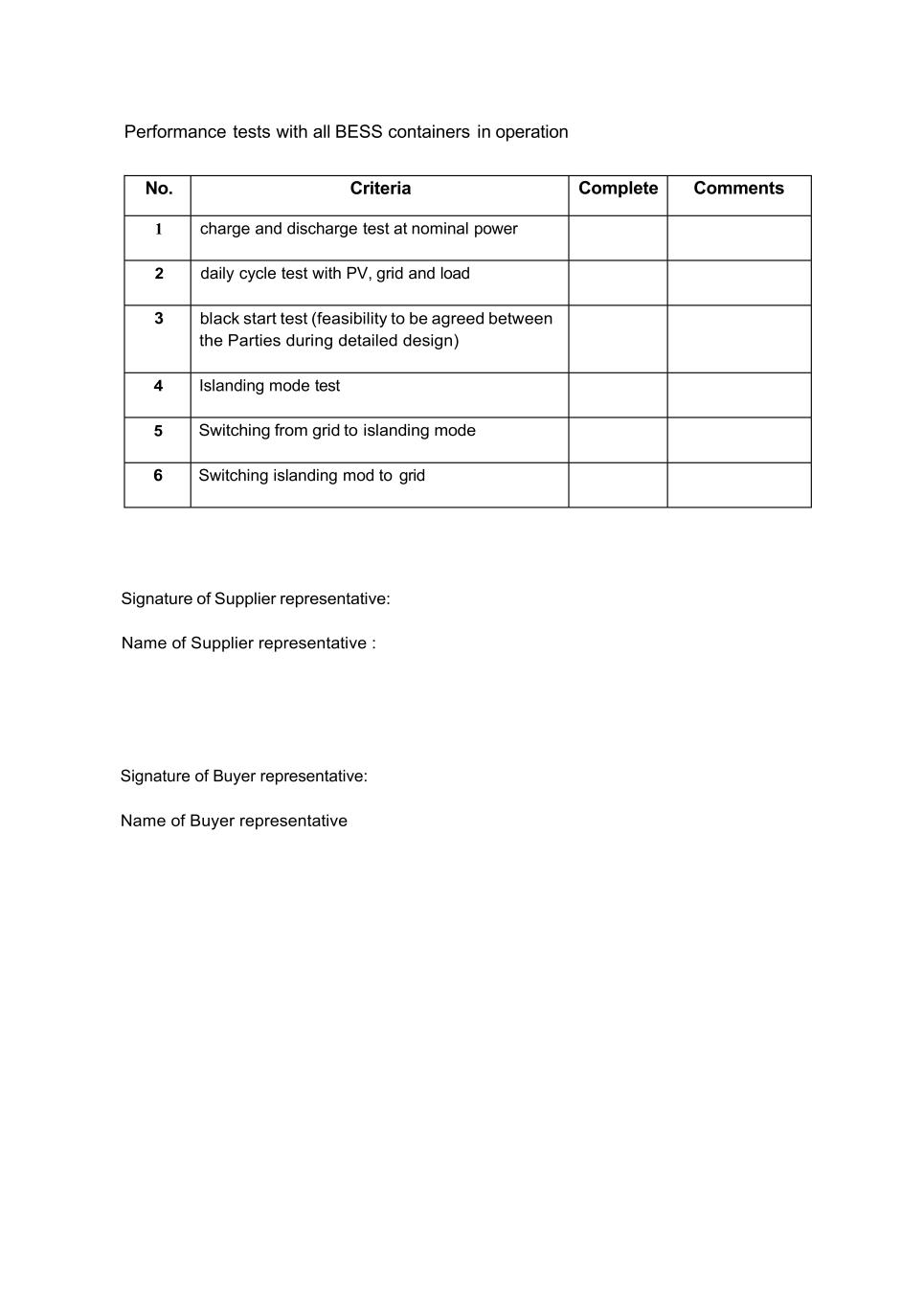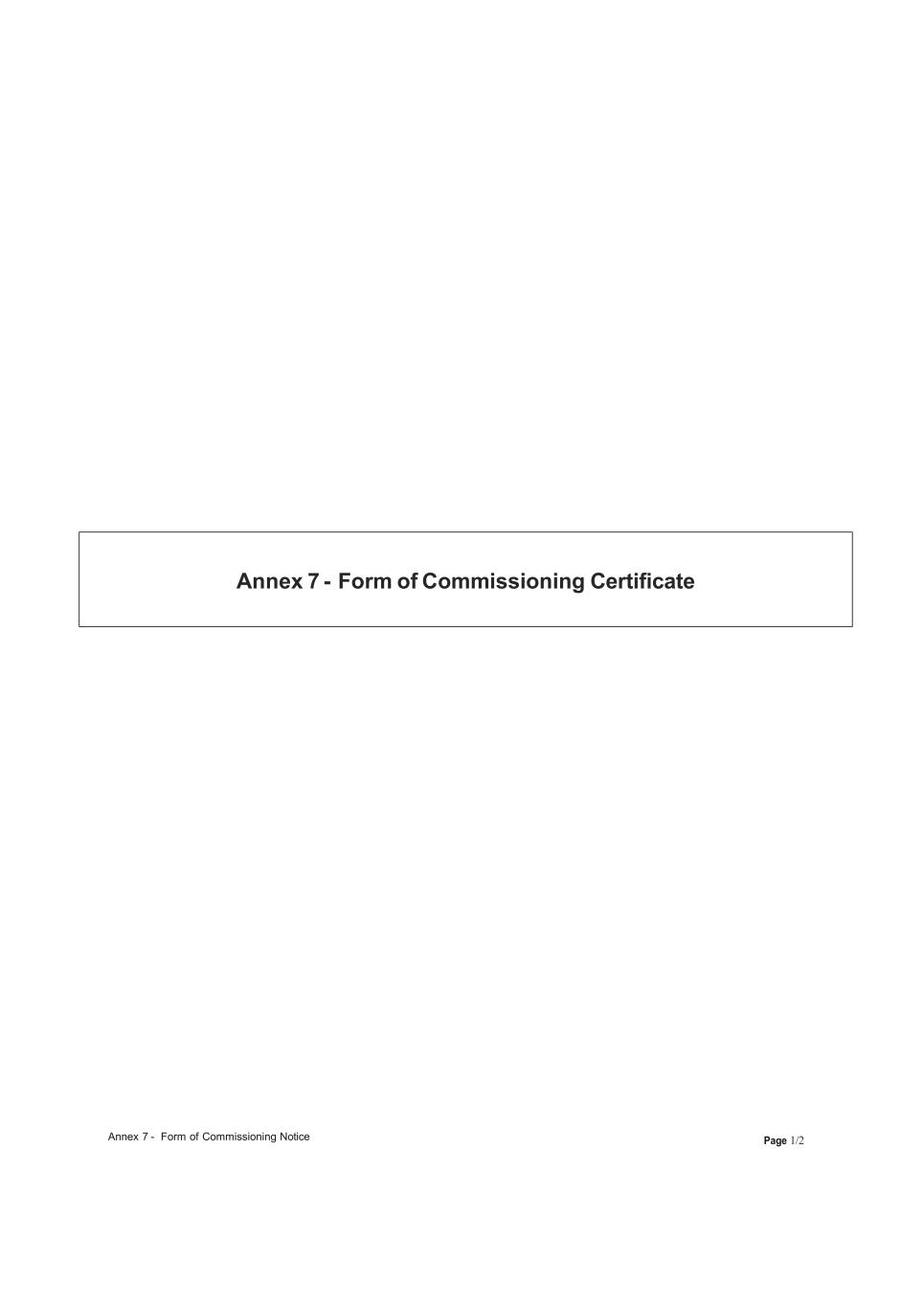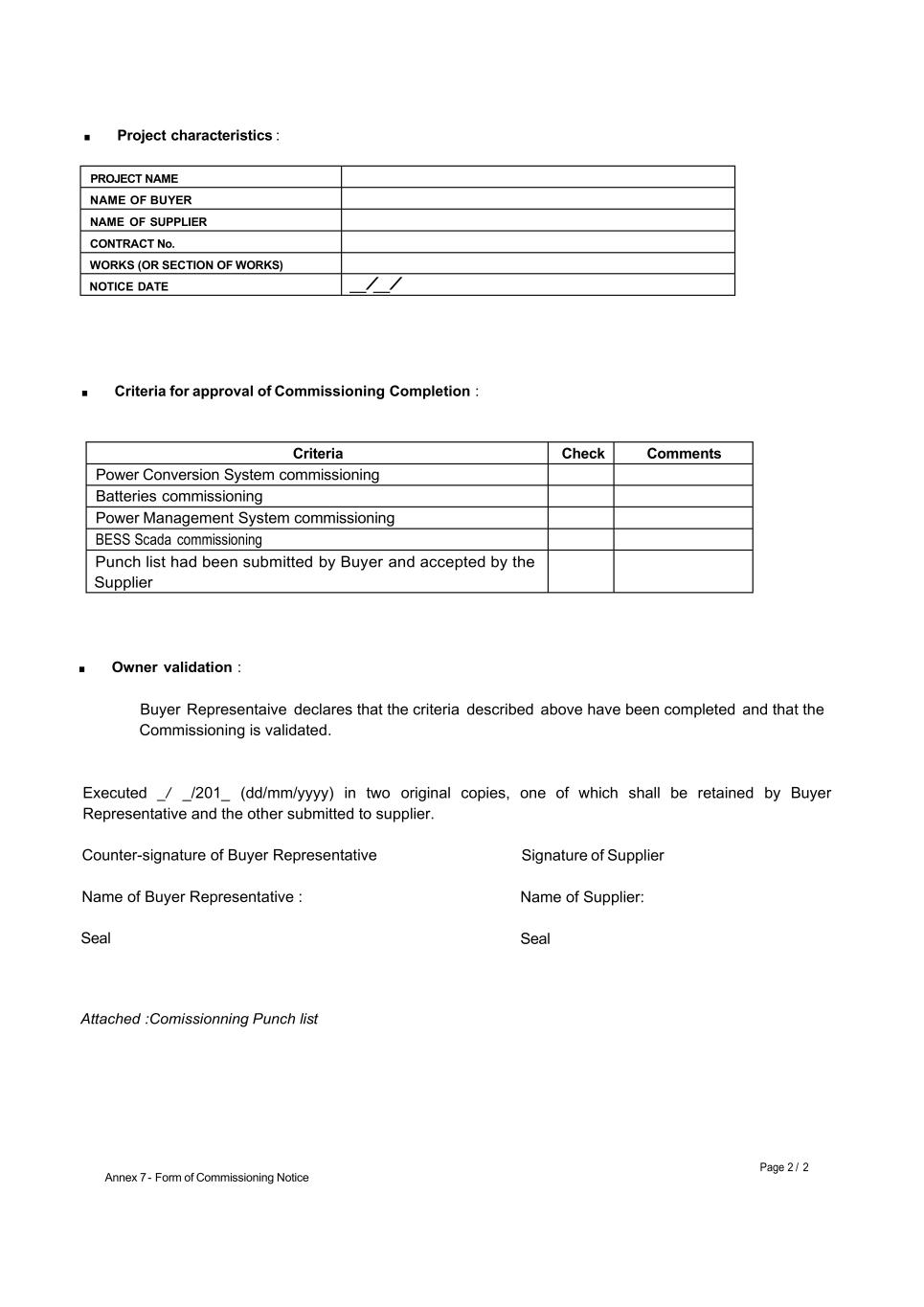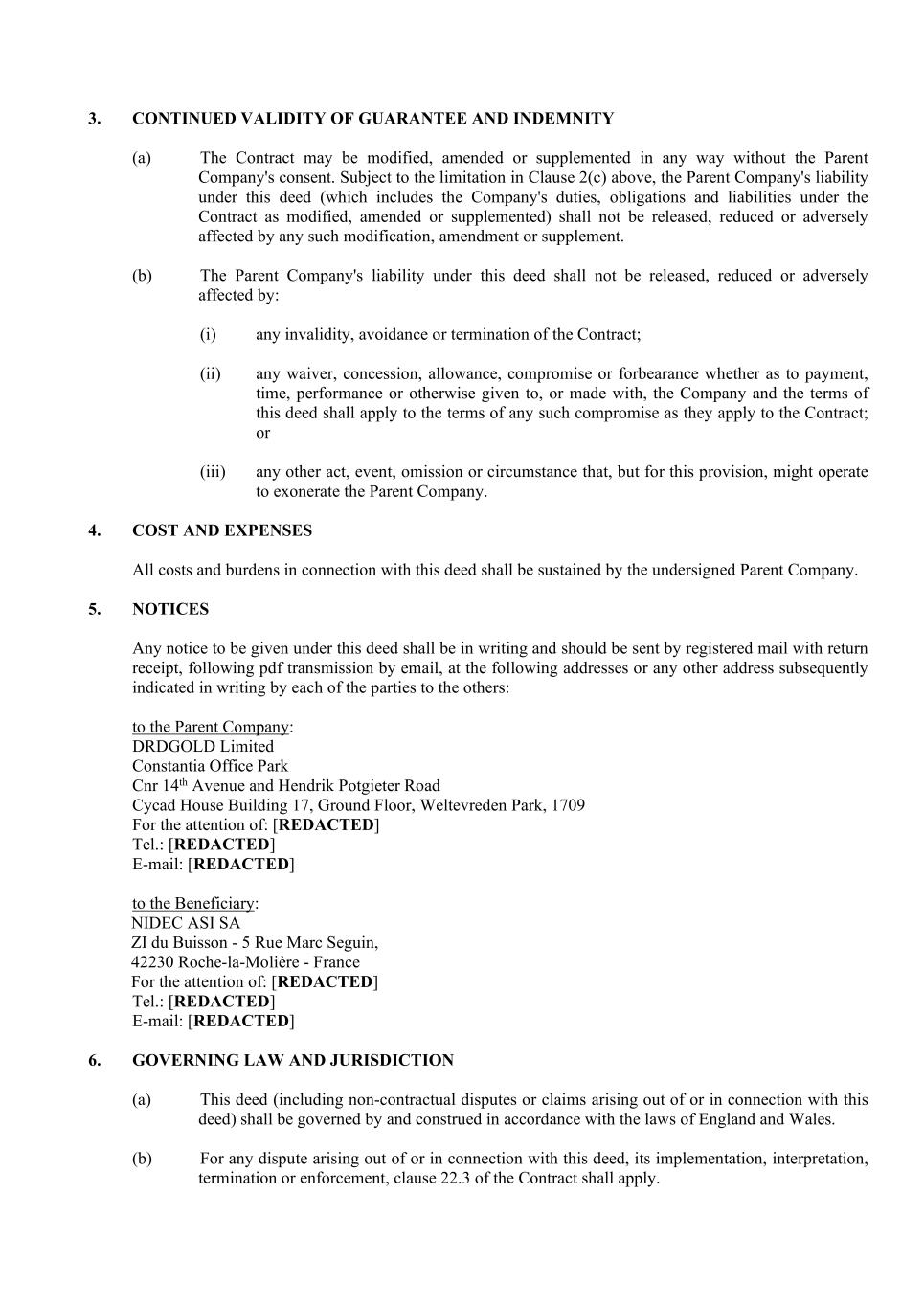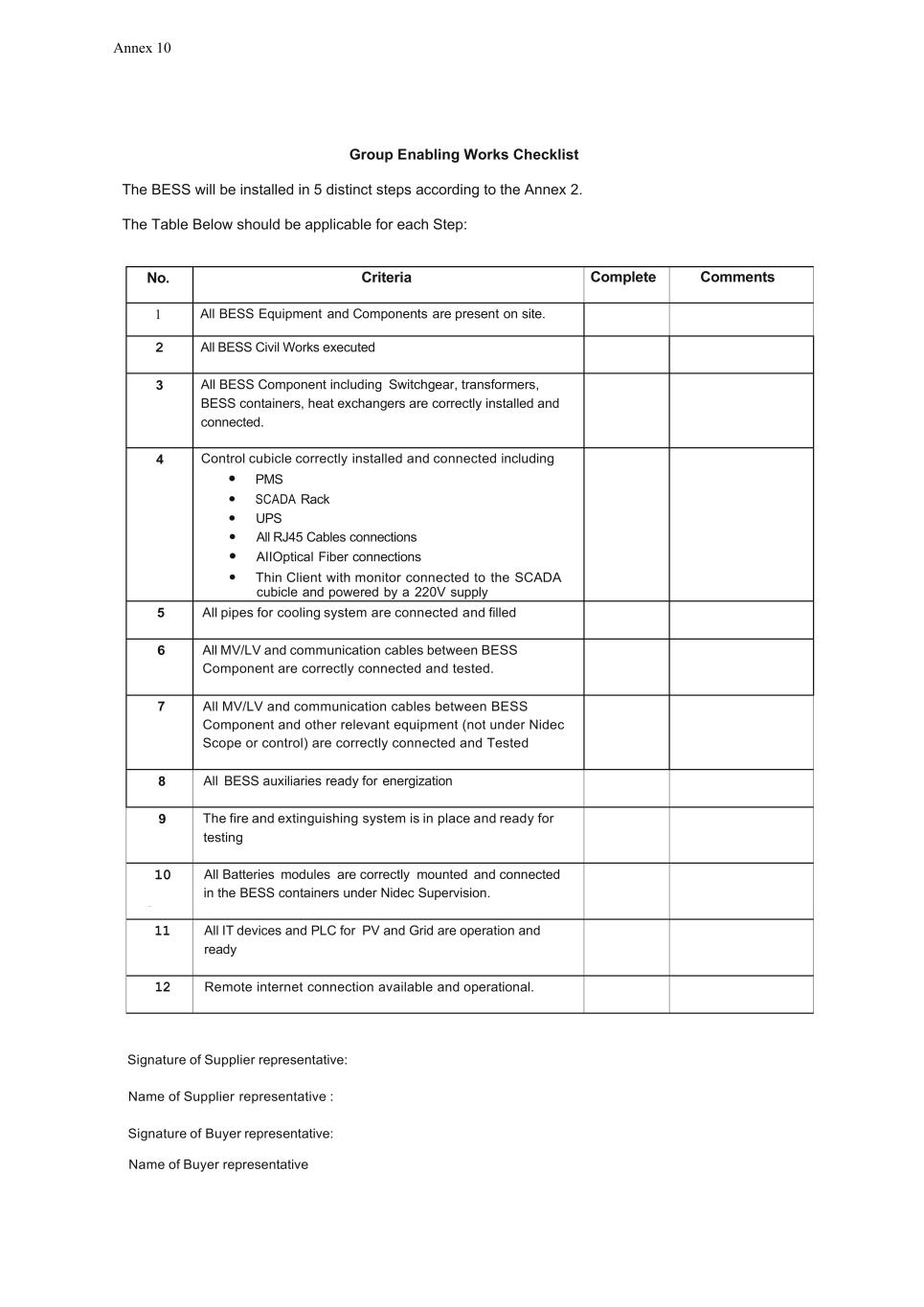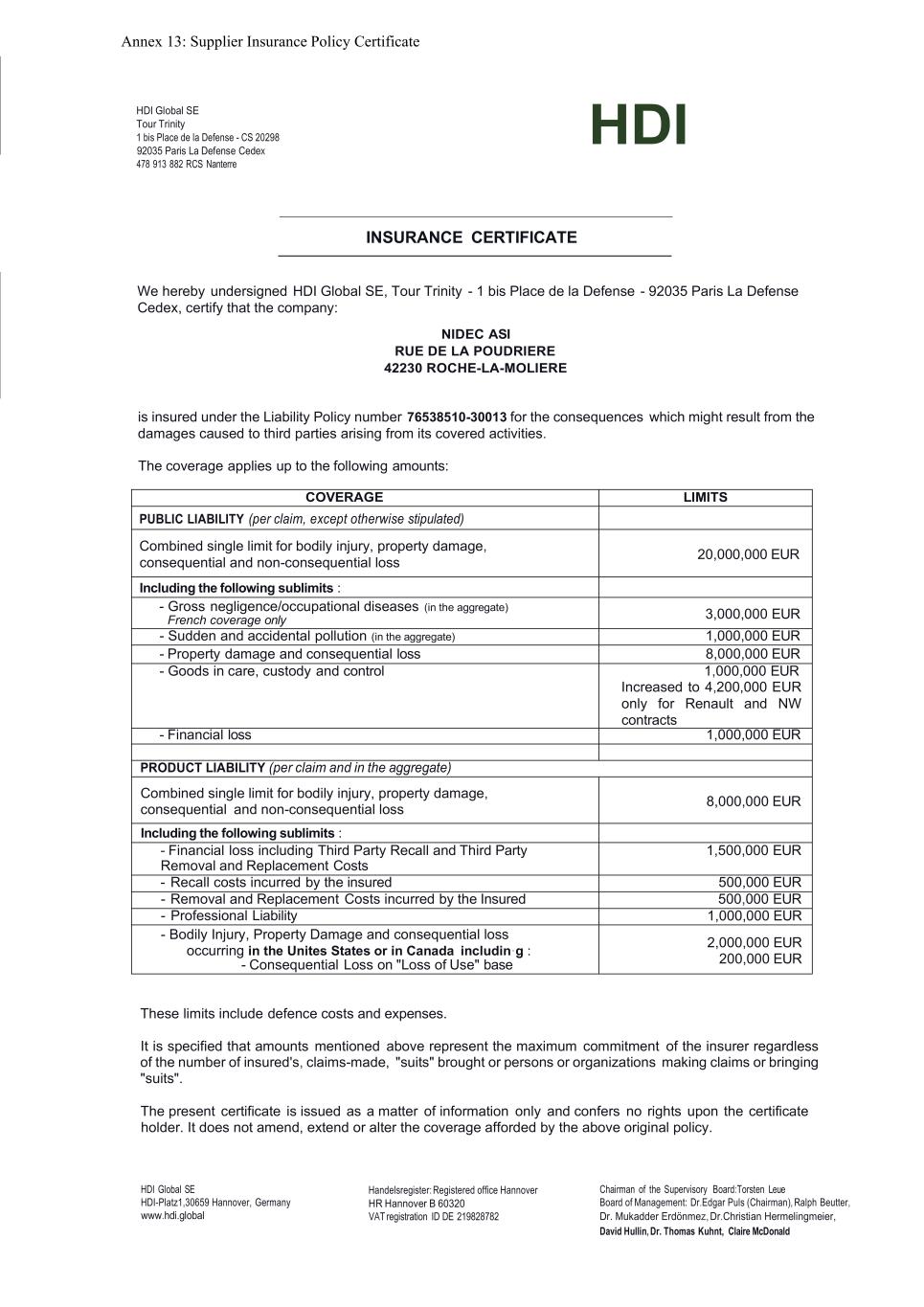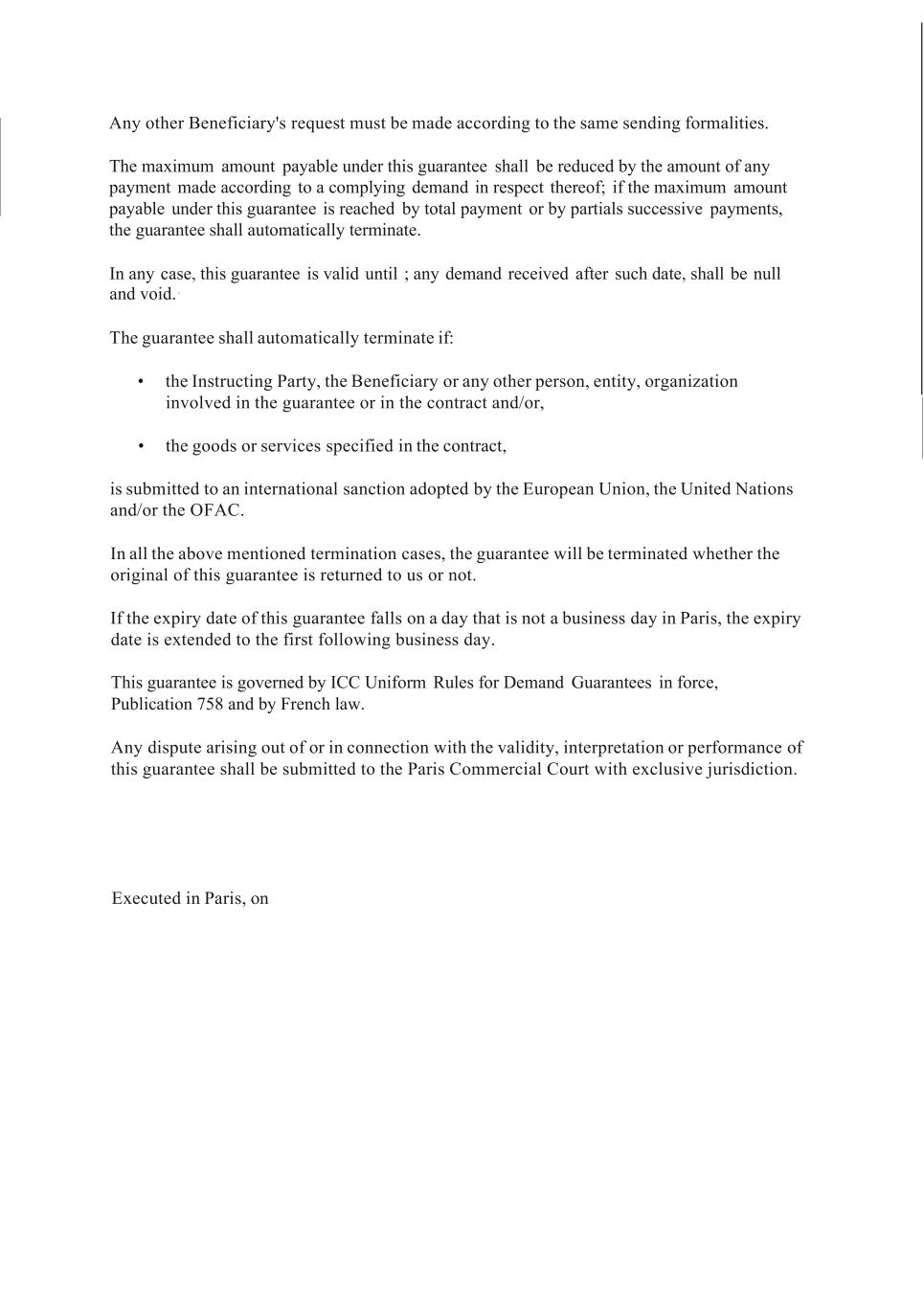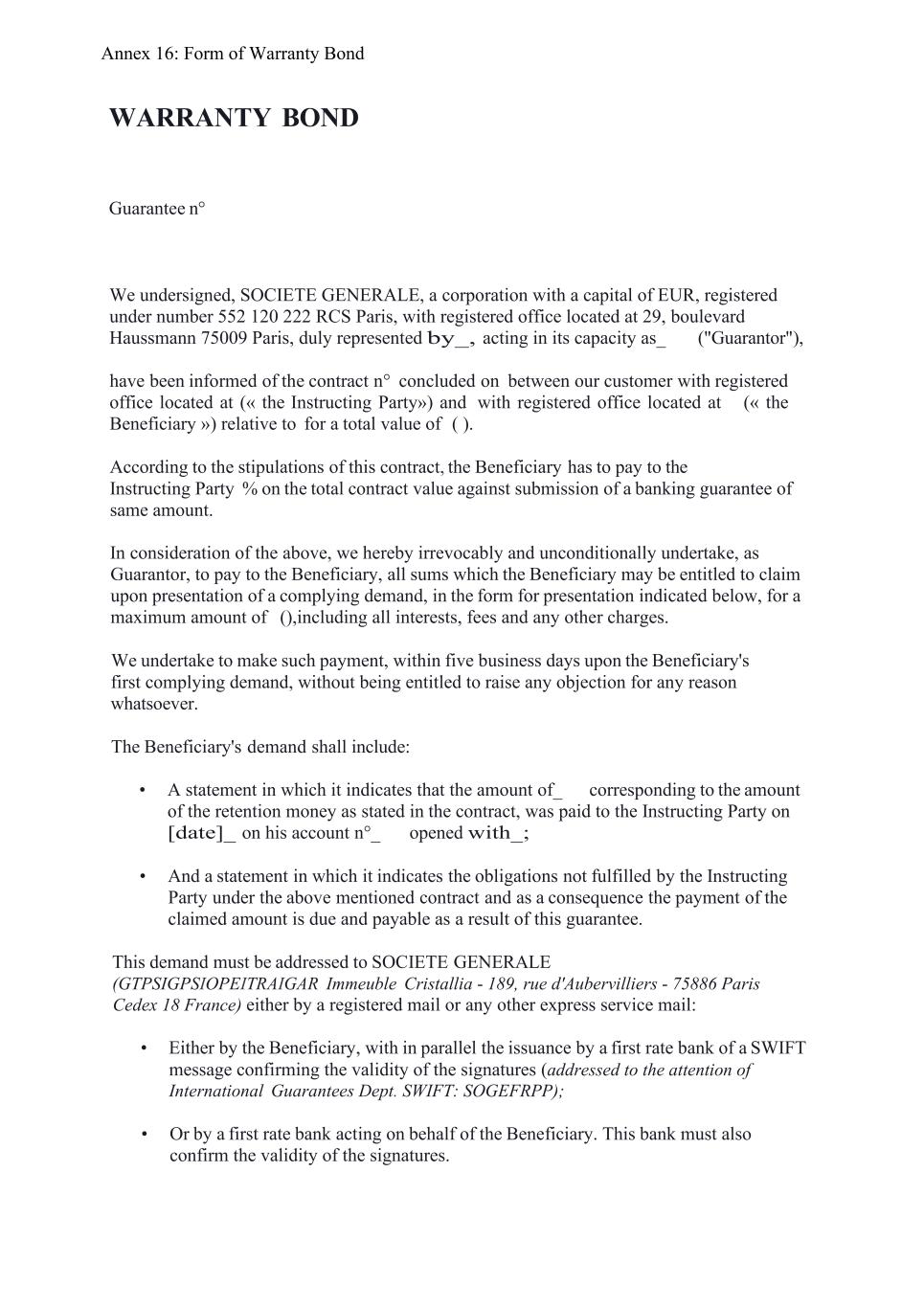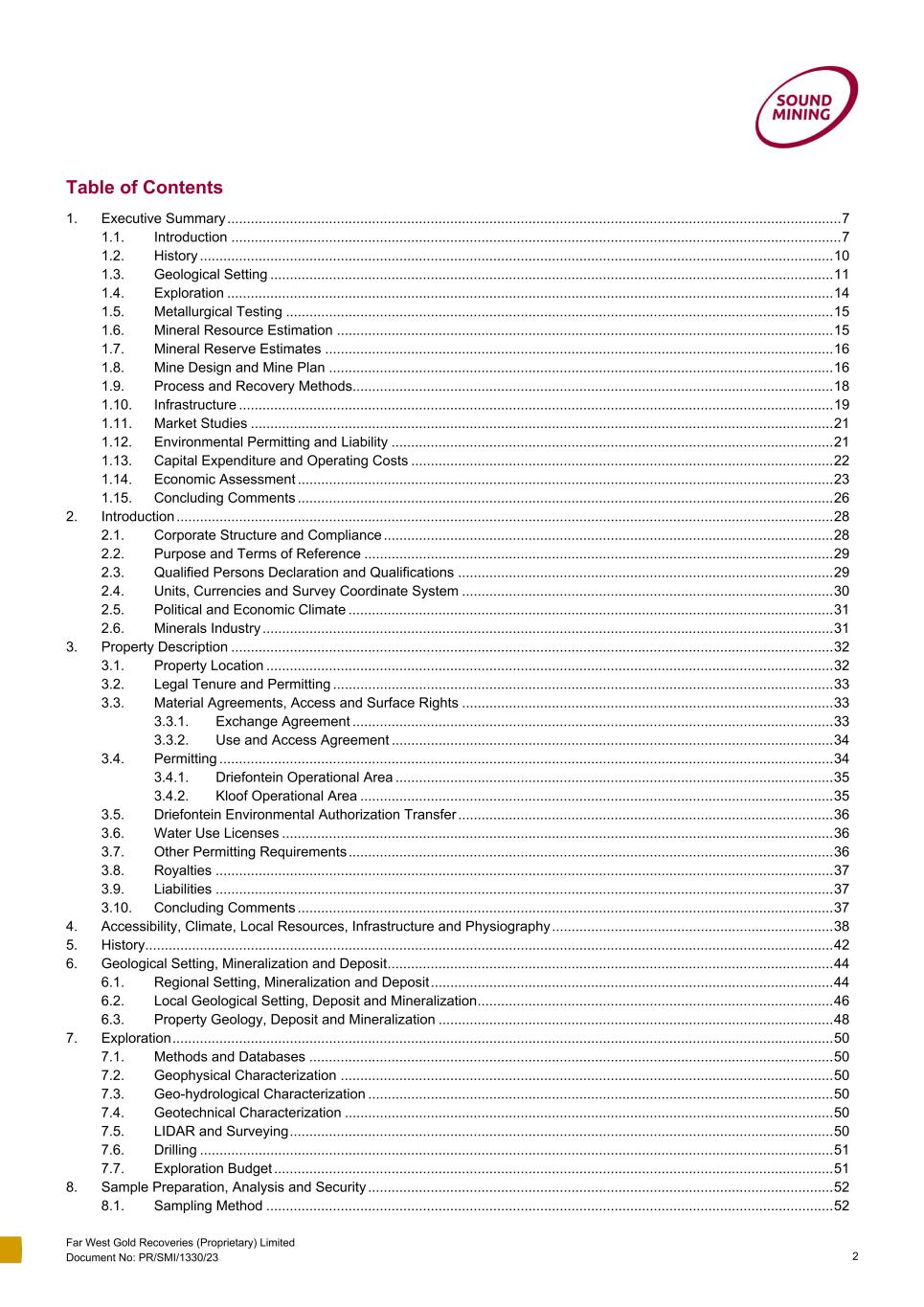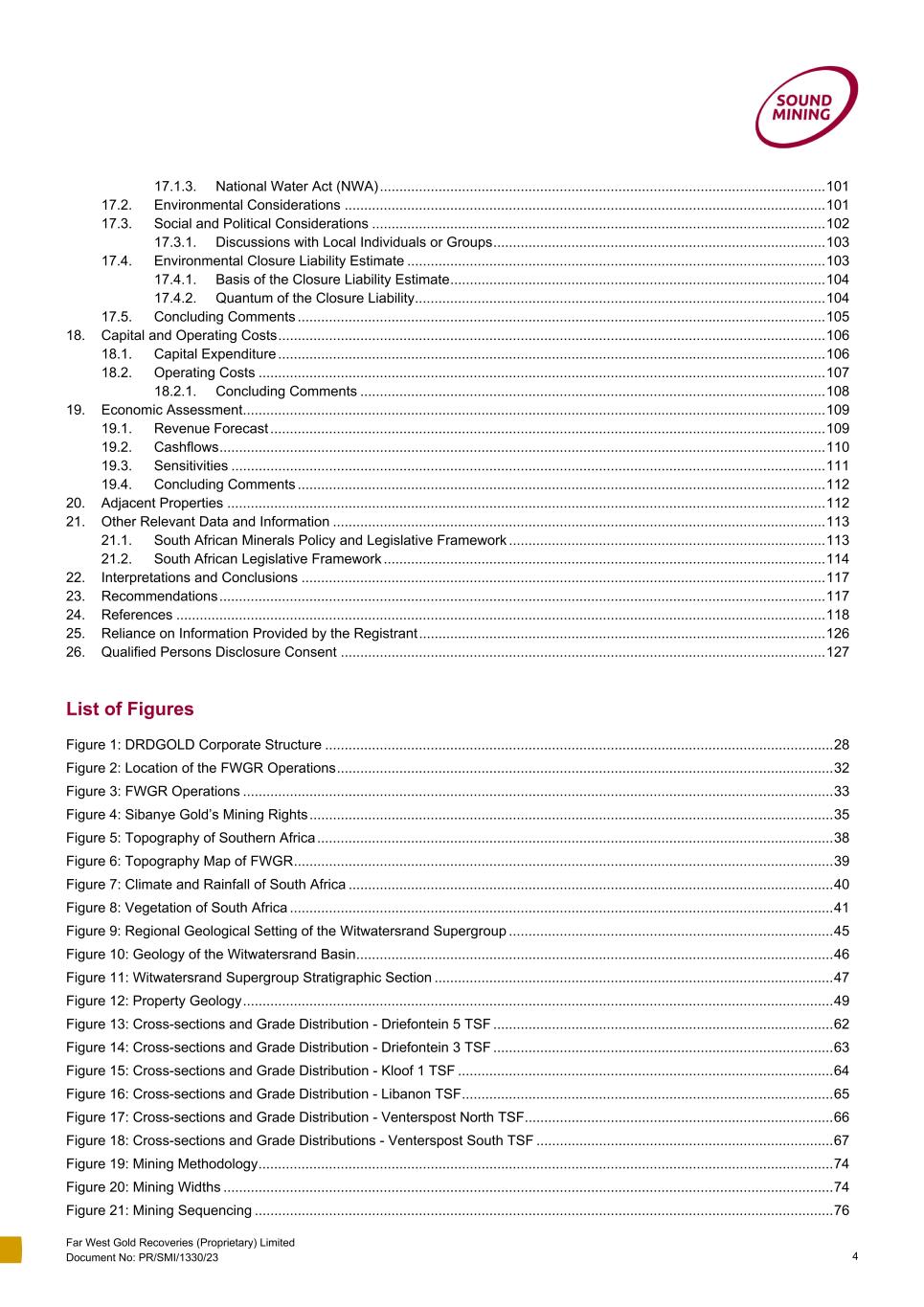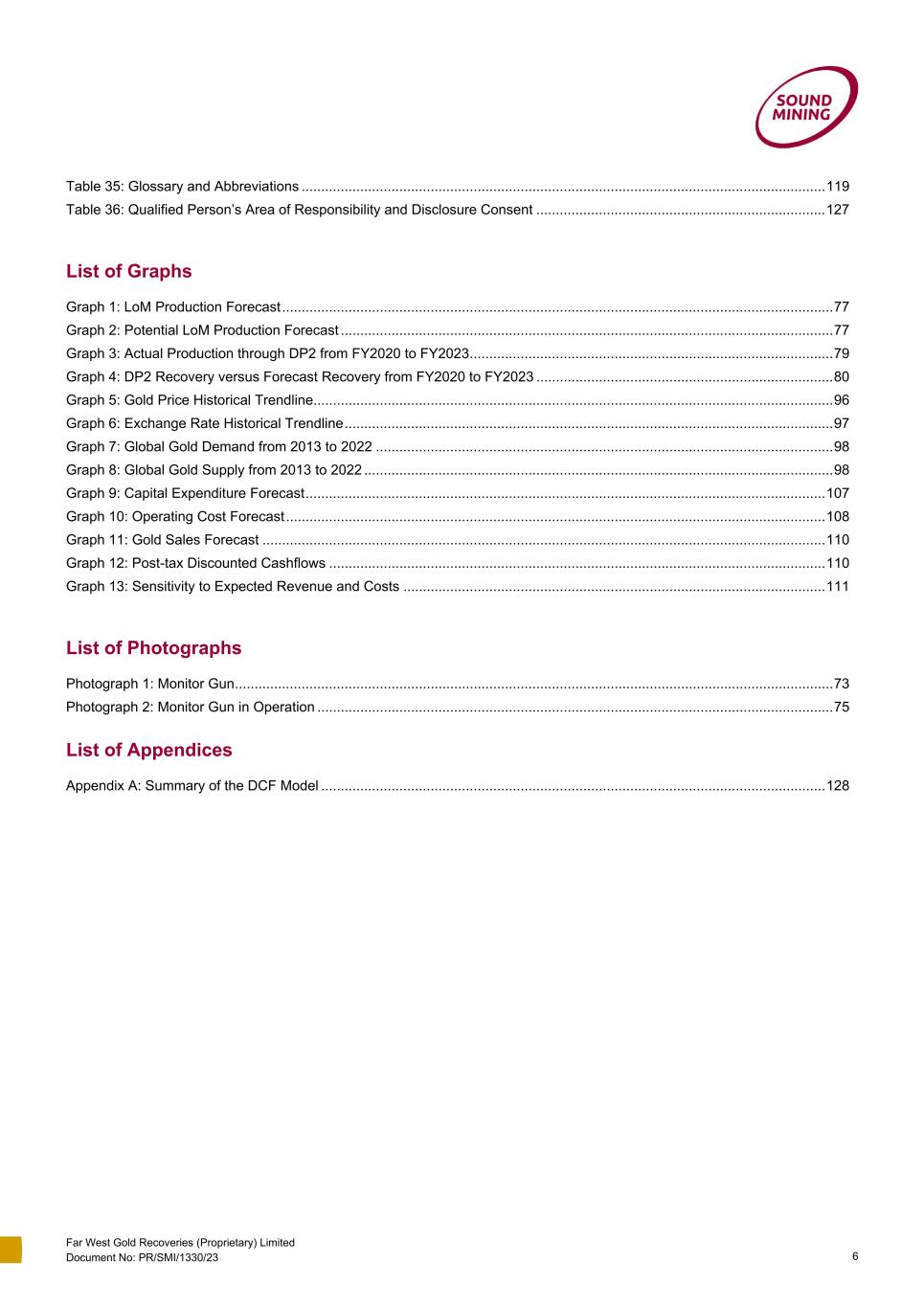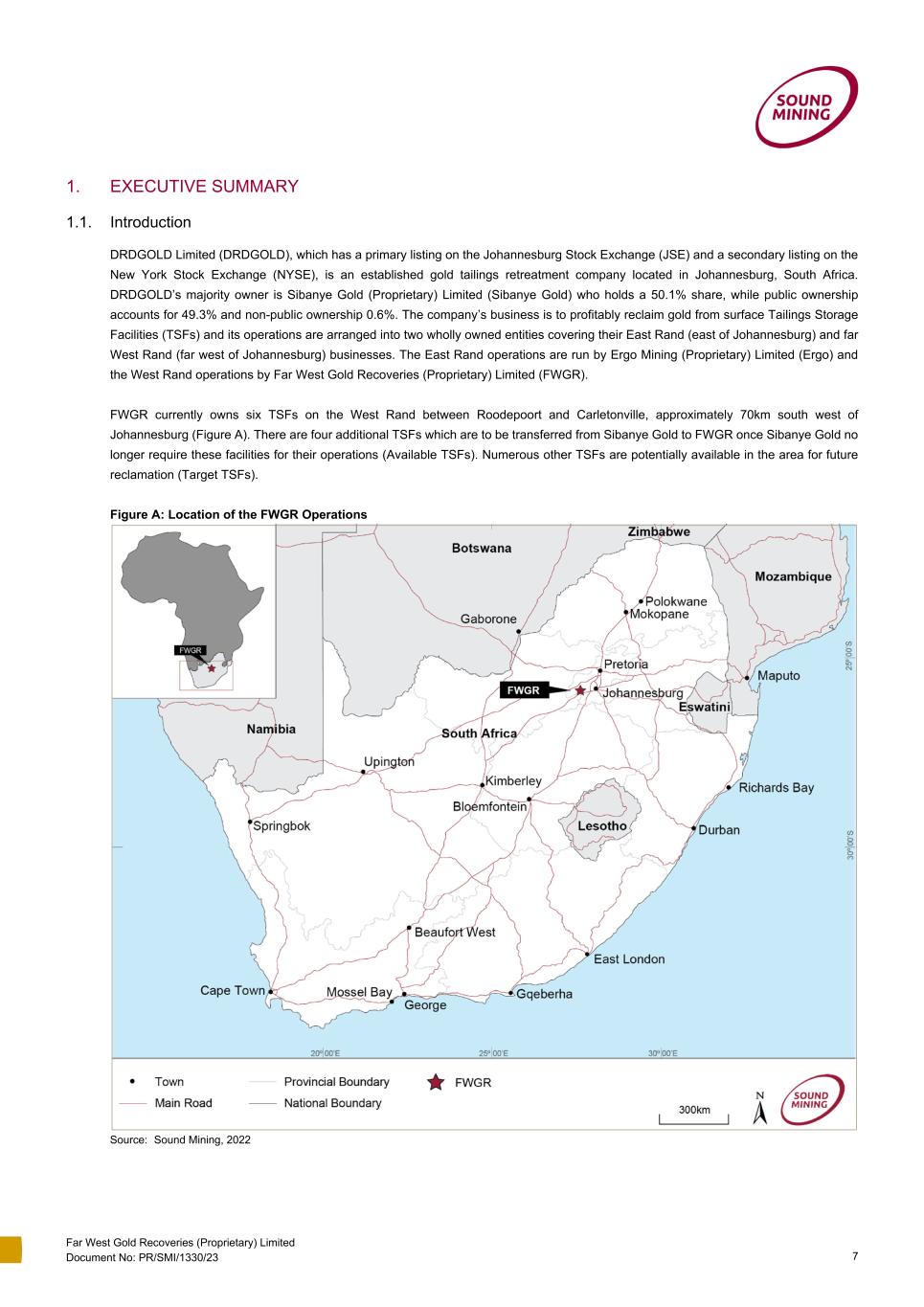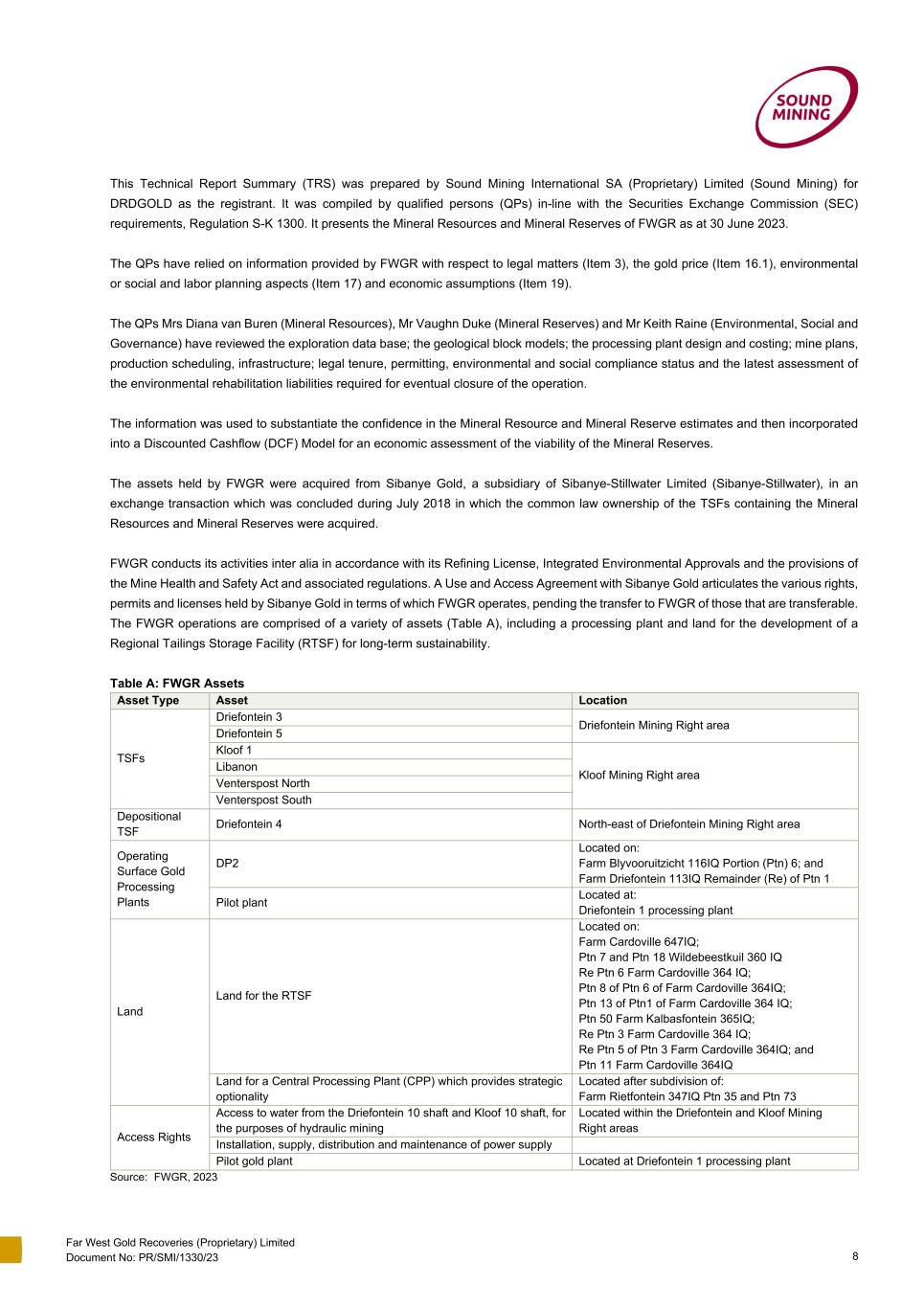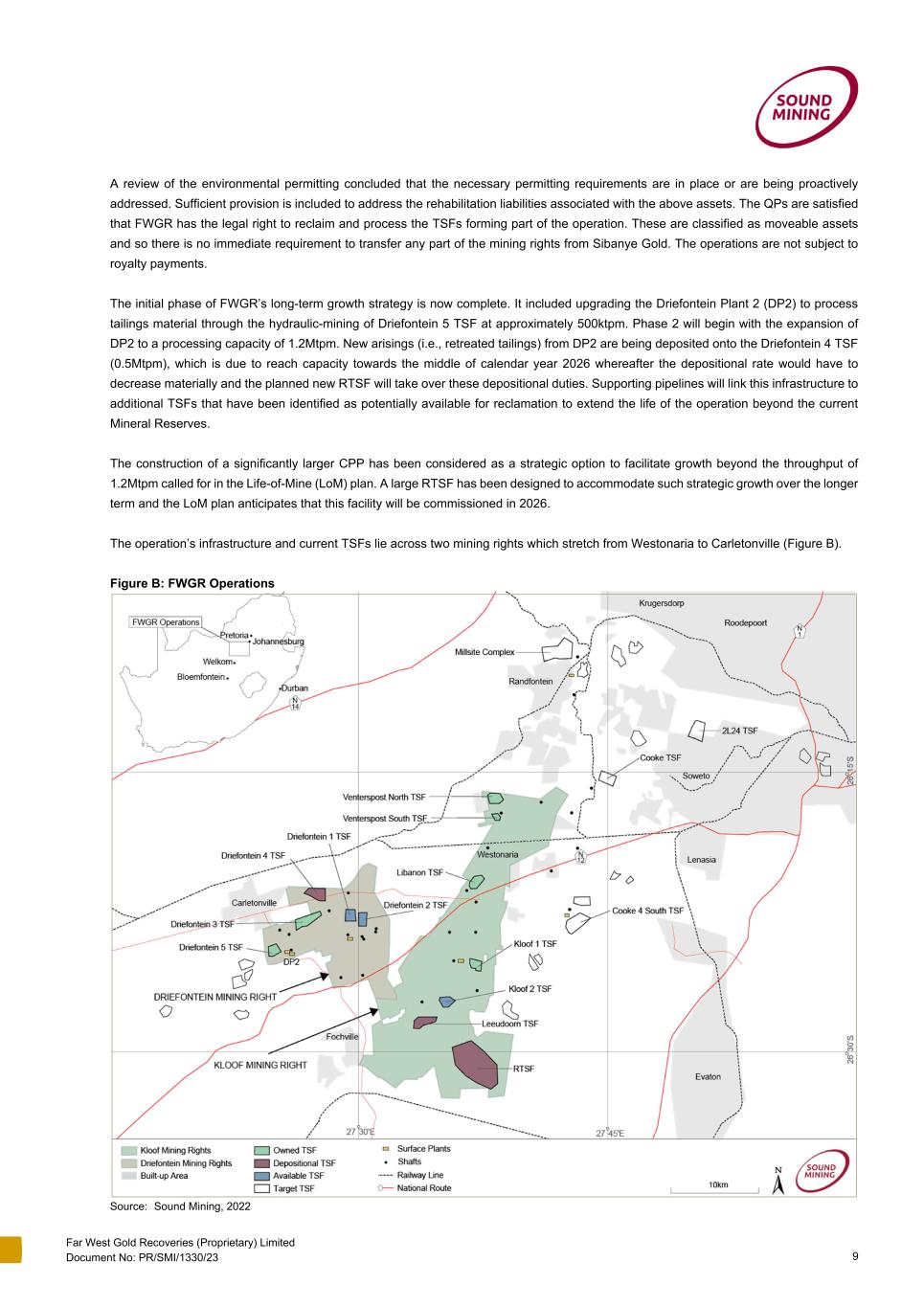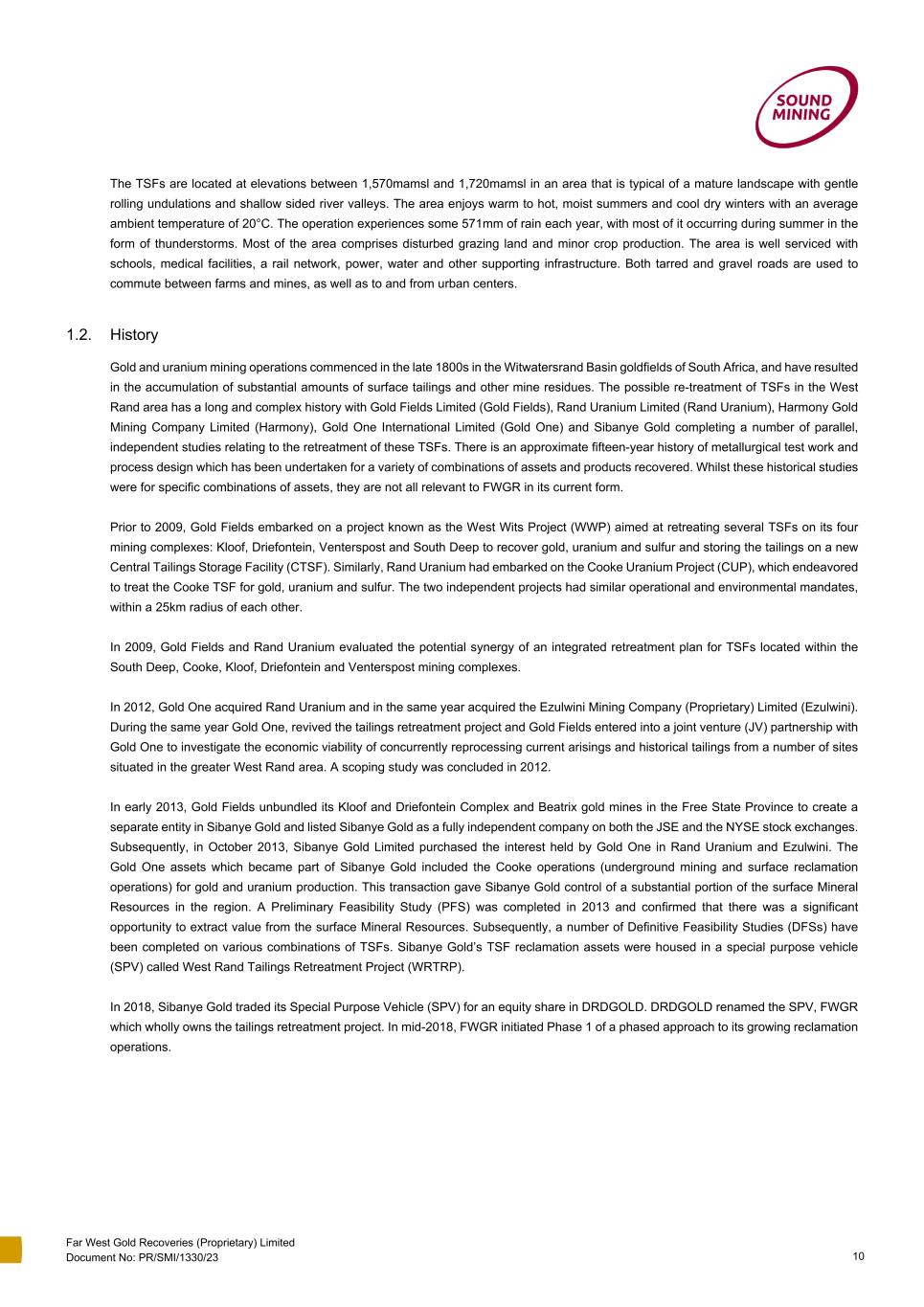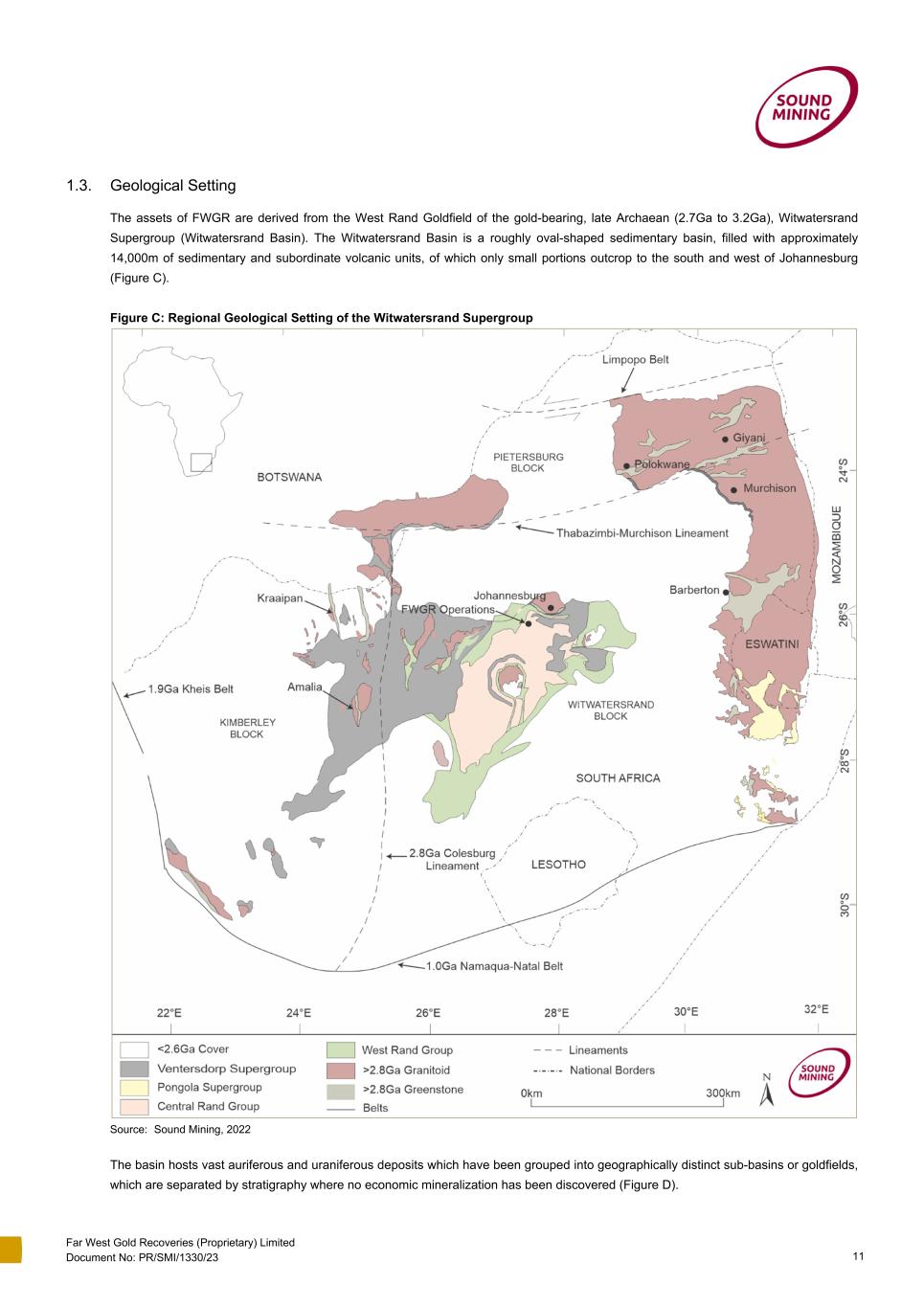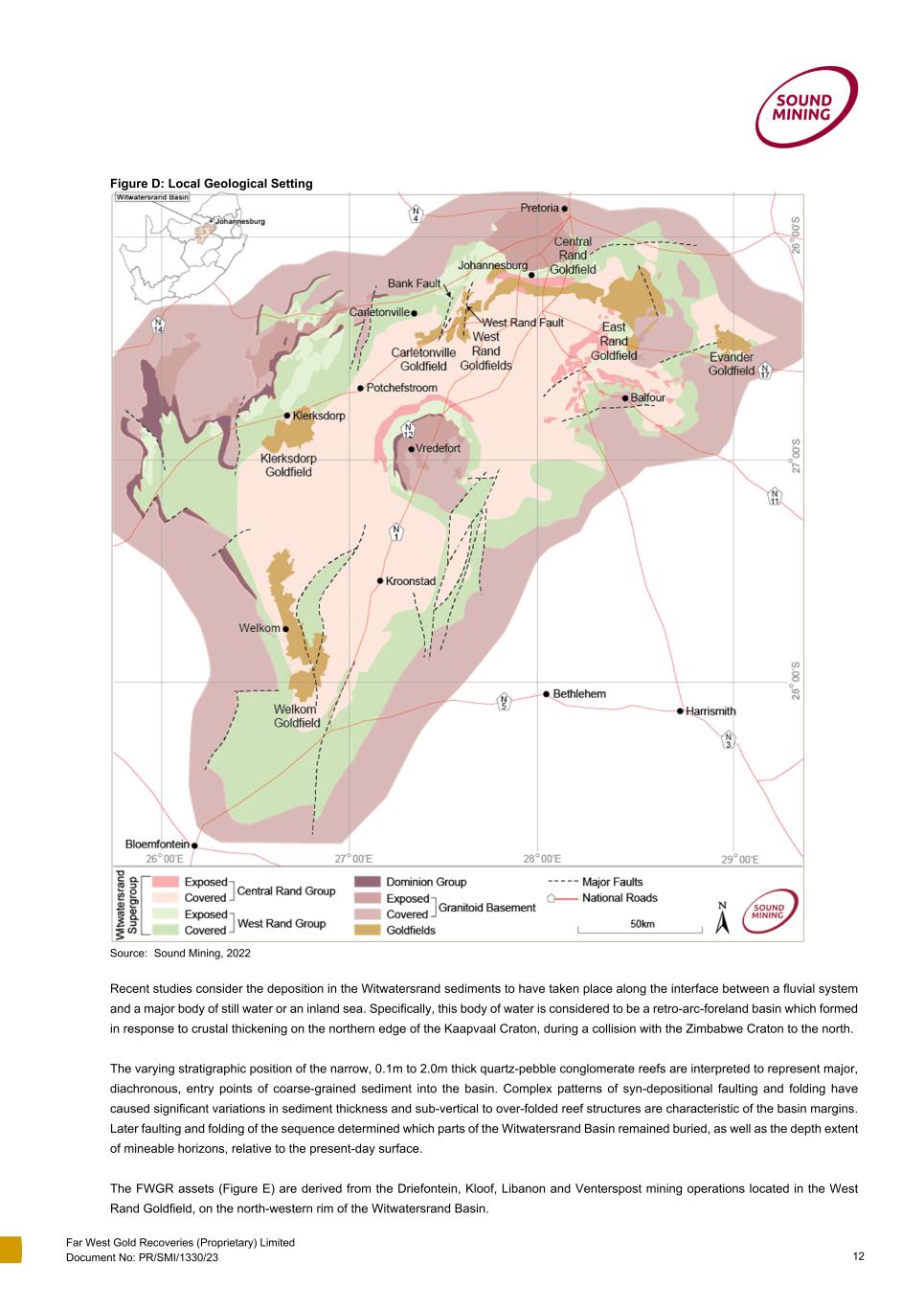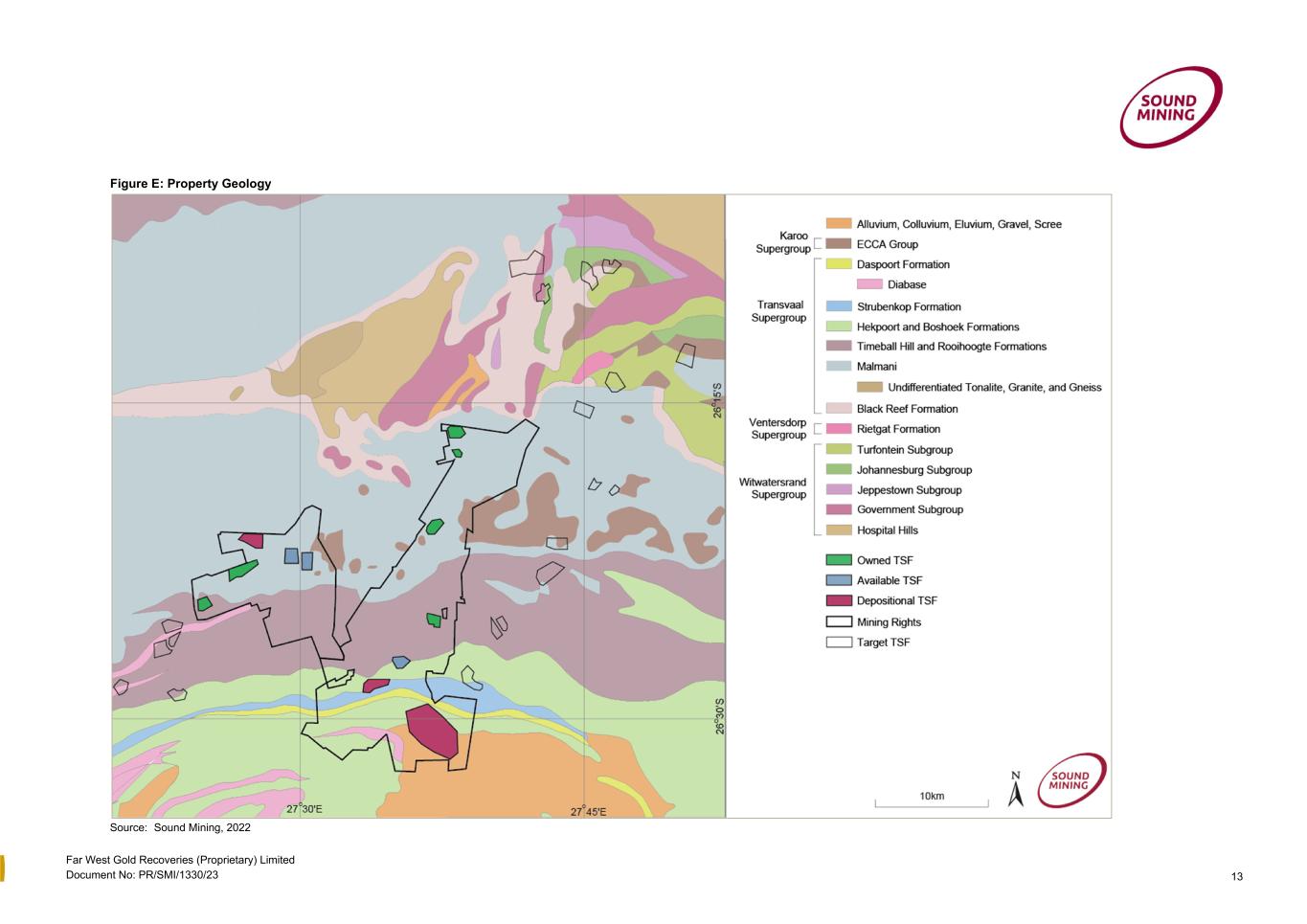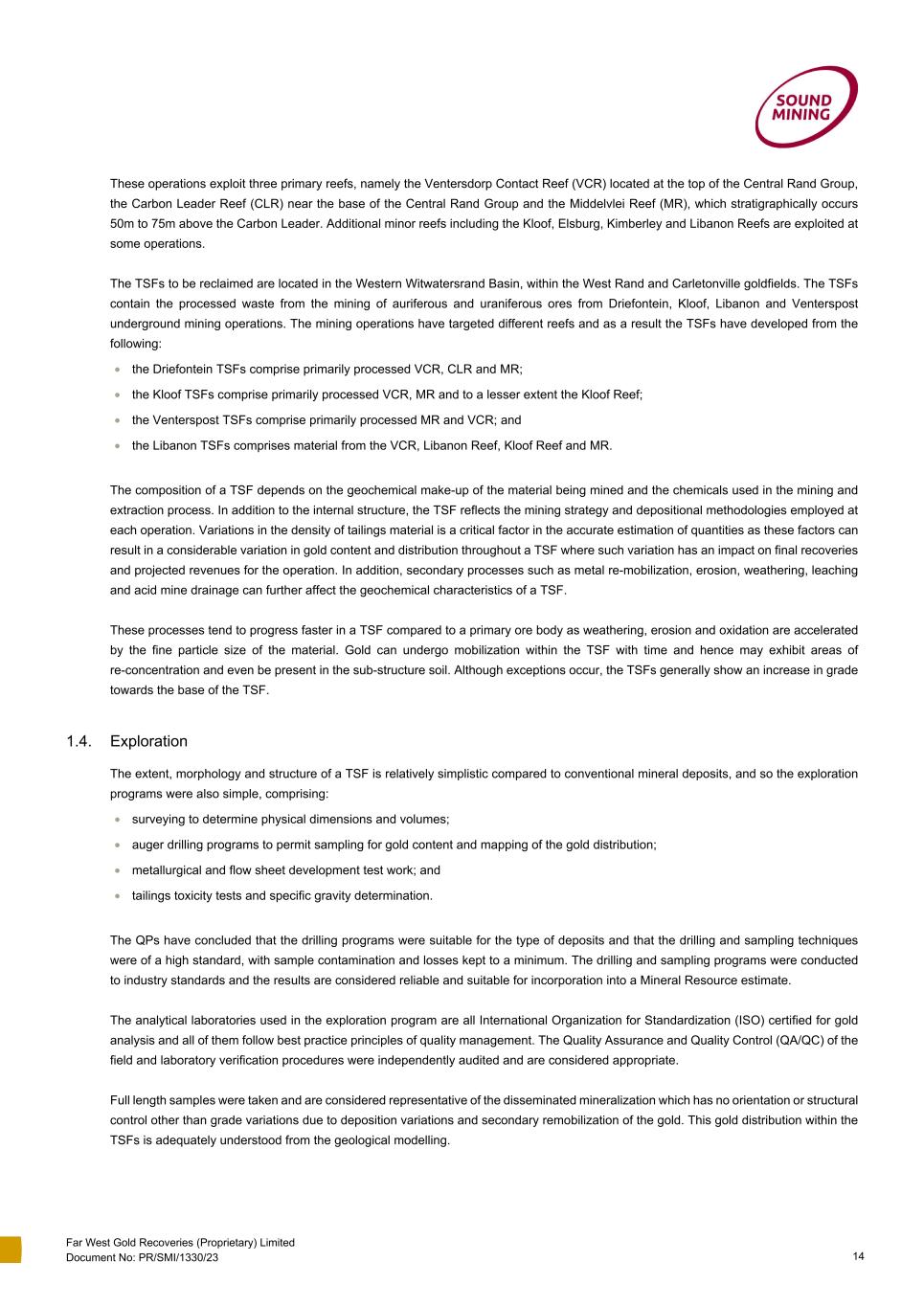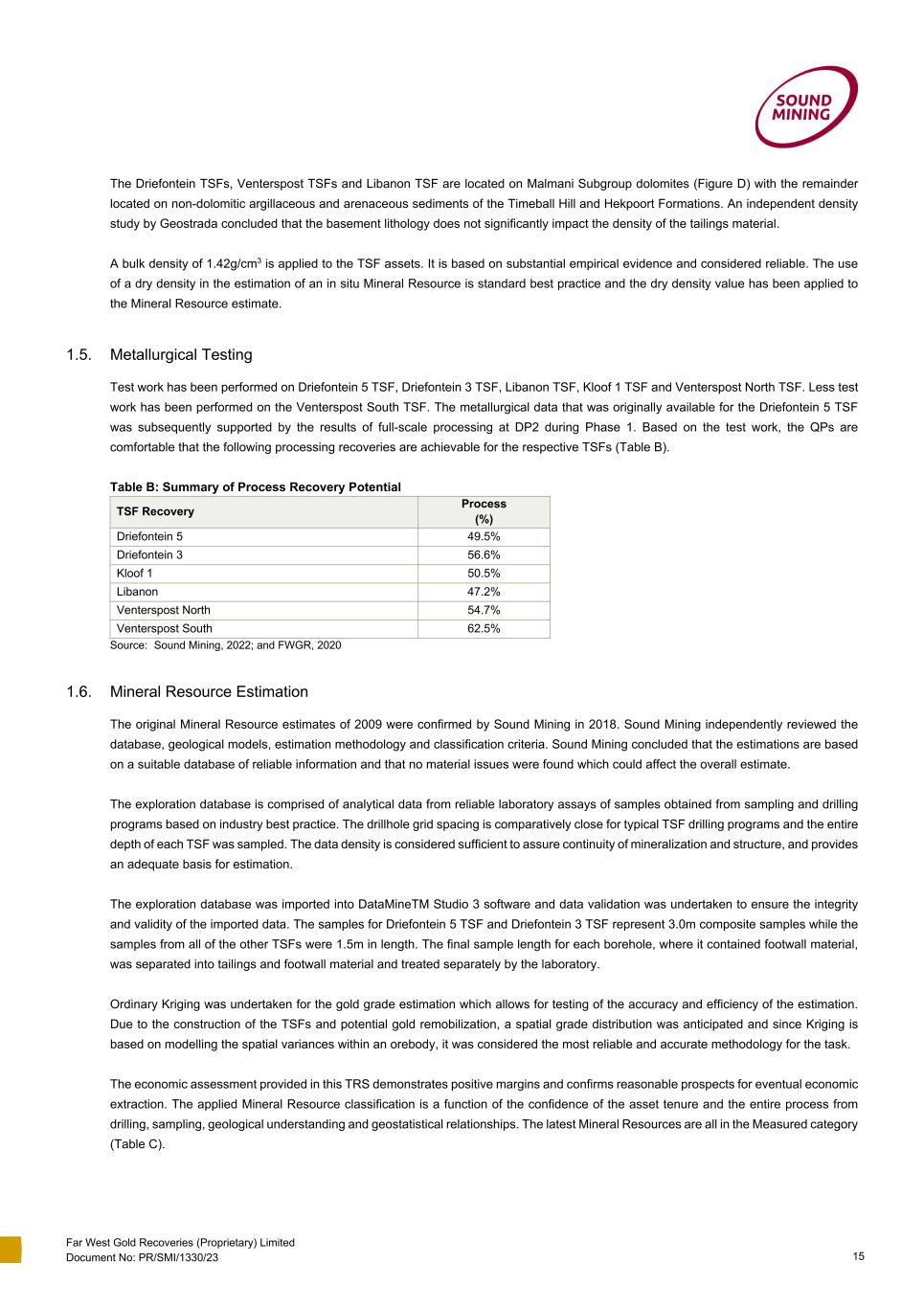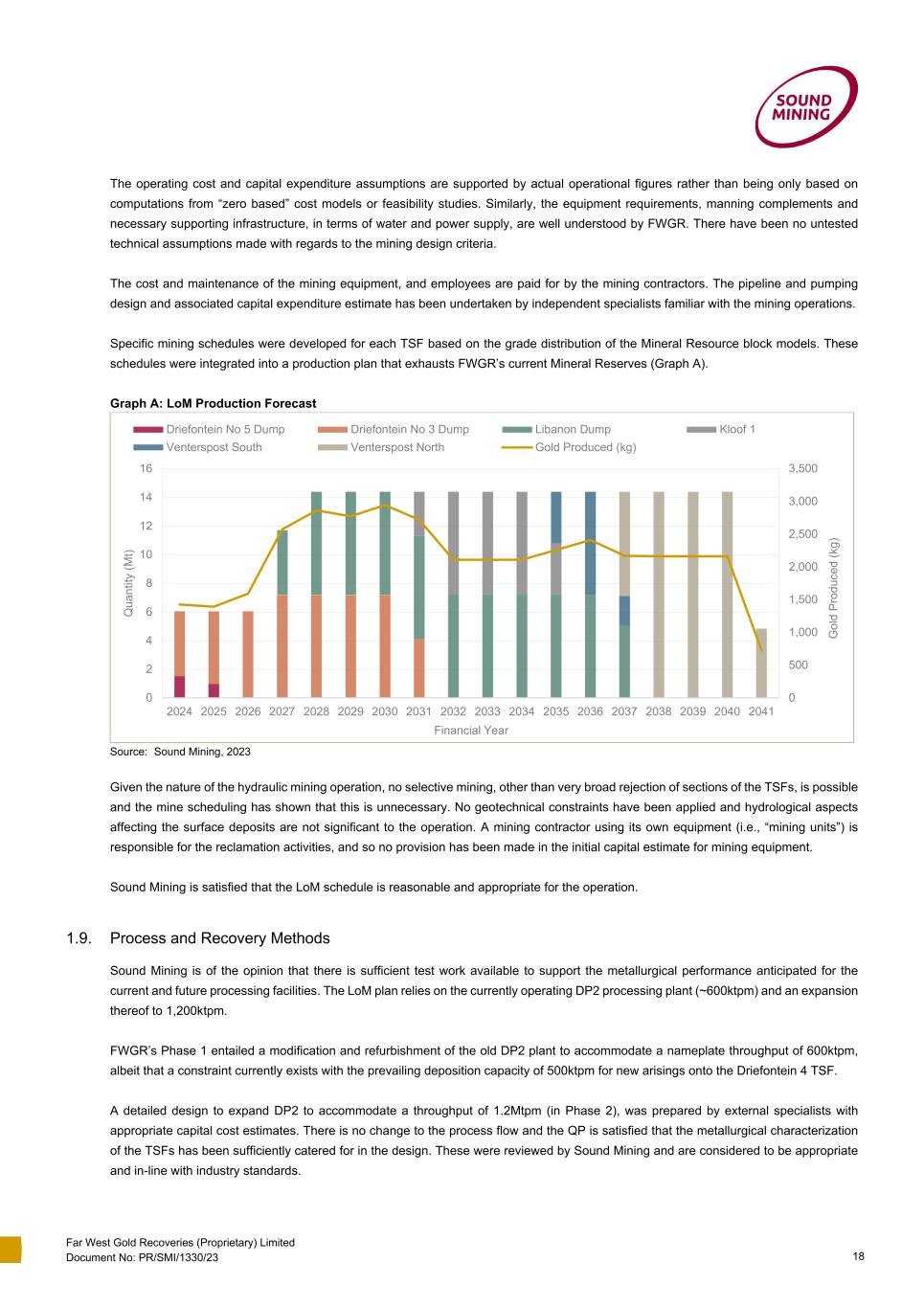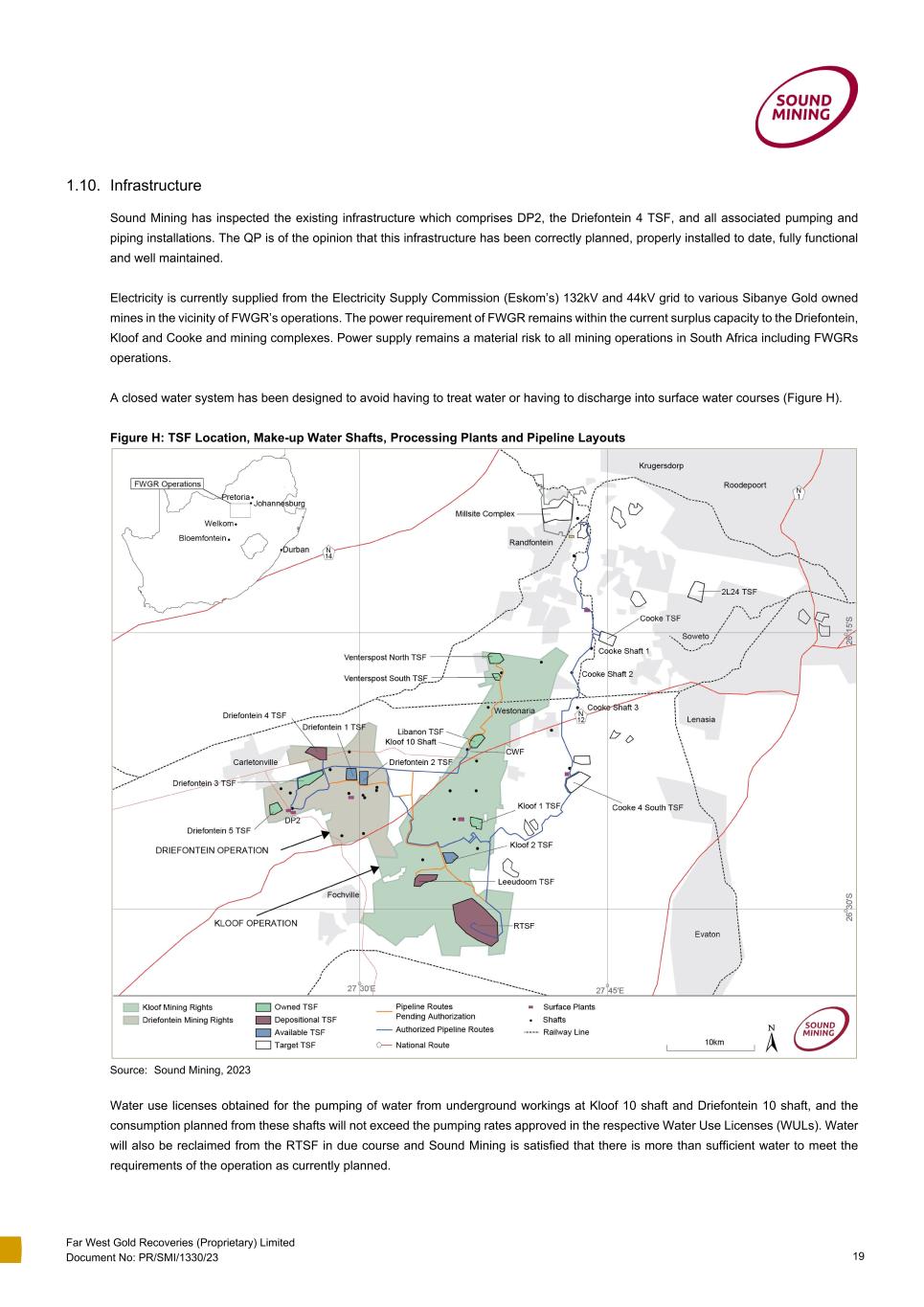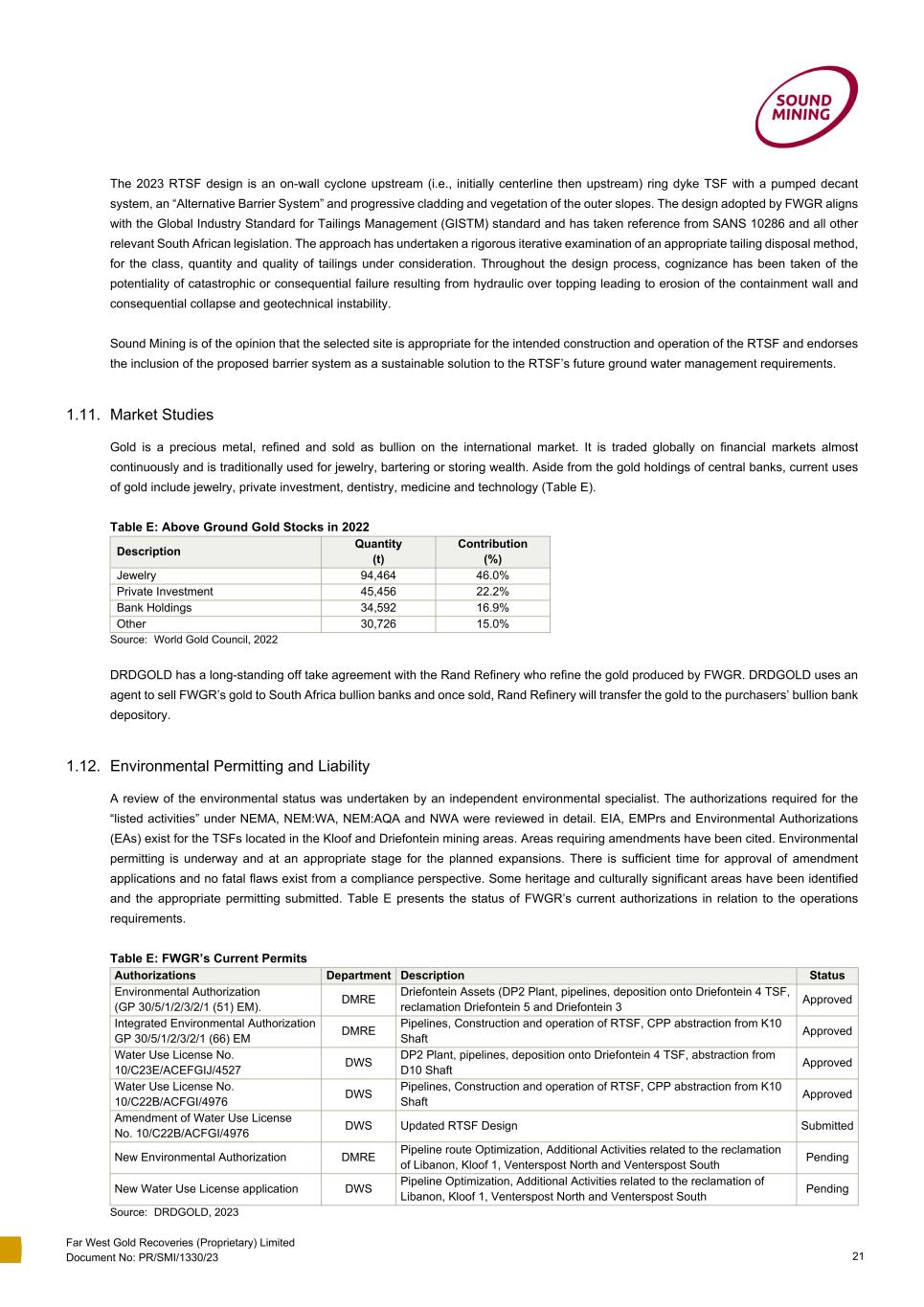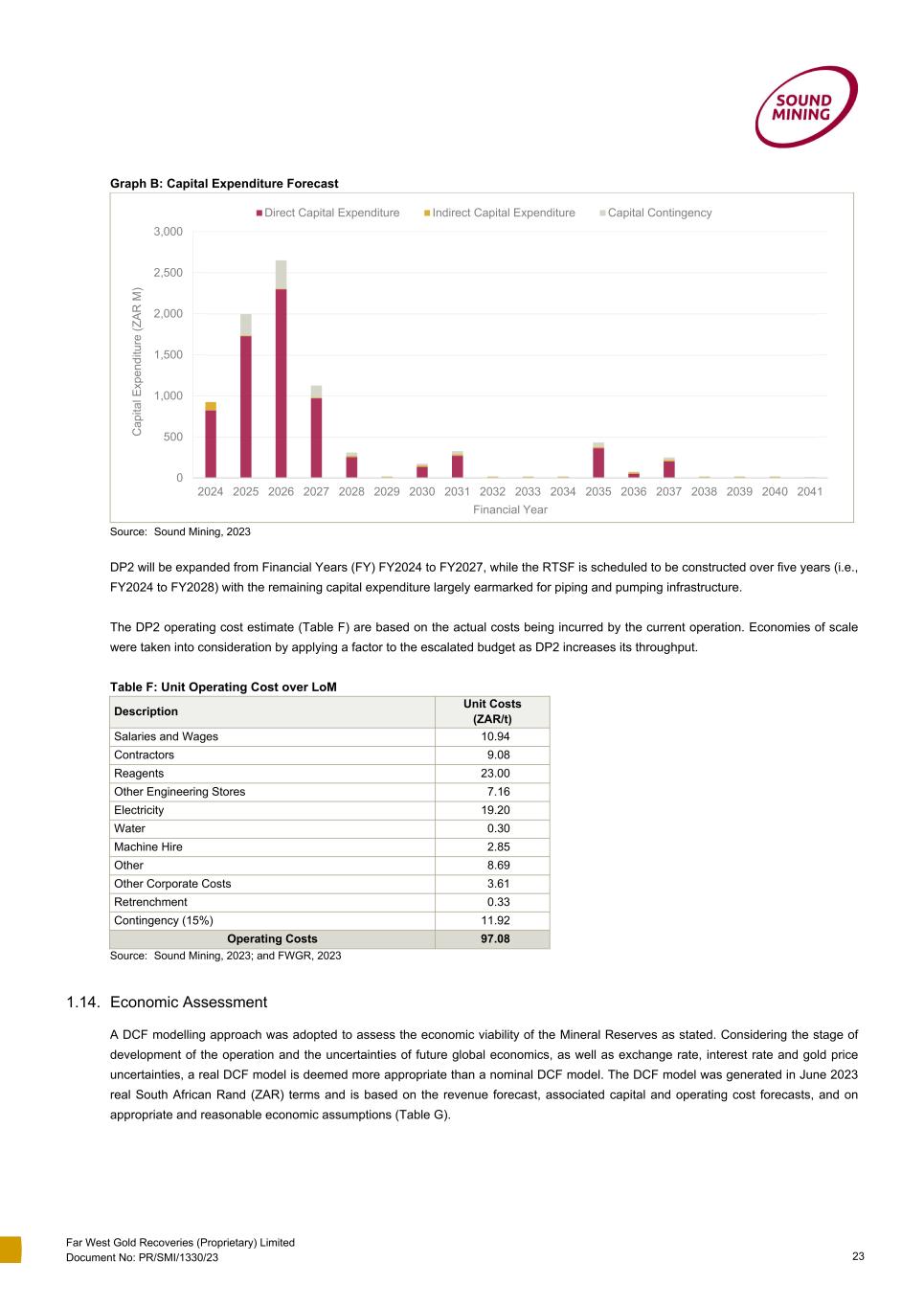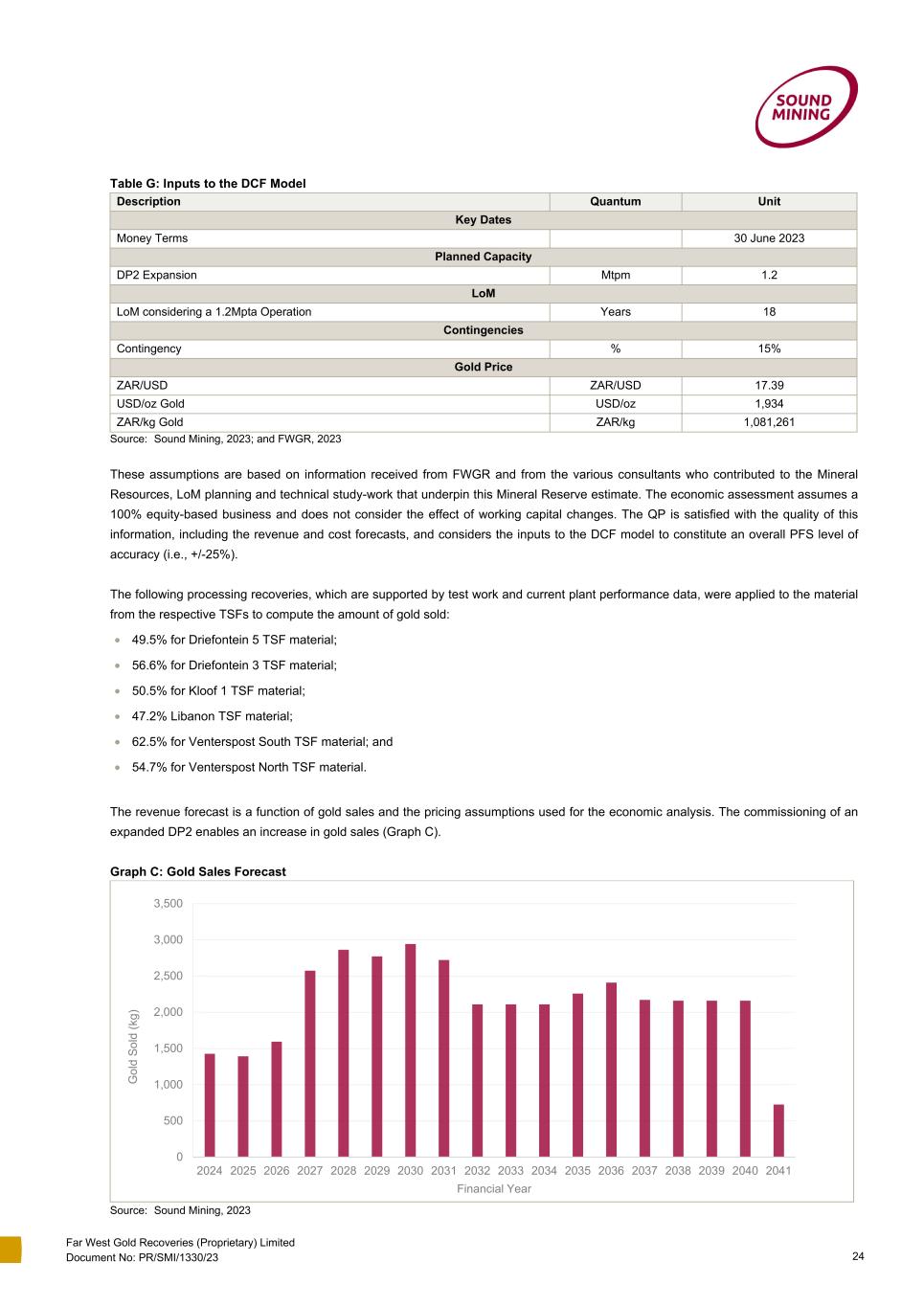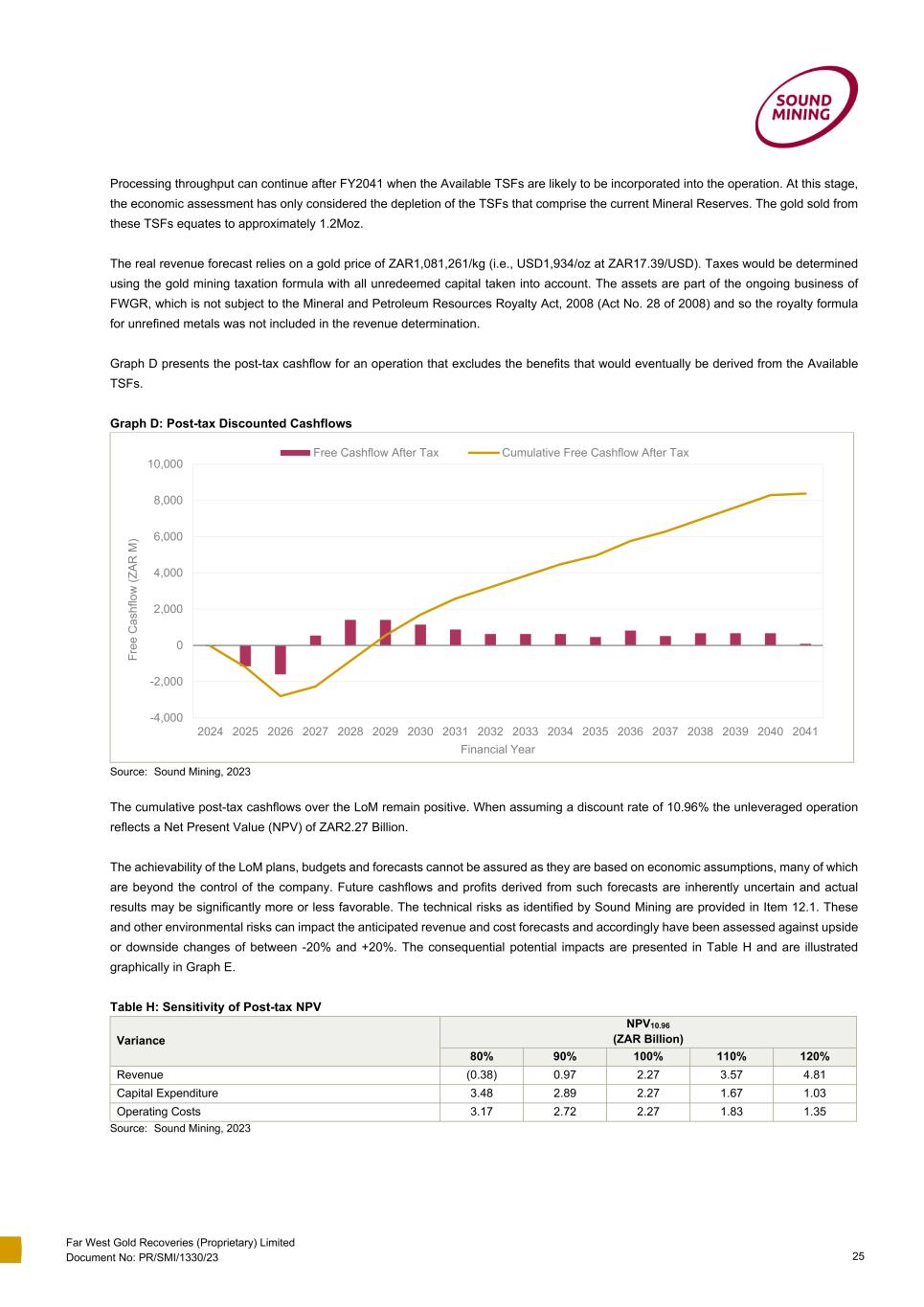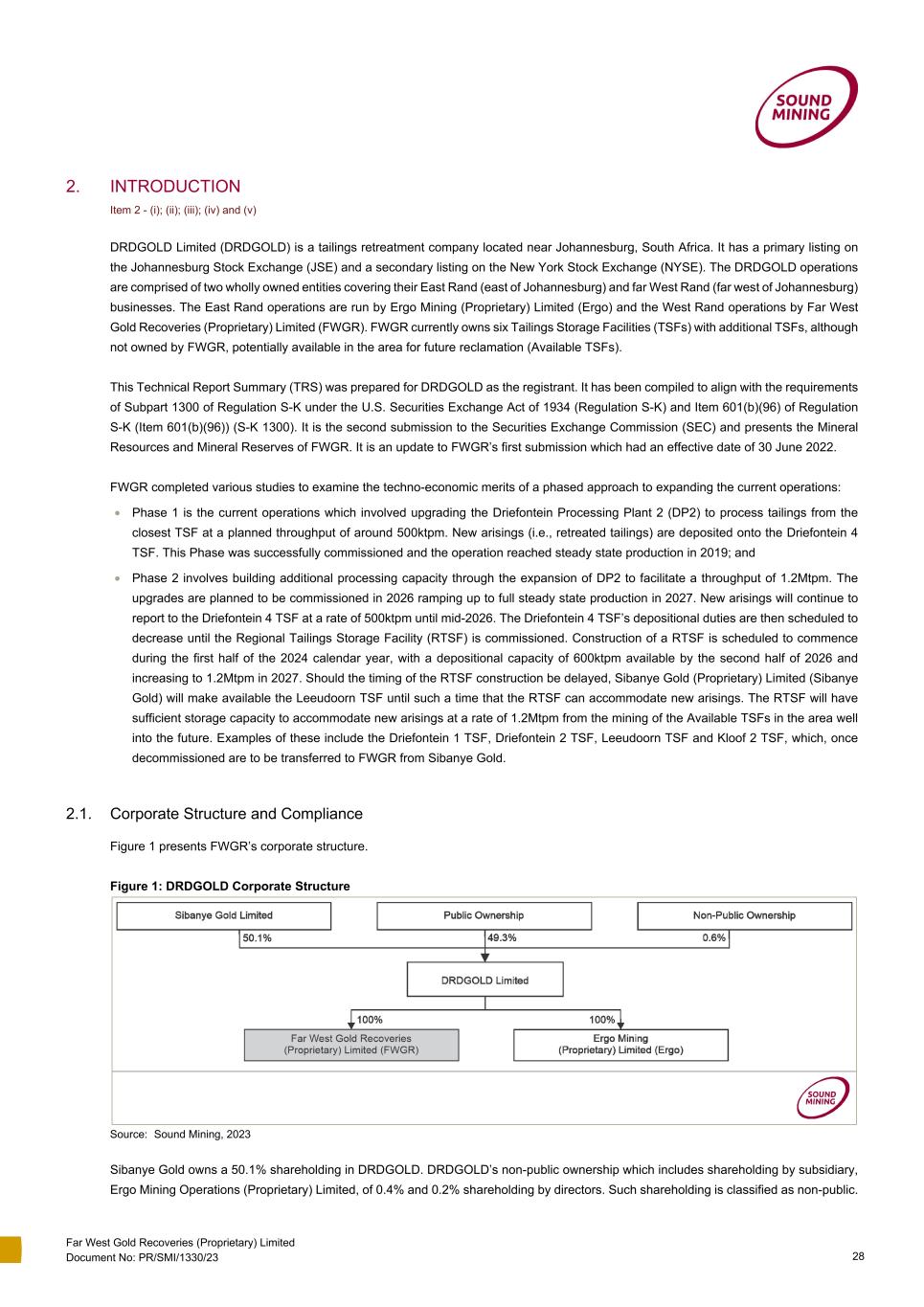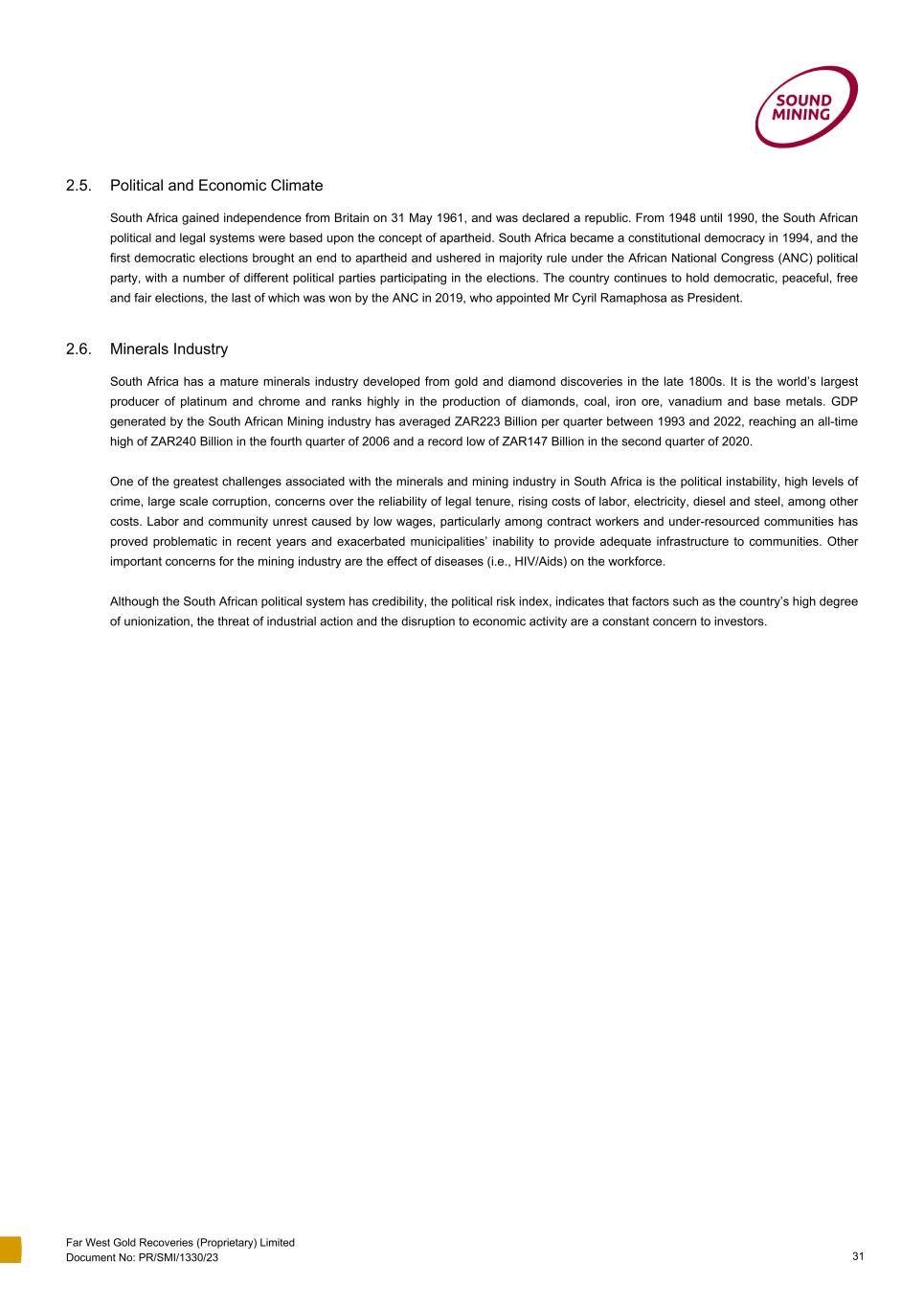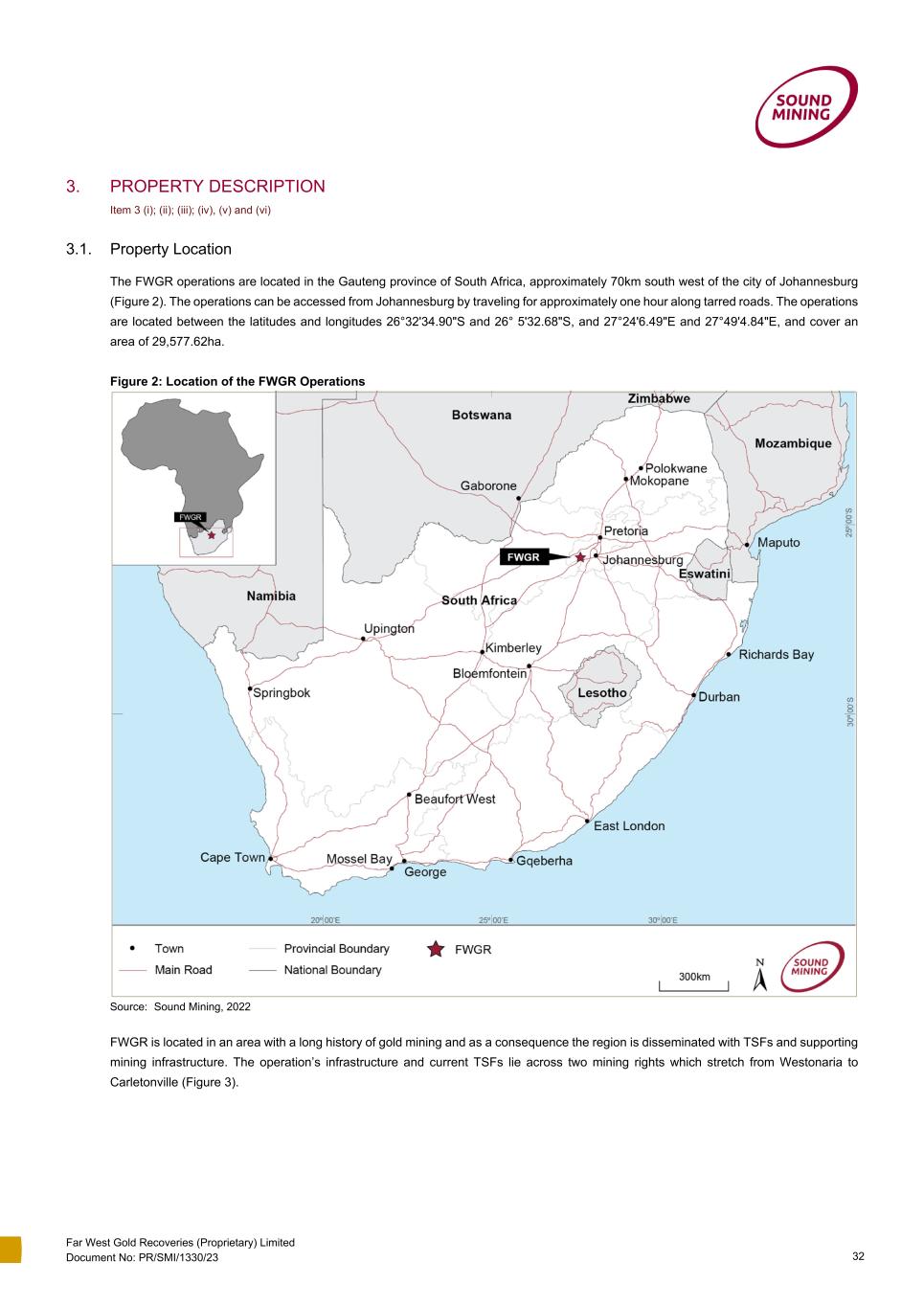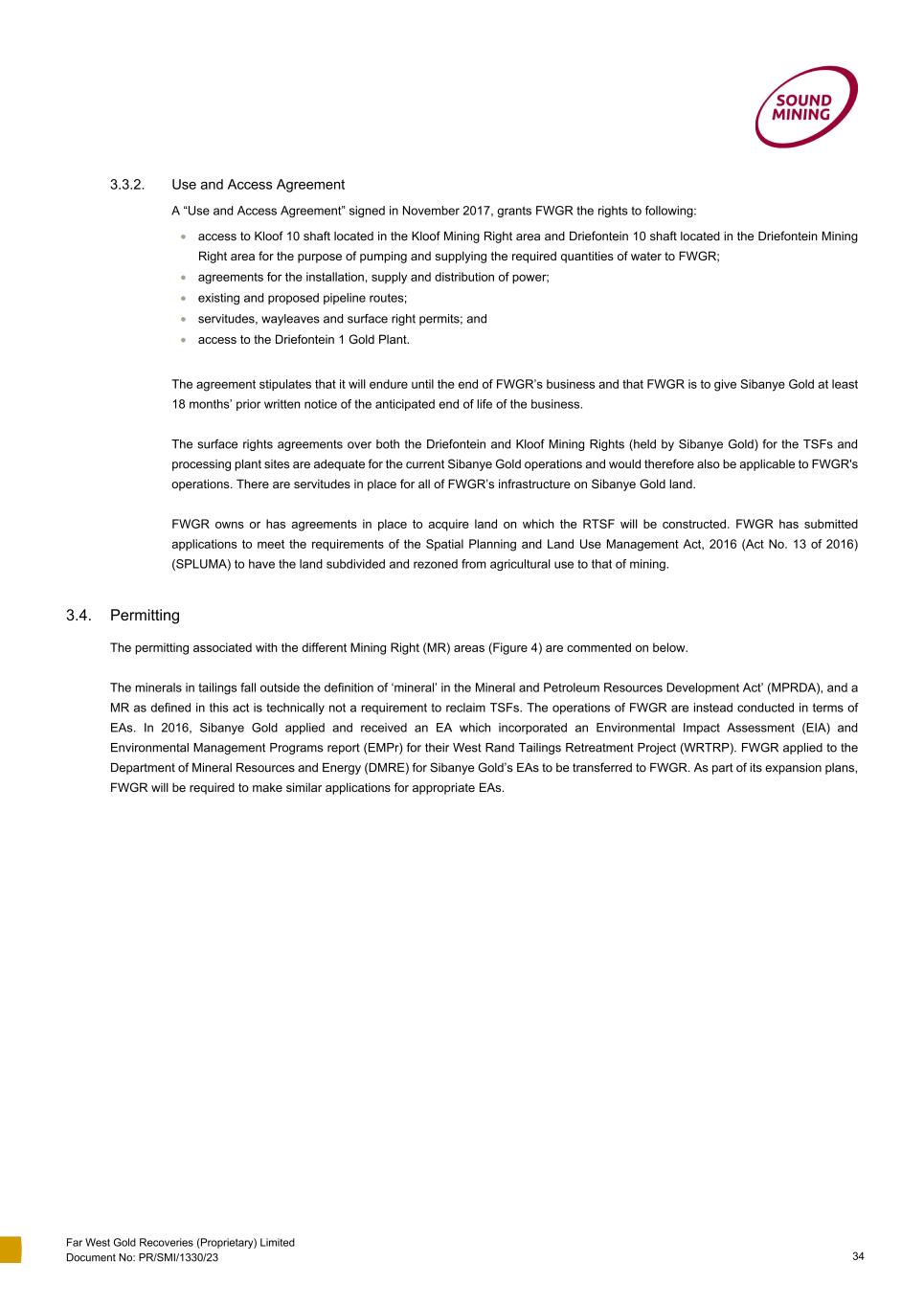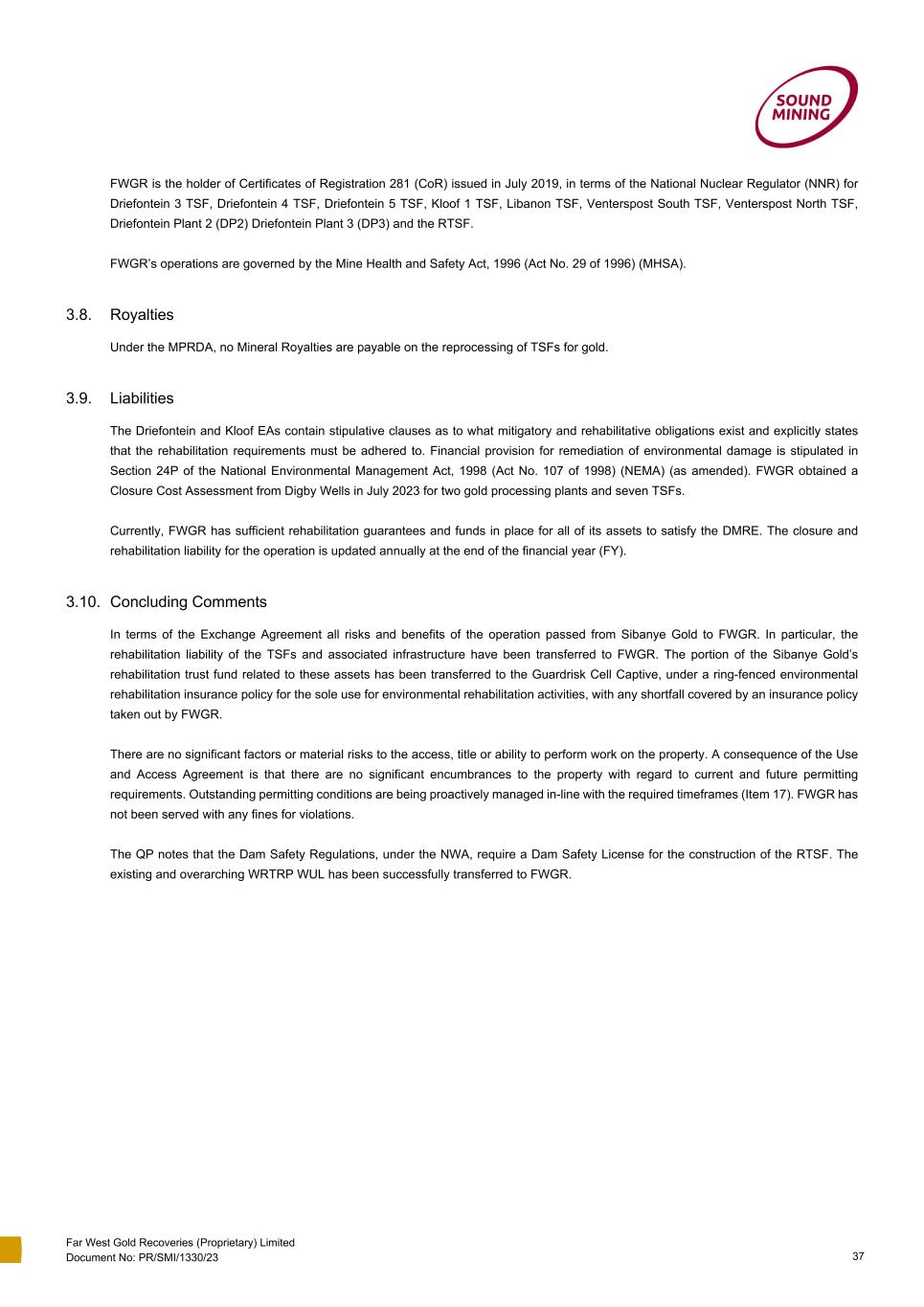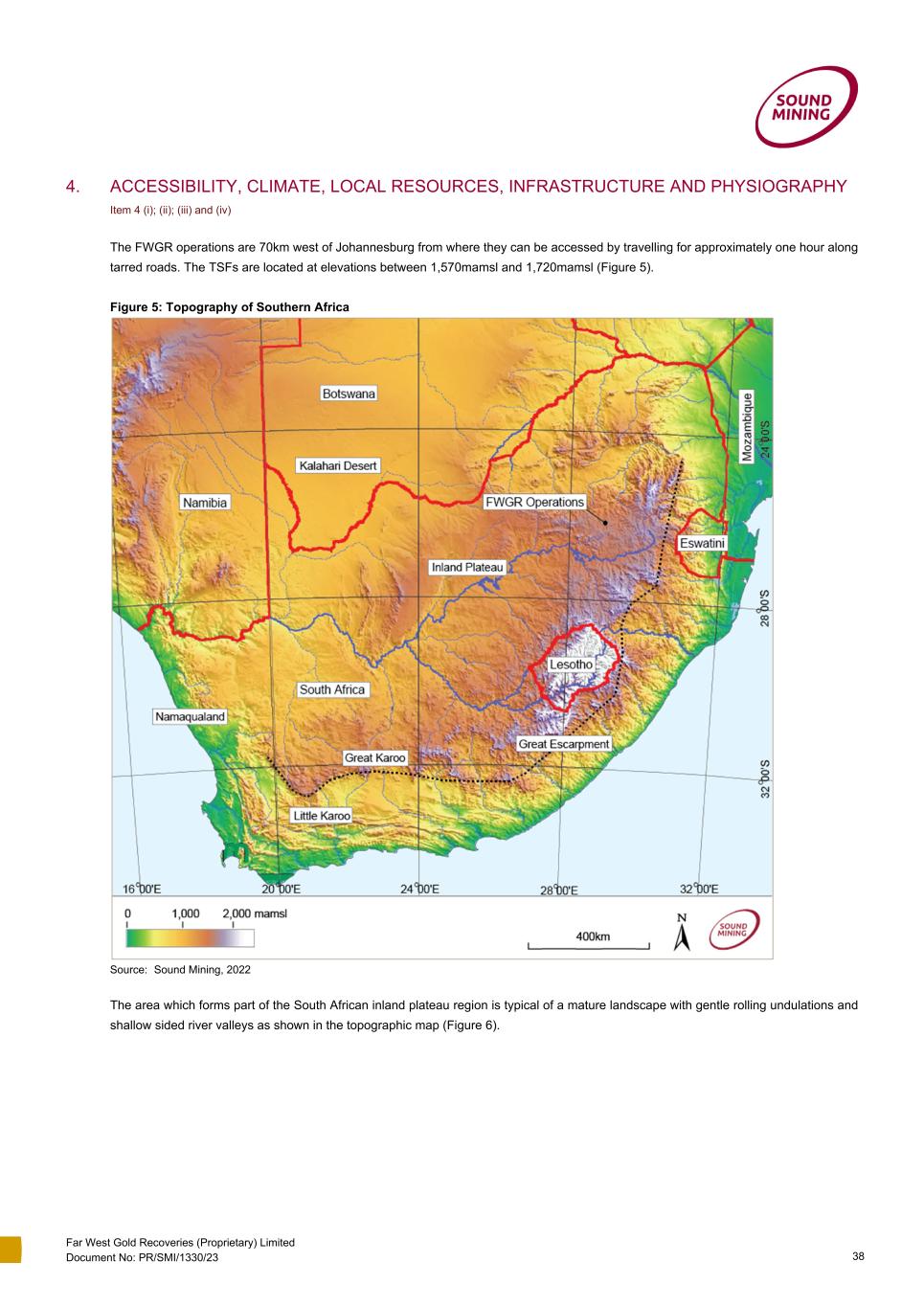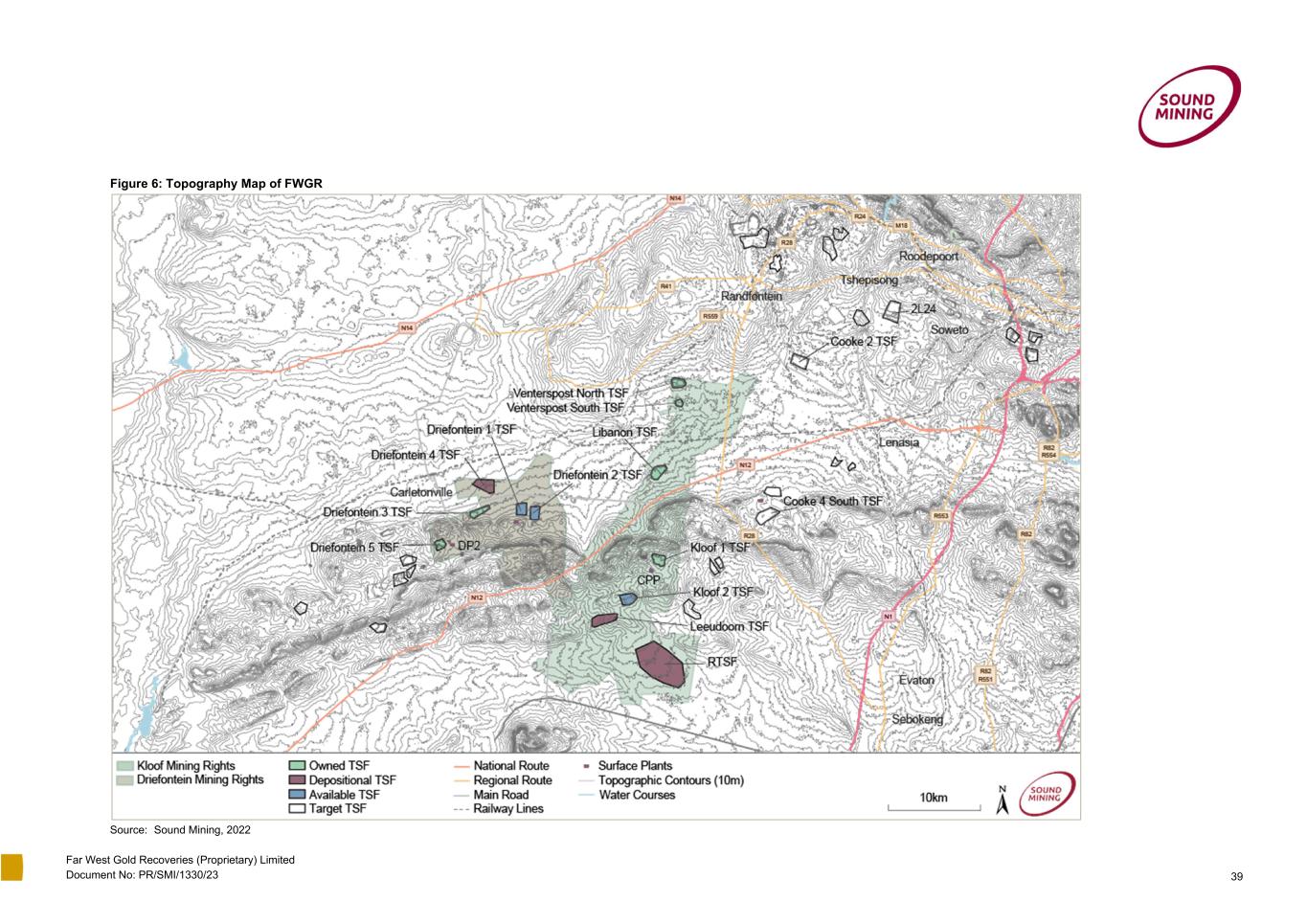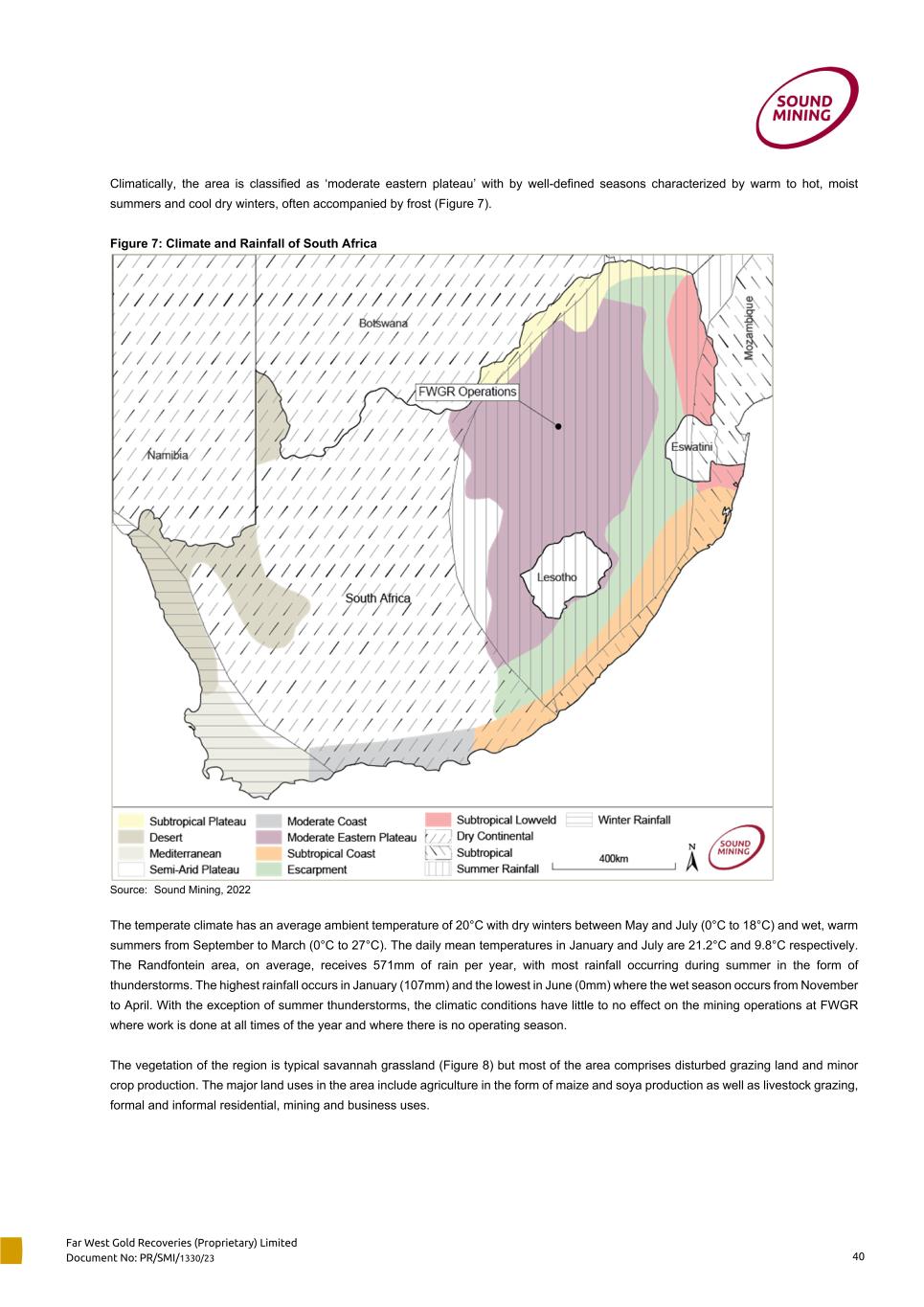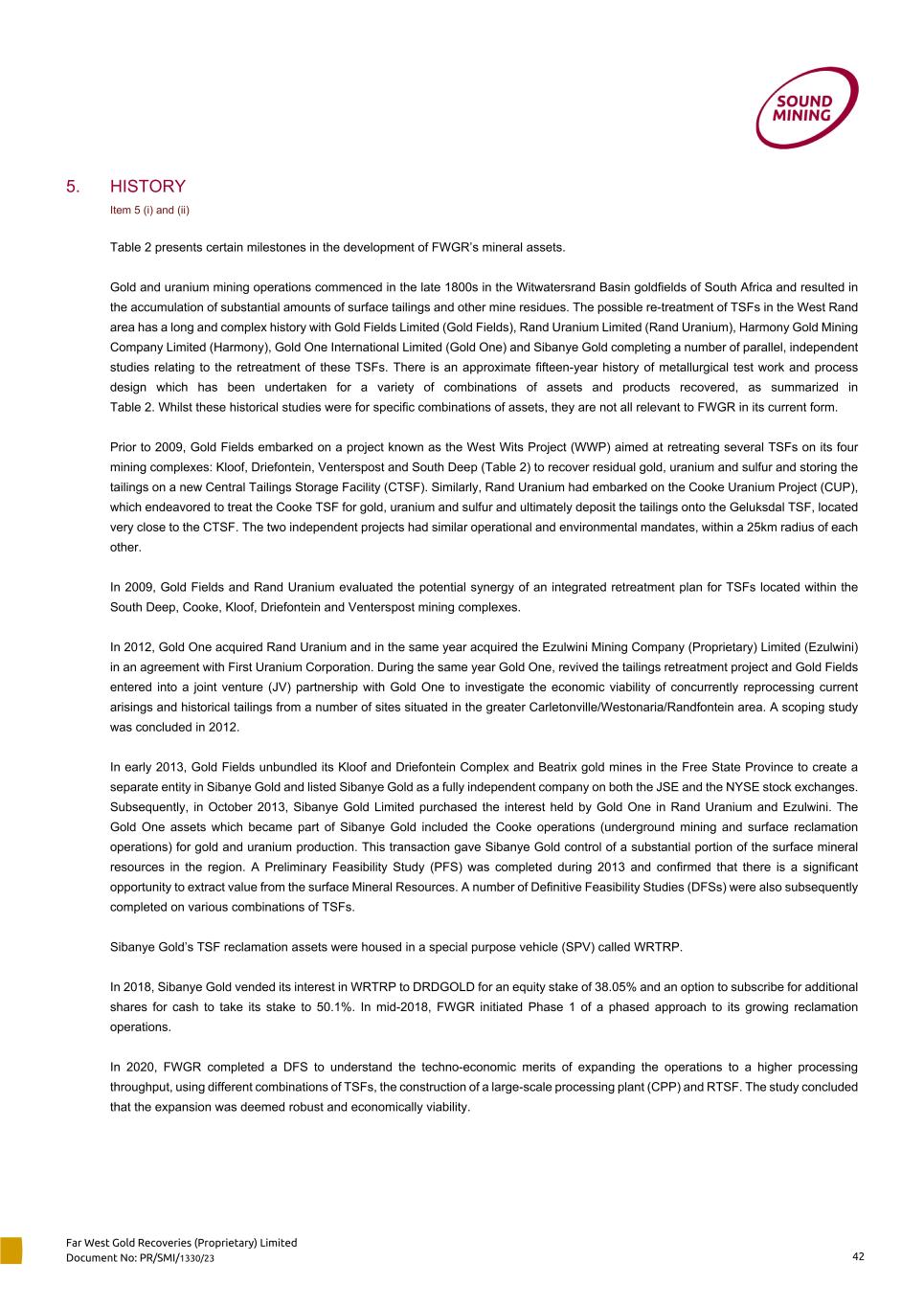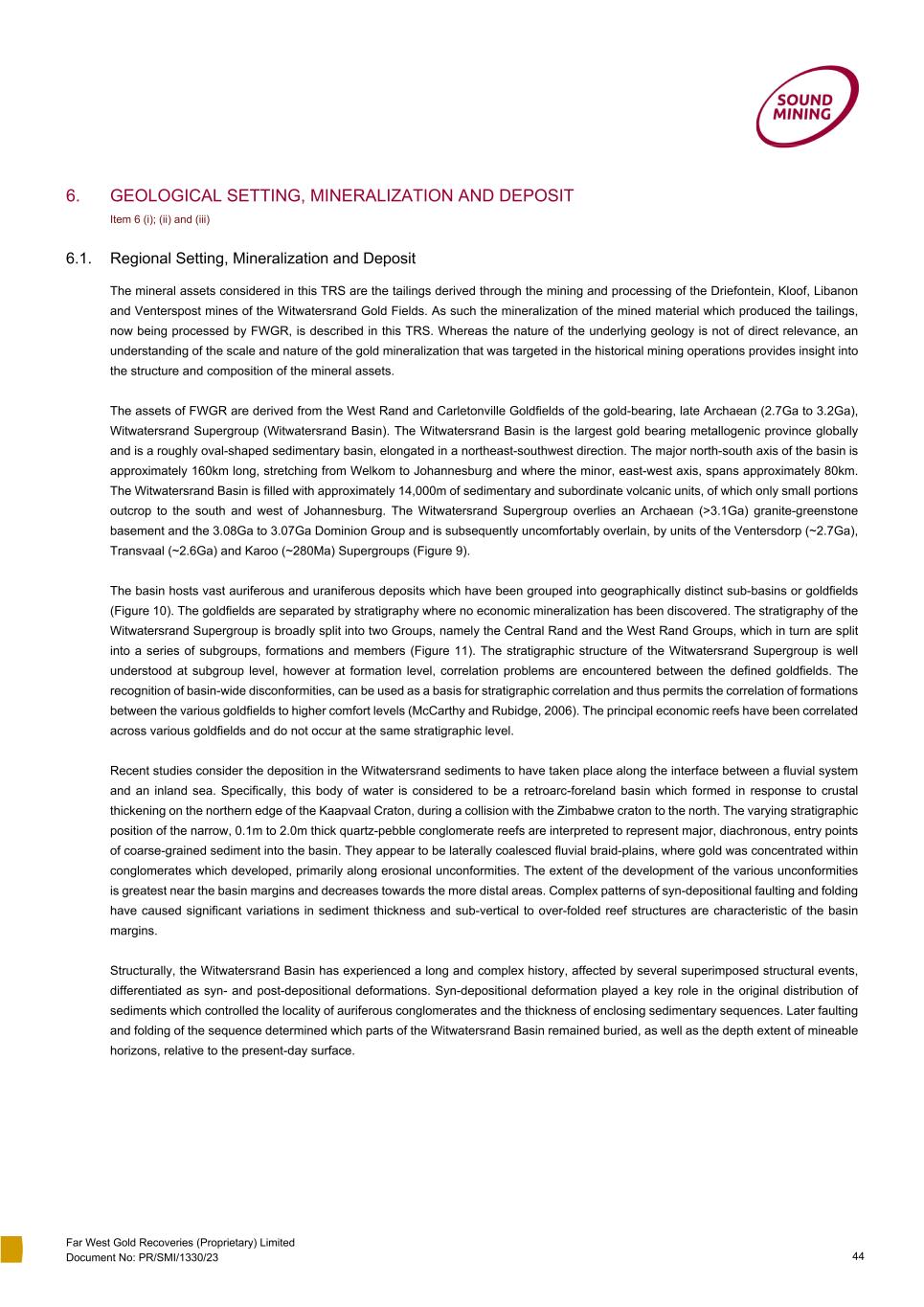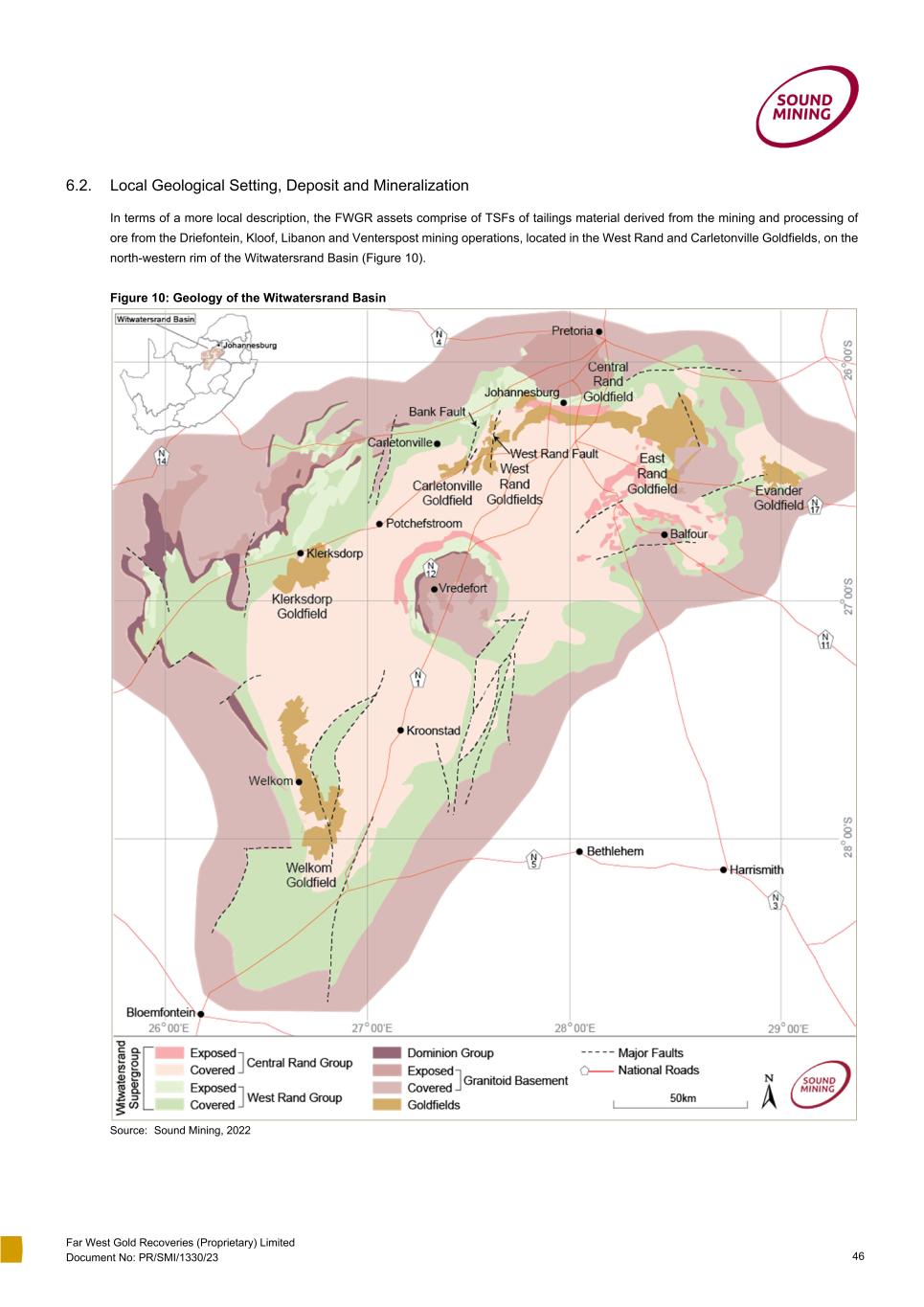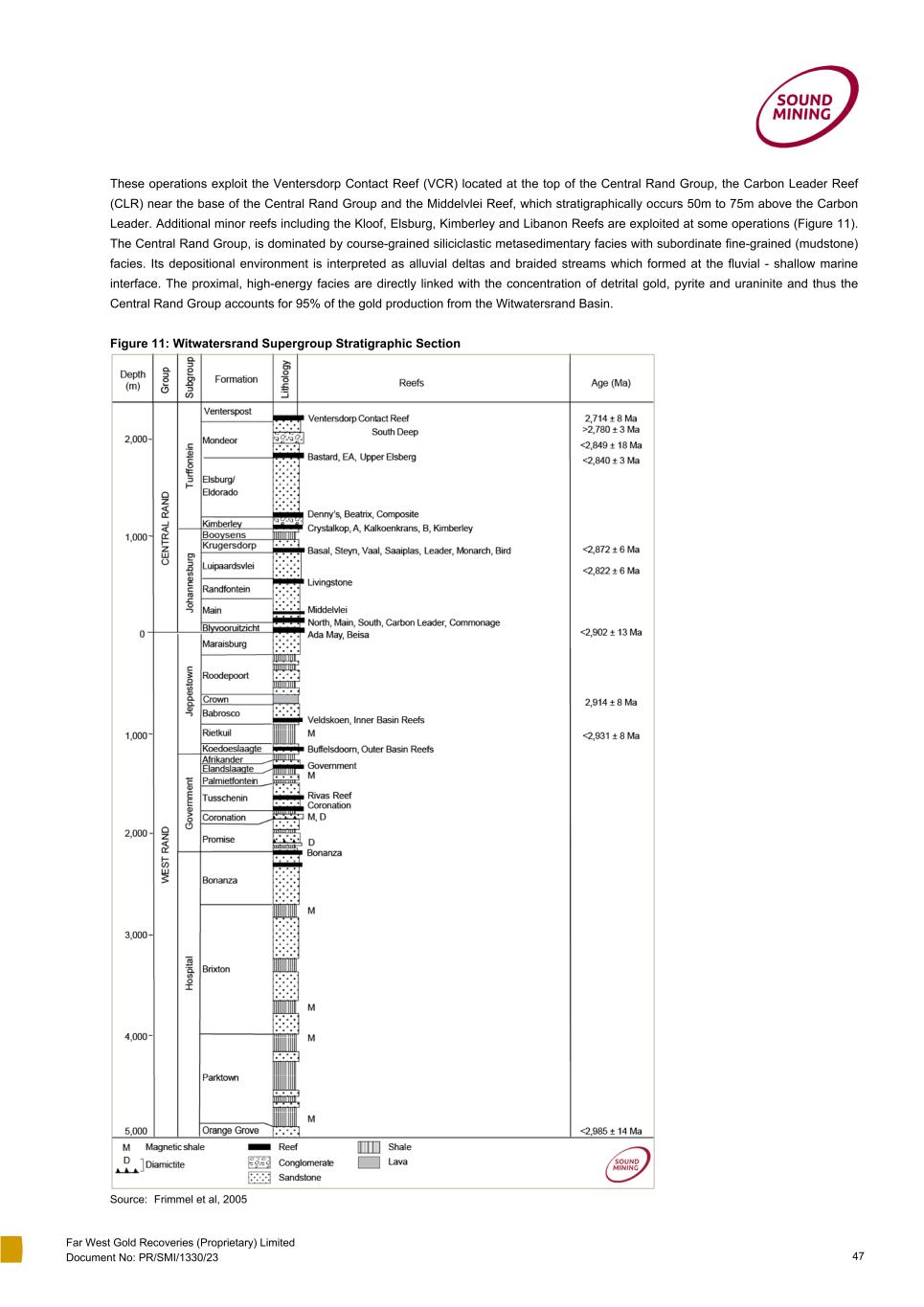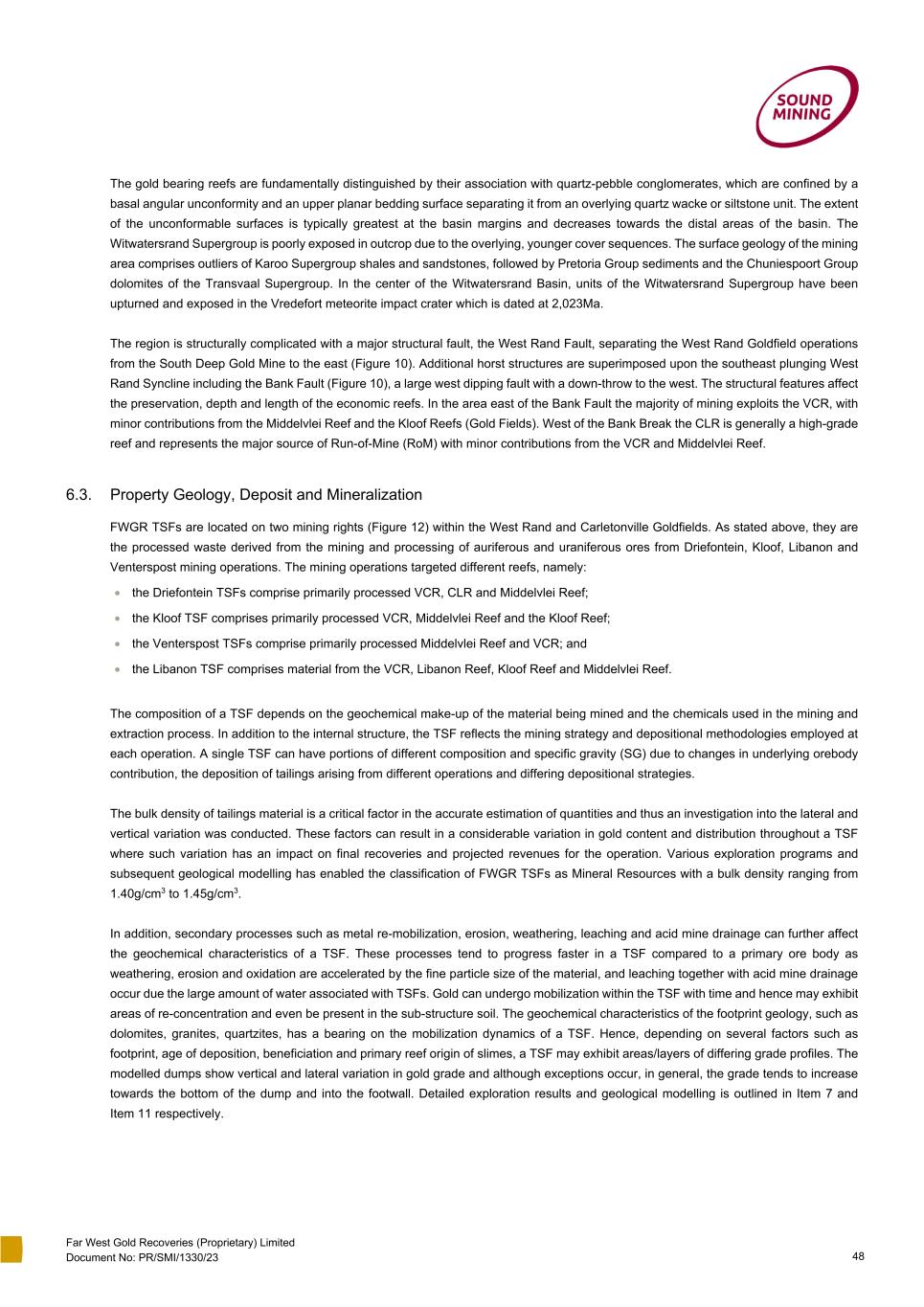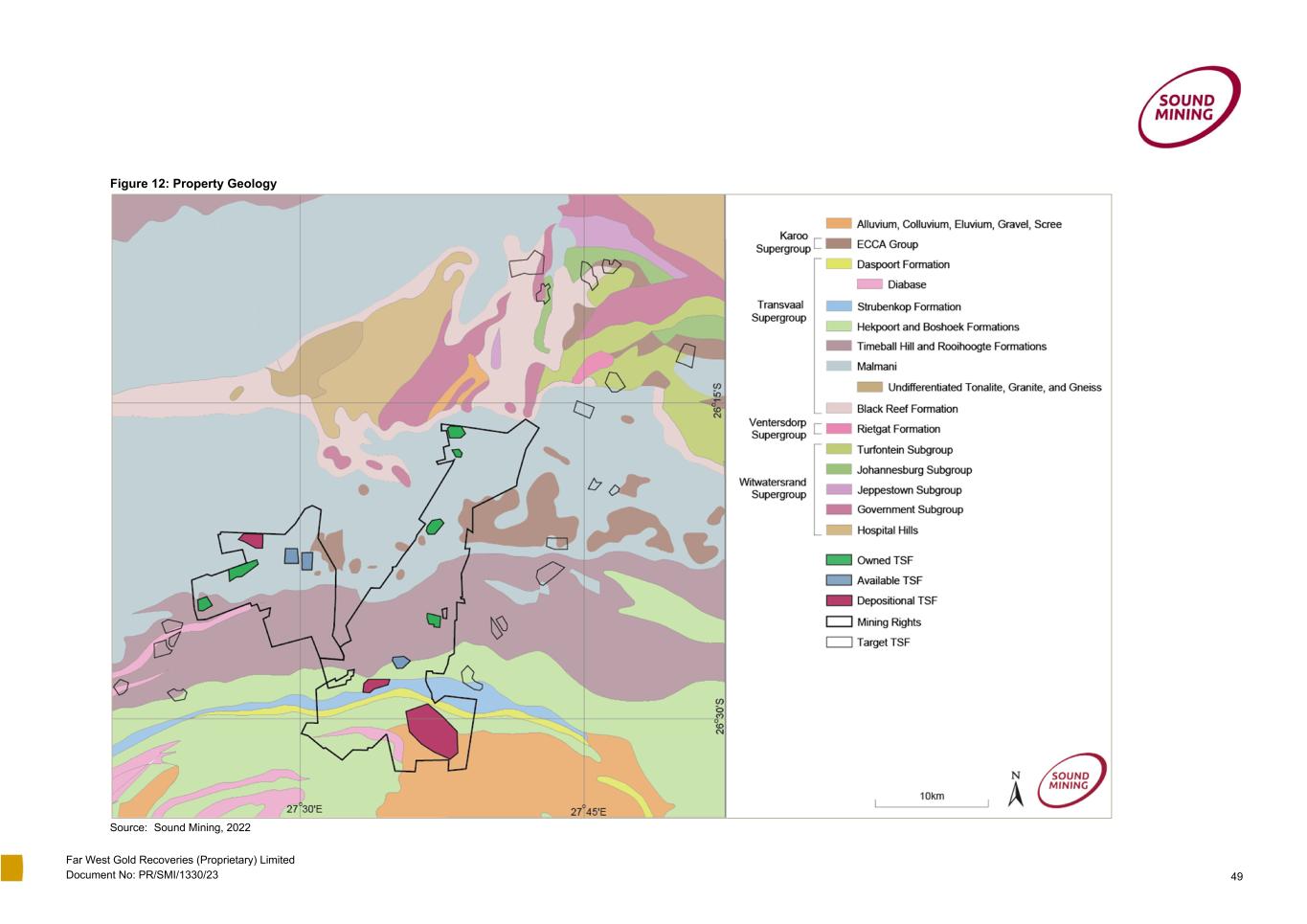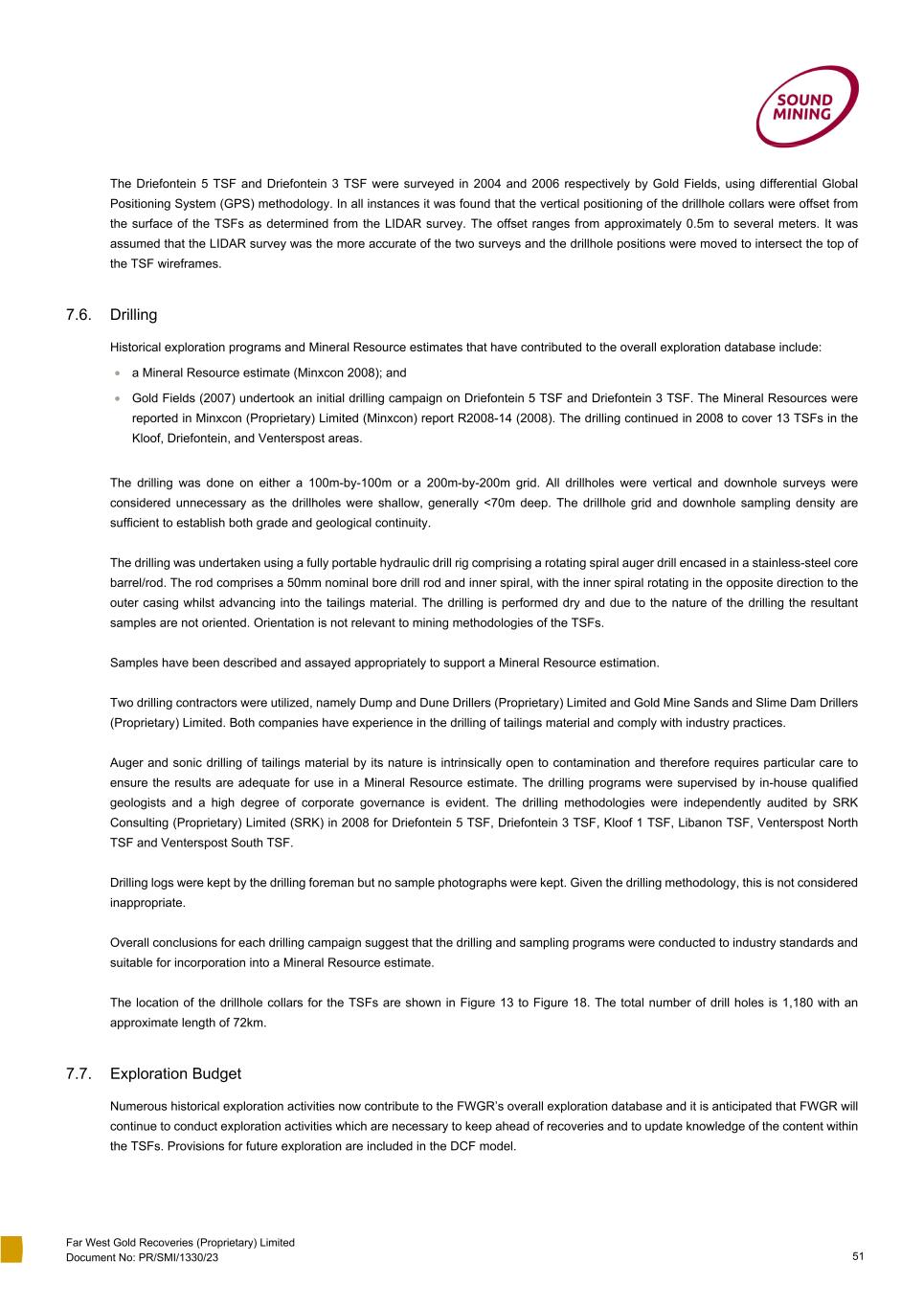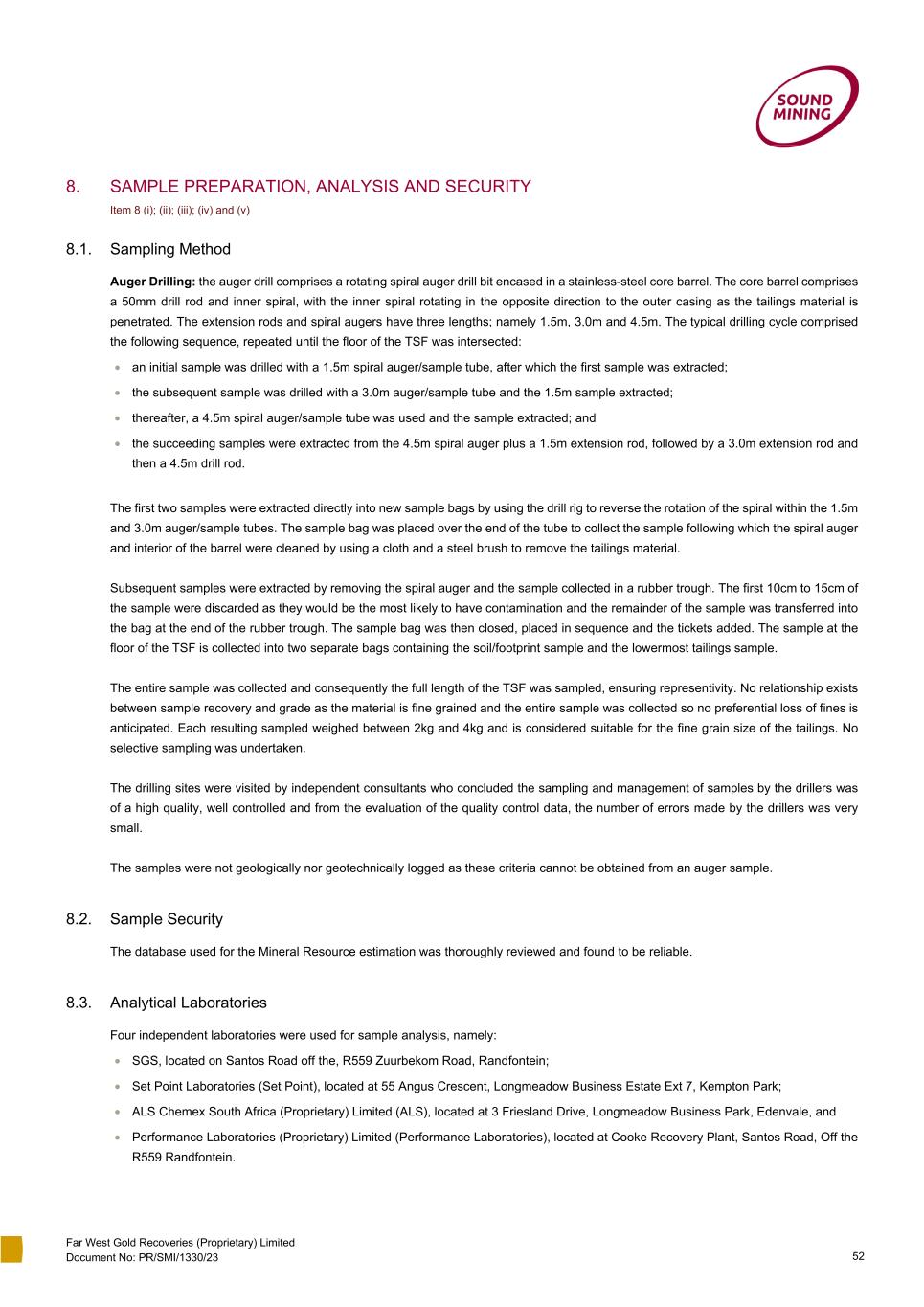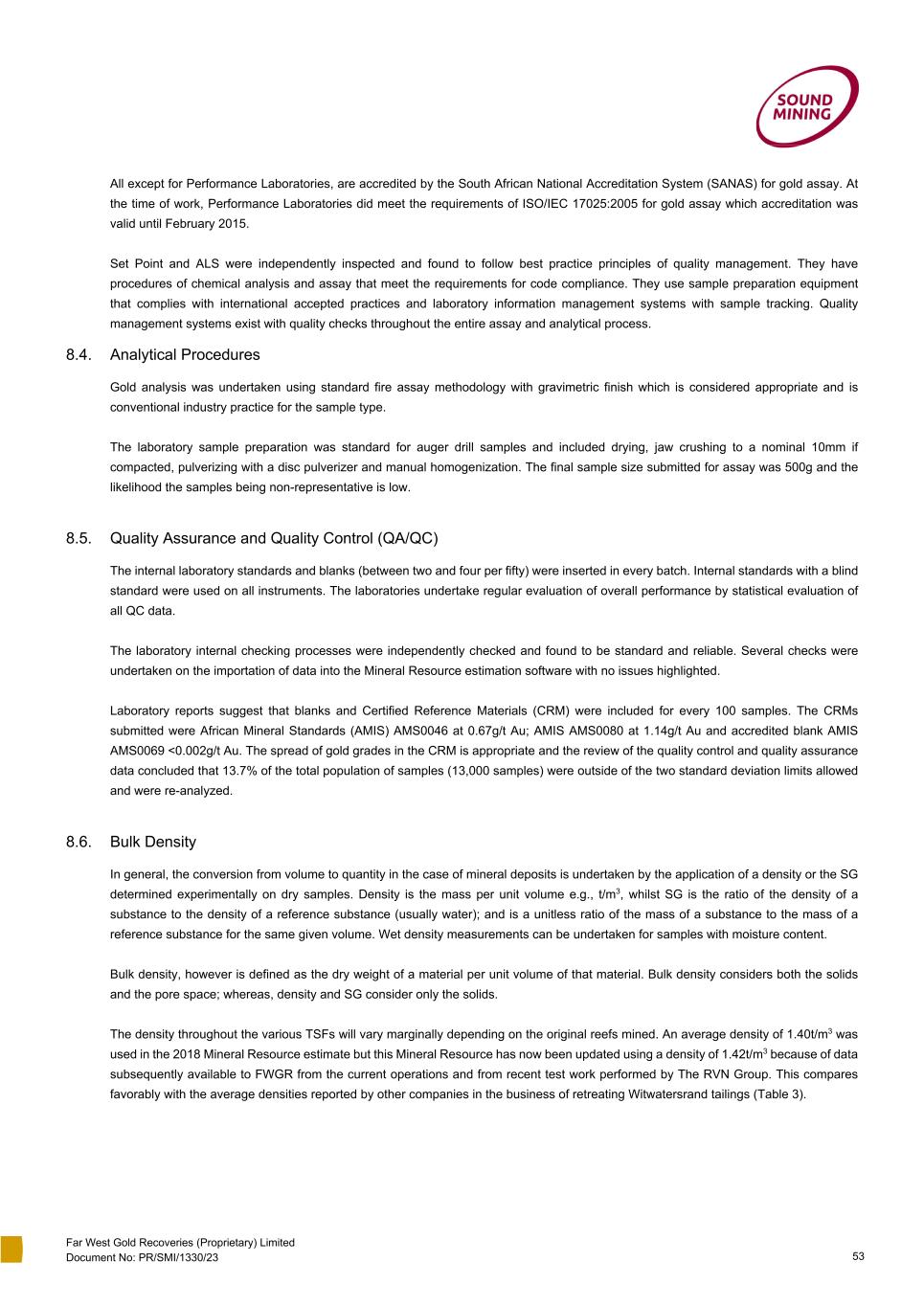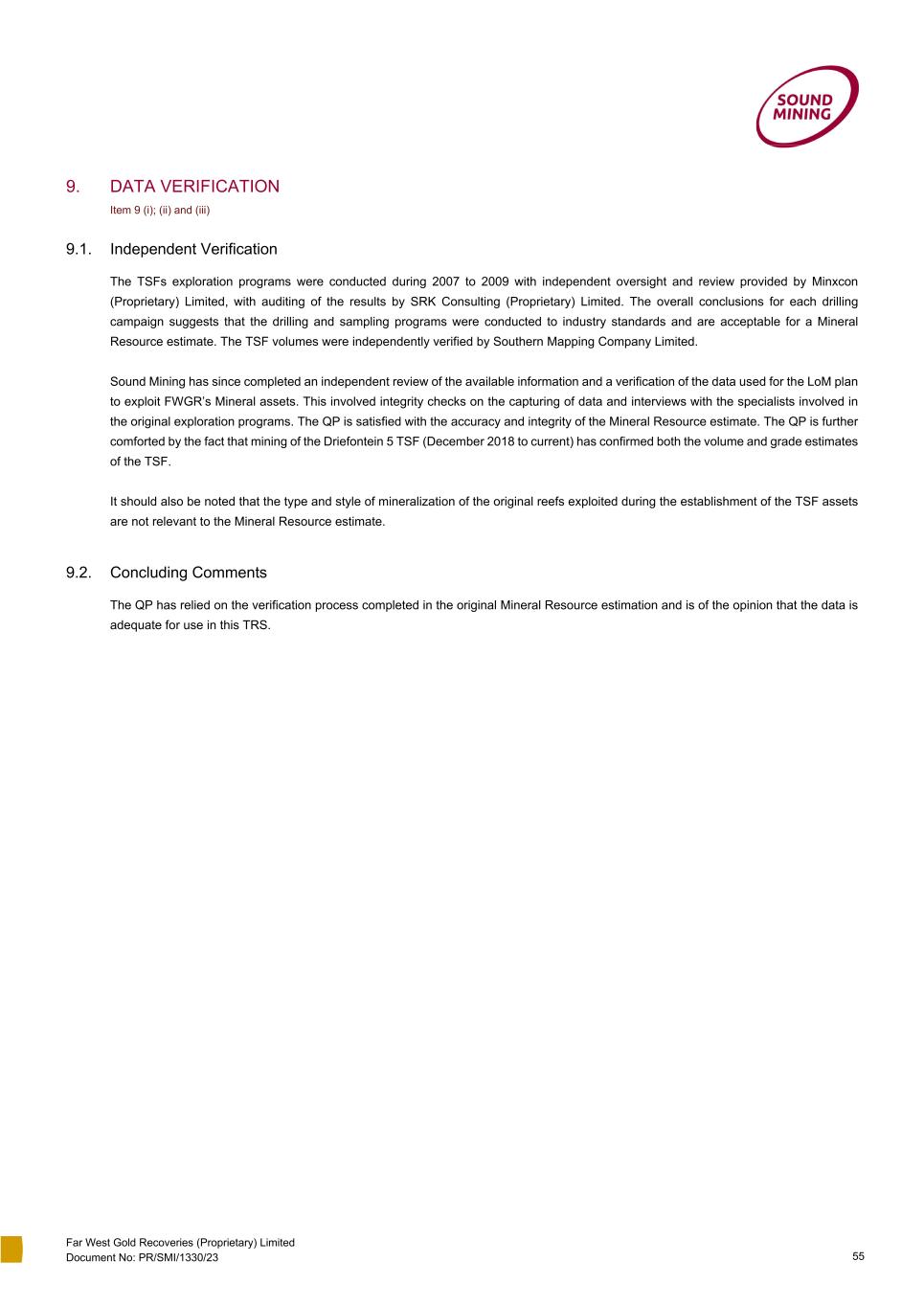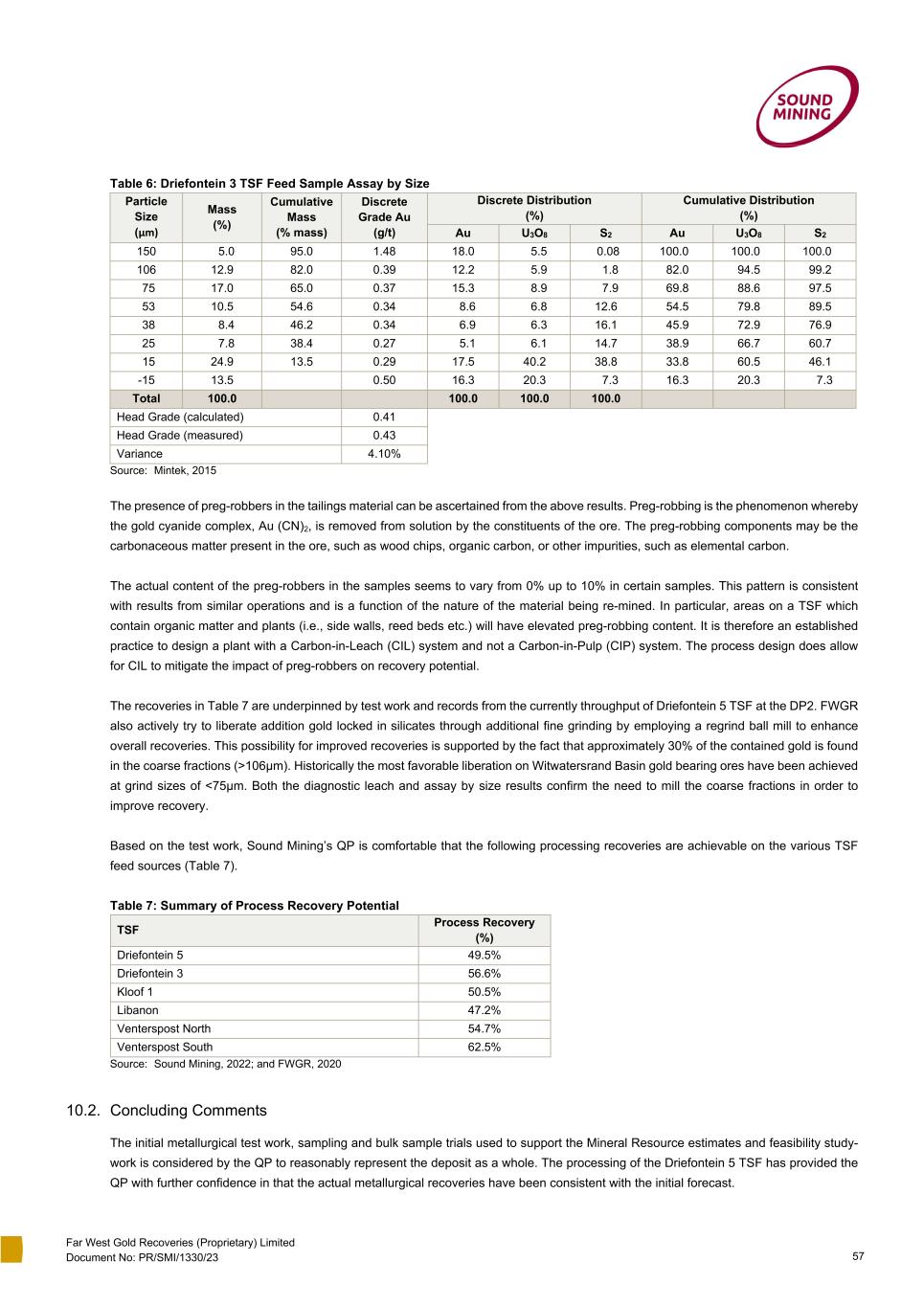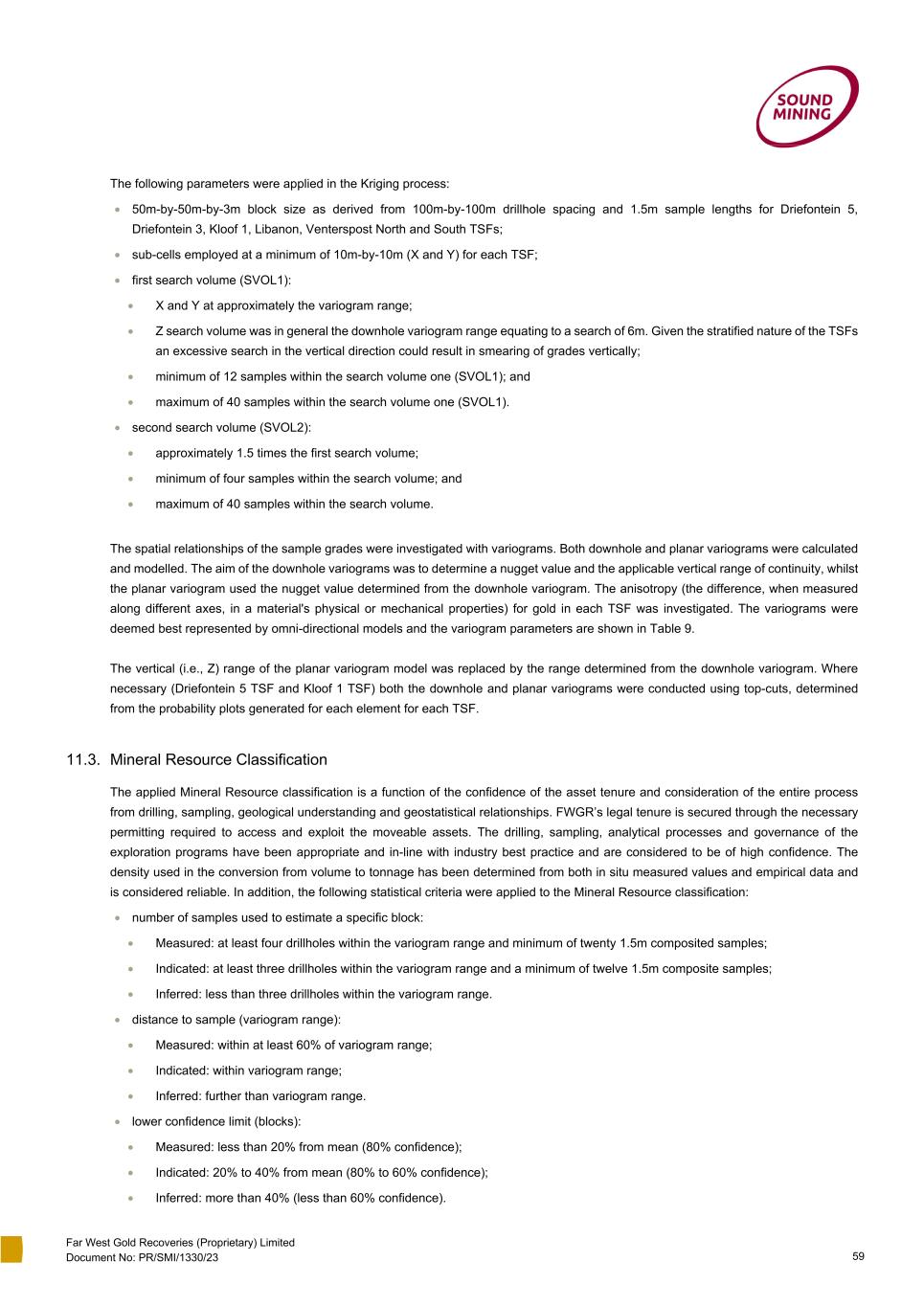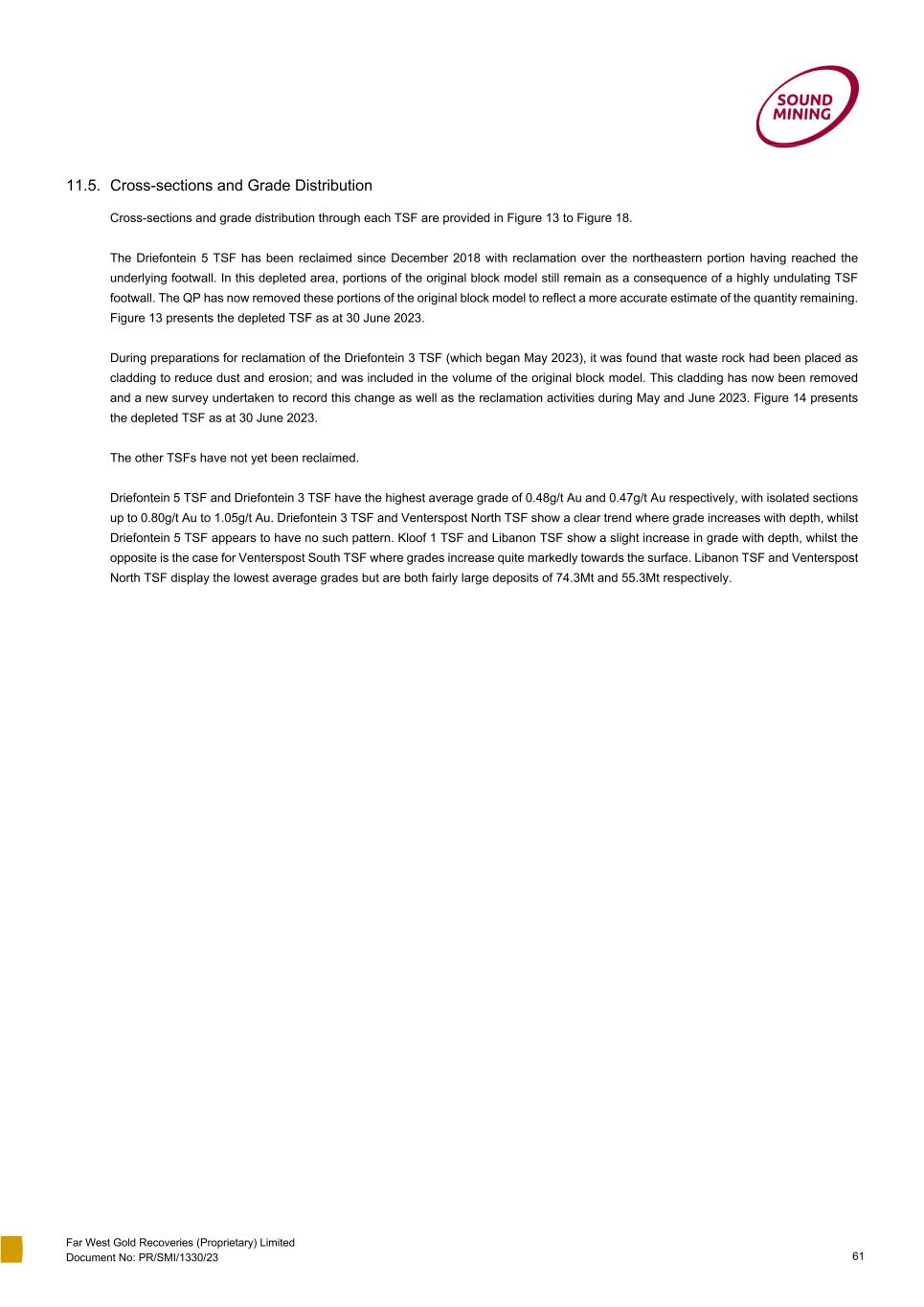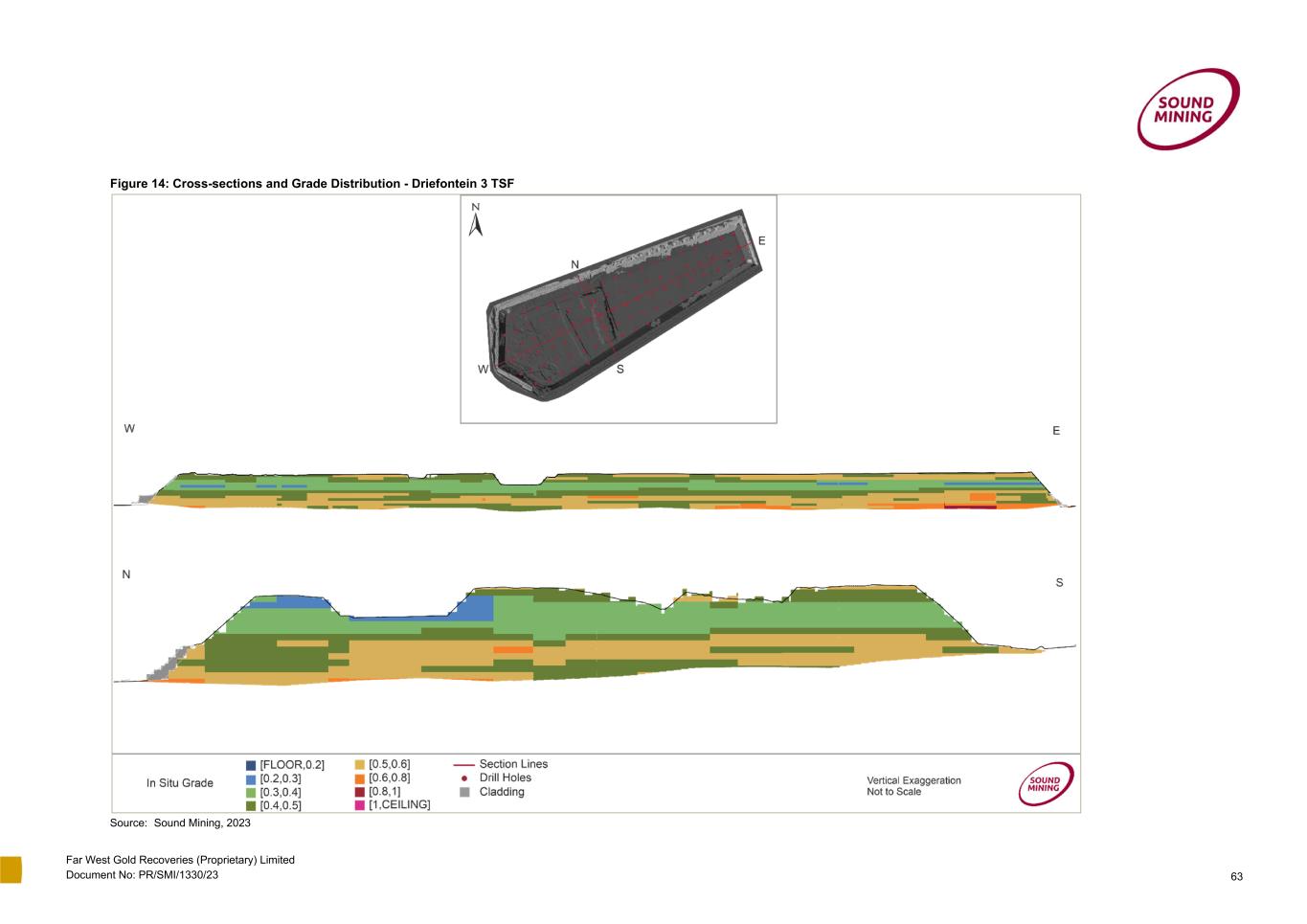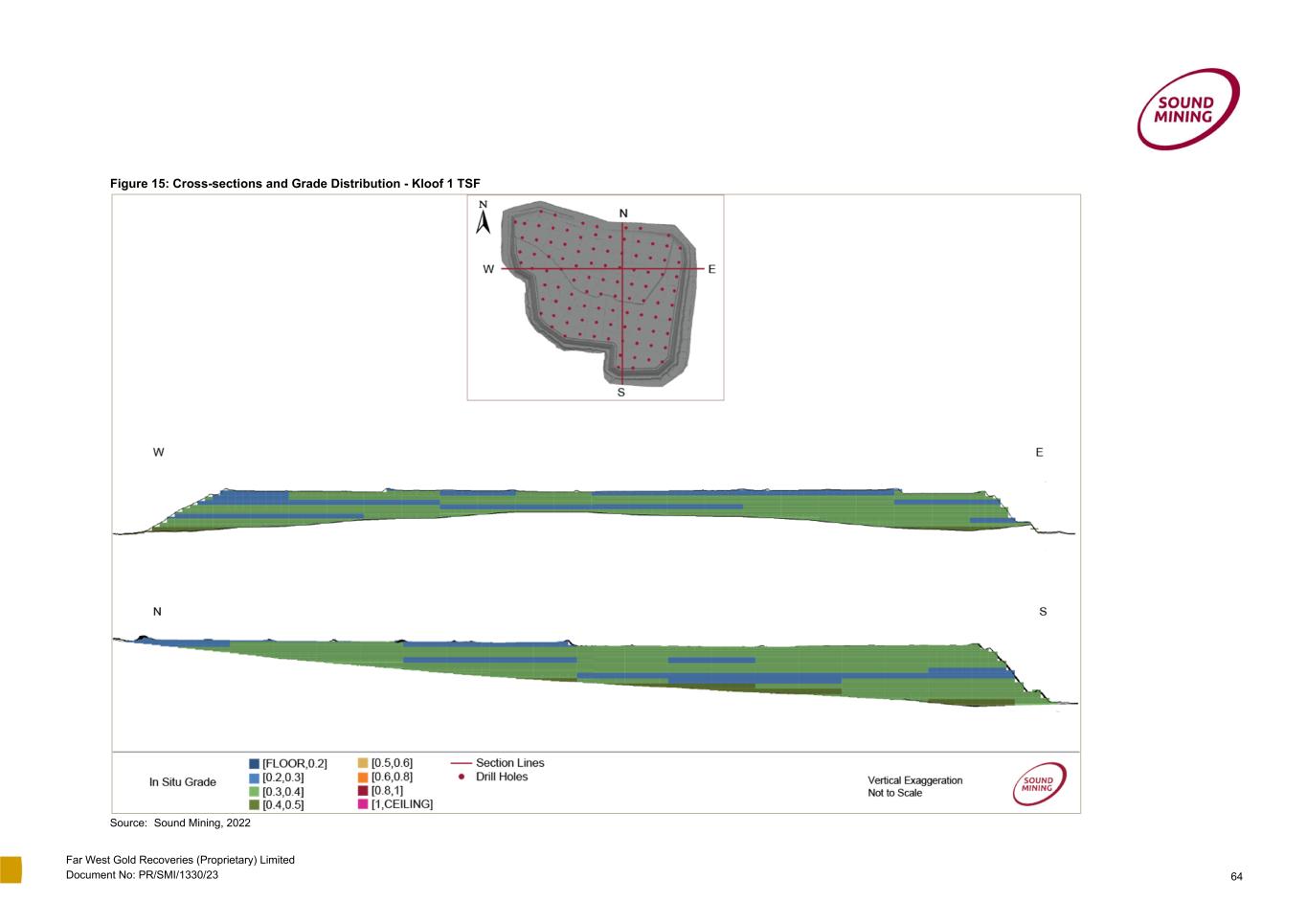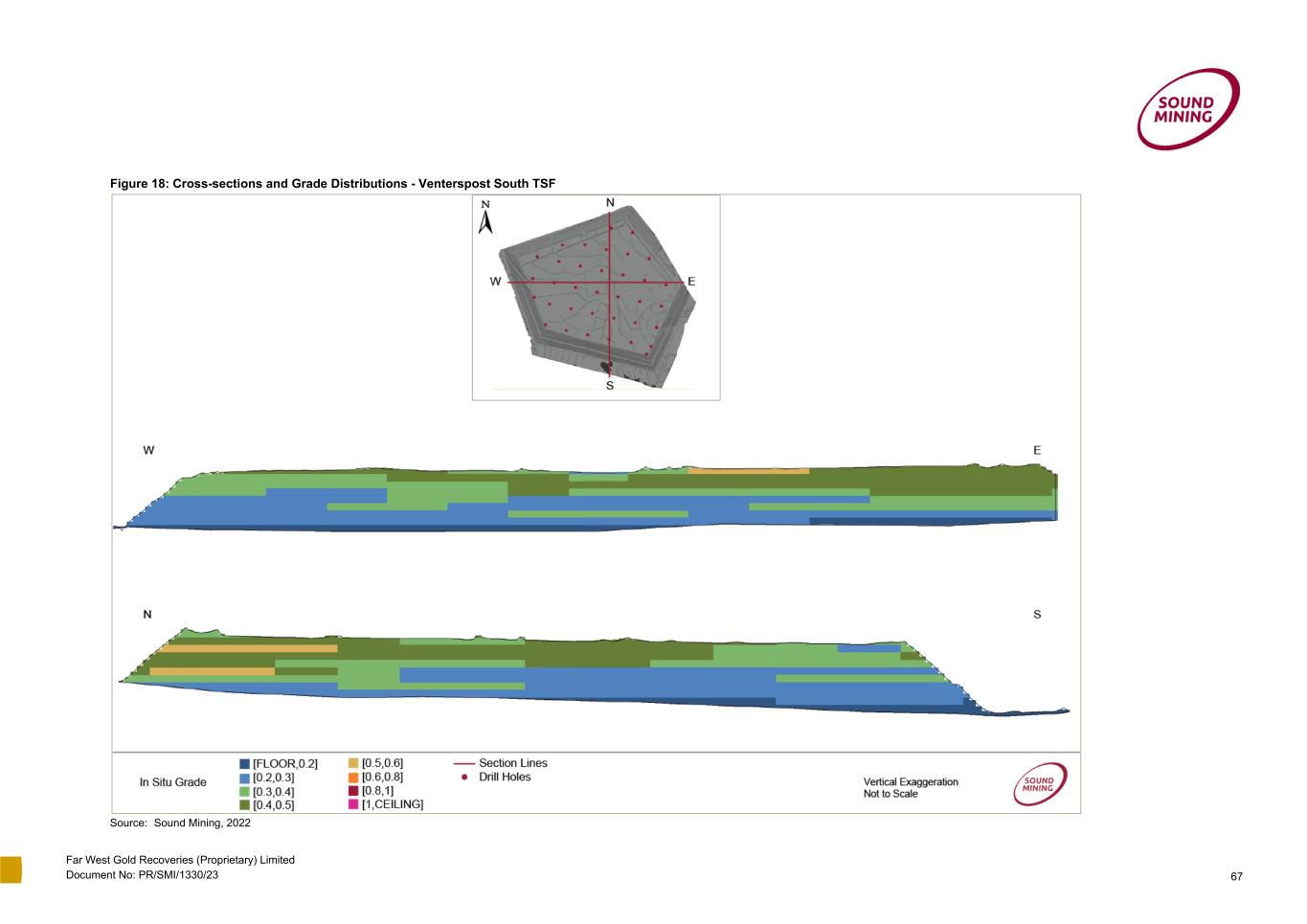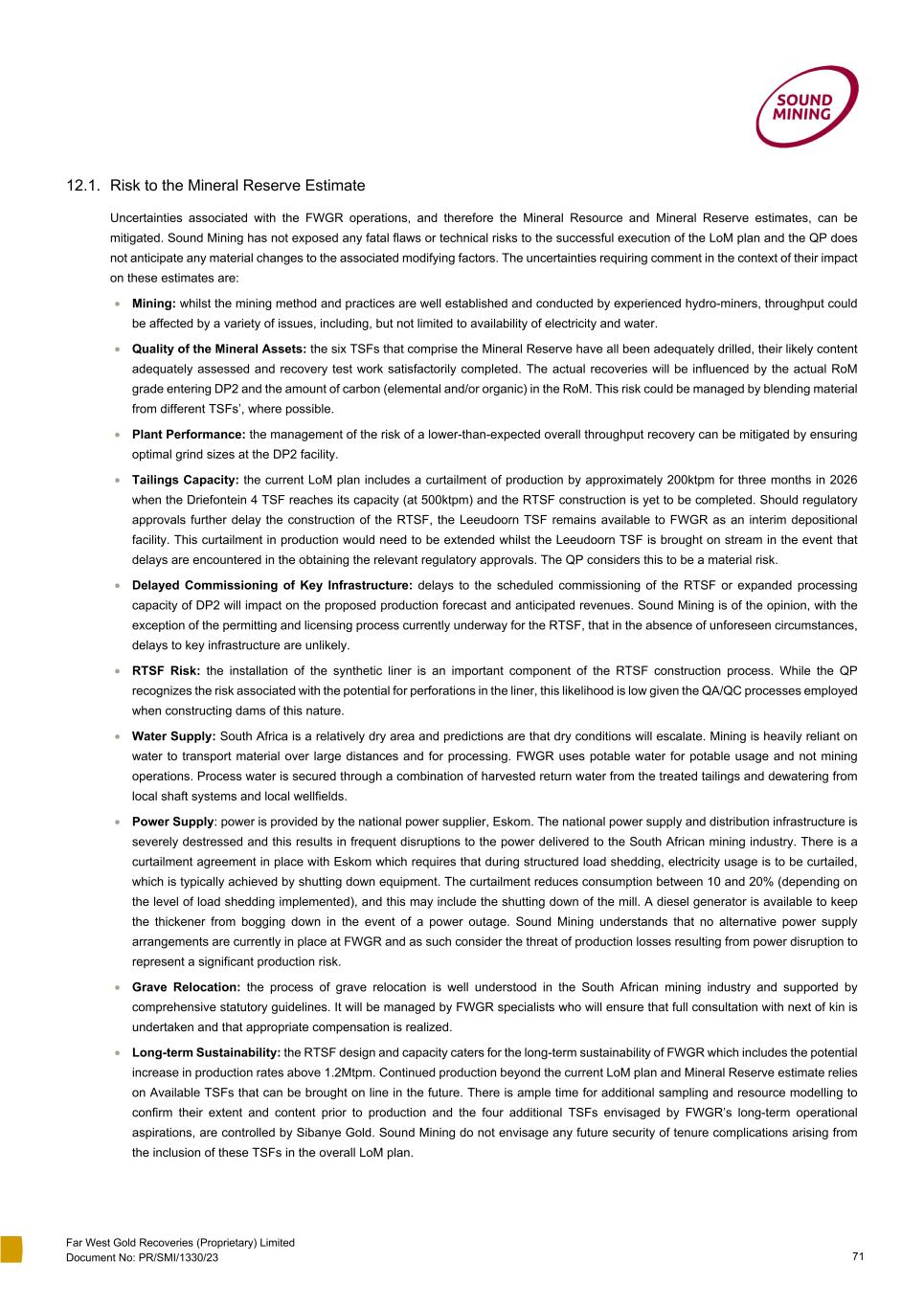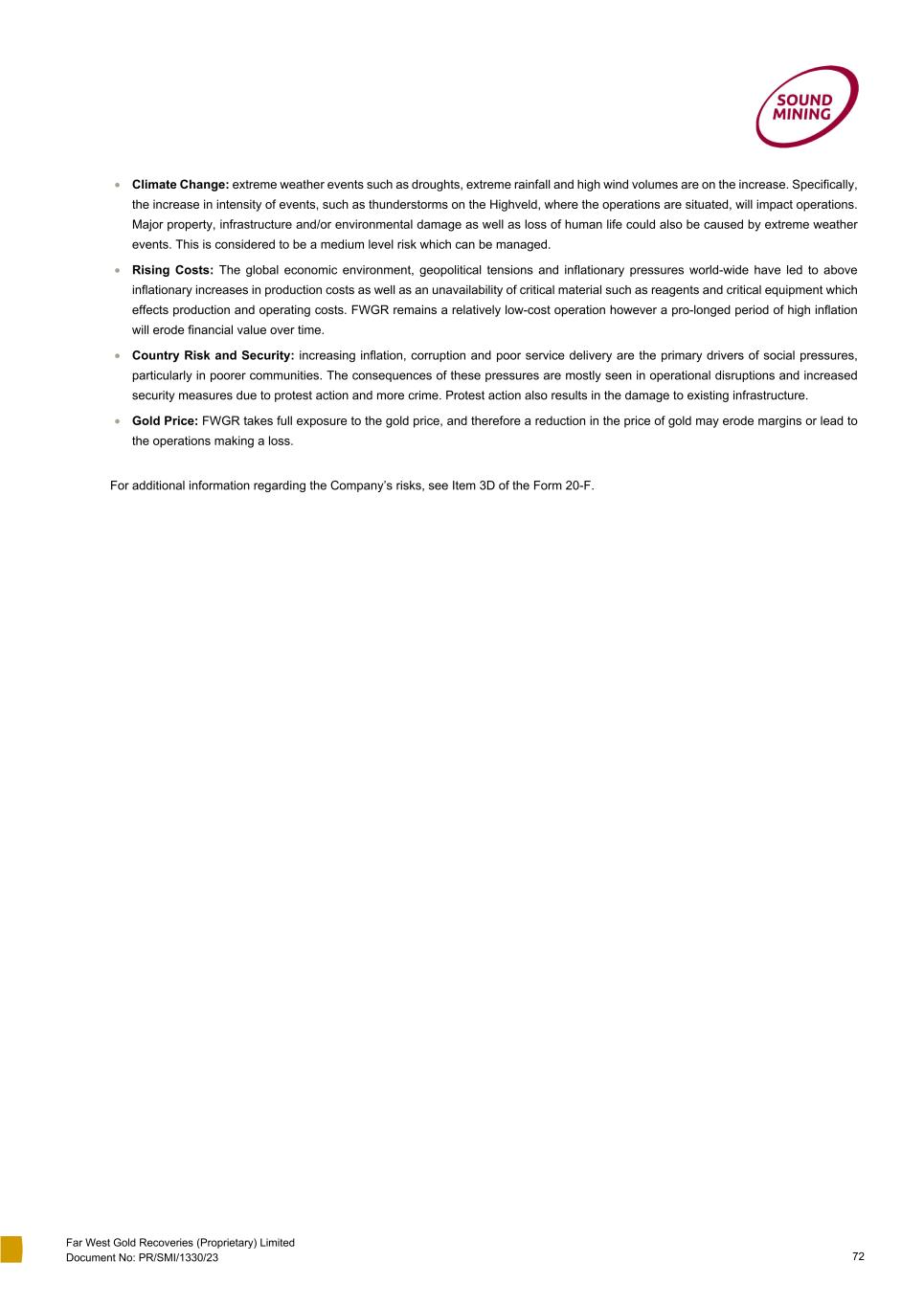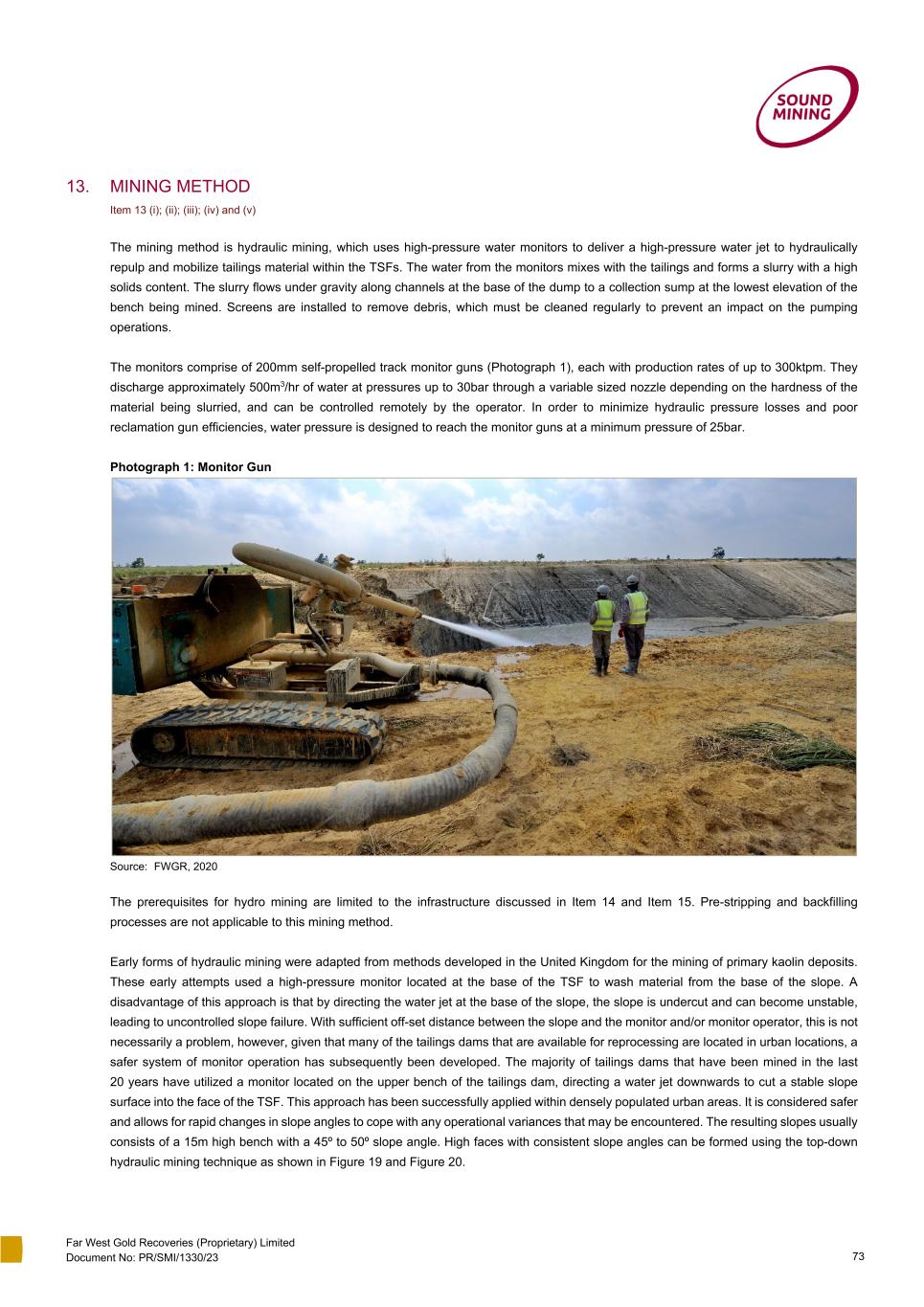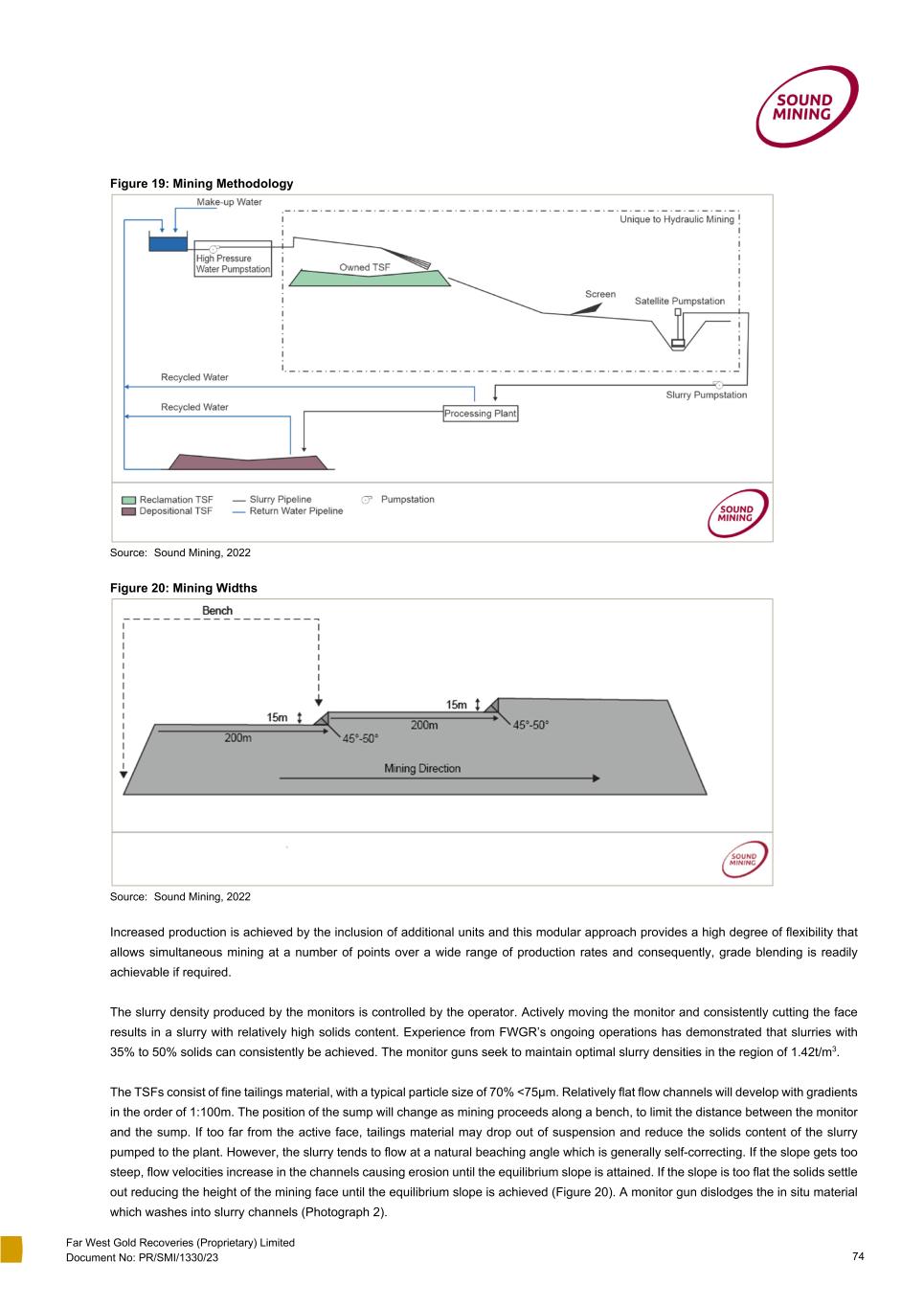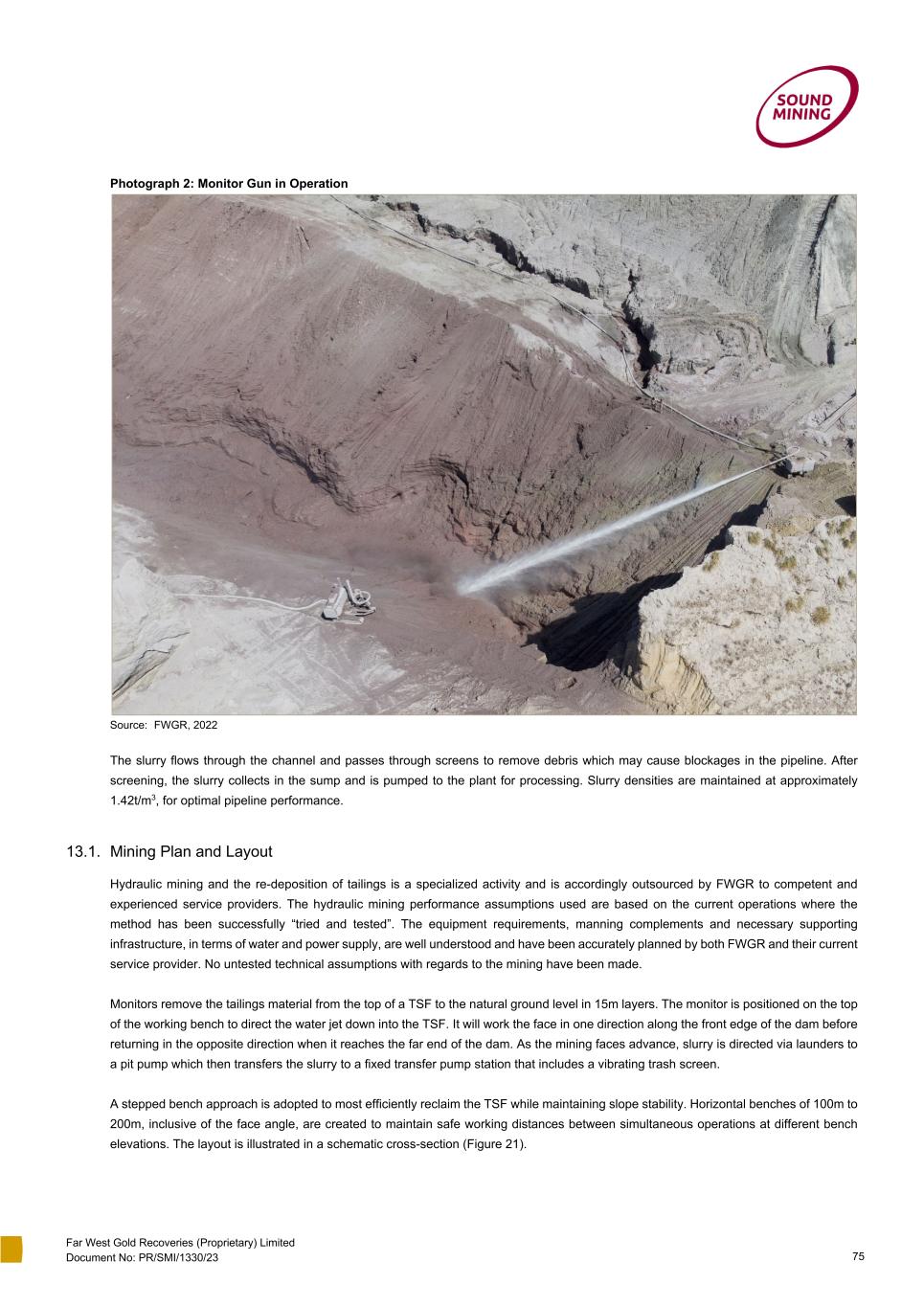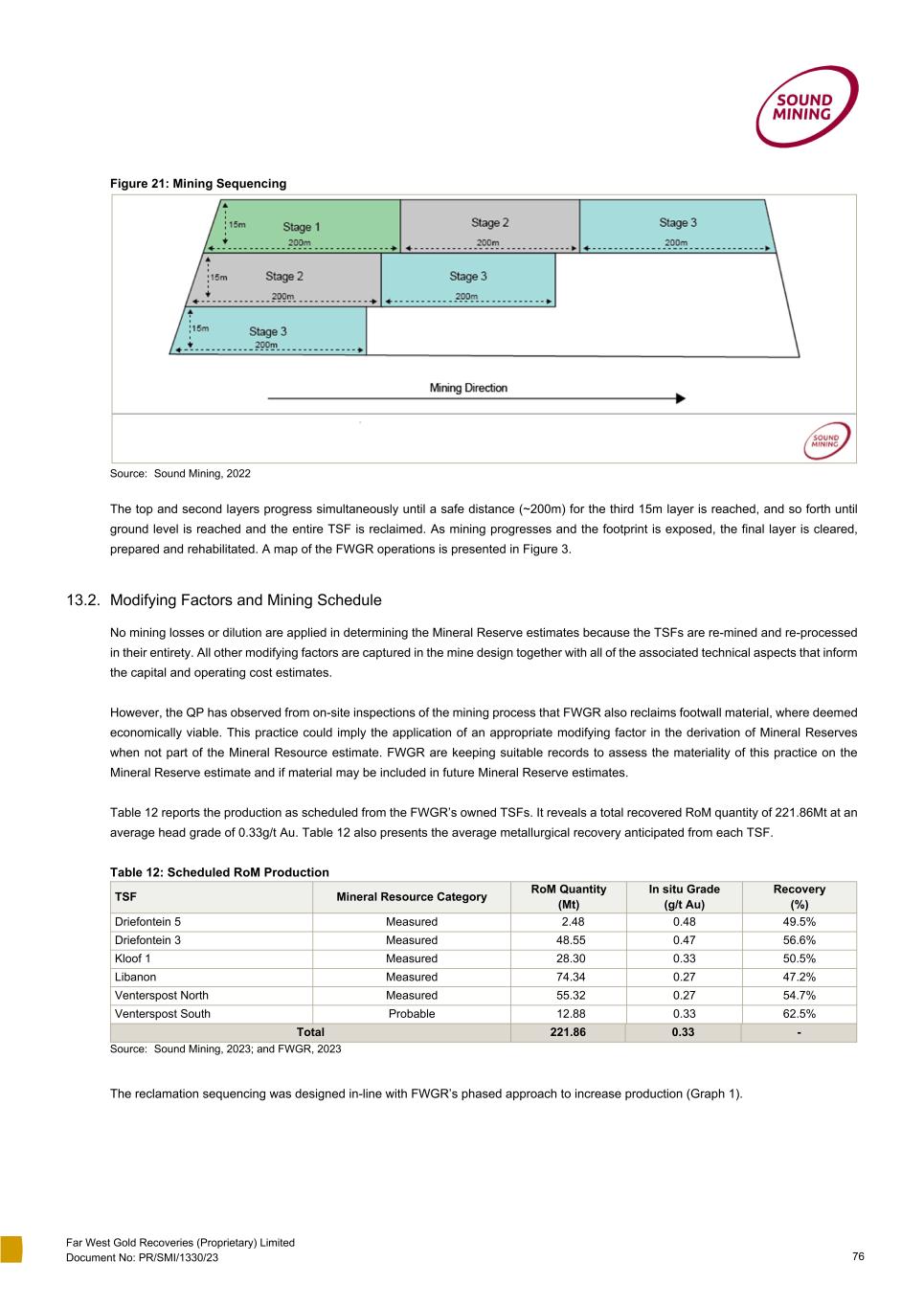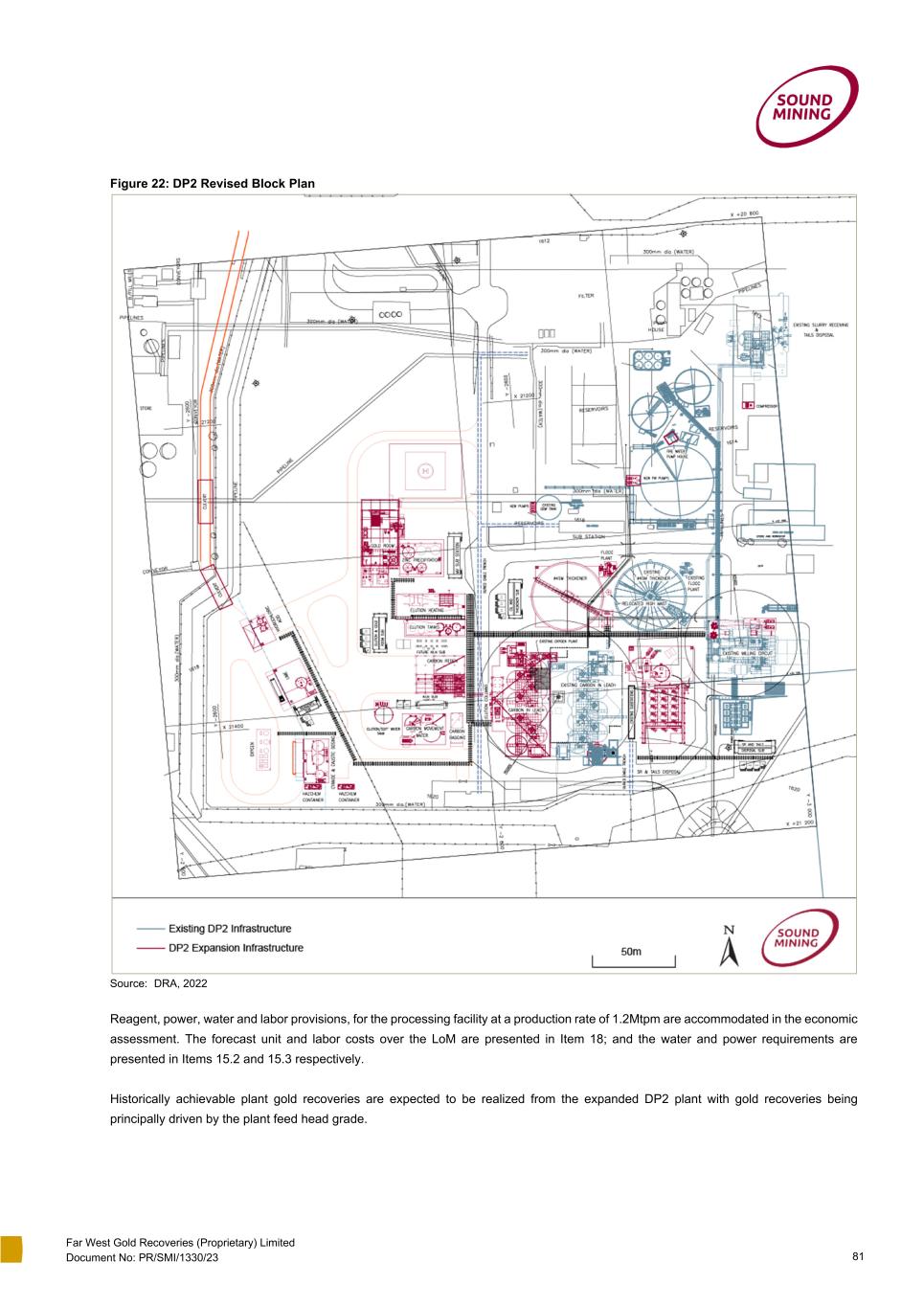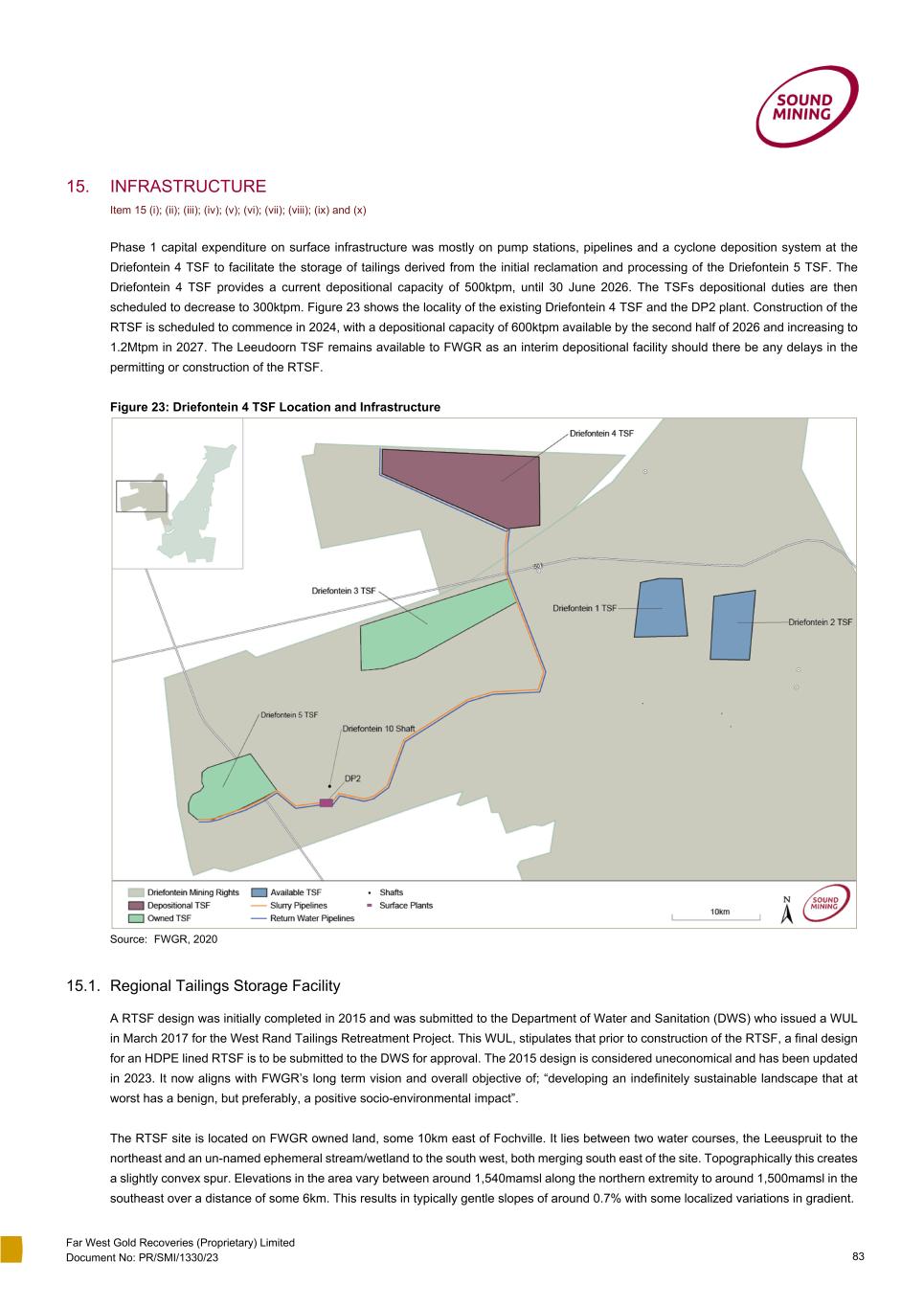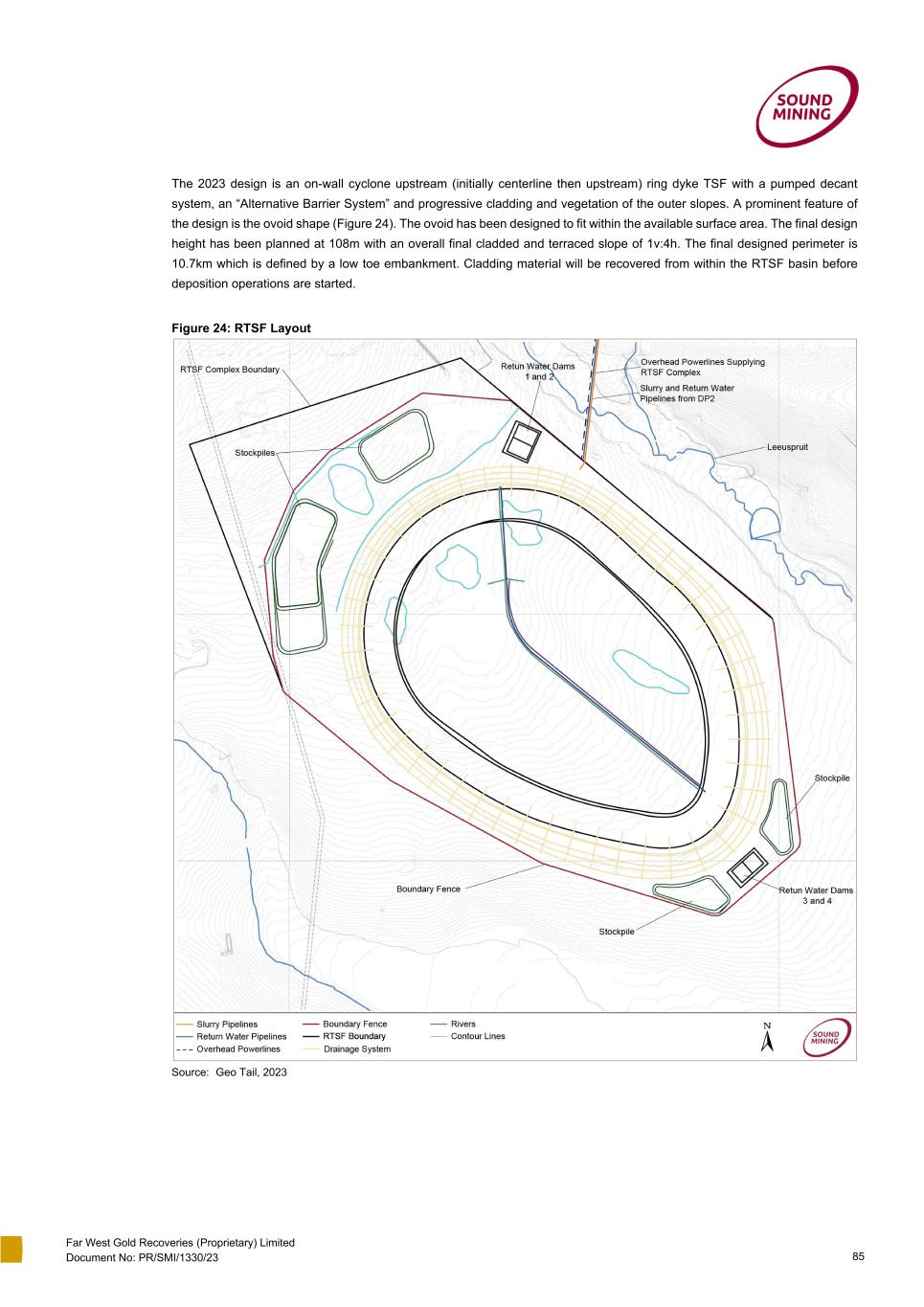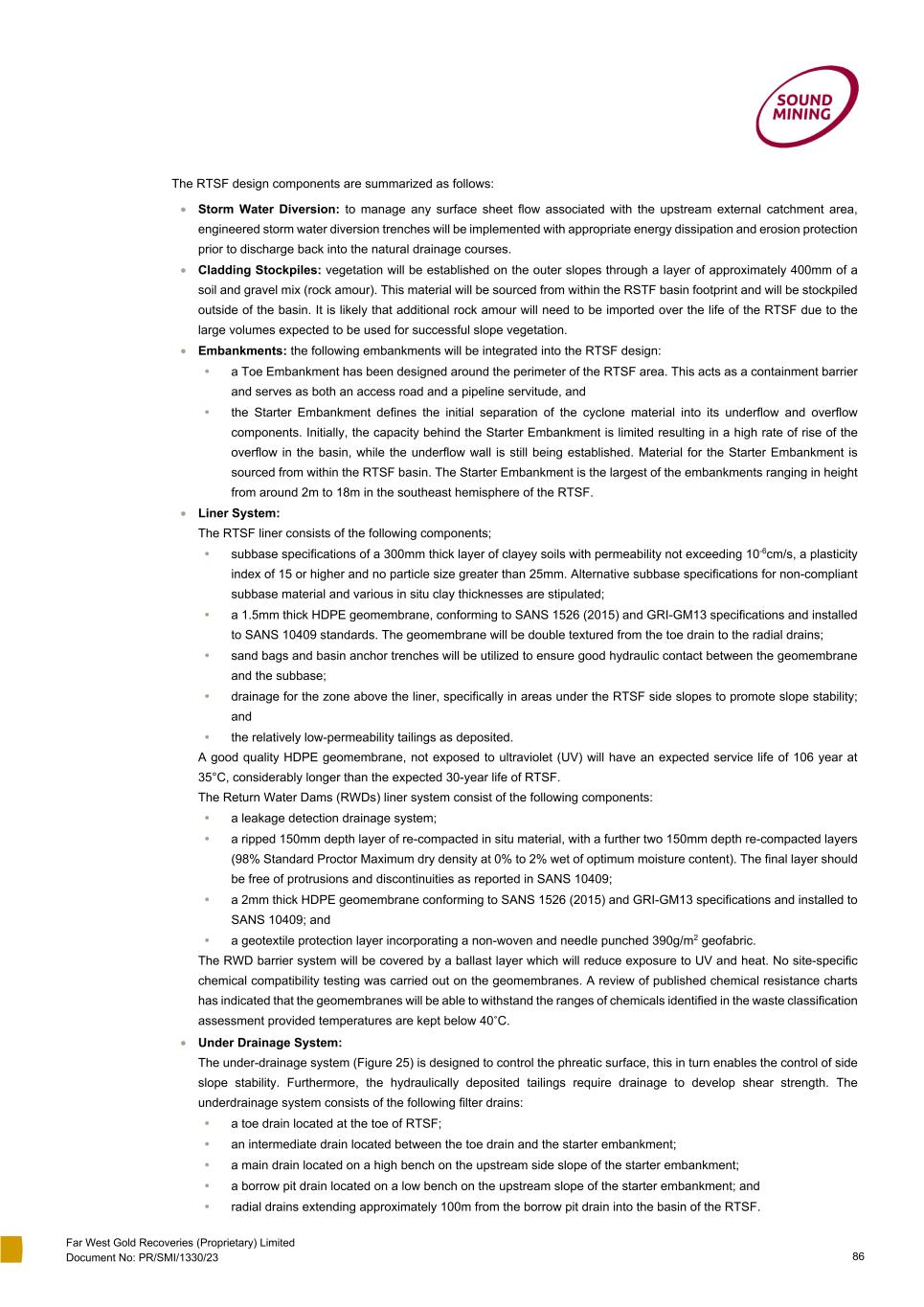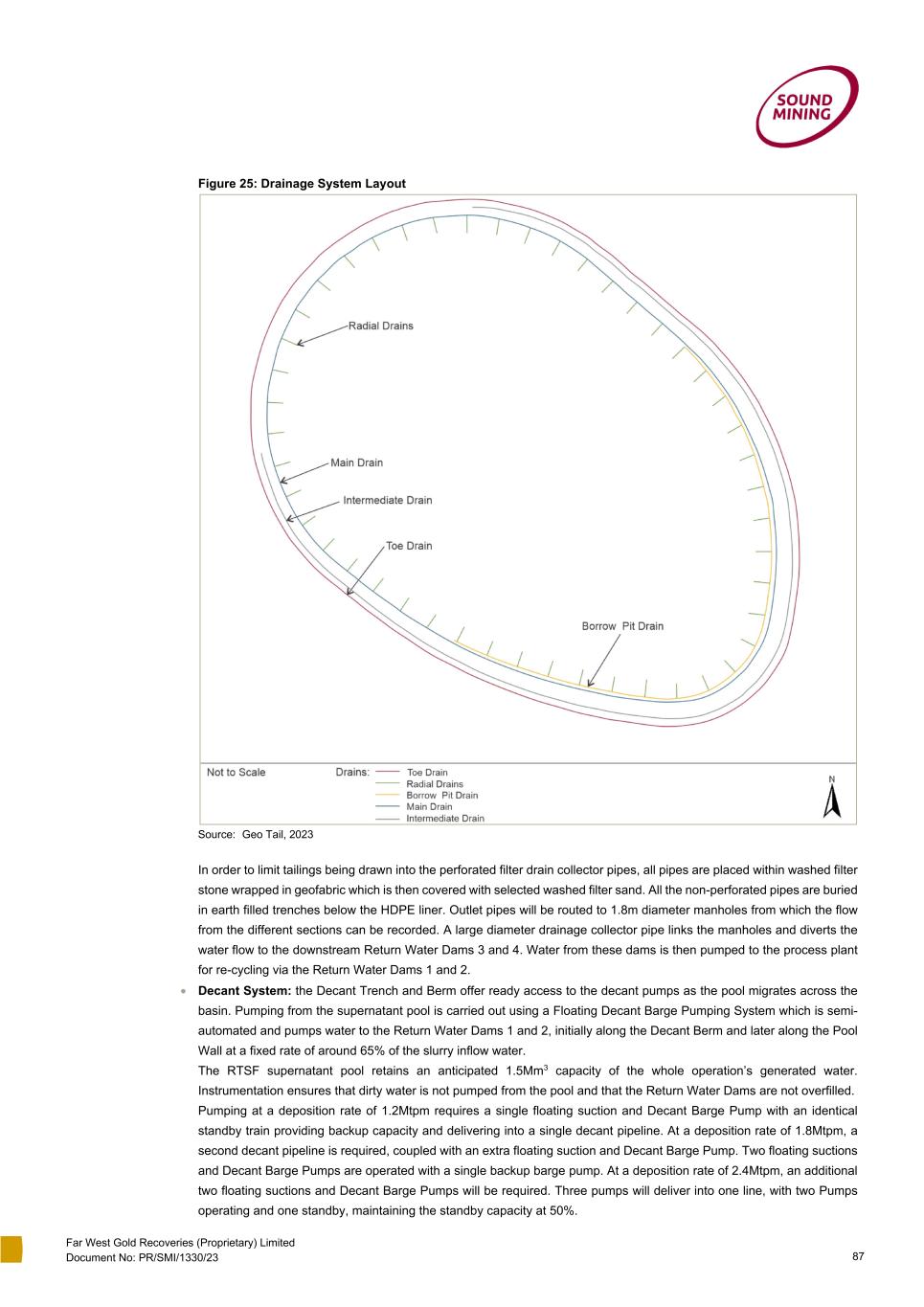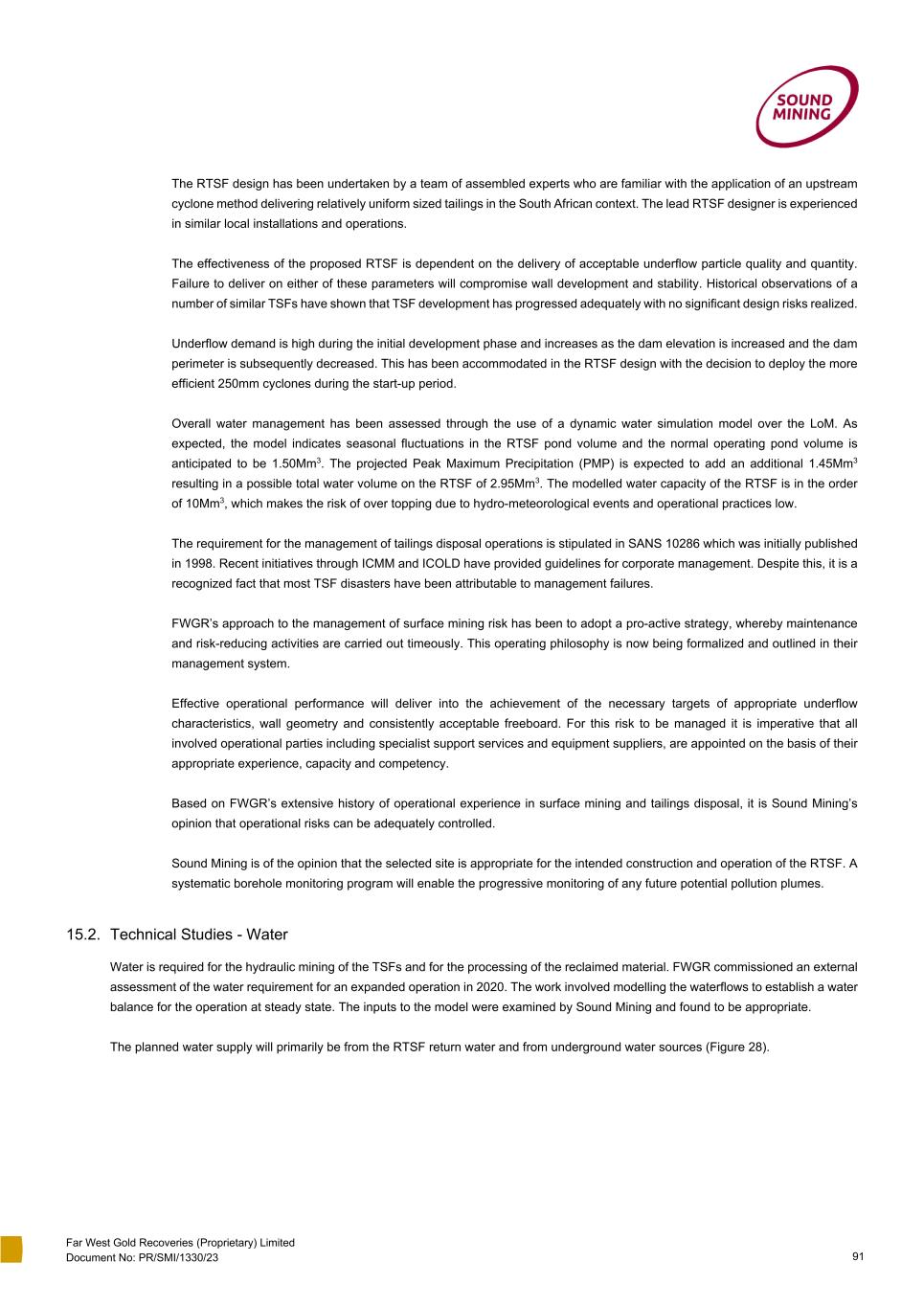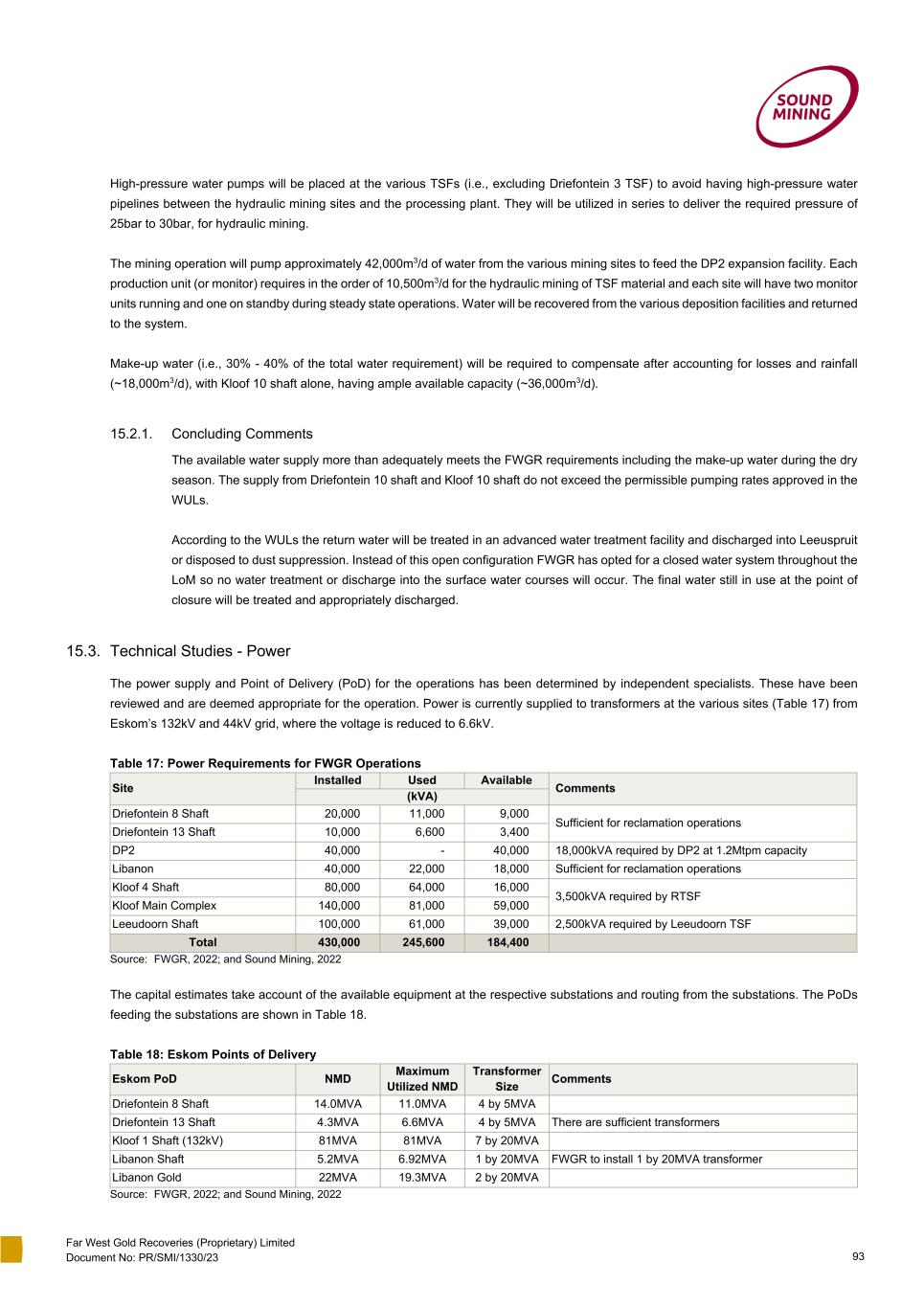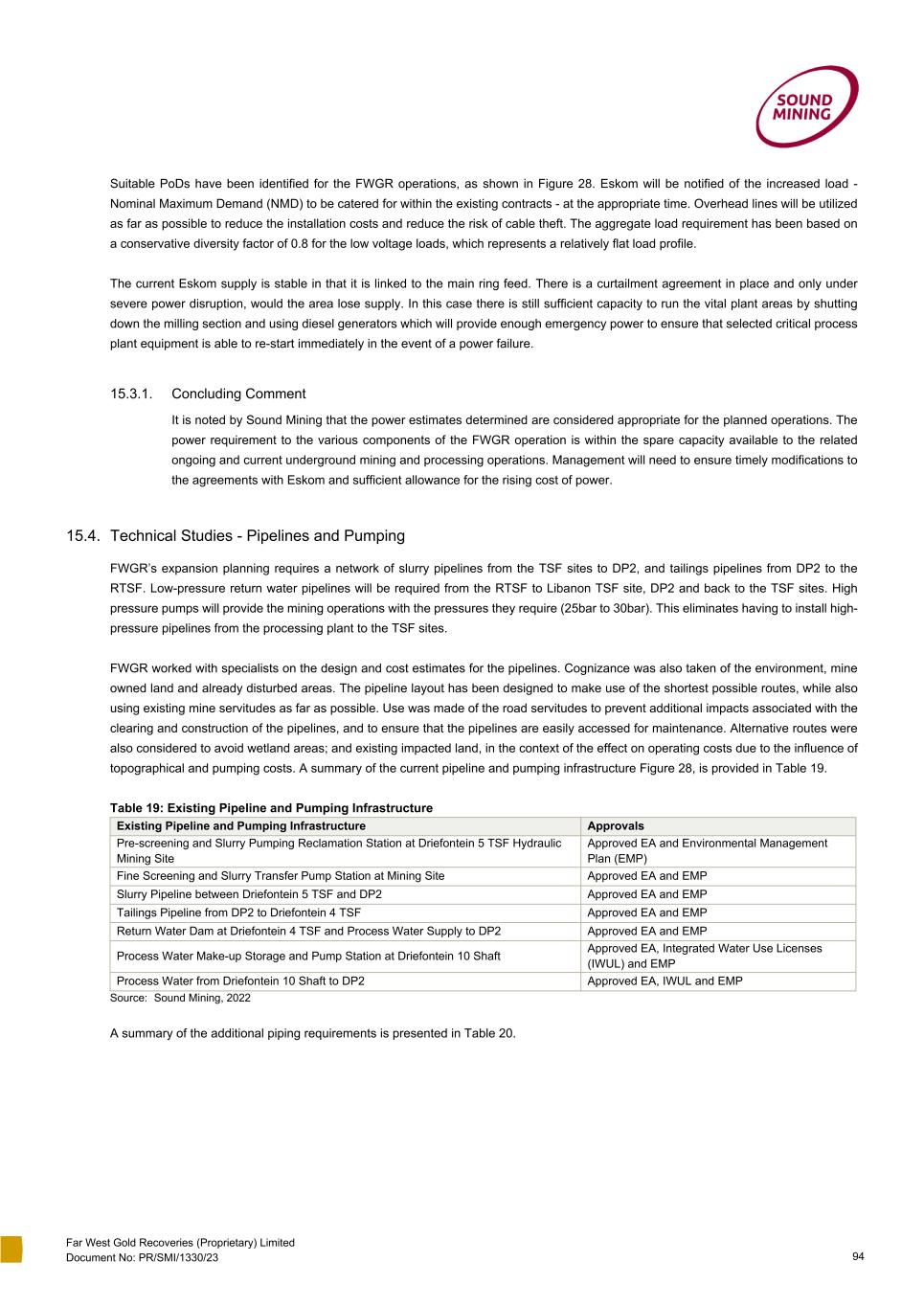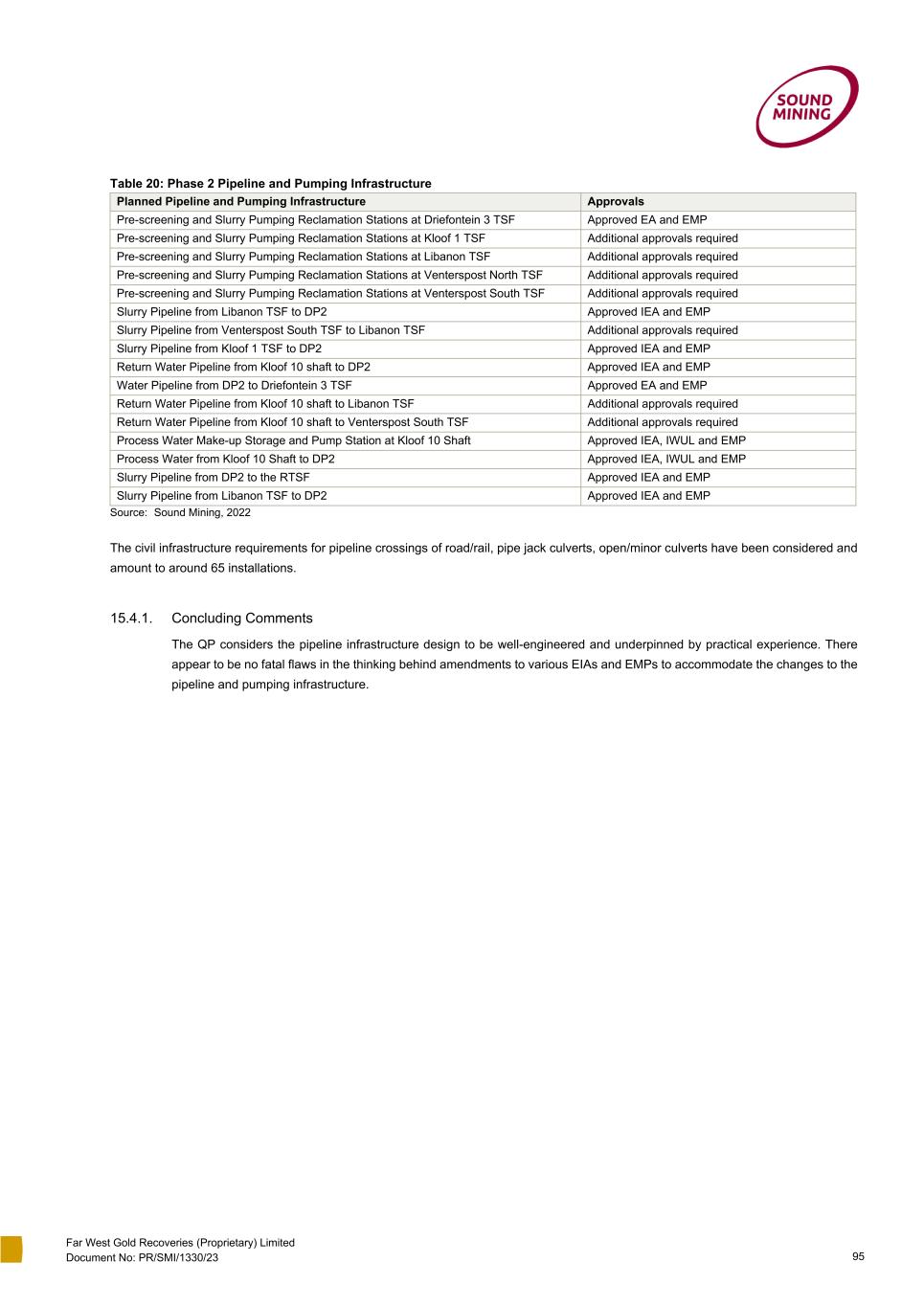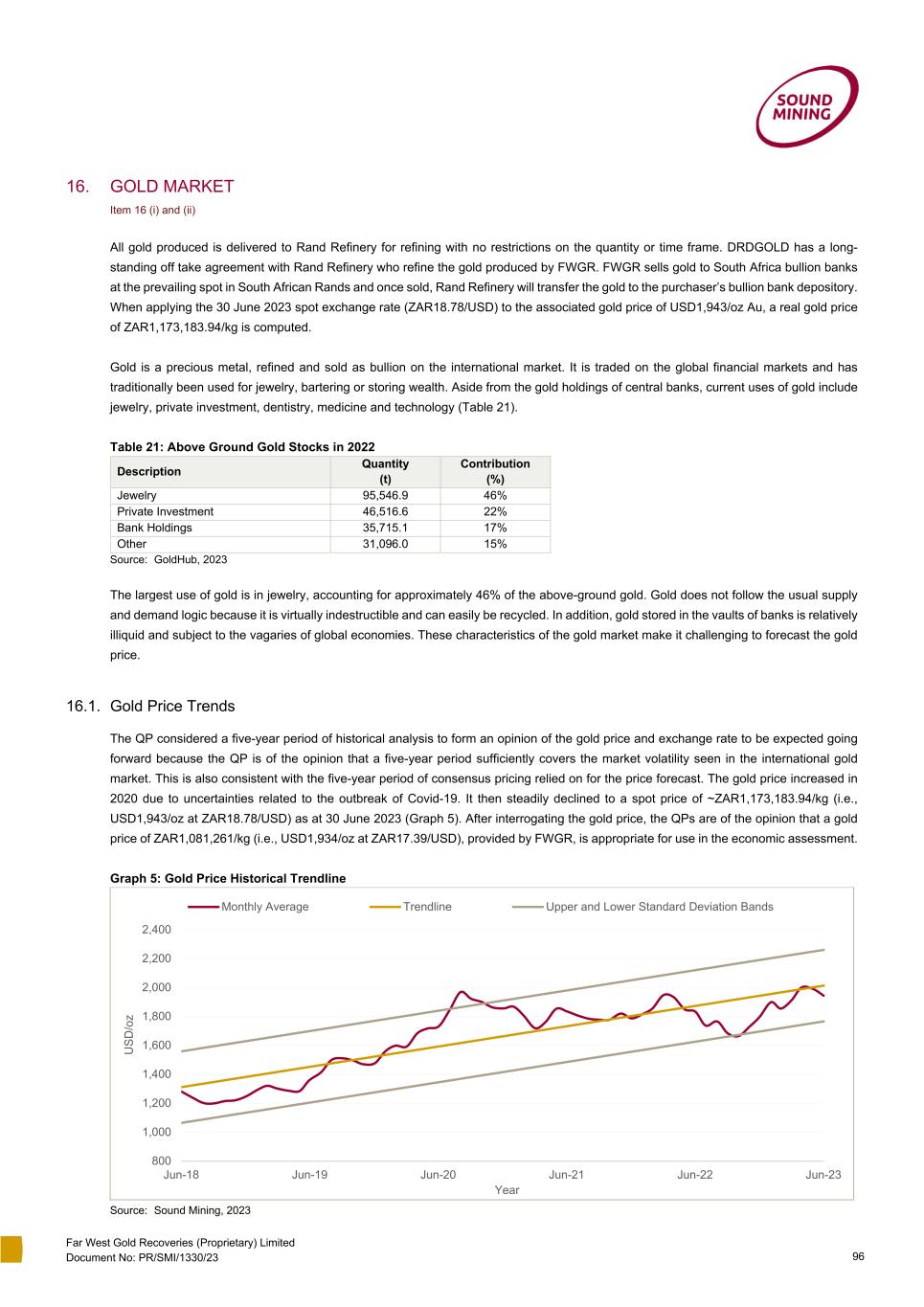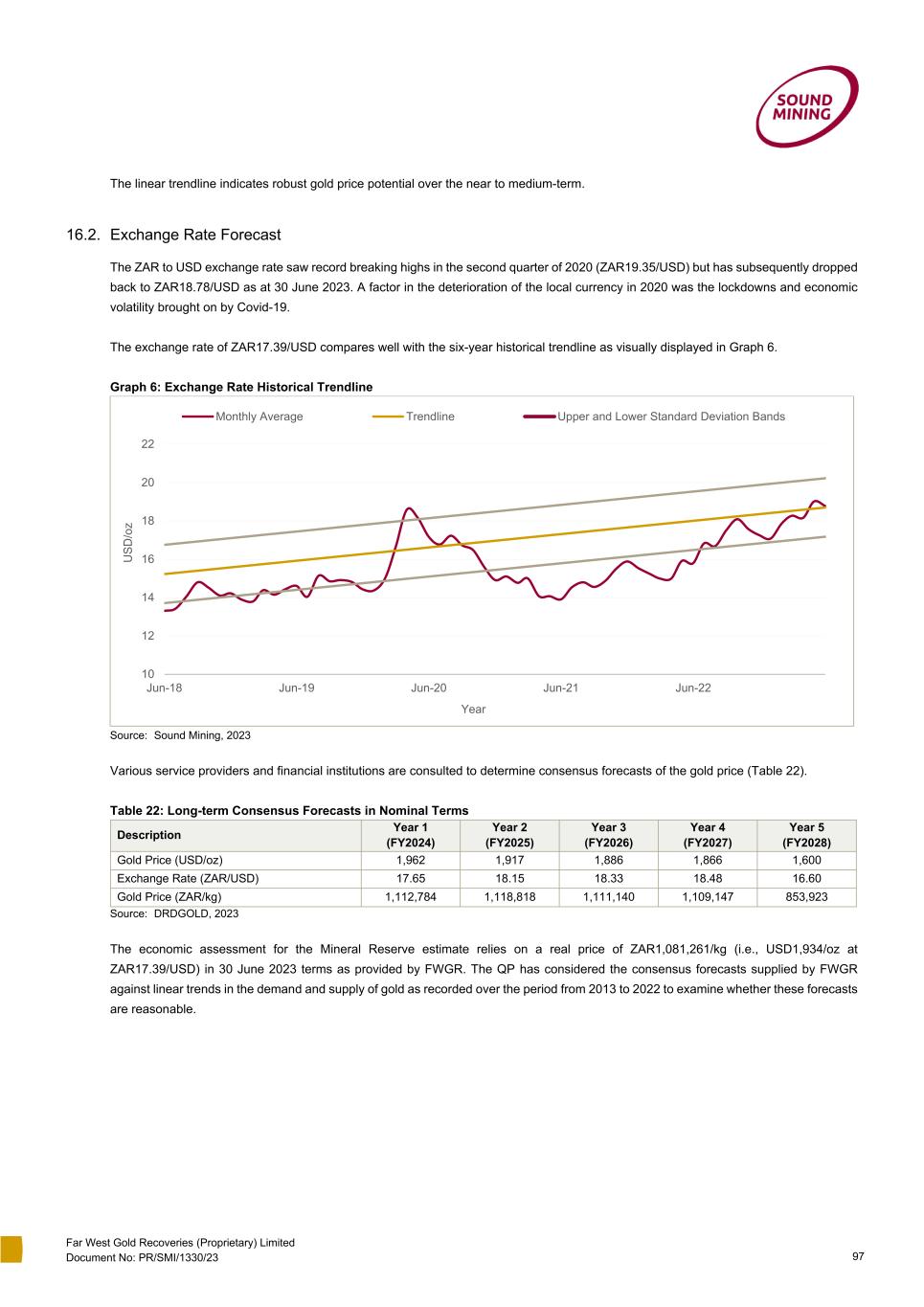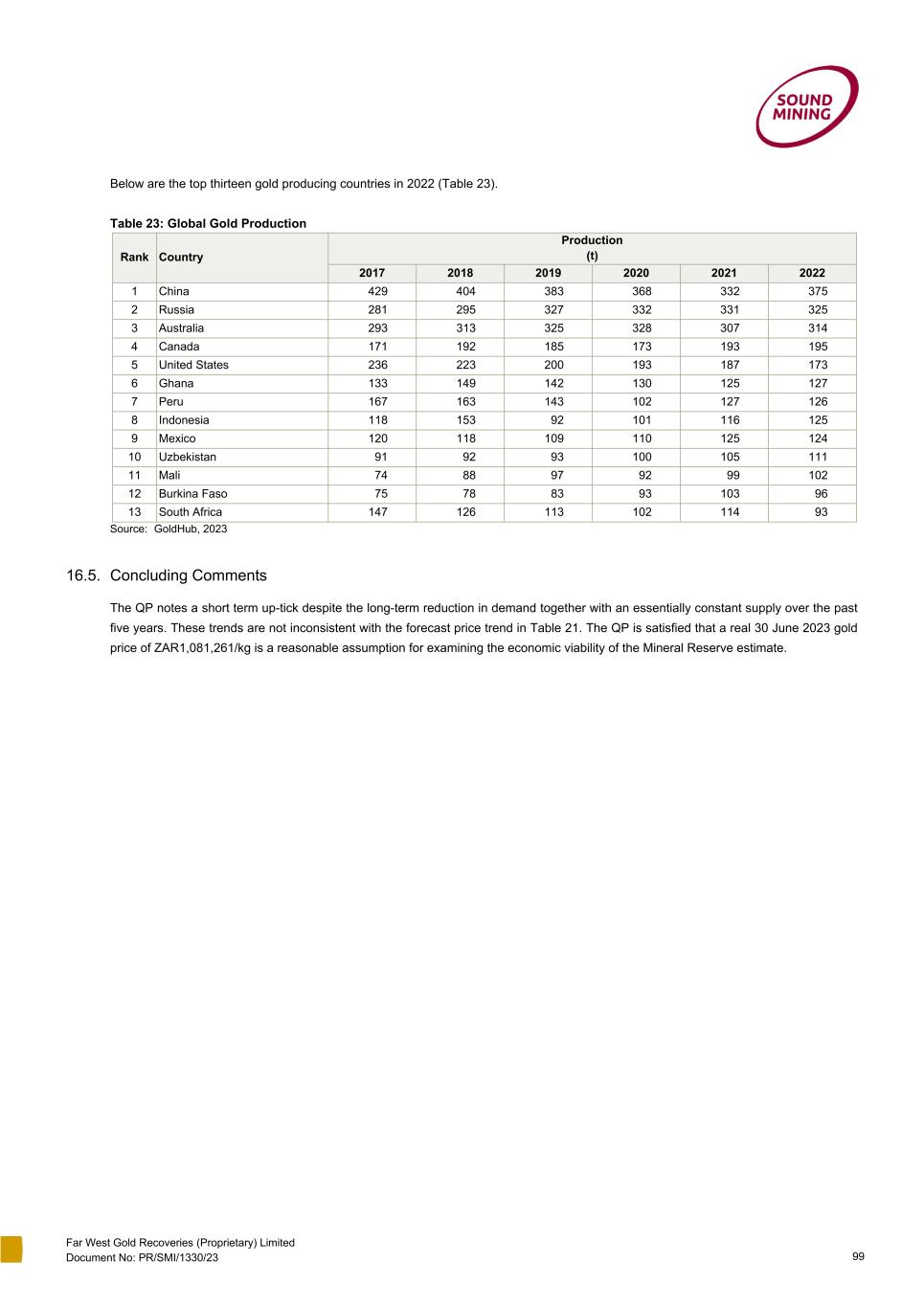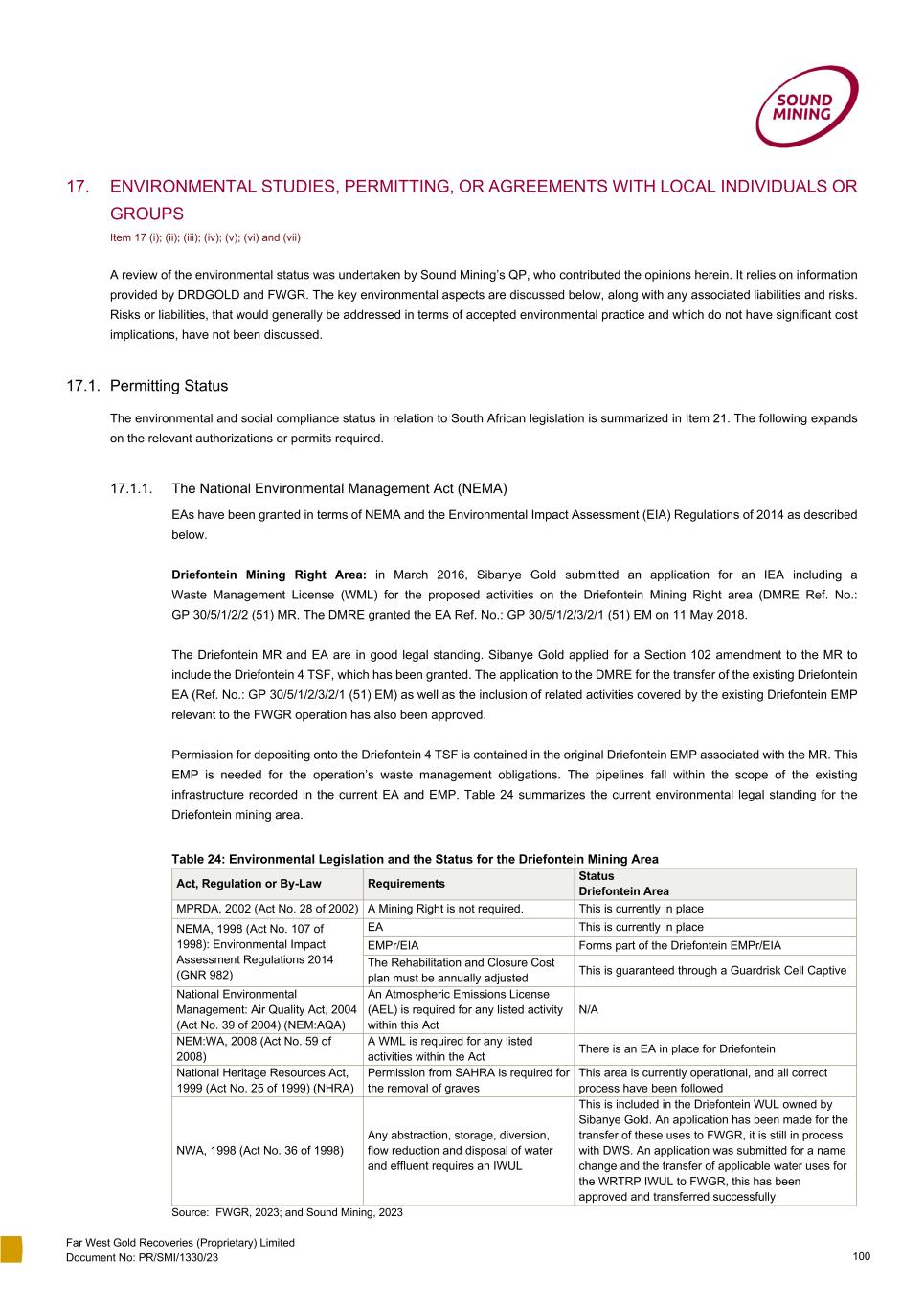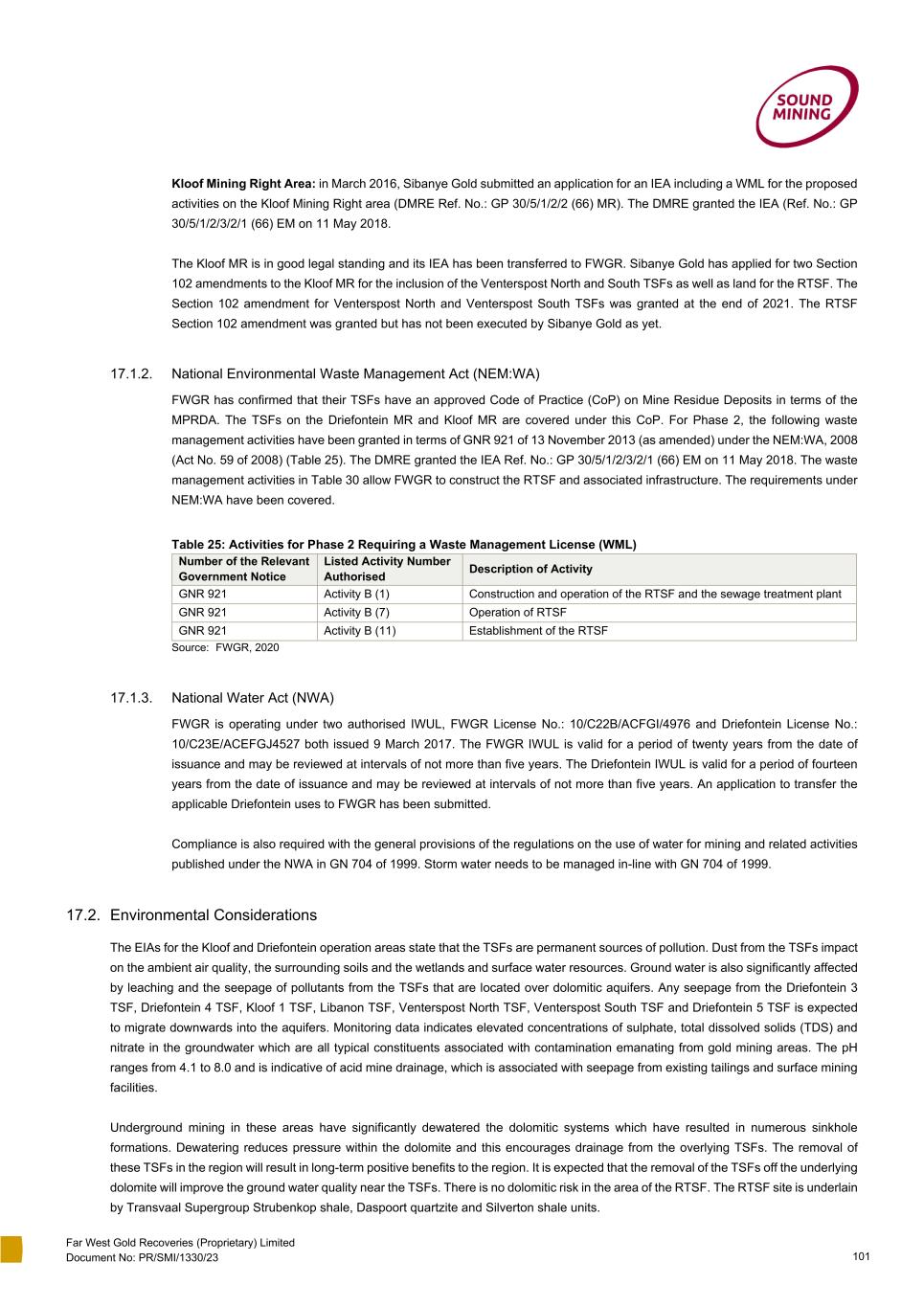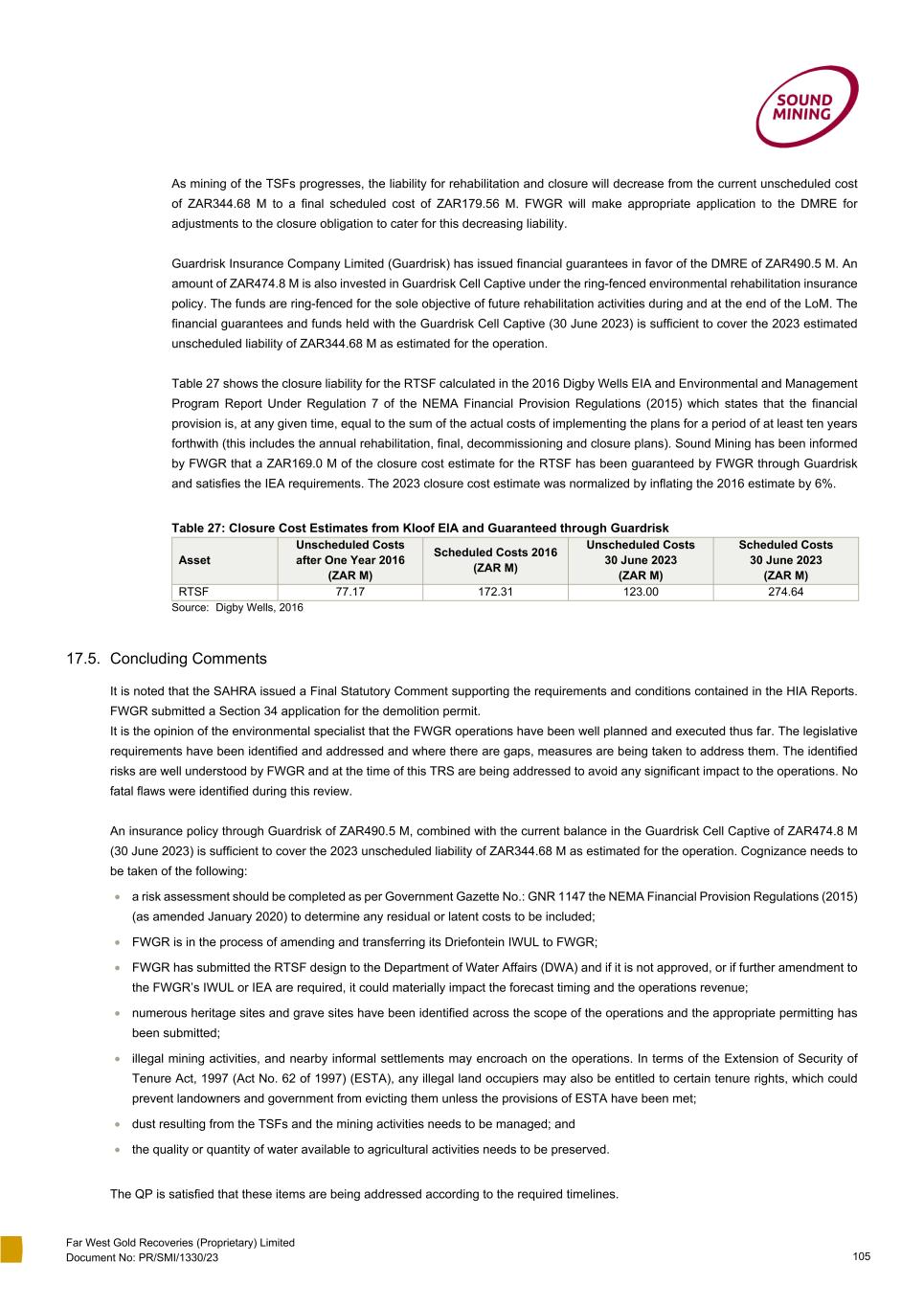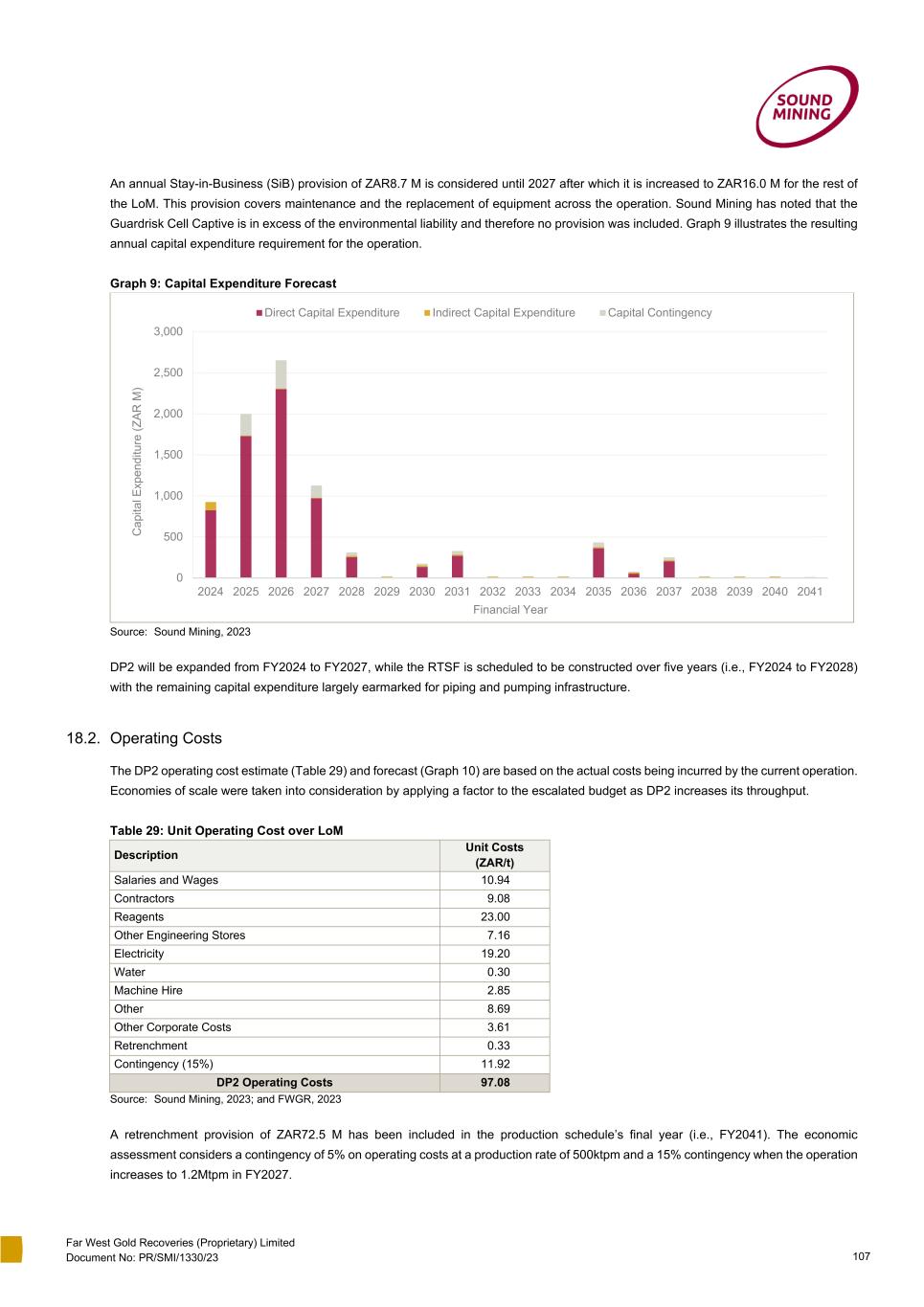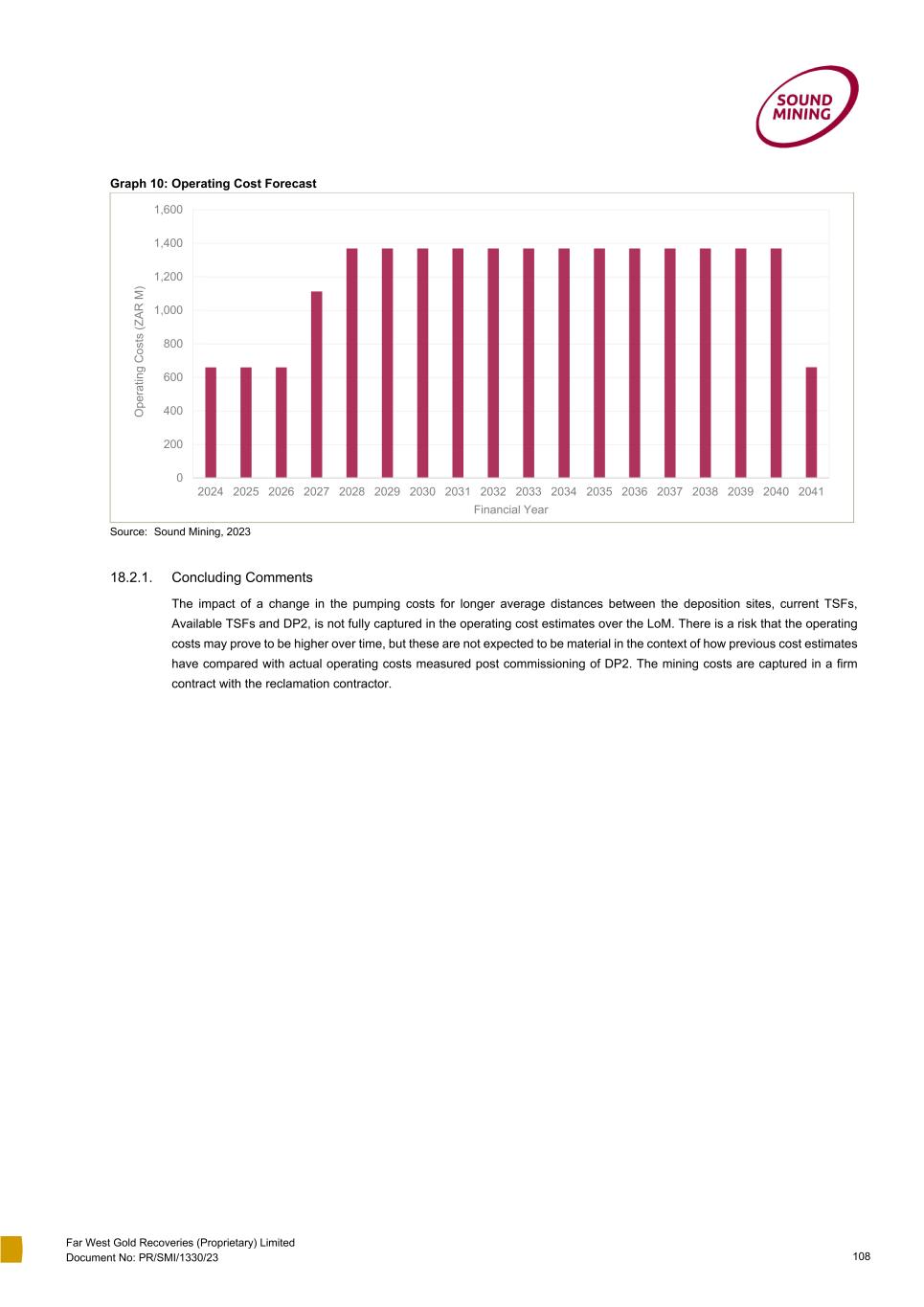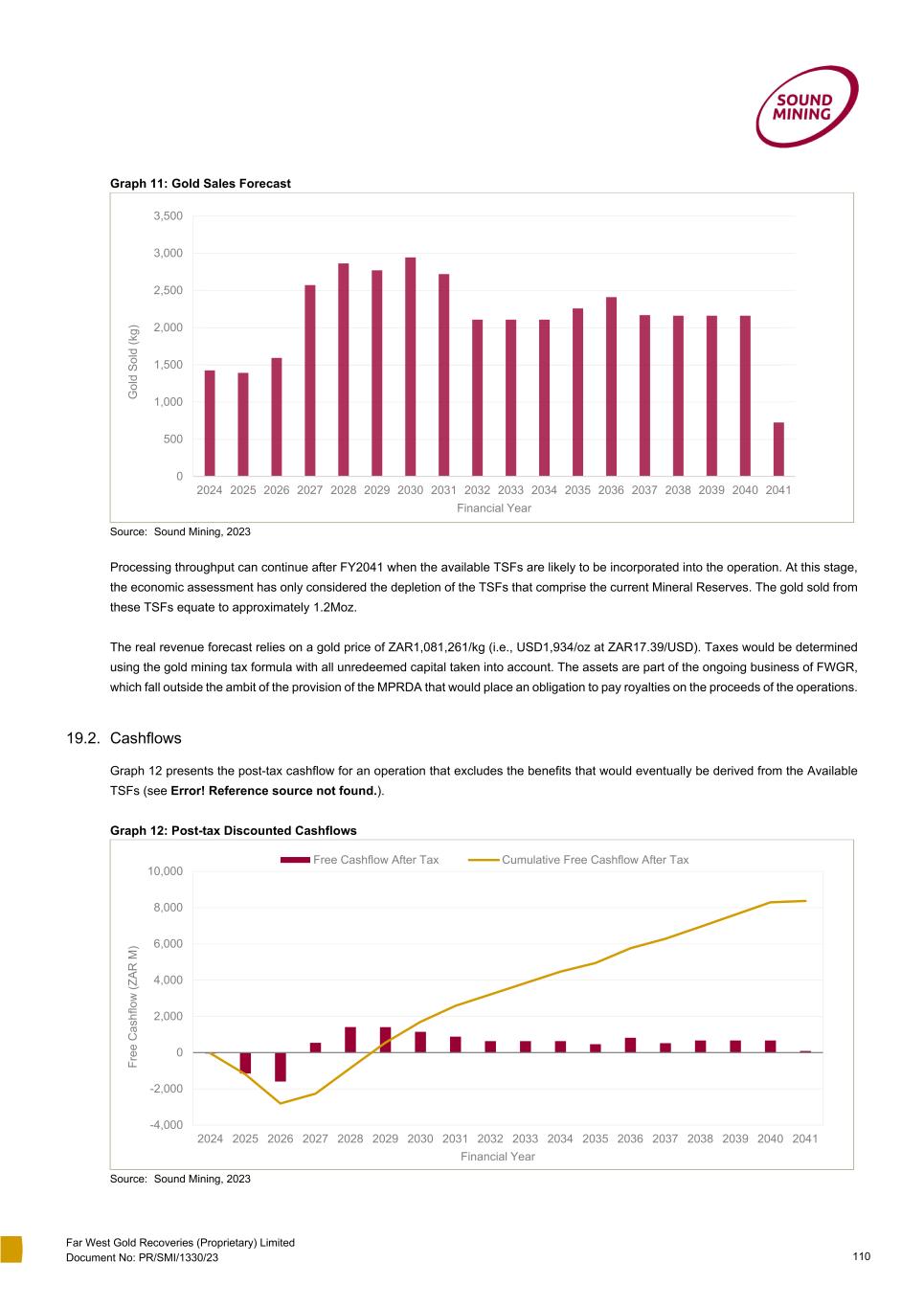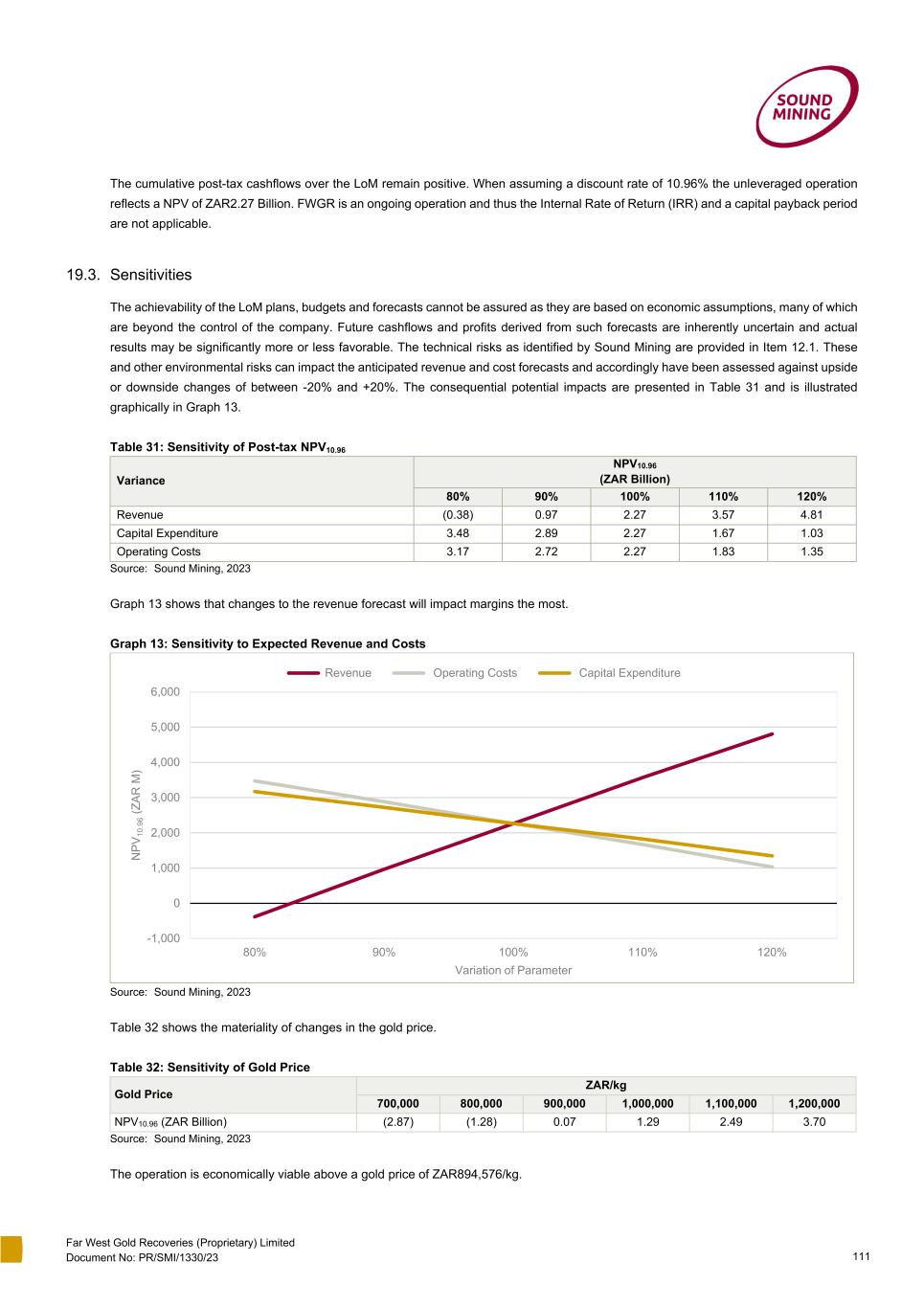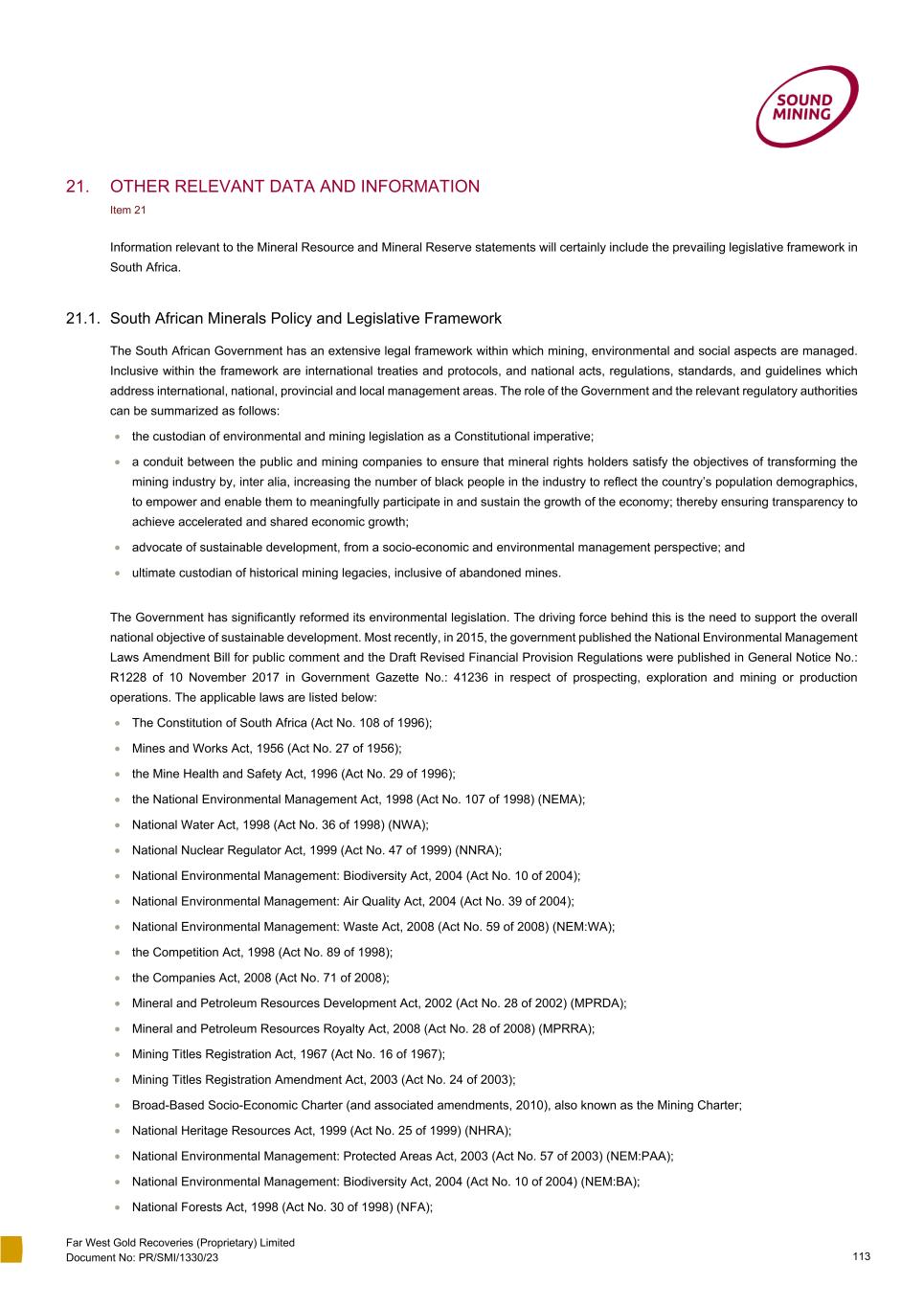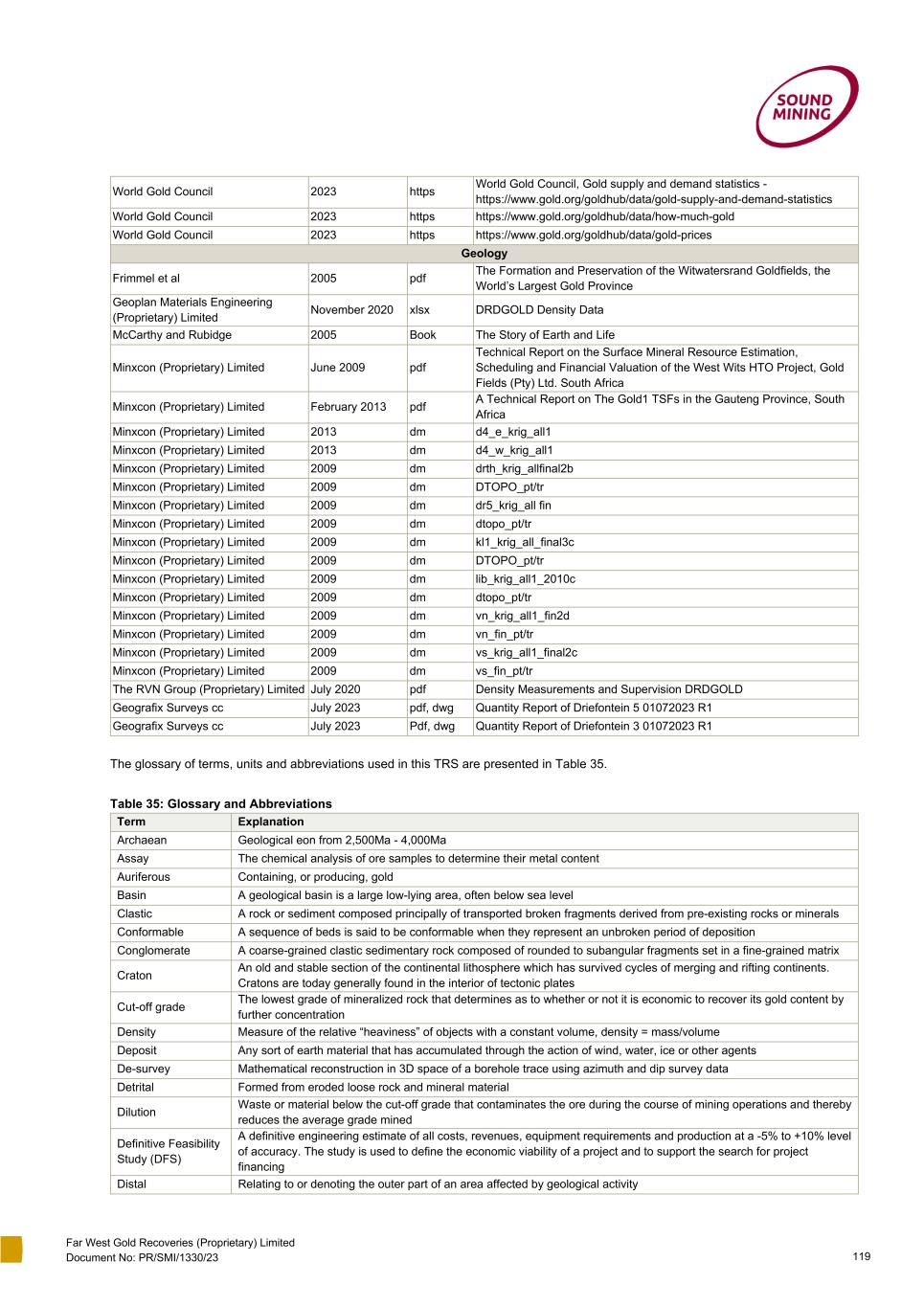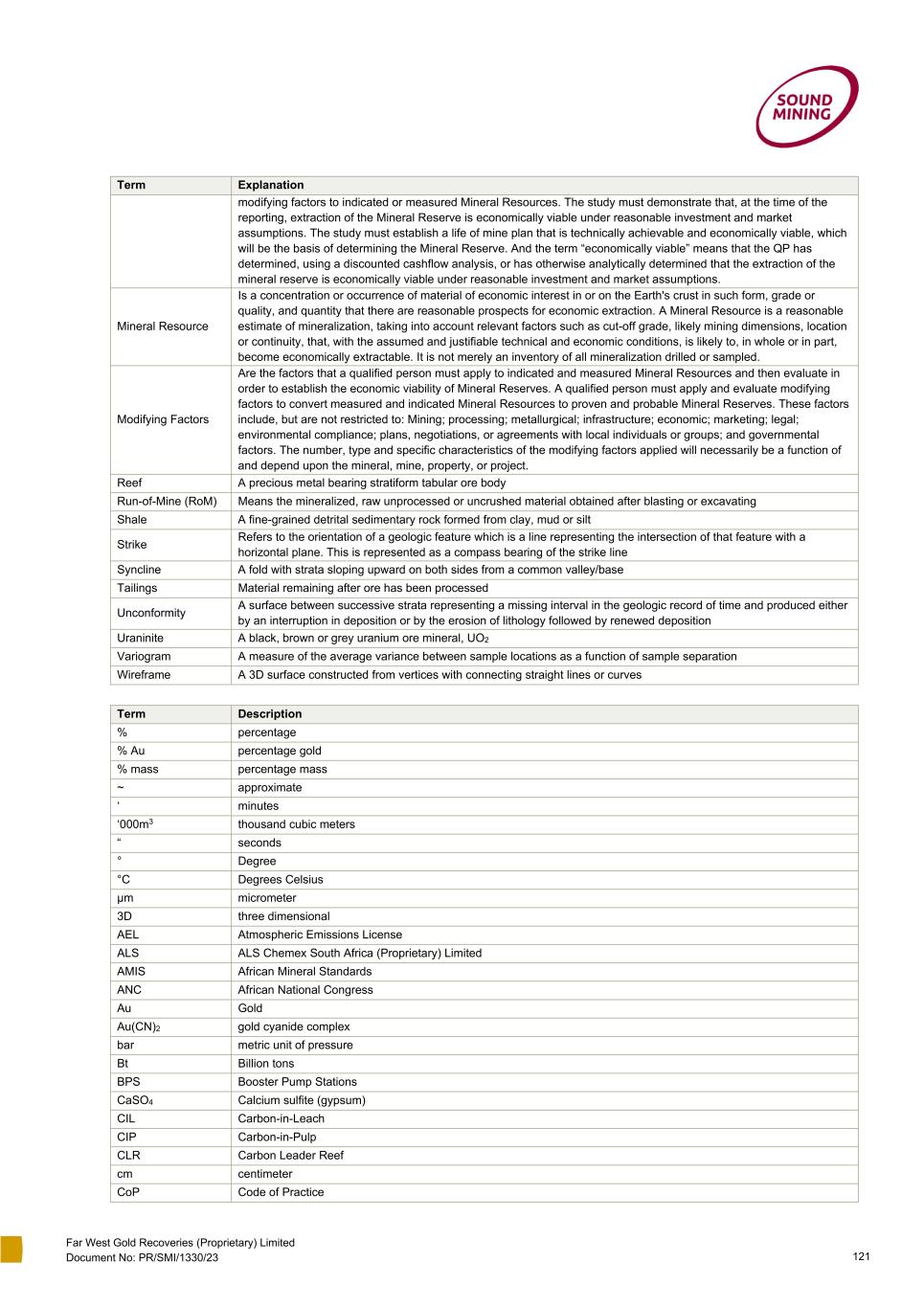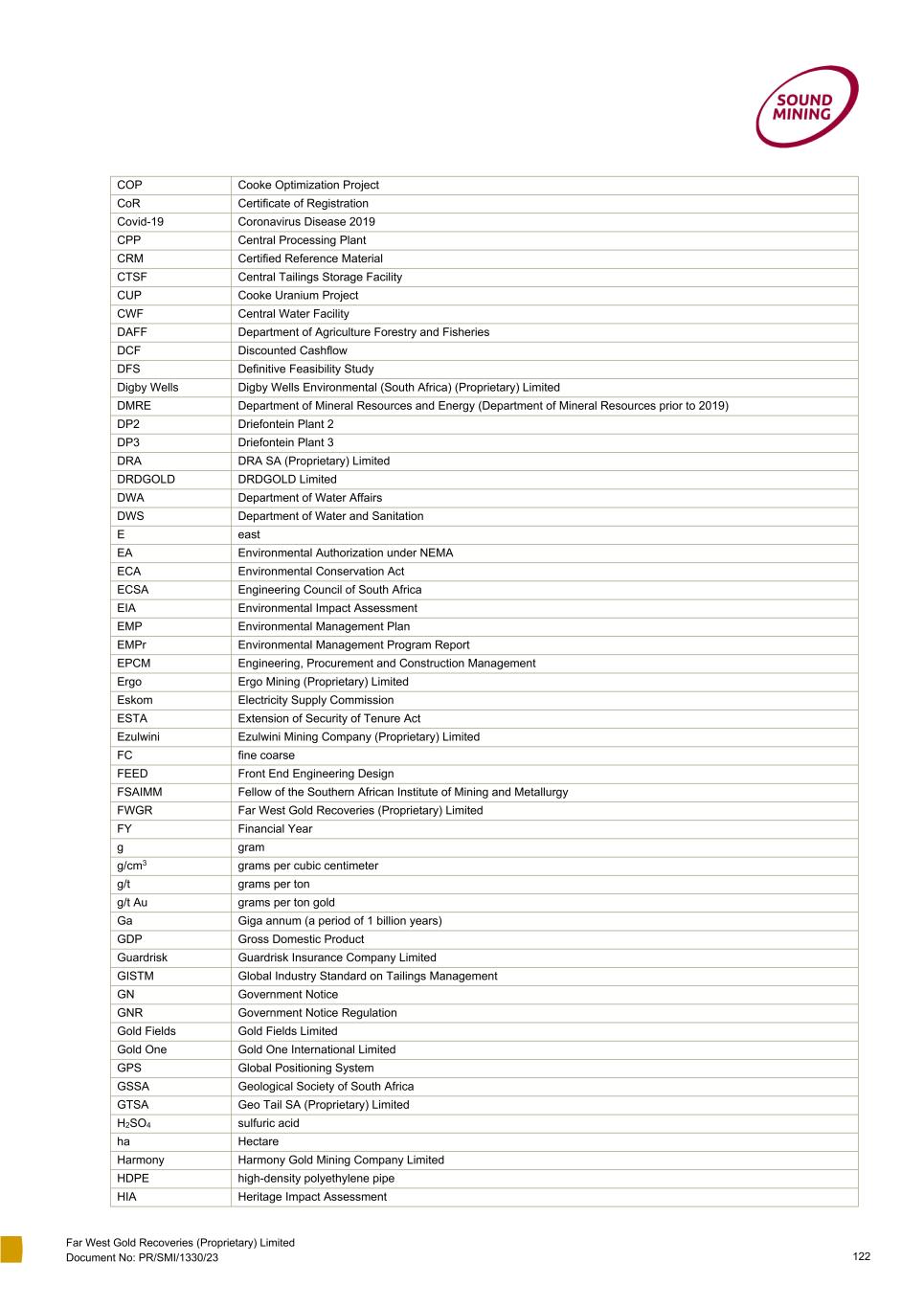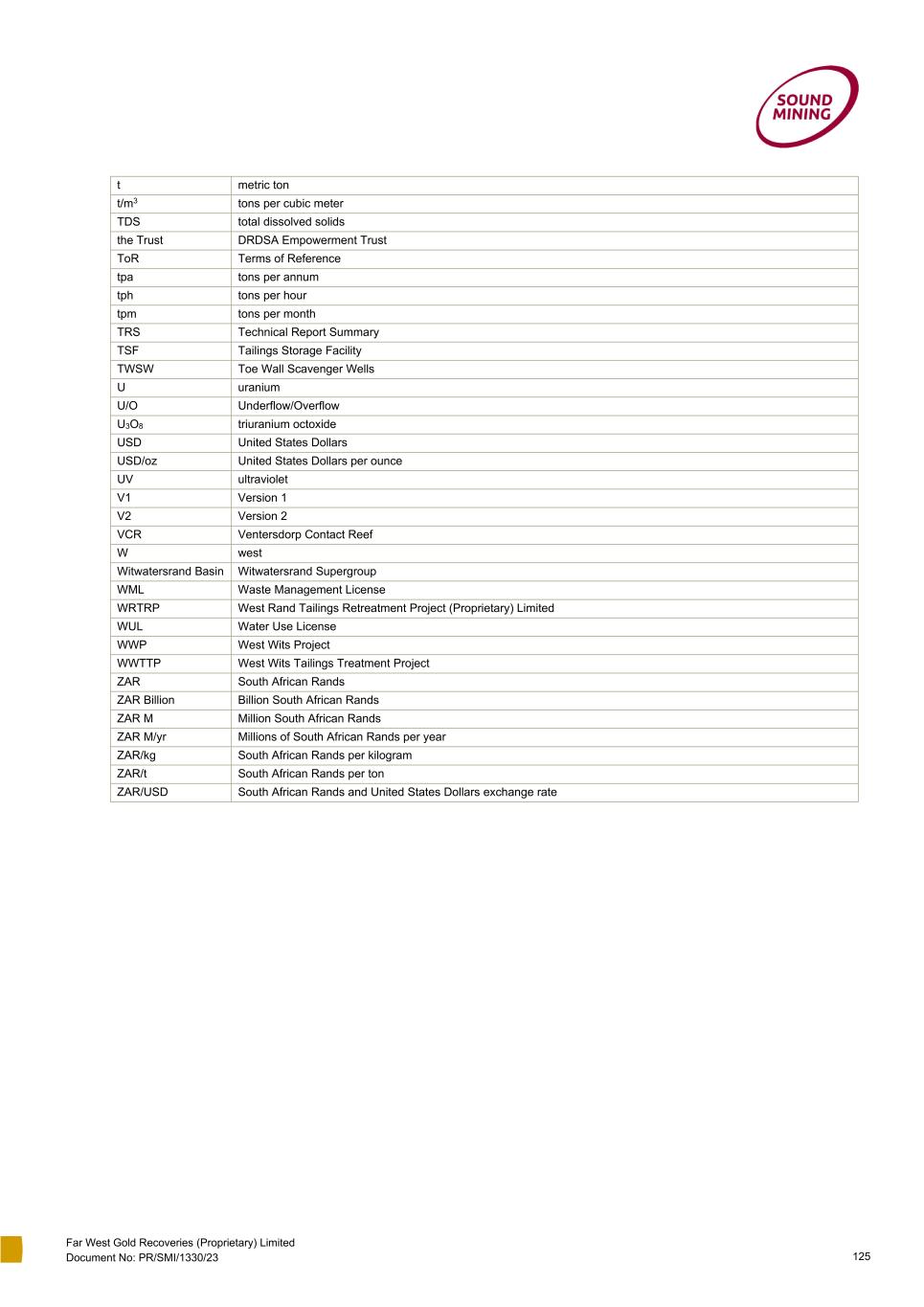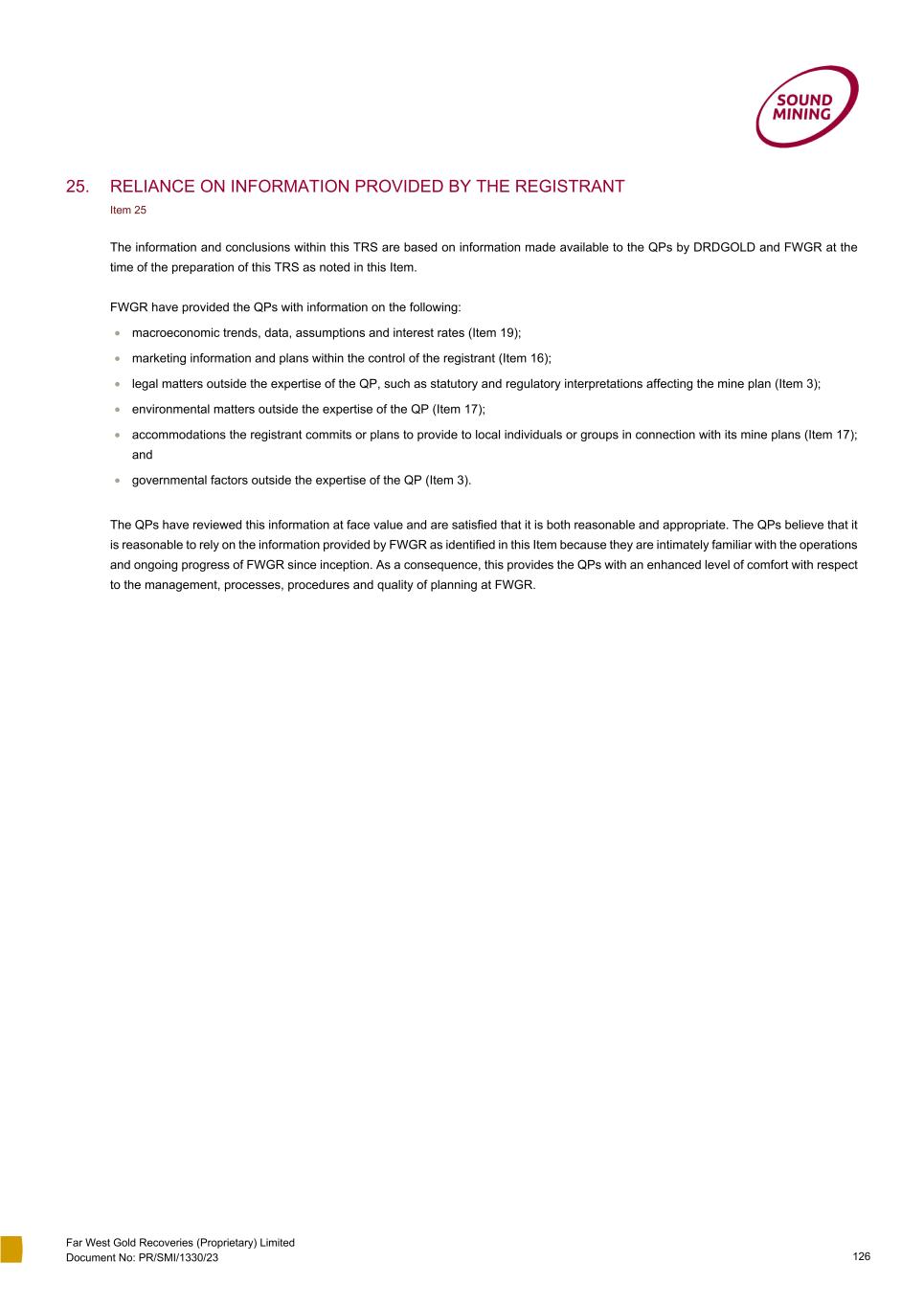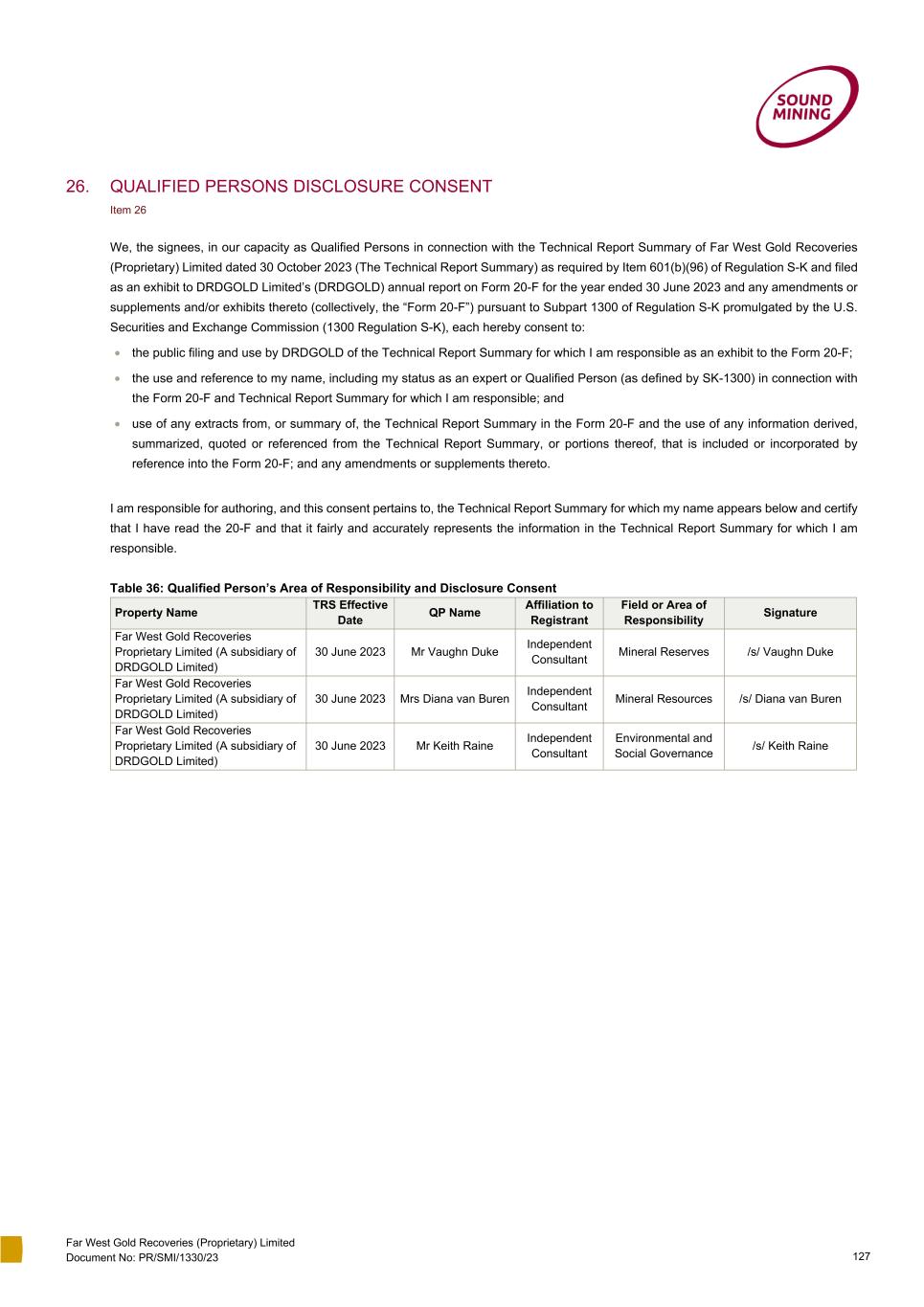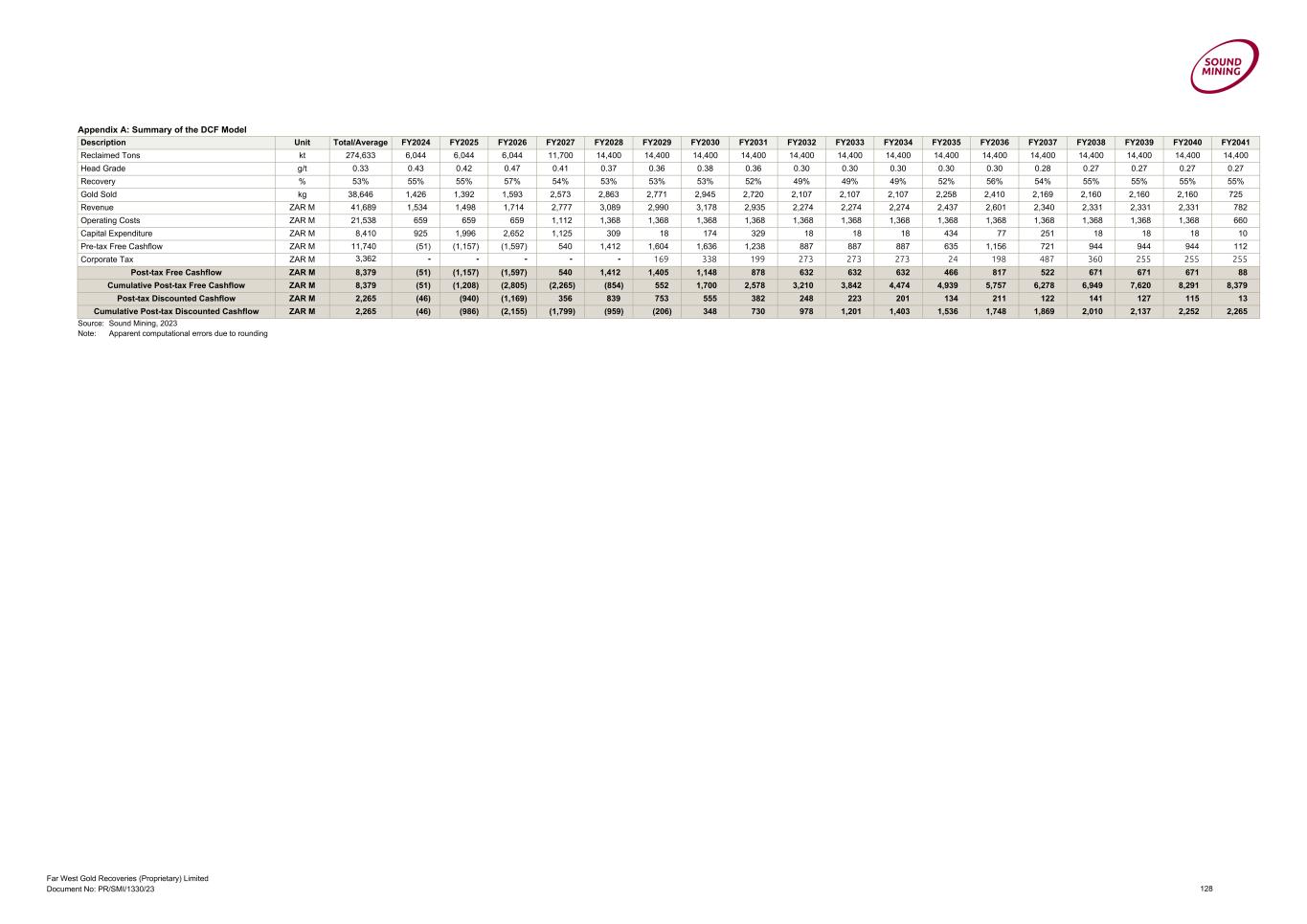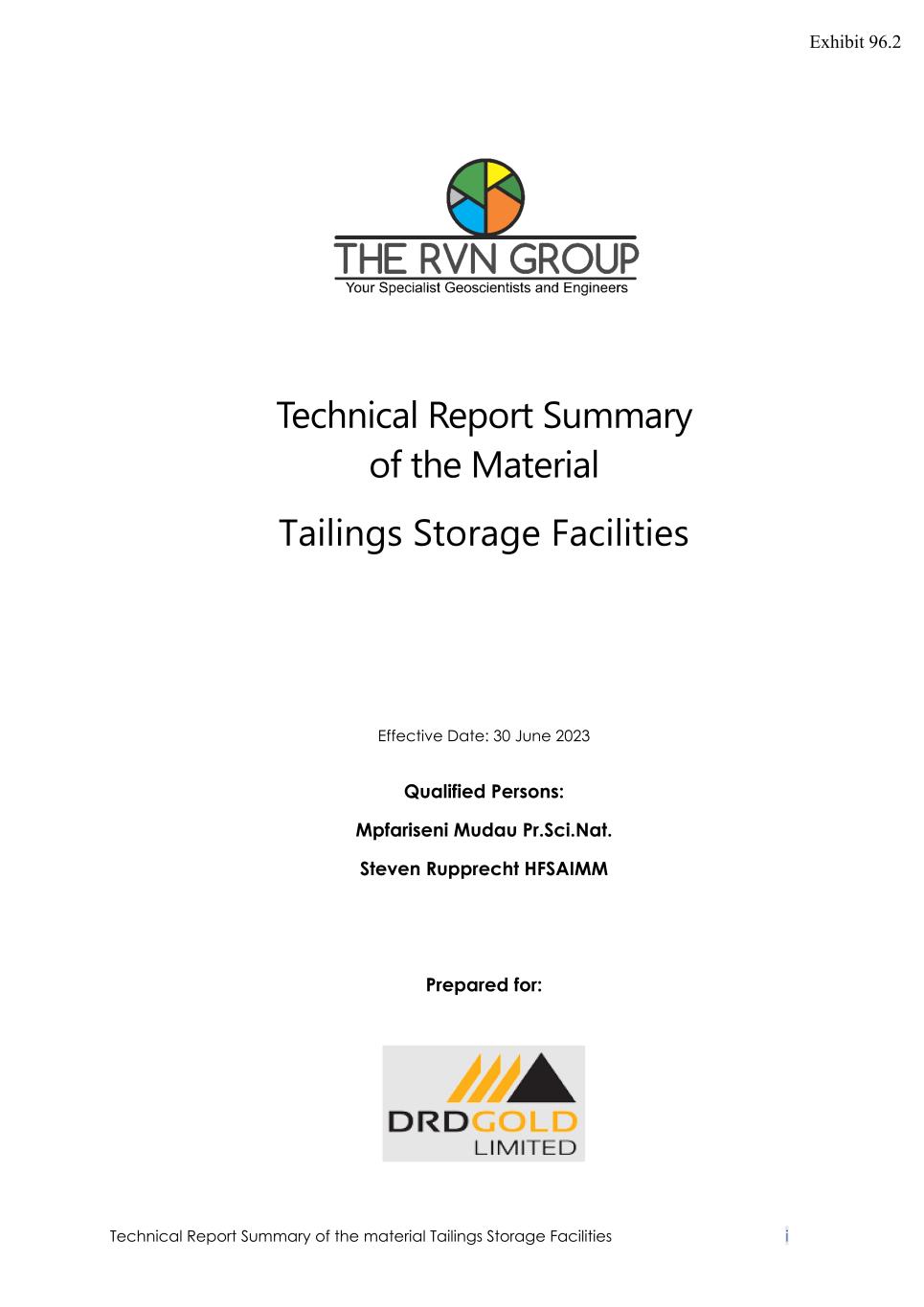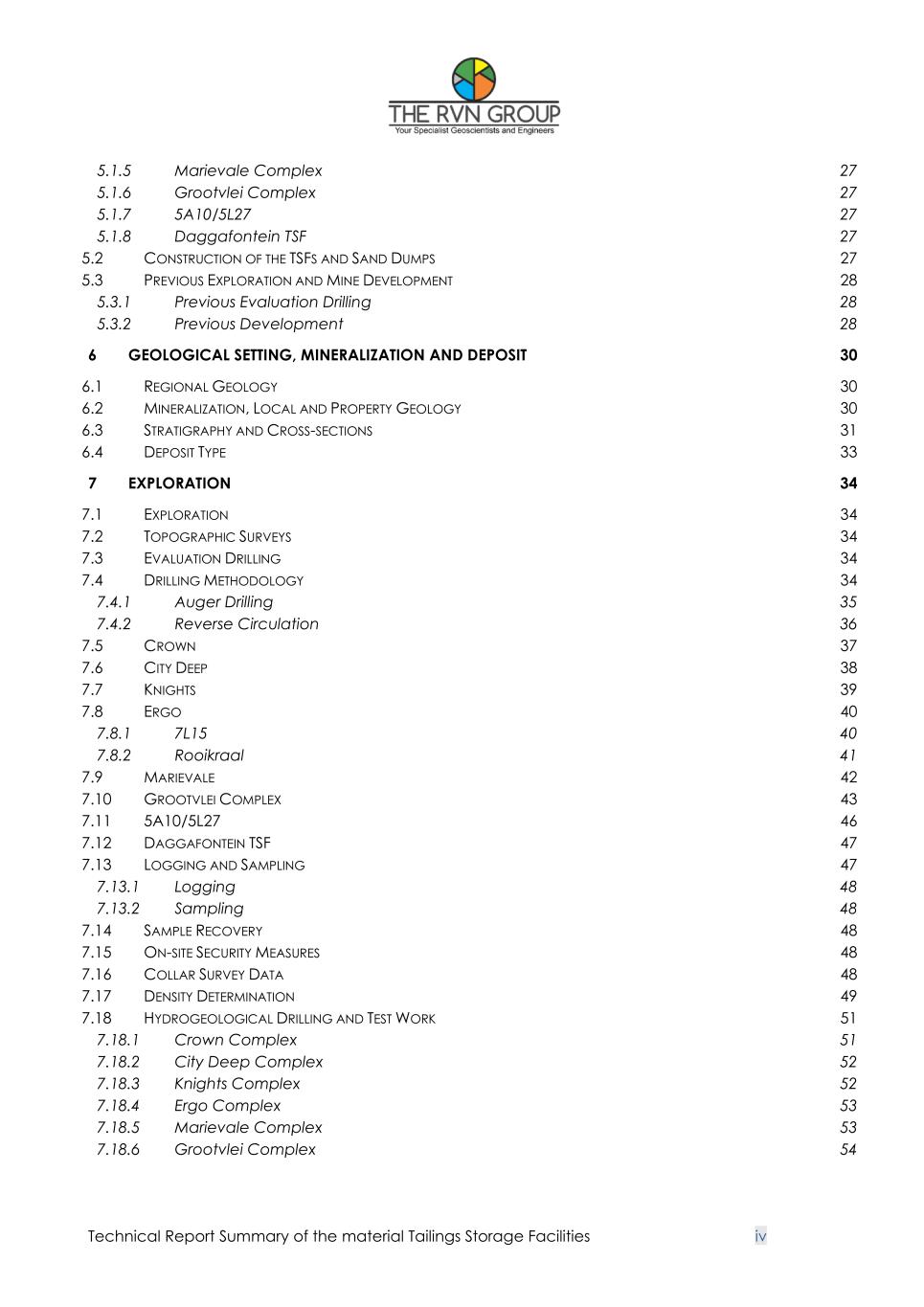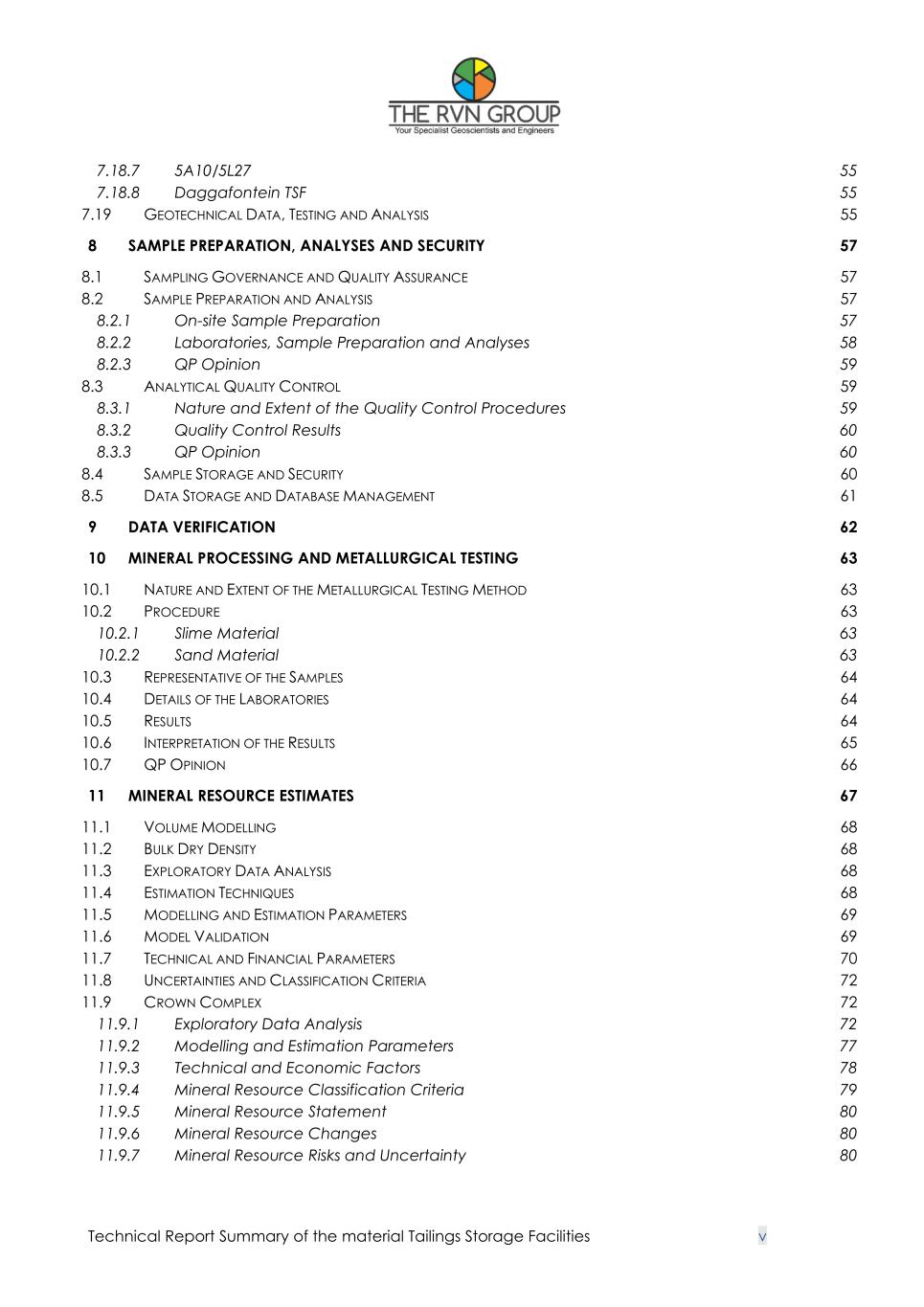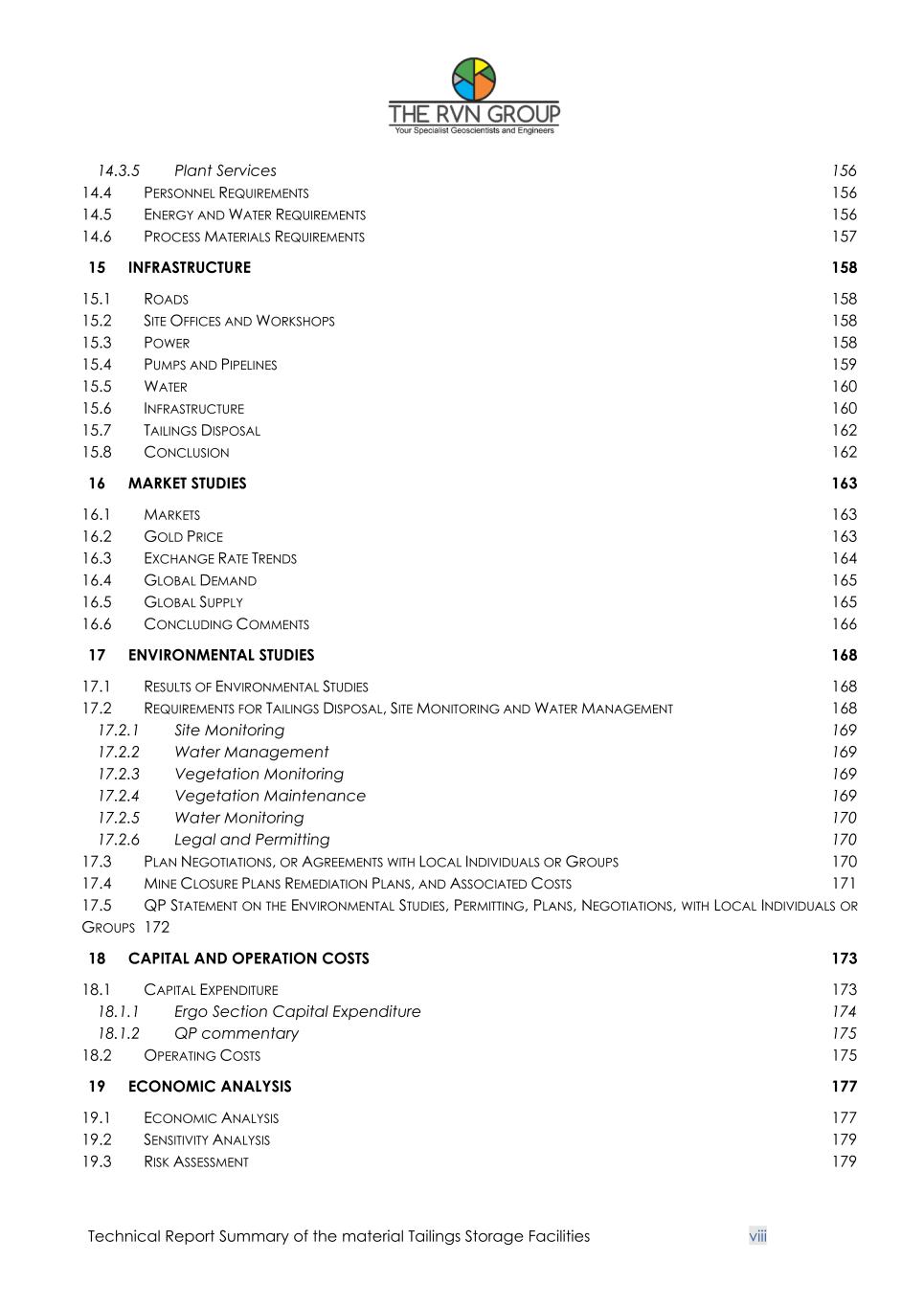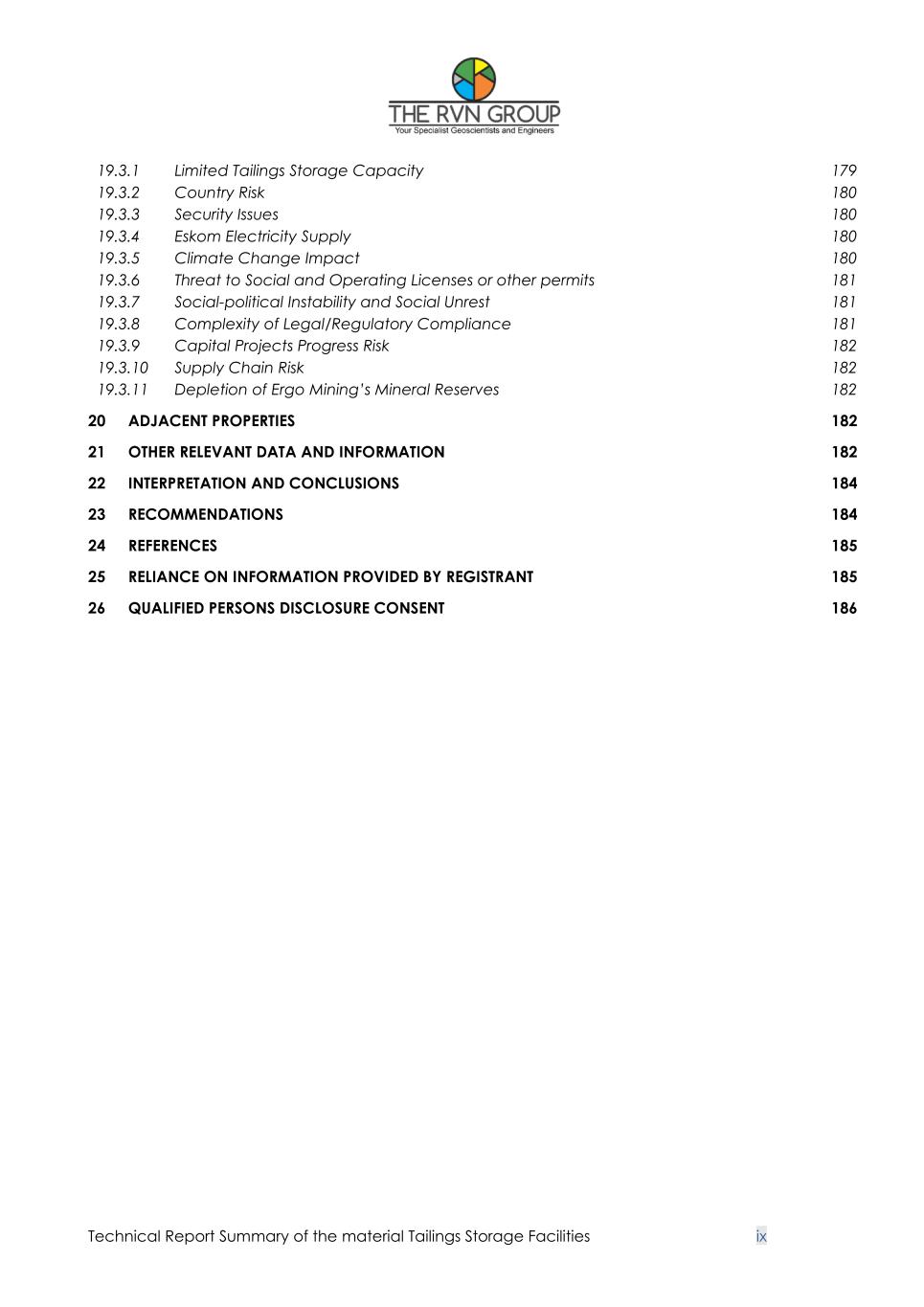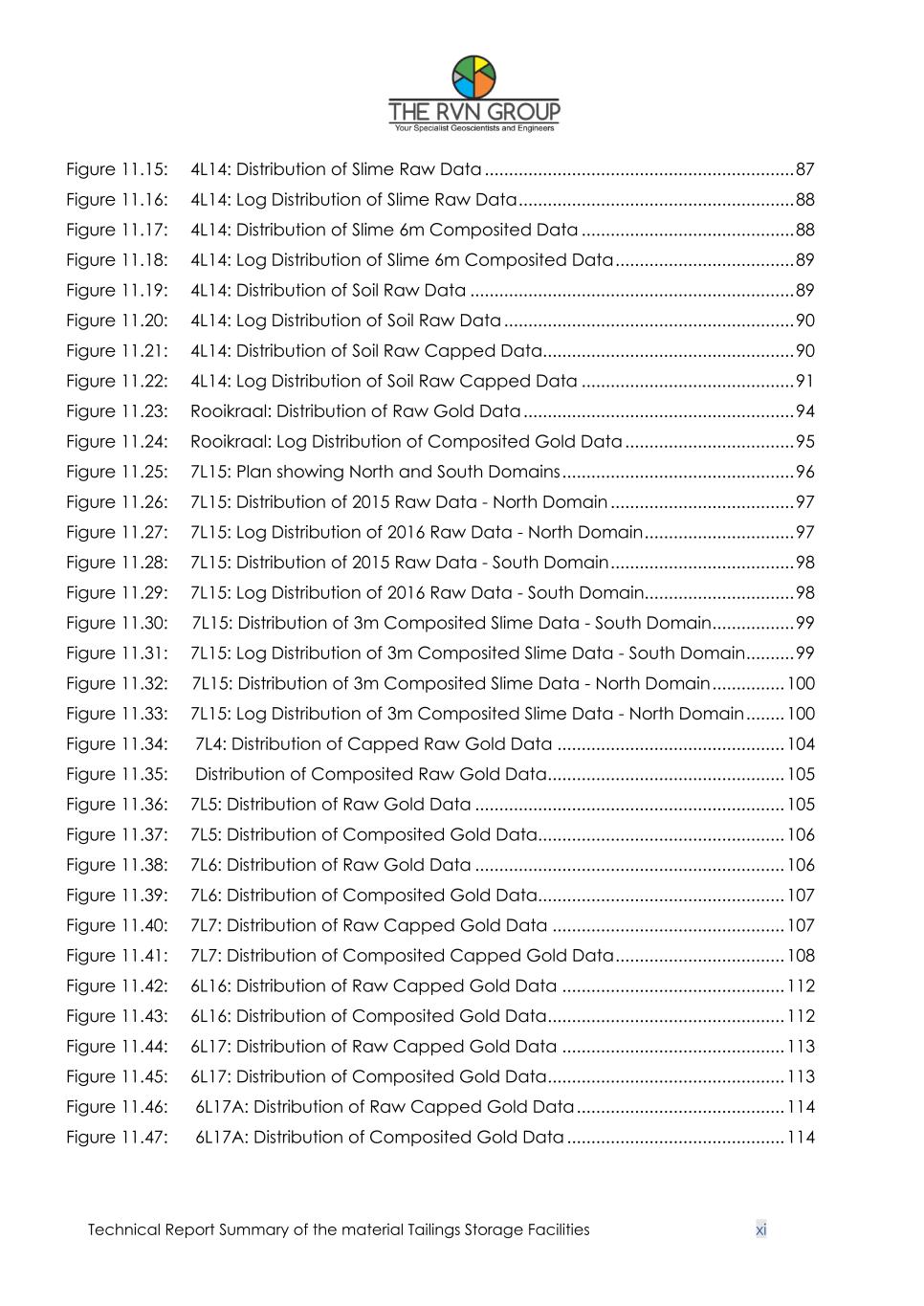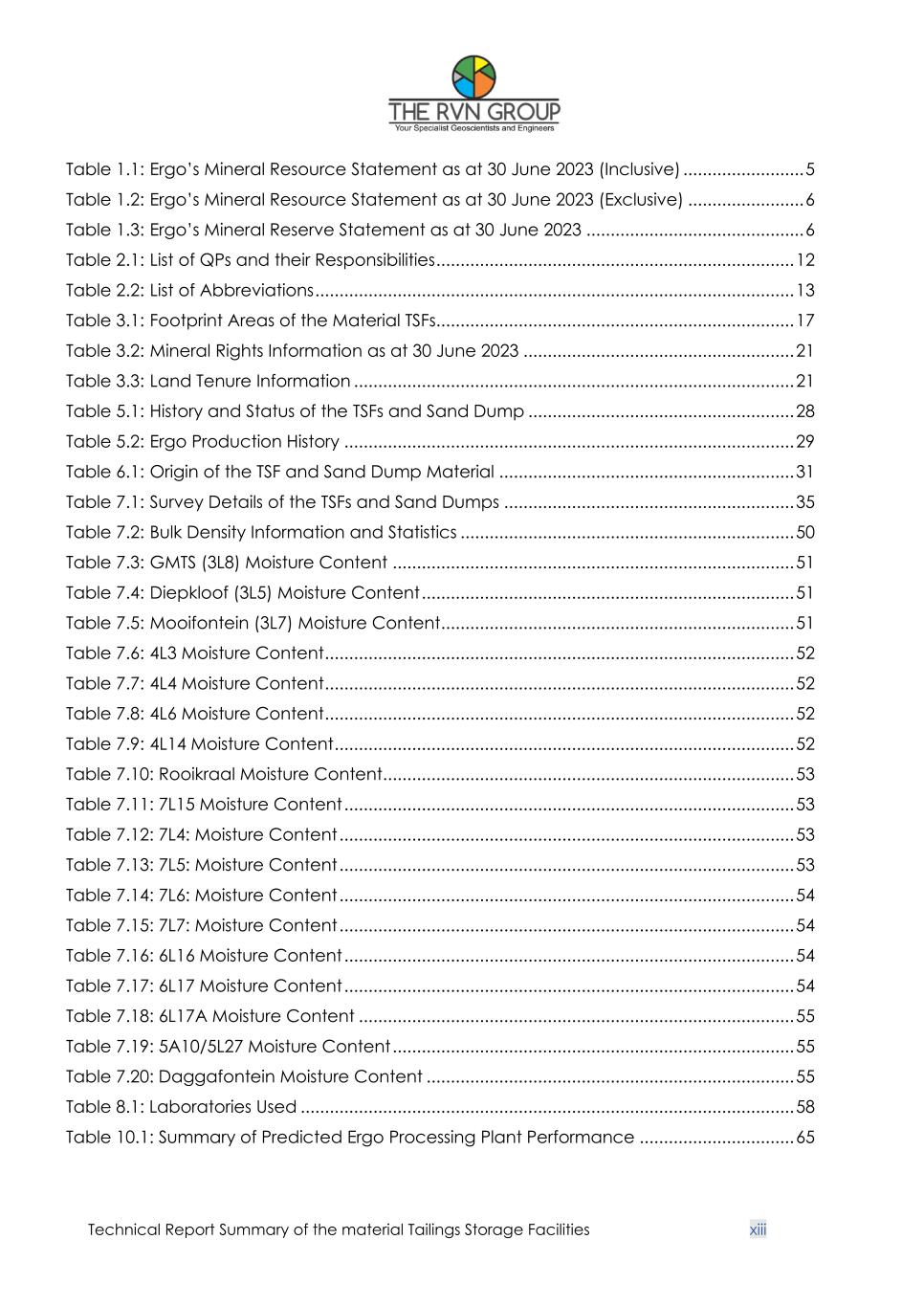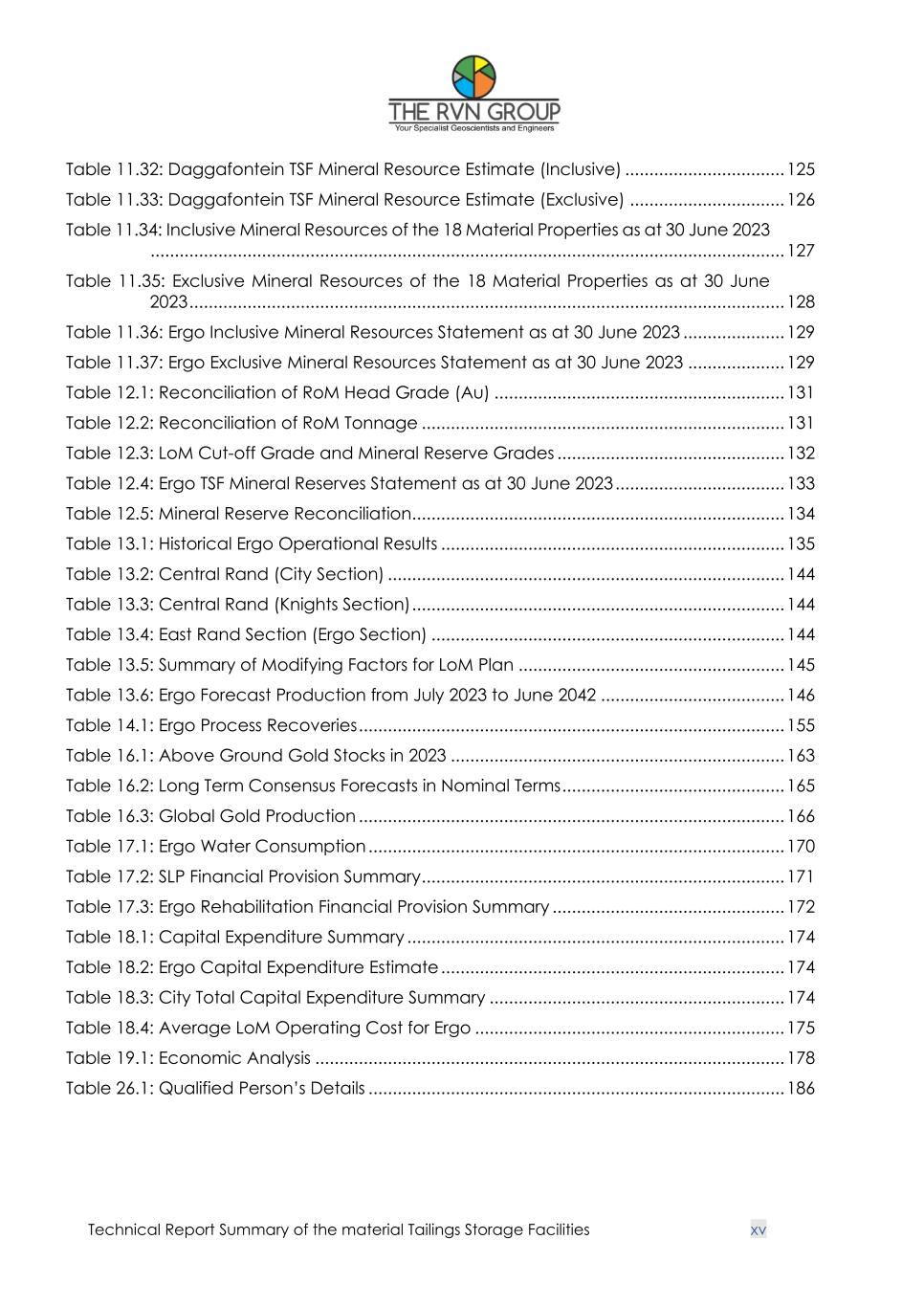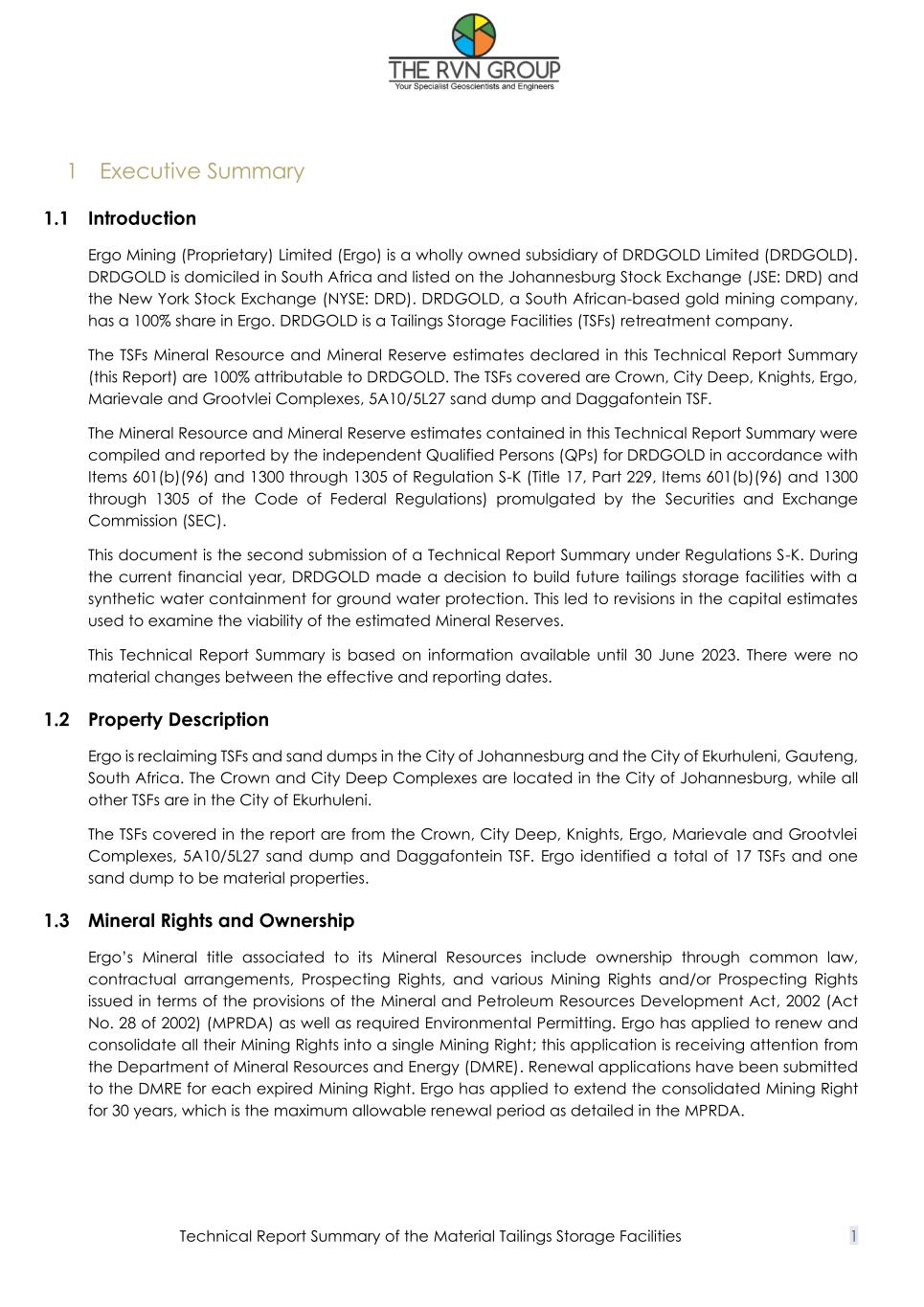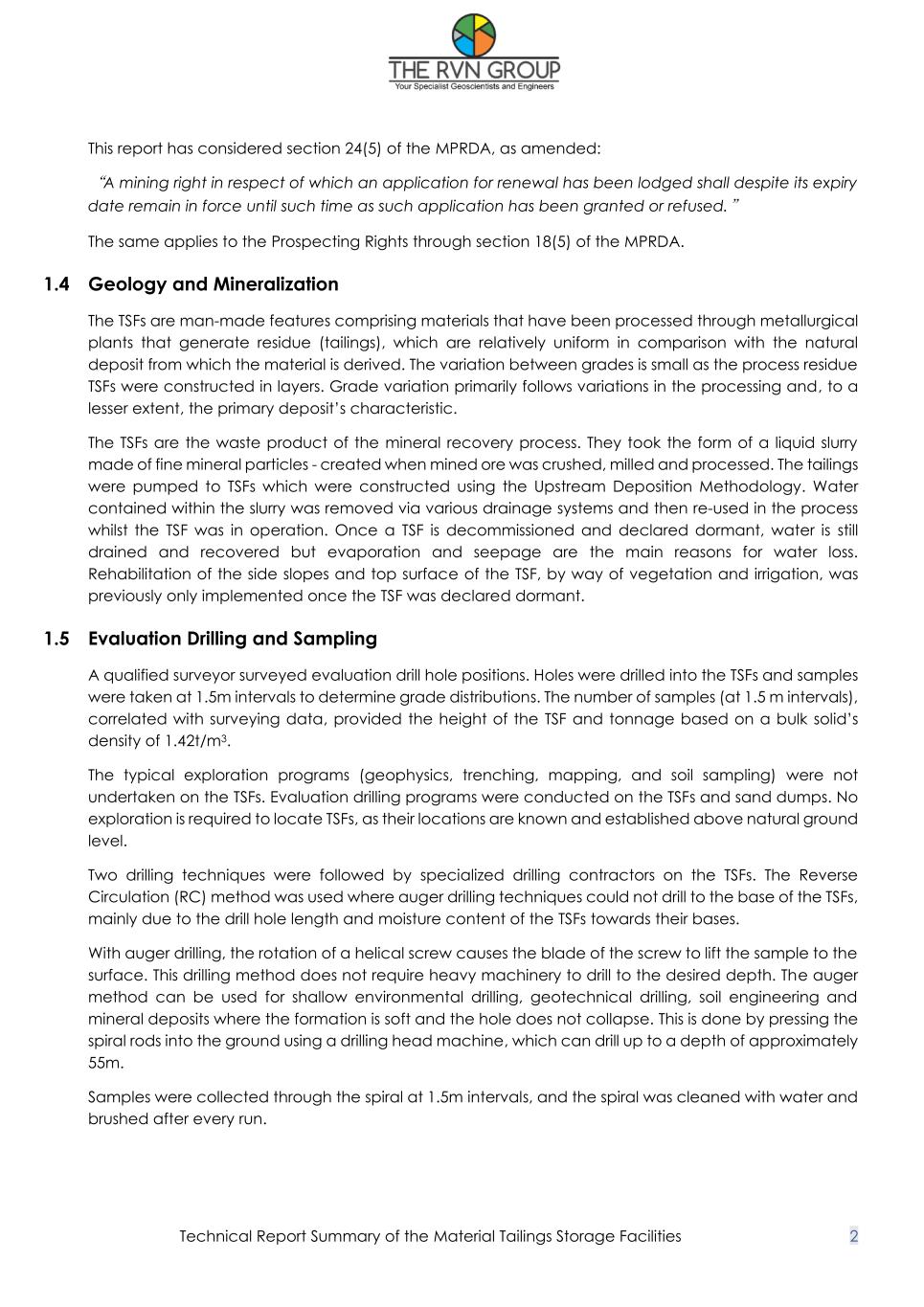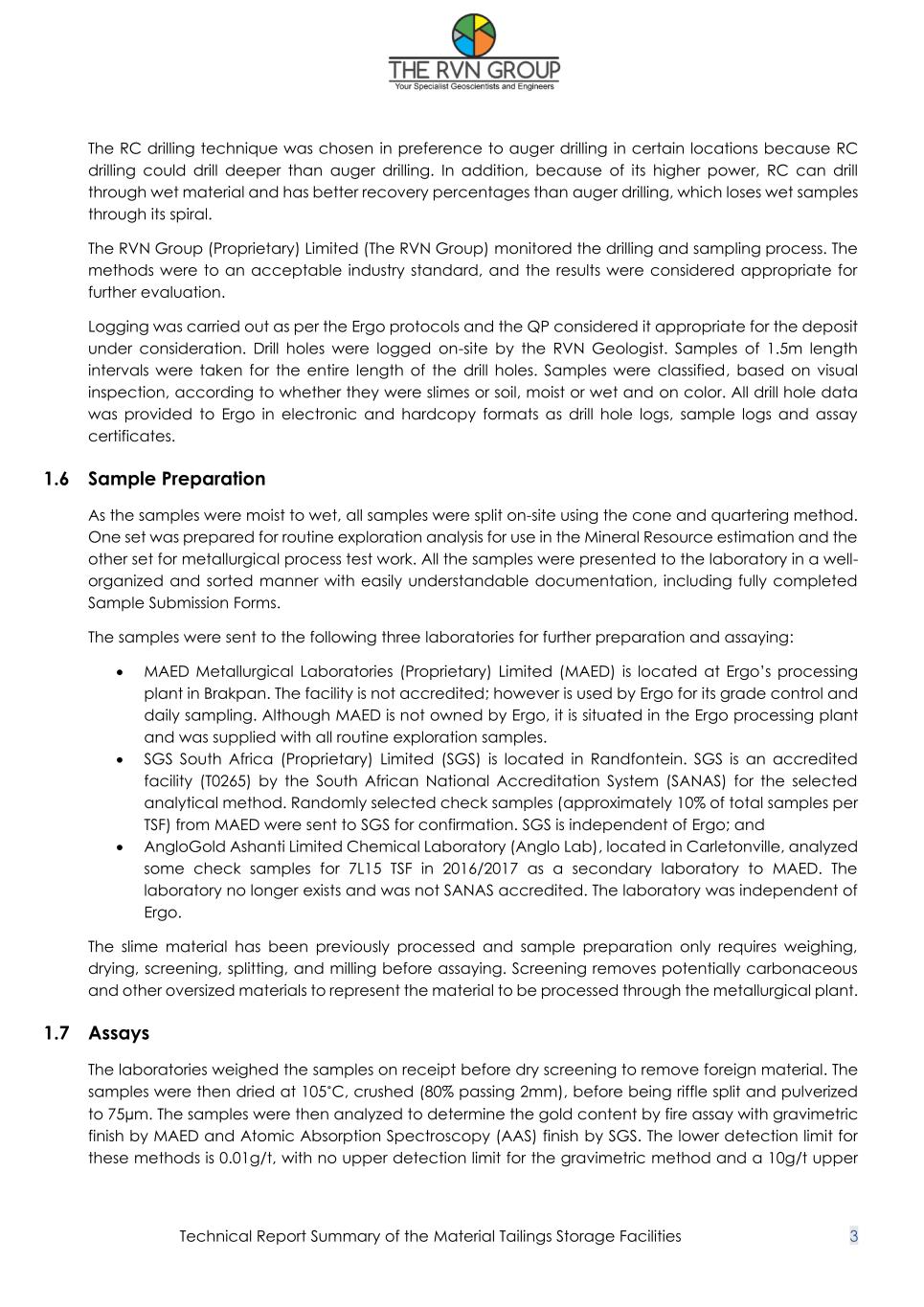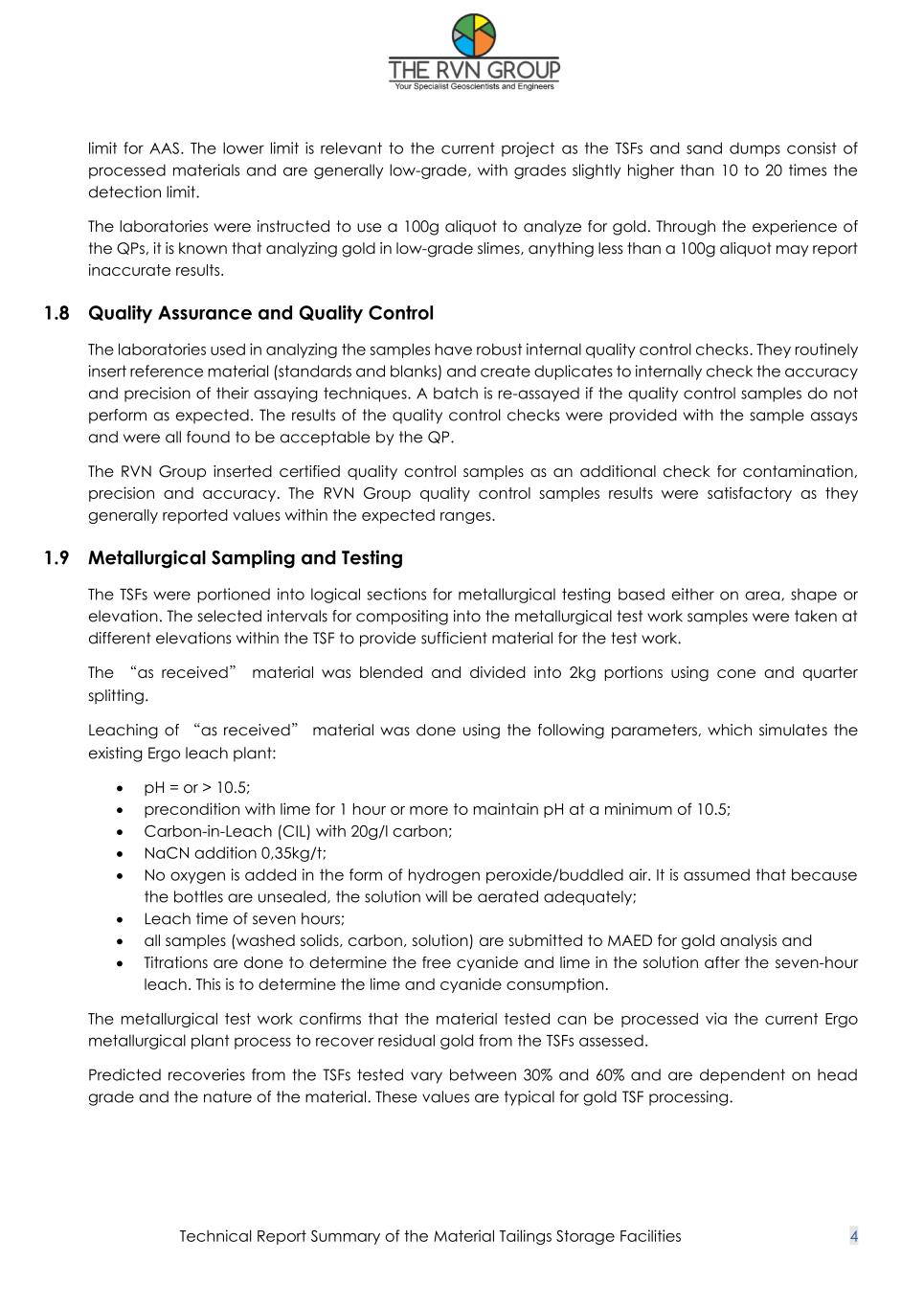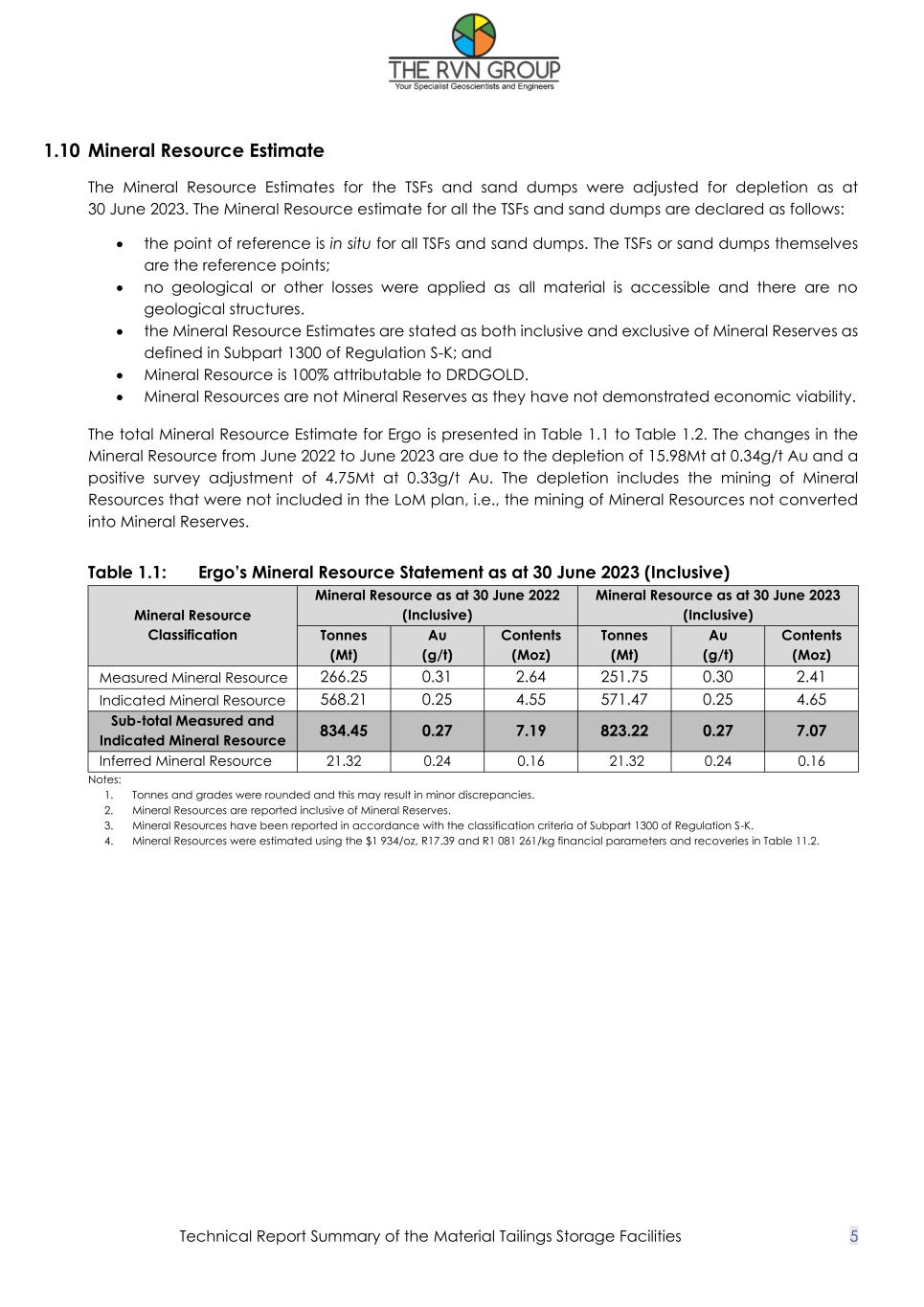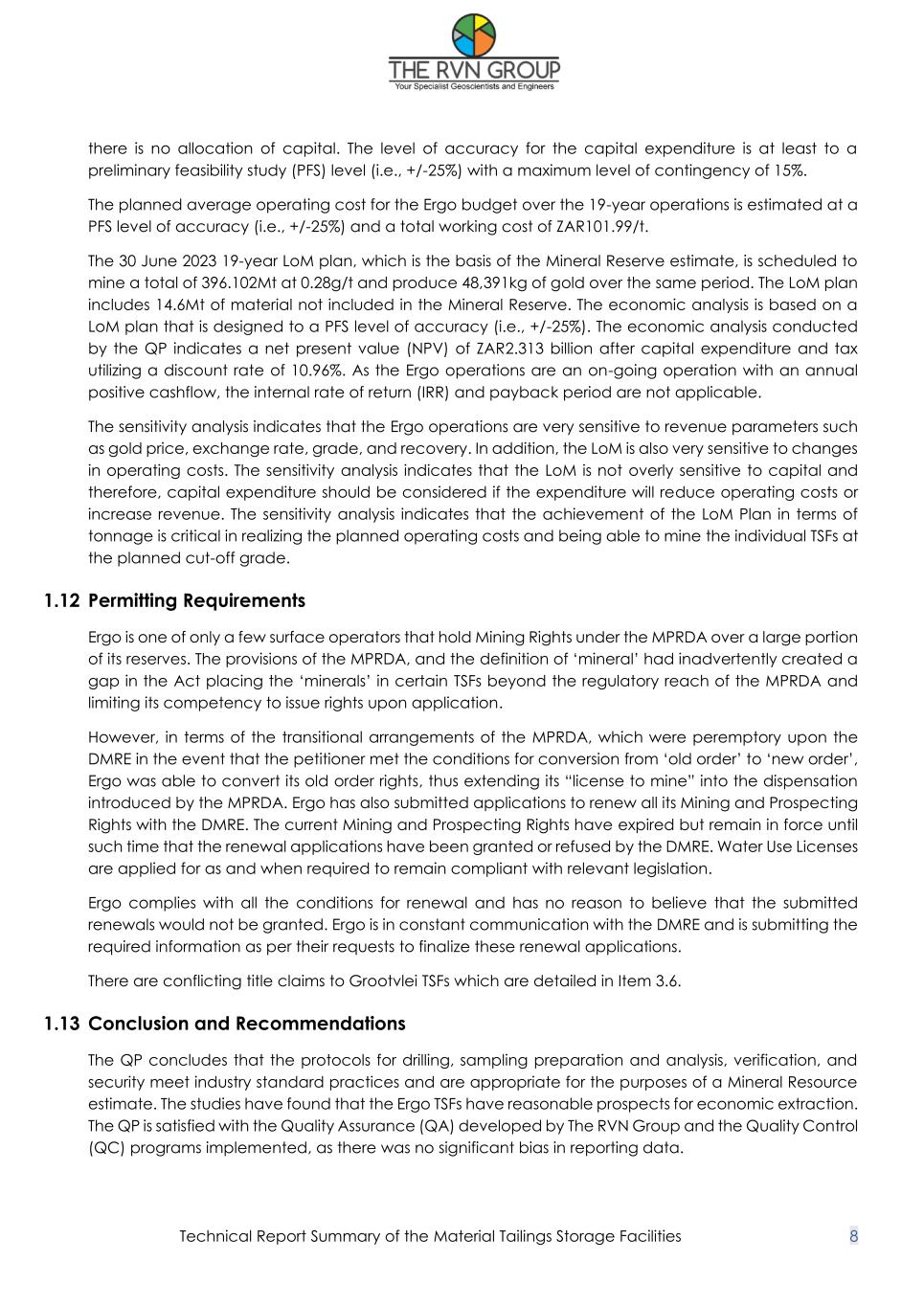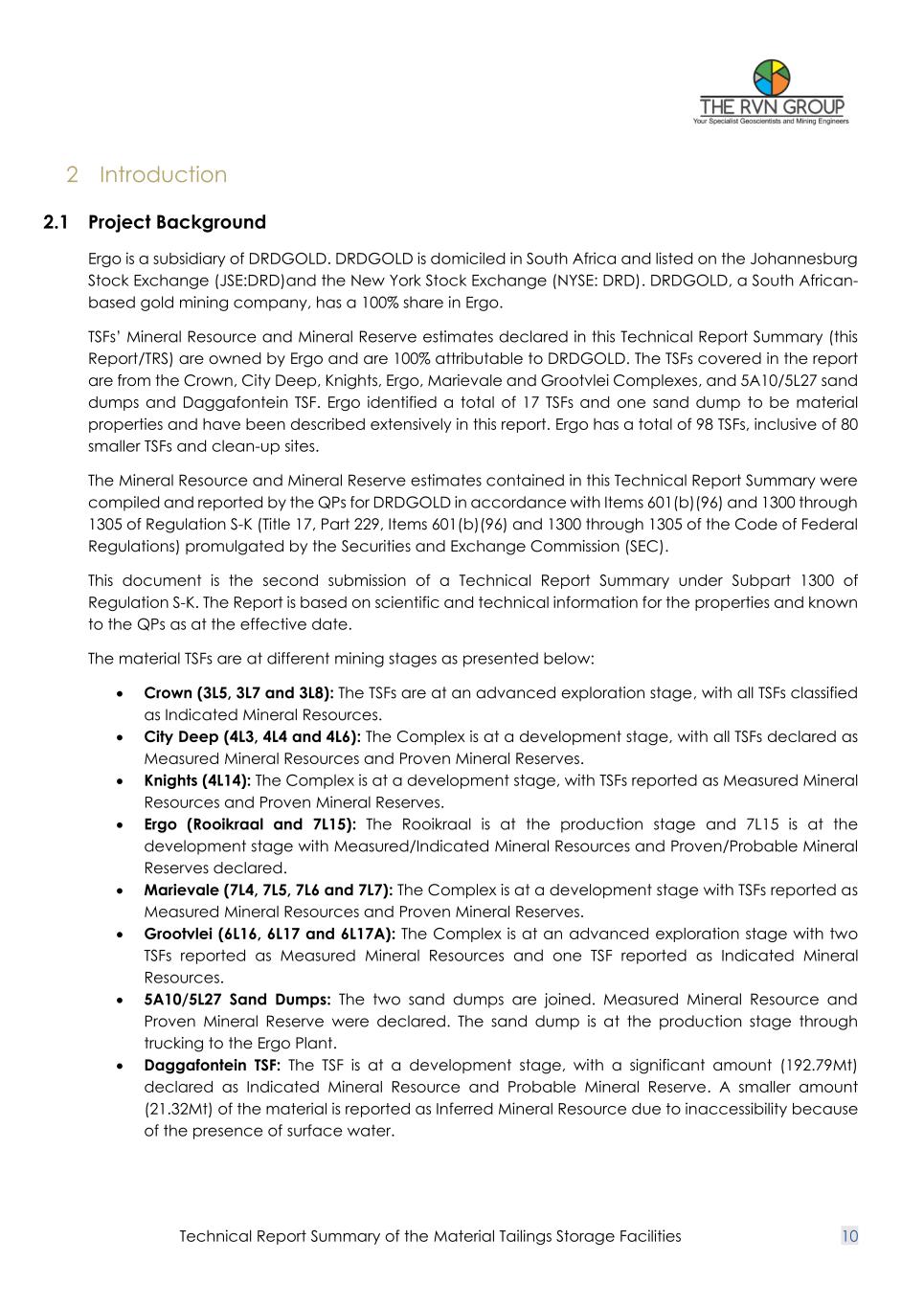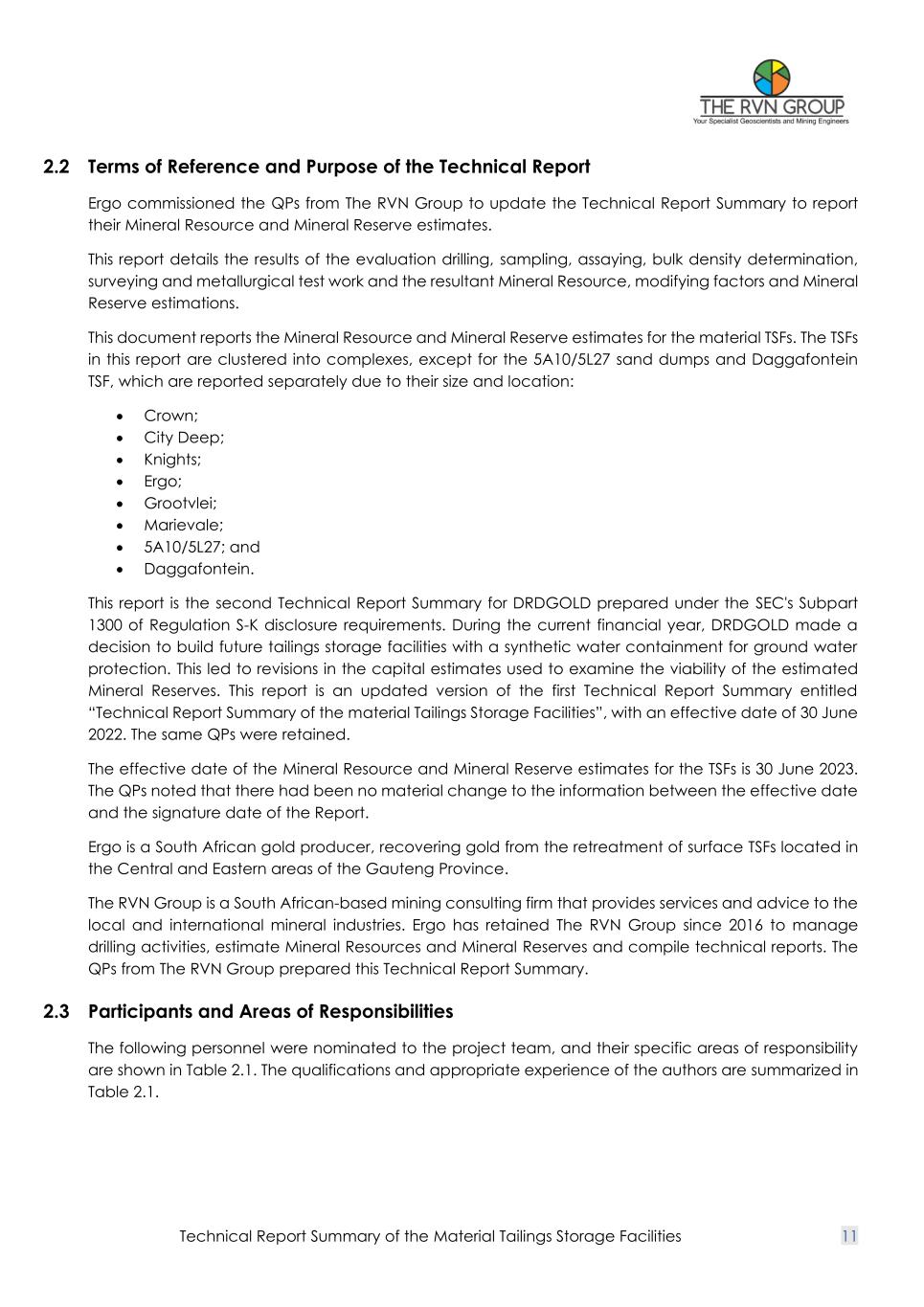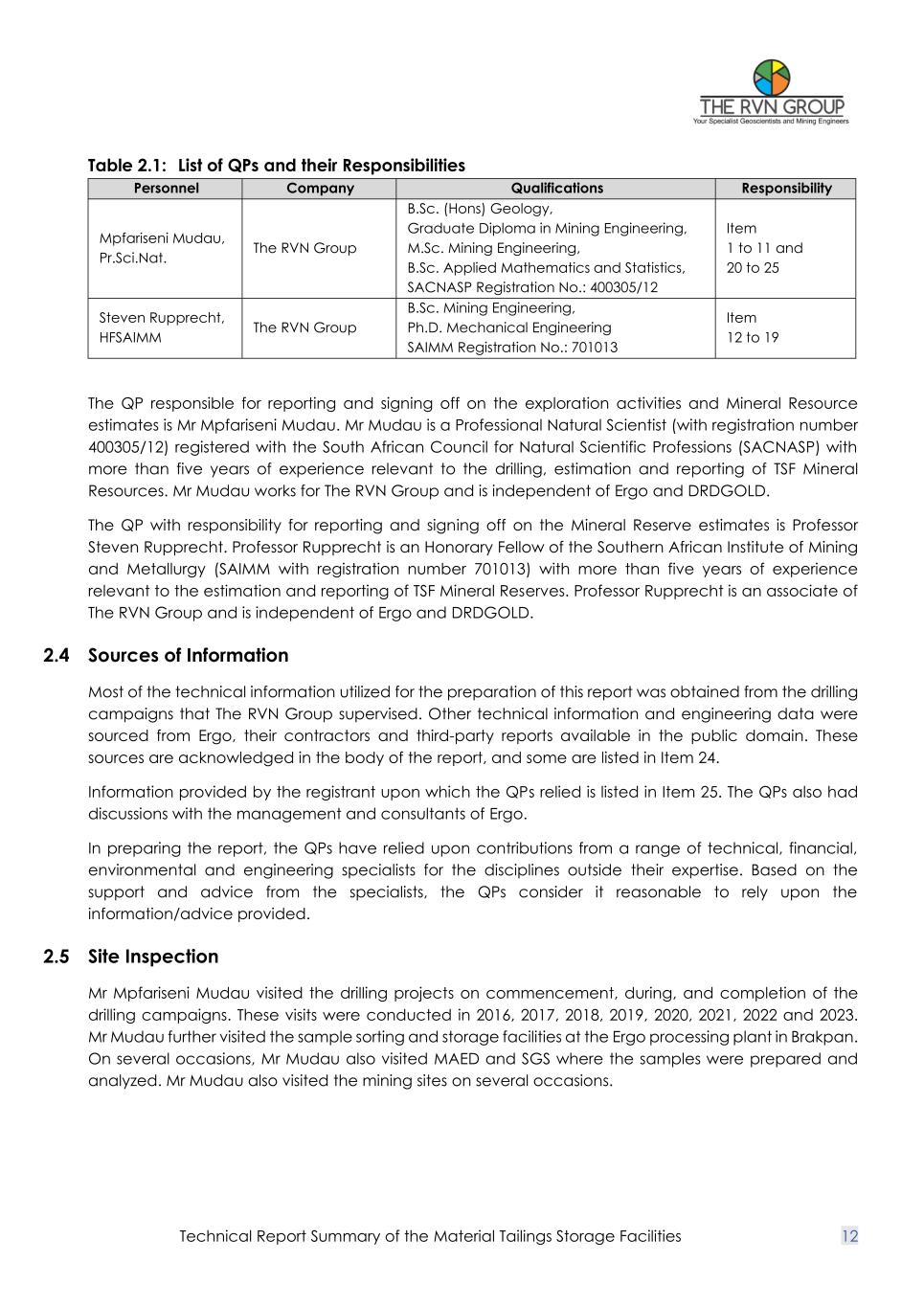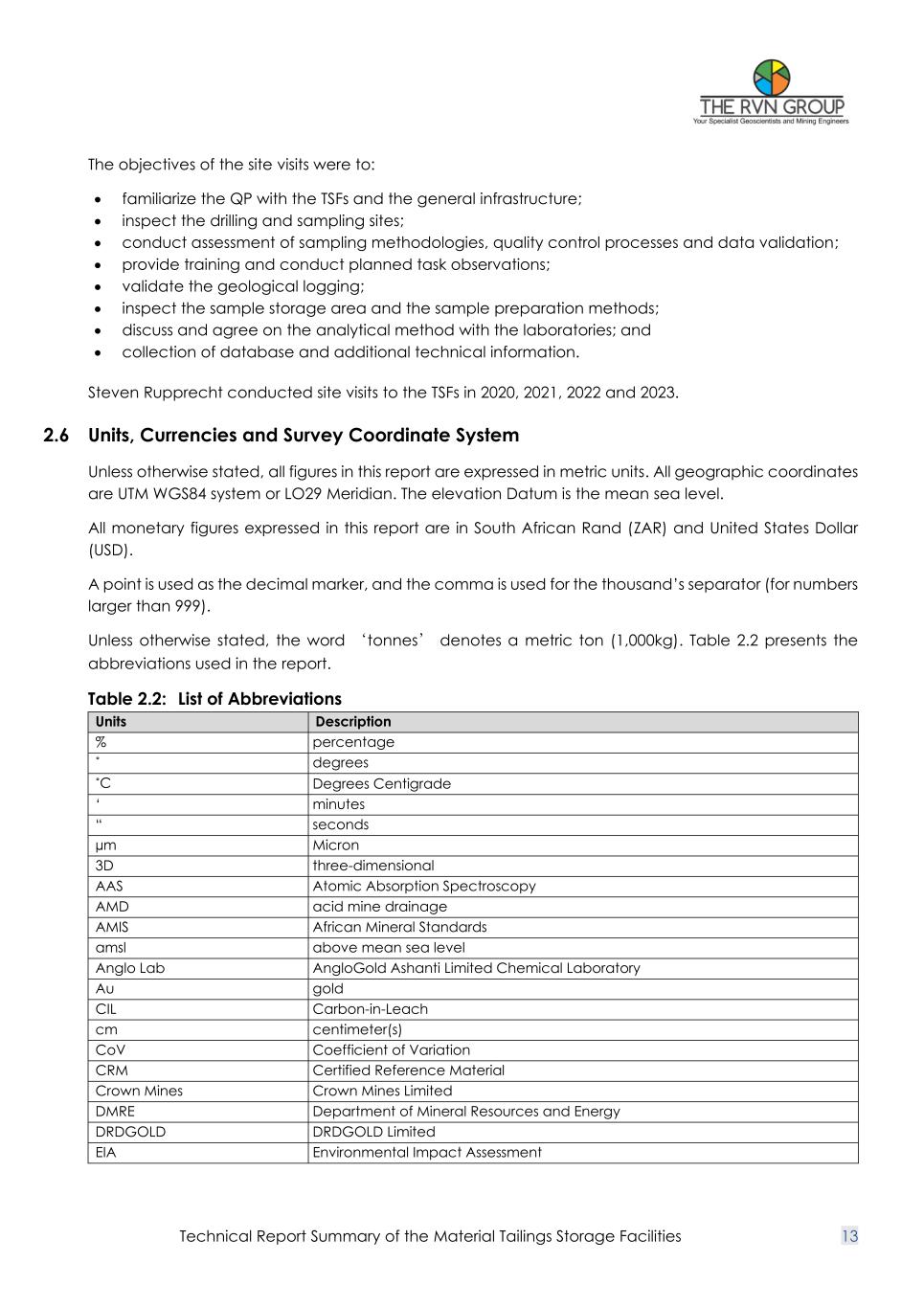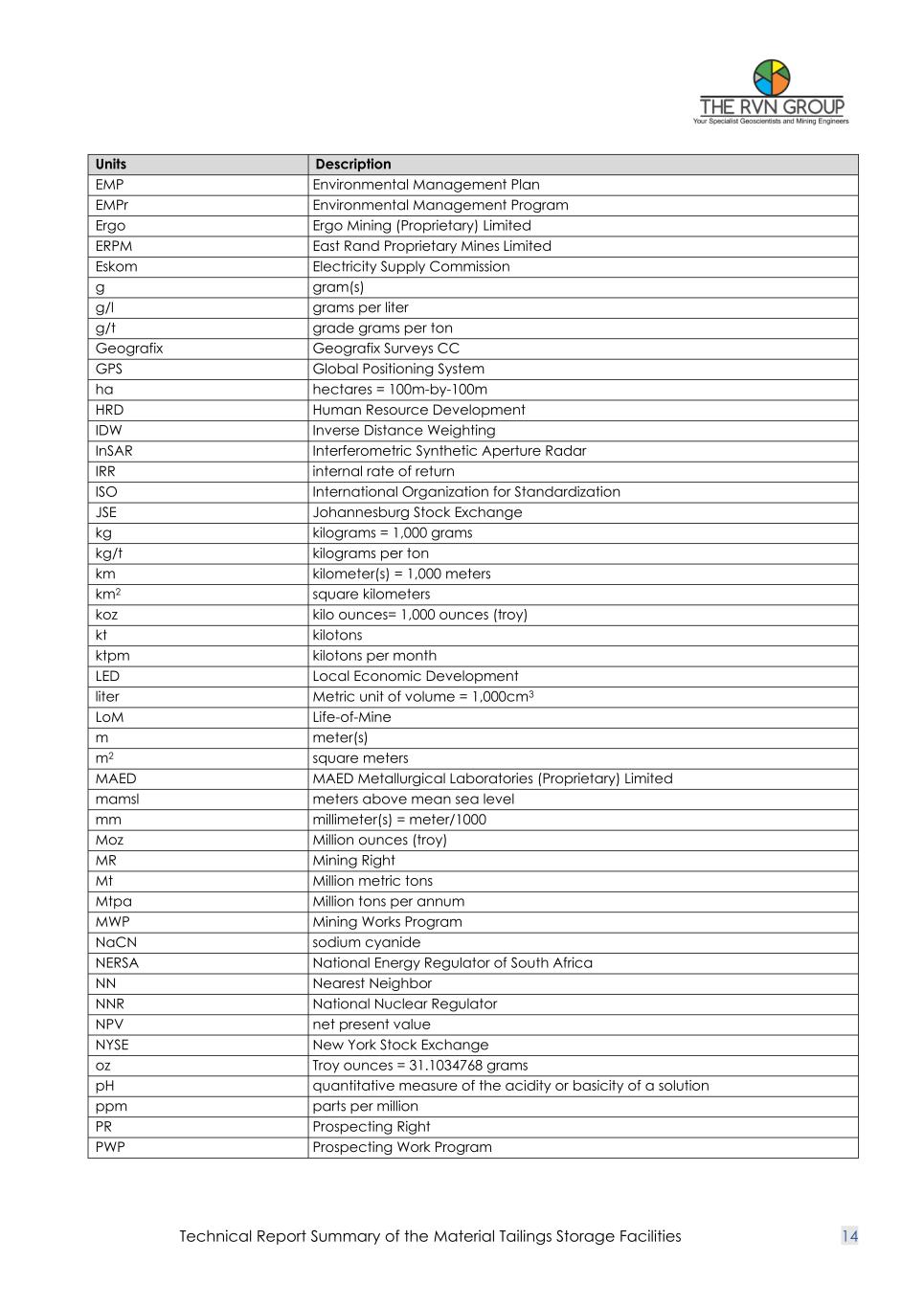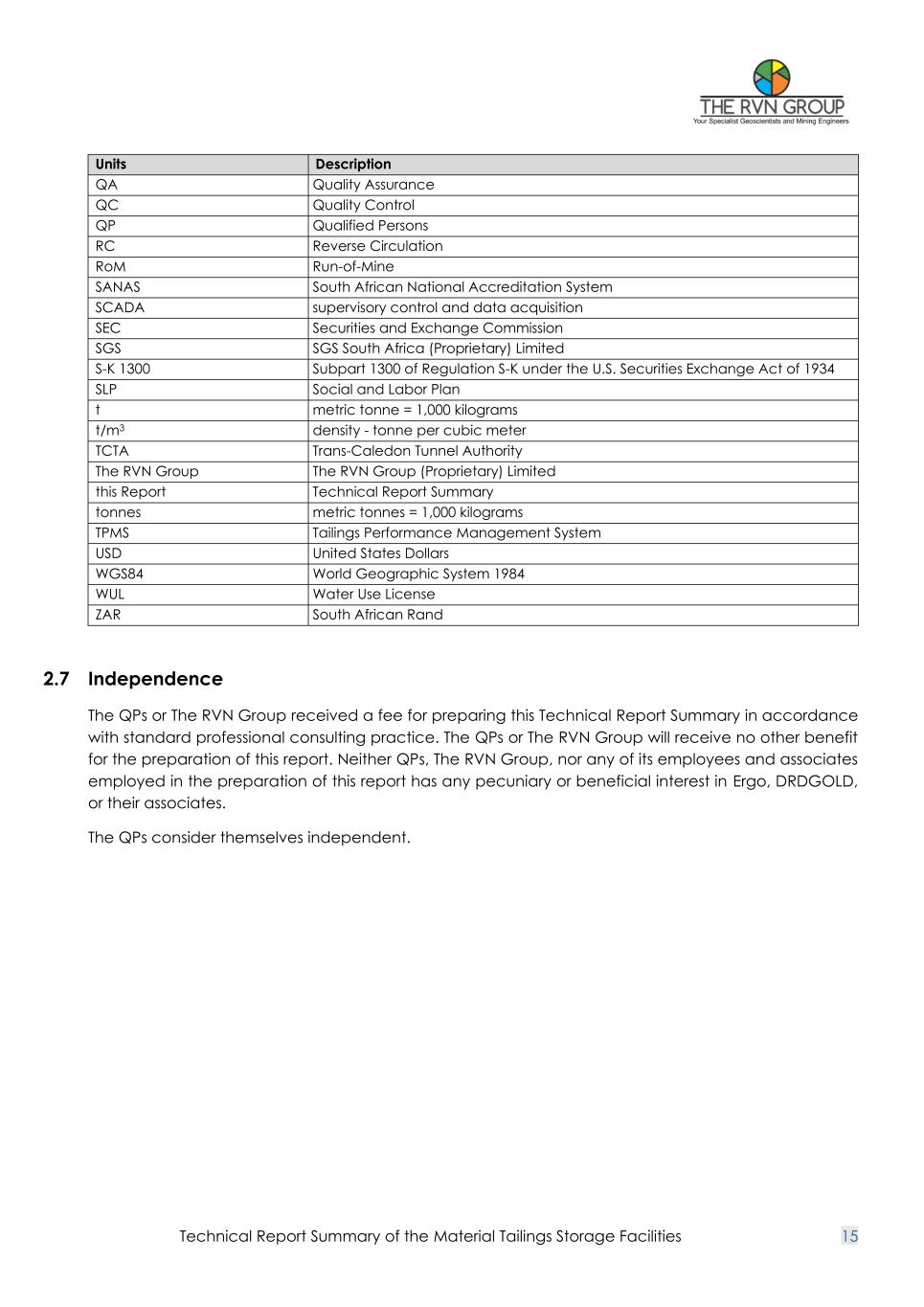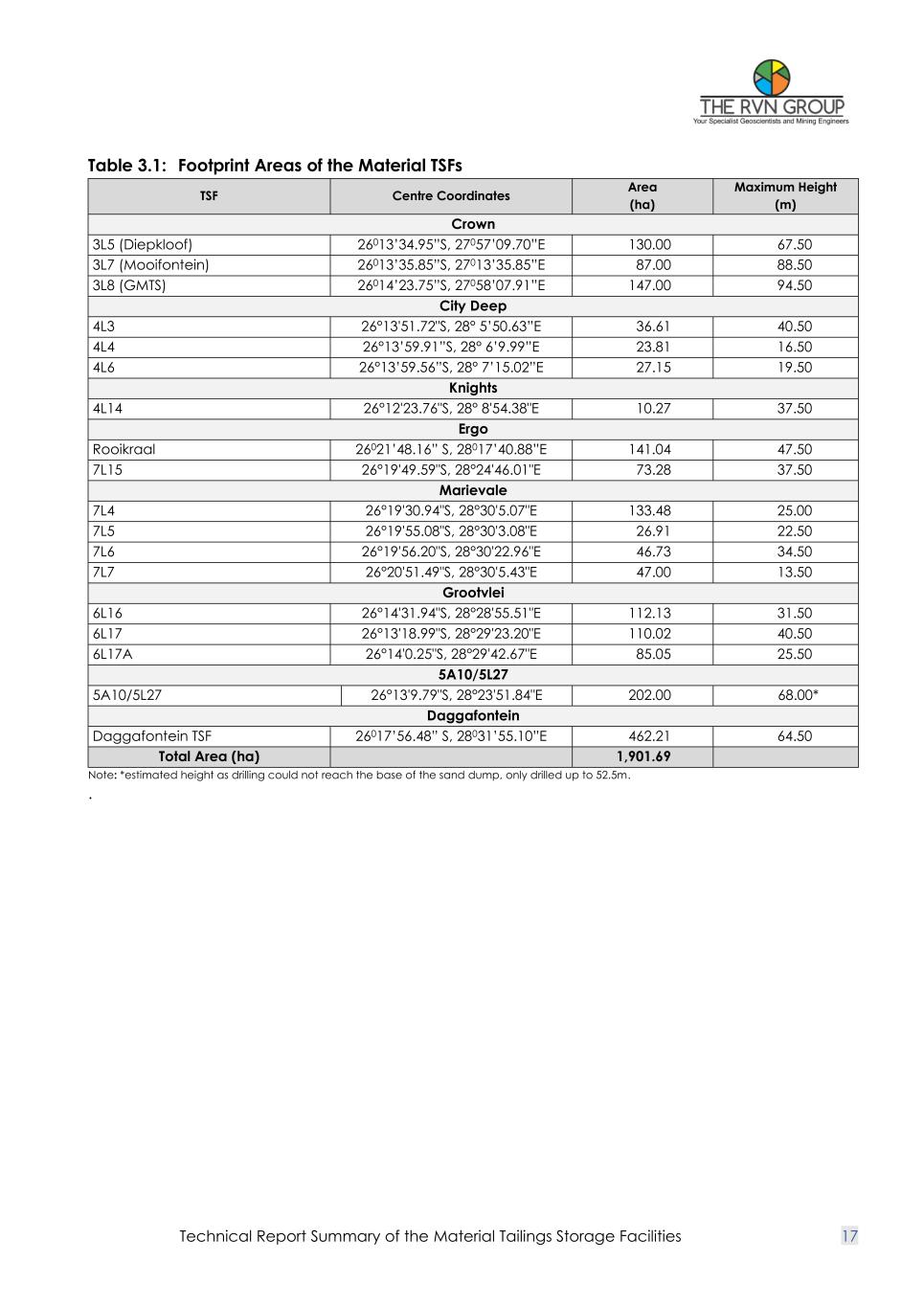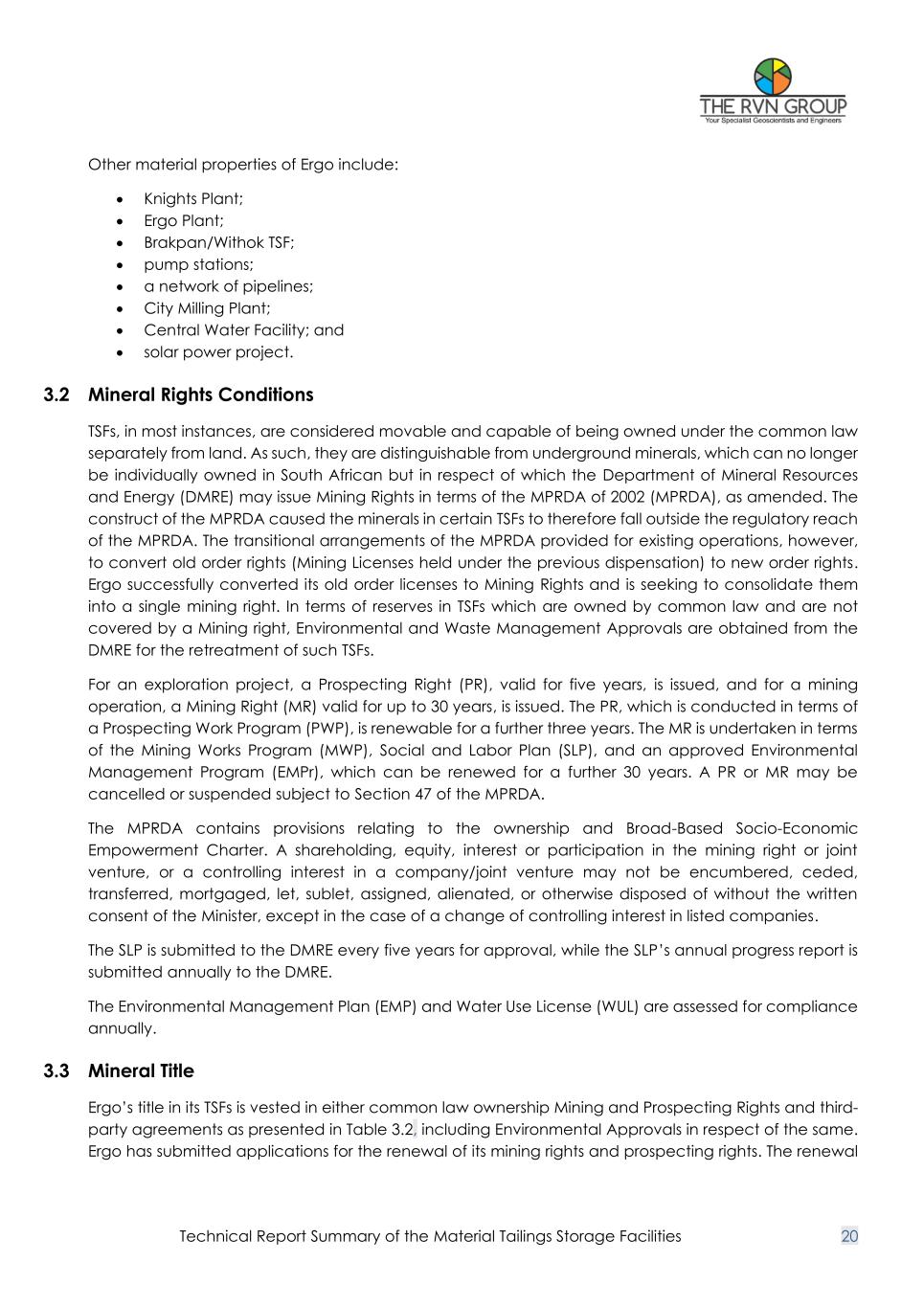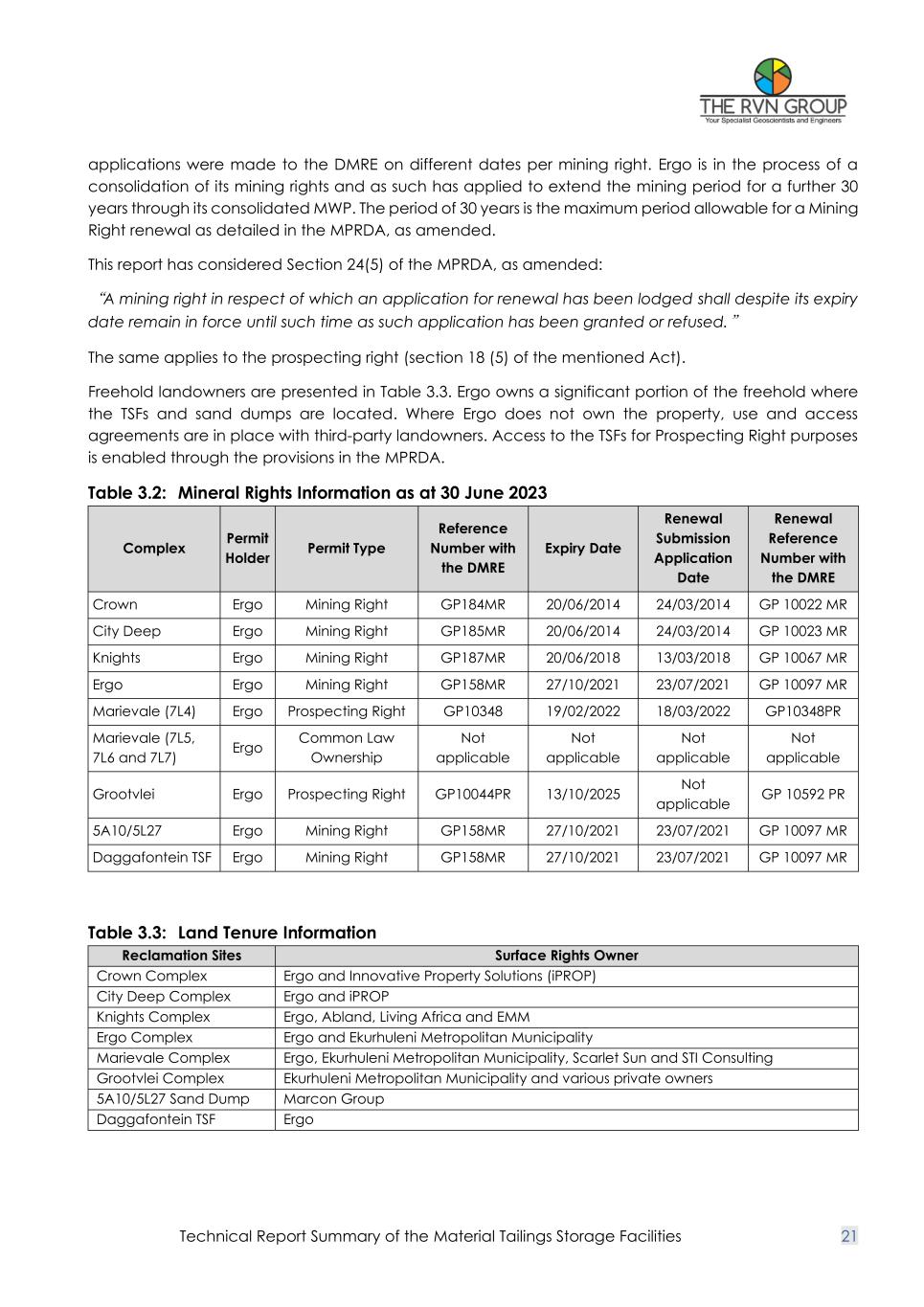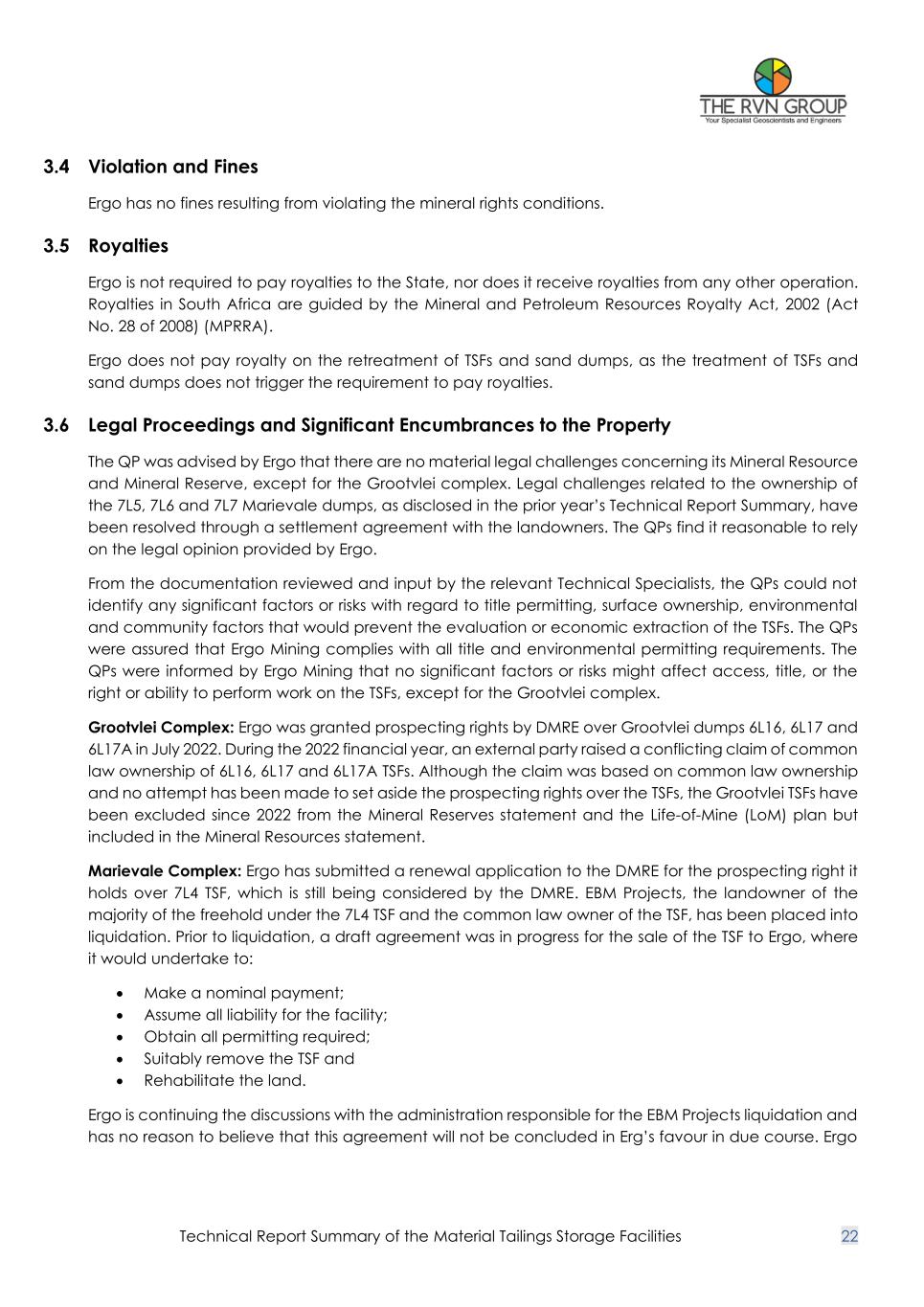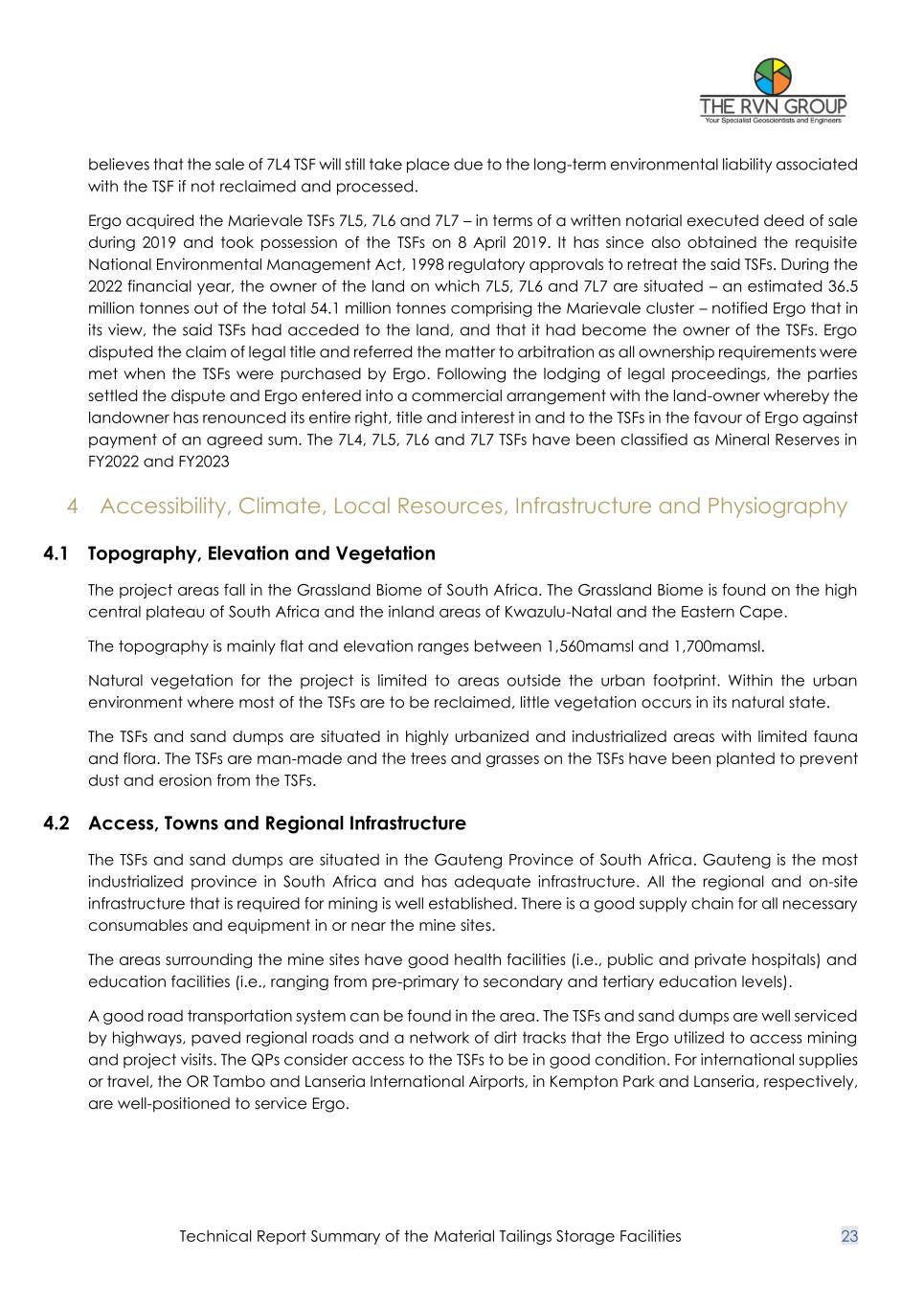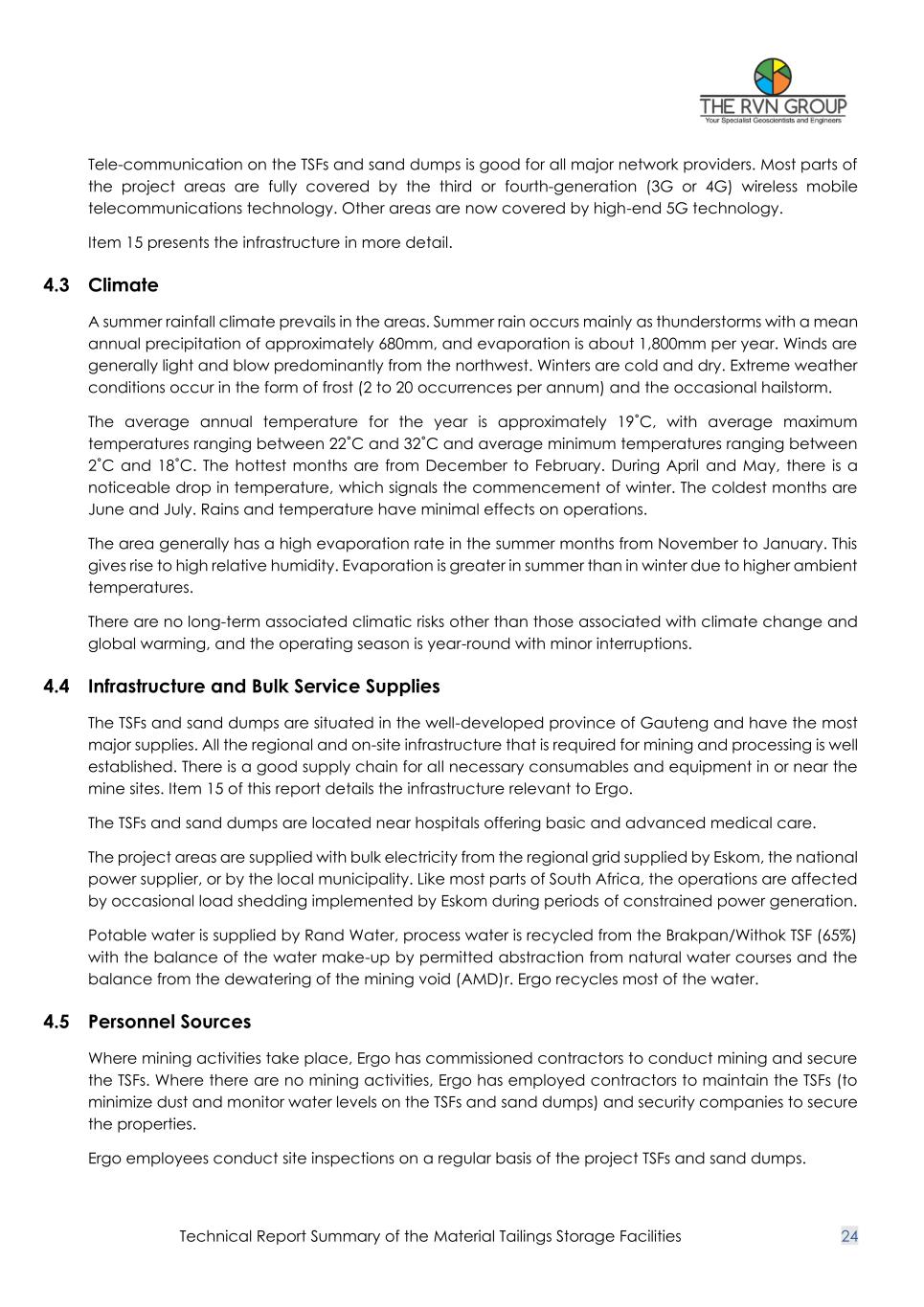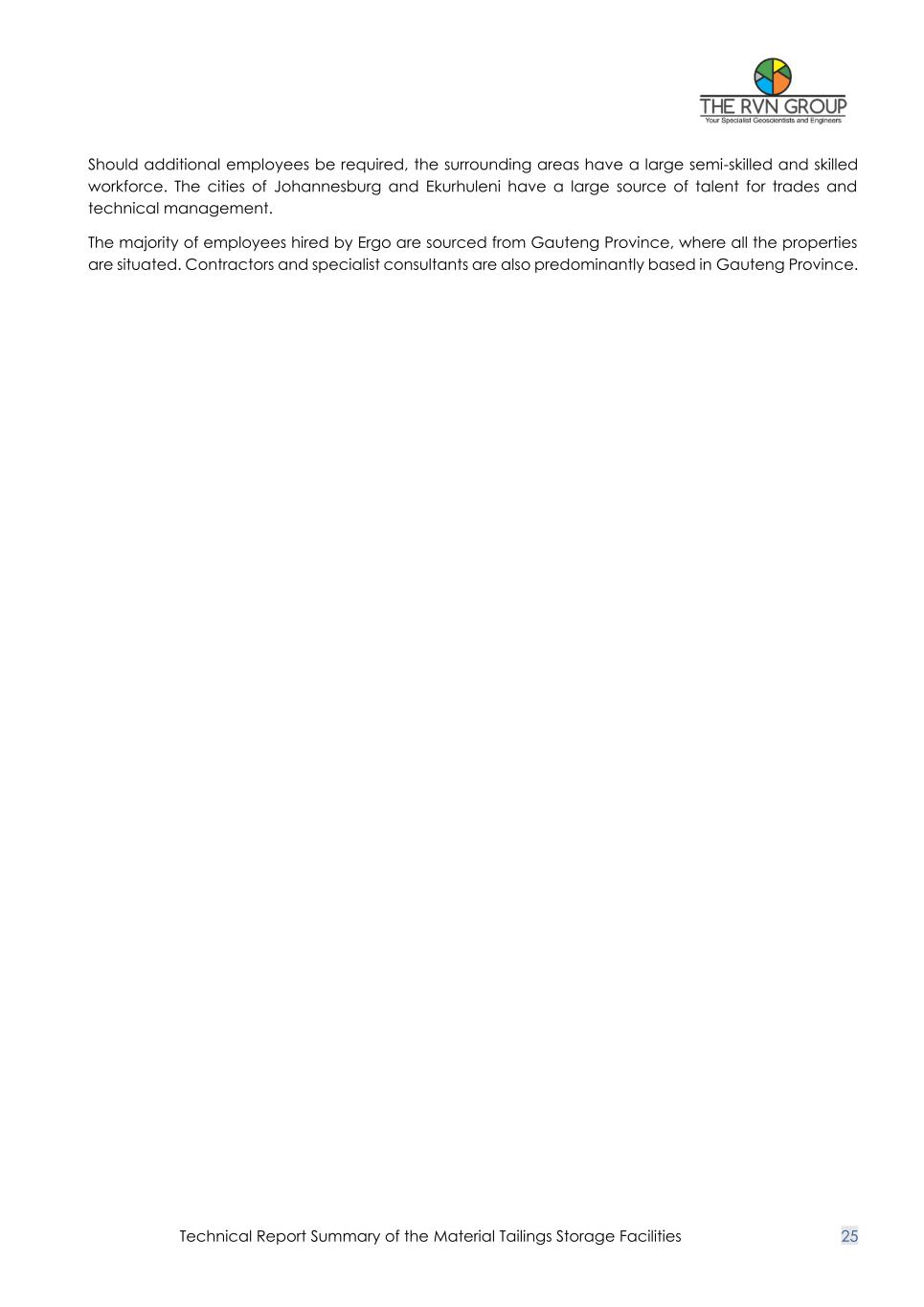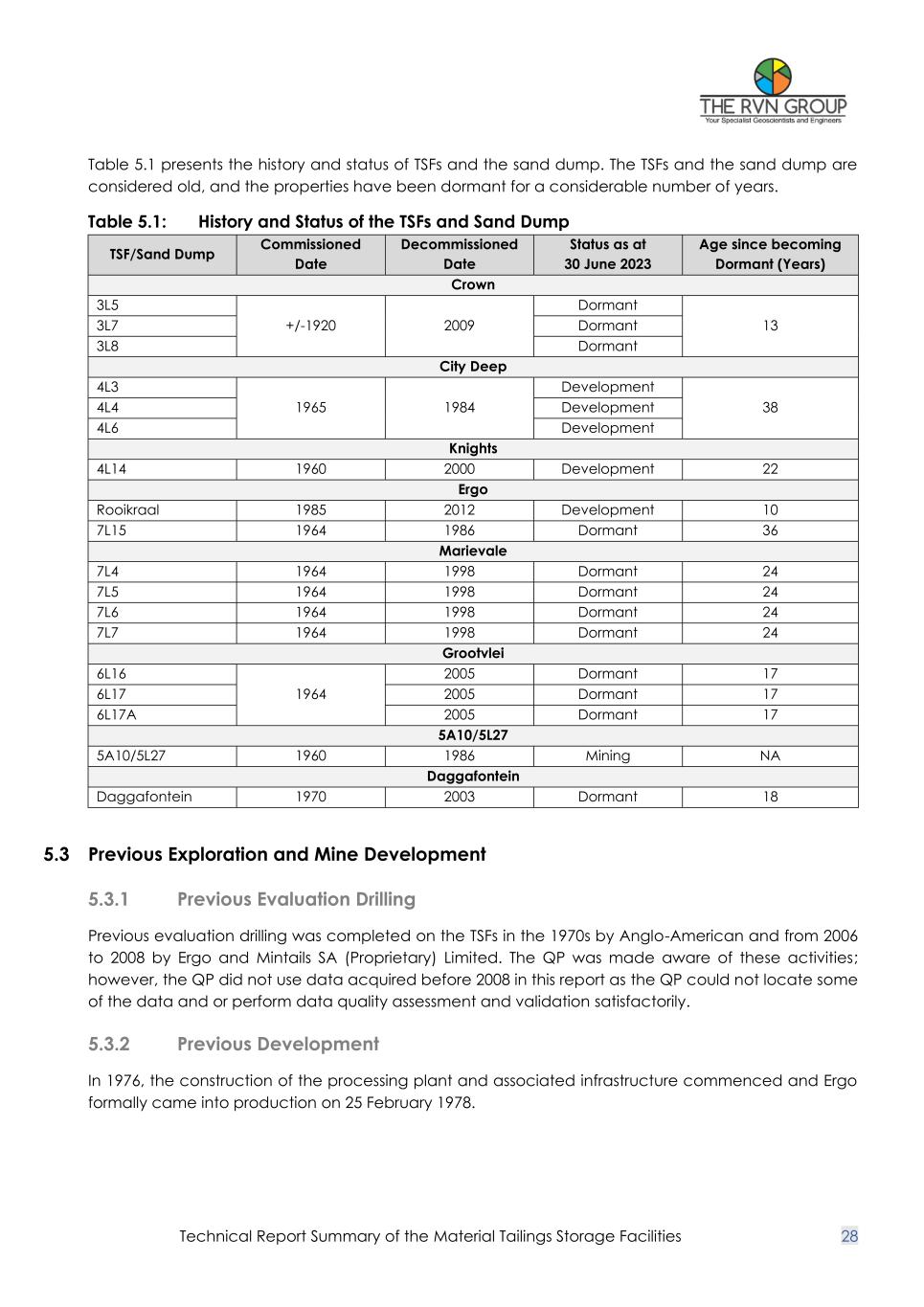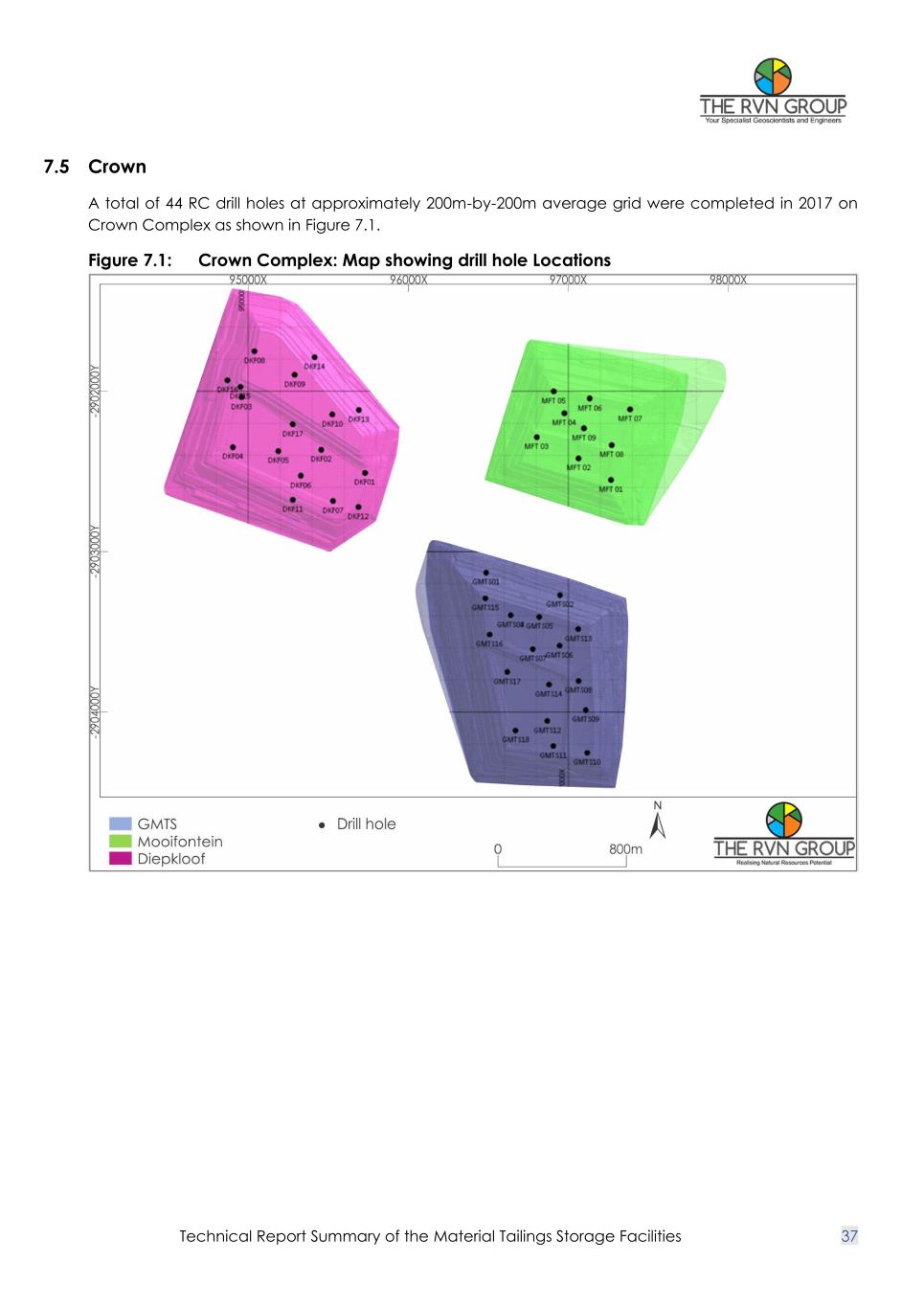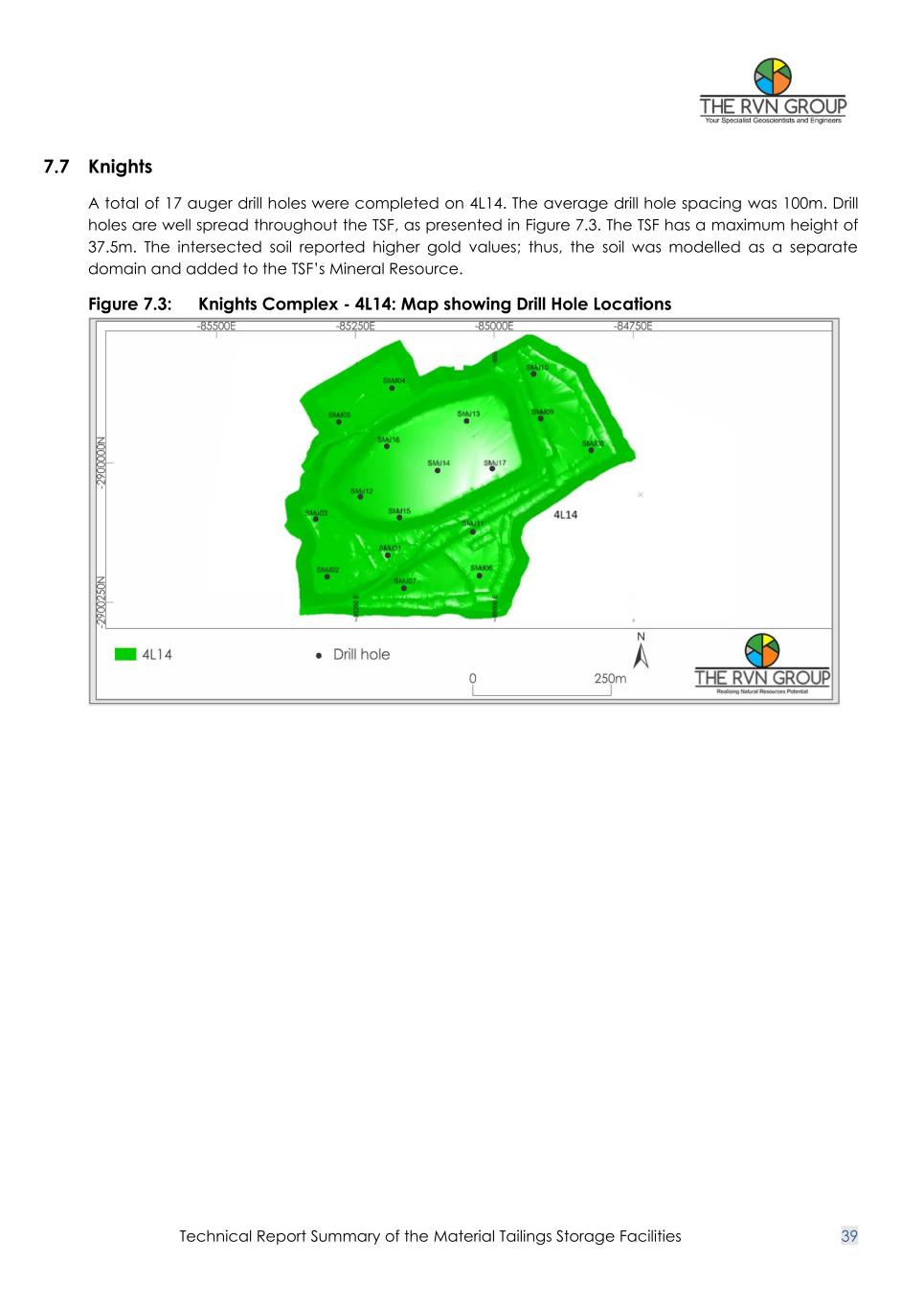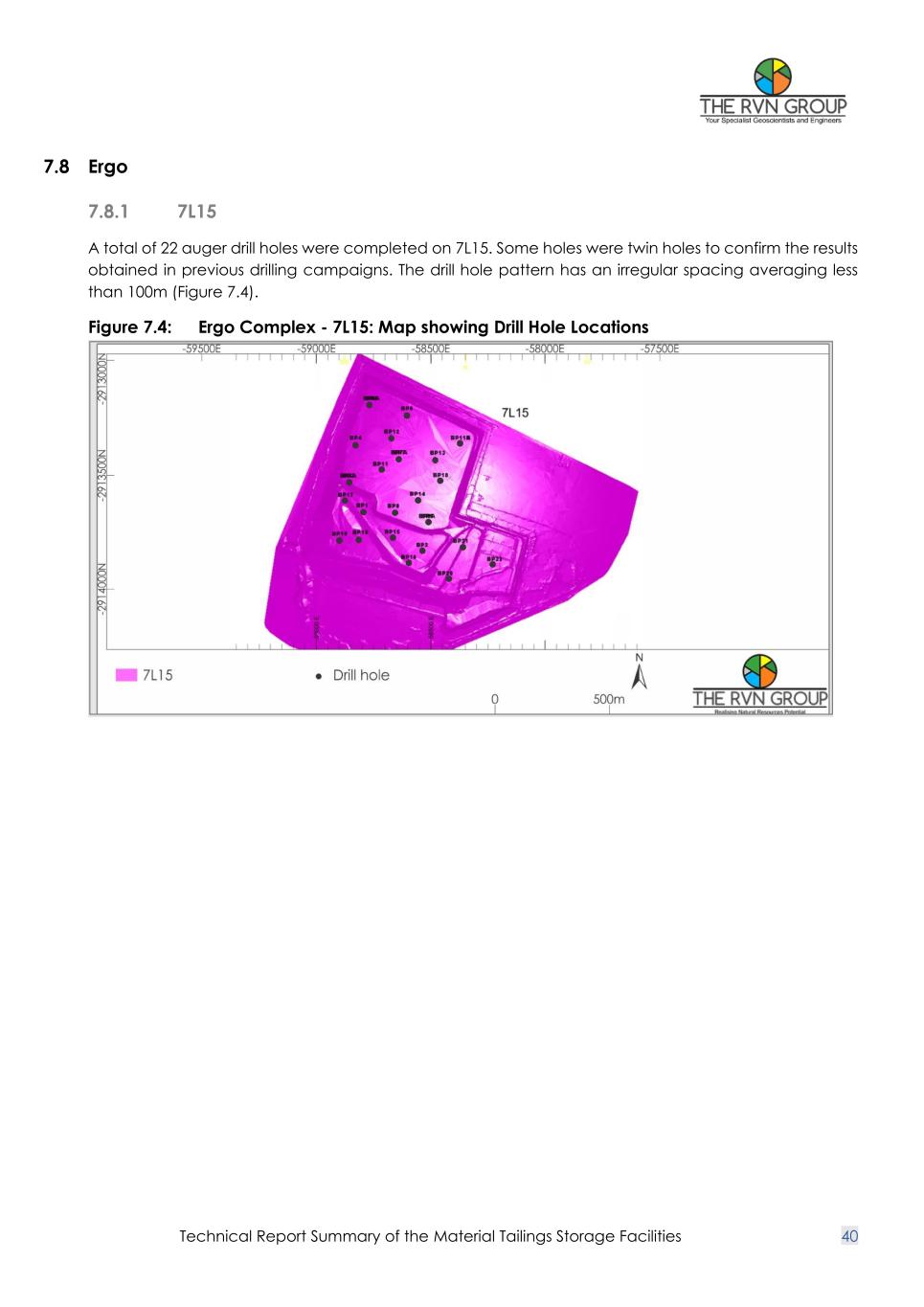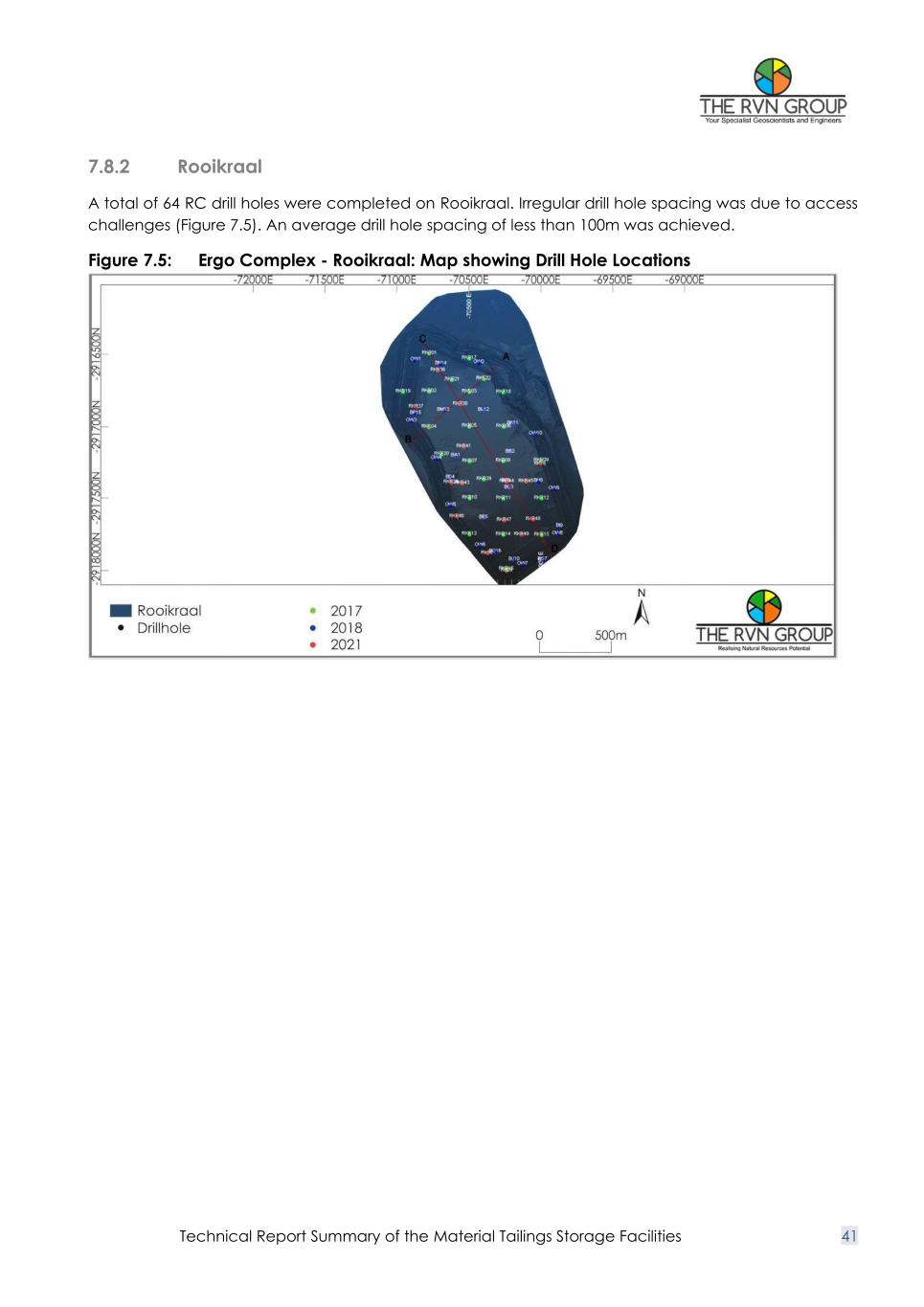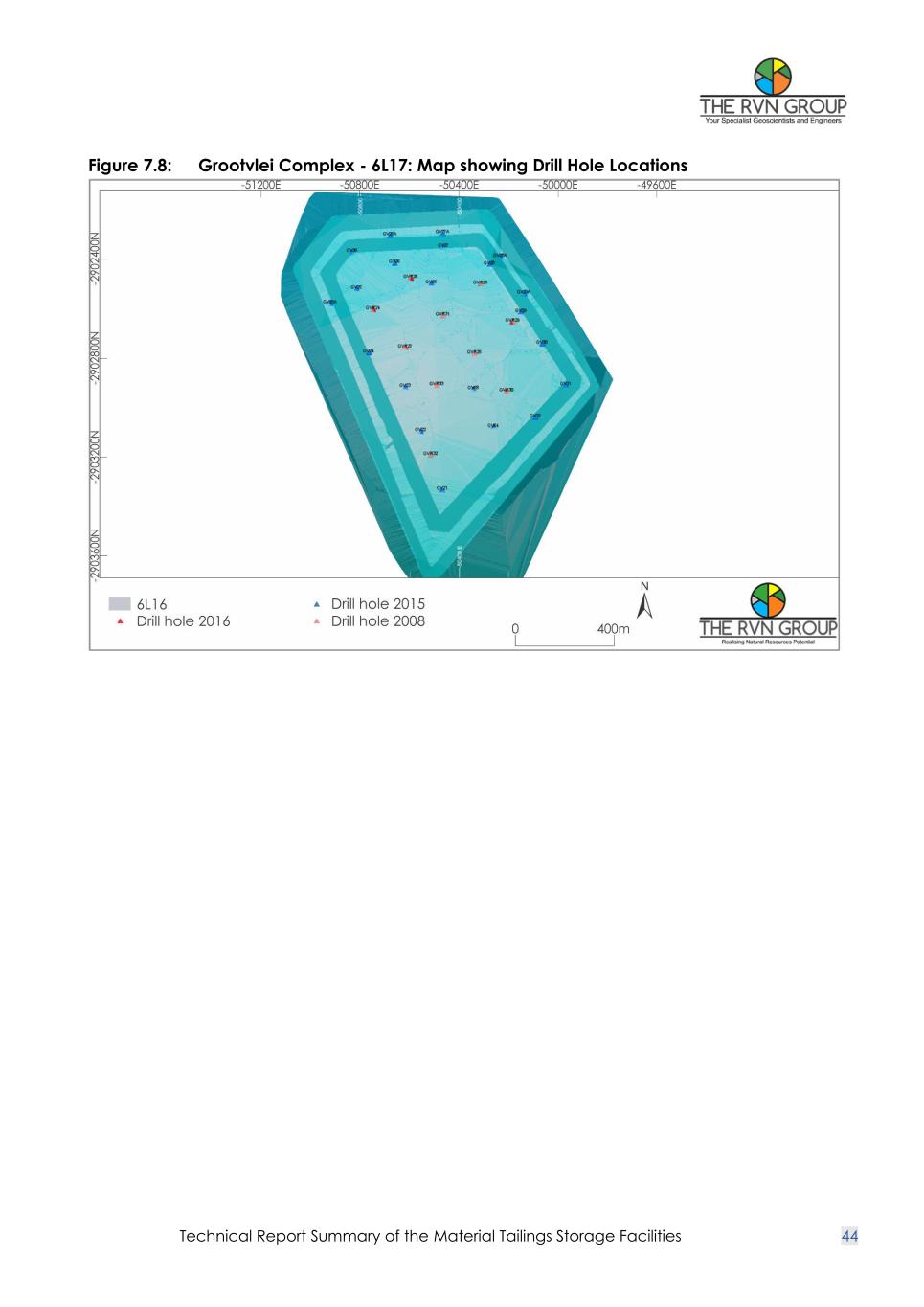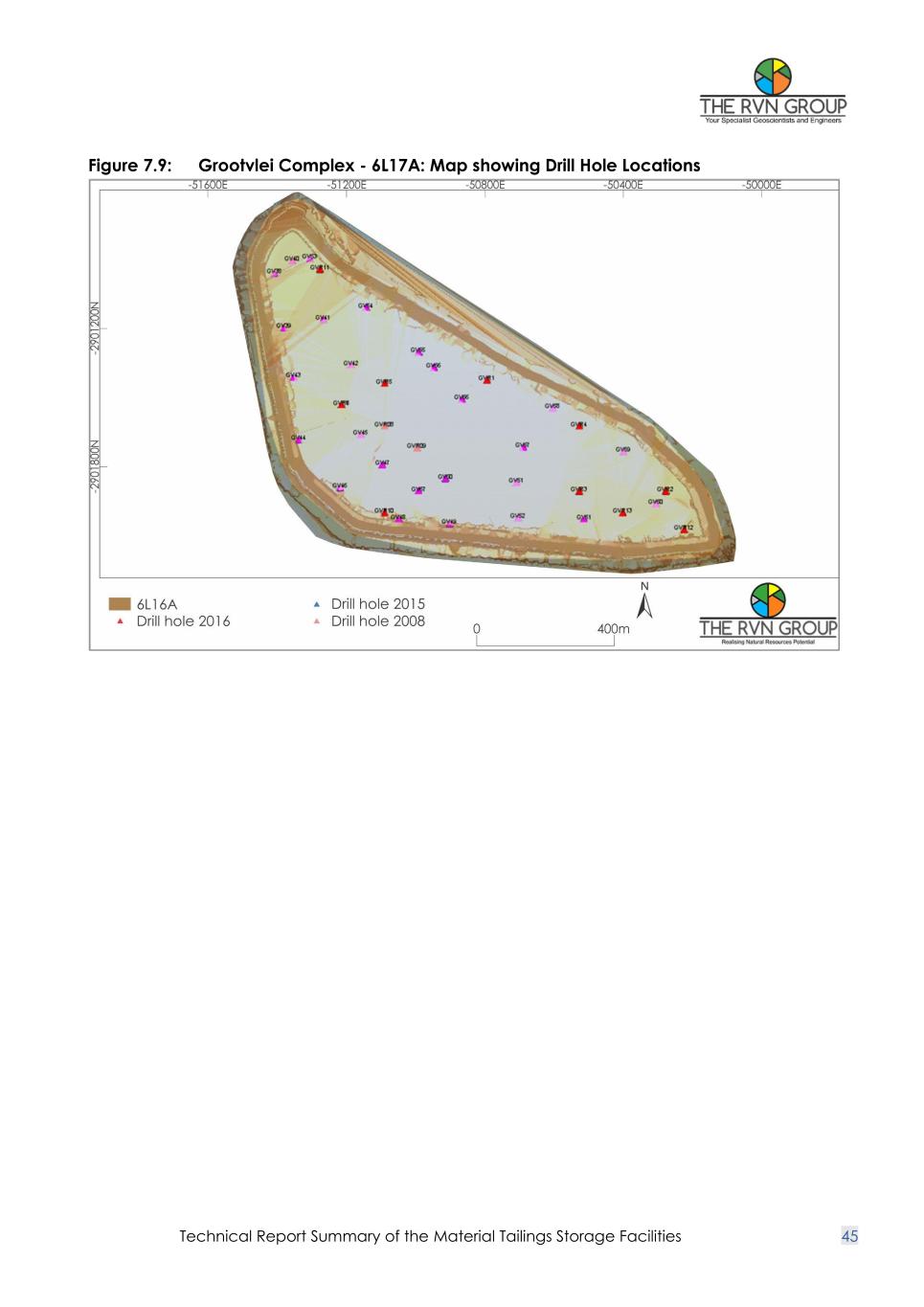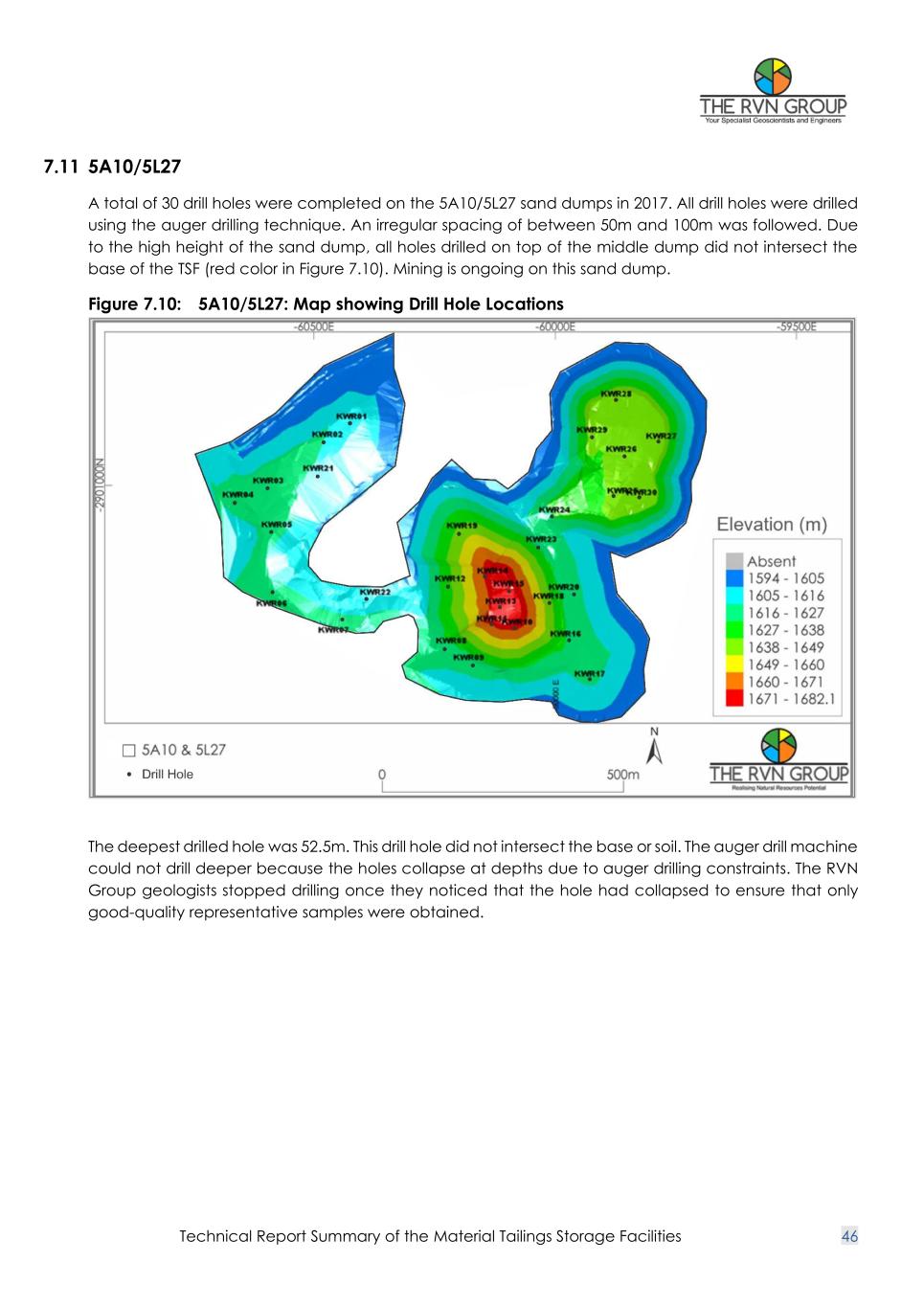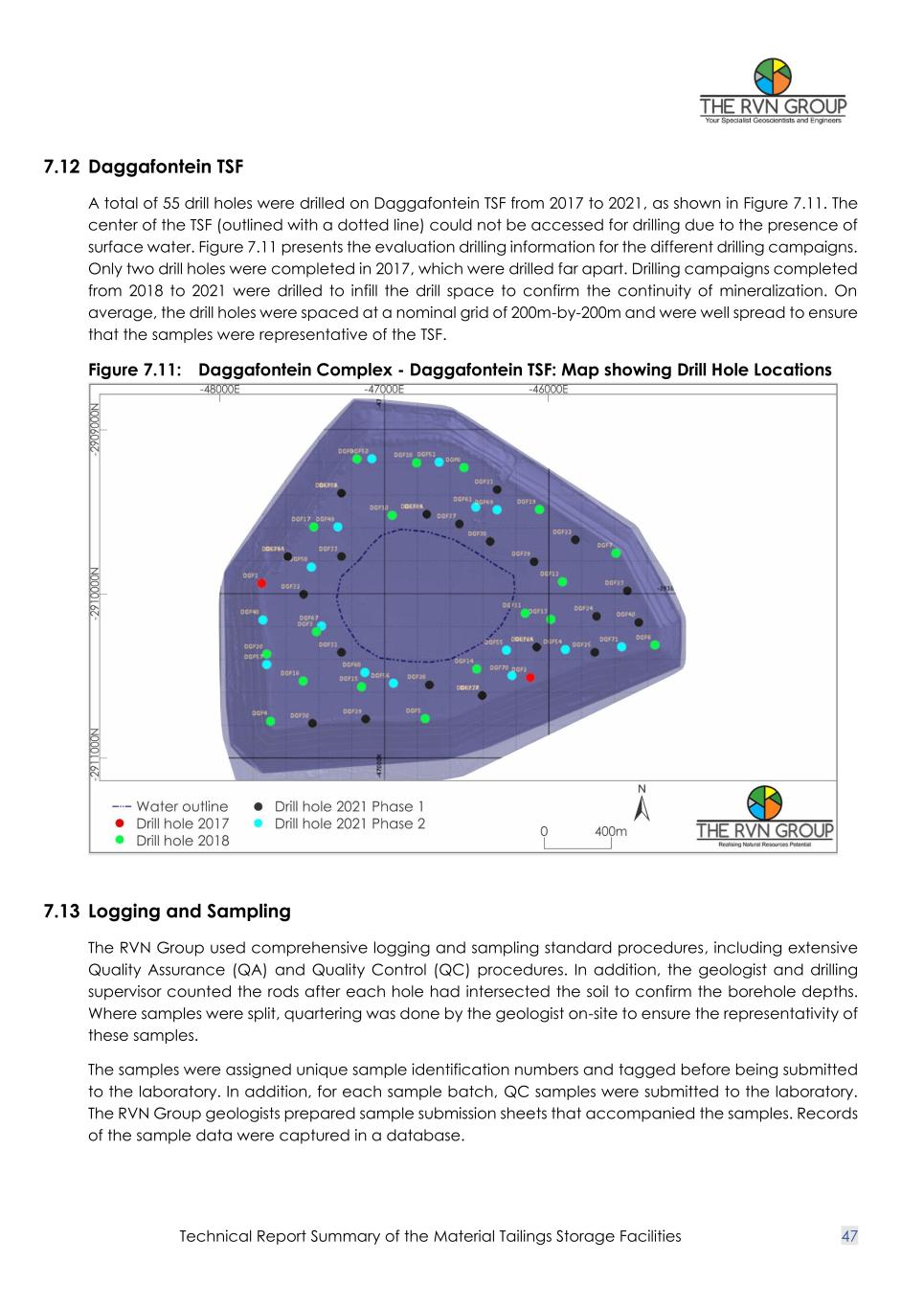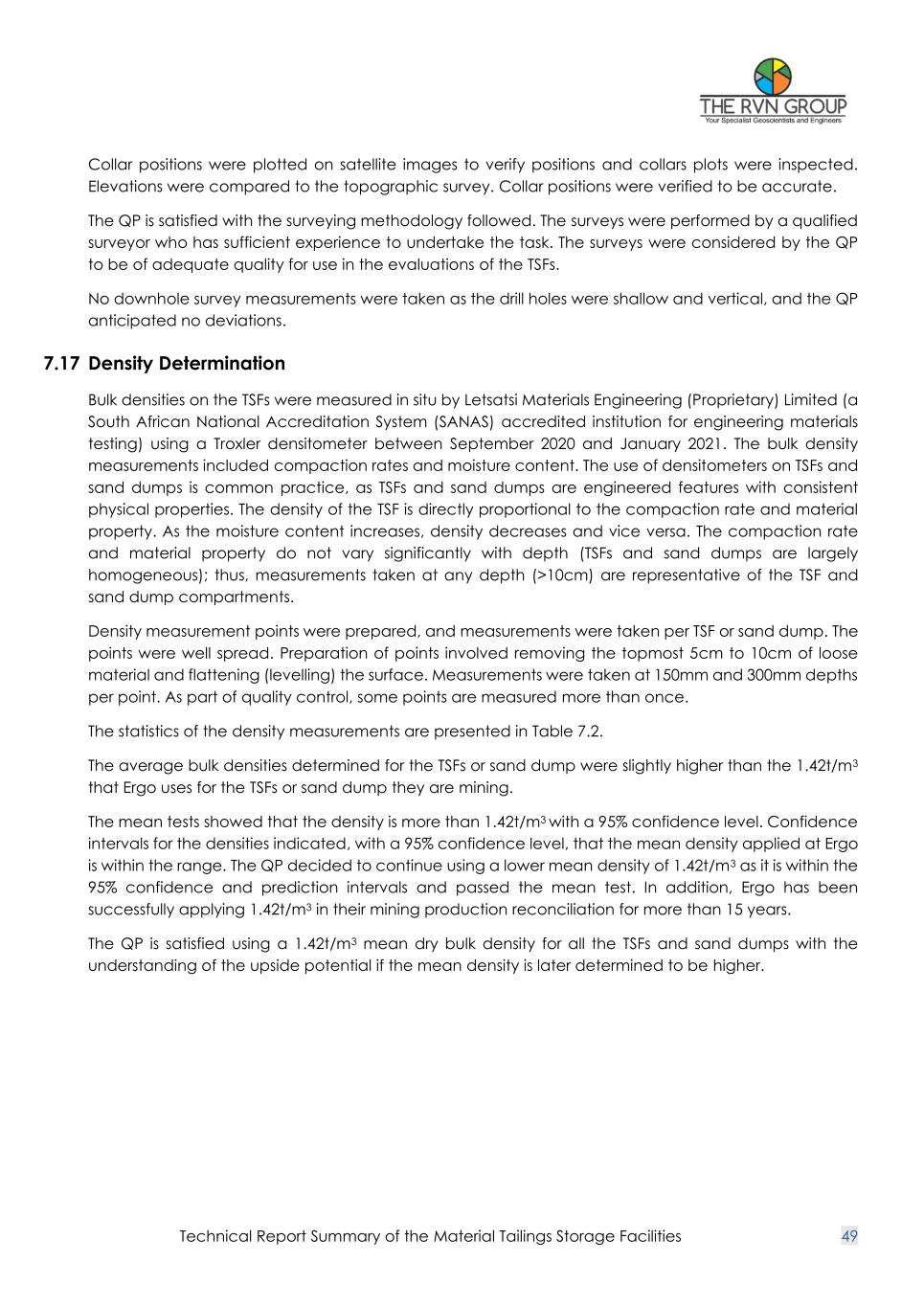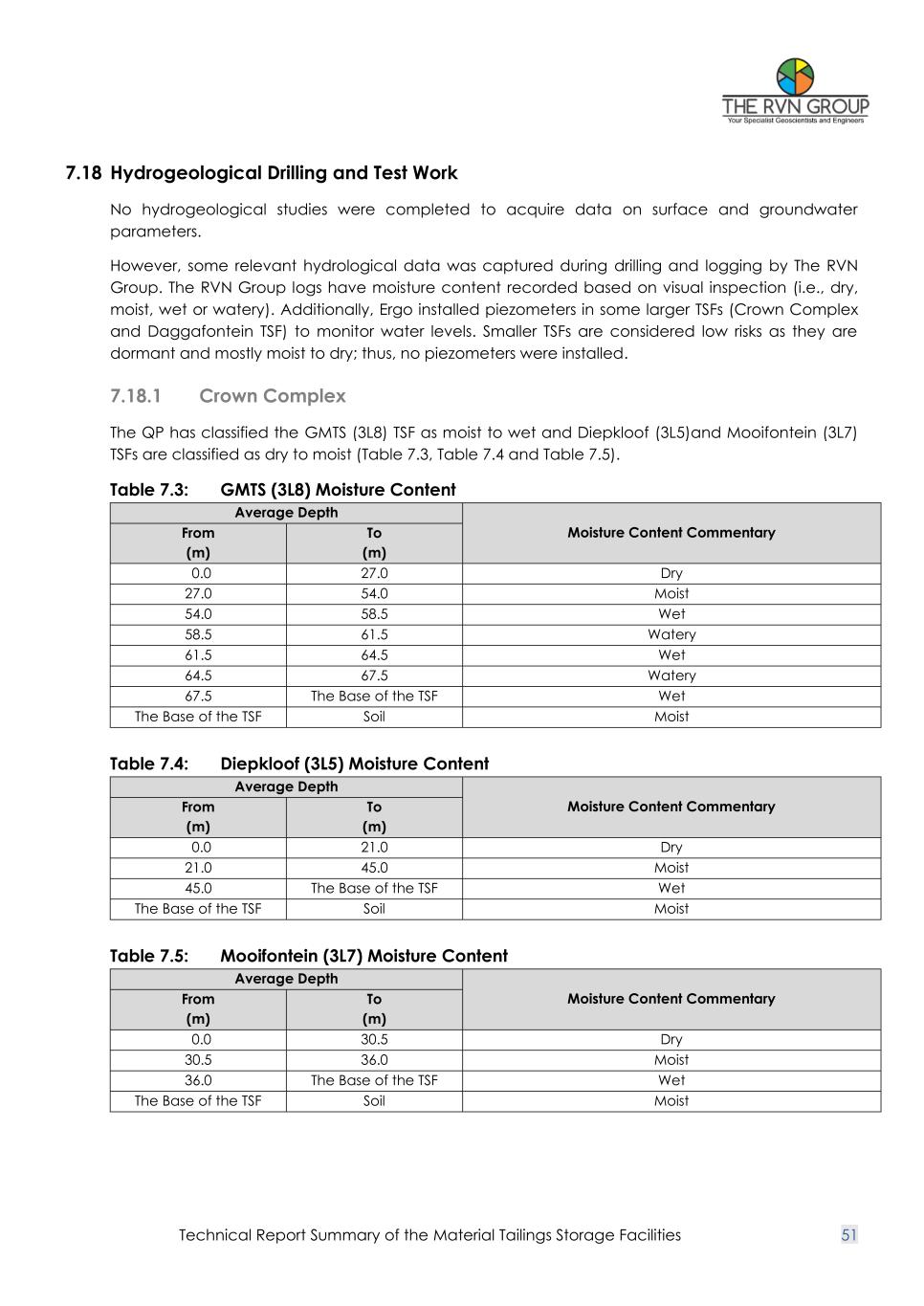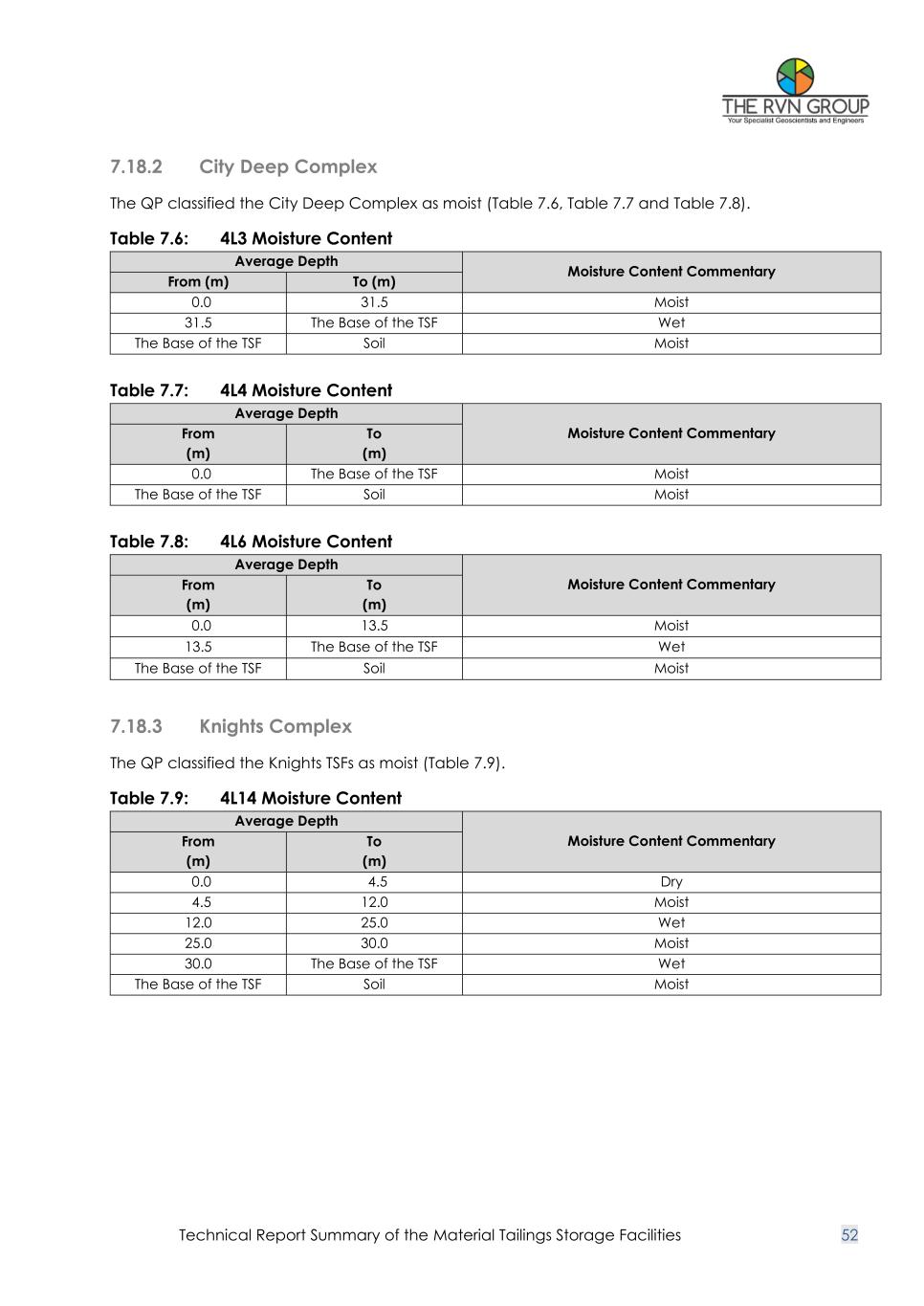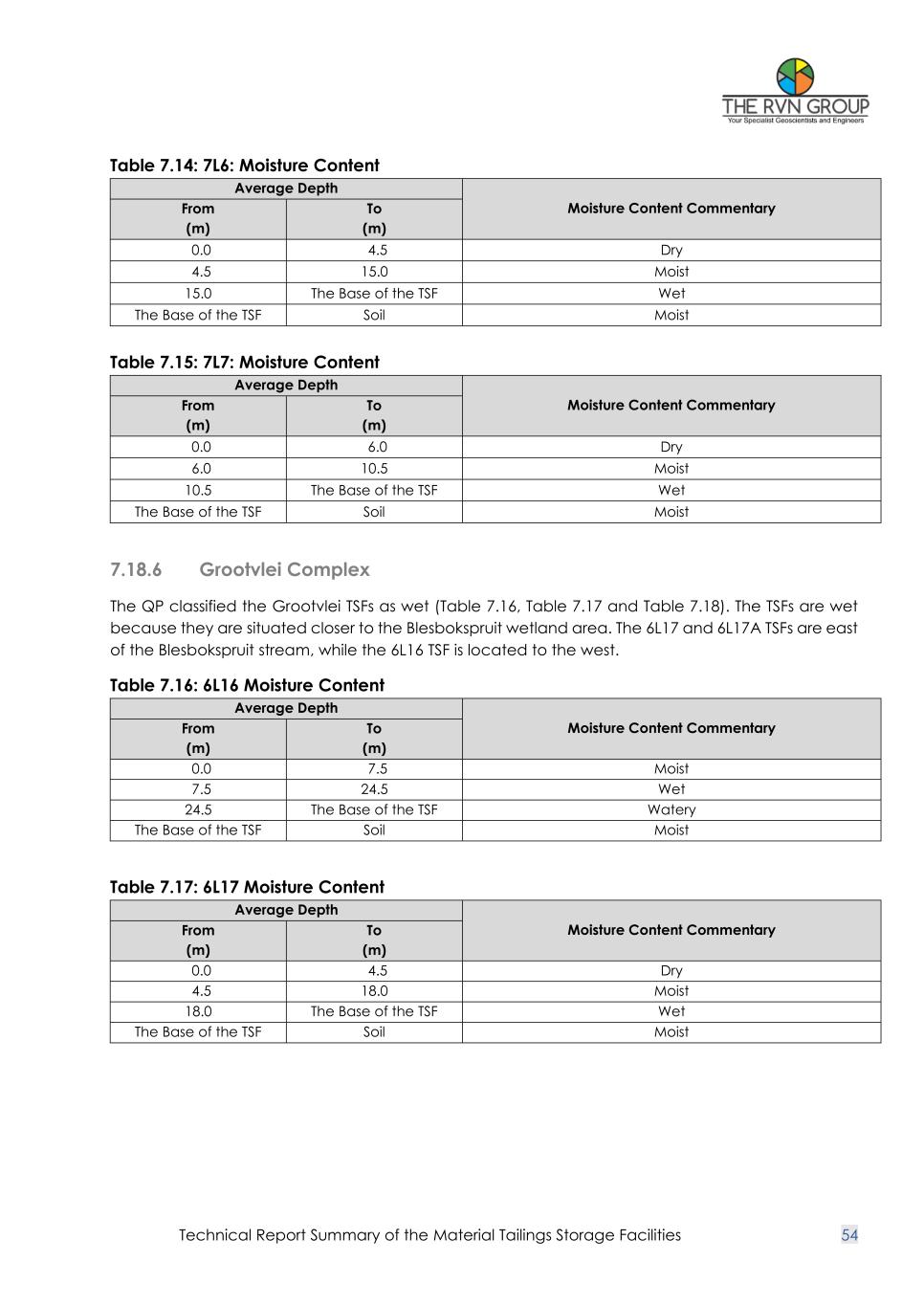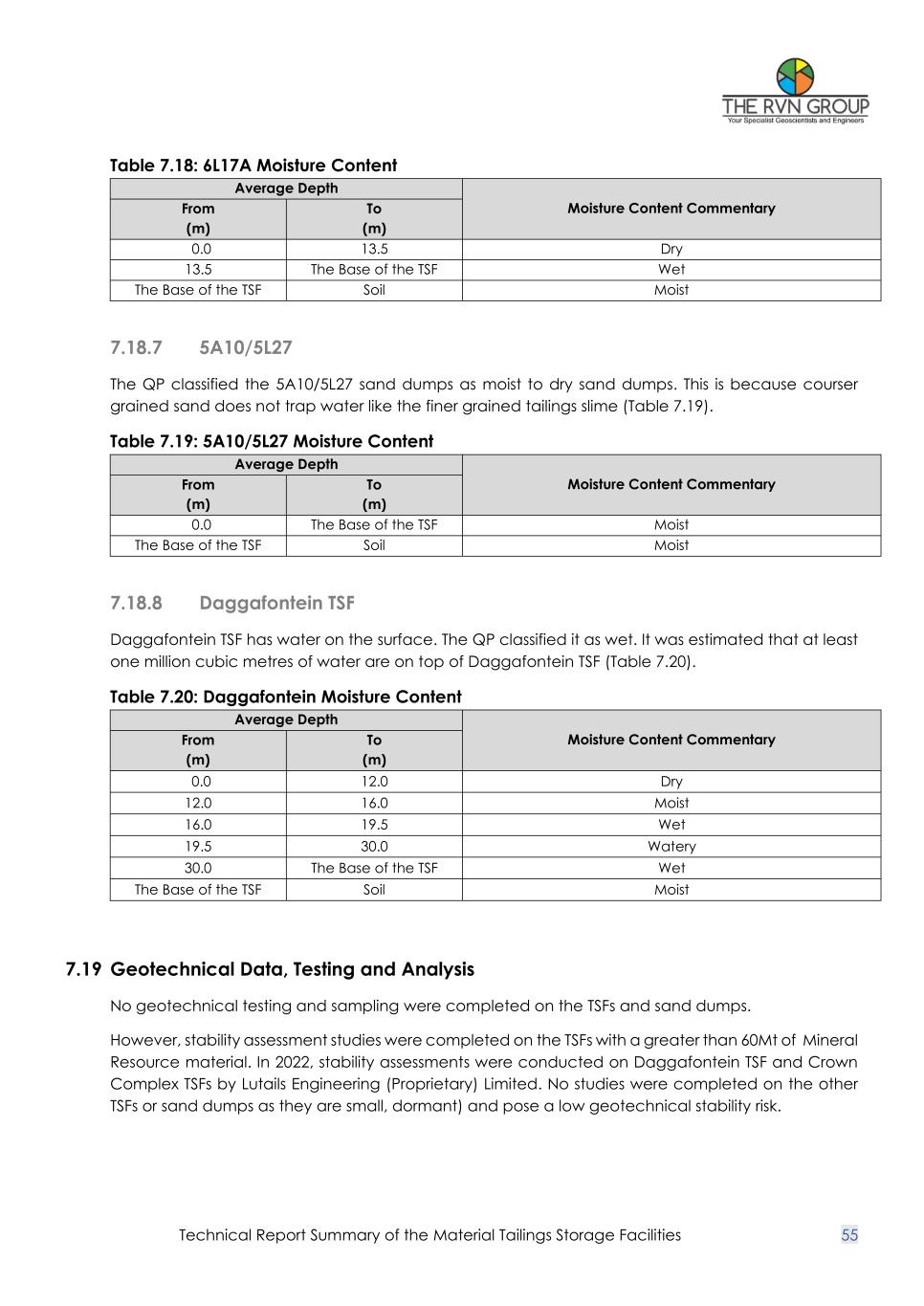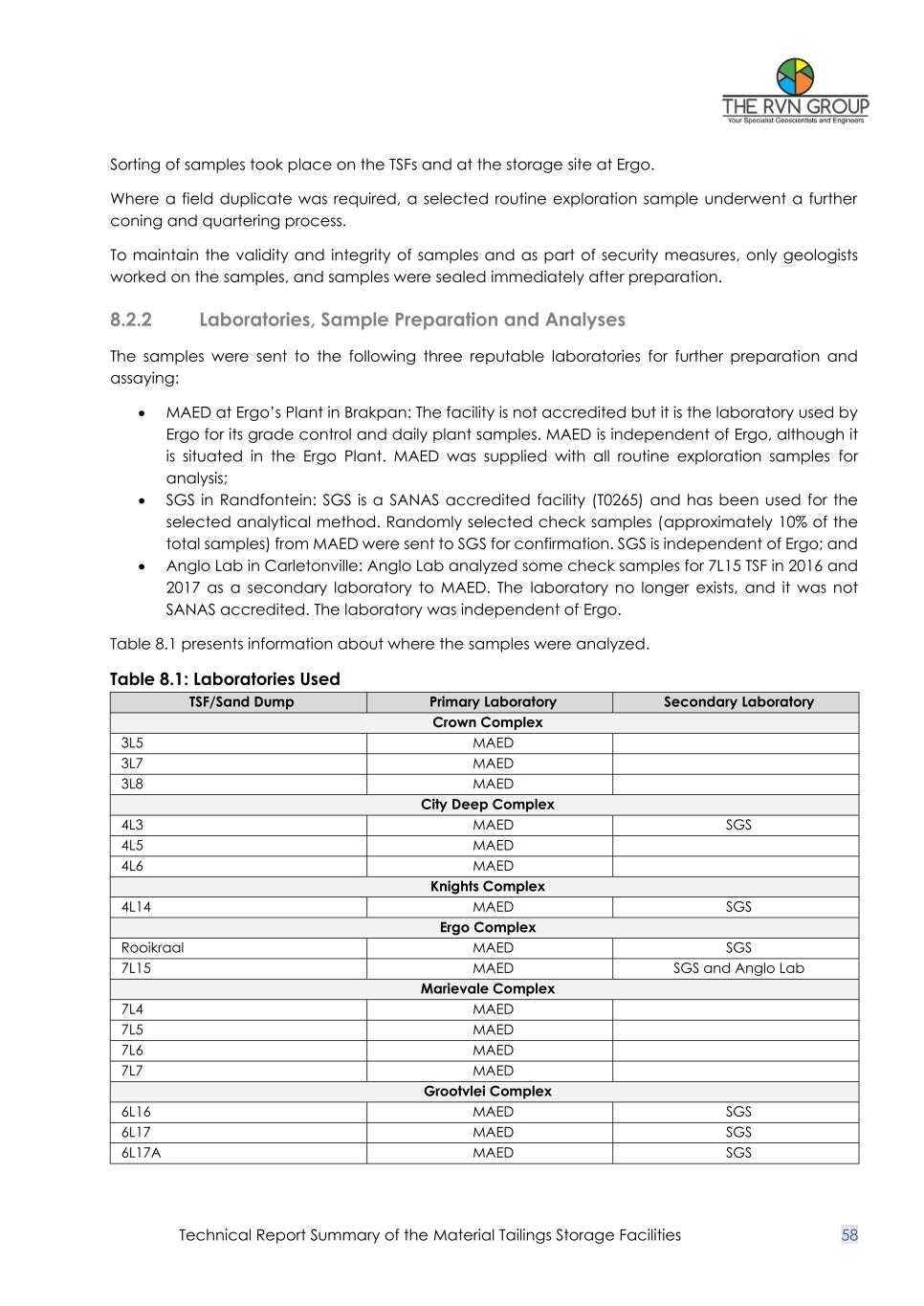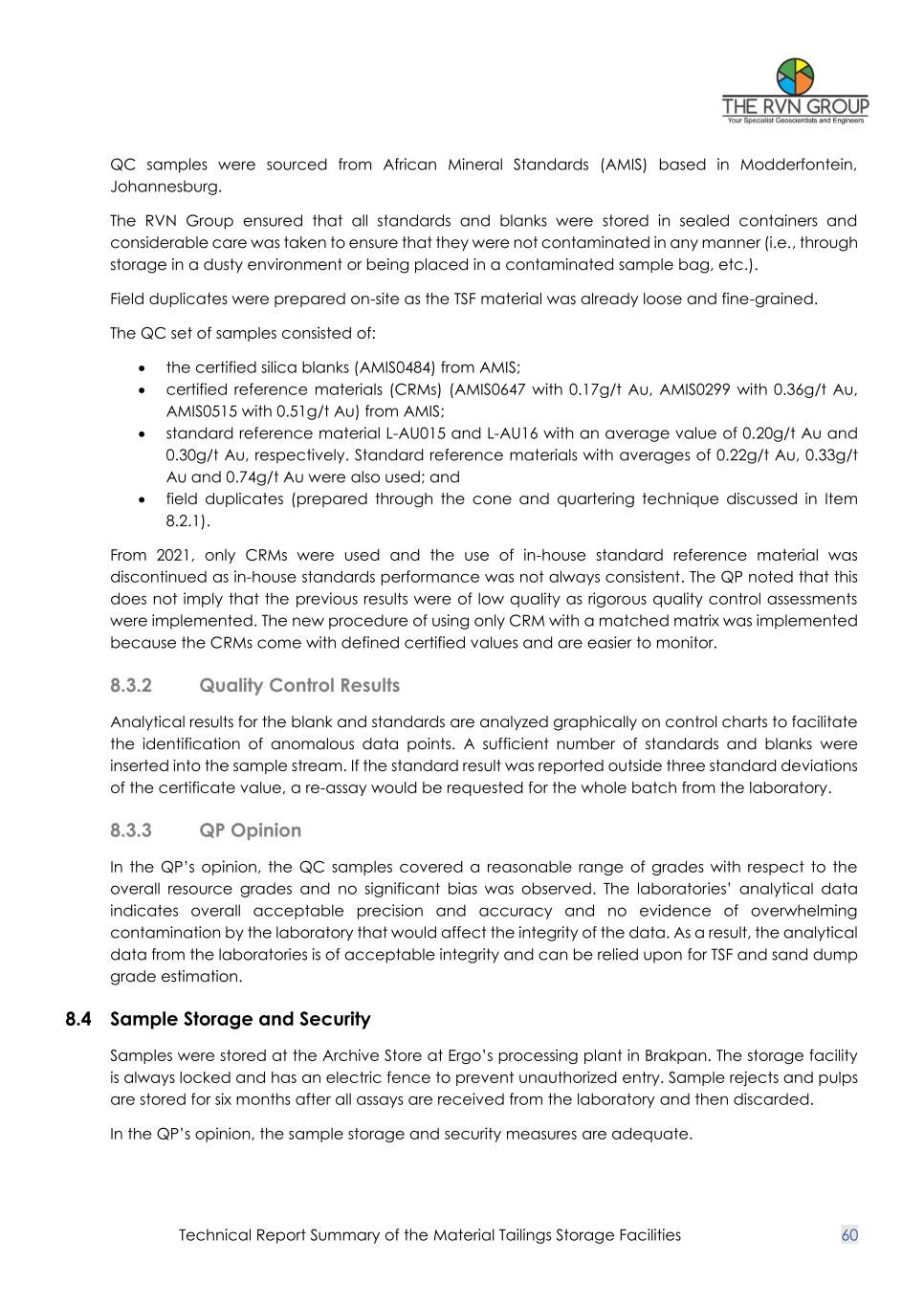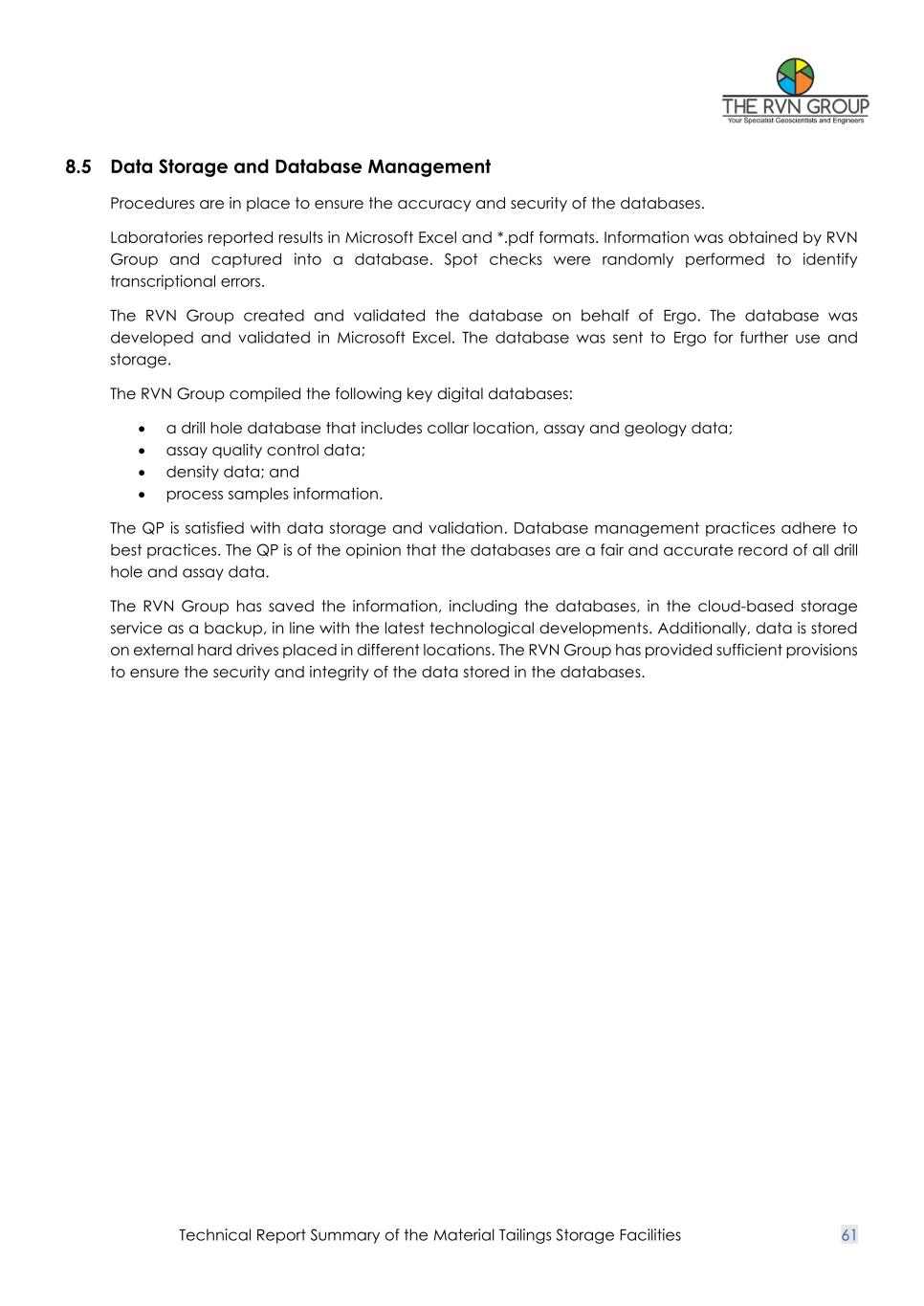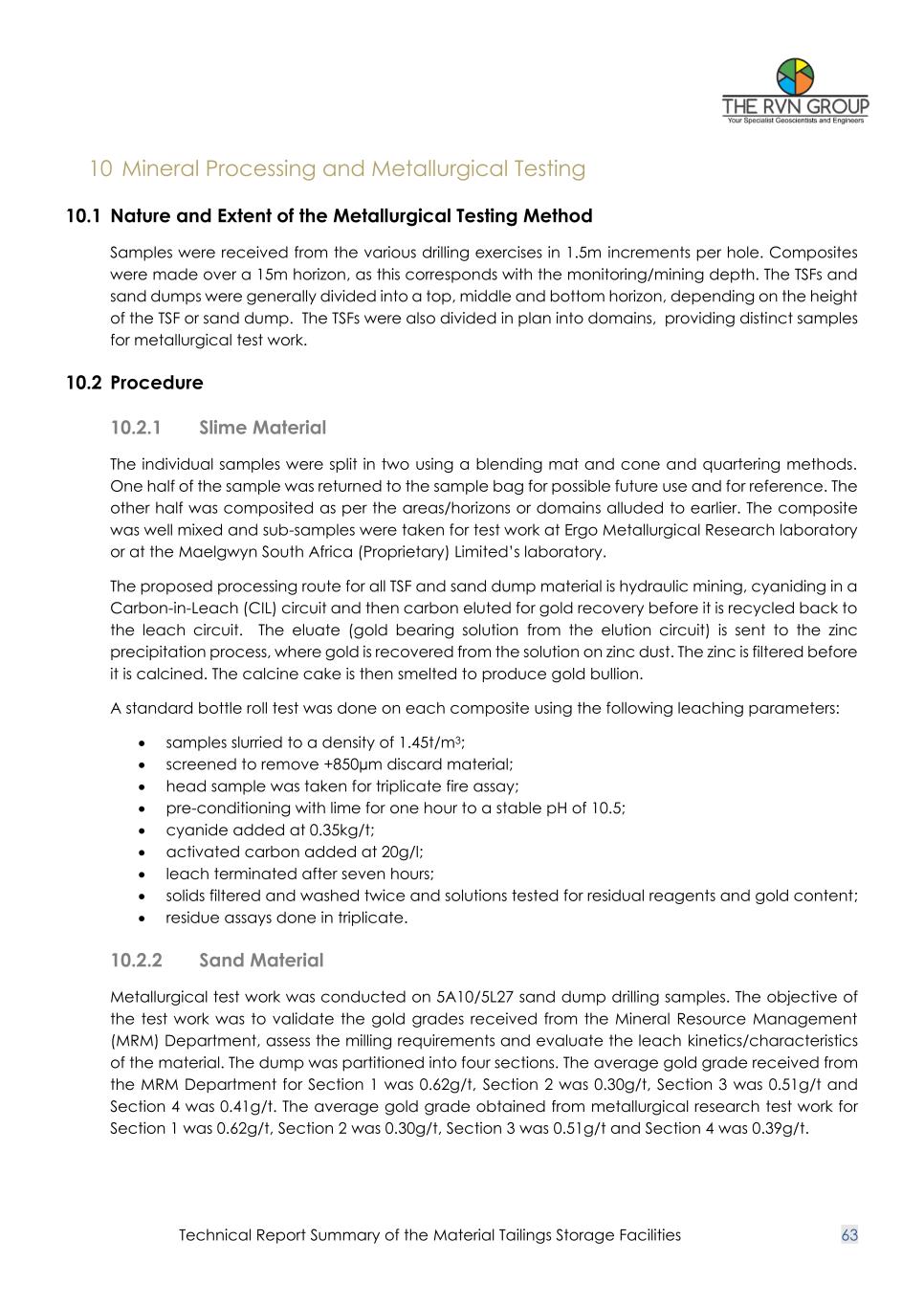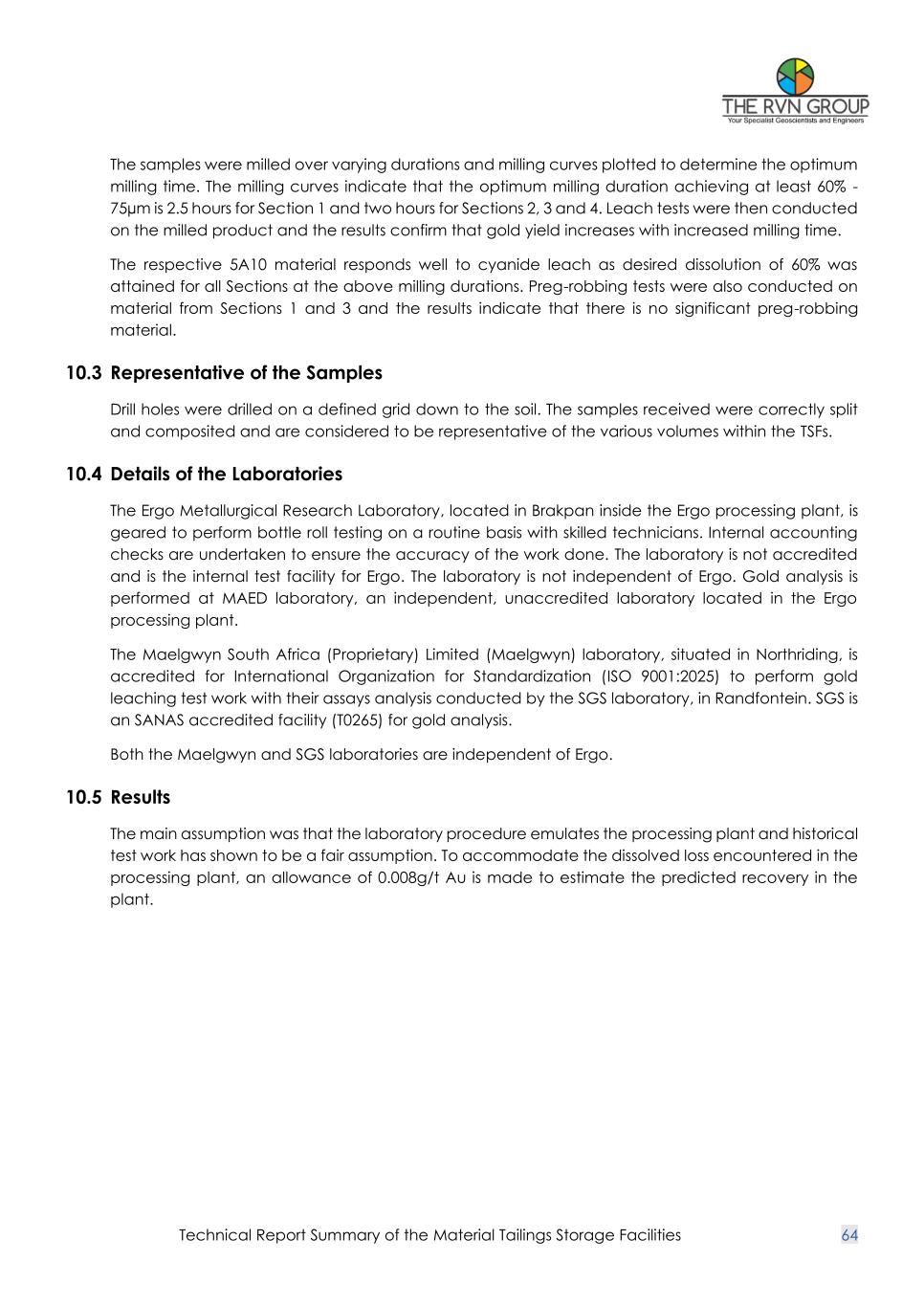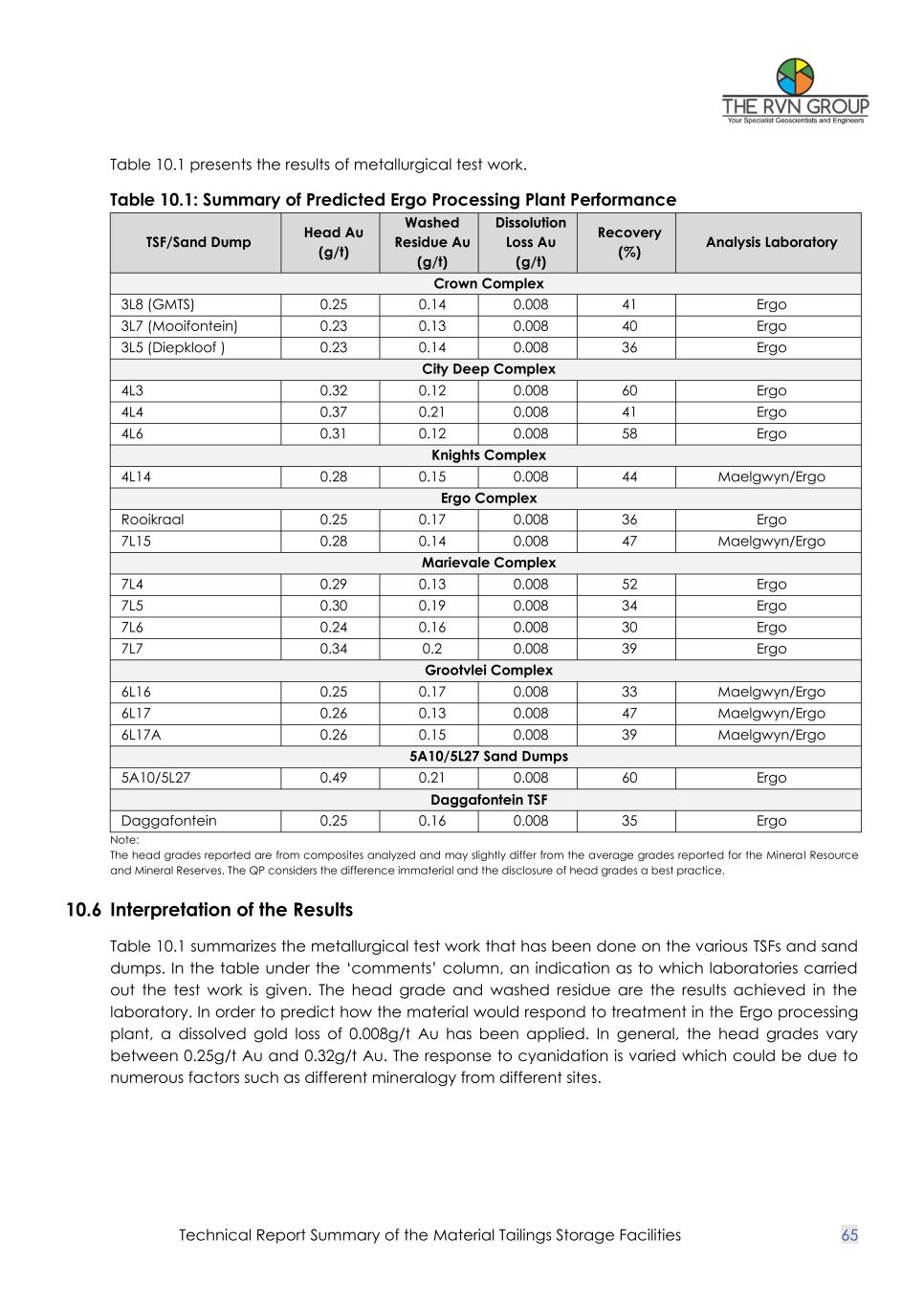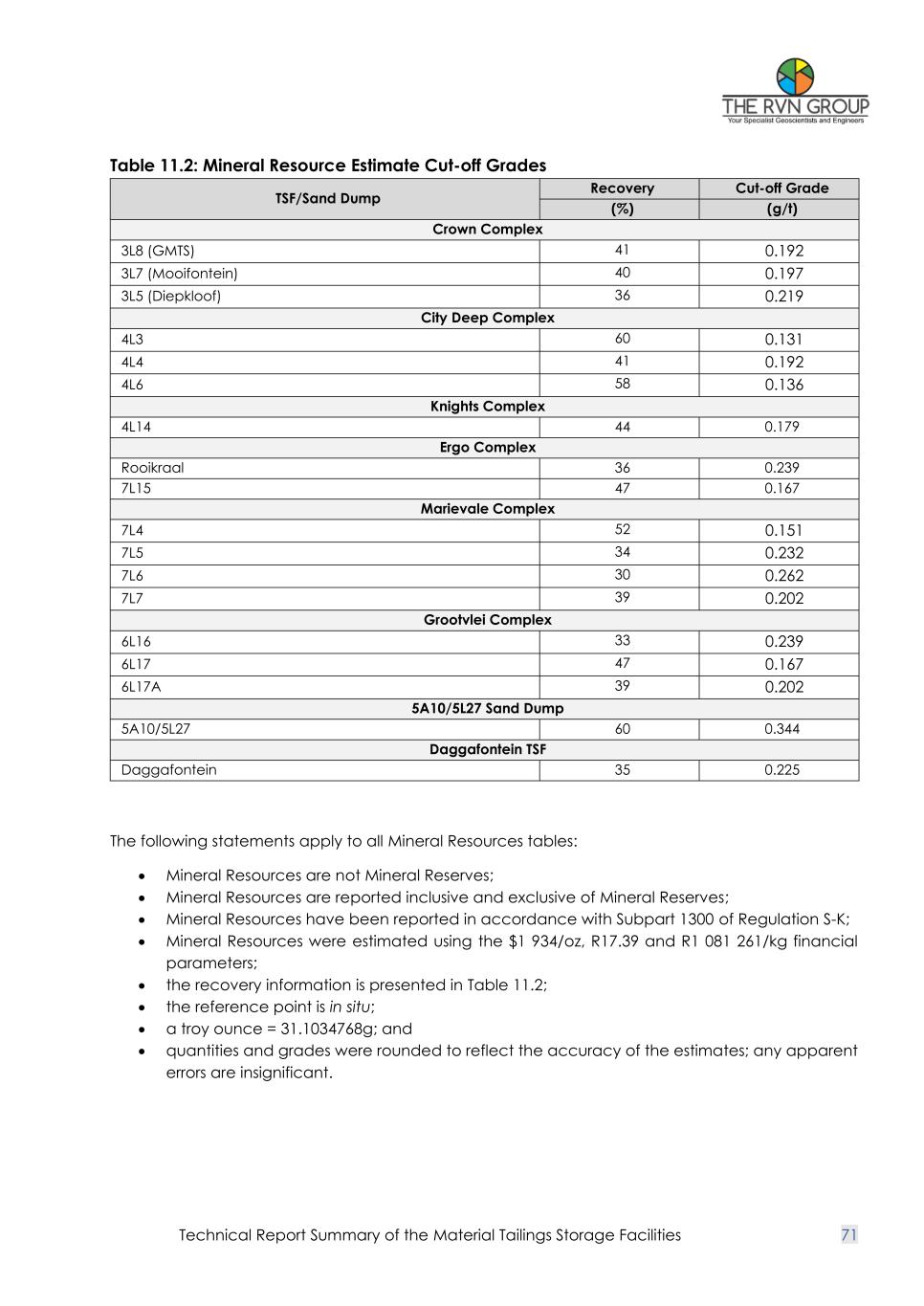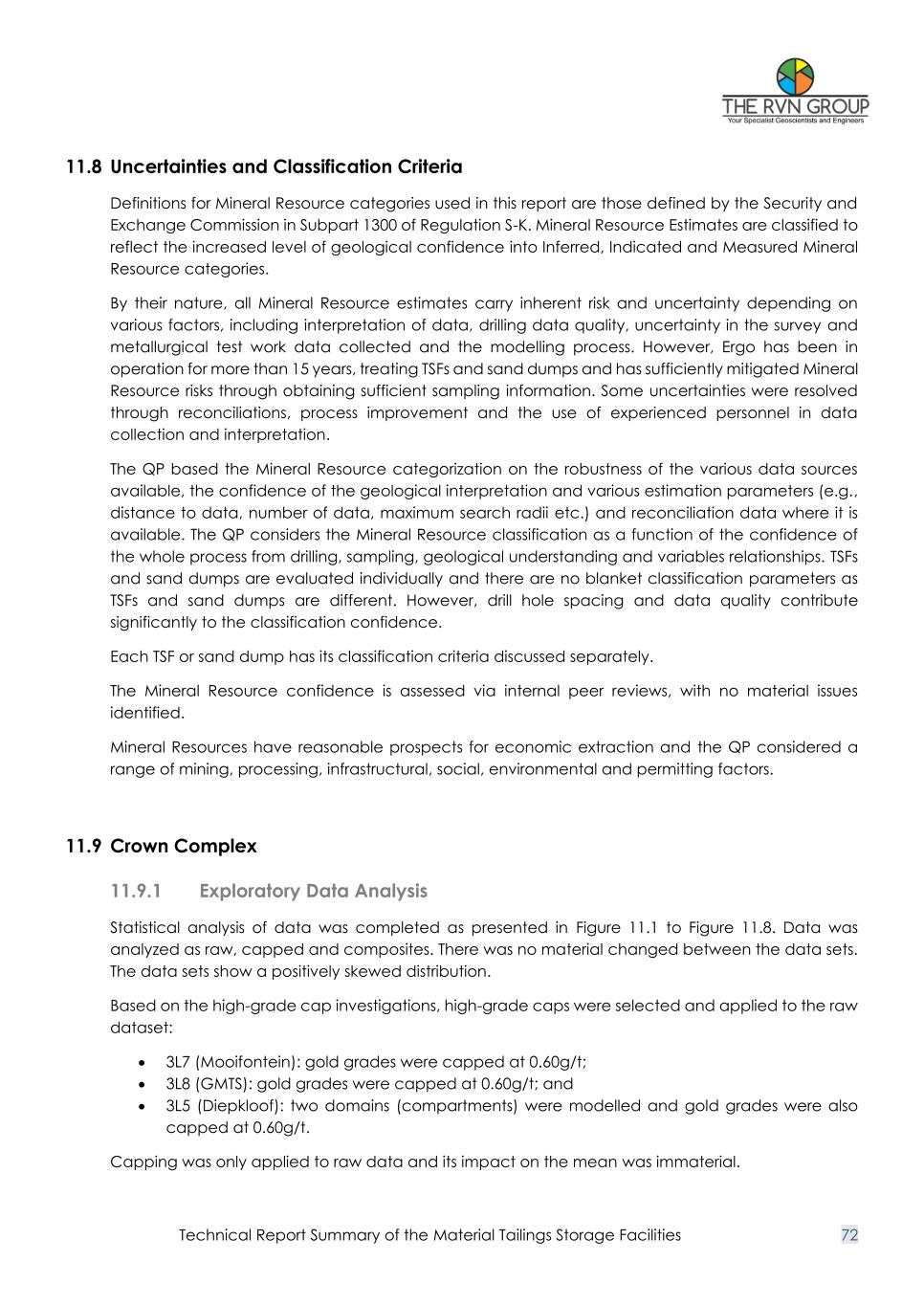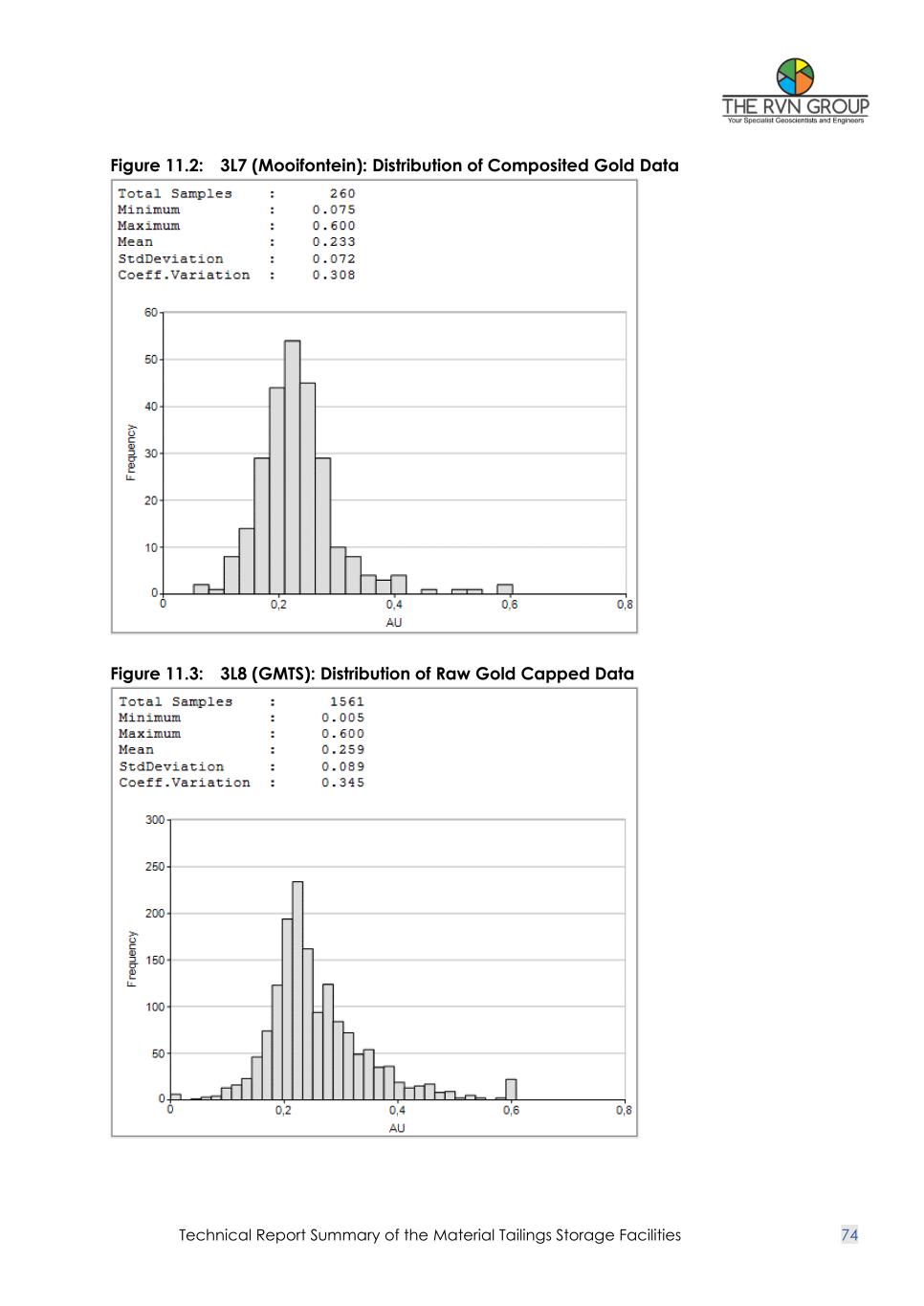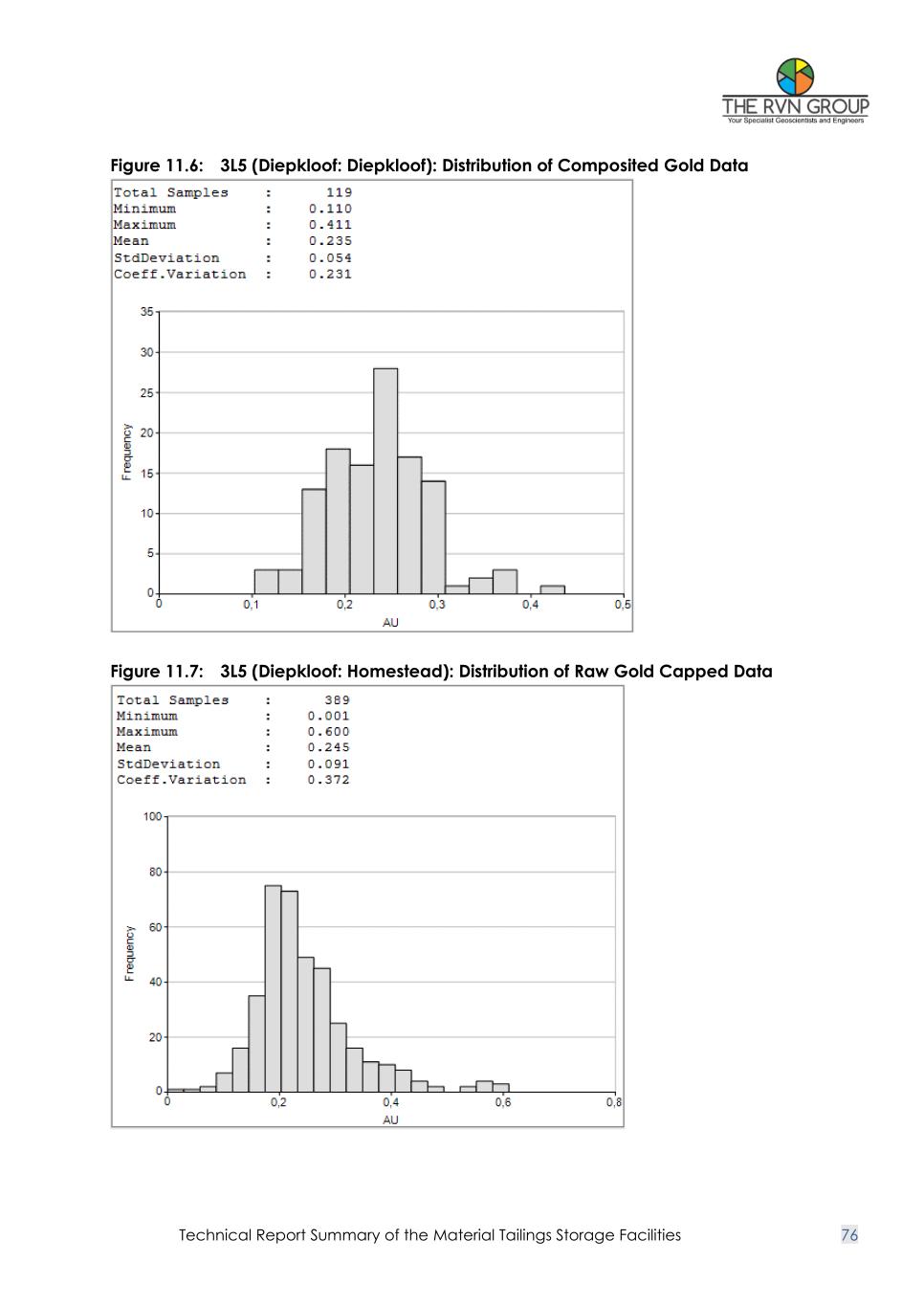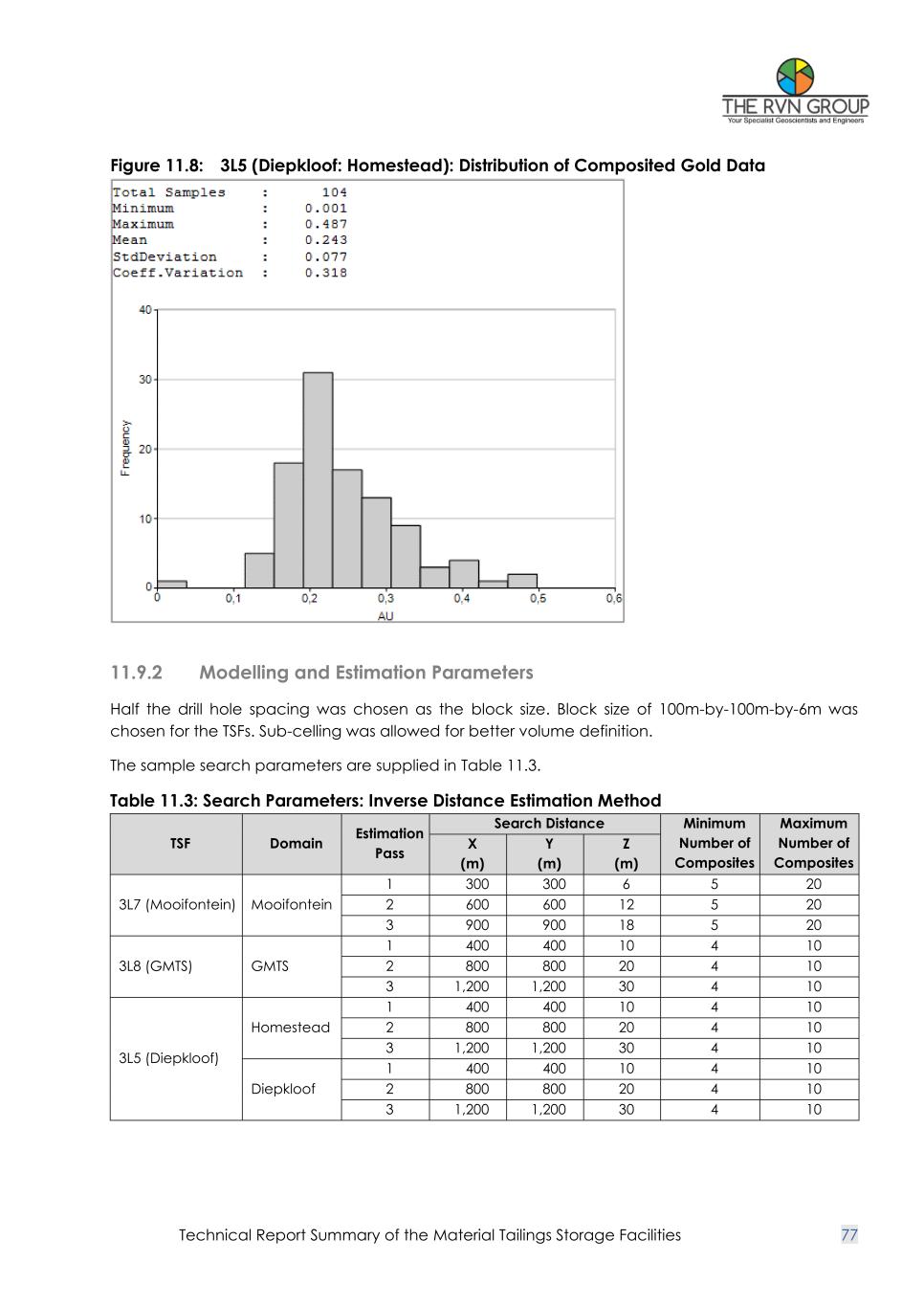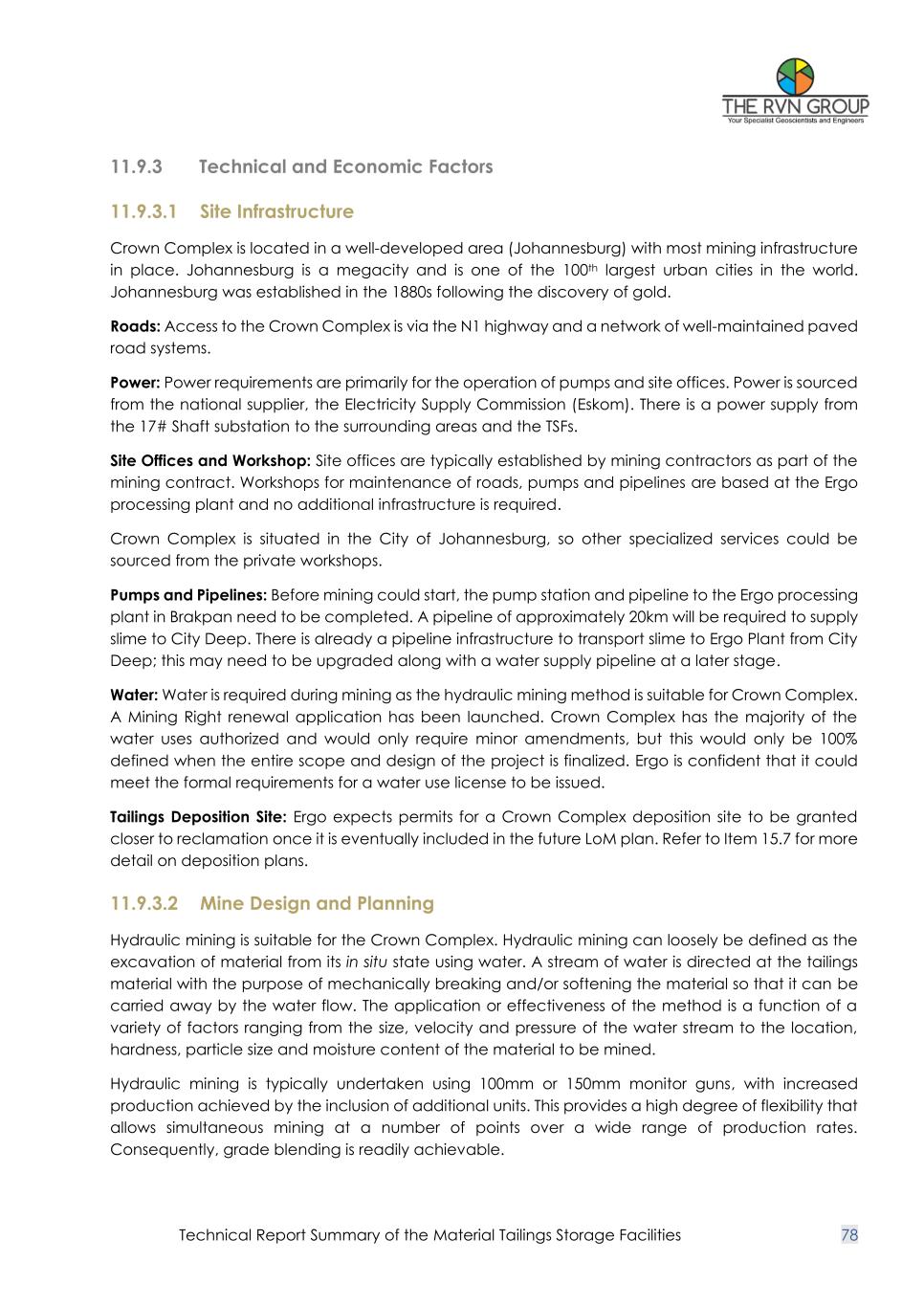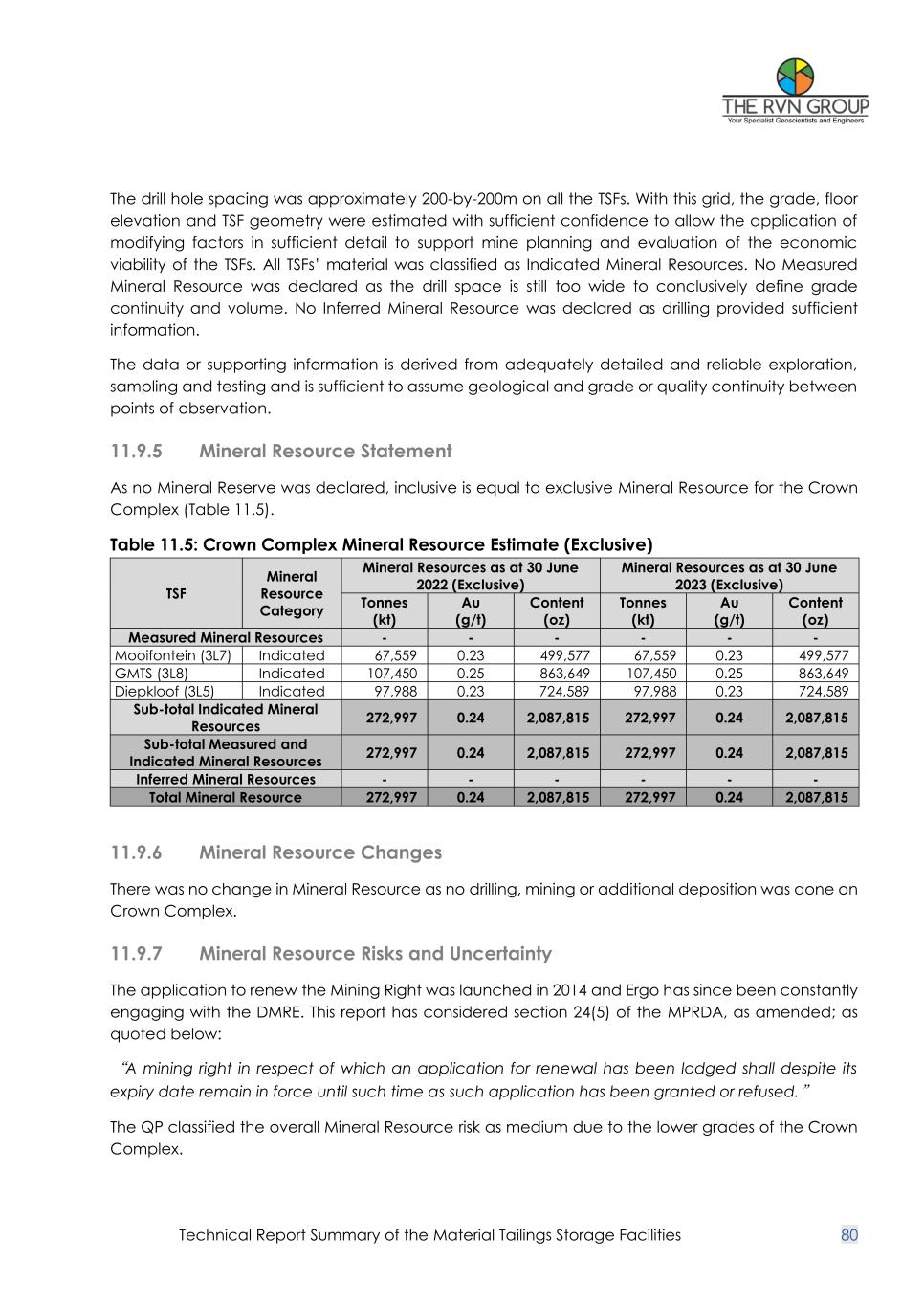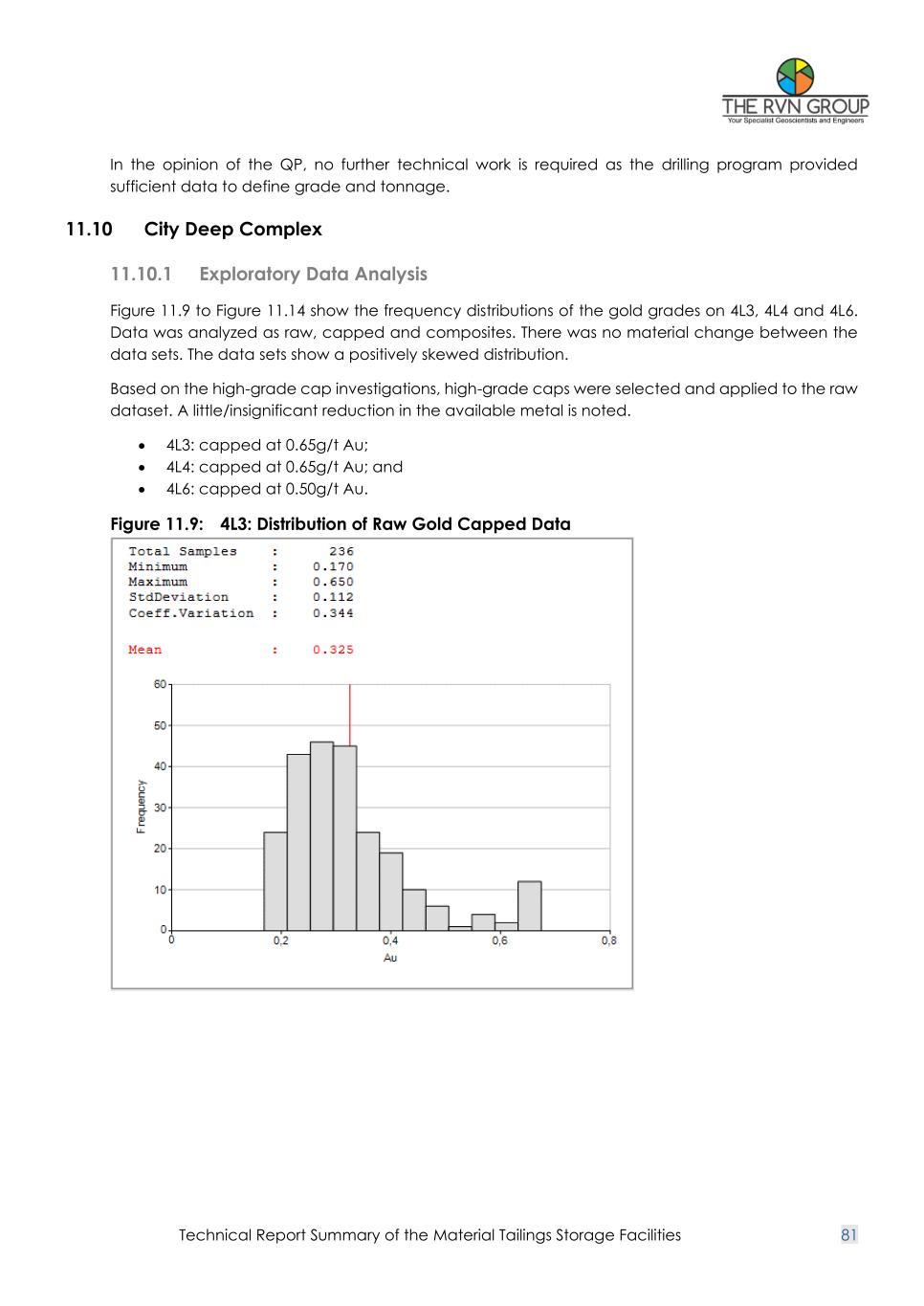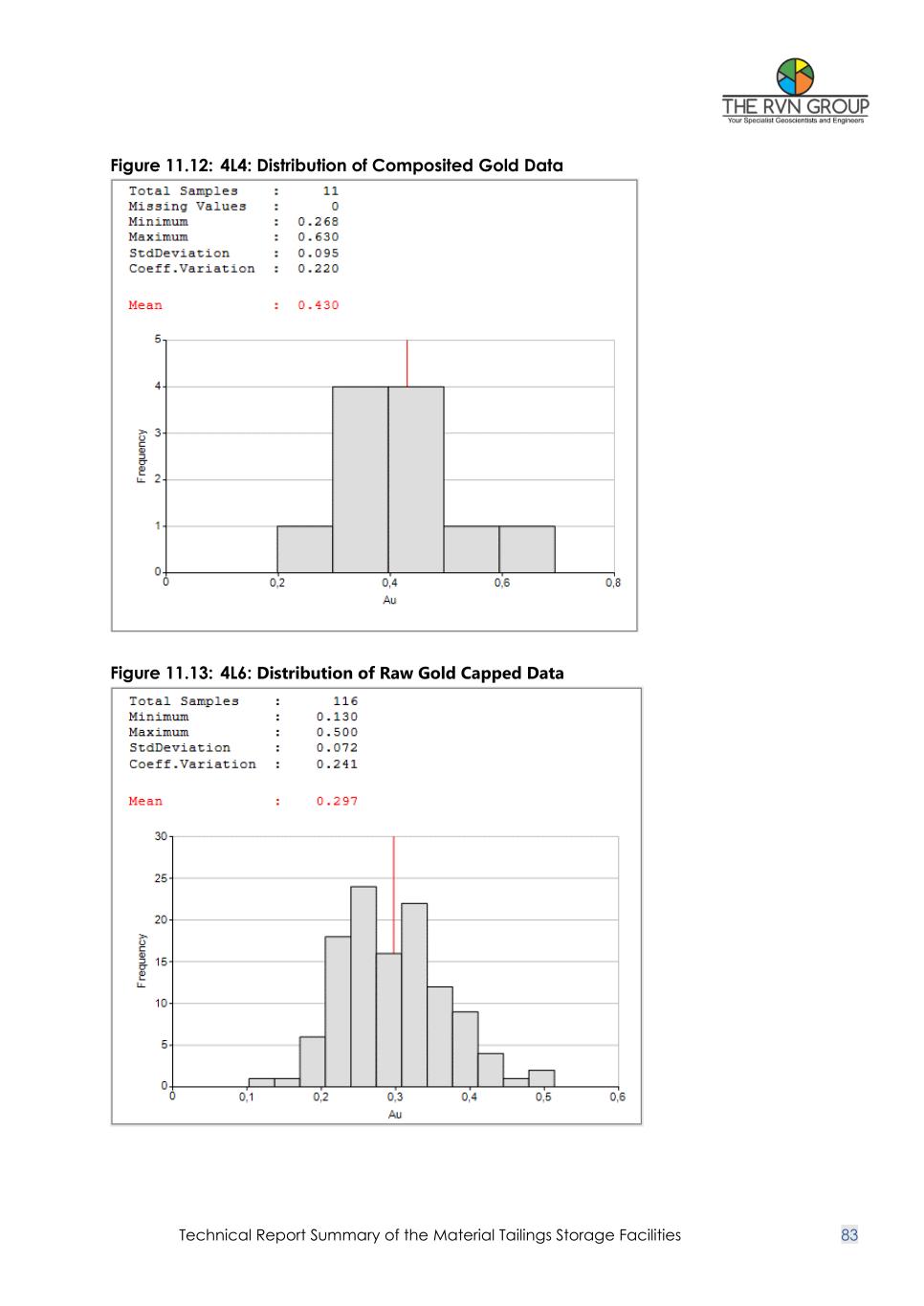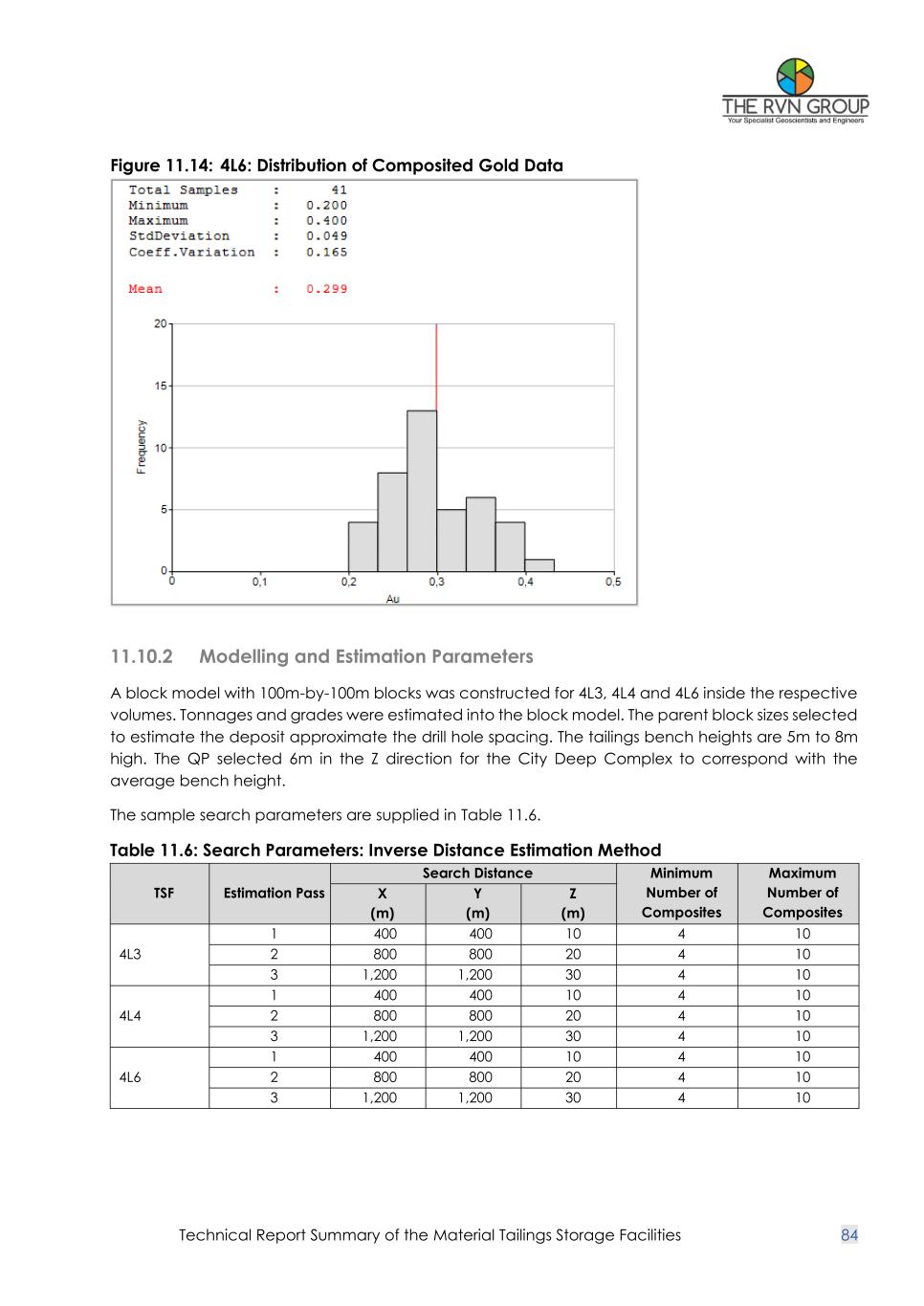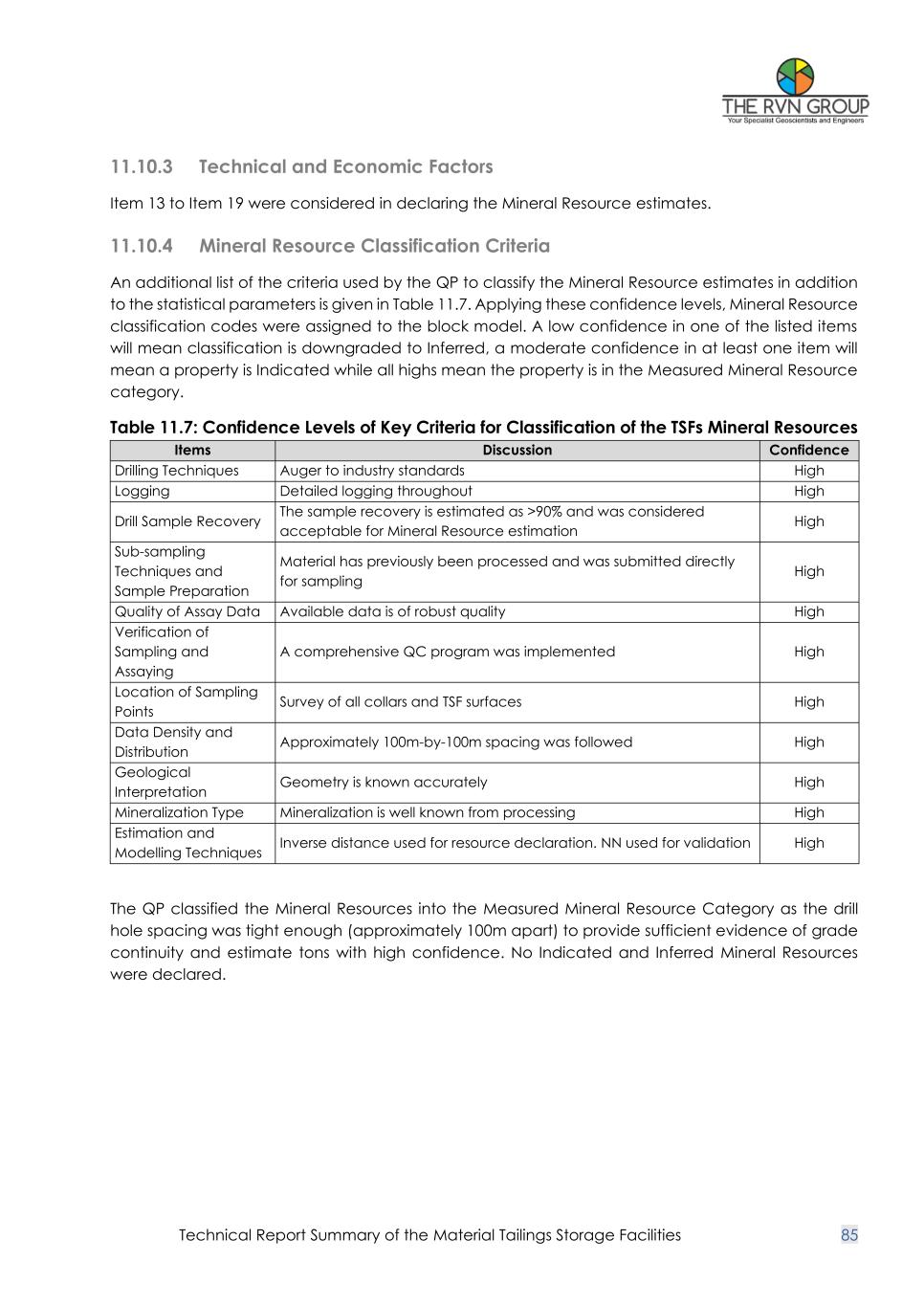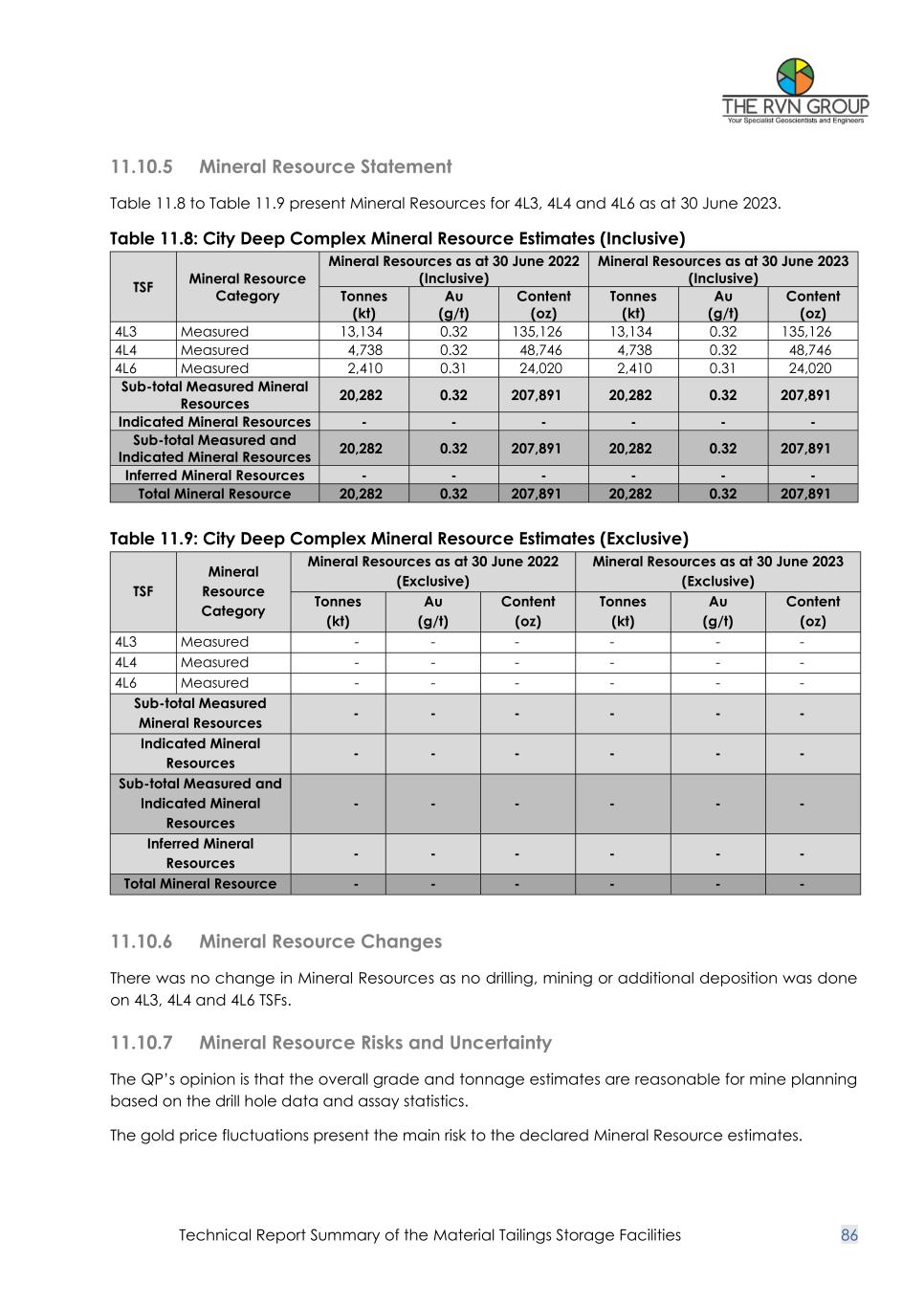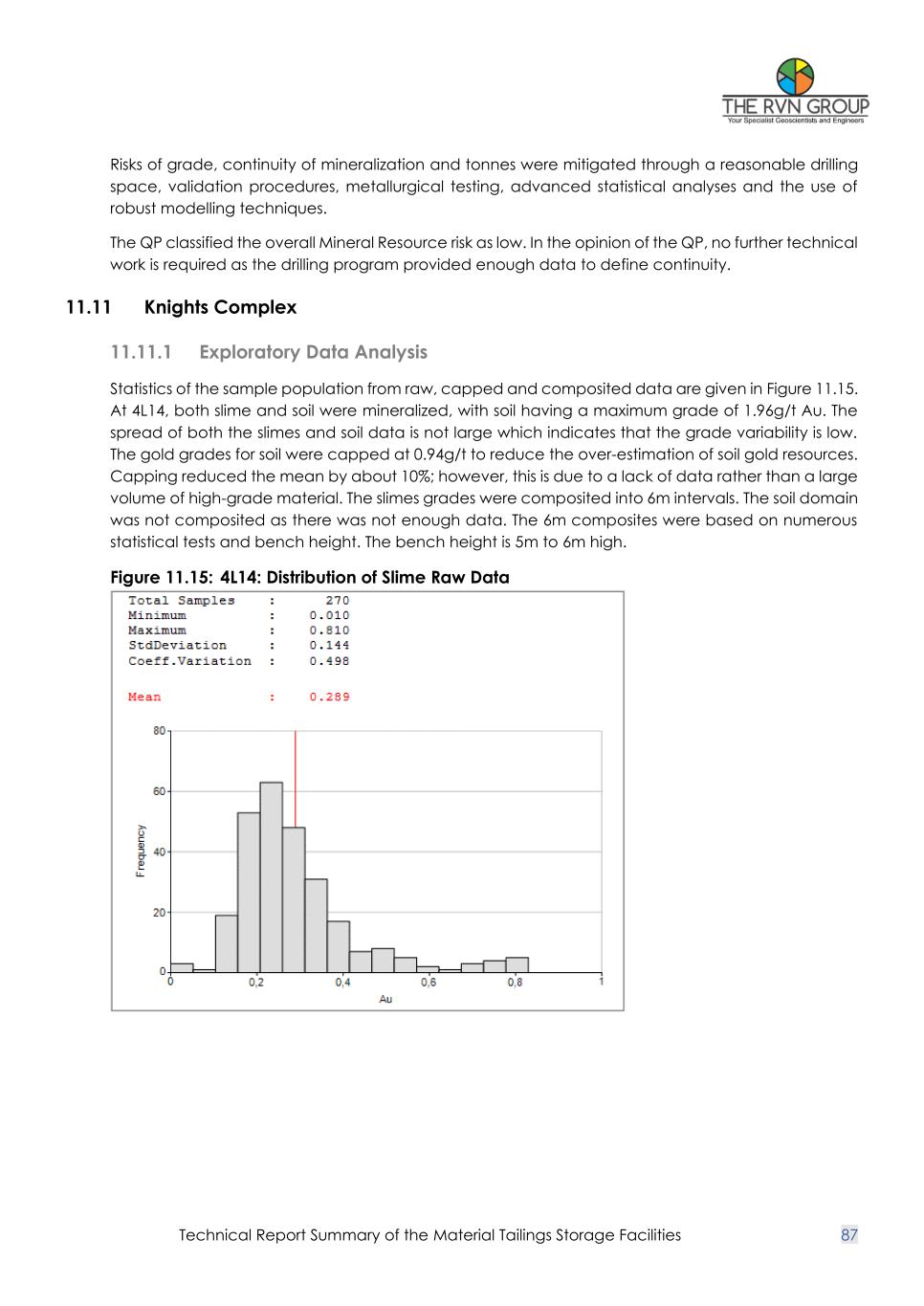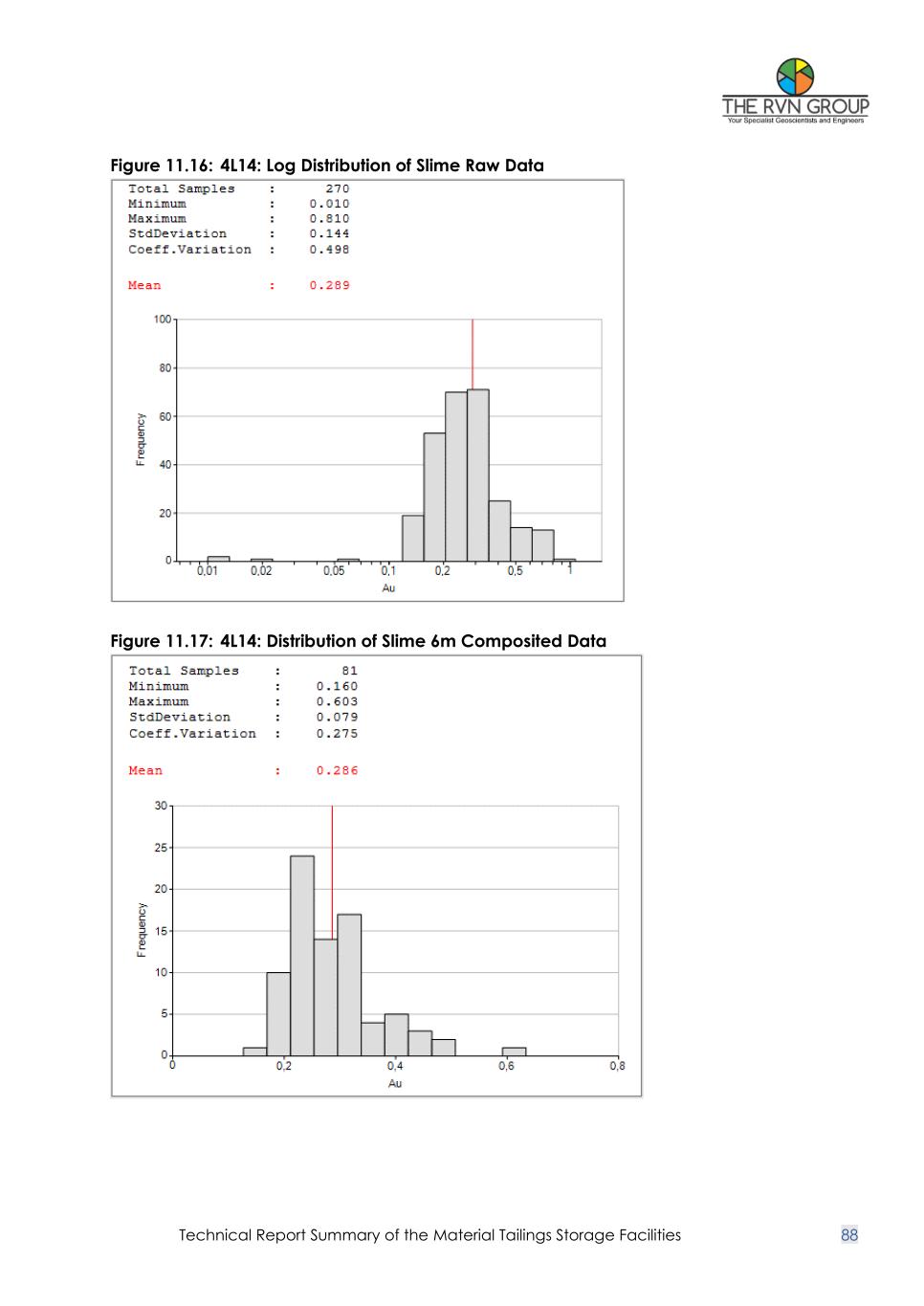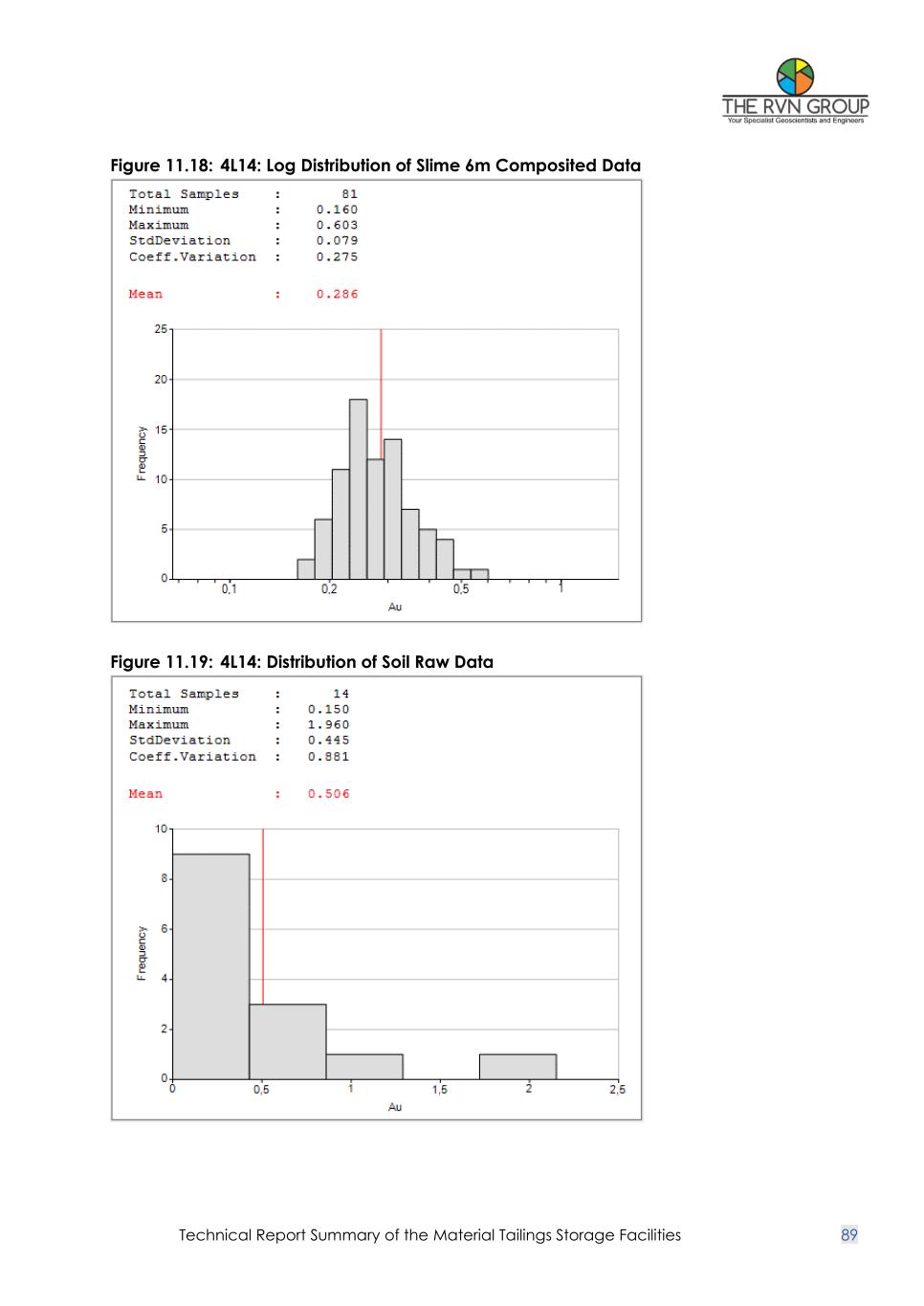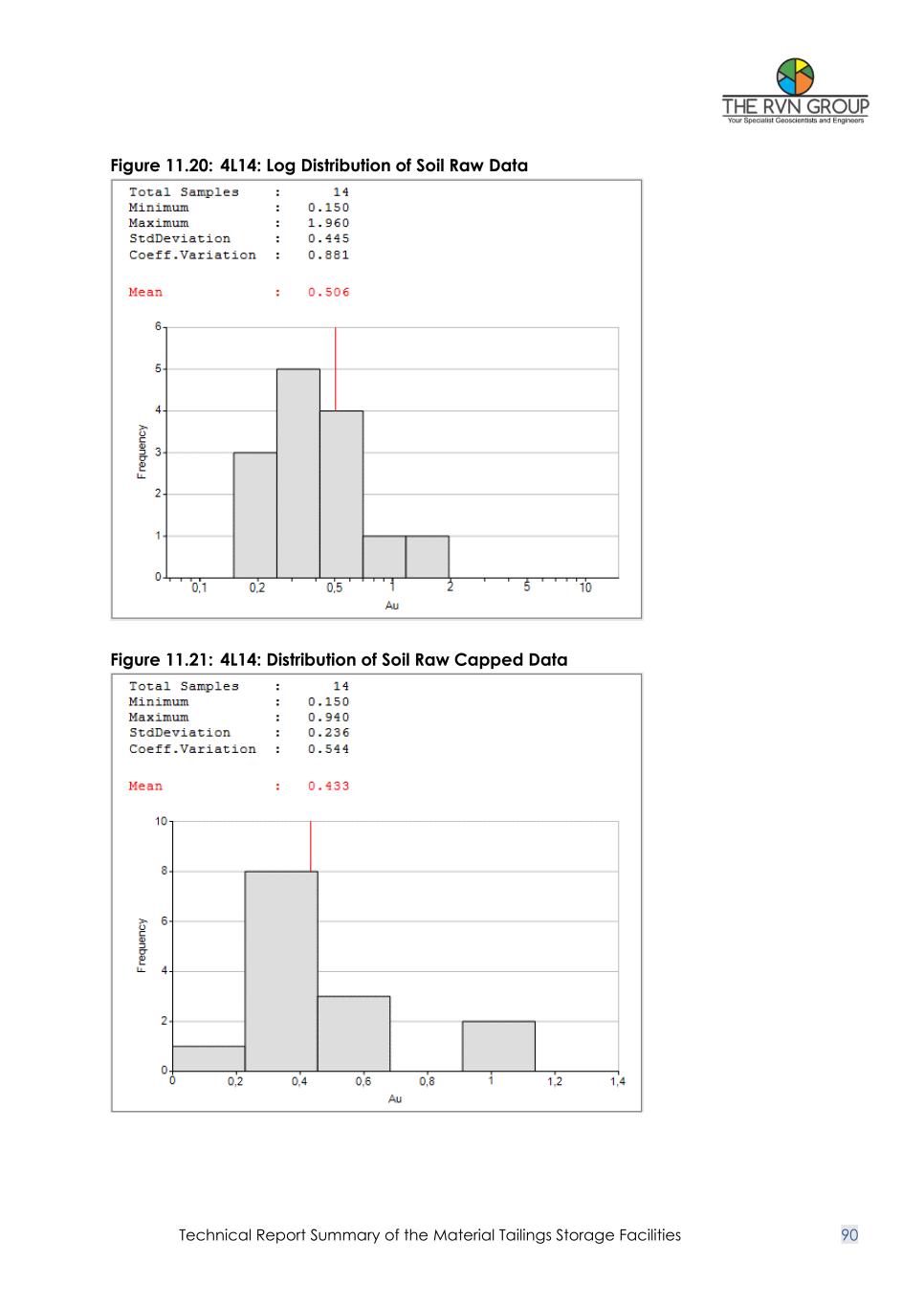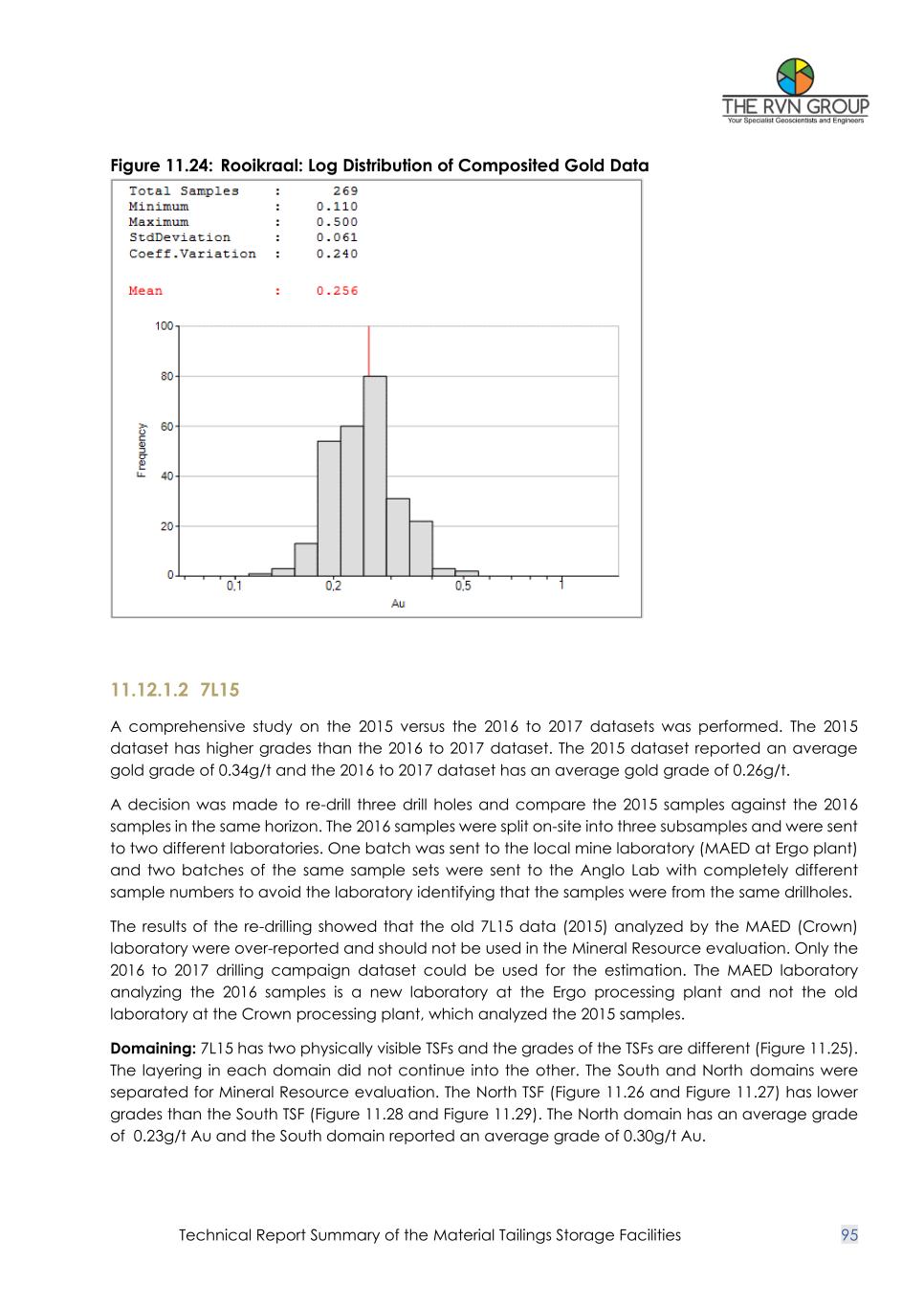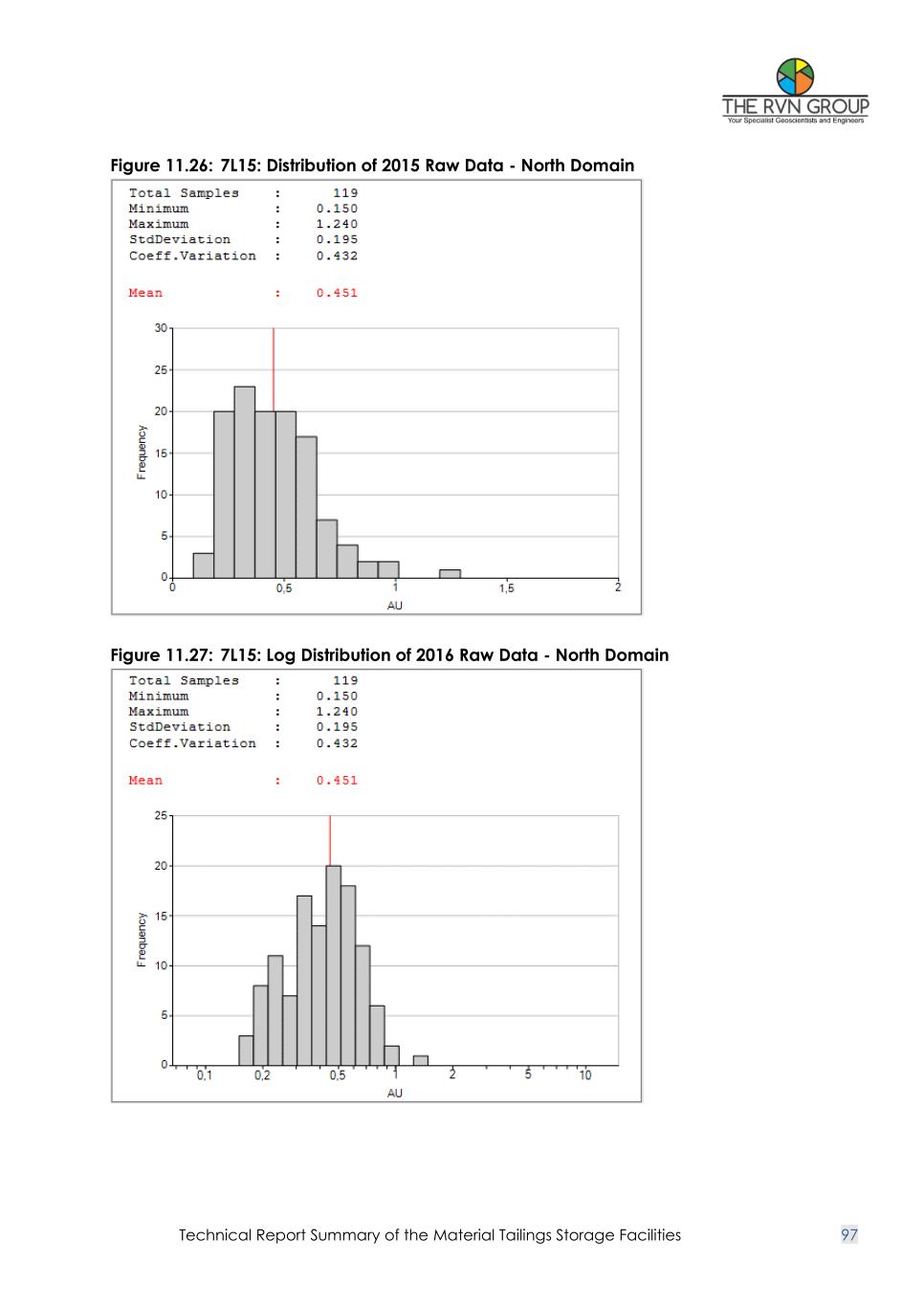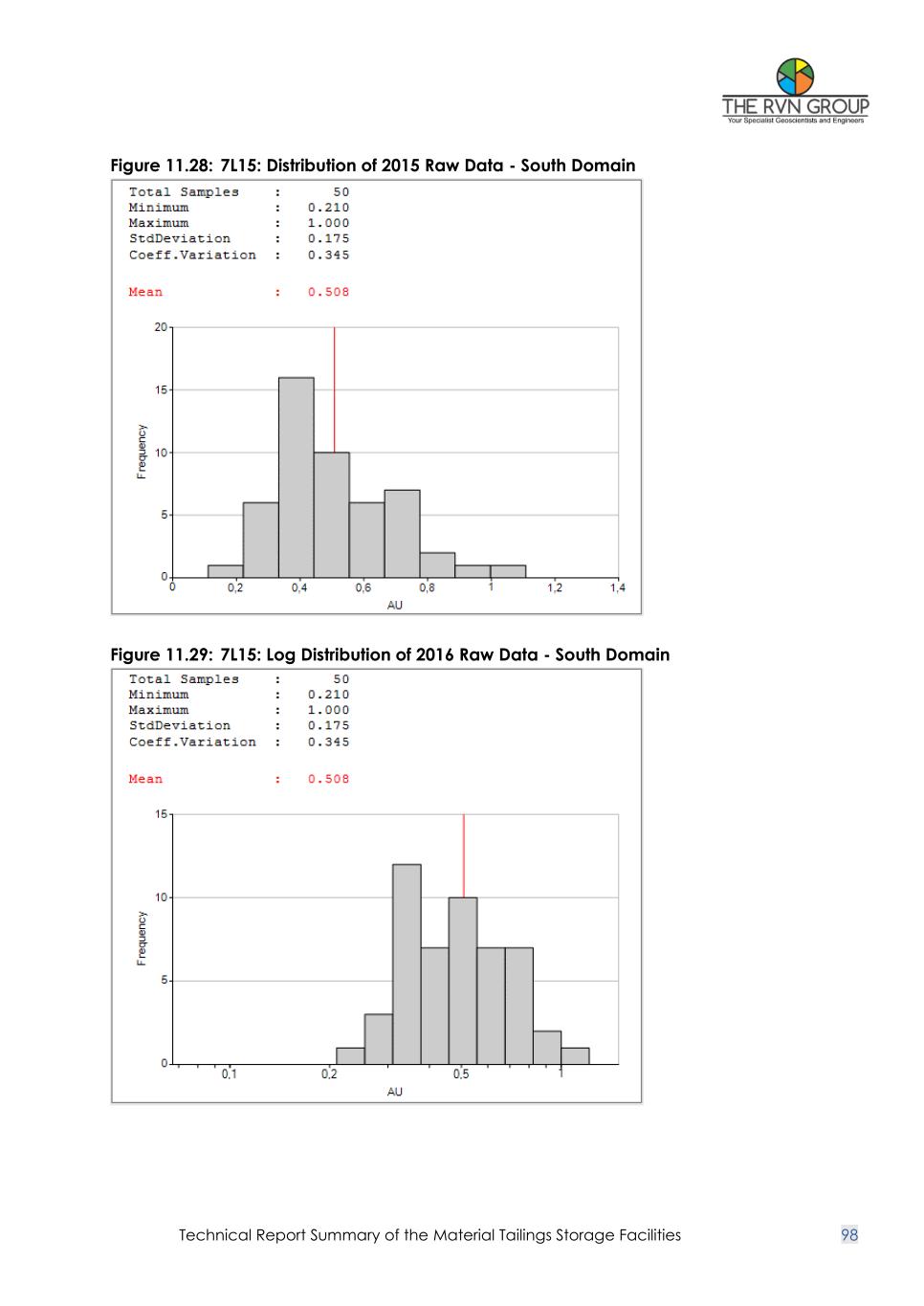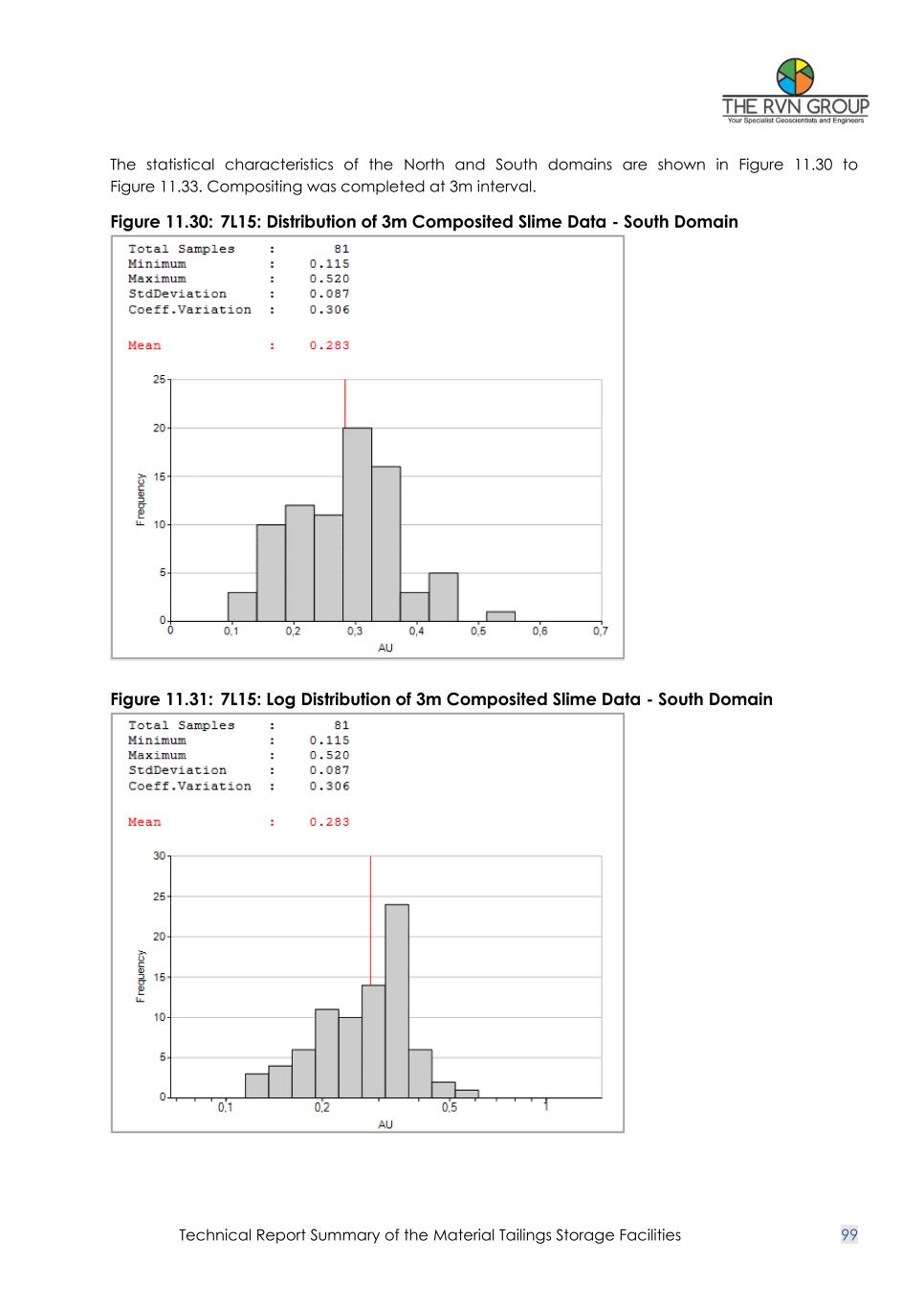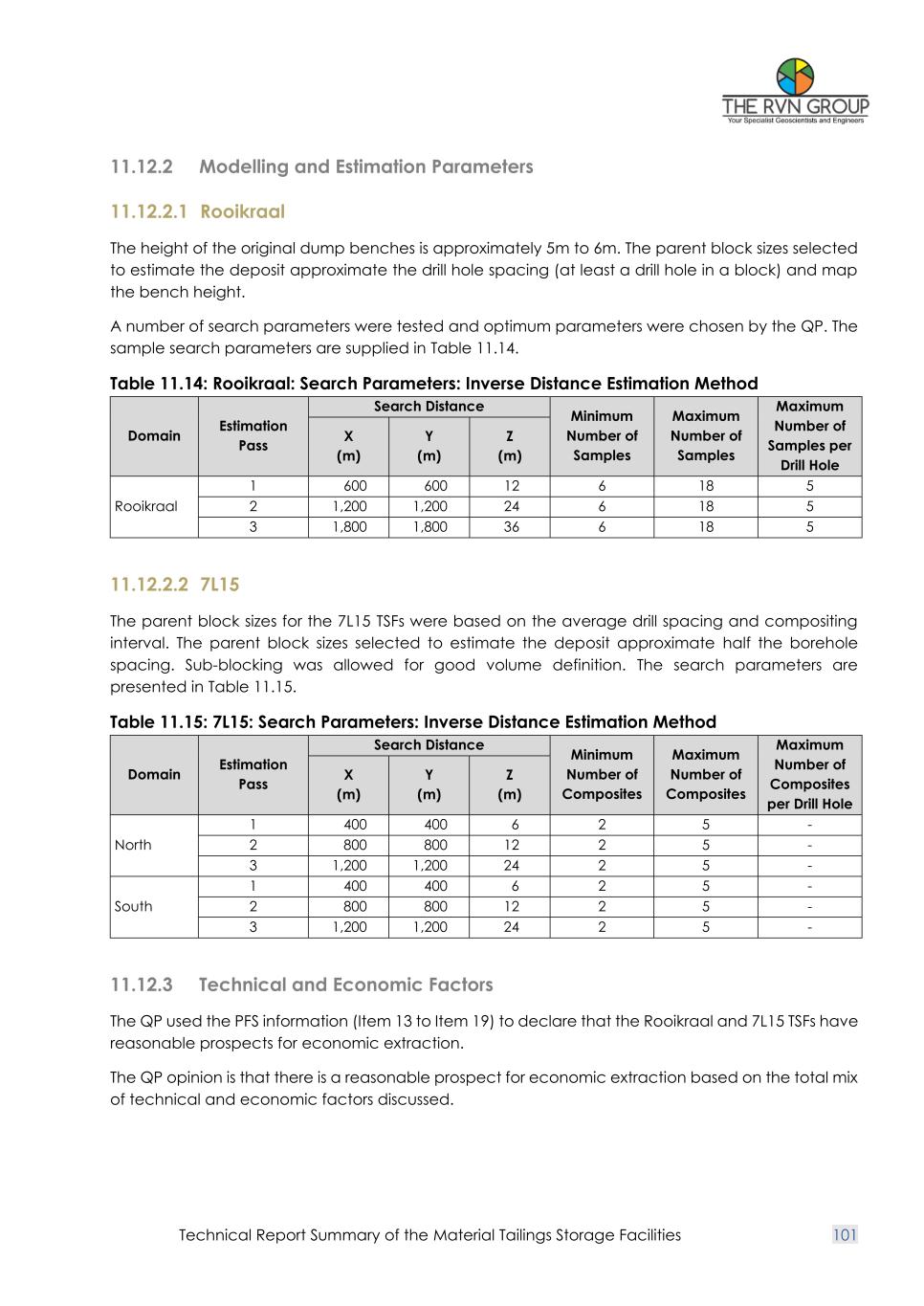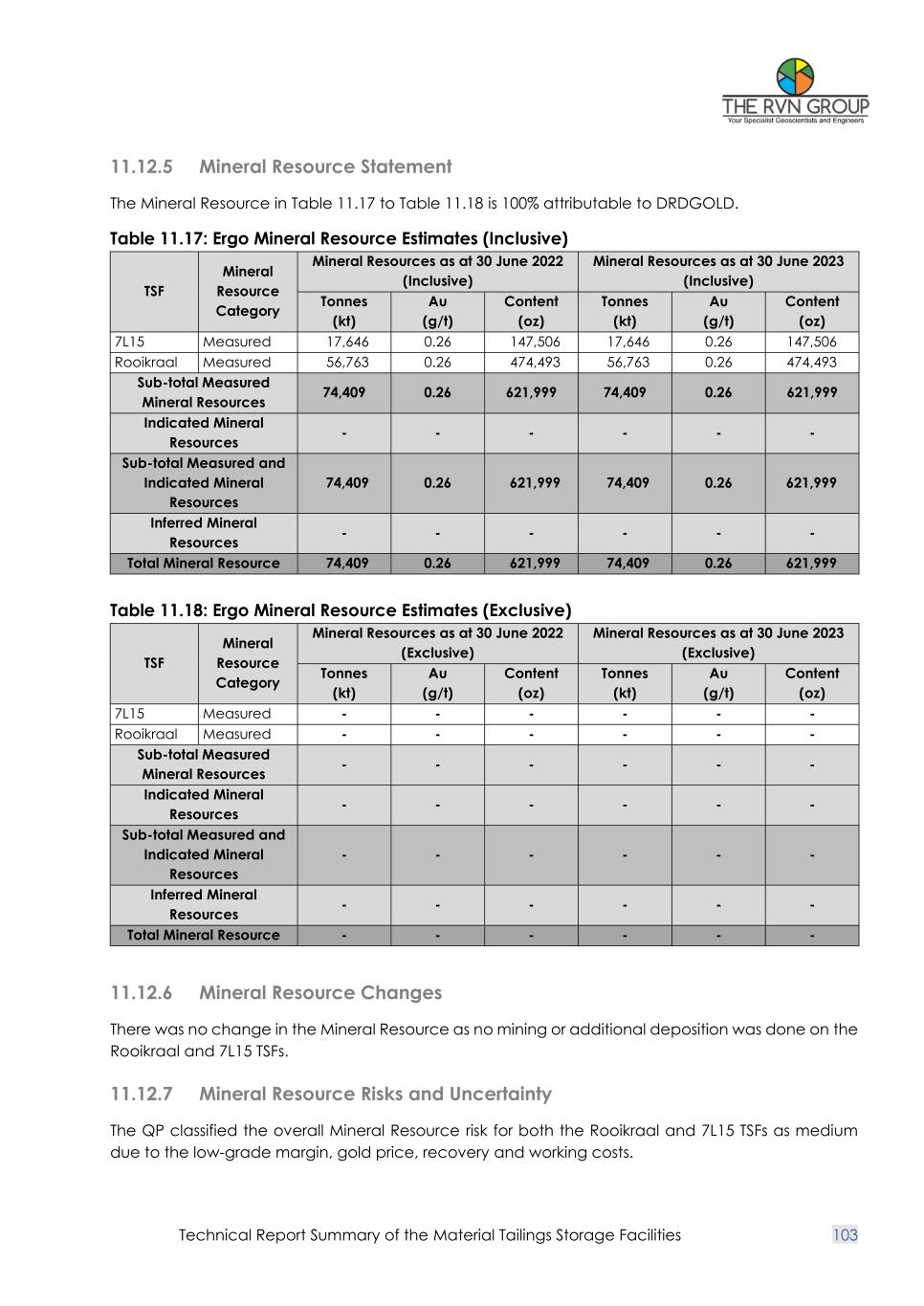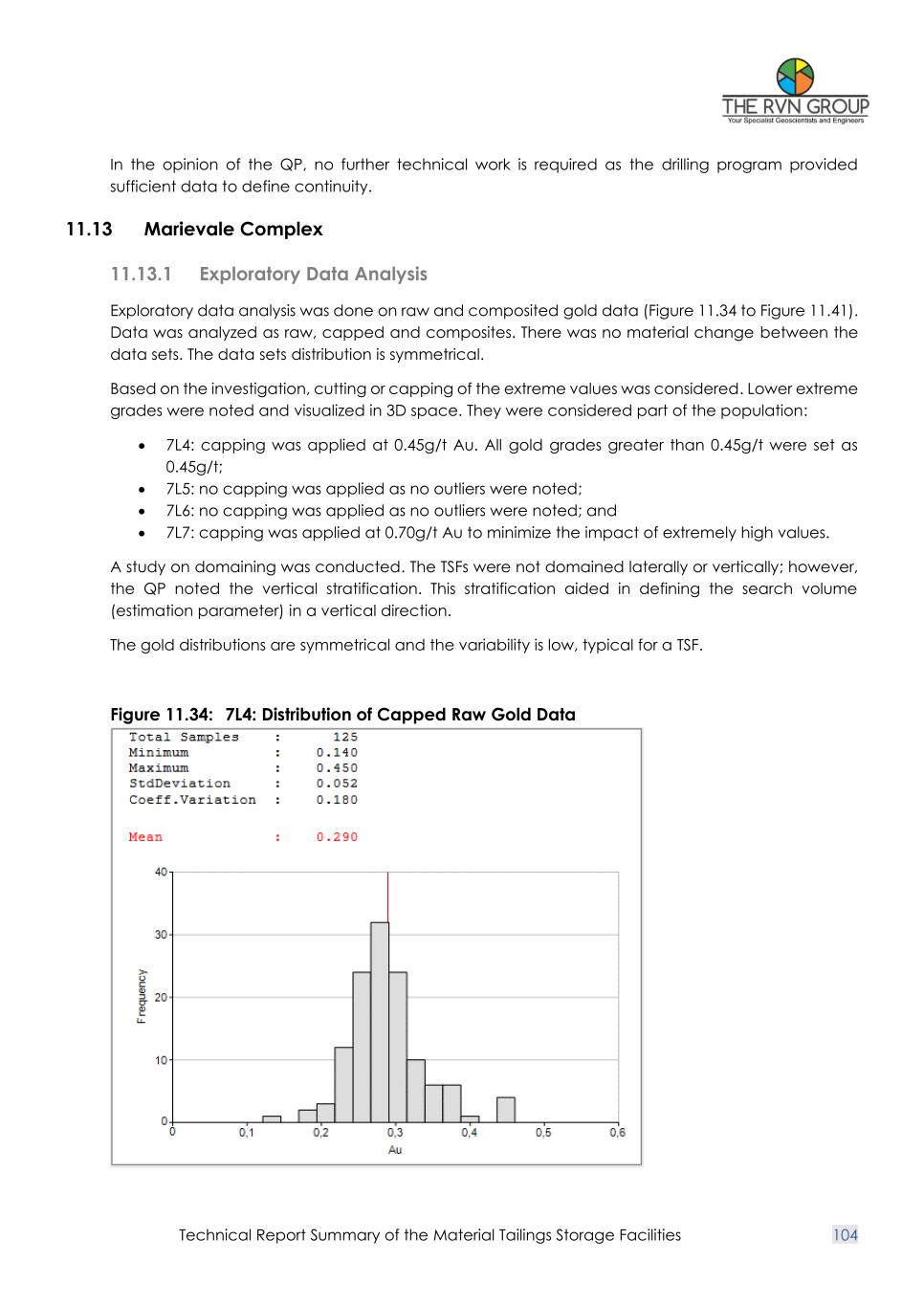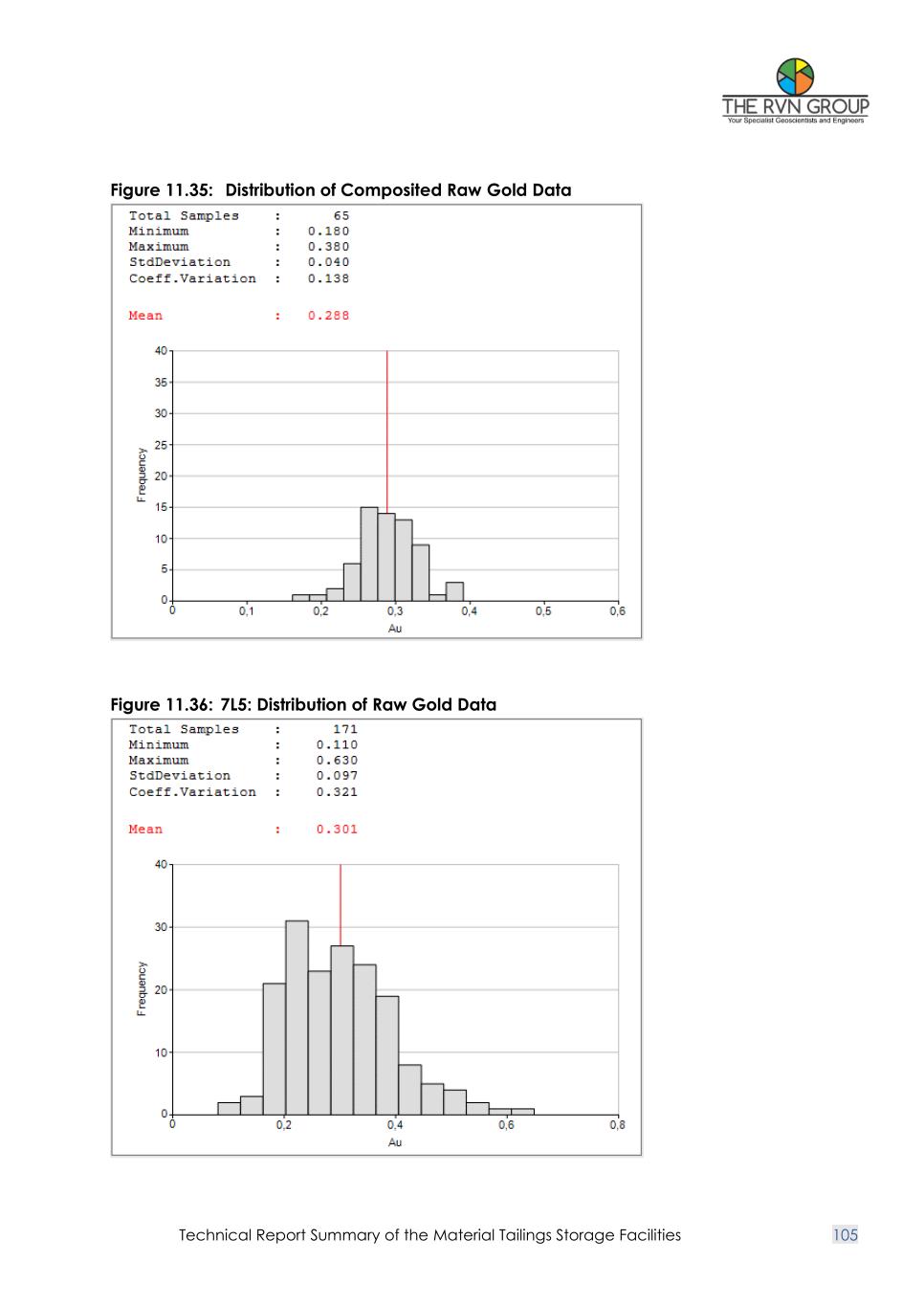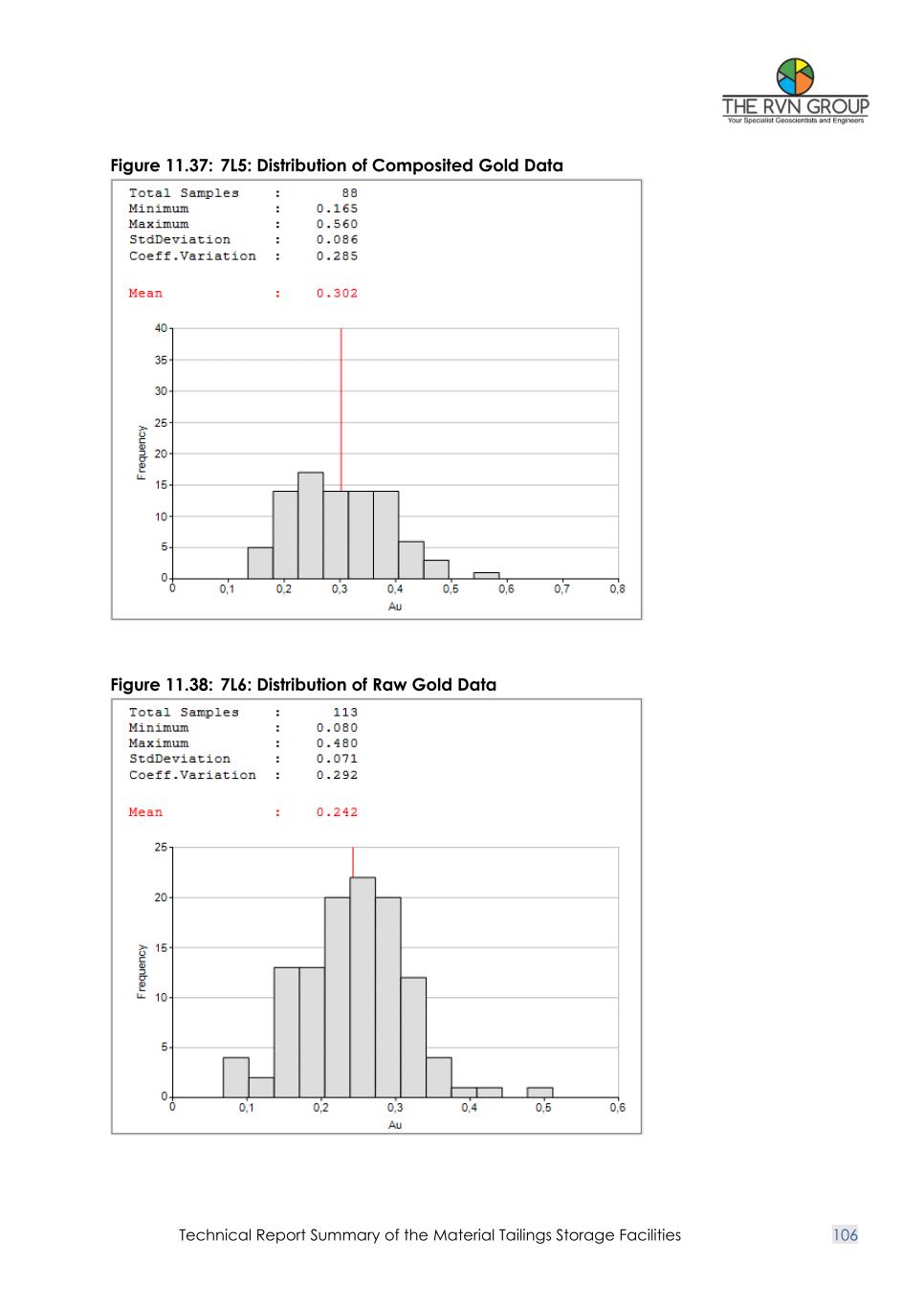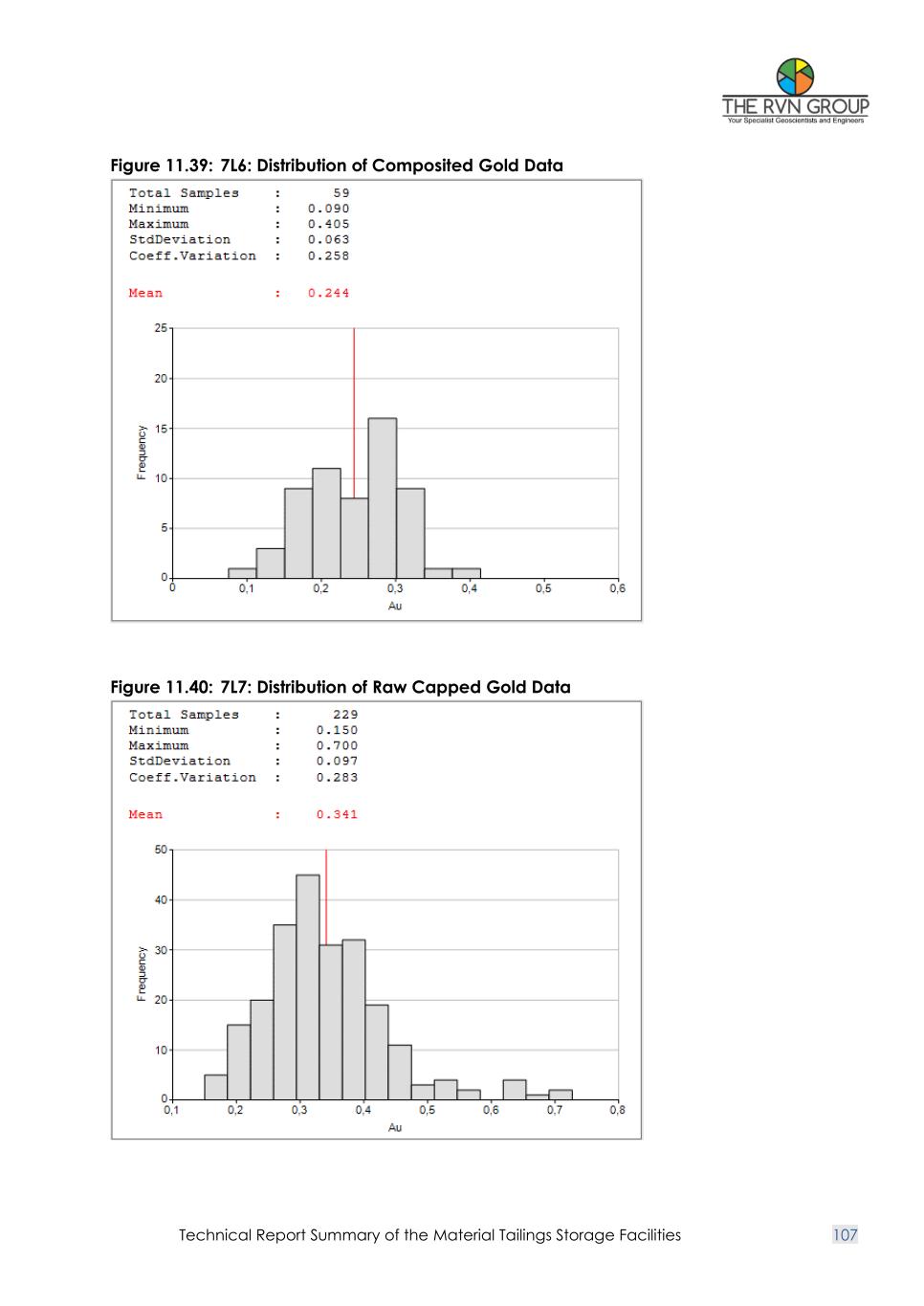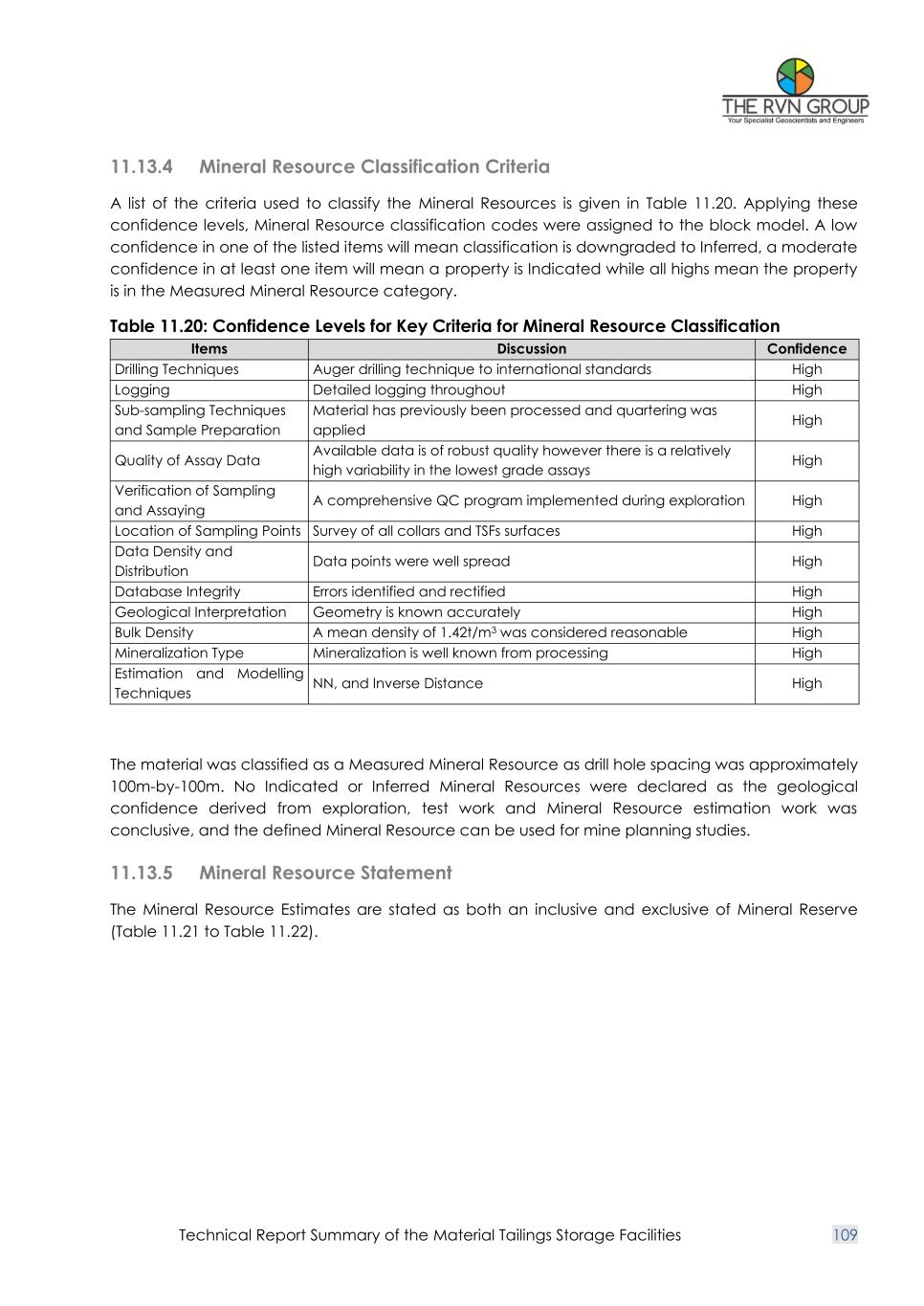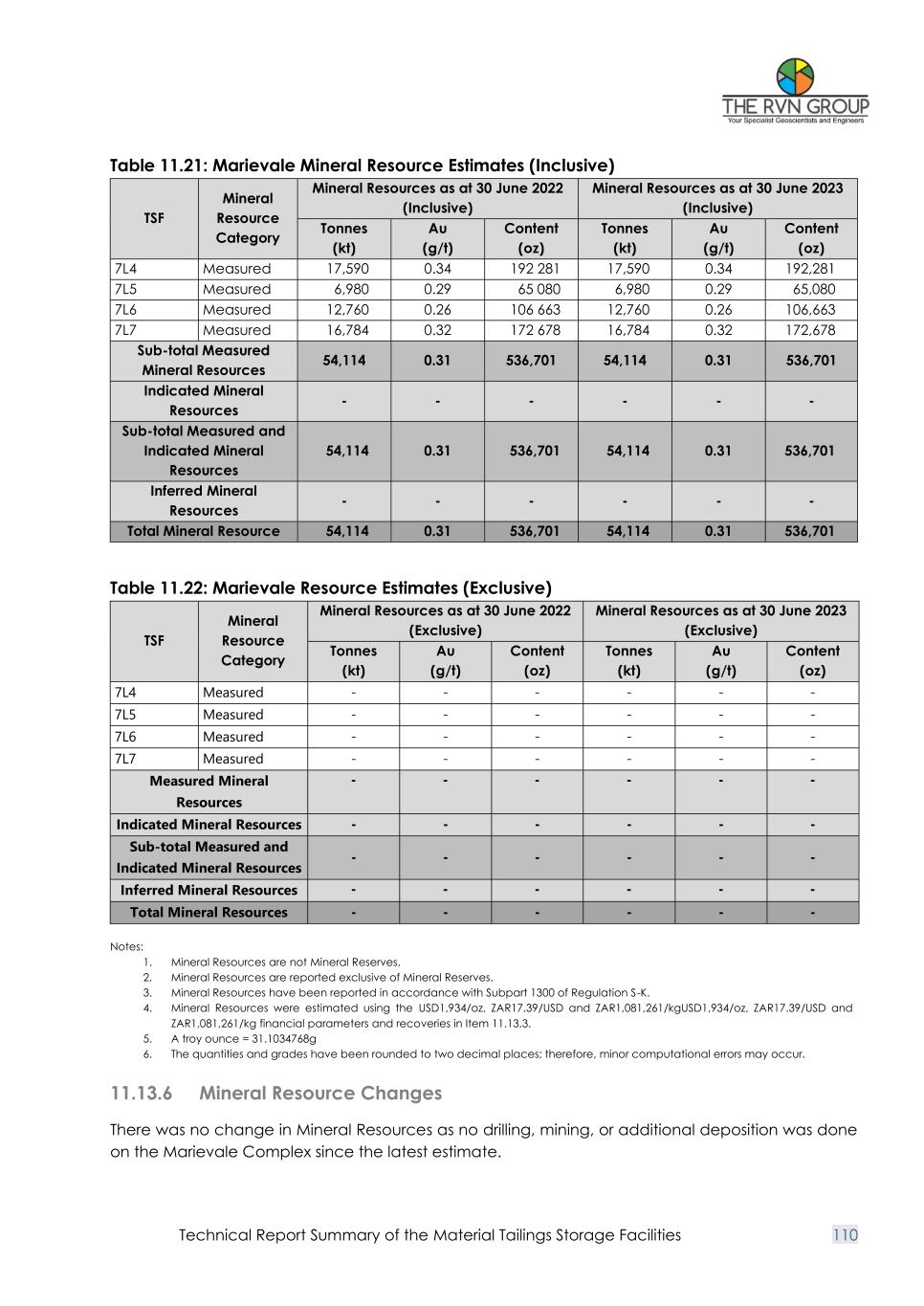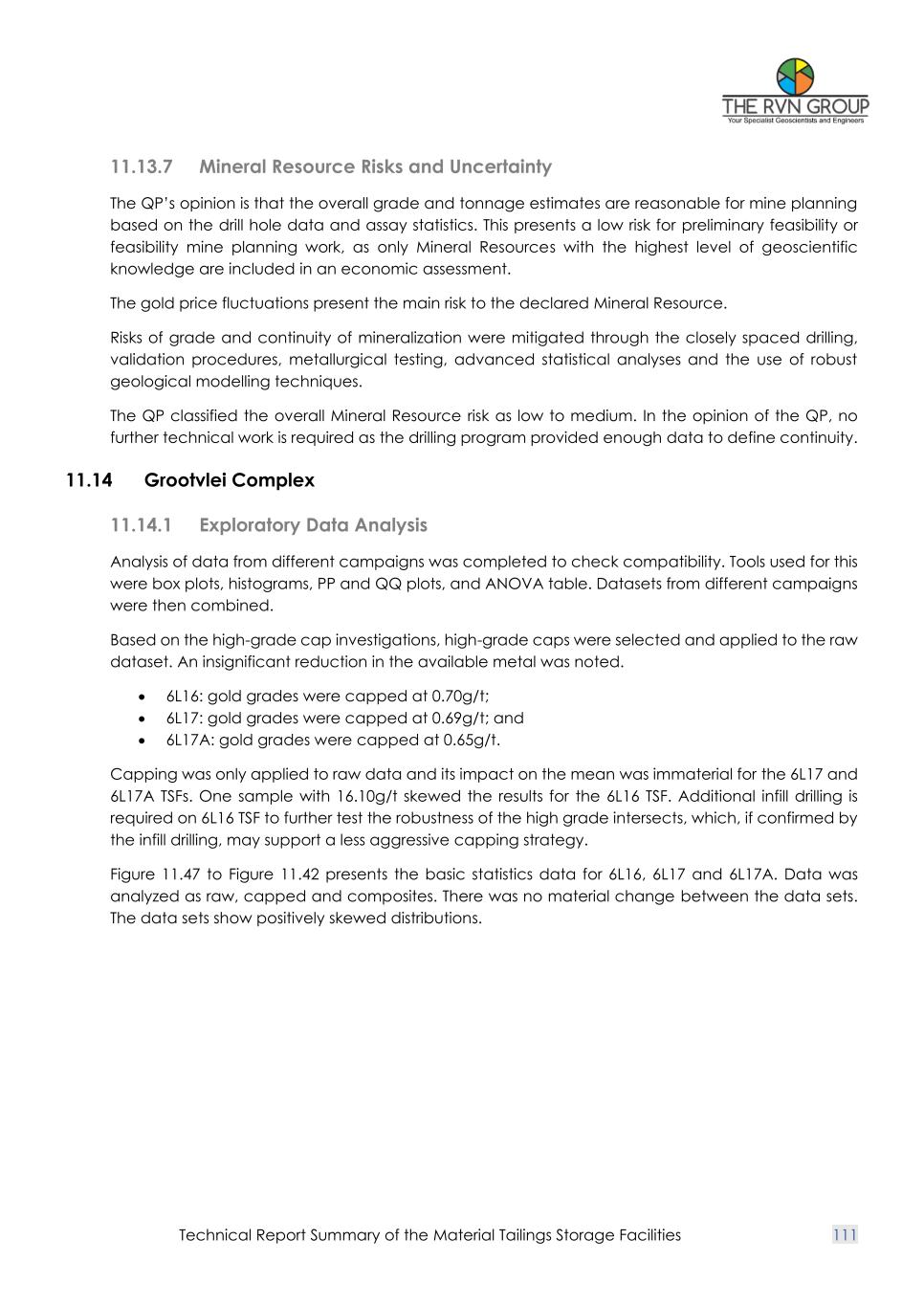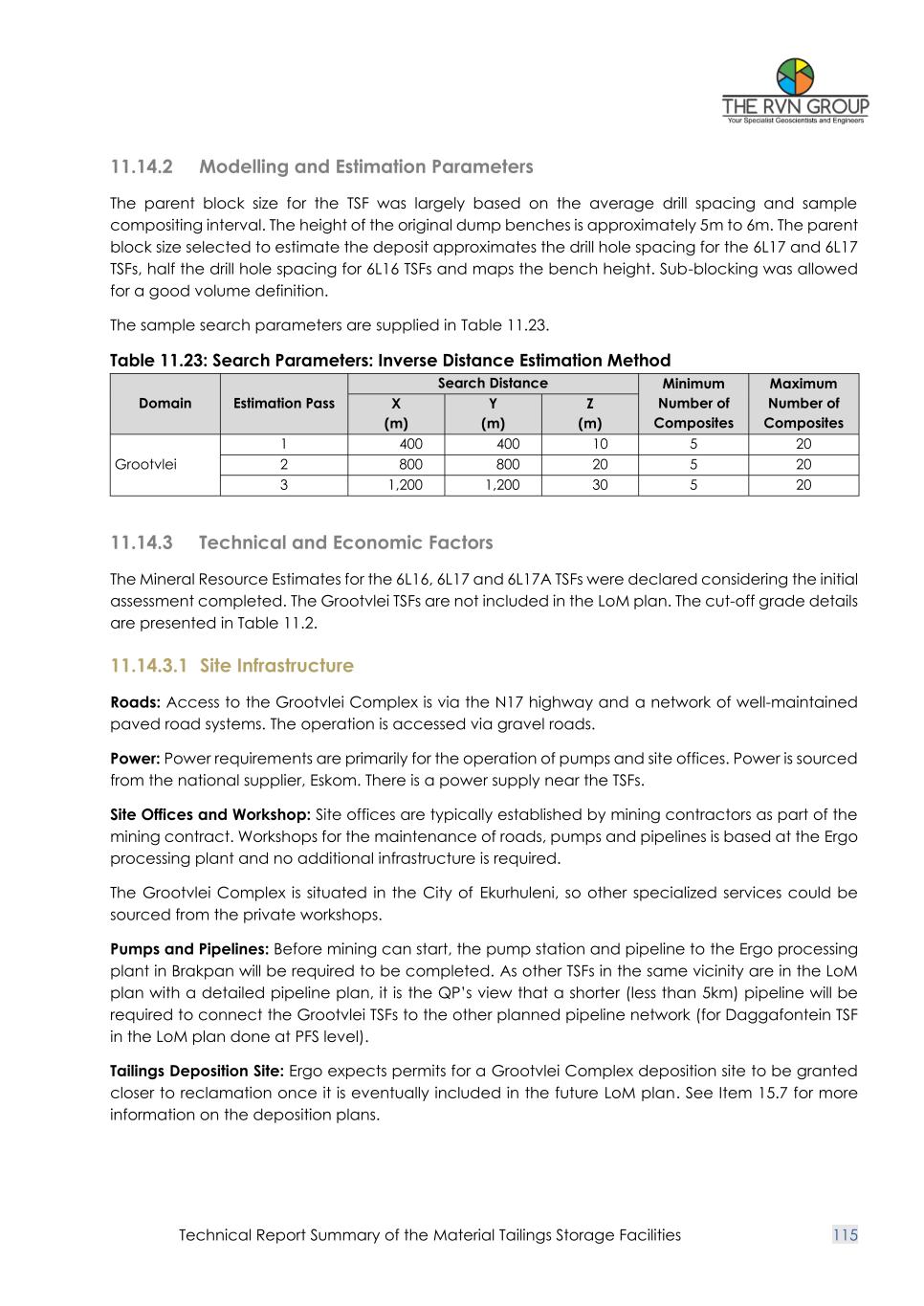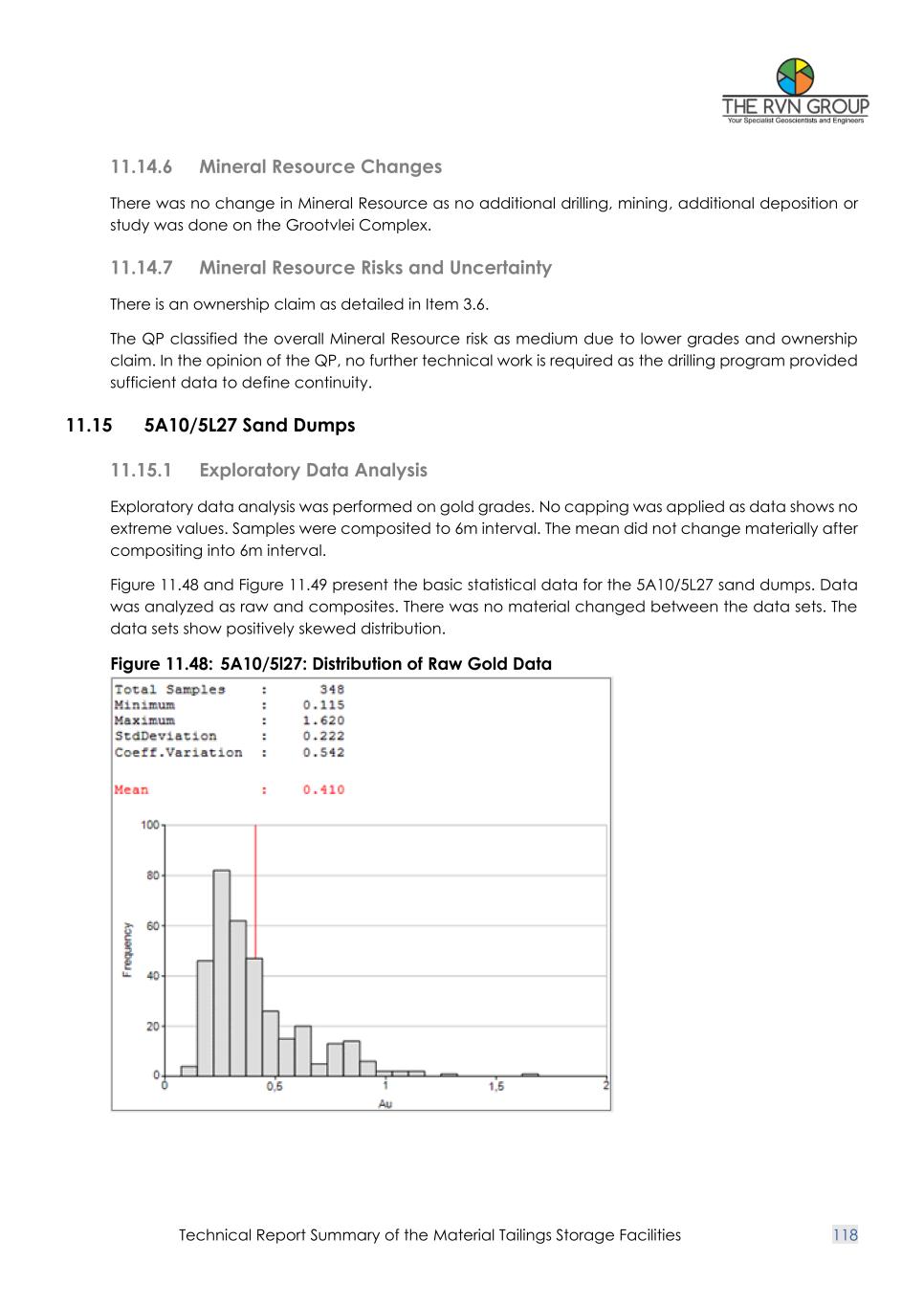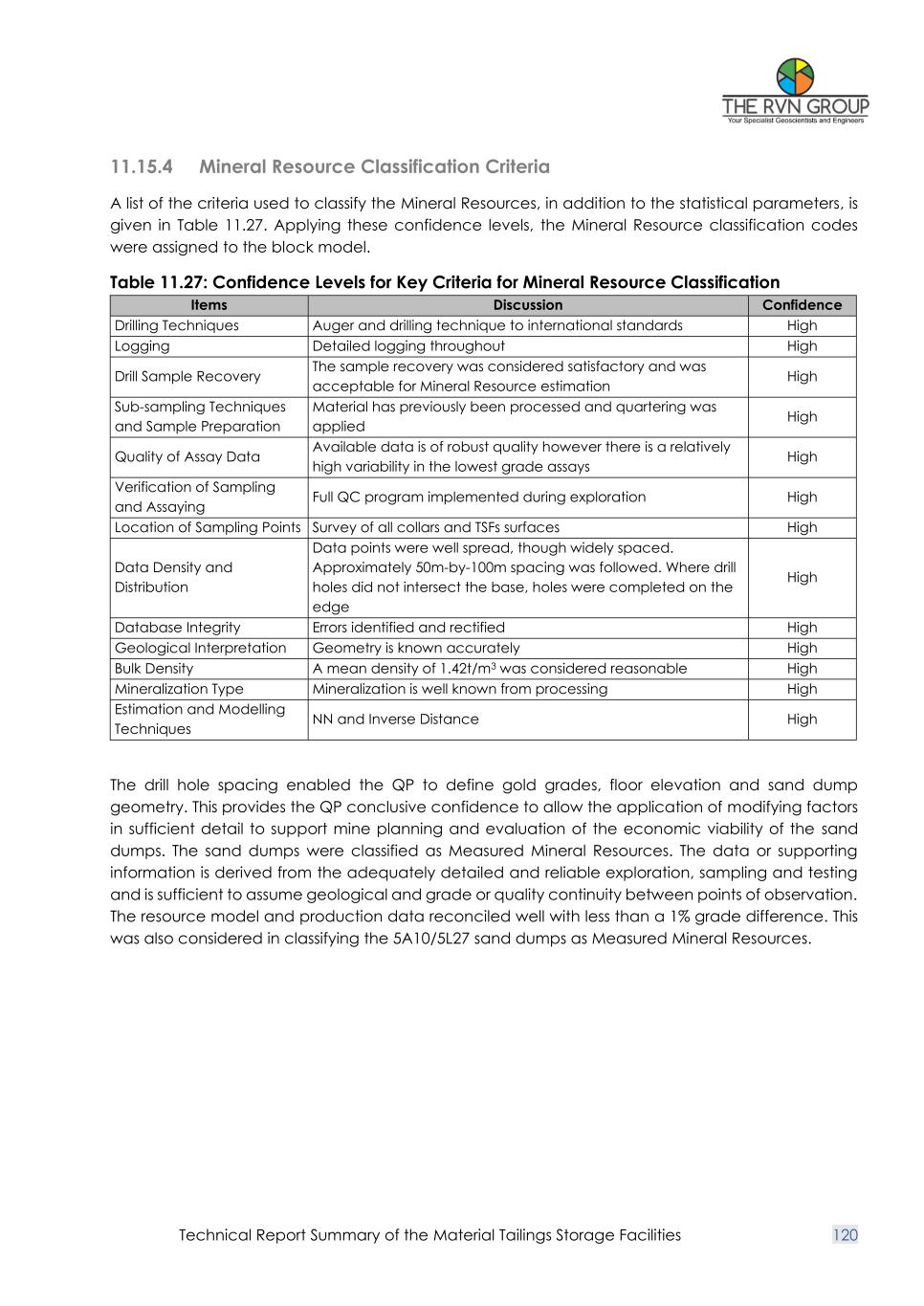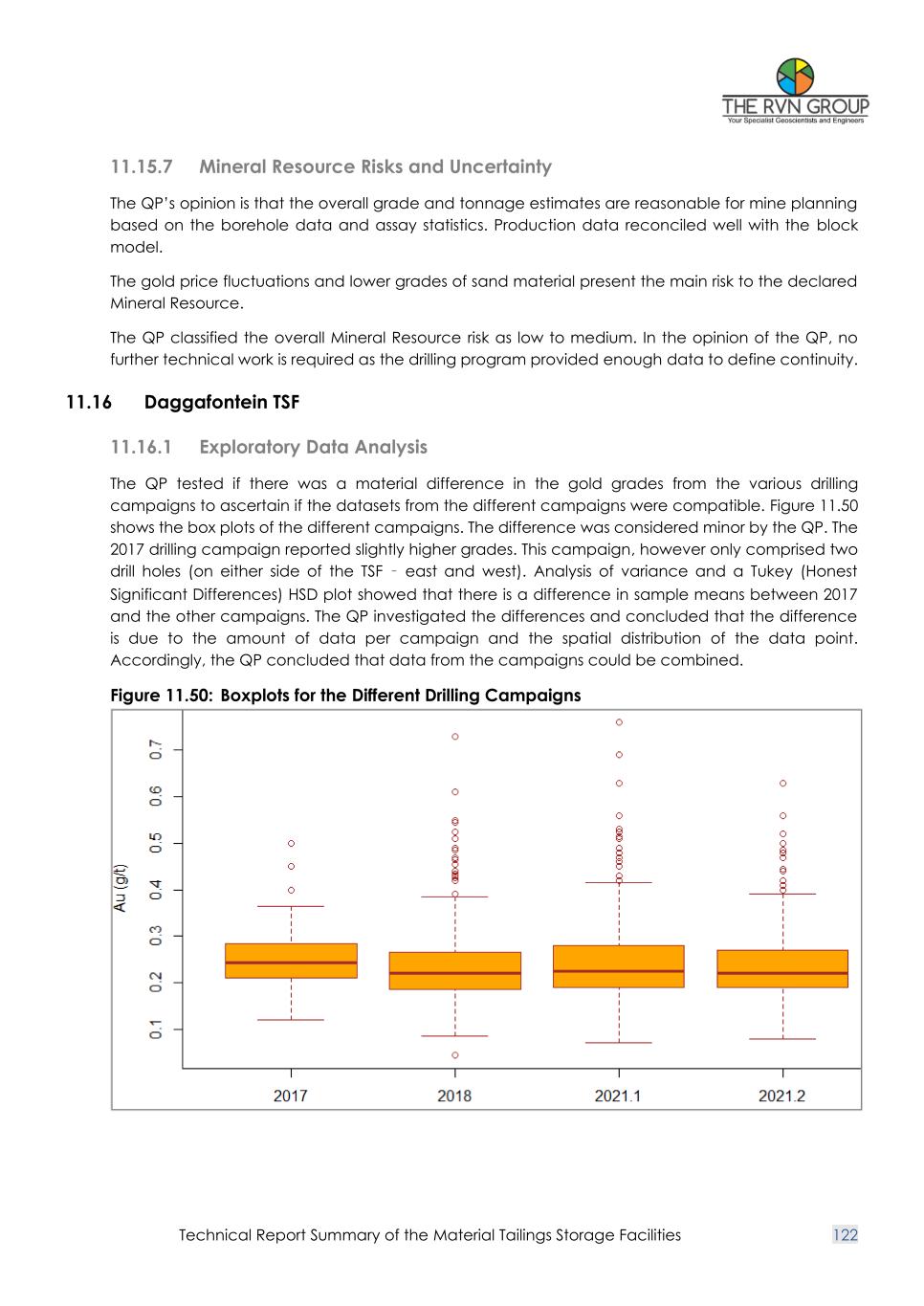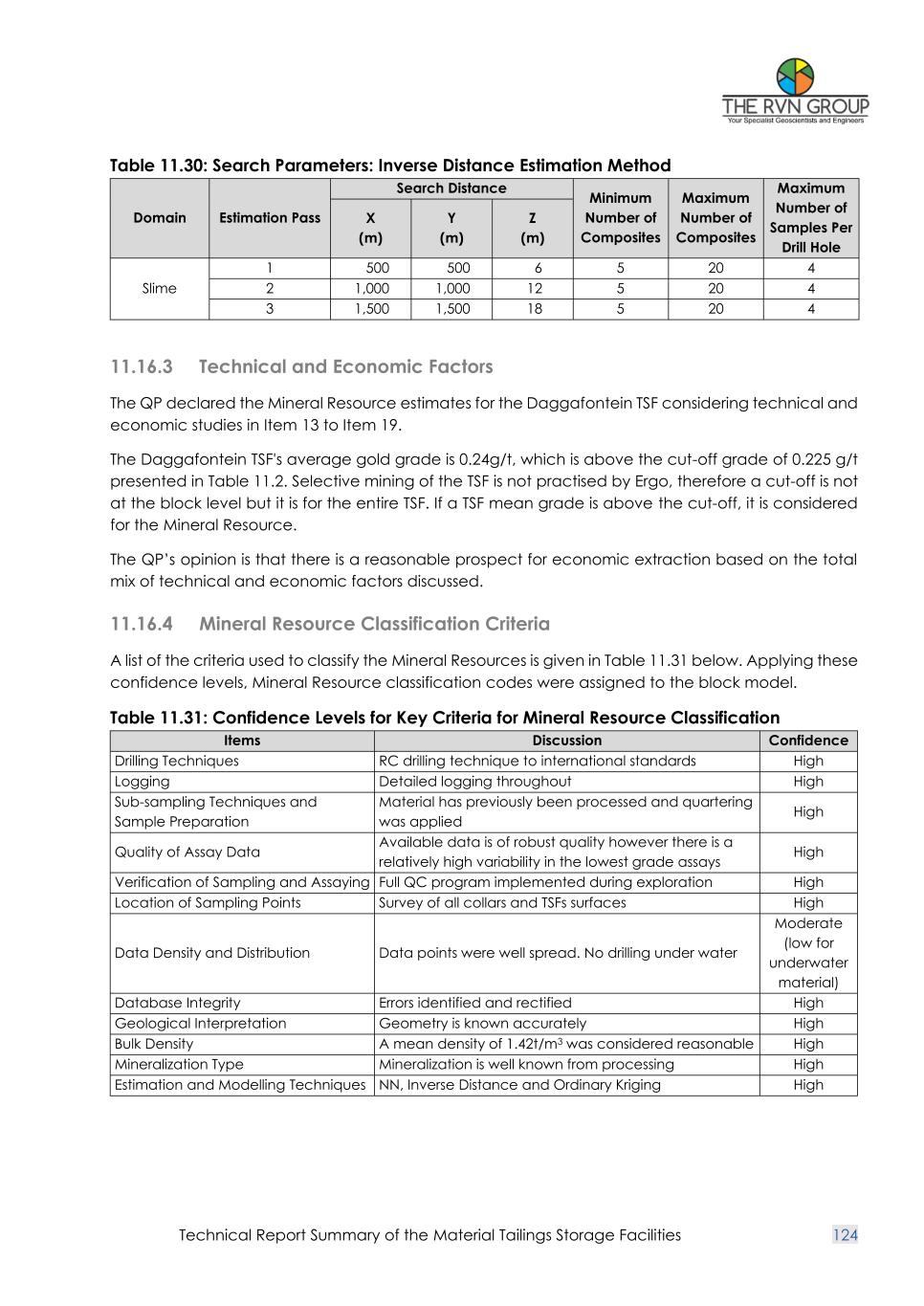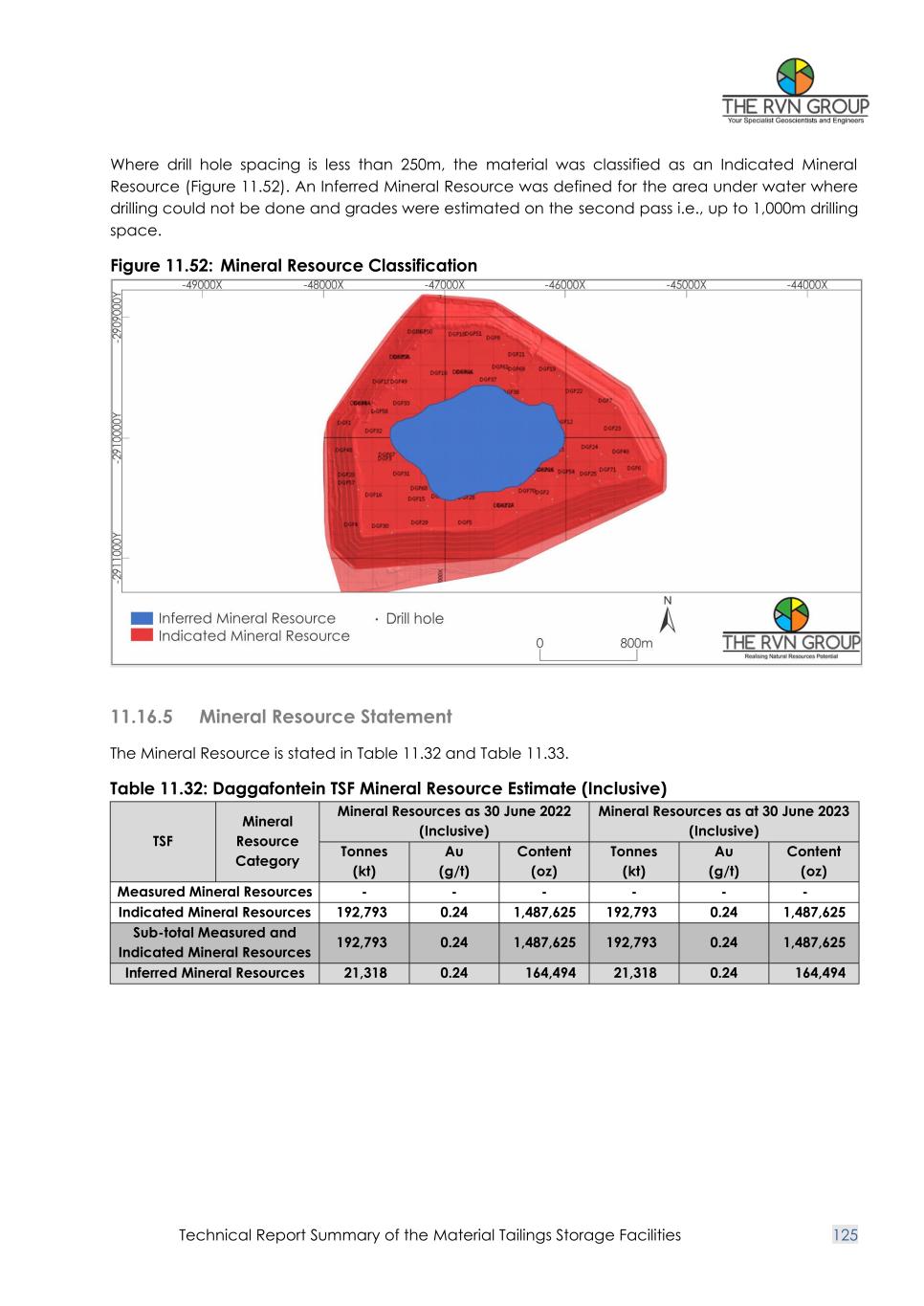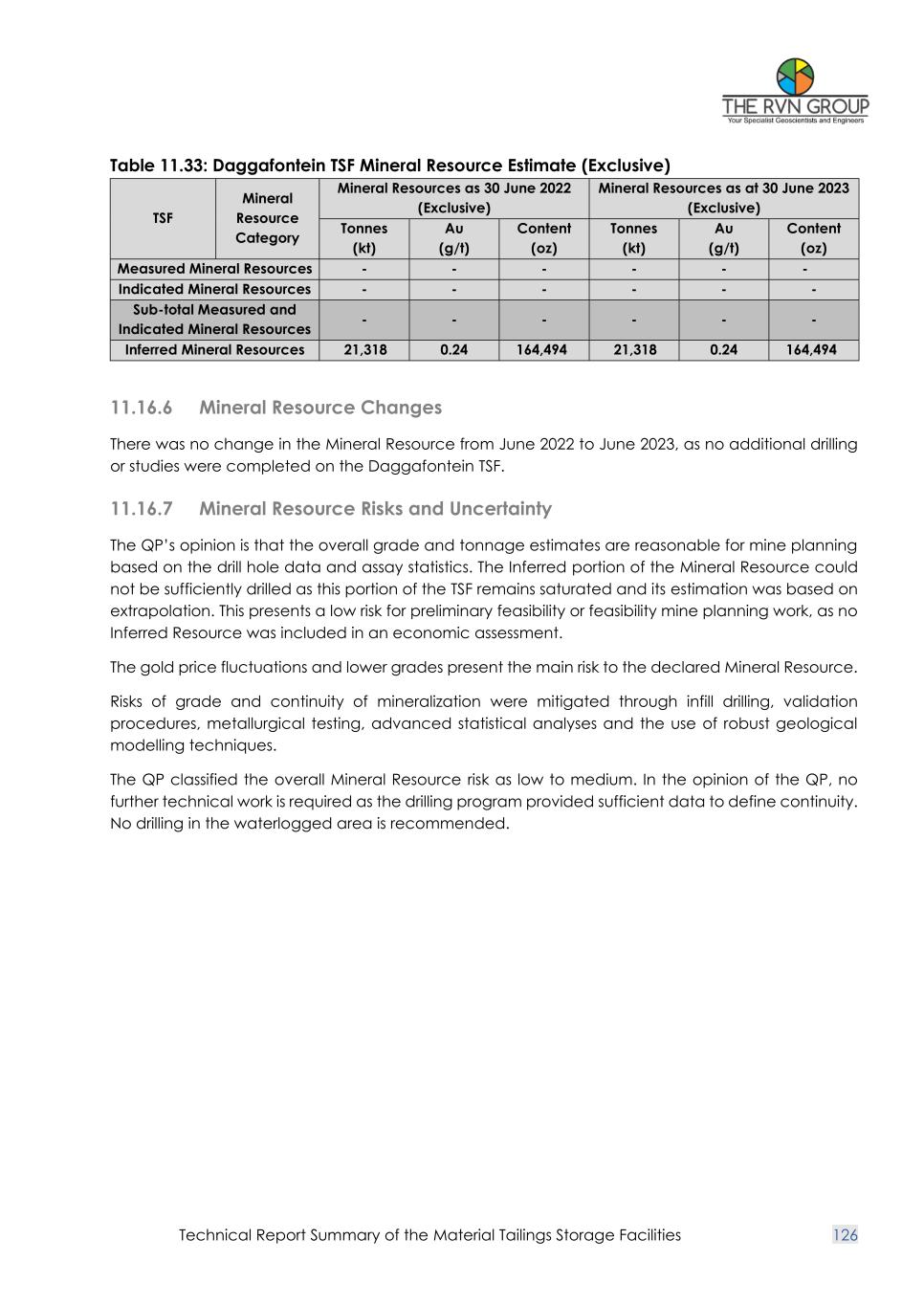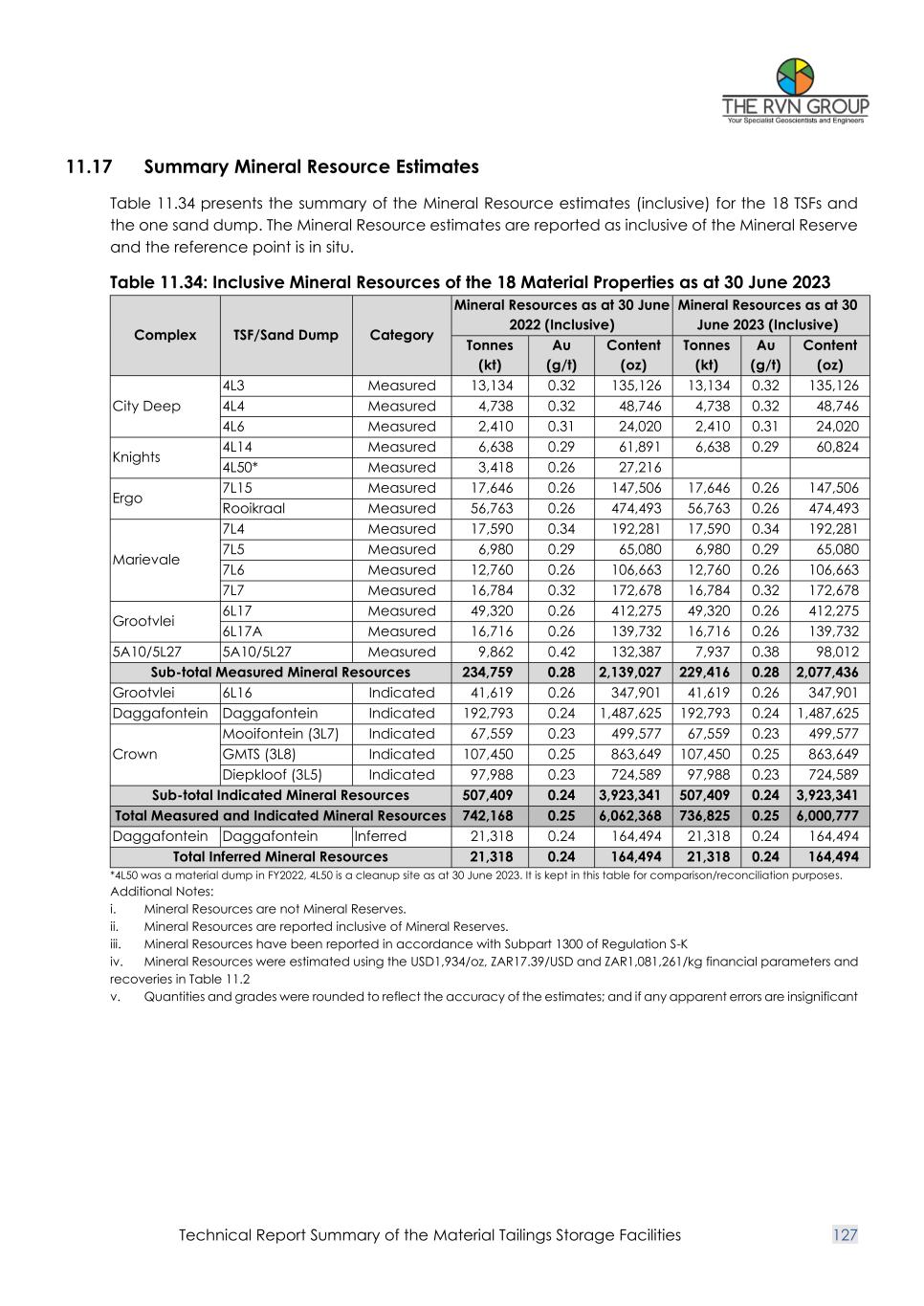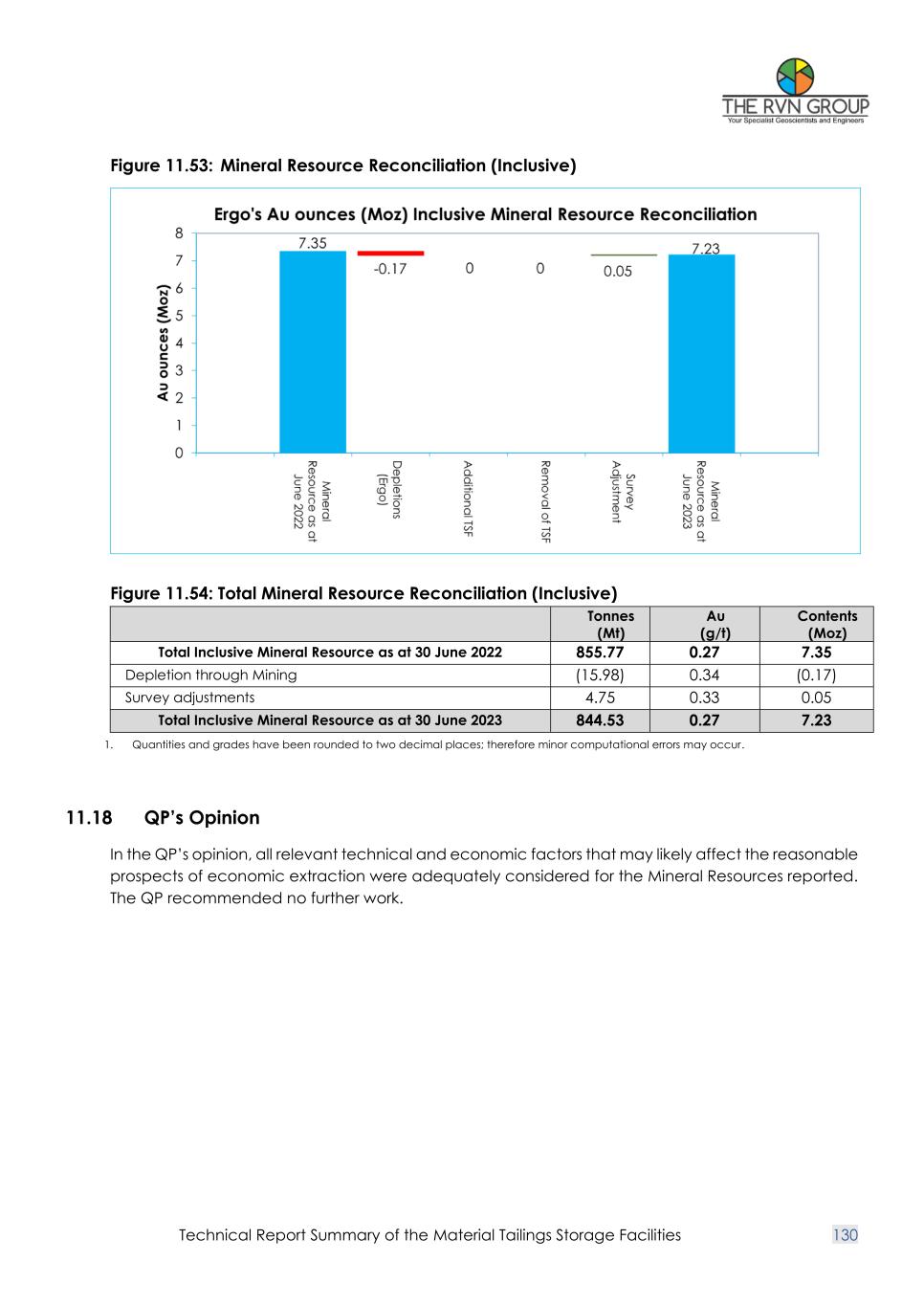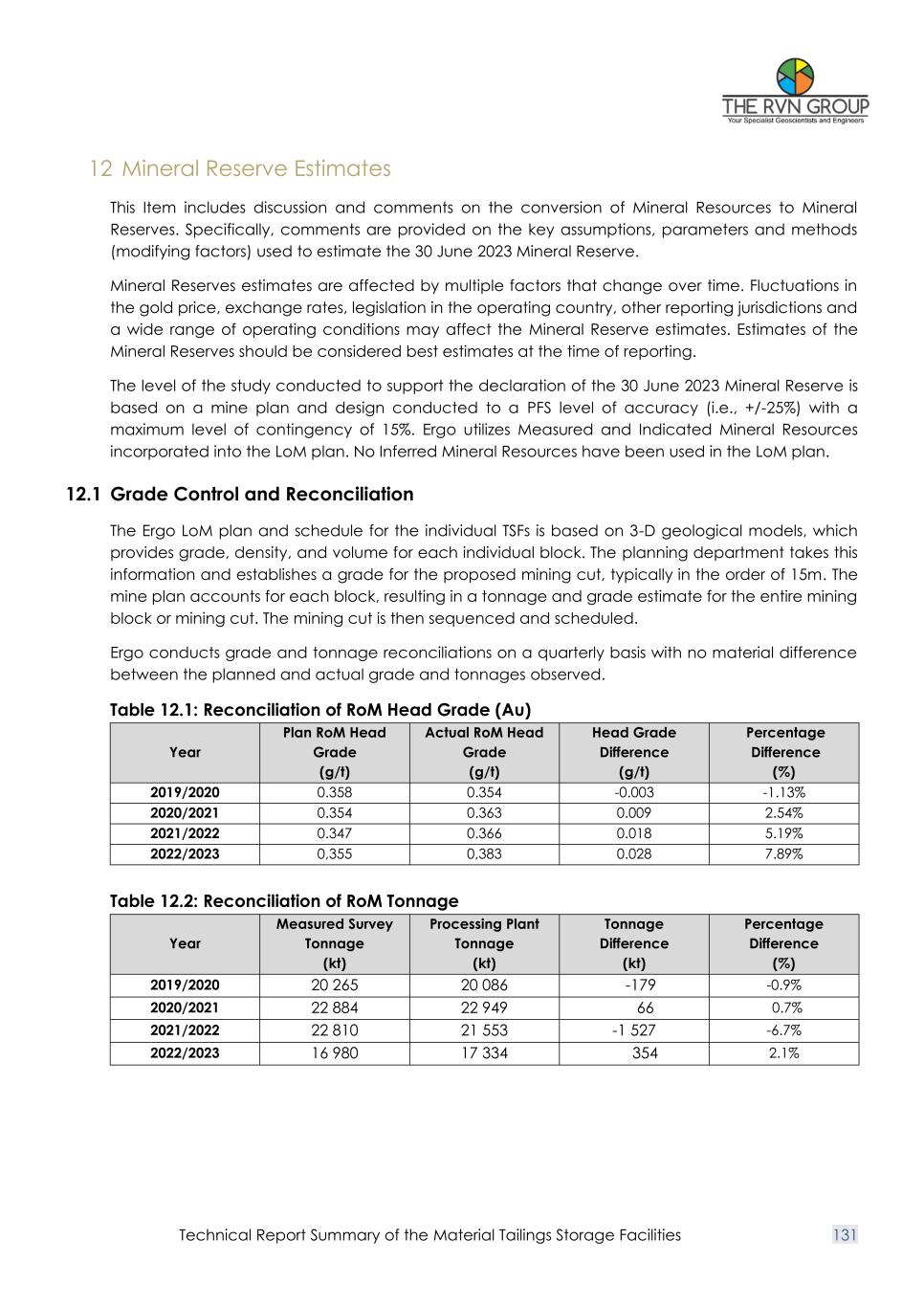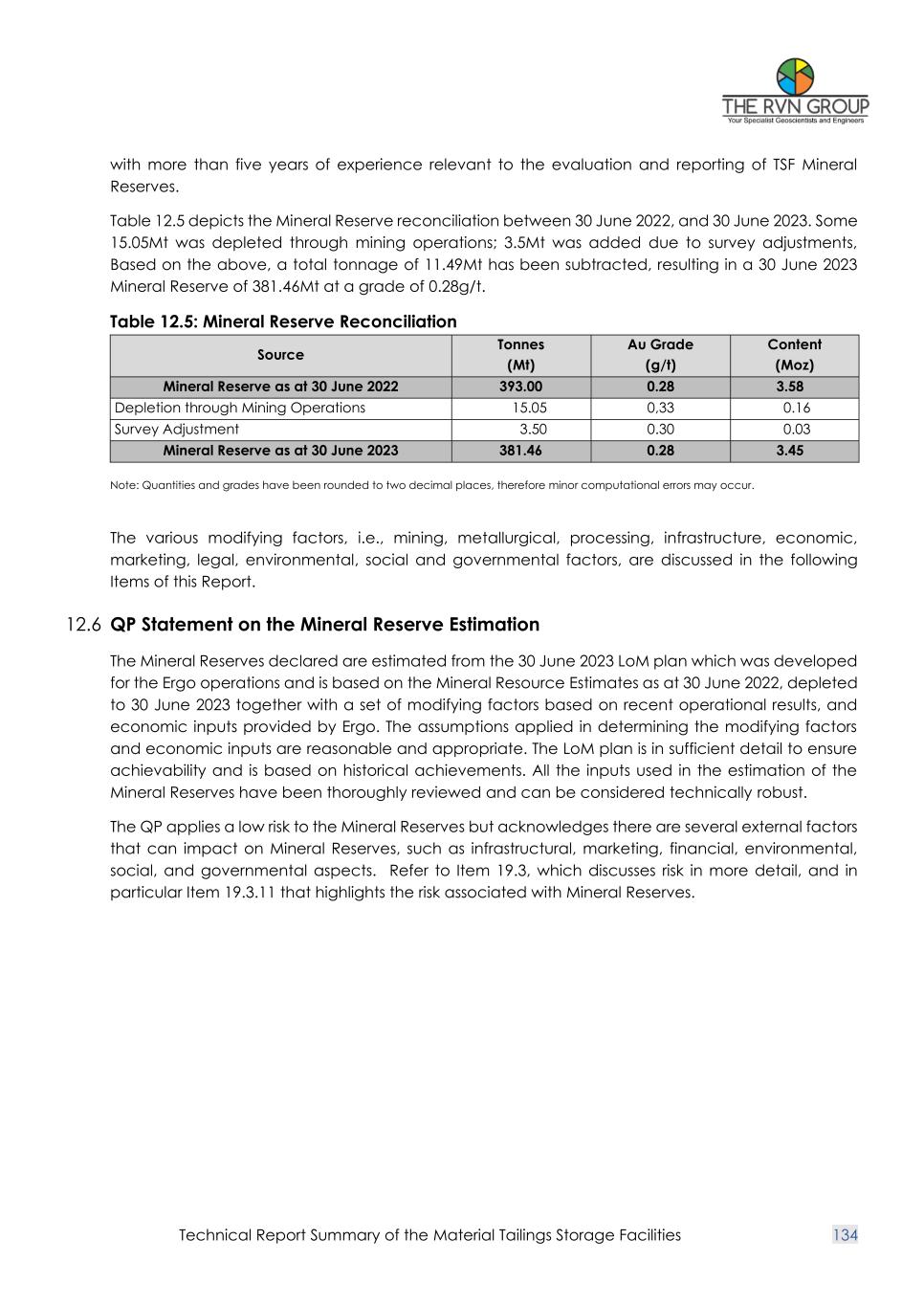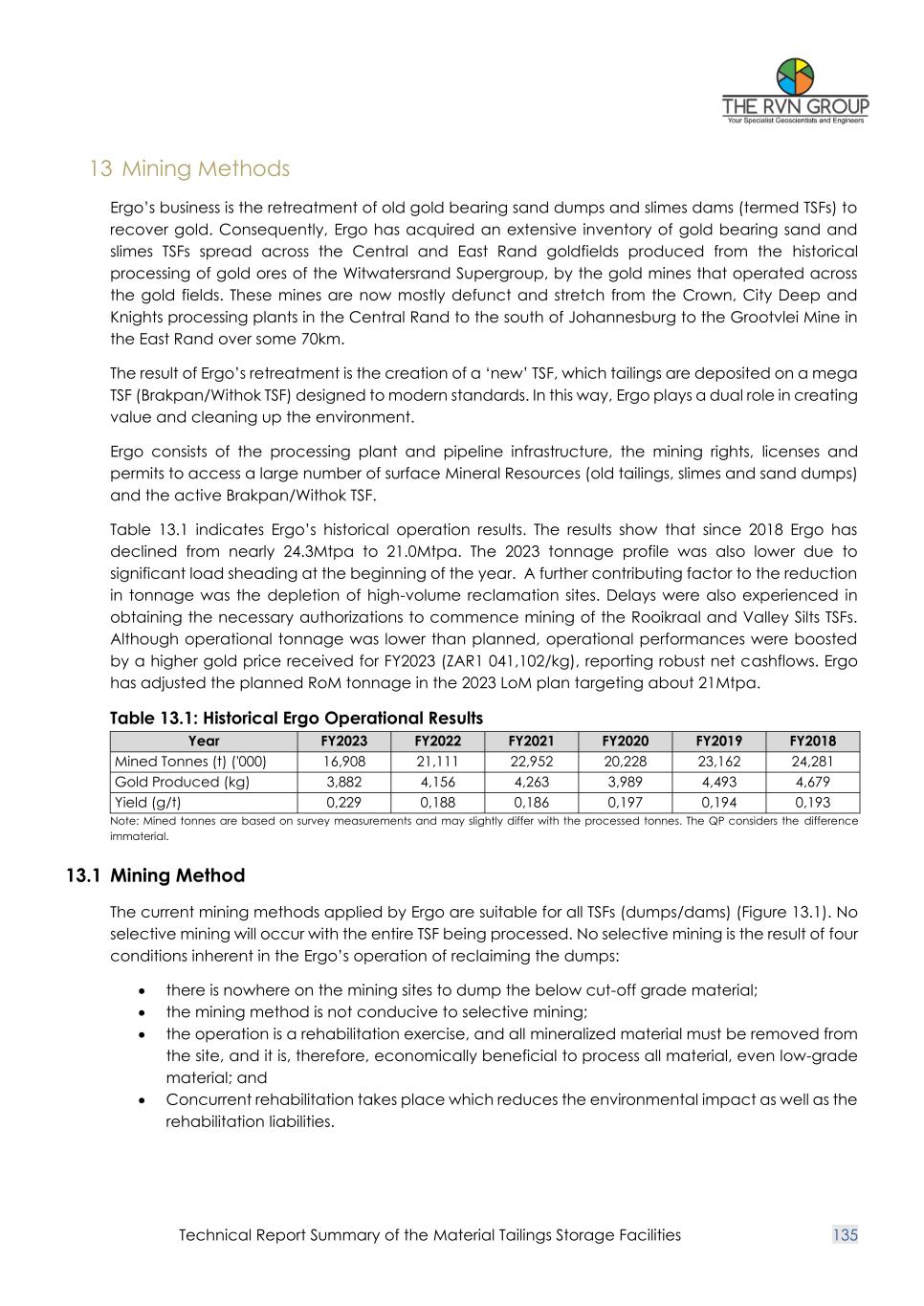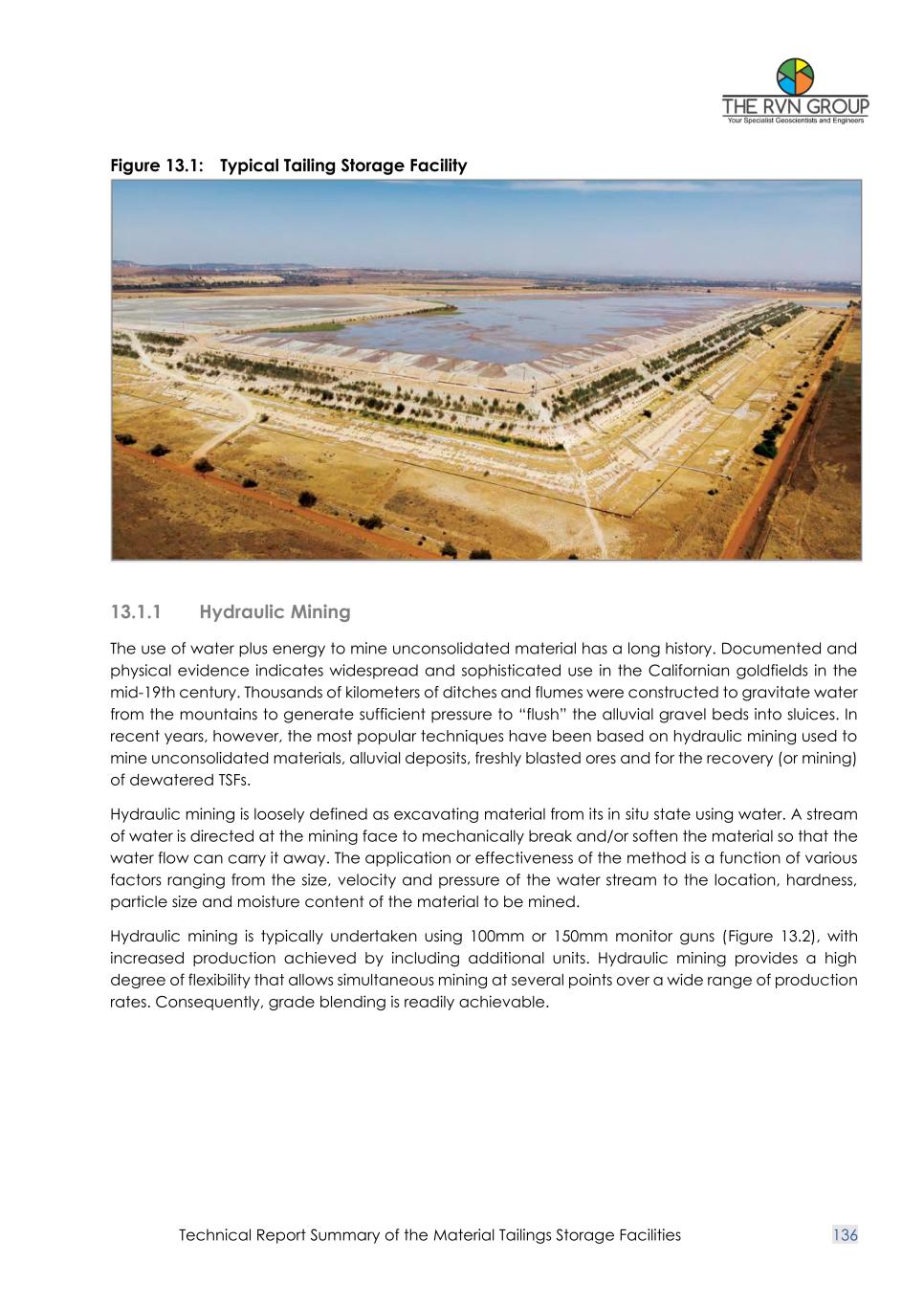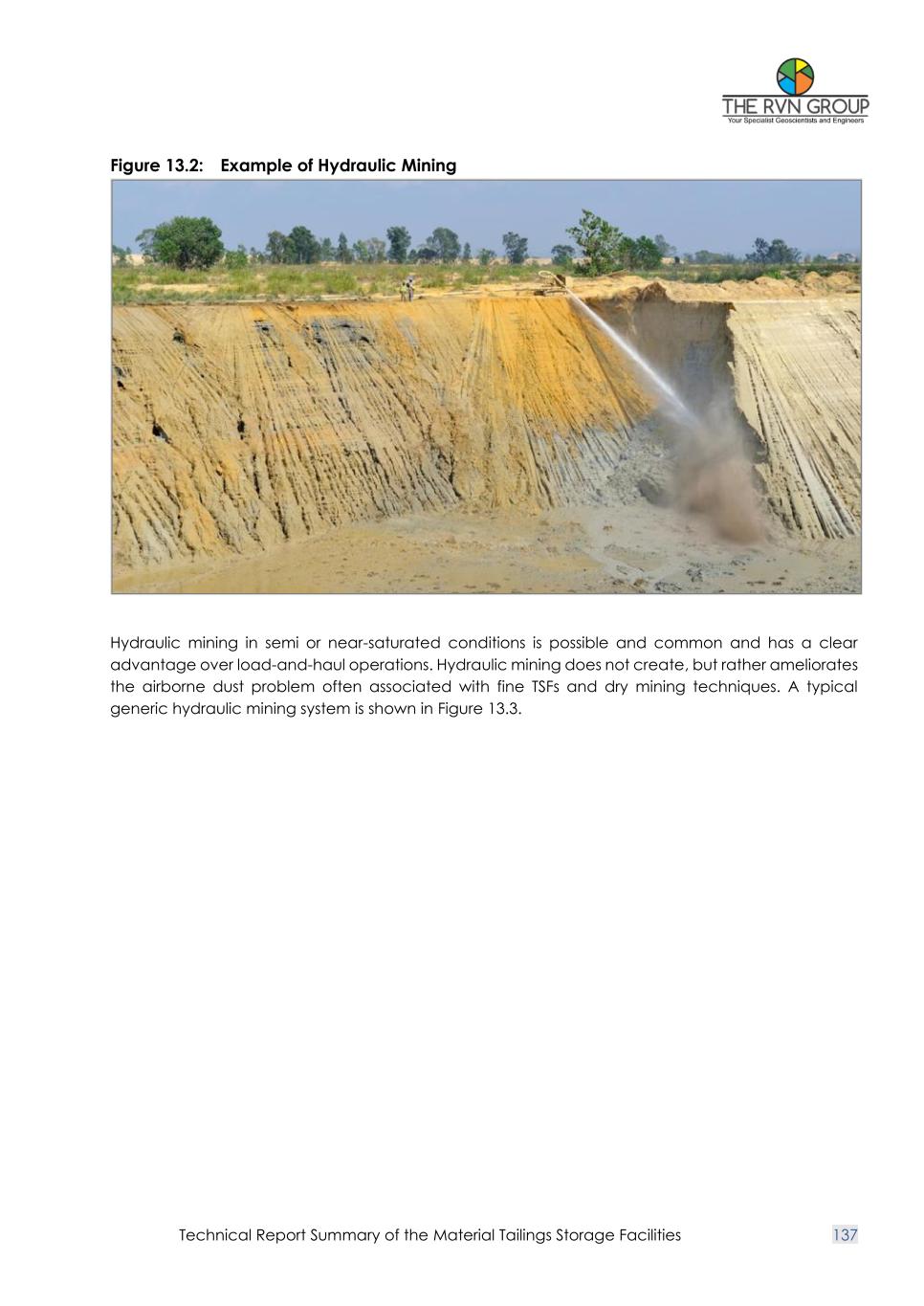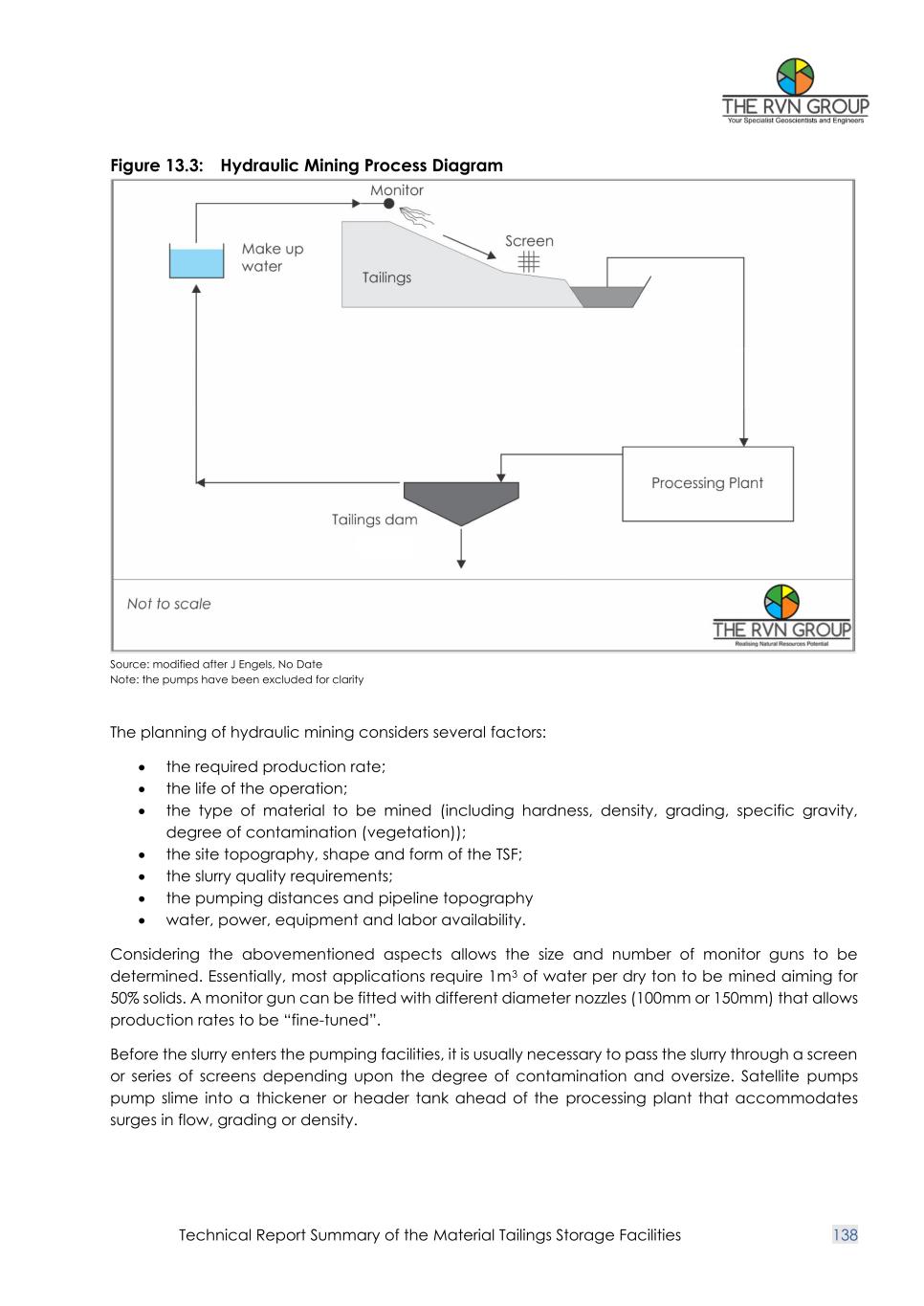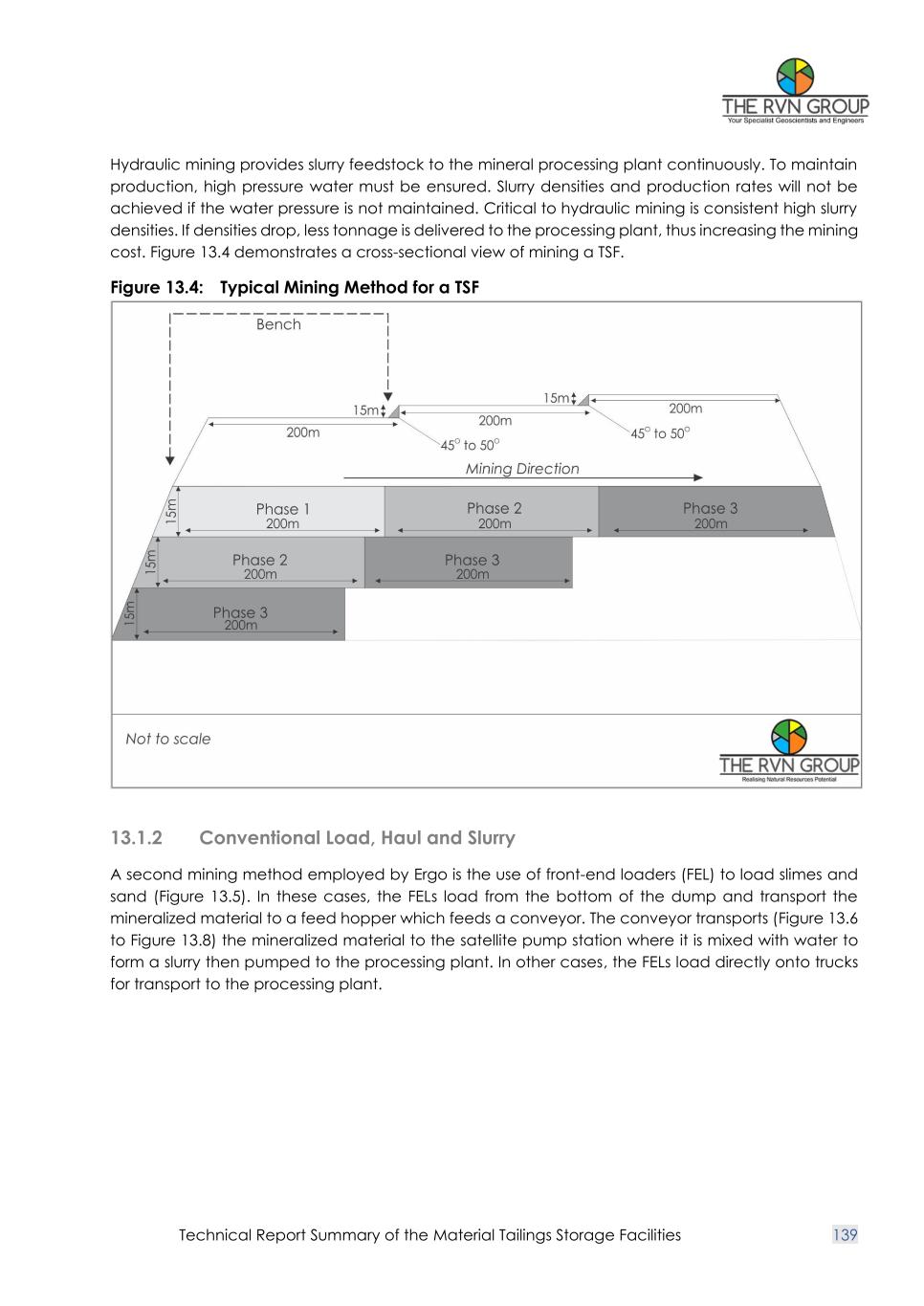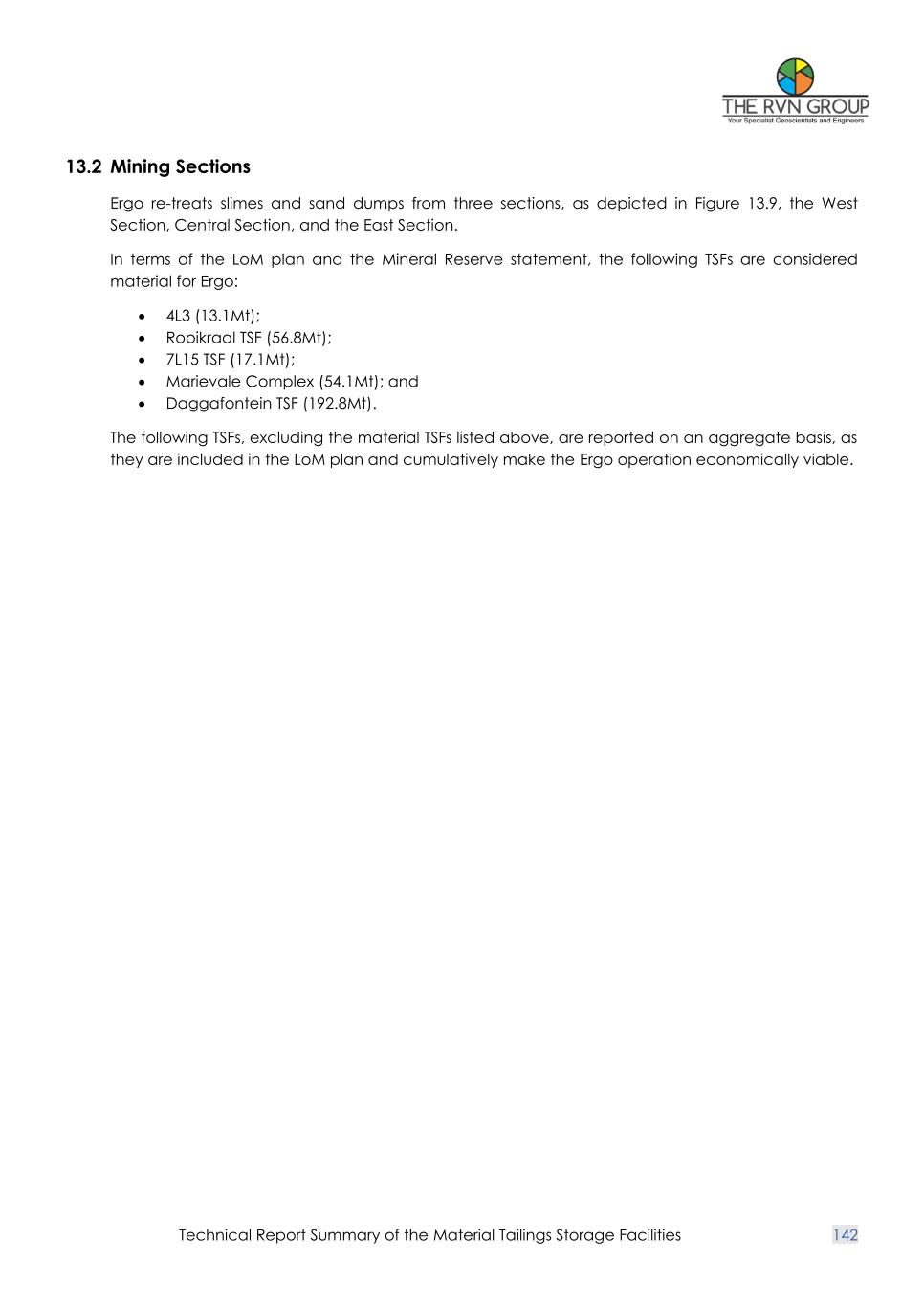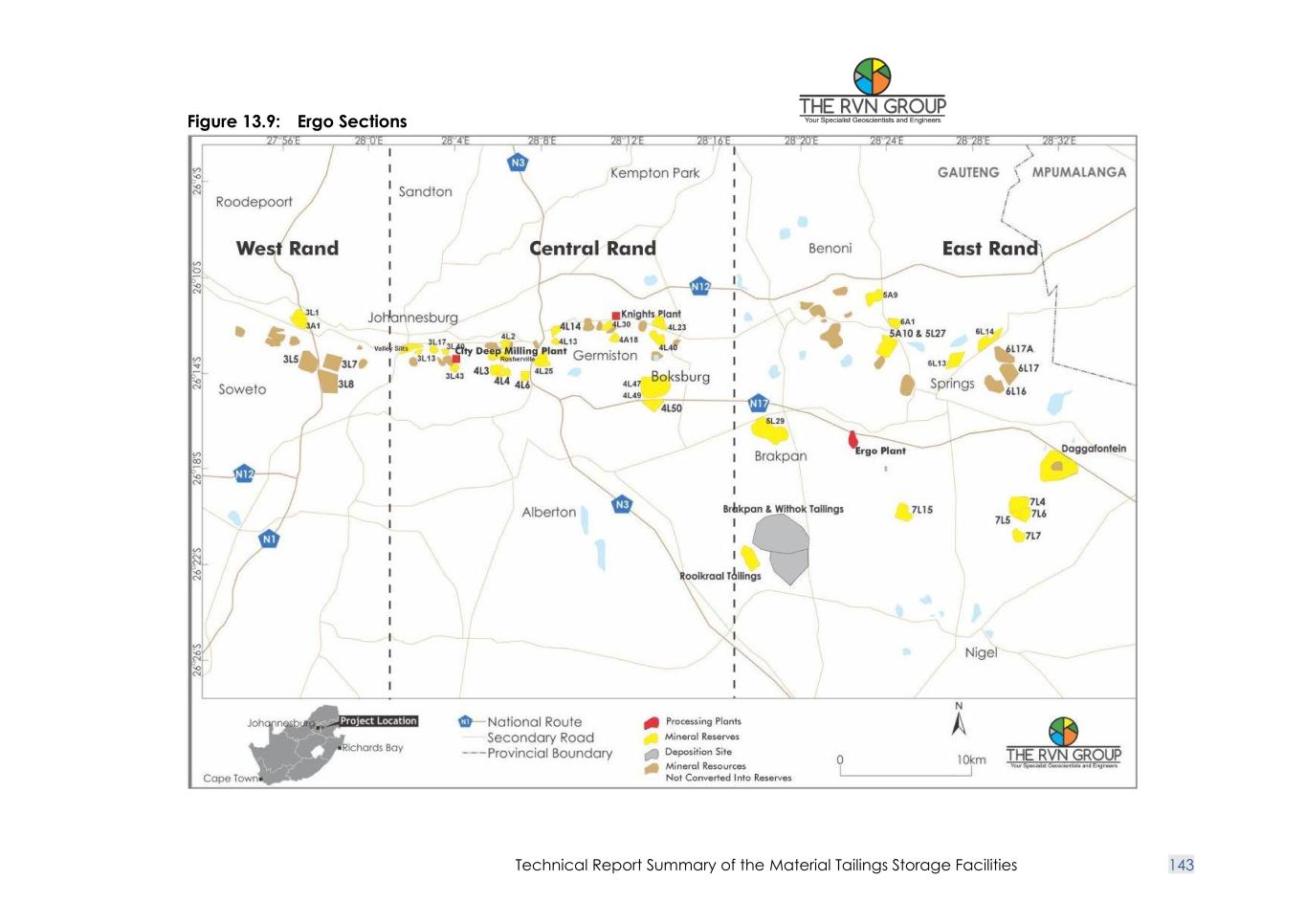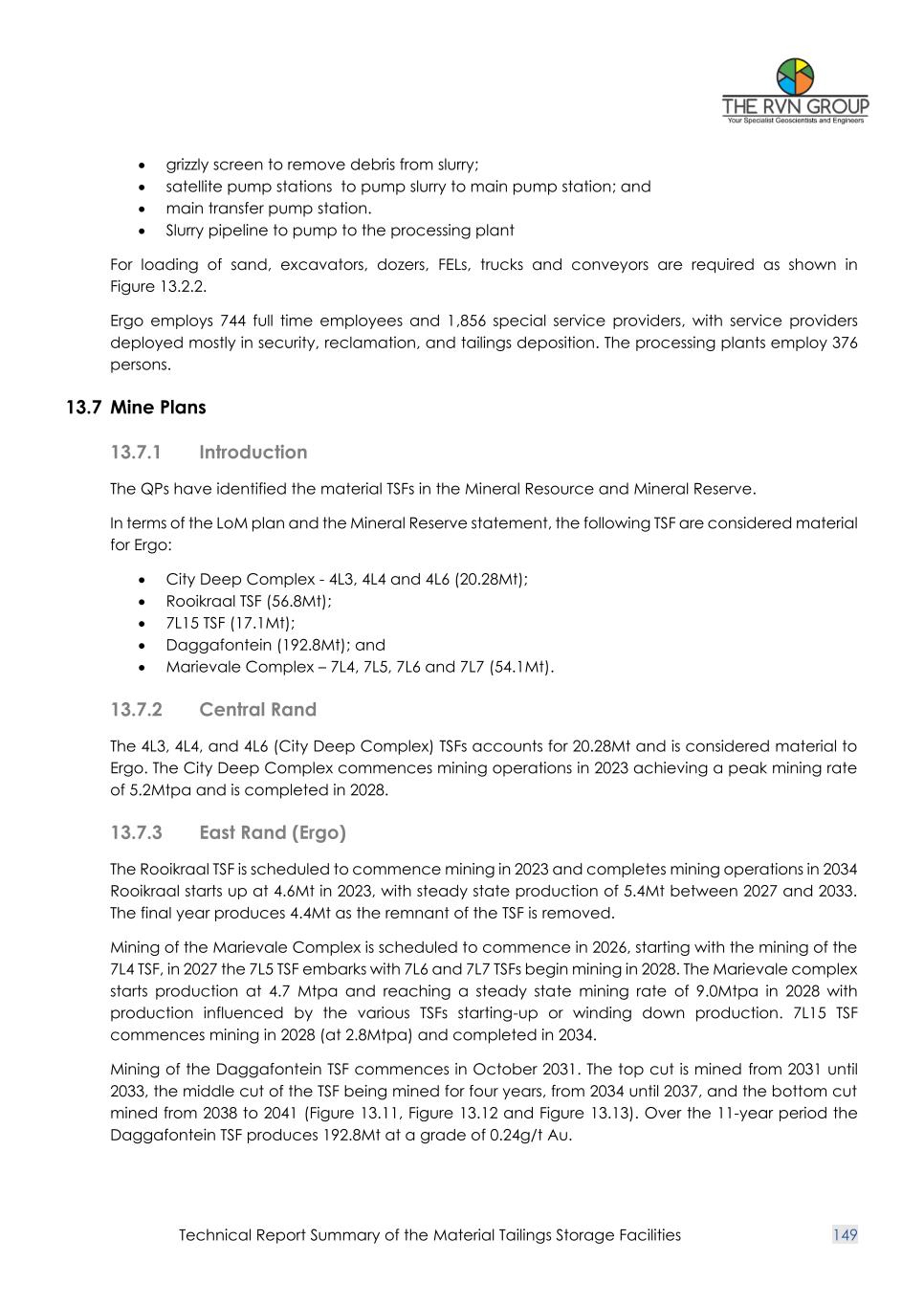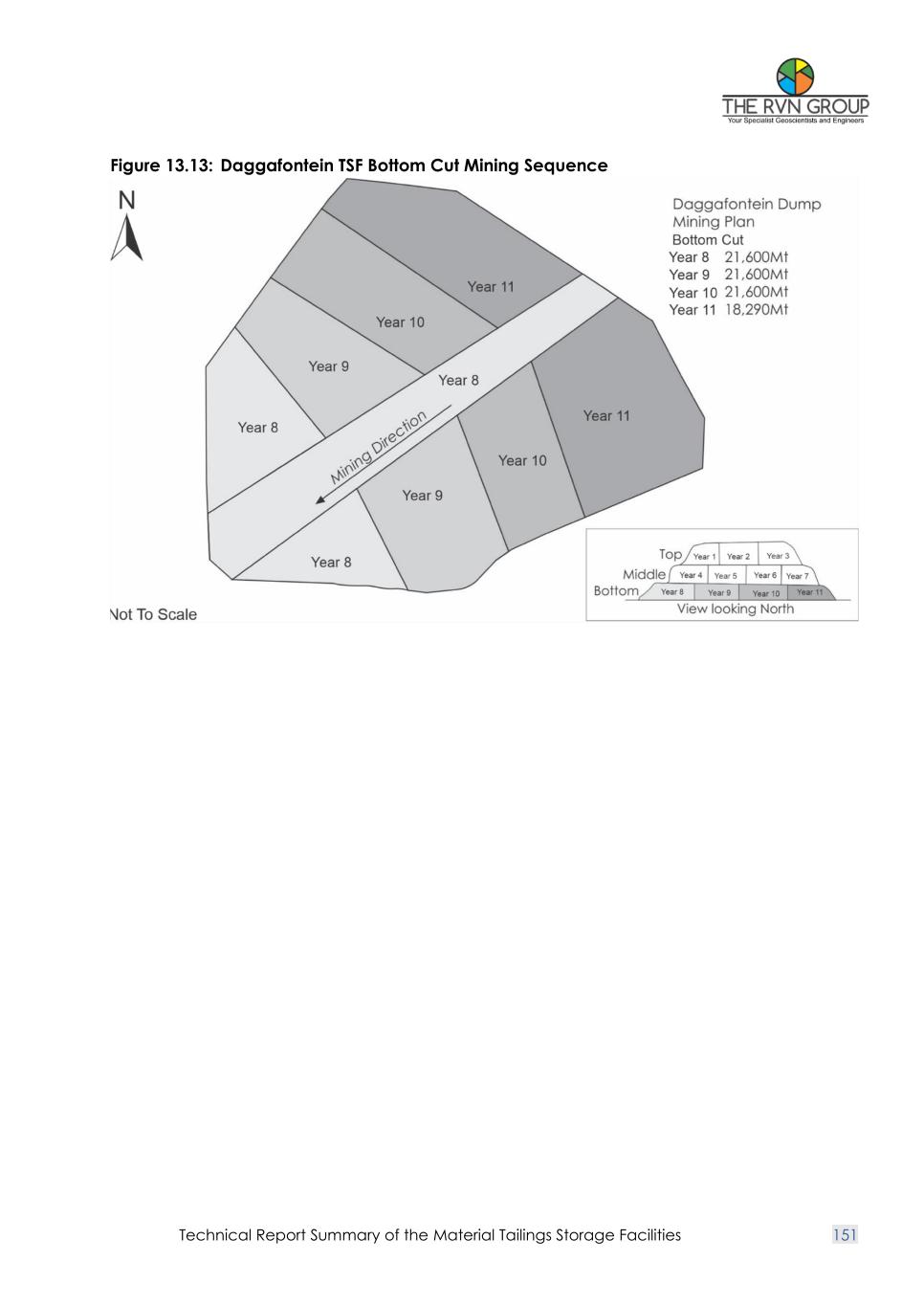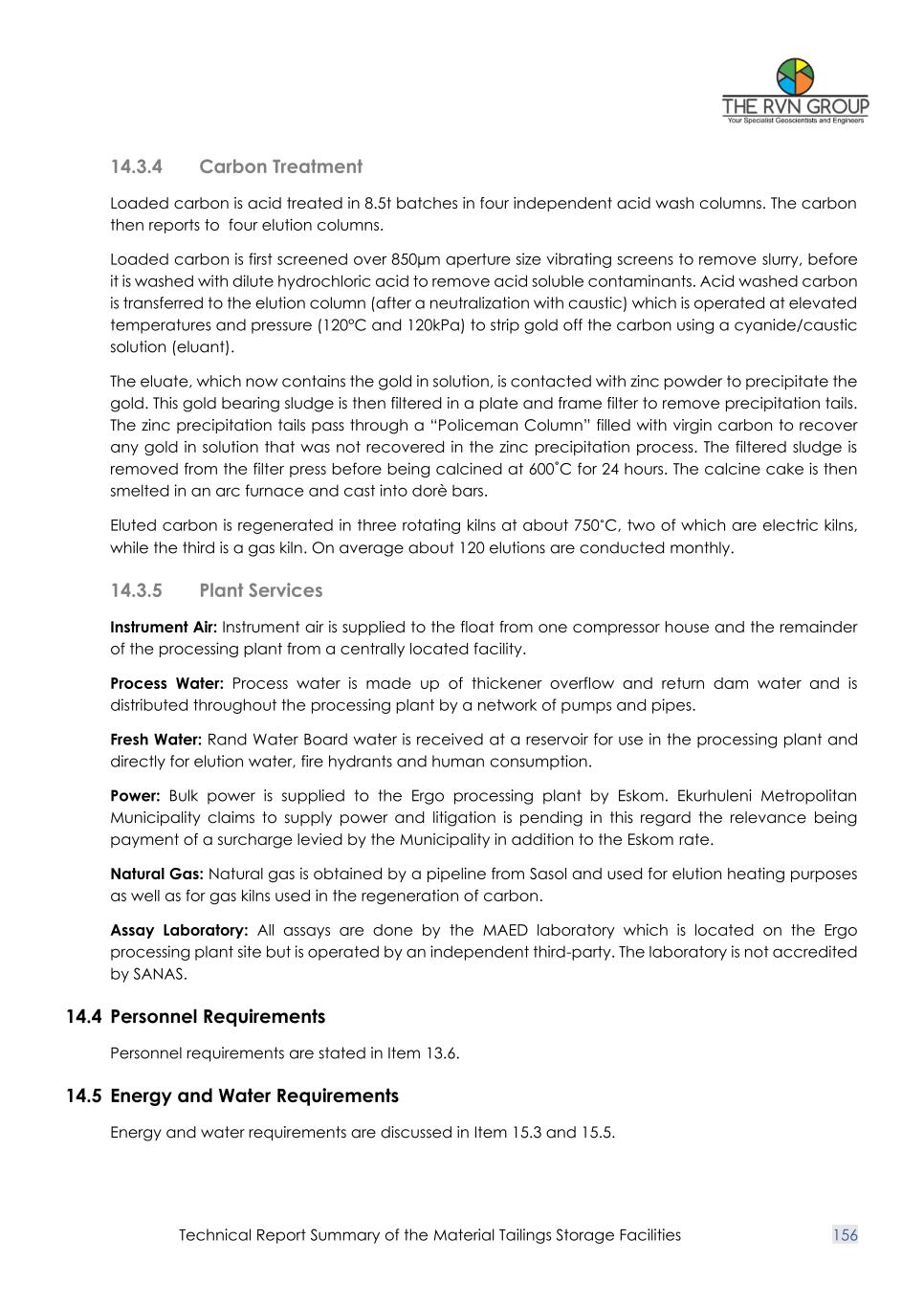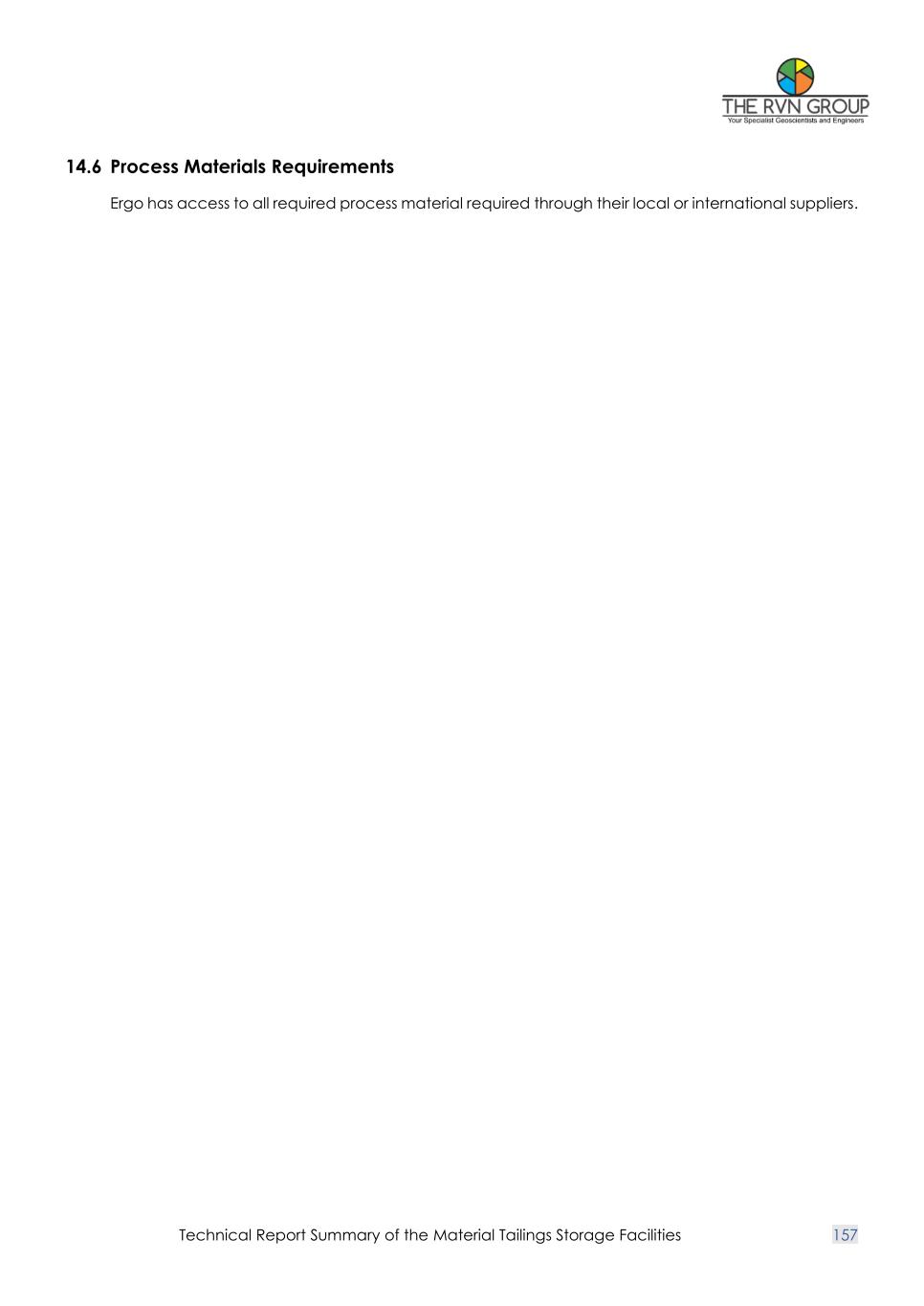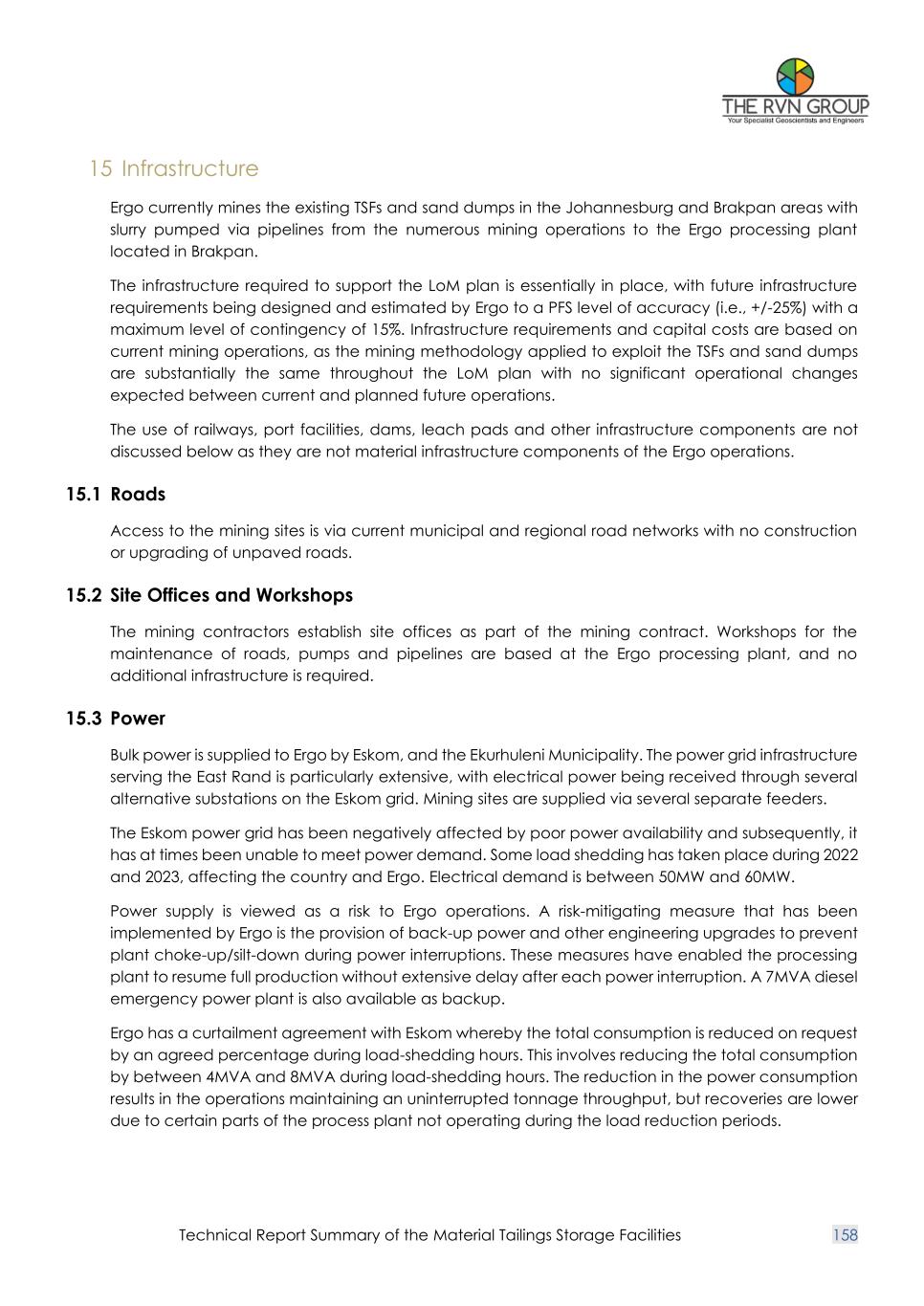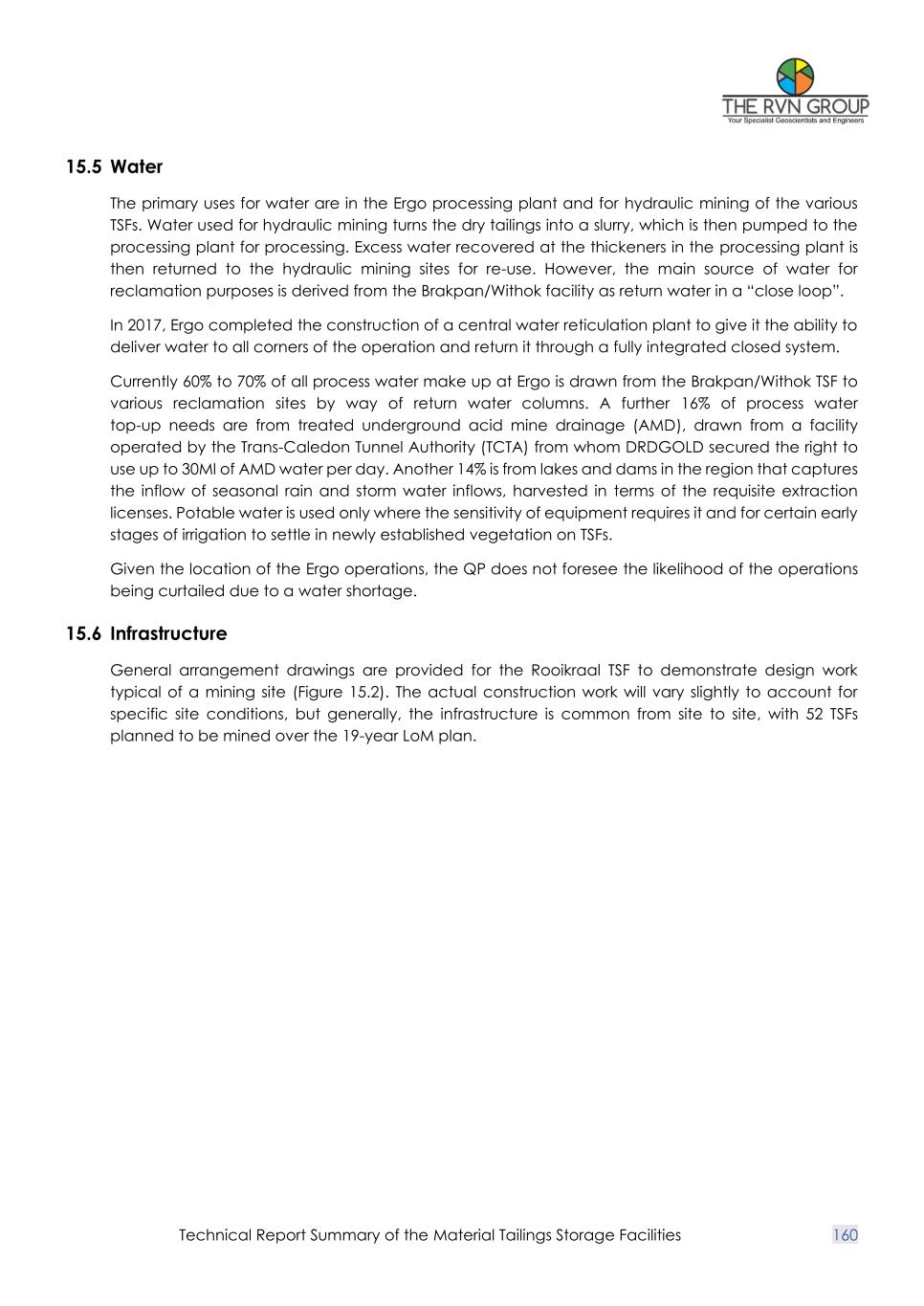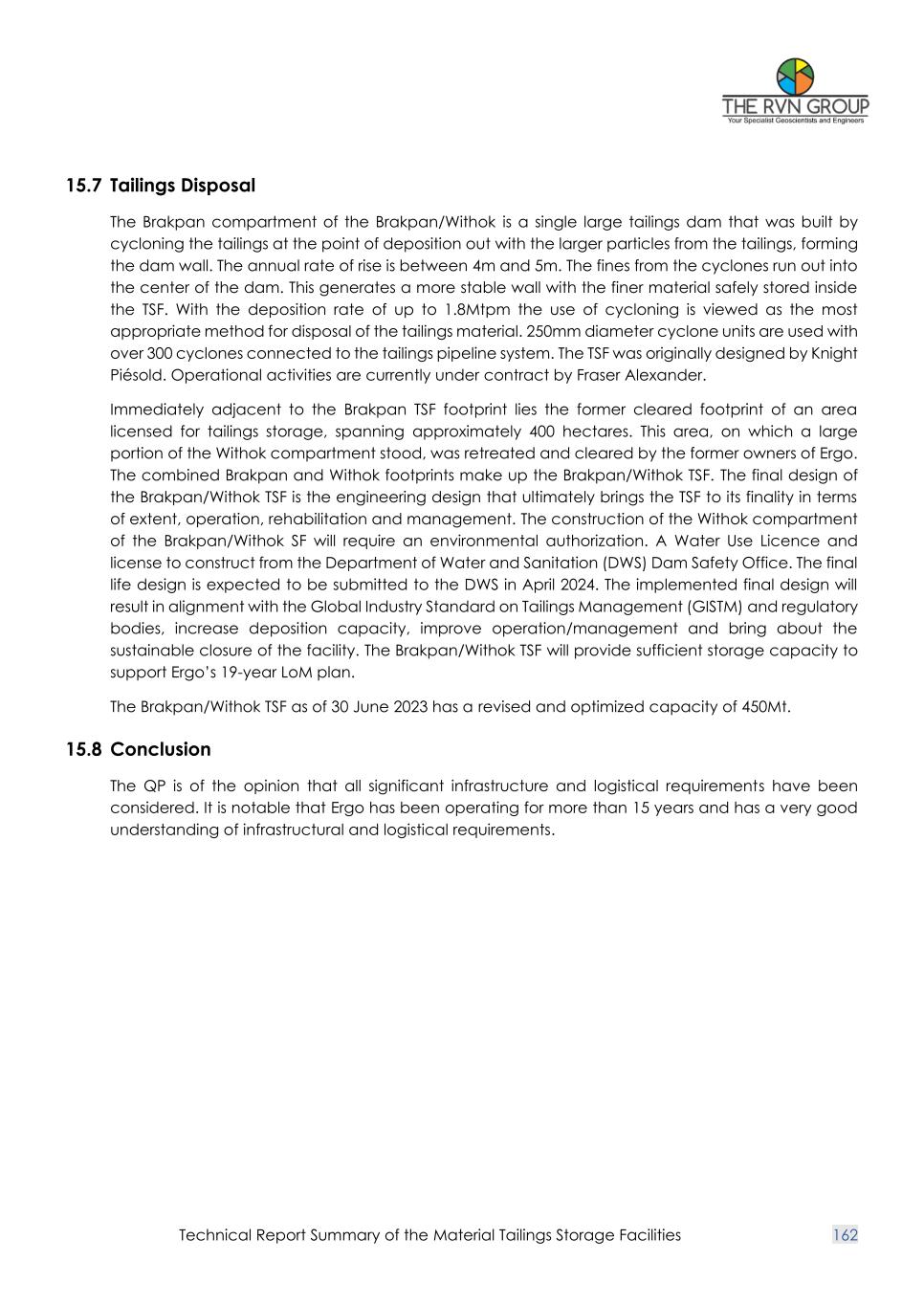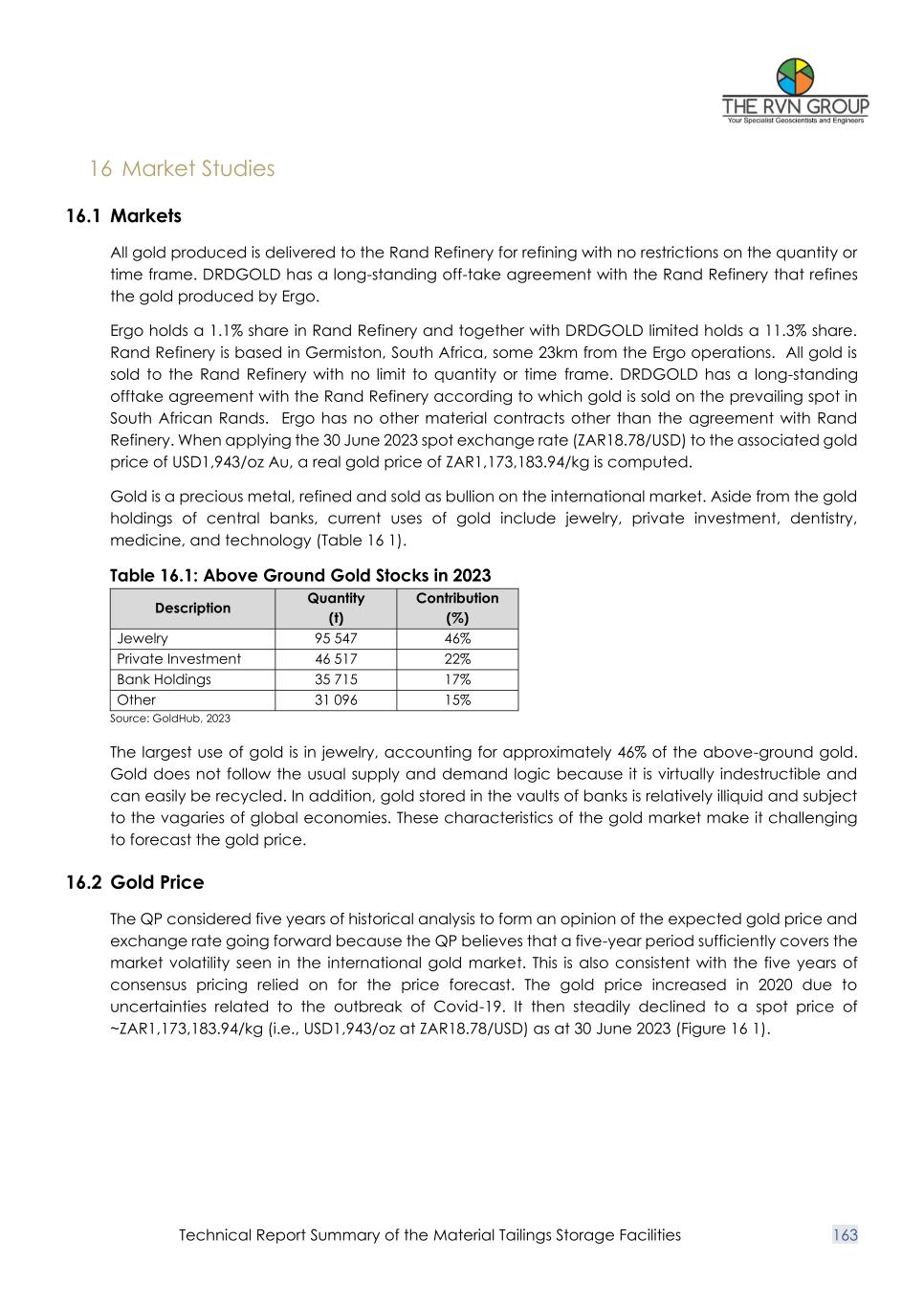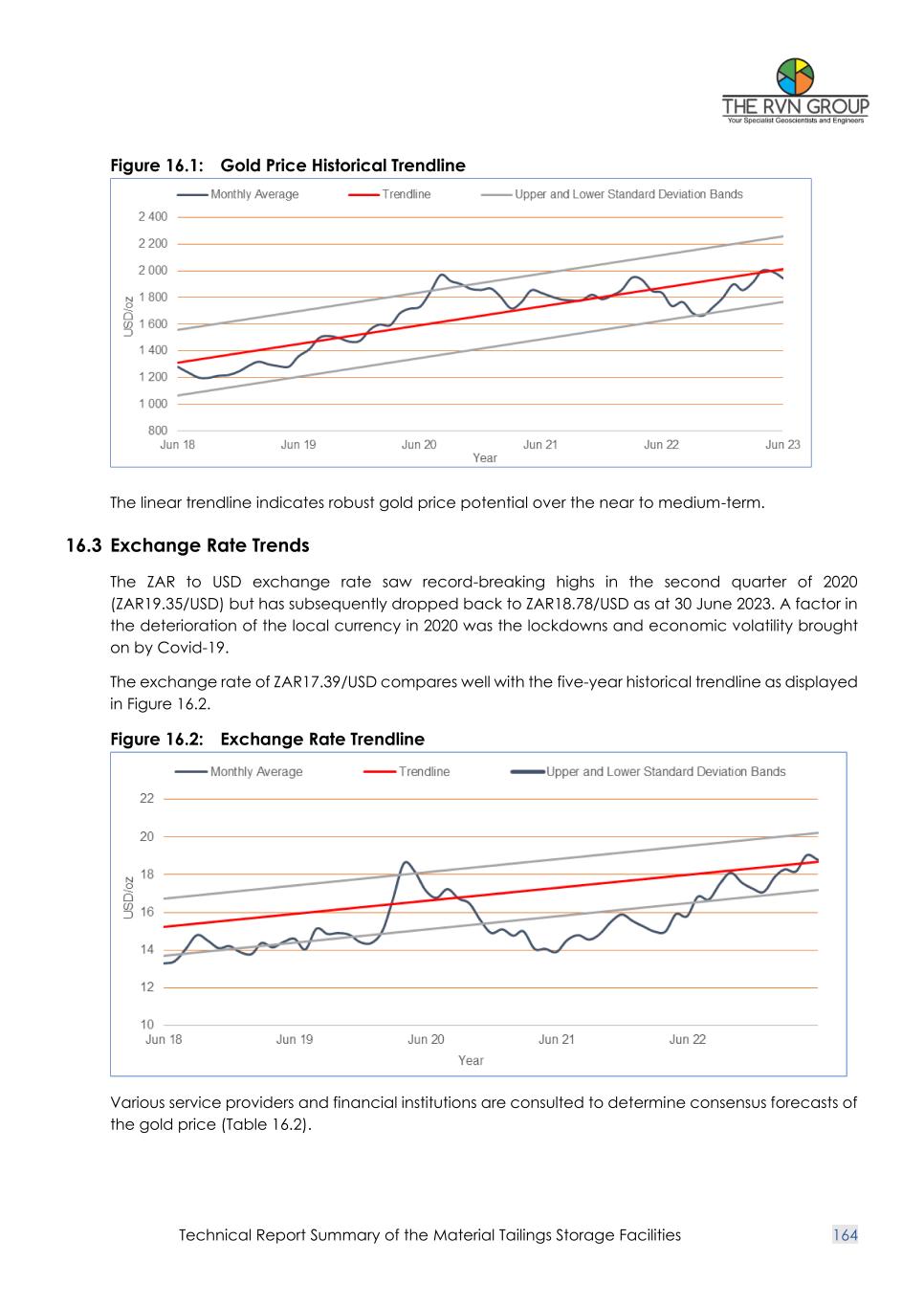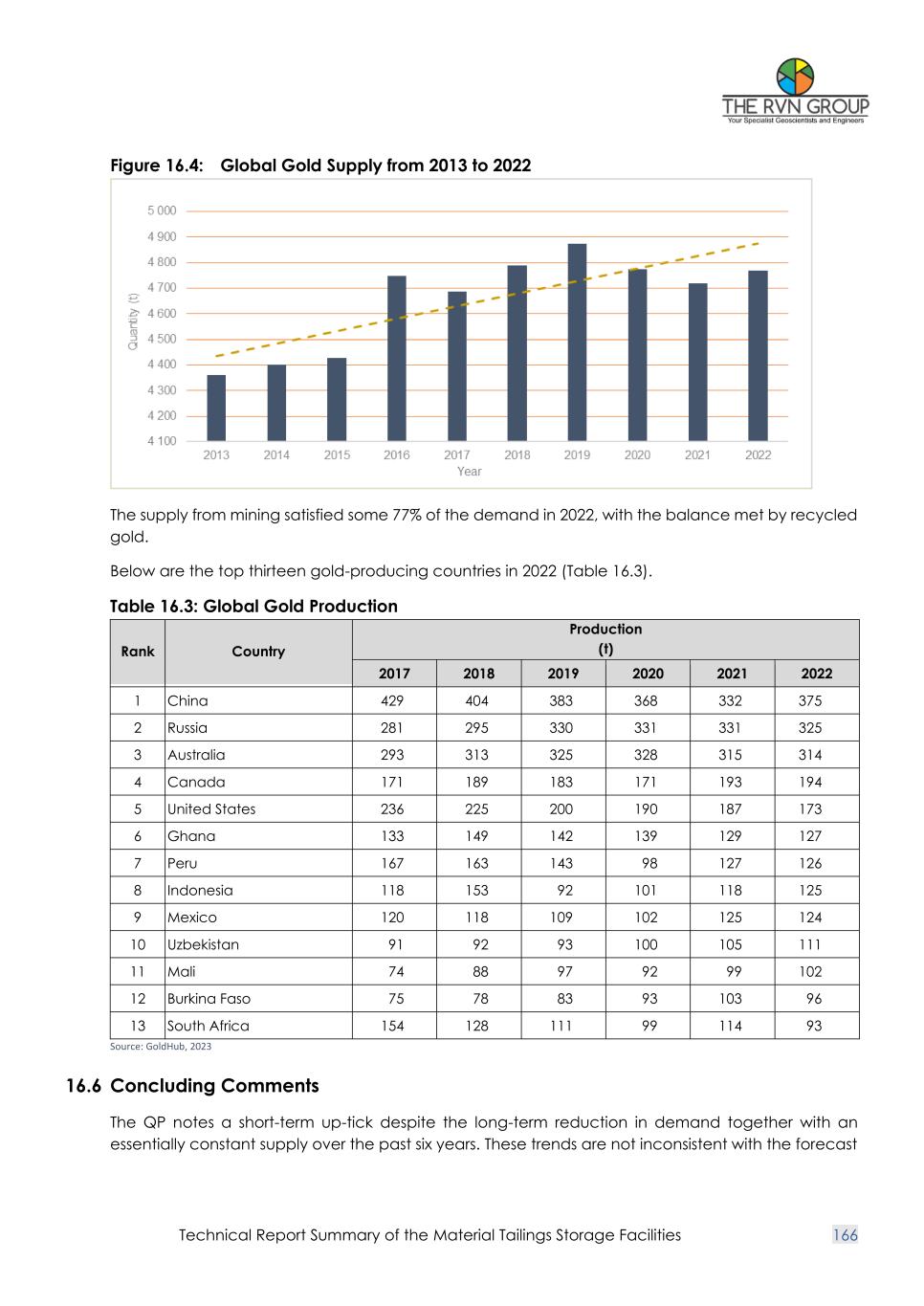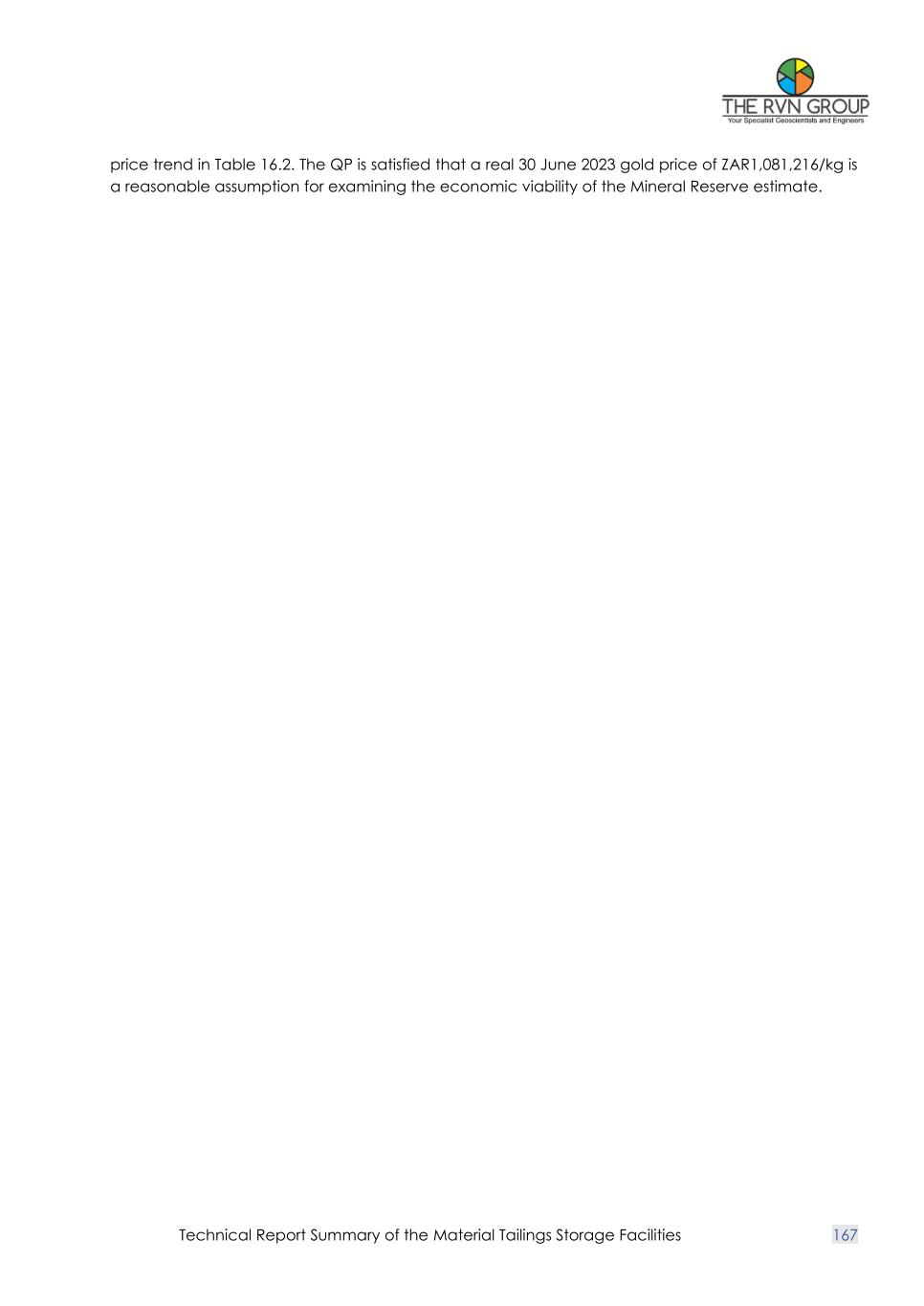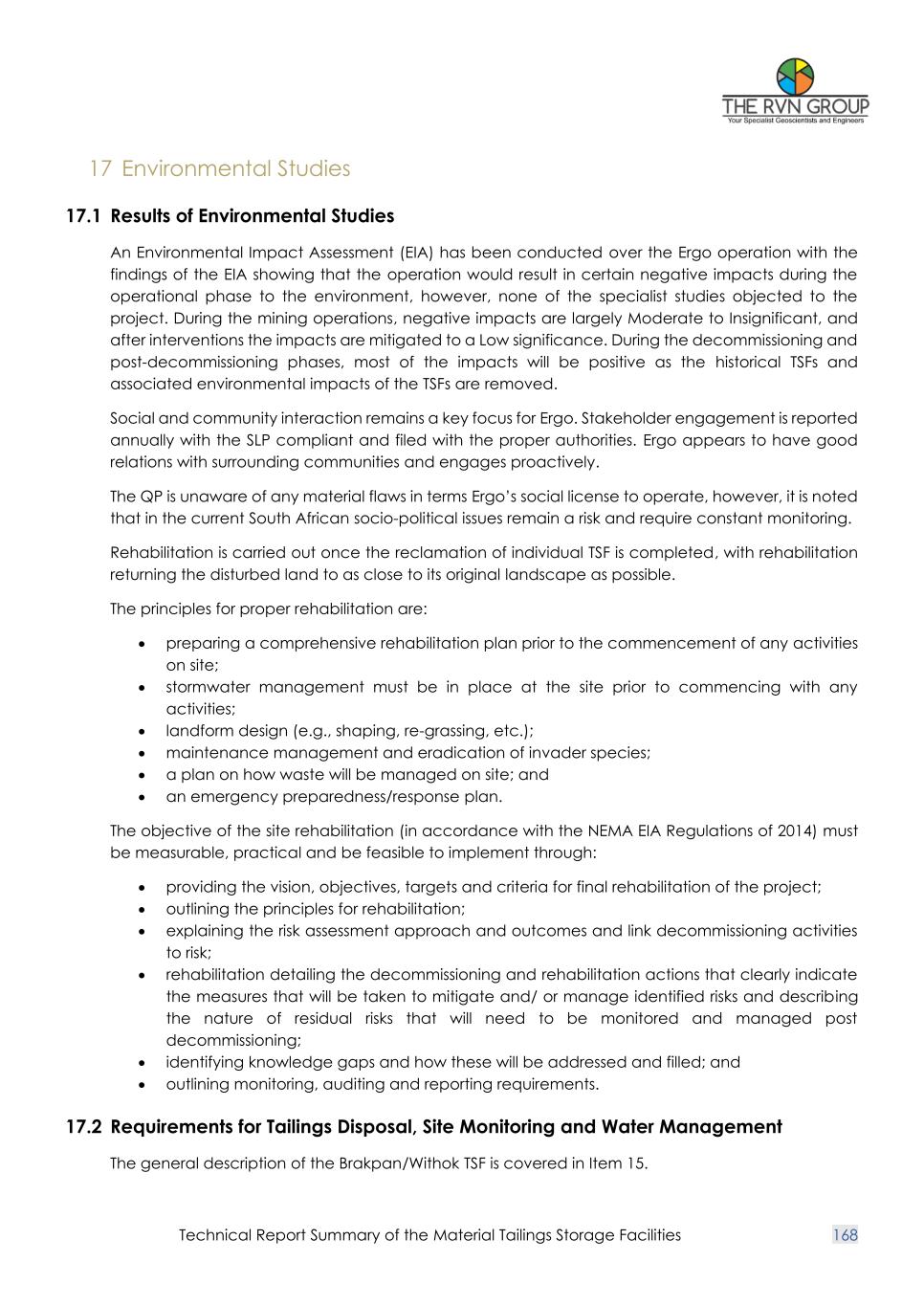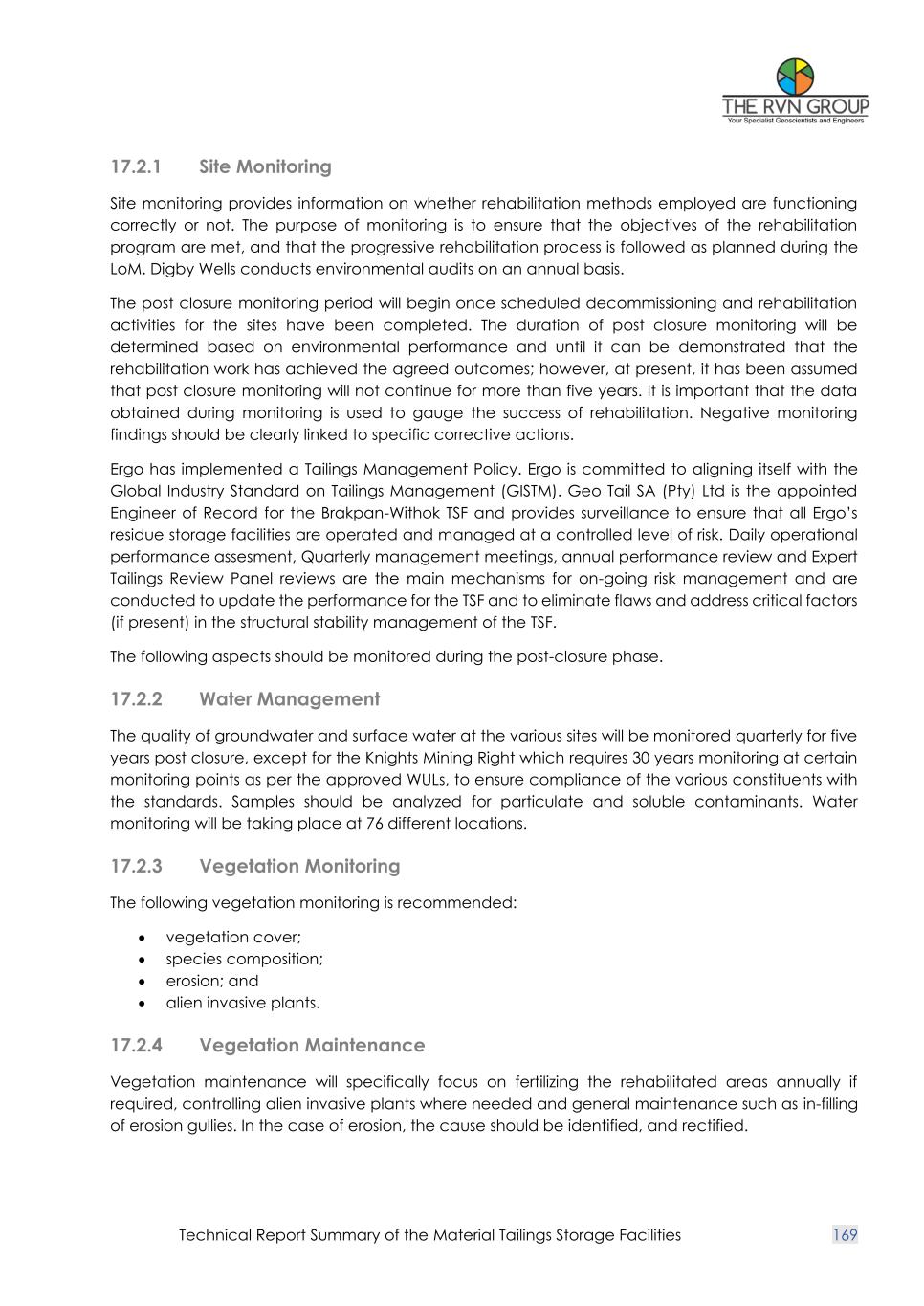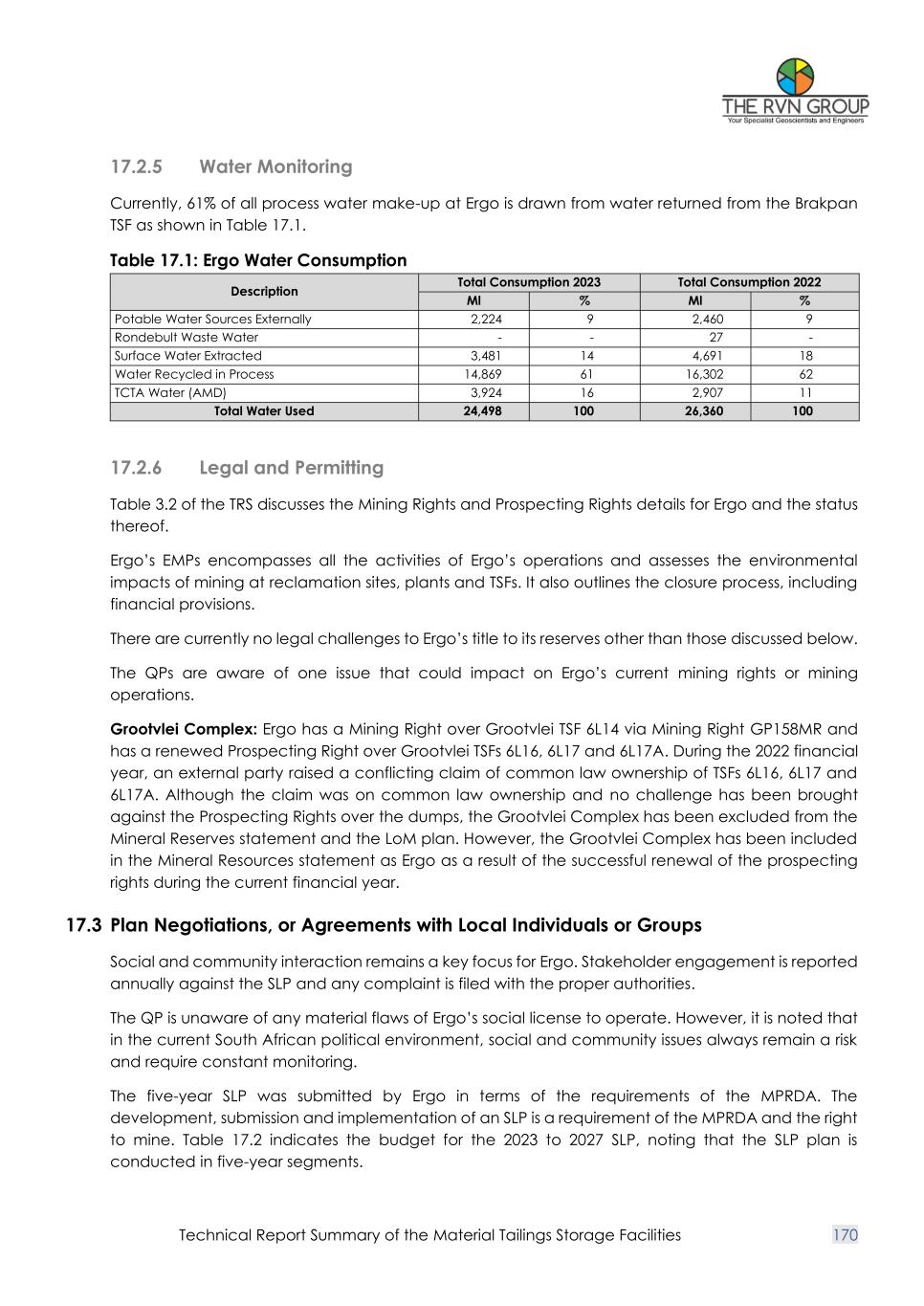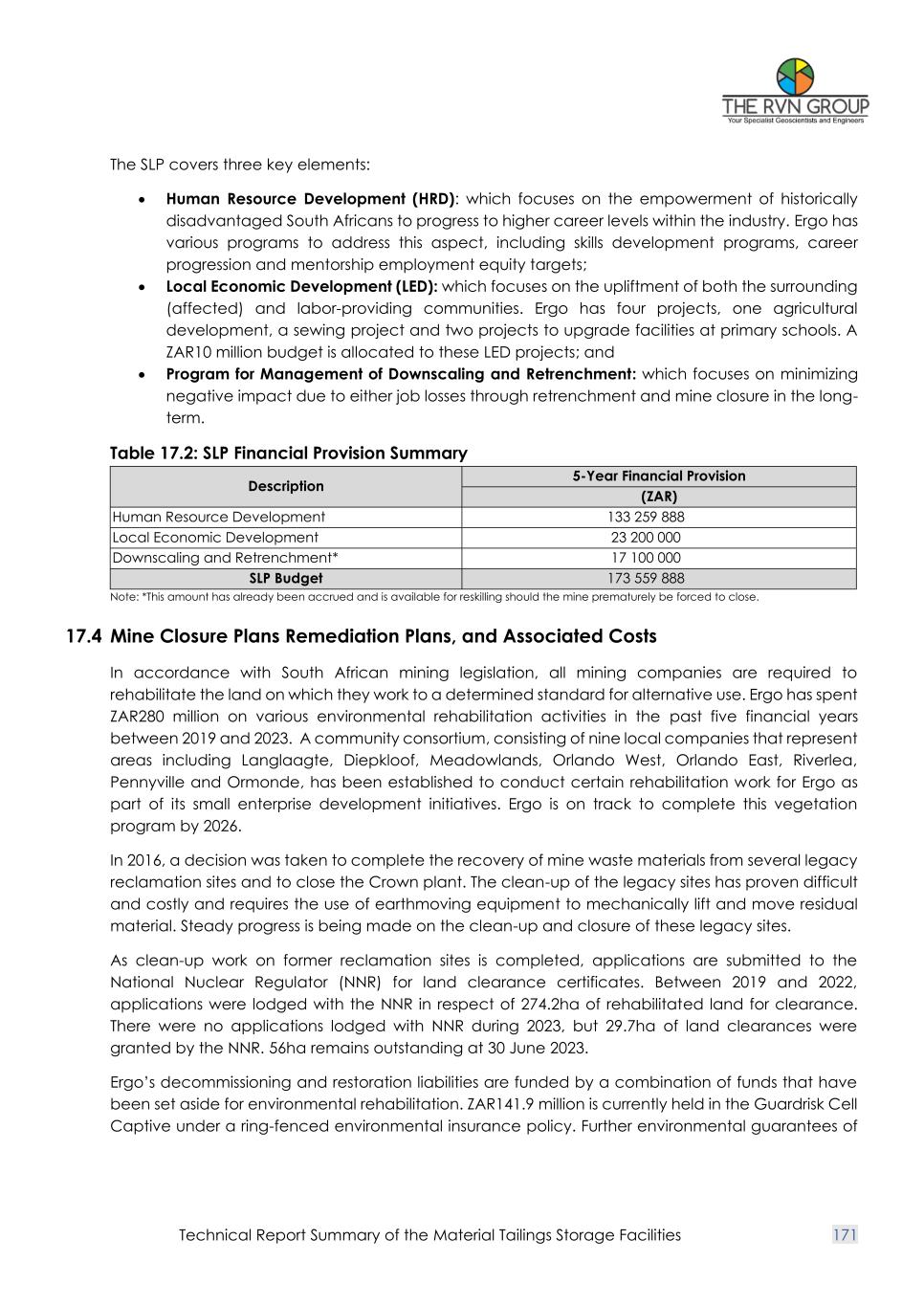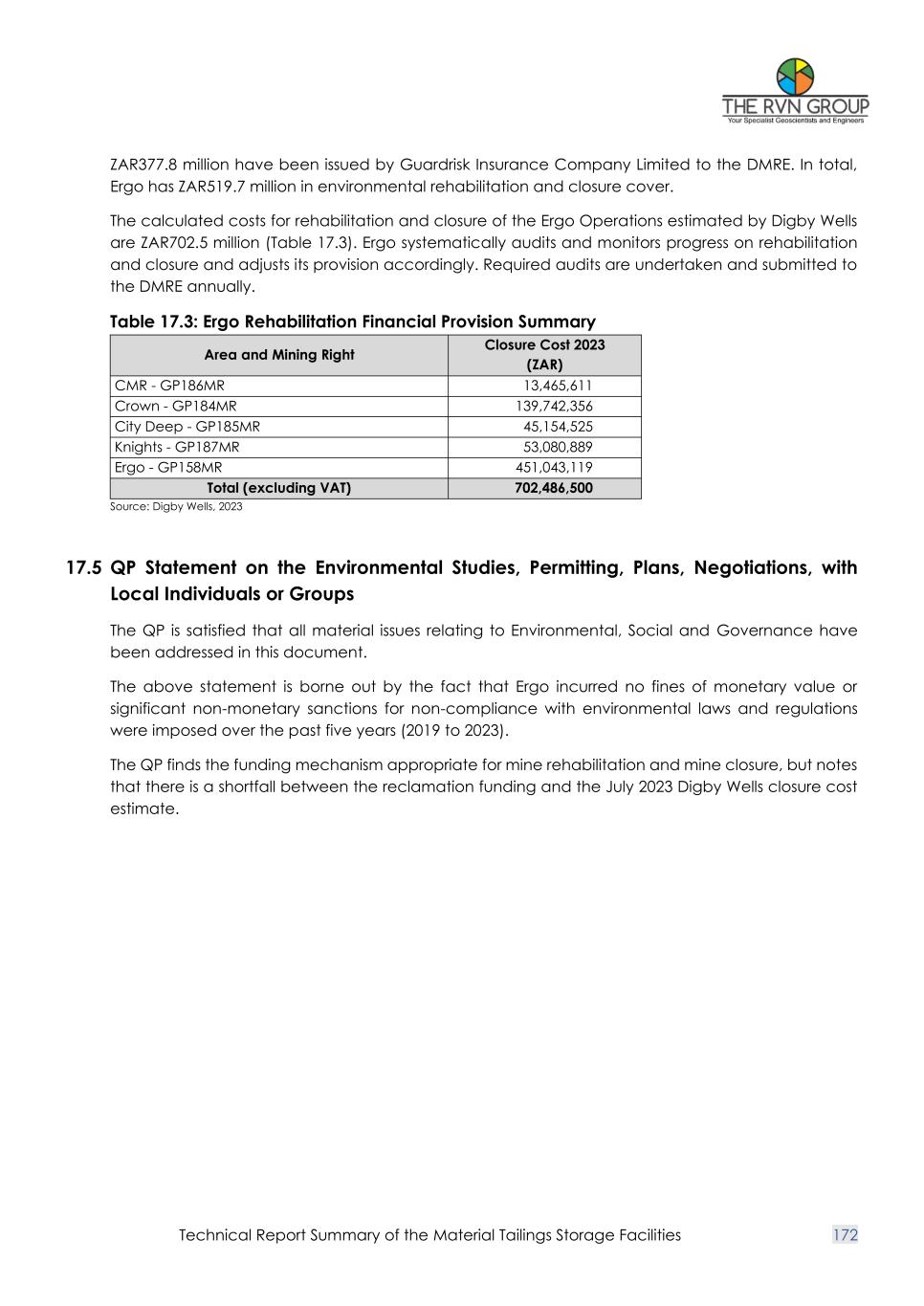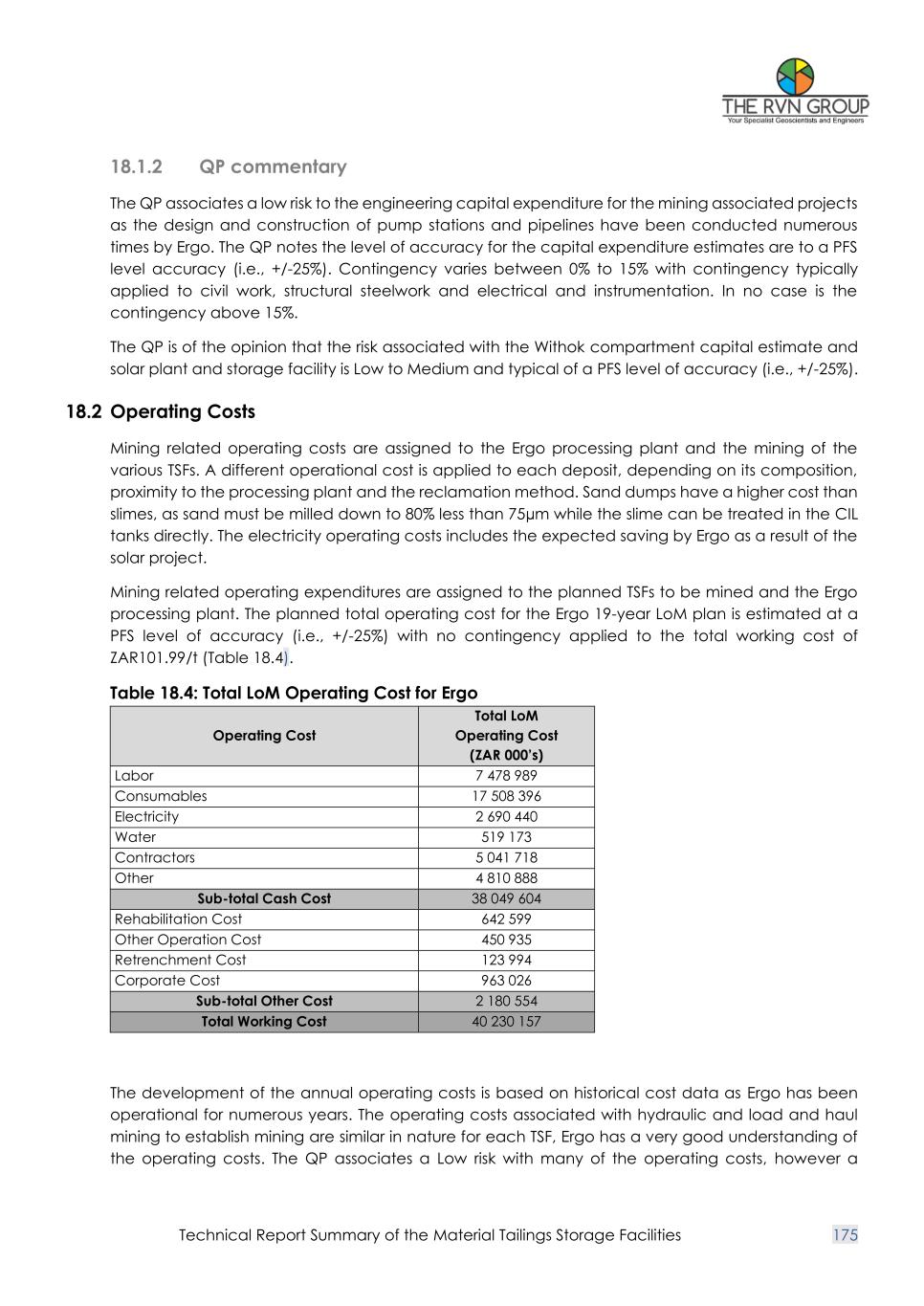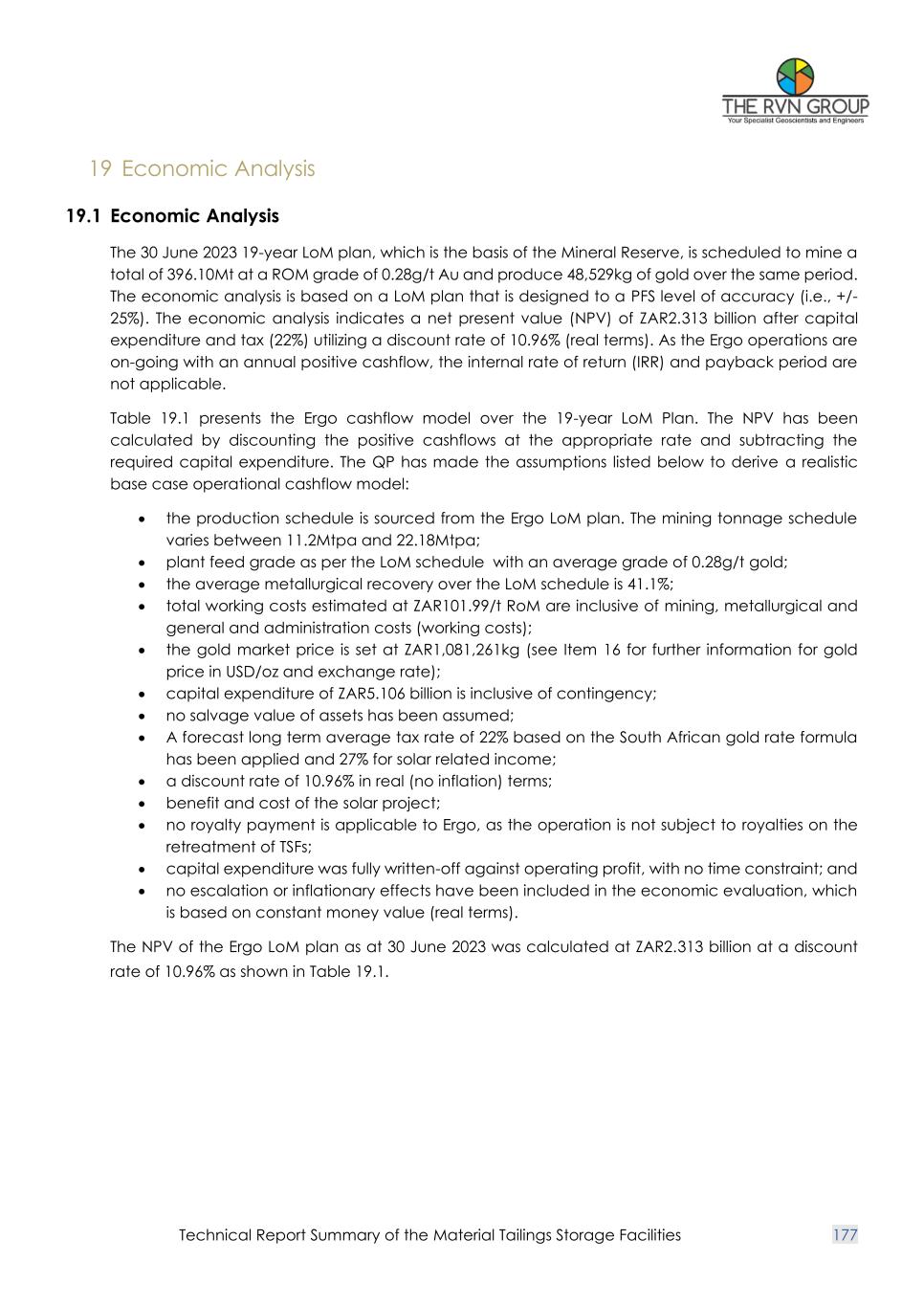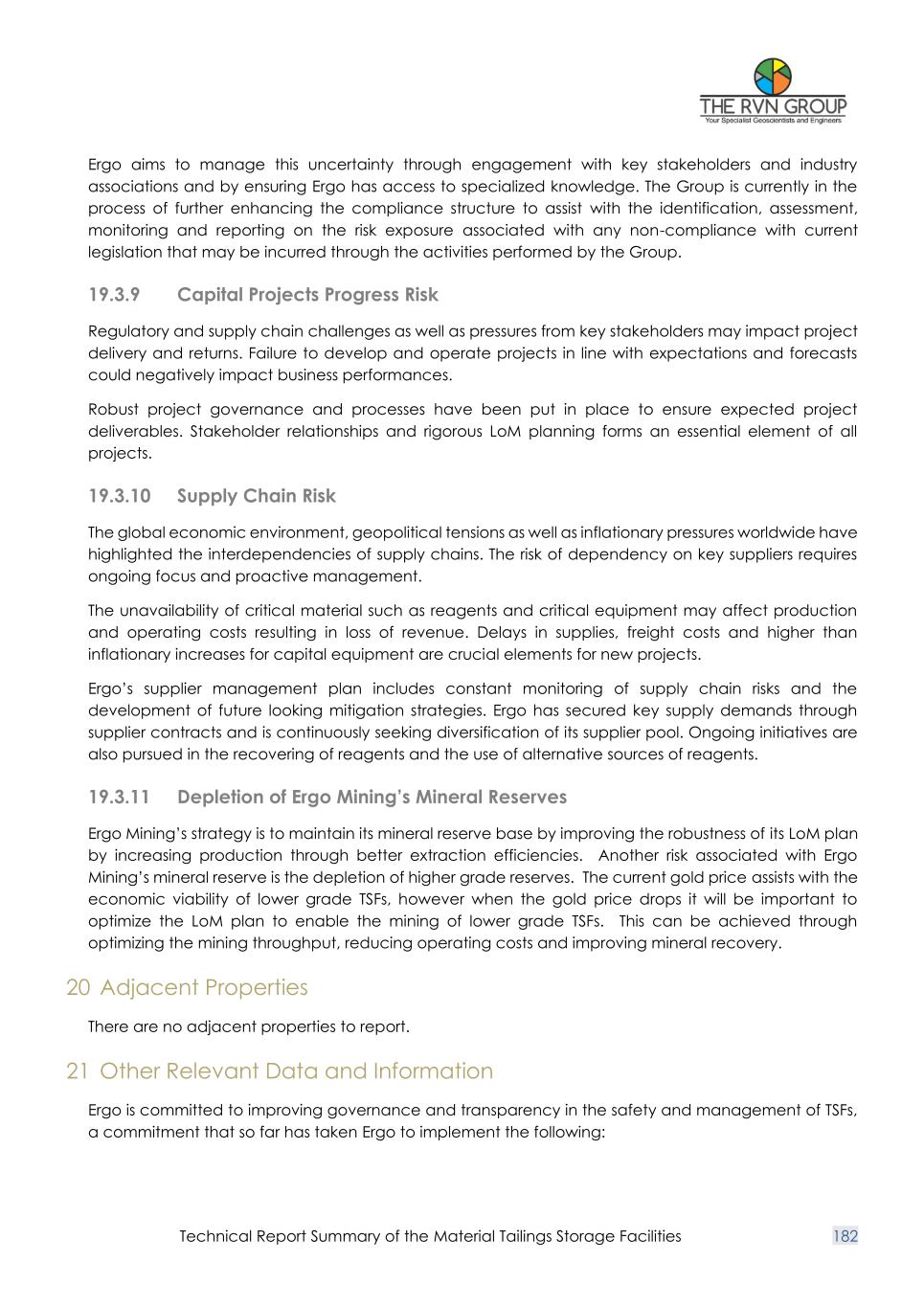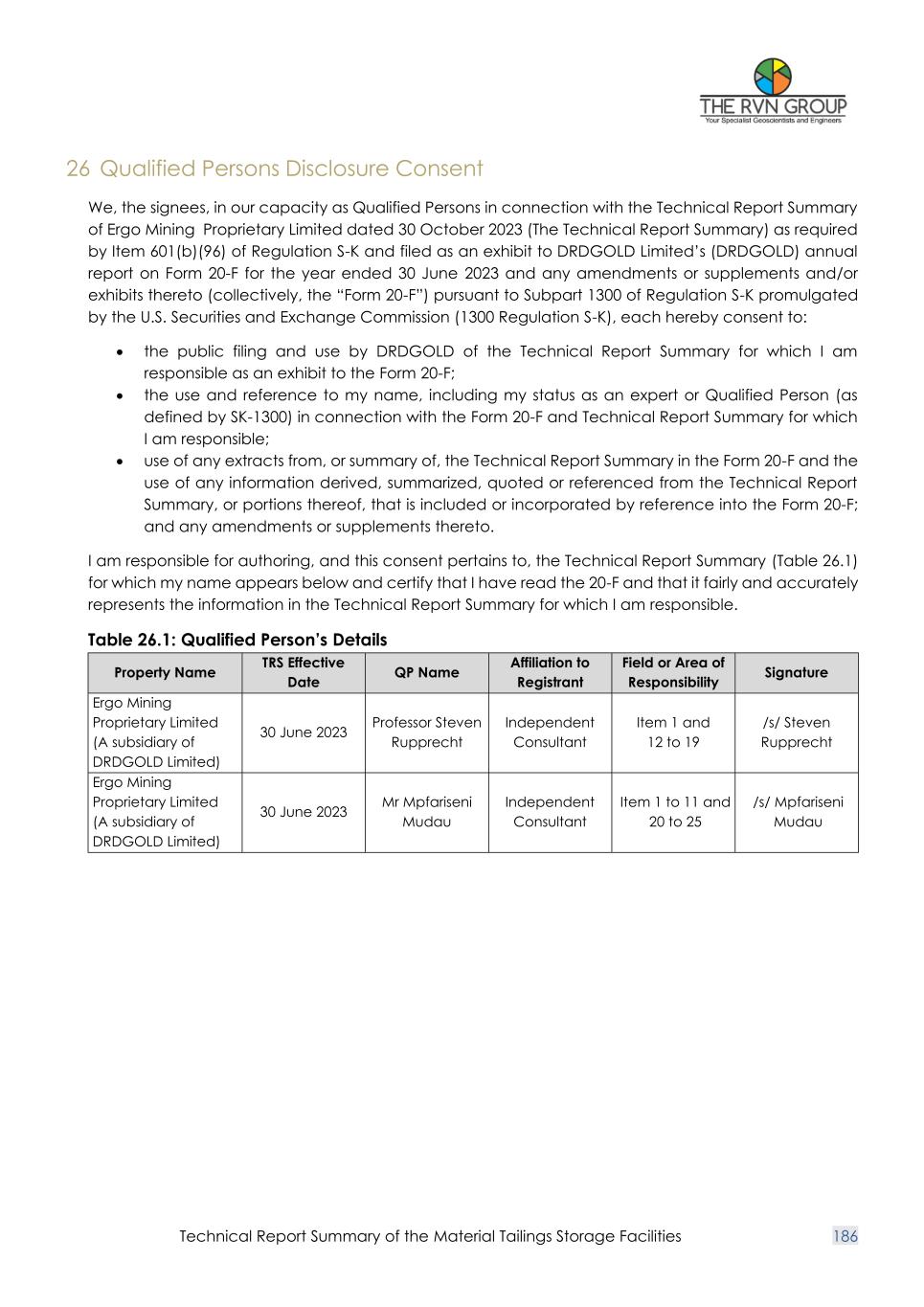Document
|
|
|
UNITED STATES SECURITIES AND EXCHANGE COMMISSION |
WASHINGTON, D.C. 20549
FORM 20-F
|
|
|
|
|
|
☐ |
REGISTRATION STATEMENT PURSUANT TO SECTION 12(b) OR (g) OF THE SECURITIES EXCHANGE ACT OF 1934 |
OR |
☑ |
ANNUAL REPORT PURSUANT TO SECTION 13 OR 15(d) OF THE SECURITIES EXCHANGE ACT OF 1934 For the fiscal year ended June 30, 2023 |
OR |
☐ |
TRANSITION REPORT PURSUANT TO SECTION 13 OR 15(d) OF THE SECURITIES EXCHANGE ACT OF 1934 |
| OR |
☐ |
SHELL COMPANY REPORT PURSUANT TO SECTION 13 OR 15(d) OF THE SECURITIES EXCHANGE ACT OF 1934 |
Commission file number 0-28800
DRDGOLD LIMITED
(Exact name of Registrant as specified in its charter and translation of Registrant's name into English)
|
|
|
|
REPUBLIC OF SOUTH AFRICA
(Jurisdiction of incorporation or organization)
|
|
Constantia Office Park Cnr 14th Avenue and Hendrik Potgieter Road Cycad House, Building 17, Ground Floor, Weltevreden Park, 1709, South Africa
(Address of principal executive offices)
Riaan Davel, Chief Financial Officer, Tel. no.+27 11 470 2600, Email riaan.davel@drdgold.com
Mpho Mashatola, Group Financial Manager Tel. no. +27 11 470 2600, Email mpho.mashatola@drdgold.com
(Name, Telephone, Email and/or Facsimile number and Address of Company Contact Person)
|
Securities registered or to be registered pursuant to Section 12(b) of the Act
|
|
|
|
|
|
|
|
|
| Title of each class: |
Trading symbol |
Name of each exchange on which registered: |
American Depositary Shares, each representing ten ordinary shares |
DRD |
New York Stock Exchange |
Ordinary shares |
|
New York Stock Exchange* |
* Not for trading, but only in connection with the registration of the American Depositary Shares pursuant to the requirements of the Securities and Exchange Commission.
Securities registered or to be registered pursuant to Section 12(g) of the Act None
Securities for which there is a reporting obligation pursuant to Section 15(d) of the Act None
Indicate the number of outstanding shares of each of the issuer's classes of capital or common stock as of the close of the period covered by the annual report. 864,588,711 ordinary shares of no par value outstanding as of June 30, 2023.
Indicate by check mark if the registrant is a well-known seasoned issuer, as defined in Rule 405 of the Securities Act.
Yes ☐No ☑
If this report is an annual or transition report, indicate by check mark if the registrant is not required to file reports pursuant to Section 13 or 15(d) of the Securities Exchange Act of 1934. Yes ☐ No ☑
Note - Checking the box above will not relieve any registrant required to file reports pursuant to Section 13 or 15(d) of the Securities Exchange Act of 1934 from their obligations under those Sections.
Indicate by check mark whether the registrant (1) has filed all reports required to be filed by Section 13 or 15(d) of the Securities Exchange Act of 1934 during the preceding 12 months (or for such shorter period that the registrant was required to file such reports), and (2) has been subject to such filing requirements for the past 90 days. Yes ☑ No ☐
Indicate by check mark whether the registrant has submitted electronically every Interactive Data File required to be submitted pursuant to Rule 405 of Regulation S-T (§232.405 of this chapter) during the preceding 12 months (or for such shorter period that the registrant was required to submit such files). Yes ☑ No ☐
Indicate by check mark whether the registrant is a large accelerated filer, an accelerated filer, a non-accelerated filer, or an emerging growth company. See definition of “large accelerated filer,” “accelerated filer,” and “emerging growth company” in Rule 12b-2 of the Exchange Act.
Large accelerated filer ☐ Accelerated filer ☑ Non-accelerated filer ☐ Emerging growth company ☐
If an emerging growth company that prepares its financial statements in accordance with U.S. GAAP, indicate by check mark if the registrant has elected not to use the extended transition period for complying with any new or revised financial accounting standards† provided pursuant to Section 13(a) of the Exchange Act.
† The term “new or revised financial accounting standard” refers to any update issued by the Financial Accounting Standards Board to its Accounting Standards Codification after April 5, 2012.
Indicate by check mark whether the registrant has filed a report on and attestation to its management’s assessment of the effectiveness of its internal control over financial reporting under Section 404(b) of the Sarbanes-Oxley Act (15 U.S.C. 7262(b)) by the registered public accounting firm that prepared or issued its audit report. ☑
If securities are registered pursuant to Section 12(b) of the Act, indicate by check mark whether the financial statements of the registrant included in the filing reflect the correction of an error to previously issued financial statements.☐
Indicate by check mark whether any of those error corrections are restatements that required a recovery analysis of incentive-based compensation received by any of the registrant’s executive officers during the relevant recovery period pursuant to §240.10D-1(b). ☐
Indicate by check mark which basis of accounting the registrant has used to prepare the financial statements included in this filing. U.S. GAAP ☐ International Financial Reporting Standards as issued by the International Accounting Standards Board ☑ Other ☐
If “Other” has been checked in response to the previous question, indicate by check mark which financial statement item the registrant has elected to follow. Item 17 ☐ Item 18 ☐
If this is an annual report, indicate by check mark whether the registrant is a shell company (as defined in Rule 12b-2 of the Exchange Act). Yes ☐ No ☑
Indicate by check mark whether the registrant has filed all documents and reports required to be filed by Sections 12, 13 or
Indicate by check mark whether the registrant has filed all documents and reports required to be filed by Sections 12, 13 or 15(d) of the Securities Exchange Act of 1934 subsequent to the distribution of securities under a plan confirmed by a court. Yes ☐ No ☐
|
|
|
|
|
|
|
|
|
| TABLE OF CONTENTS |
|
|
Page |
| PART I |
|
|
|
|
|
|
|
|
|
|
|
|
|
|
|
|
|
|
|
|
|
|
|
|
|
|
|
|
|
|
|
|
|
|
|
|
|
|
|
|
|
|
|
|
|
|
|
|
|
|
|
|
|
|
|
|
|
|
|
|
|
|
|
|
|
|
|
|
|
|
|
|
|
|
|
|
|
|
|
|
|
|
|
|
|
|
|
|
|
|
|
|
|
|
|
|
|
|
|
|
|
|
|
|
|
|
|
|
|
|
|
|
|
|
|
|
|
|
|
|
|
|
|
|
|
|
|
|
|
|
|
|
|
|
|
|
|
|
|
|
|
|
|
|
|
|
|
|
|
|
|
|
|
|
|
|
|
|
|
| TABLE OF CONTENTS |
|
|
Page |
| PART II |
|
|
|
|
|
|
|
|
|
|
|
|
|
|
|
|
|
|
|
|
|
|
|
|
|
|
|
|
|
|
|
|
|
|
|
|
|
|
|
|
|
|
|
|
|
|
|
|
|
|
|
|
|
|
|
|
|
| PART III |
|
|
|
|
|
|
|
|
|
|
|
|
|
|
|
Preparation of Financial Information
We are a South African company and currently all our operations are located in South Africa. Accordingly, our books of account are maintained in South African Rand. Our financial statements included in our corporate filings are prepared in accordance with International Financial Reporting Standards (IFRS), as issued by the International Accounting Standards Board (IASB).
Our consolidated financial statements included in this Annual Report are prepared in accordance with IFRS as issued by the IASB. All financial information in this Annual Report, except as otherwise noted is prepared in accordance with IFRS as issued by the IASB.
We present our financial information in rand, which is our presentation and reporting currency. All references to “dollars” or “$” herein are to United States Dollars and references to “rand” or “R” are to South African rands. Solely for your convenience, this Annual Report contains translations of certain rand amounts into dollars at specified rates. These rand amounts do not represent actual dollar amounts, nor could they necessarily have been converted into dollars at the rates indicated. Unless otherwise indicated, rand amounts have been translated into dollars at the rate of R18.83 per $1.00, the year end exchange rate on June 30, 2023.
In this Annual Report, we present certain non-IFRS financial measures including "Adjusted EBITDA", "cash operating costs", “cash operating costs per kilogram”, "all-in sustaining costs", “all-in sustaining costs per kilogram”, "all-in costs", “all-in costs per kilogram”, "growth capital expenditure" and "sustaining capital expenditure". The non-IFRS measures "cash operating costs", “cash operating costs per kilogram”, "all-in sustaining costs", “all-in sustaining costs per kilogram”, "all-in costs" and “all-in costs per kilogram” have been determined using industry guidelines promulgated by the World Gold Council, and are used to determine costs associated with producing gold, cash generating capacities of the mines and to monitor the performance of our mining operations. An investor should not consider these items in isolation or as alternatives to, operating costs, cash generated from operating activities, profit/(loss) for the year or any other measure of financial performance presented in accordance with IFRS or as an indicator of our performance. While the World Gold Council has provided definitions for the calculation of these measures, the calculation of cash operating costs per kilogram, all-in sustaining costs per kilogram and all-in costs per kilogram may vary significantly among gold mining companies, and these definitions by themselves do not necessarily provide a basis for comparison with other gold mining companies. See Glossary of Terms and Explanations and Item 5A. Operating Results – “Cash operating costs, all-in sustaining costs and all-in costs” and “Reconciliation of cash operating costs per kilogram, all-in sustaining costs per kilogram, all-in costs per kilogram”.
DRDGOLD Limited
When used in this Annual Report, the term the “Company” refers to DRDGOLD Limited and the terms “we,” “our,” “us” or “the Group” refer to the Company and its subsidiaries as appropriate in the context.
Special Note Regarding Forward-Looking Statements
This Annual Report contains certain “forward-looking” statements within the meaning of Section 21E of the U.S. Securities Exchange Act of 1934, regarding expected future events, circumstances, trends and expected future financial performance and information relating to us that are based on the beliefs of our management, as well as assumptions made by and information currently available to our management. Some of these forward-looking statements include phrases such as “anticipates,” “believes,” “could,” “estimates,” “expects,” “intends,” “may,” “should,” or “will continue,” or similar expressions or the negatives thereof or other variations on these expressions, or similar terminology, or discussions of strategy, plans or intentions, including statements in connection with, or relating to, among other things:
•our reserve calculations and underlying assumptions;
•the trend information discussed in Item 5D.- Trend Information, including target gold production and cash operating costs;
•life of mine and potential increase in life of mine;
•statements made in or with respect to the Technical Report Summaries (“TRS” or “TRSs”) including statements with respect to Mineral Reserves and Resources and assumptions, gold prices, projected revenue and cash flows and capital expenditures and other forward looking statements in the TRSs;
•estimated future throughput capacity and production;
•expected trends in our gold production as well as the demand for and the price of gold;
•our anticipated labor, electricity, water, crude oil and steel costs;
•our expectation that existing cash will be sufficient to fund our operations in the next 12 months including our anticipated commitments;
•estimated production costs, cash operating costs per ounce, all-in sustaining costs per ounce and all-in costs per ounce;
•expectations on future gold price, supply and pricing trends, including long term trends, expected impact of the global environment on gold prices;
•expected gold production and cash operating costs expected in fiscal year 2024;
•statements with respect to agreements with unions;
•our prospects in litigation and disputes;
•statements with respect to the legal review for increasing the deposition capacity of the Brakpan/Withok Tailings Storage Facility (“Brakpan/Withok TSF”) and the Regional Tailings Storage Facility (“RTSF”), and expected potential increase in capacity and life of mine;
•statements with respect to the Solar Power Project (“Solar Plant”) being developed by Ergo, and the Flotation Fine Grind program ("FFG");
•expected deposition capacity from improvements in our dams and new tailings facility construction; and
•expected effective gold mining tax rate.
Such statements reflect our current views with respect to future events and are subject to risks, uncertainties and assumptions. Many factors could cause our actual results, performance or achievements to be materially different from any future results, performance or achievements that may be expressed or implied by such forward-looking statements, including, among others:
•the global impact of the COVID-19 pandemic and potential new variants, including in South Africa;
•the global impact of Ukraine conflict and global inflation;
•the global impact of the Israel-Palestine conflict;
•adverse changes or uncertainties in general economic conditions in South Africa;
•The future of power security from South Africa's power utility and intensity of load shedding
•regulatory developments adverse to us or difficulties in maintaining necessary licenses or other governmental approvals;
•future performance relating to the Far West Gold Recoveries ("FWGR") Phase 2 assets and the reclamation sites on the east of Ergo’s plant;
•challenges in replenishing mineral reserves;
•changes in our competitive position;
•changes in, or that affect, our business strategy;
•that assumptions underlying our Mineral Reserves and Mineral Resources as set forth in this report and our TRSs prove to be incorrect;
•our ability to achieve anticipated efficiencies and other cost savings in connection with past and future acquisitions;
•the success of our business strategy, development activities and other initiatives;
•adverse changes in our gold production as well as the demand for and the price of gold;
•changes in technical and economic assumptions underlying our Mineral Reserve estimates;
•any major disruption in production at our key facilities;
•adverse changes in foreign exchange rates;
•adverse environmental or environmental regulatory changes;
•adverse changes in ore grades and recoveries, and to the quality or quantity of reserves;
•unforeseen technical production issues, industrial accidents and theft;
•anticipated or unanticipated capital expenditure on property, plant and equipment;
•the impact of HIV/AIDS, tuberculosis and the spread of other contagious diseases such as COVID-19; and
•various other factors, including those set forth in Item 3D. Risk Factors.
For a discussion of such risks, see Item
3D. Risk Factors. The risk factors described above and in Item 3D. could affect our future results, causing these results to differ materially from those expressed in any forward-looking statements. These factors are not necessarily all of the important factors that could cause our results to differ materially from those expressed in any forward-looking statements. Other unknown or unpredictable factors could also have material adverse effects on future results.
Investors are cautioned not to place undue reliance on these forward-looking statements, which speak only as of the date thereof. We do not undertake any obligation to update publicly or release any revisions to these forward-looking statements to reflect events or circumstances after the date of this Annual Report or to reflect the occurrence of unanticipated events.
Special Note Regarding Websites
References in this document to information on websites (and/or social media sites) are included as an aid to their location and such information is not incorporated in, and does not form part of, this annual report. Any links to external, or third-party websites, are provided solely for convenience. We take no responsibility whatsoever for any third-party information contained in such third-party websites, and we specifically disclaim adoption or incorporation by reference of such information into this report and no websites are incorporated by reference into this report.
Imperial units of measure and metric equivalents
The table below sets forth units stated in this document, which are measured in Imperial and Metric.
|
|
|
|
|
|
|
|
|
|
|
|
| Metric |
Imperial |
Imperial |
Metric |
| 1 metric tonne |
1.10229 short tons |
1 short ton |
0.9072 metric tonnes |
| 1 kilogram |
2.20458 pounds |
1 pound |
0.4536 kilograms |
| 1 gram |
0.03215 troy ounces |
1 troy ounce |
31.10353 grams |
| 1 kilometer |
0.62150 miles |
1 mile |
1.609 kilometers |
| 1 meter |
3.28084 feet |
1 foot |
0.3048 meters |
| 1 liter |
0.26420 gallons |
1 gallon |
3.785 liters |
| 1 hectare |
2.47097 acres |
1 acre |
0.4047 hectares |
| 1 centimeter |
0.39370 inches |
1 inch |
2.54 centimeters |
| 1 gram/tonne |
0.0292 ounces/ton |
1 ounce/ton |
34.28 grams/tonnes |
| 0 degree Celsius |
32 degrees Fahrenheit |
0 degrees Fahrenheit |
- 18 degrees Celsius |
|
|
|
|
|
|
|
|
| Glossary of Terms and Explanations |
|
|
| The table below sets forth a glossary of terms used in this Annual Report: |
|
|
| Adjusted EBITDA |
Adjusted EBITDA means earnings before interest, tax, depreciation, amortisation, share-based payment (benefit)/expense, change in estimate of environmental rehabilitation recognised in profit or loss, gain/(loss) on disposal of property, plant and equipment, gain/(loss) on financial instruments, IFRS 16 lease payments, exploration expenses and transaction costs, and retrenchment costs. This is a non-IFRS financial measure and should not be considered a substitute measure of net income reported by us in accordance with IFRS. |
| Administration expenses and other costs excluding non-recurring items |
Administration expenses and other costs excluding loss on disposal of property, plant and equipment and transaction costs. |
| All-in sustaining costs |
All-in sustaining costs is a measure on which guidance is provided by the World Gold Council and includes cash operating costs of production, plus movement in gold in process on a sales basis, corporate administration expenses and other (costs)/income, the accretion of rehabilitation costs and sustaining capital expenditure. Costs other than those listed above are excluded. All-in sustaining costs per kilogram are calculated by dividing total all-in sustaining costs by kilograms of gold produced. This is a non‑IFRS financial measure and should not be considered a substitute measure of costs and expenses reported by us in accordance with IFRS. |
| All-in costs |
All-in costs is a measure on which guidance is provided by the World Gold Council and includes all-in sustaining costs, retrenchment costs, care and maintenance costs, ongoing rehabilitation expenditure, growth capital expenditure and capital recoupments. Costs other than those listed above are excluded. All-in costs per kilogram are calculated by dividing total all-in costs by kilograms of gold produced. This is a non‑IFRS financial measure and should not be considered a substitute measure of costs and expenses reported by us in accordance with IFRS. |
| Assaying |
The chemical testing process of rock samples to determine mineral content. |
| Brakpan/Withok final life design |
The Brakpan/Withok Tailings Storage Facility final life design is the engineering design that ultimately brings the tailings storage facility to its finality in terms of extent, operation, rehabilitation and management. The implemented final design would result in alignments with the Global Industry Standard on Tailings Management (“GISTM”) and regulatory bodies, increase deposition capacity, improve operation/management and bring about the sustainable closure of the facility. |
| $/oz |
US dollar per ounce. |
| Called gold content |
The theoretical gold content of material processed. |
| Care and maintenance costs |
Costs to ensure that the Ore Reserves are open, serviceable and legally compliant after active mining activity at a shaft has ceased. |
| Cash operating costs |
Cash operating costs of production are operating costs less ongoing rehabilitation expenses, care and maintenance costs and net other operating costs/(income). This is a non‑IFRS financial measure and should not be considered a substitute measure of costs and expenses reported by us in accordance with IFRS. |
| Cash operating costs per kilogram |
Cash operating costs are operating costs incurred directly in the production of gold and include labor costs, contractor and other related costs, inventory costs and electricity costs. Cash operating costs per kilogram are calculated by dividing cash operating costs by kilograms of gold produced. This is a non‑IFRS financial measure and should not be considered a substitute measure of costs and expenses reported by us in accordance with IFRS. |
| Cut‑off grade |
The grade (i.e., the concentration of metal or mineral in rock) that distinguishes material deemed to have no economic value from material deemed to have economic value. |
| CIL Circuit |
Carbon-in-leach circuit. |
|
|
|
|
|
|
Definitive Feasibility Study ("DFS") |
A definitive engineering estimate of all costs, revenues, equipment requirements and production at a -5% to +10% level of accuracy. The study is used to define the economic viability of a project and to support the search for project financing. |
| Depletion |
The decrease in the quantity of ore in a deposit or property resulting from extraction or production. |
| Deposition |
Deposition is the geological process by which material is added to a landform or land mass. Fluids such as wind and water, as well as sediment flowing via gravity, transport previously eroded sediment, which, at the loss of enough kinetic energy in the fluid, is deposited, building up layers of sediment. Deposition occurs when the forces responsible for sediment transportation are no longer sufficient to overcome the forces of particle weight and friction, creating a resistance to motion. |
| Dilution |
Waste or material below the cut-off grade that contaminates the ore during the course of mining operations and thereby reduces the average grade mined. |
| Doré |
Unrefined gold and silver bullion bars consisting of approximately 90% precious metals which will be further refined to almost pure metal. |
| Footwall |
The underlying side of a stope or ore body. |
| Grade |
The amount of gold contained within auriferous material generally expressed in ounces per ton or grams per tonne of ore. |
| Growth capital expenditure |
Capital additions that are not sustaining capital expenditure. This is a non‑IFRS financial measure and should not be considered a substitute measure of costs and expenses reported by us in accordance with IFRS. |
| g/t |
Grams per tonne. |
| Indicated Mineral Resources |
That part of a Mineral Resource for which quantity and grade or quality are estimated on the basis of adequate geological evidence and sampling. The level of geological certainty associated with an indicated Mineral Resource is sufficient to allow a qualified person to apply modifying factors in sufficient detail to support mine planning and evaluation of the economic viability of the deposit. Because an indicated Mineral Resource has a lower level of confidence than the level of confidence of a measured Mineral Resource, an indicated Mineral Resource may only be converted to a probable Mineral Reserve. |
| Inferred Mineral Resources |
That part of a Mineral Resource for which quantity and grade or quality are estimated on the basis of limited geological evidence and sampling. The level of geological uncertainty associated with an inferred Mineral Resource is too high to apply relevant technical and economic factors likely to influence the prospects of economic extraction in a manner useful for evaluation of economic viability. Because an inferred Mineral Resource has the lowest level of geological confidence of all Mineral Resources, which prevents the application of the modifying factors in a manner useful for evaluation of economic viability, an inferred Mineral Resource may not be considered when assessing the economic viability of a mining project and may not be converted to a Mineral Reserve. |
| Measured Mineral Resources |
That part of a Mineral Resource for which quantity and grade or quality are estimated on the basis of conclusive geological evidence and sampling. The level of geological certainty associated with a measured Mineral Resource is sufficient to allow a qualified person to apply modifying factors, in sufficient detail to support detailed mine planning and final evaluation of the economic viability of the deposit. Because a measured Mineral Resource has a higher level of confidence than the level of confidence of either an indicated Mineral Resource or an inferred Mineral Resource, a measured Mineral Resource may be converted to a proven Mineral Reserve or to a probable Mineral Reserve. |
| Metallurgical plant |
A processing plant (mill) erected to treat ore and extract the contained gold. |
| Mineral Reserves |
An estimate of tonnage and grade or quality of indicated and measured Mineral Resources that, in the opinion of the qualified person, can be the basis of an economically viable project. More specifically, the economically mineable part of a measured or indicated Mineral Resource, which includes diluting materials and allowances for losses that may occur when the material is mined or extracted. |
| Mineral Resources |
A concentration or occurrence of material of economic interest in or on the Earth's crust in such form, grade or quality, and quantity that there are reasonable prospects for economic extraction. A Mineral Resource is a reasonable estimate of mineralization, taking into account relevant factors such as cut-off grade, likely mining dimensions, location or continuity, that, with the assumed and justifiable technical and economic conditions, is likely to, in whole or in part, become economically extractable. It is not merely an inventory of all mineralization drilled or sampled. |
| Mine call factor |
The gold content recovered expressed as a percentage of the called gold content. |
| Modifying factors |
The factors that a qualified person must apply to indicated and measured Mineral Resources and then evaluate in order to establish the economic viability of Mineral Reserves. A qualified person must apply and evaluate modifying factors to convert measured and indicated Mineral Resources to proven and probable Mineral Reserves. These factors include, but are not restricted to: Mining; processing; metallurgical; infrastructure; economic; marketing; legal; environmental compliance; plans, negotiations, or agreements with local individuals or groups; and governmental factors. The number, type and specific characteristics of the modifying factors applied will necessarily be a function of and depend upon the mineral, mine, property, or project |
| Mt |
Million tons. |
| Ore |
A mixture of valuable and worthless materials from which the extraction of at least one mineral is technically and economically viable. |
| Other operating costs / (income) |
Expenses incurred, and income generated in the course of operating activities, which are not directly attributable to production activities. |
| Operating costs |
Operating costs are cost of sales less depreciation, change in estimate of rehabilitation provision, movement in gold in process and finished inventory – gold bullion, ongoing rehabilitation expenditure, care and maintenance, other operating income and retrenchment costs. |
| oz/t |
Ounces per ton. |
|
|
|
|
|
|
Prefeasibility study ("PFS") |
A comprehensive study of a range of options for the technical and economic viability of a mineral project that has advanced to a stage where a preferred mining method, in the case of underground mining, or the pit configuration, in the case of an open pit, is established and an effective method of mineral processing is determined. It includes a financial analysis based on reasonable assumptions on the modifying factors and the evaluation of any other relevant factors which are sufficient for a competent person, acting reasonably, to determine if all or part of the Mineral Resource may be converted to a Mineral Reserve at the time of reporting. A prefeasibility study is at a lower confidence level than a feasibility study. |
| Proven Mineral Reserves |
The economically mineable part of a measured Mineral Resource and can only result from conversion of a measured Mineral Resource and can only result from conversion of a measured Mineral Resource. |
| Probable Mineral Reserves |
The economically mineable part of an indicated and in some cases, a measured Mineral Resource. |
| Qualified Person |
An individual who is a mineral industry professional with at least 5 years of relevant experience in the type of mineralization and type of deposit under consideration and in the specific type of activity that person is undertaking on behalf of the registrant, and an eligible member or licensee in a good standing of a recognized professional organization at the time the technical report is prepared. |
| Refining |
The final purification process of a metal or mineral. |
| Rehabilitation |
The process of restoring mined land to a condition approximating its original state. |
| Reserves |
That part of a mineral deposit which could be economically and legally extracted or produced at the time of the reserve determination. |
| Sediment |
The deposition of solid fragmental material that originated from weathering of rocks and was transported from a source to a site of deposition. |
| Slimes |
The tailings discharged from a processing plant after the valuable minerals have been recovered. |
| Sustaining capital expenditure |
Sustaining capital expenditure are those capital additions that are necessary to maintain current gold production. This is a non‑IFRS financial measure and should not be considered a substitute measure of costs and expenses reported by us in accordance with IFRS. |
| T’000 |
Tonnes in thousands. |
| Tailings |
Finely ground rock from which valuable minerals have been extracted by milling, or any waste rock, slimes or residue derived from any mining operation or processing of any minerals. |
Tailings facility |
A dam created from waste material of processed ore after the economically recoverable gold has been extracted. |
| Tonnage/Tonne |
Quantities where the metric tonne is an appropriate unit of measure. Typically used to measure reserves of gold‑bearing material in‑situ or quantities of ore and waste material mined, transported or milled. |
| Tpm |
Tonne per month. |
| Yield |
The amount of recovered gold from production generally expressed in ounces or grams per ton or tonne of ore. |
PART I
ITEM 1. IDENTITY OF DIRECTORS, SENIOR MANAGEMENT AND ADVISERS
Not applicable.
ITEM 2. OFFER STATISTICS AND EXPECTED TIMETABLE
Not applicable.
ITEM 3. KEY INFORMATION
3A. [Reserved]
3B. CAPITALIZATION AND INDEBTEDNESS
Not applicable.
3C. REASONS FOR THE OFFER AND USE OF PROCEEDS
Not applicable.
3D. RISK FACTORS
In conducting our business, we face many risks that may interfere with our business objectives. Some of these risks relate to our operational processes, while others relate to our business environment. It is important to understand the nature of these risks and the impact they may have on our business, financial condition and operating results. Some of these risks are summarized below and have been organized into the following categories:
•Risks related to our business and operations;
•Risks related to the gold mining industry;
•Risks related to doing business in South Africa;
•Risks related to Environmental, Social and Governance (ESG) performance including climate change;
•Risks related to government regulation; and
•Risks related to ownership in our ordinary shares or American Depositary Shares (ADSs).
Risks related to our business and operations
Changes in the market price for gold and exchange rate fluctuations, both of which have fluctuated widely in the past, affect the profitability of our operations and the cash flows generated by those operations.
Our results are significantly impacted by the price of gold and the USD-rand exchange rate. Any sustained decline in the market price of gold from the current levels would adversely affect us, and any sustained decline in the price of gold below the cost of production could result in the closure of some or all of our operations which would result in significant costs and expenditure, such as, incurring retrenchment costs earlier than expected which could lead to a decline in profits, or losses, as well as impairment losses. In addition, as most of our production costs are in rands, while gold is sold in dollars and then converted to rands, our results of operation and financial condition have been and could be in the future materially affected by an appreciation in the value of the rand. Accordingly, any sustained decline in the dollar price of gold and/or the strengthening of the South African rand against the dollar would negatively and adversely affect our business, operating results and financial condition.
Although the impact of the COVID-19 pandemic has diminished and gold prices have marginally decreased, the average gold price for fiscal year 2022 remained high due to continued economic uncertainty as the global economies attempt to recover from all the after effects of COVID19 and deal with, the conflict in Ukraine and rapidly rising inflation. As US inflation started to recover there was uncertainty whether the US Federal Reserve would halt interest rate hikes and the collapsing of Silicon Valley Bank meant that gold remained a safe haven for investors which kept the gold price high in fiscal year 2023. In addition, we are impacted by movements in the exchange rate of the rand against the dollar as described below.
Exchange rates are influenced by global economic trends. The closing exchange rate of the rand against the dollar at June 30, 2023 weakened by 16% compared to June 30, 2022. The closing price of the rand against the dollar at June 30, 2022 weakened by 14% compared to June 30, 2021. At September 30, 2023, the rand traded at R18.92 = $1.00 (based on closing rates), within 1% of the rand against the dollar from June 30, 2023 as the dollar remained strong as a result of continued quantitative tightening and the raising of interest rates by the US Federal Reserve and with continued power supply struggles from Eskom Holdings SOC Limited (“Eskom”). The rand/dollar exchange rate was volatile throughout the fiscal year 2023 mainly as a result of global, emerging market and South Africa economic uncertainty including uncertainties resulting from the global economic slowdown sentiment, rapidly rising global inflation, continued geopolitical tensions in Ukraine, perceived political and economic instability, structurally weak economic growth of the South African economy exacerbated by increasing loadshedding by power utility Eskom as it battles with supply.
A decrease in the dollar gold price and/or a strengthening of the rand against the dollar results in a decrease in our profitability. If the rand was to appreciate against the dollar or the gold price were to decrease for a continued time, our operations could experience a reduction in cash flow and profitability, and this would adversely affect our business, operating results and financial condition.
We typically do not enter into forward contracts to reduce our exposure to market fluctuations in the dollar gold price or the exchange rate movements of the rand. Up to April 11, 2022 we sold gold at spot prices based on the afternoon London Bullion Market fixing price on the day when Rand Refinery, acting as an agent for the sale of all gold produced by the Group, delivers the Gold to the buyer. Our foreign currency was usually sold at the spot price in the market on the date of trade. Subsequent to April 11, 2022 gold is sold at a dollar gold price and spot exchange rate specified in a contract with the South African bullion banks to deliver the gold at a specified settlement date. If the dollar gold price should fall and/or the rand should strengthen against the dollar, this would adversely affect us, and we may experience losses, and if these changes result in revenue below our cost of production and remain at such levels for any sustained period, we may be forced to curtail or suspend some or all our operations.
A failure to acquire new Mineral Reserves could negatively affect our future cash flows, results of operations and financial condition.
New or ongoing exploration programs may be delayed or may not result in new mineral producing operations that will sustain or increase our Mineral Reserves. A failure to acquire new Mineral Reserves in sufficient quantities and quality to maintain or grow the current level and quality of our reserves will negatively affect our future cash flow, results of operations and financial condition. In addition, if we are unable to identify Mineral Reserves that have reasonable prospects for economic extraction while maintaining sufficient controls on production and other costs, this will have a material effect on the future viability of our operations.
If we are not successful in increasing reserves in future years, our reserves could decrease, and such reduction would adversely affect our business, operating results and financial condition.
We may be unable to make desirable acquisitions or to integrate successfully any businesses we acquire, including the development of Phase 2 of the FWGR assets acquired from Sibanye-Stillwater.
Our future success may depend in part on the acquisition of businesses or technologies intended to complement, enhance or expand our current business or products or that might otherwise offer us growth opportunities. Our ability to complete such transactions may be hindered by a number of factors, including identifying acquisition targets, obtaining necessary financing and potential difficulties in obtaining government approvals. Any acquisitions we make, could fail to achieve our financial or strategic objectives or disrupt our ongoing business which could adversely impact our results of operations.
Any acquisition that we do make would pose risks related to the integration of the new business or technology with our business and organization. We cannot be certain that we will be able to achieve the benefits we expect from a particular acquisition or investment. Acquisitions may also strain our managerial and operational resources, as the challenge of managing new operations may divert our management from day-to-day operations of our existing business. Furthermore, we may have difficulty integrating employees, business systems, and technology. The controls, processes and procedures of acquired businesses may also not adequately ensure compliance with laws and regulations and we may fail to identify compliance issues or liabilities. Our business, financial condition and results of operations may be materially and adversely affected if we fail to coordinate our resources effectively to manage both our existing operations and any businesses we acquire. Acquisitions can also result in unforeseen liabilities.
Moreover, our resources are limited and our decision to pursue a transaction has opportunity costs; accordingly, if we pursue a particular transaction, we may need to forgo the prospect of entering into other transactions that could help us achieve our financial or strategic objectives.
Limited deposition capacity
Our operations are based on ultra-volume and almost nano-gold extraction. The volume of reclaimed material delivered has one of the most profound impacts on the gold output of our metallurgical plants. The large volumes of material that are processed at our operations are deposited on tailings facilities which have a finite capacity. Alternative facilities will be required to ensure adequate deposition capacity for the current life of mine and for the future. Key projects to increase such a deposit capacity include the development of the RTSF as part of Phase 2 FWGR project, as well as obtaining regulatory approvals for the Brakpan/Withok final life design at Ergo to expand its deposition capacity. The timing to have the new facilities on line is critical as a delay may result in reduced deposition rates or a halt in deposition which will have an adverse financial impact on the business.
Our large projects, most notably the development of FWGR Phase 2, the Solar Plant and Brakpan/Withok final life design implementation to enable mining on the east of the Ergo plant, are subject to schedule delays and cost overruns, and we may face constraints in financing our existing projects or new business opportunities, which could render our projects unviable or less profitable than planned.
The development of our projects are capital intensive processes carried out over long durations and requires us to commit significant capital expenditure and allocate considerable management resources in utilizing our existing experience and know-how.
Projects like the development of Phase 2 of the FWGR assets acquired from Sibanye-Stillwater, the Solar Plant and the implementation of the Brakpan/Withok final life design are subject to the risk of delays, regulatory approvals and cost overruns which are inherent in any large construction project including, inter alia:
• unforeseen increases in the cost of equipment, labor and raw materials;
• delays or disruptions in the supply of equipment and raw materials
• unforeseen design and engineering problems;
• changes in construction plans that may require new or amended planning permissions;
• unforeseen construction problems;
• unforeseen delays commissioning sections of the project;
• inadequate phasing of activities;
• labor disputes and social challenges;
• security issues
• inadequate workforce planning or productivity of workforce;
• inadequate management practices;
• natural disasters and adverse weather conditions;
• national work stoppages as a result of infectious deceases and pandemics;
• failure or delay of third-party service providers; and
• changes to regulations, such as environmental regulations.
We also face the risk that expected benefits of our projects are not achieved.
The regulatory approval for the build of the RTSF is in progress. It is therefore anticipated that the construction of the RTSF, related to Phase 2, will commence in fiscal year 2024. A delay may result in deposition capacity to be reduced as the Driefontein 4 TSF is expected to reach capacity during fiscal year 2026, whereafter the depositional rate would have to decrease materially.
Ergo is currently developing a Solar Power Project to reduce its reliance on Eskom and to reduce its future cost of electricity. The Solar Plant definitive feasibility study was completed during fiscal year 2022 and is currently under development. A significant capital investment is needed to complete the project and the purchase of imported solar panels and battery energy storage system subject to fluctuations in the USD and euros to the rand exchange rate. It is estimated that benefit from the project in reduced electricity costs and reduced carbon footprint will start to materialise toward the end of fiscal year 2024.
Regulatory approvals for the final life design of the Brakpan/Withok TSF are yet to be obtained. The implementation of the final life design is expected to be crucial to sustain and increase the life of mine of Ergo as it will accommodate material in toward the east of the Ergo plant.
In addition, if the assumptions we make in assessing the viability of our projects, including those relating to commodity prices, exchange rates, interest rates, inflation rates and discount rates, prove to be incorrect or need to be significantly revised, this may adversely affect the profitability or even the viability of our projects. The uncertainty and volatility in the gold market makes it more difficult to accurately evaluate the project economics and increases the risk that the assumptions underlying our assessment of the viability of the project may prove incorrect.
As the development of FWGR, the Solar Power Project and the implementation of the Brakpan/Withok TSF final life design are particularly material to DRDGOLD, significant cost overruns or adverse changes in assumptions affecting the viability of these projects could have a material adverse effect on our business, cash flows, financial condition and prospects.
Our operating cash flow and available banking facilities may be insufficient to meet our capital expenditure plans and requirements, depending on the timing and cost of development of our existing projects and any further projects we may pursue. As a result, new sources of capital may be needed to meet the funding requirements of these projects and to fund ongoing business activities. Our ability to raise and service significant new sources of capital will be a function of, inter alia, macroeconomic conditions, rising cost of debt, our credit rating, our gearing and other risk metrics, the condition of the financial markets, future gold prices, the prospects for our industry, our operational performance and operating cash flow and debt position. Inability to raise these funds may place a burden on the Group cash reserves.
In the event of operating or financial challenges, any dislocation in financial markets or new funding limitations, our ability to pursue new business opportunities, invest in existing and new projects, fund our ongoing business activities and pay dividends, could be constrained, any of which could have a material adverse effect on our business, operating results, cash flows and financial condition.
We may not be able to meet our cash requirements because of a number of factors, many of which are beyond our control.
Management’s estimates on future cash flows are subject to risks and uncertainties, such as the rand gold price, production volumes, recovered grades and costs. Management is estimating a significant capital investment in major projects in the next few years. If we are unable to meet our cash requirements out of cash flows generated from our operations, we would need to fund our cash requirements from financing sources and any such financing may not be permitted under the terms of our financing arrangements or may not be possible on attractive terms or at all due to rising interest rates, or may not be available on acceptable terms, or at all. If we do not generate sufficient cash flows or have access to adequate financing, our ability to respond to changing business and economic conditions, make future acquisitions, react to adverse operating results, meet our debt service obligations and fund required capital expenditures or meet our working capital requirements may be adversely affected.
Any interruption in gold production at any of our two mining operations generating cash flows, will have an adverse effect on the Company.
We have two mining operations generating cash flows, namely Ergo and FWGR. Ergo’s reclamation sites, processing plants, pump stations and the Brakpan/Withok tailings facilities are linked through pipeline infrastructure. The Ergo plant is currently our major processing plant. FWGR’s reclamation sites, DP2 processing plant, pump stations and the Driefontein 4 Tailings Storage Facility are linked through pipeline infrastructure.
Our reclamation sites, plants, pipelines infrastructure and the tailings storage facilities are exposed to numerous risks, including operational down time due to planned or unplanned maintenance and load shedding or power dips, adverse weather, destruction of infrastructure, spillages, higher than expected operating costs, or lower than expected production as a result of decreases in extraction efficiencies due to imbalances in the metallurgical process as well as inconsistent volume throughput or other factors.
Our FWGR operations are reliant on the use and access to Sibanye-Stillwater Limited’s ("Sibanye-Stillwater") mining infrastructure, related services including the smelting and recovery of gold from gold loaded carbon produced at FWGR as well as the use of various rights, permits and licenses held by Sibanye Gold Proprietary Limited (wholly owned subsidiary of Sibanye-Stillwater) pursuant to which FWGR operates, pending the transfer to FWGR of those that are transferable. Any disruption in the supply of, or our ability to use and access the Sibanye-Stillwater mining infrastructure, related services and rights, permits and licenses, could have an adverse impact on our operations.
Any of the risks above or other interruptions could adversely impact our operations which could have a material adverse effect on our business, operating results and financial condition.
Flooding at our discontinued underground operations may cause us to incur liabilities for environmental damage.
If the rate of rise of water is not controlled, water from our discontinued underground mining areas and active tailings storage facilities (TSFs) could potentially rise and come into contact with naturally occurring underground water or decant into surrounding underground mining areas, active TSFs and could ultimately also rise to surface. Progressive flooding of these abandoned underground mining areas and surrounding underground mining areas could eventually cause the discharge of polluted water to the surface and to local water sources.
This may lead us to face claims and liability relating to environmental damage and liability for breaches, or alleged breaches, of applicable laws (see also Our operations are subject to extensive environmental regulations which could impose significant costs and liabilities). Any such claims may have a material adverse effect on our business, operating results and financial condition.
An increase in production costs could have an adverse effect on our results of operations.
An increase in our production costs will impact our results of operations. Production costs are affected by, inter alia:
• rising global and national inflation;
• labor stability, productivity and increases in labor costs;
• increases in electricity and water prices;
• increases in crude oil and steel prices;
• increases in security measures to protect our employees and infrastructure;
• changes in regulation;
• unforeseen changes in ore grades and recoveries;
• unexpected changes in the quality or quantity of reserves;
• technical production issues;
• availability and cost of smelting and refining arrangements;
• environmental and industrial accidents;
• gold theft;
• shortages or availability of materials used in production;
• environmental factors; and
• pollution.
Our production costs consist mainly of materials including reagents and steel, labor, electricity, specialized service providers, machine hire, security, water, fuels, lubricants and other oil and petroleum-based products. Production costs have in the past, and could in the future, increase at rates in excess of our annual inflation rate and impact our results of operation and can result in the restructuring of these operations at substantial cost.
A three-year wage agreement was reached with organized labor at FWGR in November 2021 and Ergo reached a three-year wage agreement with organized labor with effective from 1 July 2022.
Increases in production costs, if material, will adversely impact our results of operations. In addition, any initiatives that we pursue to reduce costs, such as reducing our reliance on Eskom’s grid through self-generation of power, for example through the Solar Power Project at Ergo, reducing our labor force, a reduction of the corporate overhead, negotiating lower price increases for consumables and cost controls may not be successful or sufficient to offset the increases affecting our operations and could adversely affect our business, operating results and financial condition.
Uncertainties regarding supply chain
The global inflationary pressures, the legacy of the pandemic as well as geopolitical volatility may negatively impact availability and cost of critical material and equipment. This may be further exacerbated by the increase in the frequency and severity of natural disasters such as severe weather, floods and earthquakes which may further increase this risk. The risk of dependency on key suppliers requires ongoing focus and proactive management. A sustained unavailability and increased cost of critical material such as reagents and critical equipment may require DRDGOLD to find acceptable substitute suppliers and may also require it to pay higher prices for such materials, potentially affect production and increase operating costs resulting in loss of revenue. New projects may also be adversely affected by delays in supplies, freight costs and higher than inflationary increases for capital equipment which may affect operations and production, and ultimately result in failure to deliver into the business plans.
Our operations are subject to extensive environmental regulations which could impose significant costs and liabilities.
Our operations are subject to increasingly extensive laws and regulations governing the protection of the environment under various state, provincial and local laws, which regulate air and water quality, hazardous waste management and environmental rehabilitation and reclamation. Our mining and related activities have the potential to impact the environment, including land, habitat, streams and environment near the mining sites. More complex and stringent regulations may lead us to face increased regulatory and stakeholder scrutiny, which may increase capital expenditures. Failure to comply with environmental laws or delays in obtaining, or failures to obtain government permits and approvals, or the imposition of additional permit/approval conditions may adversely impact our operations and may open us to enforcement actions and potential litigation. In addition, the regulatory environment in which we operate could change in ways that could substantially increase costs of compliance, resulting in a material adverse effect on our profitability.
We have incurred, and expect to incur in the future, expenditures to comply with these environmental laws and regulations. We have estimated our aggregate group Provision for Environmental Rehabilitation at a net present value of R562.1 million which is included in our statement of financial position as at June 30, 2023 (Refer to Item 18. ‘‘Financial Statements - Note 11 – Provision for environmental rehabilitation”). However, the ultimate amount of rehabilitation costs may in the future exceed the current estimates due to factors beyond our control, such as changing legislation, higher than expected cost increases, or unidentified rehabilitation costs. We used to fund these environmental rehabilitation costs by making contributions over the life of the mine to environmental trust funds or funds held in insurance instruments established for our operations. During fiscal year 2022 we changed the method of provision to funds held in insurance products. If any of our operations are prematurely closed, the rehabilitation funds may be insufficient to meet all the rehabilitation obligations of those operations. The closure of mining operations, without sufficient financial provision for the funding of rehabilitation liabilities, or unacceptable damage to the environment, including pollution or environmental degradation, may expose us and our directors to prosecution, litigation and potentially significant liabilities.
In addition to compliance with local laws and regulations, our operations are also increasingly subject to stakeholder expectations concerning the application of international environmental (and health and safety and social) standards. These include the Responsible Gold Mining Principles, IFC Performance Standards and World Bank guidelines. The application of these standards similarly increases the costs of compliance, while the failure to adhere to such standards can result in reputational damage and adversely affect our operations.
Regulators are increasingly focusing on enforcement of these applicable laws (including permitting requirements). Enforcement activities may cause our operations to cease or to be suspended and may require us to undertake corrective measures that require additional capital expenditure. We have also been, and may in the future be, subject to litigation and other costs as well as actions by authorities, affected stakeholders, non-governmental organisations and public bodies relating to environmental matters. These claims and actions can result in significant liabilities, penalties and fines which can adversely affect our business, operating results, and financial condition.
Damage to tailings storage facilities and excessive maintenance and rehabilitation costs could result in lower production and health, safety and environmental liabilities.
Our tailings storage facilities are exposed to numerous risks and events, the occurrence of which may result in the failure, breach or damage of such a facility. These may include sabotage, piping or seepage failures, failure by our employees to adhere to the codes of practice and natural disasters such as excessive rainfall and seismic events, any of which could force us to stop or limit operations. This is further impacted and expected to intensify with the effects of climate change. In addition, the facilities could overflow or a side wall could collapse jeopardizing the health and safety of our employees and communities living around these facilities and potentially resulting in extensive property and environmental damage.
In the event of damage to, or any failure of, our tailings facilities, we could face legal proceedings (including criminal proceedings and public civil actions) and investigations for significant amounts of damages. Such actions would also likely entail significant costs and potentially involve the need for large expenditures to help regions and people affected to recover. The occurrence of any of these risks could adversely affect our operations and this in turn could have a material adverse effect on our business, operating results and financial condition.
The potential elimination of conventional wet tailings could also lead to large additional expenditures on research and development of new technologies. Changes in law and regulation, to impose more stringent standards, may also lead to increased capital expenditure to update our facilities, be able to expand our facilities in the future or continue to meet existing or more stringent legal (including permit) requirements.
Due to the nature of our business, our operations face extensive health and safety risks and regulation of those risks.
Gold mining is exposed to numerous risks and events, the occurrence of which may result in the death of, or personal injury, to employees or others. These risks and events include seismic events, heat, ground or slope failures, rock bursts, sink holes, fires, falls of ground and blockages, flooding, discharges of gases and toxic substances as well as radioactivity, unplanned detonation of explosives, blasting and the transport, storage and handling of hazardous materials.
According to section 54 of the Mine, Health and Safety Act of 1996, if an inspector believes that any occurrence, practice or condition at a mine endangers or may endanger the health or safety of any person at the mine, the inspector may give any instruction necessary to protect the health or safety of persons at the mine. These instructions could include the suspension of operations at the whole or part of the mine. Health and safety incidents could lead to mine operations being halted and that will increase our unit production costs, which could have a material adverse effect on our business, operating results and financial condition.
As with environmental incidents, so too may the occurrence of health and safety risks result in increased regulator and stakeholder scrutiny, which may lead to increases in compliance costs, and could result in enforcement actions and litigation (by regulators, affected stakeholders and others) that could lead to the imposition of significant fines or liabilities or otherwise adversely impact our operations through revocation of permits and approvals, the imposition of new conditions, and reputational impacts. The occurrence of such risks could have a material adverse effect on our business, operating results and financial condition.
Events may occur for which we are not insured which could affect our cash flows and profitability.
Because of the nature of our business, we may become subject to liability for pollution or other hazards against which we are unable to insure or are not insured, including those in respect of past mining activities. Our existing property, business interruption and other insurance contains certain exclusions and limitations on coverage. The insured value for property and loss of profits due to business interruption is R16.8 billion, with a total loss limit of R1.9 billion for Ergo and R650 million for FWGR for fiscal year 2024. Business interruption is only covered from the time the loss occurs and is subject to time and amount deductibles that vary between categories. To cover legal liability to third parties for damage, injury, illness or death a total of R1 billion insurance cover is in place for the 2024 fiscal year, subject to certain exclusions and limitations on coverage.
Insurance coverage may not cover the extent of claims brought against us, including claims for environmental, industrial or pollution related accidents or damages or interruption due to electricity supply failure / interruptions, for which coverage is not available. If we are required to meet the costs of claims, which exceed our insurance coverage, this could have a material adverse effect on our business, operating results and financial condition.
If we are unable to attract and retain key personnel our business may be harmed.
The success of our business will depend, in large part, upon the skills and efforts of a small group of management and technical personnel including the positions of Chief Executive Officer and Chief Financial Officer. In addition, we compete with mining and other companies on a global basis to attract and retain key human resources at all levels with appropriate technical skills and operating and managerial experience necessary to operate the business. Factors critical to retaining our present staff and attracting additional highly qualified personnel include our ability to provide these individuals with competitive compensation arrangements, and other benefits. If we are not successful in retaining or attracting highly qualified individuals in key management positions, our business may be harmed. We do not maintain “key man” life insurance policies on any members of our executive team. The loss of any of our key personnel could delay the execution of our business plans, which may result in decreased production, increased costs and decreased profitability.
We are subject to operational risks associated with our flotation and fine-grind (FFG) project.
Our flotation and fine-grind project, implemented in fiscal year 2014, is designed to improve extraction efficiencies.
Certain components of the FFG were temporarily halted in the first quarter of fiscal year 2020 to perform an evaluation and compare the additional revenues earned from additional gold extracted from the most recently integrated reclamation sites compared to the cost incurred to operate the FFG circuit. The remaining components of the FFG continue to operate. Testing on the newly integrated material has suggested that some of these halted components will only operate in subsequent years once the related reclamation sites have been brought online in accordance with the current life of mine plan for ERGO. These halted components are classified as idle assets until they are brought back into operation as described. The success of the FFG is directly dependent on the material type and material mix processed through it. Therefore, the halted components will remain idle pending the continuation and conclusion of various test work regarding the material type and material mix of future reclamation sites. Firm decisions have also not yet been made by the executive committee and the Board of Directors on the future of the FFG. We remain subject to operations risks relating to the FFG project.
A disruption in our information technology systems, including incidents related to cyber security, could adversely affect our business operations.
We rely on the accuracy, availability and security of our information technology systems. Despite the measures that we have implemented, including those related to cyber security, our systems could be breached or damaged by computer viruses and systems attacks, natural or man-made incidents, disasters or unauthorized physical or electronic access.
Any system failure, accident or security breach could result in business disruption, theft of our intellectual property, trade secrets (including our proprietary technology), unauthorized access to, or disclosure of, personnel or supplier information, corruption of our data or of our systems, reputational damage or litigation. We may also be required to incur significant cost to protect against or repair the damage caused by these disruptions or security breaches in the future, including, for example, rebuilding internal systems, implementing additional threat protection measures, defending against litigation, responding to regulatory inquiries or actions, paying damages, or taking other remedial steps with respect to third parties.
These threats are constantly evolving, thereby increasing the difficulty of successfully defending against them or implementing adequate preventative measures and we remain subject to additional known or unknown threats. In some instances, we may be unaware of an incident or its magnitude and effects. We may be susceptible to new and emerging risks, including cyber-attacks and phishing, in the evolving landscape of cybersecurity threats. Given the increasing sophistication and evolving nature of these threats, DRDGOLD cannot rule out the possibility of them occurring in the future. An extended failure of critical system components, caused by accidental, or malicious actions, including those resulting from a cyber security attack, could result in a significant environmental incident, commercial loss or interruption to operations.
In addition, from time to time, we implement updates to our information technology systems and software, which can disrupt or shutdown our information technology systems. Information technology system disruptions, if not appropriately addressed or mitigated, could have a material adverse effect on our operations.
Risks related to the gold mining industry
A change in the dollar price of gold, which in the past has fluctuated widely, is beyond our control.
Historically, the gold price has fluctuated widely and is affected by numerous industry factors over which we have no control including:
• a significant amount of above-ground gold in the world that is used for trading by investors;
• the physical supply of gold from world-wide production and scrap sales, and the purchase, sale or divestment by central banks of their gold holdings;
• the demand for gold for investment purposes, industrial and commercial use, and in the manufacturing of jewelry;
• speculative trading activities in gold;
• the overall level of forward sales by other gold producers;
• the overall level and cost of production of other gold producers;
• international or regional political and economic events or trends;
• the strength of the dollar (the currency in which gold prices generally are quoted) and of other currencies;
• financial market expectations regarding the rate of inflation;
• interest rates;
• gold hedging and de-hedging by gold producers; and
• actual or expected gold sales by central banks and the International Monetary Fund.
During fiscal year 2023 the gold price reached a high of U$2,072 per ounce and a low of U$1,612. We benefited from a sustained high gold price due to continued slow global economic recovery, economic uncertainty and geopolitical tensions.
Investors globally, as they have in so many previous times of crisis, turned to gold and gold stocks as a safe haven asset, leading to a sustained high gold price for fiscal year 2023 after the highs experienced in fiscal year 2022. The rand/dollar exchange rate was volatile throughout the fiscal year 2023 mainly as a result of global, emerging market and South Africa economic uncertainty including uncertainties resulting from the global economic slowdown sentiment, rapidly rising global inflation, continued geopolitical tensions in Ukraine, perceived political and economic instability, structurally weak economic growth of the South African economy exacerbated by increasing loadshedding by power utility Eskom as it battles with supply.
The factors mentioned above could put negative pressure on the price of gold or the rand/dollar exchange rate in the future. Our profitability may be negatively impacted by a decline in the gold price as we incur losses when revenue from gold sales drops below the cost of production for an extended period.
The exploration of mineral properties is highly speculative in nature, involves substantial expenditures, and is frequently unproductive.
Exploration is highly speculative in nature and requires substantial expenditure for drilling, sampling and analysis of ore bodies to quantify the extent of the gold reserve. Many gold exploration programs, including some of ours, do not result in the discovery of mineralization and any mineralization discovered may not be of sufficient quantity or quality to be mined profitably. If we discover a viable deposit, it usually takes several years from the initial phases of exploration until production is possible. During this time, the economic feasibility of production may change.
Moreover, we rely on the evaluations of professional geologists, geophysicists, and engineers for estimates in determining whether to commence or continue mining. These estimates generally rely on scientific and economic assumptions, which in some instances may not be correct, and could result in the expenditure of substantial amounts of money on a deposit before it can be determined with any degree of accuracy whether the deposit contains economically recoverable mineralization. Uncertainties as to the metallurgical recovery of any gold discovered may not warrant mining based on available technology.
Our future growth and profitability will depend, in part, on our ability to identify and acquire additional mineral rights, and on the costs and results of our continued exploration and development programs. Our business focuses mainly on the extraction of gold from tailings, which is a volume driven exercise. Only significant deposits within proximity of services and infrastructure that contain adequate gold content to justify the significant capital investment associated with plant, reclamation and deposition infrastructure are suitable for exploitation in terms of our model. There is a limited supply of these deposits which may inhibit exploration and developments, especially in a declining gold price environment.
Because of these uncertainties, we may not successfully acquire additional mineral rights, or identify new Proven and Probable Ore Reserves in sufficient quantities to justify commercial operations in any of our operations. The costs incurred on exploration activities that do not identify commercially exploitable reserves of gold are not likely to be recovered and therefore are likely to be impaired.
There is inherent uncertainty in Mineral Reserves and Mineral Resources estimates.
Our Mineral Reserve and Mineral Resources figures described in this document are the best estimates of our current management as of the dates stated and are reported in accordance with the requirements of the SEC’s Regulation S-K (Subpart 1300). These estimates may not reflect actual Mineral Reserves and Mineral Resources or future production.
Should we encounter mineralization or formations different from those predicted by past drilling, sampling and similar examinations, reserve estimates may have to be adjusted and mining plans may have to be altered in a way that might ultimately cause our reserve estimates to decline. Moreover, if the rand price of gold declines, or stabilizes at a price that is lower than recent levels, or those assumed in our mining plans, or if our labor, specialized services providers, water, steel, electricity and other production costs increase or recovery rates decrease, it may become uneconomical to recover Mineral Reserves and Mineral Resources, particularly those containing relatively lower grades of mineralization. Under these circumstances, we would be required to re-evaluate our Mineral Reserves and Mineral Resources. Short-term operating factors relating to the ability to reclaim our Mineral Reserves, at the required rate, such as an interruption or reduction in the supply of electricity, limited deposition capacity or a shortage of water may have the effect that we are unable to achieve critical mass, which may render the recovery of Mineral Reserve, or parts of the Mineral Reserve no longer feasible, which could negatively affect production rate and costs and decrease our profitability during any given period. Estimates of Mineral Reserves and Mineral Resources are based on drilling results and because unforeseen conditions may occur in these mine dumps that may not have been identified by the drilling results, the actual results may vary from the initial estimates. These factors have in the past and could in the future result in reductions in our Mineral Reserves and Mineral Resources estimates and as a result, our production, which could in turn adversely impact the total value of our mining asset base and our business, operating results and financial condition.
Gold mining is susceptible to numerous events that could have an adverse impact on a gold mining business.
The business of gold mining is exposed to numerous risks and events, the occurrence of which may result in the death of or personal injury to employees, the loss of mining and reclamation equipment, damage to or destruction of mineral properties or production facilities, monetary losses, delays in production, environmental damage, loss of the license to mine and potential legal claims. The risks and events associated with the business of gold mining include:
•environmental hazards and pollution, including dust generation, toxic chemicals, discharge of metals, pollutants, radioactive materials and other hazardous material into the air and water;
•flooding, landslides, sinkhole formation, ground subsidence, ground and surface water pollution and waterway contamination;
•a decrease in labor productivity due to labor disruptions, work stoppages, disease, slowdowns or labor strikes;
•unexpected decline of ore grade;
•metallurgical conditions or lower than expected gold recovery;
•failure of unproven or evolving technologies;
•mechanical failure or breakdowns and ageing infrastructure;
•energy and electrical power supply interruptions;
•availability of water;
•injuries to employees or fatalities due to falls from heights and accidents relating to mobile machinery or electrocution or other causes;
•activities of illegal or artisanal miners;
•material and equipment availability;
•legal and regulatory restrictions and changes to such restrictions;
•social or community disputes or interventions;
•accidents caused from the collapse of tailings facilities;
•pipeline failures and spillages;
•safety-related stoppages; and
•corruption, fraud and theft including gold bullion theft.
The occurrence of any of these hazards could delay production, result in losses, or increase production costs or decrease earnings and may result in significant legal claims and adversely impact our business results of operations and financial condition.
Risks related to doing business in South Africa
Political or economic instability in South Africa may reduce our production and profitability.
We are incorporated in South Africa and all our operations are currently in South Africa. Large parts of our operations are situated in urban areas where most of the communities that live near our facilities are in the grip of poverty and experience socio-economic stress. As a result, political and economic risks relating to South Africa which have been escalated over the last few years, could have a significant effect on our production and profitability. Large parts of the South African population are unemployed and do not have access to adequate education, health care, housing and other services, including water and electricity. Government policies aimed at alleviating and redressing the disadvantages suffered by most citizens under previous governments may increase our costs and reduce our profitability. Crime levels in recent years in South Africa have increased which expose the business to increase in frequency and severity of security issues that may disrupt business operations. These problems may impede fixed inward investment into South Africa and increase emigration of skilled workers and as a result, we may have difficulties retaining qualified employees.
The sustained high unemployment rate of 32.6%, for 2023, amongst the youth, rising inequality and increased lawlessness has increased the risk of social unrest, such as protests and conflict, in our surrounding communities. Continuous lack of service delivery, political instability and slow reformative action being taken by all spheres of the South African government, specifically, in combating unemployment particularly in the youth of the country adds to a sense of frustration that may increase the potential of violent strikes that could cause damage to property, harm to people and disrupt operations. This frustration was a contributing factor that led to social unrest, people committing crimes, vandalising property, and damaging infrastructure during fiscal year 2023. A prolonged economic downturn could result in an extended period of high unemployment, further exacerbating anti-mining sentiments in South Africa. Poor service delivery by local government has caused communities to shift expectations to the private sector to provide essential services and for increased support and assistance. Poverty and high levels of unemployment have lead to demands to participate in, and benefit from, the economic activities of our business. Failure to recognise these could result in miscommunication, misaligned expectations and loss of trust that in turn could threaten our social licence to operate.
Furthermore, the rise of ESG factors, such as electricity usage, social unrest, social license to operate, climate change, water usage and environmental stewardship, in investment decisions may result in divestment in the mining sector.
Inflation can adversely affect us.
The inflation rate in South Africa is relatively high compared to developed, industrialized countries, although many countries around the world are currently facing inflation challenges. As of June 30, 2023, the annual Consumer Price Inflation Index (“CPI”), stood at 5.4% compared to 7.4% in June 2022 and 4.9% in June 2021. Annual CPI was 5.4% as at September 30, 2023. Inflation in South Africa generally results in an increase in our rand operational costs. Higher and sustained inflation in the future, with a consequent increase in operational costs could have a material adverse effect on our results of operations and our financial condition and could result in operations being discontinued or reduced or rationalized, which could reduce our profitability.
The treatment of occupational health diseases and the potential liabilities related to occupational health diseases may have an adverse effect on the results of our operations and our financial condition.
We may be subject to claims relating to occupational health diseases and we are currently subject to legal action described below.
In January 2013, DRDGOLD, East Rand Proprietary Mines Limited (“DRDGOLD Respondents”) and 23 other mining companies (“Other Respondents”) (collectively referred to as “Respondents”) were served with a court application issued in the High Court of South Africa for a class certification on behalf of former mineworkers and dependents of deceased mineworkers (“Applicants”). In the application the Applicants allege that the Respondents conducted underground mining operations in a negligent and complicit manner causing the former mineworkers to contract occupational lung diseases. The Applicants have as yet not quantified the amounts which they are demanding from the Respondents in damages.
On May 3, 2018, the Applicants and Anglo American South Africa Limited, AngloGold Ashanti Limited, Sibanye Gold Proprietary Limited trading as Sibanye-Stillwater, Harmony Gold Mining Company Limited, Gold Fields Limited, African Rainbow Minerals Limited and certain of their affiliates (“Settling Companies”) settled the class certification application in which the Applicants in each sought to certify class actions against gold mining houses cited therein on behalf of mineworkers who had worked for any of the particular respondents and who suffer from any occupational lung disease, including silicosis or tuberculosis.
The DRDGOLD Respondents, are not a party to the settlement between the Applicants and Settling Companies. The dispute, insofar as the class certification application and appeal thereof is concerned, still stands and has not terminated in light of the settlement agreement (refer to Item 18. “Financial Statements - Note 26 – Contingencies”).
An adverse judgment in the claim described above or any other claim could have an adverse impact on our financial condition and operating results and could result in increased regulatory and stakeholder scrutiny which could lead to increased compliance costs.
We have experienced an increase in organised crime activities which have started to target gold plants.
In October 2019, a number of companies, including our Knights and Ergo plants, were subject to armed attacks targeting the gold in the plants or high-grade gold bearing material. These incidents were very well organised and in all the incidents the thieves were armed. In some of the incidents employees of companies were also held hostage until the targeted material was obtained. In the 2019 incident, a security officer was fatally injured.
Any such incidents have and may still result in losses of gold or other damage which could have a material adverse impact on our business, financial results or condition.
Theft at our sites, particularly of copper and pipelines, may result in greater risks to employees or interruptions in production.
Crime statistics in South Africa indicate an increase in theft. This together with price increases for copper and steel has resulted in theft of copper cables and pipelines. Our operations experience high incidents of copper cable theft and pipelines despite the implementation of enhanced security measures which have increased our security spend. At times, the incidences have resulted in serious injuries of our security personnel. In addition to the general risk to employees’ lives in an area where theft occurs, we may suffer production losses and incur additional costs as a result of power interruptions caused by cable theft and theft of bolts used for the pipeline.
Power stoppages or shortages or increases in the cost of power could negatively affect our results and financial condition.
Our mining operations are dependent on electrical power supplied by Eskom, South Africa’s state-owned utility company. Electricity makes up approximately 15% of our operating costs. Eskom has become incapable of satisfying the energy requirements of the South African economy and is applying a system of power rationing or load shedding to prevent a complete collapse of the national electricity grid. It is a distressed enterprise unlikely to make a full recovery. It is owed billions of rands by local municipalities and in more recent times has also fallen victim to damage to its supply grid through incessant cable theft. This poses a threat to our ability to maintain the requisite volume throughput to deliver into our business plan, while the steps we are required to take to curtail load during load shedding, like intermittently switching off our mills, also impact recovery efficiencies. The private sector has responded by accelerating private production of renewable power, with an estimated 2GW of installed 'roof-top' capacity in place. Government's own measures are lagging though, and it has been slow to administer the freeing up of power generation on a larger scale. Load shedding will therefore be with us for the foreseeable future.
National Energy Regulator of South Africa (“NERSA”) approved Eskom annual tariff increases of 18.65% effective 1 April 2024, significantly above the South African CPI. These increases have had an adverse effect on our production costs and similar or higher future increases could have a material adverse effect on our operating results and financial condition.
The security of future power supply as well as the cost thereof remains a risk and may have major implications for our operations, which may result in significant production losses.
In 2019, the President of South Africa announced the vertical unbundling of Eskom to improve efficiencies and have an independent grid operator and open competition for energy generation at lower cost to the consumer. While full state ownership will be maintained, the unbundling is expected to result in the separation of Eskom’s generation, transmission and distribution functions into separate entities, which may require legislative and/or policy reform. The unbundling is still ongoing; however, it is expected to be completed by March 2024 in respect of the generation and distribution functions. Poor reliability of the supply of electricity and instability in prices through the unbundling process is expected to continue. Eskom’s coal fired power plants have not performed well for a number of years, with national rotational power cuts (load shedding) having been implemented intermittently through the last number of fiscal years. Should we experience further power tariff increases, our business operating results and financial condition may be adversely impacted.
Ergo is currently developing a Solar Power Project to reduce its reliance on Eskom and to reduce its future cost of electricity but we face risks in the development of this project as such the project may not be completed within expected timeframe or budget and may not reduce our
dependence on Eskom as expected.
Ergo is currently disputing the electricity tariff charged by Ekurhuleni Metropolitan Municipality. Over the past several years, the municipality has charged Ergo for the electricity it draws from the Ergo Central Substation. However, Ergo determined that only Eskom may legitimately charge for the drawn and consumed electricity. Ergo has instituted legal proceedings by way of an application and since then, the municipality has issued two summonses. Ergo has made payments under protest and without prejudice or admission of liability. The outcome of Ergo's application remains uncertain and may result in adverse impacts on the business, operating results and financial condition.
Risks related to climate change
Extreme weather
As a result of climate change, our operations are exposed to severe weather events that have in the past and could in the future interrupt production and our supply chain. Major property, infrastructure and/or environmental damage as well as loss of human life could be caused by extreme weather events such as droughts, extreme rainfall and high wind volumes which are all on the increase in terms of frequency, duration and intensity. Specifically, we have experienced an increase in intensity of events, such as thunderstorms on the Highveld, where our operations are situated. It is believed that the long-term upward trend in global temperature is directly correlated with the increase in global severe weather events both in terms of magnitude and frequency.
For example, dry weather conditions have prompted level 1 water restrictions on residential water users in the Johannesburg area. These water restrictions remain in place as at September 30, 2023. In the cases where municipal water is used, these restrictions can result in reclamation sites not being able to transfer material to the processing plants and also the processing plants not being able to operate at full capacity. Severe thunderstorms and high winds, especially during the summer rainy season, may also cause damage to operation infrastructure that may in turn cause an interruption in the production of gold. Such incidents and other weather events may damage the facility and may result in water shortages which can impact our operations and cause the interruption of deposition and gold production until the facility is repaired or alternative deposition is brought online.
The occurrence of these risks and events may result in adverse impacts to our workforce, production interruptions, increased operational costs associated with mitigations measures and power and supply chain disruptions, project delays and increased production pricing. All of this may result in adverse impacts on our business, operating results and financial condition.
Scarcity of water may negatively affect our operations.
South Africa is a relatively dry area and predictions are that dry conditions will escalate. South Africa faces water shortages, which may lead to the revision of water usage strategies by several sectors in the South African economy, including electricity generation and municipalities. This may result in rationing or increased water costs. Such changes would adversely impact our surface retreatment operations, which use water to transport the slimes or sand from reclaimed areas to the processing plant and to the tailings facilities. In addition, as our gold plants and piping infrastructure were designed to carry certain minimum throughputs, any reductions in the volumes of available water may require us to adjust production at these operations.
DRDGOLD invested R22 million in the construction of a filtration plant at the Rondebult Waste Water Works (operated by the East Rand Water Care Company) to treat sewage water to reduce the use of potable water. This water is used both to reclaim and carry production materials and also, ultimately, to irrigate rehabilitation vegetation at a significantly lower cost than that of potable water. The plant was commissioned in early fiscal year 2016 and has design capacity to provide Ergo with 10 Mega Litres (“Ml”) a day from the Rondebult sewage treatment facility. However, due to the deterioration of the local government authorities’ infrastructure, the expected quantity of sewerage is not reaching the treatment facility and as a result Ergo is still not able to extract the full design capacity of 10 Ml of water a day. It is not certain if and when the flow of sewerage will reach expected levels.
These measures may not be sufficient to alleviate the water scarcity issues we face.
Failure to adapt or transition to climate change measures
The company is also exposed to a growing number of critical drivers of change and expectations. This include new national and international regulations, increased public concerns as well as pressure from lobby groups, regulators and investors for Companies to address and report on the impact of climate change risks in a meaningful manner.
The need to adapt or transition in response to climate change, including complying with new regulations and responding to increased stakeholder expectations, could result in increased compliance and operating costs as well as having other business impacts on production costs and capacity. Failure to adopt measures in the face of transition risks may also negatively impact the business and could lead to reduced investor confidence.
Risks related to government regulation
Government policies in South Africa may adversely impact our operations and profits.
The mining industry in South Africa is extensively regulated through legislation and regulations issued through the government’s administrative bodies. These involve directives in respect of health and safety, water usage, the mining and exploration of minerals and managing the impact of mining operations on the environment. A variety of permits and authorities are required to mine lawfully, and the government enforces its regulations through the various government departments. Lack of communication between government and regulators as well as ineffective regulators remains an issue that may increase the cost of compliance and obtaining permits. The formulation or implementation of government policies may be discretionary and unpredictable on certain issues, including changes in conditions for the issuance of licenses insofar as social and labor plans are concerned, transformation of the workplace, laws relating to mineral rights, ownership of mining assets and the rights to prospect and mine, additional taxes on the mining industry and in extreme cases, nationalization. A change in regulatory or government policies could adversely affect our business and may also result in increased project costs and potential delays.
Mining royalties and other tax reform could have an adverse effect on the business, operating results and financial condition of our operations.
The Mineral and Petroleum Resources Royalty Act, No.28 of 2008 and the Mineral and Petroleum Resources Royalty Act (Administration), No.29 of 2008 govern royalty rates for gold mining in South Africa. These acts provide for the payment of a royalty, calculated through a royalty rate formula (using rates of between 0.5% and 5.0%) applied against gross revenue per year, payable half yearly with a third and final payment thereafter. The royalty is tax deductible and the cost after tax amounts to a rate of between 0.33% and 3.3% at the prevailing marginal tax rates applicable to the taxed entity. The royalty is payable on old unconverted mining rights and new converted mining rights. Based on a legal opinion the Company obtained, mine dumps created before the enactment of the Mineral and Petroleum Resources Development Act (“MPRDA”) fall outside the ambit of this royalty and consequently the Company does not pay any royalty on any dumps created prior to the MPRDA. Introduction of further revenue based royalties or any adverse future tax reforms could have an adverse effect on our business, operating results and financial condition.
Failure to comply with the requirements of the Broad Based Socio-Economic Empowerment Charter 2018 could have an adverse effect on our business, operating results and financial condition of our operations.
On September 27, 2018, the Broad-Based Socio-Economic Empowerment Charter for the Mining and Minerals Industry, 2018 (“Mining Charter 2018”) was published in Government Gazette No. 41934 of Government Notice No. 639 on September 27, 2018. Mining Charter 2018 requires, inter alia, an enduring 30% Black Economic Empowerment ("BEE") interest in respect of new mining rights. It also has extensive provisions in respect of Historically Disadvantaged Persons (“HDP”) representation at board and management, as well as provisions relating to local procurement of goods and services. The procurement target of the total spend on services from South African companies has been pegged at 80% (up from 70% in Mining Charter III) and 60% of the aggregate spend thereof must be apportioned to BEE entrepreneurs.
In March 2019, the Mineral Council of South Africa brought an application in the High Court, Pretoria for a judicial review and setting aside of certain provisions in Mining Charter 2018.
On September 21, 2021, the High Court of South Africa ruled that the Mining Charter 2018 is not binding subordinate legislation but an instrument of policy. This ruling affirmed that the Minister of Mineral Resources and Energy (“MRE Minister”) was not entitled to make law through the Mining Charter 2018 to require 30% HDP ownership for the renewal of existing mining rights. The MRE Minister confirmed that they will not appeal the ruling.
DRDGOLD cannot guarantee that it will meet all the targets set out by the Mining Charter 2018. For example, if the Mining Charter 2018 were to remain in its current form, there is no assurance that the goods, services and supplies in South Africa would be sufficient to allow us to meet the targets. More specifically, DRDGOLD may not be able to meet the requirement that 80% of total mining goods and services procurement spend be on South African-manufactured goods due to an insufficient number of suppliers in South Africa with heavy equipment. DRDGOLD may be required to increase participation by HDP in senior positions and allocate additional resources for the development of the mine community, human resources, sustainability, procurement and enterprise. DRDGOLD may also be required to make further adjustment to the ownership structure of its South African mining assets, including increasing the ownership of HDP, in order to meet the Mining Charter 2018 requirements. Any such additional measures could have a material adverse effect on our business, operating results and/or financial condition.
In addition, if we are unable to obtain sufficient representation of HDP at the board level and in management positions or if there are not sufficient succession plans in place, this could have a material adverse effect on our business (including resulting in the imposition of fines and having a negative effect on production levels), operating results and financial position. In relation to this, the mining industry, including DRDGOLD, continues to experience a global shortage of qualified senior management and technically skilled employees. DRDGOLD may be unable to hire or retain appropriate senior management, technically skilled employees or other management personnel, or may have to pay higher levels of remuneration than it currently intends in order to do so.
Also, there is no guarantee that any steps DRDGOLD has already taken or might take in the future will ensure the retention of its existing mining rights, the successful renewal of its existing mining rights, the granting of applications for new mining rights or that the terms of renewals of its mining rights would not be significantly less favourable than the terms of its current mining rights. Any further adjustment to the ownership structure of DRDGOLD’s South African mining assets in order to meet the above mentioned requirements could have a material adverse effect on the value of DRDGOLD’s securities
Refer to Item 4B. Business Overview – Governmental regulations and their effect on our business – The Broad Based Socio-Economic Empowerment Charter.
Government policies in South Africa may adversely impact our operations and profits related to financial provisioning for rehabilitation.
An amendment to the MPRDA was first proposed in 2013. The amendment bill, if implemented, would have had a material adverse impact on the Group's estimated financial provisions for environmental remediation and management due to the proposed inclusion of historic and old mine dumps in the definition of “residue stockpiles” as well as the extension of the liability for rehabilitation beyond the issuance of a closure certificate and the requirement to maintain financial provision for closed sites within a period of 20 years after a site is closed. The MPRDA Amendment Bill was withdrawn in August 2018 by the MRE Minister, citing, amongst other things, the adequacy of the current MPRDA to deal with all regulatory matters pertaining to the mining and petroleum industries.
Revised Financial Provisioning Regulations (“FPR”) were published on November 20, 2015, under the National Environmental Management Act, 107 of 1998 (“NEMA”) and became effective from the date of publication thereof. Proposed amendments to the FPRs were published for public comment GNR 1228 GG 41236 of November 10, 2017 (“Draft Regulations”), which seek to address some challenges relating to the implementation thereof. Under these FRPs to be implemented by the DMRE, existing environmental rehabilitation trust funds may only be used for post closure activities and may no longer be utilised for their intended purpose of concurrent and final rehabilitation and closure.
Several further proposed amendments to the FPRs, (“Proposed Amendments”) were published subsequently. The latest Proposed Amendments were published in July 2022 which, inter alia, extends the compliance with these regulations to three months following the fiscal year end June 30, 2023.
The Proposed Amendments, in their current form and which are still subject to the approval of the DMRE and Treasury, allow under certain circumstances for the withdrawal against financial provision (which is currently not contemplated in the FPR). It is therefore uncertain whether these provisions relating to withdrawal will remain in their current form, or at all.
See discussion in 4.B. Business Overview – Governmental regulations and their effect on our business – Financial Provision for Rehabilitation.
The implementation of Carbon Tax effective from June 1, 2019 may have a direct or indirect material adverse effect on our business, operating results and financial condition.
The Carbon Tax Act No 15 of 2019, or the CTA, came into effect from June 1, 2019. The CTA is based on the polluter-pays-principle and will be implemented across phases. The first phase ran from June 1, 2019 to December 31, 2022 and is applicable to scope 1 emitters. The first phase did not have a material financial impact on the Group. The second phase starting date was pushed from January 1, 2023 to January 2026. During the first phase, tax-free emission allowances ranging from 60 per cent to 95 per cent are available to emitters in this first phase. This includes a basic tax-free allowance of 60 per cent for all activities, a 10 per cent process and fugitive emissions allowance, a maximum 10 per cent allowance for companies that use carbon offsets to reduce their tax liability, a performance allowance of up to 5 per cent for companies that reduce the emissions intensity of their activities, a 5 per cent carbon budget allowance for complying with the reporting requirements and a maximum 10 per cent allowance for trade exposed sectors. The South African government indicated that a review of the impact of the carbon tax will be conducted before the second phase of the South African Carbon Tax Act is implemented.
Initially, the draft explanatory memorandum of the Taxation Laws Amendment Bill proposed that amendment to section 5(2) of the Carbon Tax Act to provide for the carbon tax rate adjustment by US$1, US$2 and US$3/ t CO2e for the 2023, 2024 and 2025 tax periods ending on 31 December using the average exchange rate as defined in the Income Tax Act. The rate will thereafter increase gradually to US$20t CO2e in 2026 and at least to US$30/t CO2e in 2030. However, after public consultation, it was decided that the increases would be rand-based due to the instability of the USD/rand exchange rate. Currently under phase 1 an amount of R159/t CO2e carbon tax is charged on scope 1 emissions. It remains unclear whether the scope will include scope 2 emissions which typically include indirect emissions from electricity consumption. Although the decarbonization of electricity as an energy supply must nevertheless be prioritized by both the country and industries at large to de-carbonize the economy, the increased proposed rates is expected to have an adverse impact on business.
The carbon tax has not had an impact on the price of electricity. However, should Eskom be required to pass on the cost of the tax from its emissions to its customers, electricity tariffs may rise significantly. This may also affect the electricity prices charged to our suppliers who may pass on the tax to us increasing the price of goods and services we consume in our operation.
Regulations detailing the tax-free emission allowances during the second phase have not been published to date. The second phase of implementation of the Carbon Tax may have a material direct and/or indirect adverse effect on our business, operating results and financial condition if the tax-free emission allowances are significantly reduced or the scope of implementation of the CTA is significantly increased. In addition, the potential increases in costs resulting from suppliers passing through their Carbon Tax exposure to the Company may have a direct or indirect material adverse effect on our business, operating results and financial condition.
Ring-fencing of unredeemed capital expenditure for South African mining tax purposes could have an adverse effect on the business, operating results and financial condition of our operations.
The Income Tax Act No 58 of 1962, or the ITA, contains certain ring-fencing provisions in section 36 specifically relating to different mines regarding the deduction of certain capital expenditure and the carry over to subsequent years. After the restructuring of the surface operations, effective July 1, 2012, Ergo is treated as one taxpaying operation pursuant to the relevant ring-fencing legislation. It is expected that FWGR will also be treated as one taxpaying operation pursuant to the relevant ring-fencing legislation. In the event that we are unsuccessful in confirming our position or should the South African Revenue Service have a different interpretation of section 36 of the ITA, it could have an adverse effect on our business, operating results and financial condition.
Draft amendments to the ITA regarding claiming accelerated capital expenditure allowances for South African mining tax purposes could have an adverse effect on the business, operating results and financial condition of our operations.
The National Treasury has proposed a prospective amendment to the preamble of section 15 of the ITA to limit the accelerated capital expenditure allowances applicable to taxpayers conducting mining operations to only those taxpayers that hold “a mining right as defined in section 1 of the Mineral and Petroleum Resources Development Act in respect of the mine where those mining operations are carried on”. In addition, in relation to section 36 of the ITA, the National Treasury has proposed an amendment to the heading in order to limit the application of the provisions in respect of the calculation of the redemption allowance and balance of unredeemed capital expenditure, to certain mining operations. It remains uncertain whether these proposed amendments will be promulgated.
DRDGOLD, as a surface miner, conducts mining operations for its own benefit (i.e. it is not a contract miner) but DRDGOLD is not required to hold a mining right in terms of the MPRDA. The proposed requirement by the ITA to require a miner to hold a mining right in terms of the MPRDA will preclude DRDGOLD from claiming accelerated capital expenditure allowances in terms of sections 15 and 36 of the ITA.
If these proposed amendments are adopted, it will accelerate cash outflows resulting from current tax expenditure. This could have a material adverse effect on our cash flows, operations, capital investment decisions and financial condition.
Assessment of unredeemed capital expenditure by the South African Revenue Service could have an adverse effect on the business, operating results and financial condition of our operations.
The South African Revenue Service (“SARS”) assesses capital expenditure when it is redeemed against taxable mining income rather than when it is incurred. A different interpretation by SARS could have an adverse effect on our business, operating results and financial condition.
Since our South African labor force has substantial trade union participation, we face the risk of disruption from labor disputes and new South African labor laws.
Labor costs are significant for Ergo, constituting 18% of Ergo’s production costs for fiscal year 2023 (2022: 18%). As of June 30, 2023, our Ergo operations provided full-time employment for 744 employees while our main service providers deployed an additional 1856 employees to our operations, of whom approximately 88% are members of trade unions or employee associations.
Labor costs are significant for FWGR, constituting 20% of FWGR’s production costs for fiscal year 2023 (2022: 21%). As of June 30, 2023, our FWGR operations provided full-time employment for 153 employees while our main service providers deployed an additional 299 employees to our operations, of whom approximately 95% are members of trade unions or employee associations. We have entered into various agreements regulating wages and working conditions at our mines. Unreasonable wage demands could increase production costs to levels where our operations are no longer profitable. This could lead to accelerated mine closures and labor disruptions. We are also susceptible to strikes by workers from time to time, which result in disruptions to our mining operations.
In recent years, labor laws in South Africa have changed in ways that significantly affect our operations. In particular, laws that provide for mandatory compensation in the event of termination of employment for operational reasons and that impose large monetary penalties for non-compliance with the administrative and reporting requirements of affirmative action policies could result in significant costs to us. In addition, future South African legislation and regulations relating to labor may further increase our costs or alter our relationship with our employees. Labor cost increases could have an adverse effect on our business, operating results and financial condition.
Labor unrest could affect production.
During March 2022 to June 2022 there was strike action by staff at the Sibanye-Stillwater gold mines adjacent to FWGR. FWGR’s gold bars are smelted at Sibanye-Stillwater’s Driefontein plant. This resulted in Ergo having to smelt FWGR gold on their behalf. Such events at our operations or at our reclamation sites has in the past and could in future have an adverse effect on our business, operating results and financial condition.
We use a third party service provider for the management of our reclamation sites as well as on our Brakpan/Withok TSF and Driefontein 4 TSF. Any labor unrest or other significant issue at this third party service provider may impact the operation of this facility.
Strike action and intimidation at mining operations adjacent to our FWGR mining operations could have an adverse effect on our business, operating results and financial condition.
Our financial flexibility could be materially constrained by South African currency restrictions.
South African law provides for exchange control regulations, which restrict the export of capital from South Africa, the Republic of Namibia, and the Kingdoms of Lesotho and Eswatini, known collectively as the Common Monetary Area (the “CMA”). The Exchange Control Department of the South African Reserve Bank, or SARB, is responsible for the administration of exchange control regulations. In particular, South African companies:
•are generally not permitted to export capital from South Africa or to hold foreign currency without the approval of the SARB;
•are generally required to repatriate, to South Africa, profits of foreign operations; and
•are limited in their ability to utilize profits of one foreign business to finance operations of a different foreign business.
While the South African Government has relaxed exchange controls in recent years, South African companies remain subject to restrictions on their ability to deploy capital outside of the CMA and it is difficult to predict whether such relaxation of controls will continue in the future. As a result, DRDGOLD’s ability to raise and deploy capital outside the CMA is restricted. These restrictions could hinder DRDGOLD’s financial and strategic flexibility, particularly its ability to fund acquisitions, capital expenditures and exploration projects outside South Africa. For further information see Item 10D. Exchange Controls.
We could be adversely affected by violations of the U.S. Foreign Corrupt Practices Act and similar anti-bribery laws outside of the United States.
The U.S. Foreign Corrupt Practices Act, or the FCPA, and similar anti-bribery laws in other jurisdictions generally prohibit companies and their intermediaries from making improper payments to government officials or other persons for the purpose of obtaining or retaining business. This includes aggressive investigations and enforcement proceedings by both the U.S. Department of Justice and the SEC, increased enforcement activity by non- U.S. regulators, and increases in criminal and civil proceedings brought against companies and individuals. Our policies mandate compliance with the FCPA and other applicable anti-bribery laws. Our internal control policies and procedures may not protect us from reckless or criminal acts committed by our employees, the employees of any of our businesses, or third party intermediaries. In the event that we believe or have reason to believe that our employees or agents have or may have violated applicable anti-corruption laws, including the FCPA, we would investigate or have outside counsel investigate the relevant facts and circumstances, which can be expensive and require significant time and attention from senior management. Violations of these laws may result in criminal or civil sanctions, inability to do business with existing or future business partners (either as a result of express prohibitions or to avoid the appearance of impropriety), injunctions against future conduct, profit disgorgements, disqualifications from directly or indirectly engaging in certain types of businesses, the loss of business permits, reputational harm or other restrictions which could disrupt our business and have a material adverse effect on our business, financial condition, results of operations or liquidity.
We face risks with respect to compliance with the FCPA and similar anti-bribery laws through our acquisition of new companies and the due diligence we perform in connection with an acquisition may not be sufficient to enable us fully to assess an acquired company’s historic compliance with applicable regulations. Furthermore, as we make acquisitions such as the acquisition of FWGR, our post-acquisition integration efforts may not be adequate to ensure our system of internal controls and procedures are fully adopted and adhered to by acquired entities, resulting in increased risks of non-compliance with applicable anti-bribery laws.
Risks related to ownership of our ordinary shares or ADSs
It may not be possible for you to effect service of legal process, enforce judgments of courts outside of South Africa or bring actions based on securities laws of jurisdictions other than South Africa against us or against members of our board.
Our Company, certain members of our board of directors and executive officers are residents of South Africa. All our assets are located outside the United States and a major portion with respect to the assets of members of our board of directors and executive officers are either wholly or substantially located outside the United States. As a result, it may not be possible for you to effect service of legal process, within the United States or elsewhere including in South Africa, upon most of our directors or officers, including matters arising under United States federal securities laws or applicable United States state securities laws.
Moreover, it may not be possible for you to enforce against us or the members of our board of directors and executive officers’ judgments obtained in courts outside South Africa, including the United States, based on the civil liability provisions of the securities laws of those countries, including those of the United States. A foreign judgment is not directly enforceable in South Africa, but constitutes a cause of action which will be enforced by South African courts provided that:
•the court which pronounced the judgment had jurisdiction to entertain the case according to the principles recognized by South African law with reference to the jurisdiction of foreign courts;
•the judgment is final and conclusive (that is, it cannot be altered by the court which pronounced it);
•the judgment has not lapsed;
•the recognition and enforcement of the judgment by South African courts would not be contrary to public policy, including observance of the rules of natural justice which require that no award is enforceable unless the defendant was duly served with documents initiating proceedings, that he was given a fair opportunity to be heard and that he enjoyed the right to be legally represented in a free and fair trial before an impartial tribunal;
•the judgment was not obtained by fraudulent means;
•the judgment does not involve the enforcement of a penal or revenue law; and
•the enforcement of the judgment is not otherwise precluded by the provisions of the Protection of Business Act, 1978 (as amended), of South Africa.
It is the policy of South African courts to award compensation for the loss or damage sustained by the person to whom the compensation is awarded. Although the award of punitive damages is generally unknown to the South African legal system that does not mean that such awards are necessarily contrary to public policy. Whether a judgment was contrary to public policy depends on the facts of each case. Exorbitant, unconscionable, or excessive awards will generally be contrary to public policy. South African courts cannot enter into the merits of a foreign judgment and cannot act as a court of appeal or review over the foreign court. South African courts will usually implement their own procedural laws and, where an action based on an international contract is brought before a South African court, the capacity of the parties to the contract will usually be determined in accordance with South African law.
It is doubtful whether an original action based on United States federal securities laws may be brought before South African courts. A plaintiff who is not resident in South Africa may be required to provide security for costs in the event of proceedings being initiated in South Africa. Furthermore, the Rules of the High Court of South Africa require that documents executed outside South Africa must be authenticated for use in South African courts. It may not be possible therefore for an investor to seek to impose liability on us in a South African court arising from a violation of United States federal securities laws.
Dividend withholding tax will reduce the amount of dividends received by beneficial owners.
On April 1, 2012, the South African Government replaced Secondary Tax on Companies (then 10%) with a 15% withholding tax on dividends and other distributions payable to shareholders. The dividend withholding tax rate was increased to 20%, effective from February 22, 2017. The withholding tax reduces the amount of dividends or other distributions received by our shareholders. Any further increases in such tax will further reduce net dividends received by our shareholders.
Your rights as a shareholder are governed by South African law, which differs in material respects from the rights of shareholders under the laws of other jurisdictions.
Our Company is a public limited liability company incorporated under the laws of the Republic of South Africa. The rights of holders of our ordinary shares, and therefore many of the rights of our ADS holders, are governed by our memorandum of incorporation and by South African law. These rights differ in material respects from the rights of shareholders in companies incorporated elsewhere, such as in the United States. In particular, South African law significantly limits the circumstances under which shareholders of South African companies may institute litigation on behalf of a company.
Control by principal shareholders could adversely affect our other shareholders.
Sibanye-Stillwater beneficially owns 50.1% of our outstanding ordinary shares and voting power and has the ability to control, our board of directors. Sibanye-Stillwater will continue to have control over our affairs for the foreseeable future, including with respect to the election of directors, the consummation of significant corporate transactions, such as an amendment of our constitution, a merger or other sale of our company or our assets, and all matters requiring shareholder approval. In certain circumstances, Sibanye-Stillwater’s interests as a principal shareholder may conflict with the interests of our other shareholders and Sibanye-Stillwater’s ability to exercise control, or exert significant influence, over us may have the effect of causing, delaying, or preventing changes or transactions that our other shareholders may or may not deem to be in their best interests. In addition, any sale or expectation of sale of some or all the shares held by Sibanye-Stillwater could have an adverse impact on our share price.
Sales of large volumes of our ordinary shares or ADSs or the perception that these sales may occur, could adversely affect the prevailing market price of such securities.
The market price of our ordinary shares or ADSs could fall if substantial amounts of ordinary shares or ADSs are sold by our stockholders, or there is the perception in the marketplace that such sales could occur. Current holders of our ordinary shares or ADSs may decide to sell them at any time. Sales of our ordinary shares or ADSs, if substantial, or the perception that any such substantial sales may occur, could exert downward pressure on the prevailing market prices for our ordinary shares or ADSs, causing their market prices to decline. Trading activity of hedge funds and the ability to borrow script in the marketplace will increase trading volumes and may place our share price under pressure.
ITEM 4. INFORMATION ON THE COMPANY
4A. HISTORY AND DEVELOPMENT OF THE COMPANY
Introduction
DRDGOLD, is a South African domiciled company that holds assets engaged in surface gold tailings retreatment in South Africa including exploration, extraction, processing and smelting.
We are a public limited liability company, incorporated in South Africa on February 16, 1895, as Durban Roodepoort Deep, Limited. On December 3, 2004, the company changed its name from Durban Roodepoort Deep Limited to DRDGOLD Limited. Our operations focus on South Africa's Witwatersrand Basin, which has been a gold producing region for over 120 years.
Our shares and/or related instruments trade on the Johannesburg Stock Exchange (“JSE”), the New York Stock Exchange and the A2X.
Our registered office and business address is Constantia Office Park, Cnr 14th Avenue and Hendrik Potgieter Road, Cycad House, Building 17, Ground Floor, Weltevreden Park, 1709, South Africa. The postal address is P.O. Box 390, Maraisburg, 1700, South Africa. Our telephone number is (+27 11) 470-2600 and our facsimile number is (+27 86) 524-3061. We are registered under the South African Companies Act 71, 2008 under registration number 1895/000926/06. For our ADSs, the Bank of New York Mellon, at 101 Barclay Street, New York, NY 10286, United States, has been appointed as agent.
The SEC maintains an internet site that contains reports, proxy and information statements and other information regarding issuers that file electronically with the SEC, which can be found at http://www.sec.gov. Our internet address is http://www.drdgold.com. The information contained on our website is not incorporated by reference and does not form part of this annual report.
All of our operations are conducted in South Africa.
Our operations primarily consist of Ergo and FWGR. Our Ergo operations include the historic Crown operations (which were restructured into Ergo during fiscal year 2012 and have substantially been rehabilitated as at the end of fiscal year 2018). East Rand Proprietary Mines Limited's (“ERPM”) underground mining infrastructure was under care and maintenance up to this reporting date. The decommissioning and rehabilitation of the last remaining underground mining infrastructure was completed in fiscal year 2021.
ERGO
Ergo was formed in June 2007. Ergo is the surface tailings retreatment operation which consists of what was historically the Crown Gold Recoveries Proprietary Limited (“Crown”), ERPM Cason Dump operation and the Ergo Gold business units. On July 1, 2012, Ergo acquired the mining assets and certain liabilities of Crown and all the surface assets and liabilities of ERPM as part of the restructuring of our surface operations.
Capital expenditure for the Ergo projects is mainly financed through operational cash flows while financing for significant growth projects may be obtained through specific financing arrangements, if required.
Brakpan/Withok TSF final life design
The Brakpan/Withok final life design is the engineering design that ultimately brings the tailings storage facility to its finality in terms of extent, operation, rehabilitation and management. The implemented final design would result in alignments with the Global Industry Standard on Tailings Management (“GISTM”) and regulatory bodies, increase deposition capacity, improve operation/management and bring about the sustainable closure of the facility.
Updated designs for the final stage of the Brakpan/Withok TSF are being reviewed, in anticipation of submission to the DWAS Dam Safety Office by the end of fiscal year 2024. The final life design will include the build of a synthetic barrier system in place for ground water protection. The Ergo life of mine is 19 years.
For further information on other capital investments, divestures, capital expenditure and capital commitments, see Item 4D. Property, Plant and Equipment, and Item 5B. Liquidity and Capital Resources.
FWGR
On July 31, 2018, we acquired certain gold surface processing assets and tailing storage facilities that included Driefontein 3 and 5, Kloof 1, Venterspost North and South, Libanon, Driefontein 4, Driefontein 2 plant, Driefontein 3 plant, WRTRP pilot plant, and the land owned by Sibanye-Stillwater that was earmarked for the future development of a central processing plant, regional tailings storage facility and return water dam (together, the “WRTRP Assets”) associated with Sibanye-Stillwater’s WRTRP, subsequently renamed FWGR. This acquisition represented a significant increase in our assets. In connection with the acquisition, we issued to Sibanye-Stillwater new shares equal to 38.05% of outstanding shares and granted Sibanye-Stillwater an option to acquire up to a total of 50.1% of our shares within a period of 2 years from the effective date of the acquisition at a 10% discount to the prevailing market value. On January 8, 2020, Sibanye-Stillwater exercised the option and on January 22, 2020 subscribed for 168,158,944 DRDGOLD shares at an aggregate subscription price of R1,086 million, (R6.46 per DRDGOLD share).
The assets acquired were to be developed in two phases – Phase 1 and Phase 2.
FWGR Phase 1
Phase 1 involved the reclamation of the Driefontein 5 dump through a reconfigured Driefontein 2 plant and deposition onto the Driefontein 4 tailings storage facility. The Driefontein 4 tailings storage facility was an upstream day-wall dam with a capacity of approximately 200,000 tonnes per month. In order to increase the deposition capacity to 500 000 tonnes per month, the conversion of this dam to cyclone deposition commenced in fiscal year 2019. The conversion has been completed and this allows a deposition capacity of 500,000 tonnes per month until at least the end of calendar year 2026.
Although the Phase 1 upgrade of the Driefontein 2 Plant was essentially complete by the end of fiscal year 2019, a decision was made to bypass the mill so that further improvements to the mill liner configuration could be made. These modifications were successfully completed, and the mill was recommissioned in September 2019. A further upgrade to convert the mill to closed circuit from the open circuit to improve the grind of the material and yield more gold was completed in fiscal year 2021. A new thickener was commissioned in November 2021. The conversion yielded better grind of material with a concomitant improvement in leaching conditions and gold recovery, lower maintenance costs and increased water storage capacity in the current thickeners.
The material being reclaimed by FWGR contains high levels of copper which incurs penalty refining charges of between 1% and 5% during final refining by Rand Refinery depending on the copper content of the bullion delivered. FWGR has been allocated 98% of its gold production with 2% lost to these penalty refining charges due to the high levels of copper in the bullion delivered. To reduce these penalty refining charges, FWGR constructed and commissioned a copper elution plant at a cost of approximately R12 million during fiscal year 2021.
On average, the plant resulted in an additional 1.2kg of gold per month which would otherwise have been lost due to penalty refining charges for the copper in its bullion.
FWGR Phase 2 expansion
The Phase 2 project is a key project for us intended to extend potential resources in the West Rand.
Phase 2 initially included the construction of a new Central Processing Plant (“CPP”) with a capacity of between 1.2 to 2.4 million tonnes per month and the equipping of the required reclamation sites and pipeline infrastructure to supply the relevant resources to the CPP. A decision was made for the expansion of DP2 rather than the construction of the CPP. The capital spent on final design work for the CPP, is also applicable to the expansion of DP2.
Phase 2 also includes the construction of a new RTSF, that we believe is necessary in order to develop FWGR as envisaged by management, the new RTSF is expected to be capable of processing 2.4 million tonnes per month with a maximum capacity of approximately 800 million tonnes. Delays in obtaining regulatory approval have affected the previously reported expected dates of the construction. An amended design of the RTSF was submitted to the Department of Water and Sanitation during FY2023. The amended design includes the build of a synthetic barrier system in place for ground water protection and a combined centre line/downstream dam wall in the early stages of the facility.
The Definitive Feasibility Study (“DFS”) for Phase 2 was completed in the 3rd quarter of fiscal year 2021 and the project was found to be economically viable in a number of scenarios.
We engaged an external consultant, Sound Mining (consultants to the mining industry specializing in surface and underground operations) to perform an independent review of the available information and studies that have been performed regarding the Phase 2 expansion project. These included:
•DFS performed by DRA Global (“DRA”) (An engineering consulting company) regarding the construction of the CPP and related pumping and pipeline infrastructure;
•Detail design of a new RTSF performed by Beric Robinson (engineer of record) and related capital costing performed by DRA;
•Reviews of the explorations data base, Mineral Resource and Reserve estimates of FWGR assets and other future potential assets such as battery metals, uranium and other gold West Rand metal resources;
•Legal tenure, permitting, environmental and compliance status; and
•Economic analysis of the projects.
Based on currently available information, the Company believes that there are no material technical or geo-metallurgical risks that could significantly impact the production forecasts.
Risks associated with the Phase 2 project include obtaining regulatory approval of the amended design of the RTSF, which was submitted to the DWAS. Delays in obtaining such regulatory approval may have an adverse impact on the project timeline and capital cost estimate. We engaged the services of an external expert to assist us with engaging with the DWAS and these discussions are currently ongoing. Presentations were conducted to provide the regulator with the technical and scientific reasons for the changes to the design of the RTSF. It is anticipated that construction of the RTSF will commence in second half fiscal year 2024, dependent on regulatory approval. The plant construction is anticipated to commence 6 to 9 months later.
Financing for significant growth projects may be obtained through specific financing arrangements if required. Capital expenditure for FWGR Phase 1 was financed through our RCF (Refer to Item 18. “Financial Statements - Note 20 – Capital Management). Significant financing is required for the Phase 2 expansion which is expected to be financed through a combination of cash resources, operational cash flows and facilities as may be determined. Capital expenditure for other projects is mainly financed through operational cash flows and cash resources.
For further information on other capital investments, divestures, capital expenditure and capital commitments, see Item 4D. Property, Plant and Equipment, and Item 5B. Liquidity and Capital Resources.
ERPM
ERPM was acquired in October 2002 and consists of an underground mine which has been under care and maintenance since fiscal year 2009. Underground mining at ERPM was halted in October 2008. On July 1, 2012, ERPM sold its surface mining assets and its 65% interest in ErgoGold to Ergo in exchange for shares in Ergo as part of the restructuring of our surface operations.
In December 2018, ERPM concluded revised agreements to dispose certain of its underground assets to OroTree Limited (“Orotree”). The disposal of the underground mining and prospecting rights were concluded in the second half of the financial year ended June 30, 2019. Orotree did not exercise an option to purchase the underground mining infrastructure.
In fiscal 2021, ERPM completed the decommissioning and rehabilitation of the last remaining underground mining infrastructure, being the Far East Vertical Shaft.
Crown
Crown was acquired on September 14, 1998. Due to the depletion of ore reserves in the western Witwatersrand, the Crown plant ceased operation in March 2017 and since then substantially rehabilitated.
4B. BUSINESS OVERVIEW
We are a South African company that holds assets engaged in surface gold tailings retreatment including exploration, extraction, processing and smelting. Our surface tailings retreatment operations, including the requisite infrastructure and metallurgical processing plants, are located in South Africa.
Our operating footprint is unique in that it involves some of the largest concentration of gold tailings deposits in the world, situated within the city boundaries of Johannesburg and its suburbs and the far west rand of the province of Gauteng.
DRDGOLD has arranged its operations into two wholly owned entities covering their East Rand (east of Johannesburg) and far West Rand (far west of Johannesburg) businesses. The East Rand operations are run by Ergo and the West Rand operations by FWGR. A detailed overview of the operations is provided under Item 4D. Property, Plant and Equipment and in the Technical Report Summary attached as exhibits in this annual report.
DRDGOLD’s long-term goal is to extract as much gold from its assets as possible, in a sustainable and economically viable manner. To a large extent this depends on how effectively it continues to manage its capitals. DRDGOLD uses sustainable development to direct its strategic thinking. We seek sustainable benefits in respect to financial, manufactured, natural, social and human capitals, each of which is essential to our operations. Our mining operations are dependent on electrical power supplied by Eskom. Due to insufficient generating capacity, South Africa has faced significant disruptions in electricity supply in the past and we have occasionally suffered power outages or shortages as a result. Such power outages or shortages may lead to interruptions in our production. To help address these potential shortages and avoid the potential impact that insufficient electricity supplies may have on our mining operations, we have moved forward with our Solar Plant to reduce our reliance on Eskom and the future cost of electricity. Please see “Item 4D. Property, Plant and Equipment – Capital Expenditure - Ergo” and “Item 18. Financial Statements – Note 24 – Payments made under protest” for further discussion related to shortages in electricity.
We also aim to align and overlap the interests of each of these capitals in such a manner that an investment in any one translates into value-added increases in as many of the others as possible. We therefore seek to achieve an enduring and harmonious alignment between them, and we pursue these criteria in the feasibility analysis of each investment. We intend to explore opportunities made possible by technology, which could entail further investment in research and development (“R&D”) to improve gold recoveries even further over the long term.
During the fiscal years presented in this Annual Report, all of our operations took place in one geographic region, namely South Africa. For a breakdown of revenue by operation, please see "Item 18. Financial Statements – Note 23 – Operating Segments."
Description of Our Mining Business
Surface tailings retreatment
Surface tailings retreatment involves the extraction of gold from old mine dumps and slimes dams, comprising the waste material from earlier underground gold mining activities. This is done by reprocessing sand dumps and slimes dams. Sand dumps are the result of the less efficient stamp-milling process employed in earlier times. They consist of coarse-grained particles which generally contain higher quantities of gold. Sand dumps are reclaimed mechanically using front end loaders that load sand onto conveyor belts. The sand is fed onto a screen where water is added to wash the sand into a sump, from where it is pumped to the plant. Most sand dumps have already been retreated using more efficient milling methods. Lower grade slimes dams were the product of the “tube and ball mill” recovery process. The economic viability of processing this material has improved due to improved treatment methods such as the treatment of large volumes of this material. The material from the slimes dams is broken down using monitor guns that spray jets of high pressure water at the target area. The resulting slurry is then pumped to a treatment plant for processing.
Exploration
Exploration activities are focused on the extension of existing ore reserves and identification of new ore reserves both at existing sites and at undeveloped sites. Once a potential site has been identified, exploration is extended and intensified in order to enable clearer definition of the site and the portions with the potential to be mined. Geological techniques are constantly refined to improve the economic viability of exploration and exploitation.
Our Metallurgical Plants and Processes
A detailed review of the metallurgical plants and processes is provided under Item 4D. Property, Plant and Equipment.
Gold Market
The gold market is relatively liquid compared to other commodity markets, and the price of gold is quoted in US dollars. Physical demand for gold is primarily for manufacturing purposes, and gold is traded on a world-wide basis. Refined gold has a variety of uses, including jewelry, electronics, dentistry, decorations, medals and official coins. In addition, central banks, financial institutions and private individuals buy, sell and hold gold bullion as an investment and as a store of value.
The use of gold as a store of value and the large quantities of gold held for this purpose in relation to annual mine production have meant that historically the potential total supply of gold has been far greater than demand. Thus, while current supply and demand play some part in determining the price of gold, this does not occur to the same extent as in the case of other commodities. Instead, the gold price has from time to time been significantly affected by macro-economic factors such as expectations of inflation, interest rates, exchange rates, changes in reserve policy by central banks and global or regional political and economic crises. In times of inflation and currency devaluation or economic uncertainty gold is often seen as a safe haven, leading to increased purchases of gold and support for its price.
Although the impact of the COVID-19 pandemic has reduced and gold prices have marginally decreased, the average gold price for fiscal year 2023 remained high due to continued economic uncertainty as the global economies attempt to recover from all the after effects of COVID-19 and the conflict in Ukraine, as well as rapidly rising inflation. In addition, we were impacted by movements in the exchange rate of the rand against the dollar as described below.
We generally take full exposure to the US dollar spot price of gold and rand/dollar exchange rate. The higher the gold price, the higher our profit margin and vice versa, subject to exchange rate fluctuations.
The average gold spot price decreased by 0.2% from $1,834 per ounce to $1,831 per ounce during fiscal year 2023 after having decreased by 1% from $1,850 per ounce to $1,834 per ounce during the fiscal year 2022 and having increased by 18% from $1,562 per ounce to $1,850 per ounce during the fiscal year 2021.
As a result, the average gold price received by us in rands for fiscal year 2023 increased by 16% to R1,041,102 per kg compared to the previous year at R894,409 per kg and for fiscal year 2022 decreased by 3% to R894,409 per kg compared to the previous year at R917,996 per kg. The increase in the gold price received contributed to a 7% increase in our total revenue for fiscal year 2023 amounting to R5,496.3 million (2022: R5,118.5 million and 2021: R5,269.0 million). All our revenue is generated from our operations in South Africa.
Looking ahead we believe that the global economic environment, including escalating sovereign and personal levels of debt, economic volatility and the oversupply of foreign currency, will continue to make gold attractive to investors. The supply of gold has shrunk in recent years and is likely to shrink even more due to the significantly reduced capital expenditure and development occurring in the sector. We believe that this, coupled with global economic uncertainty, is likely to provide support to the gold price in the long term.
Until April 11, 2022, all gold we produced was sold on our behalf by Rand Refinery Proprietary Limited (Rand Refinery) in accordance with a refining agreement entered into in October 2001 and updated in July 2018. The sales price was fixed at the London afternoon fixed dollar price on the day the gold was delivered to the buyer. Before November 2020, the dollar proceeds sold were remitted to us within two days at which date the dollars were sold. Since November 2020 up to April 11, 2022, the dollars are also sold on the day the gold is delivered to the buyer. After April 11, 2022, gold is sold directly to South African Bullion banks after being refined to the required purity by Rand Refinery. The Group recognizes revenue from the sale of gold at a point in time when the gold is delivered to the South African Bullion bank on an agreed upon date, gold price and exchange rate. The gold bars which we produce consist of approximately 85% gold, 7-8% silver and the remaining balance comprises copper and other common elements. The gold bars are sent to Rand Refinery for assaying and final refining where the gold is purified to 99.9% and cast into troy ounce bars of varying weights. In exchange for this service, we pay Rand Refinery a variable refining fee and administration fees and up to April 11, 2022, a fixed marketing charge. We own 11.3% (fiscal year 2022 and 2021: 11.3%) of Rand Refinery.
Governmental regulations and their effects on our business
Common Law Mineral Rights and Statutory Mining Rights
Prior to the introduction of the Minerals and Petroleum Resources Development Act, or MPRDA in 2002, ownership in mineral rights in South Africa could be acquired through the common law or by statute. With effect from May 1, 2004, all minerals have been placed under the custodianship of the South African government under the provisions of the MPRDA and old order proprietary rights were required to be converted to new order rights of use within certain prescribed periods, as dealt with in more detail below. Mine dumps created before the MPRDA became lawful outside of the MPRDA and do not require a mining license to be processed nor do they require the extensive rehabilitation and closure guarantees that are a feature of the MPRDA. Many of the activities to re-process a mine dump do fall under the provisions of the National Environmental Management Act though, which requires at it most basic the compilation and submission of an Environmental Impact Assessment.
Conversion and renewal of Rights under the Mineral and Petroleum Resources Development Act, 2002
Existing old order rights were required to be converted into new order rights in order to ensure exclusive access to the mineral for which rights existed at the time of the enactment of the MPRDA. In respect of used old order mining rights, the DMRE is obliged to convert the rights if the applicant complies with certain statutory criteria. These include the submission of a mining works program, demonstrable technical and financial capability to give effect to the program, provision for environmental management and rehabilitation, and compliance with certain black economic empowerment criteria and an adequate social and labor plan. These applications had to be submitted within five years after the promulgation of the MPRDA on May 1, 2004. Similar procedures apply where we hold prospecting rights and a prospecting permit and conduct prospecting operations. Under the MPRDA mining rights are not perpetual. Upon being granted by the Minister of Mineral Resources and Energy, through the ambit of the DMRE, they remain valid for a fixed period, namely a maximum period of thirty years, after which they may be renewed for a further period of thirty years. Prospecting rights are limited to a maximum period of five years, with one further period of renewal of three years. Applications for conversion of our old order rights were submitted to the DMRE within the requisite time periods. As at June 30, 2023 and September 30, 2023 respectively, all of our Ergo operation’s old order mining rights have been converted into new order rights in terms of the MPRDA and applications to renew the converted new order mining rights have been lodged timeously.
The Broad-Based Socio-Economic Empowerment Charter
In order to promote broad based participation in mining revenue, the MPRDA provides for a Mining Charter to be developed by the MRE Minister within six months of commencement of the MPRDA beginning May 1, 2004 and was subsequently amended in September 2010. It is used as an instrument to achieve mutually symbiotic sustainable growth and broad based and meaningful transformation of the mining and mineral industry.
The Mining Charter sets certain goals on equity participation (amount of equity participation and time frames) by historically disadvantaged South Africans of South African mining assets. It recommends that these are achieved by, among other methods, disposal of assets by mining companies to historically disadvantaged persons on a willing seller, willing buyer basis at fair market value. The goals set by the Mining Charter require each mining company to achieve 15 percent ownership by historically disadvantaged South Africans of its South African mining assets within five years and 26 percent ownership by May 1, 2014. It also sets out guidelines and goals in respect of employment equity at management level with a view to achieving 40 percent participation by historically disadvantaged persons in management and ten percent participation by women in the mining industry, each within five years from May 1, 2004. Compliance with these objectives is measured on the weighted average “scorecard” approach in accordance with a scorecard which was first published around August 2010. In April 2018, judgment was handed down by the Gauteng Division of the High Court in Pretoria against a provision in the 2010 Mining Charter regarding the “once empowered always empowered” principle.” This principle refers to whether a mining company, after the exit of a Black partner that held a stake in the company consequent to a result of a BEE transaction, continues to be BEE compliant. The judgment was appealed by the DMRE. The DMRE in August 2020, withdrew their notice to appeal to the Supreme Court of Appeal in respect of the judgment issued in April 2018 by the Pretoria High Court.
The Mining Charter and the related scorecard are not legally binding and, instead, simply state a public policy. However, the DMRE places significant emphasis on the compliance therewith. The Mining Charter and scorecard have a decisive effect on administrative action taken under the MPRDA.
In recognition of the Mining Charter’s objectives of transforming the mining industry by increasing the number of black people in the industry to reflect the country’s population demographics, to empower and enable them to meaningfully participate in and sustain the growth of the economy, thereby advancing equal opportunity and equitable income distribution, we have achieved our commitment to ownership compliance with the MPRDA through our historic black economic empowerment structures which have subsequently unwound.
The mining industry in South Africa is extensively regulated through legislation and regulations issued by government’s administrative bodies. These involve directives with respect to health and safety, mining and exploration of minerals, and managing the impact of mining operations on the environment. A change in regulatory or government policies could adversely affect our business.
On June 15, 2017, the Reviewed Broad-Based Black Economic Empowerment Charter for the South African Mining and Minerals Industry, 2017 (“2017 Mining Charter”) was published in the Government Gazette No. 40923 of Government Notice.581. The publication of the charter was met with widespread criticism and on June 26, 2017 the Minerals Council of South Africa (previously Chamber of Mines of South Africa), applied to the Gauteng Local Division of the High Court of South Africa, Johannesburg for an urgent interdict to prevent the charter from implementation.
Key provisions included:
•50% Black ownership for new prospecting rights;
•30% Black ownership for mining rights (up to 11% offset for local beneficiation)
• For new mining rights to be issued, the provision for 1% of Earnings Before Interest, Taxes, Depreciation and Amortisation (“EBITDA”) is paid to communities and employees as a trickle dividend from the sixth year of a mining right until dividends are declared or at any point in a 12-month period where dividends are not declared
On February 2016, The President of South Africa announced that a new mining charter would be developed and will follow a process which includes all stakeholders. The Minerals Council of South Africa subsequently postponed its court application in respect of the 2017 Mining Charter.
On September 27, 2018 the Broad-Based Socio-Economic Empowerment Charter for the Mining and Minerals Industry, 2018 (“Mining Charter 2018”) was published in Government Gazette No. 41934 of Government Notice No. 639 on September 27, 2018 superseding and replacing all previous charters, including Mining Charter III.
Mining Charter 2018 requires an enduring 30% BEE interest in respect of new mining rights. It also has extensive provisions in respect of HDP representation at board and management, as well provisions relating to local procurement of goods and services. The procurement target of the total spend on services from South African companies has been set at 80% (up from 70% in Mining Charter III) and 60% of the aggregate spend thereof must be apportioned to BEE entrepreneurs.
Key provisions of Mining Charter 2018 are:
• the conditional acceptance of the continued consequences of previous compliance of the BEE ownership threshold of 26% in respect of existing mining rights;
• of the 30% HDP ownership component, qualifying employees and communities are each to hold a 5% carried interest (as opposed to a free carry interest as per Mining Charter III) the cost of which may be recovered by the mining right holder from the development of the asset. the community interest in turn may be offset by way of an equity equivalent;
• removal of the so-called 1% of EBITDA trickle dividend provided for in the 2017 Mining Charter; and
• the removal of provisions requiring community and employee representation at board level.
• that the continuing consequences of HDP ownership are not recognized for transfers of mining rights; and
• that a top up of HDP ownership back to 30% is required for the renewal of existing rights.
Subsequently, several notable developments have occurred:
In March 2019, the Mineral Council of South Africa brought an application in the Gauteng Division of the High Court for a judicial review and setting aside of certain provisions in Mining Charter 2018.
In June 2020, the same court ordered the Minerals Council of South Africa to join parties representing communities, trade unions and BEE entrepreneurs as a prerequisite to the continuation of the lawsuit, as they have a direct and substantial interest in the outcome of the litigation.
On September 21, 2021, the Gauteng Division of the High Court ruled that Mining Charter 2018 is not binding subordinate legislation but an instrument of policy. This ruling affirmed that the MRE Minister was not entitled to make law through the Mining Charter 2018 to require 30% HDP ownership for the renewal of existing mining rights.
On November 23, 2021, the MRE Minister confirmed that the MRE Ministery will not appeal the ruling made by the Gauteng Division of the High Court of South Africa.
Mine Health and Safety Regulation
The South African Mine Health and Safety Act, 1996 (as amended), or the Mine Health and Safety Act (“MHSA”), came into effect in January 1997. The principal objective of the MHSA is to improve health and safety at South African mines by inter alia, providing for effective monitoring of health and safety conditions and the enforcement of health and safety measures at our mines. To this end, the MHSA imposes various duties on us at our mines and grants the authorities broad powers to, among other things, close unsafe mines and order corrective action relating to health and safety matters. In the event of any future accidents at any of our mines, regulatory authorities could take steps which could increase our costs and/or reduce our production capacity.
The Act was amended in 2009 and the amendments to the Act dealt with inter alia the stoppage of production and increased punitive measures including increased financial fines and legal liability of mine management. Some of the more important provisions in the 2009 amendment bill are the insertion of section 50(7A) that places an obligation on an inspector to impose a prohibition on the further functioning of a site where a person’s death, serious injury, illness to a person or a health threatening occurrence has occurred; a new section 86A(1) creating a new offence for any person who contravenes or fails to comply with the provisions of the MHSA thereby causing a person’s death, serious injury or illness to a person. Subsection (3) further provides that (a) the “fact that the person issued instructions prohibiting the performance or an omission is not in itself sufficient proof that all reasonable steps were taken to prevent the performance or omission”; and that (b) “the defense of ignorance or mistake by any person accused cannot be permitted”; or that (c) “the defense that the death of a person, injury, illness or endangerment was caused by the performance or an omission of any individual within the employ of the employer may not be admitted”; section 86A(2) creating an offence of vicarious liability for the employer where a Chief Executive Officer, manager, agent or employee of the employer committed an offence and the employer either connived at or permitted the performance or an omission by the Chief Executive Officer, manager, agent or employee concerned; or did not take all reasonable steps to prevent the performance or an omission. The maximum fines were also increased. Any owner convicted in terms of section 86 or 86A may be sentenced to “withdrawal or suspension of the permit” or to a fine of R3 million or a period of imprisonment not exceeding five years or to both such fine and imprisonment, while the maximum fines for other offences and for administrative fines have all been increased, with the highest being R1 million.
Under the South African Compensation for Occupational Injuries and Diseases Act, 1993 (as amended), or COID Act, employers are required to contribute to a fund specifically created for the purpose of compensating employees or their dependents for disability or death arising in the course of their work. Employees who are incapacitated in the course of their work have no claim for compensation directly from the employer and must claim compensation from the COID Act fund. Employees are entitled to compensation without having to prove that the injury or disease was caused by negligence on the part of the employer, although if negligence is involved, increased compensation may be payable by this fund. The COID Act relieves employers of the prospect of costly damages but does not relieve employers from liability for negligent acts caused to third parties outside the scope of employment. In fiscal year 2023, we contributed approximately R6.1 million under the COID Act (2022: R5.9 million and 2021: R4.3 million) to a multi-employer industry fund administered by Rand Mutual Assurance Limited.
Under the Occupational Diseases in Mines and Works Act, 1973 (as amended), or the Occupational Diseases Act, the multi-employer fund pays compensation to employees of mines performing “risk work,” usually in circumstances where the employee is exposed to dust, gases, vapors, chemical substances or other working conditions which are potentially harmful, or if the employee contracts a “compensatable disease,” which includes pneumoconiosis, tuberculosis, or a permanent obstruction of the airways. No employee is entitled to benefits under the Occupational Diseases Act for any disease for which compensation has been received or is still to be received under the COID Act. These payment requirements are based on a combination of the employee costs and claims made during the fiscal year.
Uranium and radon are often encountered during the ordinary course of gold mining operations in South Africa, and present potential risks for radiation exposure of workers at those operations and the public to radiation in the nearby vicinity. We monitor our uranium and radon emissions for compliance with all local laws and regulations pertaining to uranium and radon management and under the current legislative exposure limits prescribed for workers and the public, under the Nuclear Energy Act, 1999 (as amended) and Regulations from the National Nuclear Regulator.
Environmental Regulation
Managing the impact of mining on the environment is extensively regulated by statute in South Africa. Recent statutory enactments set compliance standards both generally, in the case of the National Environmental Management Act, and in respect of specific areas of environment impact, as in the case of the Air Quality Act 2004, the National Water Act (managing effluent), and the Nuclear Regulator Act 1999. Liability for environmental damage is also extended to impose personal liability on managers and directors of mining corporations that are found to have violated applicable laws.
The impact on the environment by mining operations is extensively regulated by the MPRDA. The MPRDA has onerous provisions for personal liability of directors of companies whose mining operations have an unacceptable impact on the environment.
Mining companies are also required to demonstrate both the technical and financial ability to sustain an ongoing environmental management program, or EMP, and achieve ultimate rehabilitation, the particulars of which are to be incorporated in an EMP. This program is required to be submitted and approved by the DMRE as a prerequisite for the issue of a new order mining right. Various funding mechanisms are in place, including trust funds, guarantees and concurrent rehabilitation budgets, to fund the rehabilitation liability.
The MPRDA imposes specific, ongoing environmental monitoring and financial reporting obligations on the holders of mining rights.
We believe that our environmental risks have been addressed in EMPs which have been submitted to the DMRE for approval. Additionally, key environmental issues have been prioritized and are being addressed through active management input and support as well as progress measured in terms of activity schedules and timescales determined for each activity.
Our existing reporting and controls framework is consistent with the additional reporting and assessment requirements of the MPRDA.
Financial Provision for Rehabilitation
We are required to make financial provision for the cost of mine closure and post-closure rehabilitation, including monitoring once the mining operations cease. This can be done through the use of rehabilitation trusts or through financial guarantees issued to the DMRE. During fiscal year 2022, a change in method was decided upon as providing for environmental rehabilitation from funding in a specific rehabilitation trust to financial guarantees which is an allowed method in terms of the National Environmental Management Act. The financial guarantees are issued through approved insurance products from Guardrisk Insurance Company Limited (“GICL”). All the required approvals for the change in method and transfer of the rehabilitation trust funds were obtained from the DMRE and a thorough consideration of tax and legal impacts were completed prior to the funds being transferred to GICL directly from the rehabilitation trust where the funds were previously held. As of June 30, 2023, we held a total of R630.6 million (2022: R589.8 million) in funds held in insurance instruments after the transfer, of R579.5 million from the rehabilitation trusts was completed in fiscal 2022.
As at June 30, 2023 guarantees amounting to R951.8 million (2022: R614.0 million) were issued to the DMRE. As of June 30, 2023, subsequent to the transfer to GICL, the balance in the rehabilitation trust was R nil (2022: R nil million).
The provision for environmental rehabilitation for the group was R562.1 million at June 30, 2023, compared to R517.7 million at June 30, 2022.
New Financial Provisioning Regulations (“FPR”) were promulgated on November 20, 2015 under the National Environmental Management Act, 107 of 1998 (“NEMA”) by the Department of Forestry, Fisheries and the Environment (“DFFE”). Under the FPRs to be implemented by the DMRE, existing environmental rehabilitation trust funds, of which DRDGOLD has Rnil million, may be used only for post closure activities and may no longer be utilized for their intended purpose of concurrent and final rehabilitation on closure. As a result, new methods for provisions will have to be made for these activities.
Several further proposed amendments to the FPRs, (“Proposed Amendments”) were published subsequently. The latest Proposed Amendments were published in August 2021 which, inter alia, extends the compliance with these regulations to three months following the fiscal year end June 30, 2023.
The Proposed Amendments, in their current form and which are still subject to the approval of the DMRE and Treasury, allow under certain circumstances for the withdrawal against financial provision (which is currently not contemplated in the FPR). It is therefore uncertain whether these provisions relating to withdrawal will remain in their current form, or at all.
Regulation 5(4) of the Proposed Amendments states that the determination of financial provision must be undertaken by a specialist, which according to the definitions listed in the Proposed Amendments is an “independent person”. Regulation 10 of the Proposed Amendments further requires the annual review and re-assessment of financial provision by an independent specialist, which in terms of Regulation 11 of the Proposed Amendments must also be audited by an independent auditor. The Proposed Amendments do not require that the annual review and re-assessment of financial provision be audited by a financial auditor.
4C. ORGANIZATIONAL STRUCTURE
The following chart shows our principal subsidiaries as of June 30, 2023 and as of September 30, 2023 respectively. All of our subsidiaries are incorporated in South Africa. Our voting interest in each of our subsidiaries are equal to our ownership interests. We hold the majority of our subsidiaries directly or indirectly as indicated below. Refer to Exhibit 8.1 for a list of our significant subsidiaries.
1 Sibanye Gold Proprietary Limited trading as Sibanye-Stillwater.
2 Includes shareholding by subsidiary, EMO of 0.45% and shareholding by directors of the Company of 0.15%. Such shareholding is classified as non-public.
Ergo was previously owned by Ergo Mining Operations (Proprietary) Limited (EMO). EMO was 74% owned by DRDGOLD Limited and 26% by our broad-based black economic empowerment (BBBEE) partners – Khumo Gold SPV Proprietary Limited (Khumo) and the DRDSA Empowerment Trust. In FY2015, an agreement with our BBBEE partners entailing a roll-up of shareholding included the substitution of their 26% shareholding in EMO for 8.1% and 2.4% shareholding in DRDGOLD Limited respectively. At 30 June 2023, Khumo and the DRDSA Empowerment Trust held nil shares in DRDGOLD.
4D. PROPERTY, PLANT AND EQUIPMENT
Description of Significant Subsidiaries' Properties and Mining Operations
Mineral Reserves and Mineral Resources summary disclosures
The financial and technical assumptions underlying the Mineral Resources and Mineral Reserves estimations contained in this report and in the Technical Report Summary or Summaries (“TRSs”) included as exhibits in this report are current as at June 30, 2023, the period covered by each of the respective reports. Such assumptions rely on various factors that may change after the reporting period, including as a result of operational reviews which the Company undertakes from time to time and when necessary. The TRSs which are filed as exhibits to this report in accordance with Item 601(86) and Item 1300 of Regulation S-K have been prepared by the Qualified Persons named therein'.
In South Africa, we are legally required to publicly report Mineral Reserves and Mineral Resources in compliance with the South African Code for the Reporting of Exploration Results, Mineral Resources and Mineral Reserves, or SAMREC Code. South Africa is a member of CRIRSCO.
The following information is detailed for material properties of the Companies in Item 4D:
•History of operations
•Summary of operations
•Properties and location
•Geology
•Mining method
•Mineral Processing and Recovery Methods
•Infrastructure
•Exploration
•Environmental and Closure Aspects
•Water usage and reduction in use of potable water
•Water pollution
•Environmental rehabilitation closure providing and funding
•Legal aspects and permitting
•Production
•Capital Expenditure
•Risks inherent in estimates
History of operations
For a detailed review of the history of the operations, refer to Item 4A. History and development of the Company.
Summary of operations
DRDGOLD owns 100% of Ergo and 100% of FWGR. Both are managed surface tailings retreatment operations producing gold. Ergo operates across central and east Johannesburg, within the Gauteng Province and FWGR in Carletonville on the far West Rand of the Gauteng Province. In order to improve synergies, effect cost savings and establish a simpler group structure, DRDGOLD restructured the Group’s surface operations (Crown, ERPM’s Cason Dump surface operation and ErgoGold) into Ergo with effect from July 1, 2012. On July 31, 2018, DRDGOLD acquired WRTRP Assets, which are surface gold processing assets and tailing storage facilities associated with Sibanye-Stillwater’s WRTRP, and subsequently renamed it FWGR.
DRDGOLD also owns 100% ERPM. In December 2018, ERPM concluded revised agreements to dispose certain of its underground assets to OroTree Limited (“OroTree”) which included the disposal of ERPM’s underground mining and prospecting rights. Underground mining infrastructure was not sold. ERPM’s underground gold mining infrastructure is under care and maintenance.
At June 30, 2023, Ergo employed 744 full-time employees. In addition, specialist service providers deployed a further 1856 employees to our operations bringing the total number of in-house and outsourced employees to 2,600 at June 30, 2023 (at June 30, 2022: 2,440; at June 30, 2021: 2,266). At June 30, 2023, FWGR employed 153 full-time employees. In addition, specialist service providers deployed a further 299 employees to our operations bringing the total number of in-house and outsourced employees to 452 at June 30, 2023 (at June 30, 2022: 491; at June 30, 2021: 497).
DRDGOLD has numerous Surface, Mining and Prospecting Rights and ownership of the surface rights and mine dumps vests in various legal entities. All required operating permit and licenses have been obtained and are in good standing with the regulators. More detailed information on the various properties mineral tile can be found under the “Legal aspects and permitting” here below.
Below is geographical representation of the location on Ergo and FWGR within South Africa:
Summary of production
|
|
|
|
|
|
|
|
|
|
|
|
|
|
|
|
The following table sets out aggregate production for Ergo and FWGR for the last three fiscal years: |
|
| Total aggregate gold production |
2023 |
2022 |
2021 |
|
|
|
|
|
| Gold produced (ounces) |
169,820 |
183,902 |
183,999 |
|
|
|
|
|
|
|
|
|
|
|
|
|
|
|
|
|
|
|
|
|
|
|
|
|
|
|
|
|
|
|
|
|
|
|
|
|
|
|
|
|
|
|
|
|
|
|
|
|
|
|
DRDGOLD's summary Mineral Resources (Exclusive of Mineral Reserves) are set forth in the tables below: |
Mineral Resources (Exclusive of Mineral Reserves) as of June 30, 2023 |
|
Measured Resources |
Indicated Resources |
Inferred Resources |
Total |
|
Tons |
Grade |
Gold Content |
Tons |
Grade |
Gold Content |
Tons |
Grade |
Gold Content |
Tons |
Grade |
Gold Content |
|
(mill) |
(g/tonne) |
('m ozs) |
(tonnes) |
(mill) |
(g/tonne) |
('m ozs) |
(tonnes) |
(mill) |
(g/tonne) |
('m ozs) |
(tonnes) |
(mill) |
(g/tonne) |
('m ozs) |
(tonnes) |
|
|
|
|
|
|
|
|
|
|
|
|
|
|
|
|
|
| Ergo |
66.04 |
0.26 |
0.55 |
17.17 |
375.41 |
0.25 |
3.06 |
93.85 |
21.32 |
0.24 |
0.16 |
5.12 |
462.77 |
0.27 |
3.77 |
116.14 |
FWGR 1 |
— |
— |
— |
— |
— |
— |
— |
— |
— |
— |
— |
— |
— |
— |
— |
— |
| Total |
66.04 |
0.26 |
0.55 |
17.17 |
375.41 |
0.25 |
3.06 |
93.85 |
21.32 |
0.24 |
0.16 |
5.12 |
462.77 |
0.27 |
3.77 |
116.14 |
|
|
|
|
|
|
|
|
|
|
|
|
|
|
|
|
|
|
|
|
|
|
|
|
|
|
|
|
|
|
|
|
|
|
|
|
|
|
|
|
|
|
|
|
|
|
|
|
|
|
|
|
|
|
|
|
|
|
|
|
|
|
|
|
|
|
|
|
|
|
|
|
|
|
|
|
|
|
|
|
|
|
|
|
|
|
|
|
|
|
|
|
|
|
|
|
|
|
|
|
|
|
|
|
|
|
|
|
|
|
|
|
|
|
|
|
|
|
|
|
|
1 Mineral Resources when stated exclusive of Mineral Reserves amount to zero for FWGR, because all of the Mineral Resources will be exploited and converted to Mineral Reserves |
2 For the fiscal year ended June 30, 2023, Mineral Resources increased by approximately 1% (2022: 3.73m ozs). The increase in Mineral Resources resulted from updated survey results. |
|
Notes:
The figures contained in the tables are rounded, which may result in minor computational discrepancies which are not deemed to be significant.
Mineral Resources have been reported in accordance with the classification criteria of Subpart 1300 of Regulation S-K.
These Mineral Resources are stated inclusive of Mineral Reserves
In situ Mineral Resource estimate reported according to S-K 1300 requirements
No geological losses applied
|
|
|
|
|
|
|
|
|
|
|
|
|
|
|
|
|
|
|
|
|
|
|
|
|
|
|
|
|
|
|
|
|
|
|
|
|
|
|
|
DRDGOLD's summary Mineral Reserves are set forth in the tables below: |
Mineral Reserves as of June 30, 2023 |
|
|
|
|
|
Proved Reserves |
Probable Reserves |
Total Reserves |
|
Tons |
Grade |
Gold Content |
Tons |
Grade |
Gold Content |
Tons |
Grade |
Gold Content |
|
(mill) |
(g/tonne) |
('m ozs) |
(tonnes) |
(mill) |
(g/tonne) |
('m ozs) |
(tonnes) |
(mill) |
(g/tonne) |
('m ozs) |
(tonnes) |
|
|
|
|
|
|
|
|
|
|
|
|
|
| Ergo |
185.29 |
0.31 |
1.85 |
57.44 |
196.17 |
0.25 |
1.60 |
49.04 |
381.46 |
0.28 |
3.45 |
106.48 |
| FWGR |
208.99 |
0.33 |
2.20 |
68.58 |
12.88 |
0.33 |
0.14 |
4.24 |
221.87 |
0.33 |
2.34 |
72.83 |
| Total |
394.28 |
0.32 |
4.05 |
126.02 |
209.05 |
0.25 |
1.74 |
53.28 |
603.33 |
0.30 |
5.79 |
179.30 |
|
|
|
|
|
|
|
|
|
|
|
|
|
|
|
|
|
|
|
|
|
|
|
|
|
|
|
|
|
|
|
|
|
|
|
|
|
|
|
|
|
|
|
|
|
|
|
|
|
|
|
|
|
|
|
|
|
|
|
|
|
|
|
|
|
|
|
|
|
|
|
|
|
|
|
|
|
|
|
|
|
|
|
|
|
|
|
|
|
|
|
|
|
|
|
|
|
|
|
|
|
|
|
|
|
|
|
|
|
|
|
Notes:
The figures contained in the tables are rounded, which may result in minor computational discrepancies which are not deemed to be significant.
The Mineral Reserves constitute the feed to the gold plants
The Mineral Reserves are stated at a price of ZAR1,081,261/kg
The input studies are to a PFS level of accuracy
No mining losses or dilution has been applied in the conversion process nor has a mine call factor been applied.
Tons and grade Run-of-Mine (RoM) as delivered to the plant
The Mineral Reserve estimates contained herein may be subject to legal, political, environmental or other risks that could materially affect the potential development of such Mineral Reserves
|
Properties and location
The Ergo plant is located approximately 43 miles (70 kilometers) east of the Johannesburg’s central business district in the province of Gauteng on land owned by Ergo. Access to the Ergo plant is via the Ergo Road on the N17 Johannesburg-Springs motorway.
Following the restructuring of the Crown operations, which consisted of three separate locations, City Deep, Crown Mines and Knights, into a single surface retreatment operation in Ergo, these mining rights were transferred to Ergo in March 2014.The Crown Mines plant and sites were closed down in March 2017 and rehabilitated.
The City Deep operation is located on the West Wits line within the Central Goldfields of the Witwatersrand Basin, approximately 3 miles (5 kilometers) south-east of the Johannesburg central business district in the province of Gauteng. Access is via the Heidelberg Road on the M2 Johannesburg-Germiston motorway. The City Deep plant continues to operate as a pump/milling station feeding the metallurgical plant.
The Knights operation is located at Stanley and Knights Road Germiston off the R29 Main Reef Road. The Knights plant was reconfigured from an operating metallurgical plant to operate as a pump/milling station from April 1, 2023.
As of June 30, 2023 and September 30, 2023, no material encumbrances exist on Ergo's property.
As of June 30, 2023, the net book value of Ergo’s mining assets was R2,419.1 million (2022: R1,707.0 million).
Below is a geographical representation of the location of individual material properties of Ergo and FWGR:
FWGR’s assets consists of the currently operational Driefontein 2 plant (“DP2”), Driefontein 3 plant (“DP3”), Driefontein 4 TSF which is a current active tailings deposition facility, pilot plant, which is a moveable LogiProc pilot plant established to test the processes, techniques and assumptions made in the definitive level design of the full scale retreatment of dumps. FWGR currently own six tailings storage facilities on the West Rand between Roodepoort and Carletonville, approximately 70km South West of Johannesburg (Figure A).
There are an additional four TSFs which will be transferred from Sibanye-Stillwater to FWGR once no longer required by the existing operations (Available TSFs). These are Driefontein 1, and 2, Kloof 2 and Leeudoorn. Numerous other TSFs are potentially available in the area for future reclamation. FWGR also owns land on which the Central Processing Plant (“CPP”) and RTSF and the return water dam were originally planned to be built.
As of June 30, 2023, and September 30, 2023, no material encumbrances exist on FWGR's property.
At June 30, 2023, the net book value of FWGR’s mining assets was R1,464.3 million (2022: R1,340.6 million).
Surface reclamation operations including the treatment of sand from ERPM’s Cason Dump, was conducted through the Knights metallurgical plant, tailings deposition facilities and associated facilities until ERPM’s surface mining assets were transferred to Ergo as part of the restructuring which took place on July 1, 2012.
As of June 30, 2023, and September 30, 2023, no encumbrances exist on ERPM's property.
At June 30, 2023, the net book value of ERPM’s mining assets was zero (2022: zero).
Geology
DRDGOLD’s surface deposits are the residue (“tailings”) of the mining and metallurgical process recovery of gold and uranium ores of the gold bearing late Archaean (2.7Ga to 3.2Ga) Witwatersrand sedimentary basin. The Witwatersrand Basin is the largest gold bearing metallogenic province globally and is unconformably overlain by units of the Ventersdorp Supergroup (~2.7Ga), the Transvaal Supergroup (~2.6Ga), and the Karoo Supergroup (~280Ma).
The deposits consist of gold, uranium and sulphur-bearing sand dumps and slimes dams, and the composition reflects the major constituents of the Witwatersrand Basin: quartz (70%-80%), mica (10%), chlorite and chloritoid (9%-18%) and pyrite (1%-2%). Gold, uranium, zirconium and chromium may be minor constituents averaging <100ppm each. Deposits possess characteristics, determined by the geometry, material source and processing plants in which the original ores were processed.
Mining method
Material processed by Ergo is sourced from surface sources namely, sand and slime and are reclaimed separately. FWGR only source is slime.
No selective mining takes place on a dump with the entire TSF being processed. This is due to the following:
•No place exists on mining sites to dump below cut-off grade material;
•The mining method is not conducive to selective mining; and
•The operation is also a rehabilitation exercise, and all mineralized material must be removed from the site, and it is, therefore, economically beneficial to process all material, even low-grade material.
TSFs are mined through hydro-mining using high-pressure jets of water to dislodge tailings material or move sediment for transportation as a slurry to processing plants. The hydro-mining removes the tailings material from the top of a TSF to the natural ground level in 15m layers. Hydraulic mining provides slurry feedstock to the plants continuously. Ergo also uses mechanical front end loaders to load slimes/sand material. Material is re-pulped with water and pumped to the plants.
Mineral Processing and Recovery Methods
Our metallurgical plants use carbon-in-leach (“CIL”) metallurgical processes to recover gold from slurry.
The surface sources have generally undergone a complex depositional history resulting in grade variations associated with improvements in plant recovery over the period the material was deposited. At Ergo, our gold producing metallurgical plant, we have an installed capacity to treat approximately 25 million tons of material per year based on 92% availability and are fully operational. All of the plants have undergone various modifications during recent years resulting in significant changes to the processing circuits. The City Deep plant continues to operate as a pump/milling station feeding the metallurgical plants. At FWGR, DP2 has a installed capacity to treat approximately 7.2 million tons of material per year.
The re-pulped slime is pumped to the plant and the reclaimed material is treated using screens, cyclones, ball mills and Carbon-in-Leach, or CIL, technology to extract the gold.
Set forth below is a description of each of our plants in operation:
Ergo Plant: Commissioned by Anglo American Corporation in 1977, became part of AngloGold Ashanti in 1998 from which it was acquired for a consideration of R42.8 million in 2007. The remaining five CIL tanks were refurbished during fiscal year 2015 to increase capacity to treat up to 25.2Mt per year.
Knights Plant: Commissioned in 1988, this surface/underground plant comprises a circuit including screening, primary cycloning, milling in closed circuit with hydrocyclones, thickening, oxygen preconditioning, CIL, elution, electro-winning and smelting to doré. The Knights plant, although historically part of the Crown operation, is located further east and considerably closer to the Brakpan/Withok TSF. Due to the location of the Knights plant it deposits waste on the Brakpan/Withok TSF. The Knights plant has an installed capacity to treat an estimated 3.6Mt per year. During fiscal year 2023 the Knights plant was reconfigured to operate as a milling and pump station and feeds material to the Ergo plant.
City Deep Plant: Commissioned in 1987, this surface/underground plant comprises a circuit including screening, primary, secondary and tertiary cycloning in closed circuit milling, thickening, oxygen preconditioning, CIL, elution and zinc precipitation followed by calcining and smelting to doré. Retreatment continued at the City Deep Plant until the plant was decommissioned in August 2013 to operate as a milling and pump station and is currently pumping material to the Ergo Plant for the final extraction of gold.
Driefontein 2 Plant: Recommissioned in fiscal year 2019, this surface/underground plant was refurbished and modifications made to the milling and cyclone circuit to ensure the production of a finer grind for gold liberation.
Infrastructure
The hydro-mining, reprocessing and re-deposition of tailings material requires a network of pipes. Slurry pipelines will be needed from the hydro-mining sites at the TSFs to the plants and tailings pipelines from the plants to the respective depositional facilities. High pressure water pipelines are necessary to supply the mining operations while separate low-pressure water pipes are needed for returning water to the plants from return water dams at the various TSFs. These have all been adequately designed and included in the LoM planning.
Ergo currently uses the Brakpan/Withok tailings facility as deposition facility, and FWGR, the Driefontein 4 TSF. Ergo requires the implementation of the final design of the Brakpan/Withok TSF to receive an additional 430Mt in order to deliver into its life of mine. FWGR requires the RTSF to ensure adequate storage facilities for the long-term deposition of all tailings arising from FWGR operations.
Designs for the final life stage of the Brakpan/Withok TSF are being reviewed and we are seeking to obtain the last regulatory approval for the final life design of the Brakpan/Withok TSF. Construction of a RTSF is scheduled to commence during the first half of the 2024 calendar year, with a depositional capacity of 600ktpm available in the second half of 2026, increasing to 1.2Mtpm in 2027. The Sibanye-Stillwater Leeudoorn tailings storage facility is evaluated as a viable interim alternative to the RTSF, should the timing of the RTSF construction be delayed, the Leeudoorn TSF, which is owned by Sibanye, can be made available to FWGR until such a time that the RTSF can accommodate new arisings. The RTSF will have sufficient storage capacity to also accommodate new arisings at a rate of 1.2Mtpm from the mining of available TSFs in the area well into the future.
Both operations obtain their power ultimately from the Eskom grid and therefore are currently exposed to the material risks associated with Eskom. Ergo operations receive power from several substations and mining sites are supplied power via several separate feeds. Currently, the Ergo plant demands peaks at 18MVa and the Brakpan/Withok Tailings Storage facility at 8MVa. Ergo operates 24-7-365 and the plant receives power at 6.6KV via Eskom’s 88kV Vlakfontein distribution. At FWGR, power is currently supplied from Eskom’s 132kV and 44kV grid to various Sibanye owned gold mines in the vicinity of FWGR’s operations. The power requirement of FWGR remains within the current surplus capacity of the Driefontein and Kloof mining complexes.
Exploration
Exploration and development activity at Ergo involves the drilling of surface dumps and evaluating the potential gold bearing surface material in the determination of its Mineral Resources and Mineral Reserves. These exploration programmes comprise:
•surveying to determine physical dimensions and volumes;
•auger or reverse circulation drilling programs to permit sampling for gold content and mapping of the gold distribution;
•metallurgical and flow sheet development test work; and
•tailings toxicity tests and specific gravity determination.
Environmental and Closure Aspects
In accordance with South African mining legislation, all mining companies are required to rehabilitate the land on which they work to a determined standard for alternative use. DRDGOLD’s business involves the reclamation of previously discarded material deposited, in many cases, by other companies, most of which are no longer in business. As a result we deal with legacy environmental issues.
Before we embark on new mining projects, we undertake an environmental authorization process which is performed by external consulting specialists that conduct detailed specialist studies, an environmental impact assessment and environmental management programme (“EMP”) for the management of these projects. These reports are discussed and reviewed by our stakeholders through an open public participation process. Through this process, we are able to identify, address and minimize the effects of our activities on the environment and identify and mitigate the potential impacts our activities may have on surrounding communities and the receiving environment. Our environmental management systems and policies have been designed in compliance with South Africa’s National Environmental Management Act 107 of 1998 and associated regulations. Internal and external environmental audits are performed annually and recorded in a database to ensure compliance. Our EMP encompasses all the activities of our operations and assesses the environmental impacts of mining at reclamation sites, plants and tailings storage facilities. It also outlines the closure process, including financial provisions.
At Ergo, environmental management and compliance is further assisted by the in–house developed electronic monitoring system (Compliance Management Tool) that incorporates all existing Environmental Impact Assessments (“EIAs”), EMPs, Mining Right Conversions, Performance Assessments and Social and Labor Plans (“SLPs”) associated with each mining right. At Ergo the monitoring system incorporates existing EMPs and water use licenses. The existing and most recent studies are used to supplement the management components with regards to the mining right boundaries and its required compliance parameters. The individual management items are integrated to provide a holistic overview of the state of each of the mining right areas. Spatial data pertaining to the mining right boundaries is stored onto a central database and is utilized to create a live map which illustrates the mining right area and various environmental monitoring systems.
The Group actively manages and monitors the consumption of natural resources (including potable water and energy) at monthly and weekly meetings. This entails the analysis of trends to identify excess use and discuss various focus areas to ensure responsible natural resource usage. The major environmental risks are associated with dust from various reclamation sites, and effective management of relocated process material on certain tailings facilities. At Ergo, Municipal infrastructure as well as commercial and residential developments have encroached towards the Ergo operation.
The impact of nuisance dust fallout on the surrounding environment and community is addressed through a comprehensive monitoring network including appropriate community involvement. The monitoring reports are sent to regulators, municipalities, and interested and affected parties. For a residential zoned monitoring bucket, an exceedance is defined as above the dust limit of 600mg/m2/day. For a non-residential zoned monitoring bucket, an exceedance is defined as above the dust limit of 1200mg/m2/day.
Mitigation measures include environmentally friendly dust suppressants applied to high impact areas, active wetting of access roads by water bowsers, and a network of high velocity sprayers on our active TSFs. In the long-term, dust suppression and water pollution is managed through a program of progressive vegetation of the tailings followed by the application of lime, to reduce the natural acidic conditions, and fertilizer to assist in the growth of vegetation planted on the tailings facility.
Water usage and reduction in use of potable water
The primary uses for water are in the plants and hydro-mining for the various TSFs. Ergo constructed a central water reticulation plant in 2017 to give it the ability to deliver water to all corners of the operation and return it through a fully integrated closed system. Between 60%- 70% of all process water make up at Ergo is drawn from the Brakpan/Withok TSF to various reclamation sites by way of return water columns. Another 15%-20% water is drawn from lakes and dams in the region in terms of the requisite extraction licenses. A further 6%-11% of process water top up needs are from treated underground acid mine drainage (“AMD”) drawn from Trans-Caledon Tunnel Authority (“TCTA”). DRDGOLD has the right to use up to 30 Ml of AMD water per day. Less than 1% of water is drawn from a wastewater treatment facility. Potable water is used only where the sensitivity of equipment requires it and for certain early stages of irrigation to settle in newly established vegetation on TSFs. At FWGR, all water harvested from Driefontein 4 TSF is used. This amounts to approximately 49% of process water requirements. The balance is made up from underground mine dewatering. Water use licenses are available for the pumping of water from underground workings at Kloof 10 shaft and Driefontein 10 shaft, and the consumption planned from these shafts will not exceed the pumping rates approved in the respective WULs. Potable water consumption is limited to drinking and change houses and flocculant make up for usage in the plant.
Water pollution
A closed water system is designed to avoid having to treat water or having to discharge into surface water courses. Overflows of return water dams may, depending on their location, pollute surrounding streams and wetlands. Ergo and FWGR have an ongoing monitoring program to ensure that its water balances (in its reticulation system, on its tailings and its return water dams) are maintained at levels that are sensitive to the capacity of return water dams. Any water discharge is contained through paddocks on reclaimed sites, storm water run-off and water systems that pump rain or excess water into the system. Another possible source water discharge is attributed mainly to compromised or aging pipes that may cause leaks. An external expert continuously monitors pipelines to timeously identify water leaks to minimize water seepages. A comprehensive maintenance plan is in place to replace compromised pipelines.
ERPM acid mine drainage
There is a regular ingress of water into the underground workings of ERPM, which was contained by continuous pumping from the underground section. Studies on the estimates of the probable rate of rise of water have been inconsistent, with certain theories suggesting that the underground water might reach a natural subterranean equilibrium, whilst other theories maintain that the water could decant or surface.
The government appointed TCTA to construct a partial treatment plant (neutralisation plant) to prevent the ground water being contaminated. TCTA completed the construction of the neutralisation plant for the Central Basin and commenced treatment during July 2014. As part of the heads of agreement signed in December 2012 between EMO, Ergo, ERPM and TCTA, sludge emanating from this plant is co-disposed onto the Brakpan/Withok TSF together with processed material from the Ergo plant. Partially treated water is then discharged by TCTA into the Elsburg Spruit. This agreement includes the granting of access to the underground water basin through one of ERPM shafts and the rental of a site onto which it constructed its neutralisation plant. In exchange, Ergo and its associate companies including ERPM have a set-off against any future directives to make any contribution toward costs or capital of up to R250 million. Through this agreement, Ergo also secured the right to purchase up to 30 ML of partially treated AMD, a day, from TCTA at cost, in order to reduce Ergo’s reliance on potable water for mining and processing purposes.
Refer Item 18. ‘‘Financial Statements - Note 26.2 Contingent liability for environmental rehabilitation” for disclosures on potential pollution impact on ground water through seepage
Environmental rehabilitation closure providing and funding
While the ultimate amount of rehabilitation costs to be incurred is uncertain, we have estimated that the total cost for Ergo, in current monetary terms as at June 30, 2023 is approximately R444.2 million (2022: R414.4 million). As at June 30, 2023, a total of R141.9 million (2022: R132.8million) is held in insurance instruments in the Guardrisk Cell Captive, as security for financial guarantees issued for rehabilitation costs.
We have estimated that the total cost for FWGR, in current monetary terms as at June 30, 2023 is approximately R109.0 million (2022: R93.9 million). As at June 30, 2023, a total of R474.8 million (2022: R444.1 million) is held in insurance instruments in the Guardrisk Cell Captive, as security for financial guarantees issued for rehabilitation costs.
We have estimated that as at June 30, 2023 the present discounted value of the total cost of rehabilitation for ERPM is approximately R9.0 million (2022: R9.3 million). A total of R13.9 million (2022: R51.6 million) is held in insurance instruments and is available for the settlement of these rehabilitation costs.
Legal aspects and permitting
Tailings storage facilities, in most instances, are considered movable and capable of being owned under the common law separately from land. As such, they are distinguishable from underground minerals, which can no longer be individually owned in South African but in respect of which the Department of Mineral Resources and Energy (DMRE) may issue Mining Rights in terms of the MPRDA of 2002 (MPRDA), as amended. The construct of the MPRDA caused the minerals in certain TSFs to therefore fall outside the regulatory reach of the MPRDA. The transitional arrangements of the MPRDA provided for existing operations, however, to convert old order rights (Mining Licenses held under the previous dispensation) to new order rights. Ergo successfully converted its old order licenses to Mining Rights and is seeking to consolidate them into a single mining right. In terms of reserves in TSFs over which are owned by common law and are not covered by a Mining right, Environmental and Waste Management Approvals are obtained from the DMRE for the retreatment of such TSFs.
For an exploration project, a prospecting right, valid for five years, is issued, and for a mining operation, a mining right is valid for up to 30 years, is issued. The prospecting right, which is conducted in terms of a Prospecting Work Program, is renewable for a further three years. The mining right is undertaken in terms of the Mining Works Program, Social and Labor Plan, and an approved Environmental Management Program, which can be renewed for a further 30 years.
A prospecting right or mining right may be cancelled or suspended subject to Section 47 of the MPRDA.
Mining Rights and Prospecting Rights held are listed under the Ergo Mining Proprietary Limited subsidiary. DRDGOLD has numerous Surface, Mining and Prospecting Rights and ownership of the surface rights and mine dumps vests in various legal entities.
Ergo is in the process of a consolidation of its mining rights and as such has applied to extend the mining period for a further 30 years through its consolidated mine works program. The period of 30 years is the maximum period allowable for a Mining Right renewal as detailed in the MPRDA, as amended. A mining right in respect of which an application for renewal has been lodged shall despite its expiry date remain in force until such time as such application has been granted or refused. Water use licenses are applied for as and when required to remain compliant with relevant legislation. Ergo complies with all the conditions for renewal and has no reason to believe that the submitted renewals would not be granted. Ergo is in constant communication with the DMRE and is submitting the required information as per their requests to finalize these renewal applications.
The Mineral Resources and Mineral Reserves held by FWGR were acquired from Sibanye Gold Proprietary Limited, a subsidiary of Sibanye-Stillwater Limited, in a transaction in which common law ownership was established over the various TSFs containing the said Mineral Resources and Mineral Reserves, and control was established by Sibanye-Stillwater over DRDGOLD. FWGR conducts its activities inter alia in accordance with Environmental Approvals (“EAs”) and the provisions of the Mine Health and Safety regulations. A Use and Access Agreement with Sibanye Gold articulates the various rights, permits and licenses held by Sibanye Gold in terms of which FWGR operates, pending the transfer to FWGR of those that are transferable.
FWGR entered into a smelting agreement with Sibanye-Stillwater to smelt and recover gold from gold loaded carbon produced at the DP2 plant, and deliver the gold to Rand Refinery. In exchange for this service, Sibanye-Stillwater receives a fee based on the smelting costs plus 10% of the smelting costs. Rand Refinery performs the final refinement of all gold produced. Up to April 11, 2022, FWGR also engaged its fellow subsidiary, Ergo Mining Proprietary Limited, to act as its agent and representative and to enter into a refining services arrangement with Rand Refinery for the sale, marketing and export of the refined gold of the Company. After April 11, 2022, FWGR continued to engage Ergo Mining Proprietary Limited, to act as its agent and representative to sell gold directly to the South African Bullion banks. This agreement is expected to be in place until FWGR obtains its own precious metals beneficiation license and its own depository account with Rand Refinery.
DRDGOLD and its subsidiaries own the rights to some of the properties where the Mineral Resources are located. In other cases, agreements are in place with the landowners to mine the dump material and rehabilitate the land for other uses. The details of the related surface rights are not material for the purpose of this report. The necessary agreements are in place for all properties in the LoM plan.
Impediments on rights to mine
Grootvlei Complex
Ergo has a mining right over Grootvlei 6L14 dump via mining right GP158. Ergo's application for the renewal of its prospecting rights over Grootvlei dumps 6L16, 6L17 and 6L17A to the DMRE was granted in July 2022. During the 2023 financial year, an external party raised a conflicting claim of common law ownership of 6L16, 6L17 and 6L17A TSFs. Although the claim was on common law ownership and no attempt has been made to set aside the prospecting rights over the TSFs, the Grootvlei TSFs have been excluded from Mineral Reserves and the life of mine, and included in Mineral Resources.
Marievale Complex
Ergo has submitted a renewal application to the DMRE for the prospecting rights it holds over 7L4 TSF, which is still being considered by the DMRE. EBM Projects, the landowner of the majority of the freehold under 7L4 TSF and the common law owner of the TSF has been placed into liquidation. Prior to liquidation a draft agreement was in progress for the sale of the TSF to Ergo where it would undertake to:
•make a nominal payment;
•assume all environmental liabilities for the facility;
•suitably remove the TSF; and
•rehabilitate the land.
Ergo is continuing the discussions with the administrators responsible for the EBM Projects liquidation and is expecting to have this concluded in due course.
Ergo acquired the Marievale TSFs 7L5, 7L6 and 7L7 – in terms of a written notarial executed deed of sale during 2019 and took possession of the TSFs on 8 April 2019. It has since also obtained the requisite National Environmental Management Act, 1998 regulatory approvals to retreat the said TSFs.
During the fiscal year 2023, the owner of the land on which 7L5, 7L6 and 7L7 are situated – an estimated 36.5Mt out of the total 54.1Mt comprising the Marievale cluster – notified Ergo that in its view, the said TSFs had acceded to the land, and that it had become the owner of the TSFs. Ergo disputed the claim of legal title and referred the matter to arbitration as all ownership requirements were met when the TSFs were purchased by Ergo Following the lodging of legal proceedings, the parties settled the dispute and Ergo entered into a commercial arrangement with the land-owner whereby the landowner has renounced its entire right, title and interest in and to the TSFs in the favour of Ergo against payment of an agreed sum. The 7L4, 7L5, 7L6 and 7L7 TSFs have been classified as Mineral Reserves in fiscal year 2022 and fiscal year 2023.
Below is a graphical representation of the permits and licenses held within the Group:
Production
Ergo
For fiscal year 2023, production decreased to 126,382 ounces from 133,618 ounces in fiscal year 2022 mainly due to the volume throughput that decreased from 22.1Mt to 17.3Mt as a result of increased load shedding, the depletion of high-volume reclamation sites and delays in commissioning new reclamation sites in fiscal year 2023. The impact of this decrease was offset by the increase in the average yield from 0.188g/t in fiscal year 2022 to 0.227g/t in fiscal year 2023.
Cash operating costs decreased by $53 per ounce, or 4%, from $1,470 per ounce in fiscal year 2022 to $1,417 per ounce in fiscal year 2023 mainly due to the 17% weakening of the rand against the U.S. dollar which was offset by above inflationary increases in costs relating to reagents, diesel, electricity and security.
|
|
|
|
|
|
|
|
|
|
|
|
|
|
|
|
The following table details certain production and financial results of Ergo for the past three fiscal years. |
|
|
|
2023 |
2022 |
2021 |
| Production (imperial) |
|
|
|
| Ore milled ('000 tons) |
17,334 |
22,111 |
22,952 |
| Recovered grade (oz/ton) |
0.008 |
0.006 |
0.006 |
| Gold produced (ounces) |
126,382 |
133,618 |
137,059 |
| Results of Operations |
|
|
|
| Revenue (R million) |
4,108.6 |
3,704.9 |
3,943.0 |
| Cost of sales (R million) |
(3,320.2) |
(3,141.8) |
(2,871.0) |
Cash operating costs (R million)1 |
(3,183.2) |
(3,009.8) |
(2,666.5) |
Cash operating costs (R/kilogram)1 |
809,199 |
718,676 |
629,585 |
All-in sustaining costs (R/kilogram) 1 |
895,741 |
826,891 |
704,503 |
All-in cost (R/kilogram) 1 |
1,041,733 |
848,683 |
717,755 |
1 Cash operating cost, cash operating costs per kilogram, all-in sustaining costs per kilogram and all-in costs per kilogram are financial measures of performance that we use to determine cash generating capacities of the mines and to monitor performance of our mining operations. These are all non-IFRS measures. For a reconciliation of these measures to the nearest IFRS measure see Item 5A.: “Operating Results - Reconciliation of cash cost per kilogram, all-in sustaining costs per kilogram and all-in costs per kilogram.” |
FWGR
For fiscal year 2023, production decreased to 43,435 ounces from 50,284 ounces produced in fiscal year 2022. The gold produced decreased due to decreased volume throughput from 6.1Mt in fiscal year 2022 to 5.7Mt in fiscal 2023 and a decrease in average yield from 0.257g/t in fiscal year 2022 to 0.237g/t in fiscal year 2023.
Cash operating costs increased by $49 per ounce, or 8%, from $596 per ounce in fiscal year 2022 to $645 per ounce in fiscal year 2023 mainly due to an above inflationary increases in costs relating to reagents, diesel, electricity and security and the lower gold production.
|
|
|
|
|
|
|
|
|
|
|
|
|
|
|
|
The following table details certain production and financial results of FWGR for the past three fiscal years. |
|
|
|
2023 |
2022 |
2021 |
| Production (imperial) |
|
|
|
| Ore milled ('000 tons) |
5,698 |
6,078 |
6,159 |
| Recovered grade (oz/ton) |
0.008 |
0.008 |
0.008 |
| Gold produced (ounces) |
43,435 |
50,284 |
46,940 |
| Results of Operations |
|
|
|
| Revenue (R million) |
1,387.7 |
1,413.6 |
1,326.0 |
| Cost of sales (R million) |
(589.8) |
(592.1) |
(517.2) |
Cash operating costs (R million)1 |
(504.9) |
(454.0) |
(406.2) |
Cash operating costs (R/kilogram)1 |
368,206 |
291,302 |
276,174 |
All-in sustaining costs (R/kilogram) 1 |
545,780 |
396,762 |
377,210 |
All-in cost (R/kilogram) 1 |
550,717 |
422,540 |
400,829 |
1 Cash operating cost, cash operating costs per kilogram, all-in sustaining costs per kilogram and all-in costs per kilogram are financial measures of performance that we use to determine cash generating capacities of the mines and to monitor performance of our mining operations. These are all non IFRS measures. For a reconciliation of these measures to the nearest IFRS measure see Item 5A.: “Operating Results - Reconciliation of cash cost per kilogram, all-in sustaining costs per kilogram and all-in costs per kilogram.” |
|
|
|
|
|
|
| Licenses to Operate |
All the licenses, permits, permissions, management plans and reports, as well as amendments, variations or modifications thereof from time to time necessary for Sibanye-Stillwater to operate the WRTRP Assets lawfully. |
| Access Rights |
The grant of access to DRDGOLD of the:
· Driefontein 10 shaft;
· Kloof 10 shaft located in the Kloof mining area that is subject to the Kloof Mining Right, for the purpose of pumping and supplying, at the cost of WRTRP, the required quantities of water, as licensed, for the WRTRP Assets;
· rights, servitudes and agreements for installation, supply and distribution and maintenance of power supply; existing and proposed pipeline routes; servitudes; wayleaves and surface right permits; and
· Driefontein 1 Gold Plant for the purpose of accessing the Pilot Plant.
|
Capital Expenditure
Ergo
For a discussion of capital expenditures in fiscal years 2021, 2022 and 2023, see "Item 5.A. Operating and Financial Review and Prospects—Capital expenditure".
Capital expenditure related to material growth projects are financed on a project-by-project basis which may include bank facilities and existing cash resources. Sustaining capital expenditure is financed from cash generated from operations and existing cash resources. For a summary of capital expenditure, see Item 5A. Operating Results.
Advance planning is underway for the implementation of the final life design of the Brakpan/Withok TSF to accommodate higher grade resources in the area east of the of the Ergo Plant and further extend the life of mine of Ergo.
During fiscal year 2023 capital was expended to commence with the development and construction of a solar power project, to reduce Ergo’s reliance on the Eskom grid and reduce its carbon footprint. A large percentage of the planned capital expenditure in fiscal year 2023 will be applied to complete the first phase of the project. The first phase of the project is expected to be completed in 2024 and phase two in November 2025.
FWGR
FWGR appointed an engineering consulting company to undertake the definitive feasibility study and detailed design for the Phase 2 project. The available information was independently reviewed by an external consultant, Sound Mining Solution (Pty) Ltd. The project initially included the construction of a new CPP with a capacity of between 1.2 Mtpm to 2.4 Mtpm and the equipping of the required reclamation sites and pipeline infrastructure to supply the relevant resources to the CPP. Phase 2 also includes the construction of a new RTSF capable of accepting up to 2.4 Mtpm to a capacity of approximately 800Mt. The definitive feasibility study was concluded in the fiscal 2021 year and is subject to obtaining regulatory approvals on the amended design of the RTSF. Management considered alternative plans should the RTSF be delayed further, based on information at hand. The Sibanye-Stillwater Leeudoorn tailings storage facility was evaluated as a viable interim alternative to the RTSF whilst regulatory approvals are obtained. Furthermore, the expansion of DP2 to a 1.2Mt processing capacity per month has been planned using the same designs applicable to CPP.
Capital expenditure related to material growth projects are financed on a project-by-project basis which may include bank facilities and existing cash resources. Sustaining capital expenditure is financed from cash generated from operations and existing cash resources.
Mineral Reserves and Mineral Resources Estimation
Mineral Resources
|
|
|
|
|
|
|
|
|
|
|
|
|
|
|
|
|
|
|
|
|
|
|
|
|
|
|
|
|
|
|
|
|
|
|
|
|
|
|
|
|
|
|
|
|
|
|
|
|
|
|
DRDGOLD's summary Mineral Resources (Exclusive of Mineral Reserves) are set forth in the tables below: |
Mineral Resources (Exclusive of Mineral Reserves) as of June 30, 2023 |
|
Measured Resources |
Indicated Resources |
Inferred Resources |
Total |
|
Tons |
Grade |
Gold Content |
Tons |
Grade |
Gold Content |
Tons |
Grade |
Gold Content |
Tons |
Grade |
Gold Content |
|
(mill) |
(g/tonne) |
('m ozs) |
(tonnes) |
(mill) |
(g/tonne) |
('m ozs) |
(tonnes) |
(mill) |
(g/tonne) |
('m ozs) |
(tonnes) |
(mill) |
(g/tonne) |
('m ozs) |
(tonnes) |
|
|
|
|
|
|
|
|
|
|
|
|
|
|
|
|
|
| Ergo |
66.04 |
0.26 |
0.55 |
17.17 |
375.41 |
0.25 |
3.06 |
93.85 |
21.32 |
0.24 |
0.16 |
5.12 |
462.77 |
0.27 |
3.77 |
116.14 |
FWGR 1 |
— |
— |
— |
— |
— |
— |
— |
— |
— |
— |
— |
— |
— |
— |
— |
— |
| Total |
66.04 |
0.26 |
0.55 |
17.17 |
375.41 |
0.25 |
3.06 |
93.85 |
21.32 |
0.24 |
0.16 |
5.12 |
462.77 |
0.27 |
3.77 |
116.14 |
|
|
|
|
|
|
|
|
|
|
|
|
|
|
|
|
|
|
|
|
|
|
|
|
|
|
|
|
|
|
|
|
|
|
|
|
|
|
|
|
|
|
|
|
|
|
|
|
|
|
|
|
|
|
|
|
|
|
|
|
|
|
|
|
|
|
|
|
|
|
|
|
|
|
|
|
|
|
|
|
|
|
|
|
|
|
|
|
|
|
|
|
|
|
|
|
|
|
|
|
|
|
|
|
|
|
|
|
|
|
|
|
|
|
|
|
|
|
|
|
|
1 Mineral Resources when stated exclusive of Mineral Reserves amount to zero for FWGR, because all of the Mineral Resources will be exploited and converted to Mineral Reserves |
|
Notes:
The figures contained in the tables are rounded, which may result in minor computational discrepancies which are not deemed to be significant.
Mineral Resources have been reported in accordance with the classification criteria of Subpart 1300 of Regulation S-K.
These Mineral Resources are stated inclusive of Mineral Reserves
In situ Mineral Resource estimate reported according to S-K 1300 requirements
No geological losses applied
|
Mineral Resources are estimates that contain inherent risk and uncertainties and depend upon geological interpretations and data statistics drawn from drilling and sampling programmes, which may prove to be unreliable. For detailed description of risks associated with the Company’s material properties, refer to Item 3D: Risk Factors.
Mineral Resources consist of sand dumps, slimes dams and silted ‘vlei’ areas and dams. Before dumps are included as Mineral Resources, they are evaluated by drilling and an initial assessment is completed by the Qualified Person.
With respect to the Mineral Resources and Mineral Reserves, drilling takes place on a predetermined grid to ascertain the average grade (grade model), moisture, expected extraction factors and ultimate financial viability before mining begins. Sampling is done subject to quality control and assurance as prescribed.
Estimation methods vary depending on data distribution and statistics. A block model is generated and used to evaluate the potential for inclusion into a mine plan. The applied Mineral Resource classification is a function of the confidence of the entire process from surveying, drilling, sampling, assaying, geological understanding and/or geostatistical relationships. Mineral Resources is reported in situ.
Both Mineral Resources and Mineral Reserves are determined by the average grade of a TSF which must be above or equal to a plant feed cut-off grade. A cut-off is also determined per complex or cluster. A TSF may report an average gold grade below a cut-off, but when included in a complex, the total complex could be above the cut-off. The assumptions on a Mineral Resource cut-off include working costs, the average plant recovery, the expected residue grade, the required yield based on working cost and gold price, and are presented below:
|
|
|
|
|
|
|
|
|
|
|
|
|
|
|
|
|
|
|
ERGO |
FWGR |
|
| Cut-off assumptions |
|
|
| Gold price (R) |
1 081 261 |
1 081 261 |
| Working cost (R/tonne) |
101.99 |
97.08 |
| Plant recovery (%) |
41.00 |
53.00 |
| Mine call factor (%) |
100 |
100 |
| Cut-off grade (g/t) |
0.23 |
0.17 |
The Mineral Resource estimates for all the TSFs and a sand dump are declared as follows:
•The point of reference is in-situ. The TSFs or sand dumps themselves are the reference points;
•No geological or other losses were applied as all material is accessible and there are no geological structures;
•Mineral Resource Estimates are stated as both inclusive and exclusive of Mineral Reserves as defined in S-K 1300; and
•Mineral Resources are 100% attributable to DRDGOLD.
Mineral Reserves
|
|
|
|
|
|
|
|
|
|
|
|
|
|
|
|
|
|
|
|
|
|
|
|
|
|
|
|
|
|
|
|
|
|
|
|
|
|
|
DRDGOLD's summary Mineral Reserves are set forth in the tables below: |
Mineral Reserves as of June 30, 2023 |
|
|
|
|
|
Proved Reserves |
Probable Reserves |
Total Reserves |
|
Tons |
Grade |
Gold Content |
Tons |
Grade |
Gold Content |
Tons |
Grade |
Gold Content |
|
(mill) |
(g/tonne) |
('m ozs) |
(tonnes) |
(mill) |
(g/tonne) |
('m ozs) |
(tonnes) |
(mill) |
(g/tonne) |
('m ozs) |
(tonnes) |
|
|
|
|
|
|
|
|
|
|
|
|
|
| Ergo |
185.29 |
0.31 |
1.85 |
57.44 |
196.17 |
0.25 |
1.60 |
49.04 |
381.46 |
0.28 |
3.45 |
106.48 |
| FWGR |
208.99 |
0.33 |
2.20 |
68.58 |
12.88 |
0.33 |
0.14 |
4.24 |
221.87 |
0.33 |
2.34 |
72.83 |
| Total |
394.28 |
0.32 |
4.05 |
126.02 |
209.05 |
0.25 |
1.74 |
53.28 |
603.33 |
0.30 |
5.79 |
179.30 |
|
|
|
|
|
|
|
|
|
|
|
|
|
|
|
|
|
|
|
|
|
|
|
|
|
|
|
|
|
|
|
|
|
|
|
|
|
|
|
|
|
|
|
|
|
|
|
|
|
|
|
|
|
|
|
|
|
|
|
|
|
|
|
|
|
|
|
|
|
|
|
|
|
|
|
|
|
|
|
|
|
|
|
|
|
|
|
|
|
|
|
|
|
|
|
|
|
|
|
|
|
|
|
|
|
|
|
|
|
|
|
Notes:
The figures contained in the tables are rounded, which may result in minor computational discrepancies which are not deemed to be significant.
The Mineral Reserves constitute the feed to the gold plants
The Mineral Reserves are stated at a price of ZAR1,081,261/kg
The input studies are to a PFS level of accuracy
No mining losses or dilution has been applied in the conversion process nor has a mine call factor been applied.
Tons and grade Run-of-Mine (RoM) as delivered to the plant
The Mineral Reserve estimates contained herein may be subject to legal, political, environmental or other risks that could materially affect the potential development of such Mineral Reserves
|
|
|
|
|
|
|
|
|
|
|
|
|
|
|
|
|
|
|
Key parameters used in the determination of Mineral Reserves June 30, 2023 |
|
Recovery |
Mine call factor |
Operating costs |
Average cut-off grade |
|
|
% |
% |
R/t |
g/t |
|
|
|
|
|
|
|
| Ergo |
41 |
100 |
|
101.99 |
0.23 |
|
| FWGR |
53 |
100 |
|
97.08 |
0.17 |
|
The Mineral Reserves were prepared in accordance with the requirements of S-K 1300, and the economic viability thereof performed at a minimum prefeasibility study level. Modifying factors like dilution or mining losses bare not applied for the Mineral Reserve estimation because the TSFs are re-mined and re-processed in their entirety. All other modifying factors are reflected in the mine design and all of the associated technical aspects that informed the capital and operating cost estimates. Mineral Reserve is reported as delivered to the processing plants.
As material is removed for retreatment, the Mineral Resources and Mineral Reserves for each operation are adjusted accordingly. Continuous checks of modifying factors and ongoing surveys are conducted to monitor the rate of depletion and the accuracy of factors used in conversion.
Mineral Reserves changed in the past two fiscal years as follows:
•Mineral Reserves decreased from 6.04 million ounces at June 30, 2022, to 5.79 (a decrease of 4.1%) million ounces at June 30, 2023, mainly because of depletion through ongoing mining activities.
•Mineral Reserves increased from 5.35 million ounces at June 30, 2021, to 6.04 (an increase of 12.9%) million ounces at June 30, 2022, mainly because of Ergo’s Daggafontein TSF being reclassified to a Mineral Reserve which was in part offset through ongoing mining activities. This is despite the Grootvlei dumps being classified from a Mineral Reserve. Ergo also classified a number of its dumps from a Probable Mineral Reserve to a Proven Mineral Reserve, notably the Rooikraal TSF, 0.47Moz (56.76Mt @ 0.26g/t). Grootvlei Complex has been excluded from the life of mine and has been classified from a Mineral Reserve to a Mineral Resource due to land claims.
The life-of-mine for Ergo based on Proven and Probable Mineral Reserves S-K 1300 as at June 30, 2023, was 19 years (June 30, 2022: 19 years).
The life of mine for FWGR based on Proven and Probable Mineral Reserves under S-K 1300 as at June 30, 2023 was 18 years (June 30, 2022: 20 years).
The year on year Mineral Reserve reconciliation is shown below:
|
|
|
|
|
|
|
|
|
|
|
|
|
Tonnes (Mt) |
Grade Au (g/t) |
Au Ounces (Moz) |
Mineral Reserves as at June 30, 2022 |
622.37 |
0.30 |
6.04 |
| Depletion of Mineral Reserves – Ergo |
(15.05) |
0.33 |
(0.16) |
| Survey adjustments - Ergo |
3.50 |
0.30 |
0.02 |
|
|
|
|
|
|
|
|
|
|
|
|
| Depletion of Mineral Reserves – FWGR |
(7.51) |
0.48 |
(0.11) |
Mineral Reserves at June 30, 2023 |
603.31 |
0.30 |
5.79 |
| The figures contained in the table are rounded, which may result in minor computational discrepancies which are not deemed to be significant. Depletion based on block model surveys |
Gold Price Assumptions
The estimation of Mineral Reserves and Mineral Resources requires the economic assessment to demonstrate reasonable prospects for economic extraction. Assumptions in the economic assessment includes a gold price. The Company has estimated the gold price based on consensus forecasts obtained from various sources which provided a range as of June 30, 2023. The lowest range of these forecasts was selected to take into account the volatility experienced in the current global economic conditions.
|
|
|
|
|
|
Year ended June 30, 2023 |
Gold price |
| Rand gold price per kilogram |
1,081,261 |
| Dollar gold price per ounce |
1,934 |
| ZAR/USD rate |
17.39 |
|
|
Year ended June 30, 2022 |
Three-year average gold price |
| Rand gold price per kilogram |
914,294 |
| Dollar gold price per ounce |
1,823 |
| Ore Reserves (million ounces) |
15.60 |
Qualified Persons:
The information contained in Item 4D related to Mineral Reserves and Mineral Resources is based on information compiled by the Qualified Persons as defined in S-K 1300. The Qualified Persons are not employed by the Company. The Company has evaluated the qualification and experience of the Qualified Persons and is satisfied that they meet the requirements in accordance with the SAMREC Code and S-K 1300. DRDGOLD obtained written consents from the Qualified Persons prior to publication of this report. The Qualified Person responsible for the compilation and reporting of Ergo’s Mineral Resources is Mr Mpfariseni Mudau and for FWGR is Ms Diana van Buren. The Qualified Person responsible for the compilation and reporting of Ergo’s Mineral Reserves is Professor Steven Rupprecht and for FWGR is Mr Vaughn Duke.
|
|
|
|
|
|
|
|
|
|
|
|
|
|
|
| Qualified Persons |
Title |
Address |
Qualifications |
Relevant years Experience |
Mpfariseni Mudau
Pr.Sci.Nat. 400305/12 |
Director of The RVN Group Proprietary Limited |
Willowbrook Villas 21, Van Hoof St, Roodepoort, 1724 |
BSc (Hons) – Geology, MSc (Mining Engineering) |
17 |
Professor Steven Rupprecht
FSAIMM 701013 |
Associate Principal Mining Engineer of the RVN Group |
Willowbrook Villas 21, Van Hoof St, Roodepoort, 1724 |
BSc. Mining Engineering PhD. Mechanical Engineering |
36 |
Diana van Buren
Pr.Sci.Nat. 400107/14 |
Partner of Sound Mining Solution Proprietary Limited |
Sound Mining House, 2A Fifth Avenue, Rivonia, 2128 |
BSc (Hons) – Geology |
17 |
Vaughn Duke
Pr. Eng 940314 FSAIMM 37179 |
Partner of Sound Mining Solution Proprietary Limited |
Sound Mining House, 2A Fifth Avenue, Rivonia, 2128 |
BSc Mining Engineering (Hons), MBA |
38 |
Mineral Reserves and Mineral Resources internal control disclosure
DRDGOLD has employed an independent consultant to manage drilling activities and report sampling results in accordance with DRDGOLD’s prescribed internal control procedures. The control procedures include standard operating procedure, supervision of drilling by experienced geologists, technical site visits by Qualified Persons, chain of custody and management approvals. Reputable commercial laboratories perform the assaying of samples for gold. These laboratories have quality assurance and quality control measures in place that satisfy Qualified Persons and also meet DRDGOLD’s requirements. The results are also submitted to the directors at Ergo and FWGR to ensure that due process has been followed and to identify any anomalies. Verification of estimates is a routine part of the plant feed sampling programme. Plant feed grades are compared to the expected grades from the Mineral Resource and Mineral Reserves and updated monthly. Surveys are undertaken monthly, and a reconciliation is reported annually. Any adjustments for shortfall or overruns are made in the Mineral Resource and Mineral Reserve statement for the following year. Gains or losses are largely related to volume adjustments on survey although adjustment may be made for other reasons such as unexpected deleterious materials in the dump. The estimation of Mineral Reserves is an outcome of life of mine and budget planning which runs annually, whereby capital costs, operating costs and other assumptions are interrogated and approved at an executive committee level.
Risks inherent in estimates
Uncertainties associated with the operations, and therefore the Mineral Resource and Mineral Reserve estimates, can be mitigated. The risks inherent in these estimates are:
•Mining - whilst the mining method and practices are well established and conducted by experienced hydro-miners, throughput could be affected by a variety of issues, including, but not limited to availability of electricity and water.
•Quality of the Mineral Assets - the Mineral Reserves have all been adequately drilled, their likely content adequately assessed and recovery test work satisfactorily completed. The actual recoveries will be influenced by the actual Run-on-Mine grade entering the processing plants. This risk could be managed by blending material from different TSFs’, where possible.
•Plant Performance: the management of the risk of a lower-than-expected overall throughput recovery can be mitigated by ensuring optimal processing takes place at the processing plants.
•Tailings Capacity: depending on when the construction of the new or expanded TSF's are completed, deposition rates can be impacted which impacts the volumes the operations can process. Should regulatory approvals further delay the construction of the RTSF and Brakpan/Withok final life design alternative depositions facilities needs to be explored.
•Delayed Commissioning of Key Infrastructure: delays to the scheduled commissioning of key assets for Ergo and FWGR will impact on the proposed production forecast and anticipated revenues.
•TSF Design Risk: the main design risk of the Brakpak/Withok final life design and the RTSF is the process of installing the synthetic liner. Should creases occur during installation, this could lead to a perforation in the liner, thus compromising the liners effectiveness.
•Water Supply: South Africa is a relatively dry area and predictions are that dry conditions will escalate. Mining is heavily reliant on water to transport material over large distances and for processing.
•Power Supply: power is provided by the national power supplier, Eskom. The national power supply and distribution infrastructure is severely destressed and this results in frequent disruptions to the power delivered to the South African mining industry. There is a curtailment agreement in place with Eskom which requires that during black-outs electricity use is to be curtailed, which is typically achieved by shutting down equipment. The curtailment reduces consumption between 10 and 20%.
•Grave Relocation: the process of grave relocation is well understood in the South African mining industry and supported by comprehensive statutory guidelines. It will be managed by specialists who will ensure that full consultation with next of kin is undertaken and that appropriate compensation is realized.
•Long-term Sustainability: Continued production beyond the current LoM plan and Mineral Reserve estimate relies on available TSFs that can be brought on line in the future. There is ample time for additional sampling and resource modelling to confirm their extent and content prior to production.
•Climate Change: extreme weather events such as droughts, extreme rainfall and high wind volumes are on the increase. Specifically, the increase in intensity of events, such as thunderstorms on the Highveld, where the operations are situated, will impact operations. Major property, infrastructure and/or environmental damage as well as loss of human life could also be caused by extreme weather events.
•Rising Costs: The global economic environment, geopolitical tensions and inflationary pressures world-wide have led to above inflationary increases in production costs as well as an unavailability of critical material such as reagents and critical equipment which effects production and operating costs.
•Country Risk and Security: increasing inflation, corruption and poor service delivery are the primary drivers of social pressures, particularly in poorer communities. The consequences of these pressures are mostly seen in operational disruptions and increased security measures due to protest action and more crime. Protest action also results in the damage to existing infrastructure.
•Gold Price: Ergo and FWGR takes full exposure to the gold price, and therefore a reduction in the price of gold may erode margins or lead to the operations making a loss.
For additional information regarding the Company’s risks, see Item 3D - RISK FACTORS.
ITEM 4A. UNRESOLVED STAFF COMMENTS
None.
ITEM 5. OPERATING AND FINANCIAL REVIEW AND PROSPECTS
This section should be read in conjunction with, our audited financial statements and the other financial information contained elsewhere in this Annual Report. Our financial statements have been prepared in accordance with International Financial Reporting Standards (“IFRS”) as issued by the International Accounting Standards Board (“IASB”). Our discussion contains forward looking information based on current expectations that involve risks and uncertainties, such as our plans, objectives and intentions. Our actual results may differ from those indicated in such forward looking statements.
Comparison of financial performance for the fiscal year ended June 30, 2022 with fiscal year ended June 30, 2021
This comparison analysis can be found in Item 5A of the Company’s annual report on Form 20-F for the fiscal year ended June 30, 2022 filed with the United States Securities and Exchange Commission on October 28, 2022 (SEC File no. 001-35387).
5A. OPERATING RESULTS
Business overview
We are a South African gold mining company engaged in surface gold tailings retreatment, including exploration, extraction, processing and smelting. All our surface tailings retreatment operations, including the requisite infrastructure and metallurgical processing plants, are located in South Africa.
The success of DRDGOLD’s long-term goal to extract as much gold from its assets as possible and as economically viable depends, to a large extent, on how effectively it continues to manage its resources.
DRDGOLD’s strategic thinking is informed by principles of sustainable development. Our goal is to optimally exploit our entire resource over the long term, thereby seeking sustainable benefits in respect to the following capitals, each of which is essential to our operation – financial, manufactured, natural, human and social capital.
We also aim to align and overlap the interests of each of these capitals in such a manner that an investment in any one translates into value-add in as many of the others as possible. We therefore seek to achieve an enduring and harmonious alignment between them, and we pursue these criteria in the feasibility analysis of each investment.
Our profit for fiscal year 2023 increased compared to fiscal year 2022, mainly due to, inter alia, the following:
•the average rand gold price received increased by 16%; and
•the average yield increased by 13% to 0.229g/t, offset by an 18% decrease in throughput to 23,031,861t.
Key drivers of our operating results and principal factors affecting our operating results
•the price of gold, which fluctuates both in terms of dollars and rands;
•our production tonnages and gold content thereof, impacting on the amount of gold we produce at our operations;
•our cost of producing gold, including the effects of mining efficiencies;
•general economic factors, such as exchange rate fluctuations and inflation, and factors affecting mining operations in South Africa; and
•government policies that could materially impact our operations.
Gold price
Our revenues are derived primarily from the sale of gold produced at our surface tailings retreatment operations. As a result, our operating results are directly related to the price of gold, which can fluctuate widely and is affected by numerous factors beyond our control, including industrial and jewelry demand, expectations with respect to the rate of inflation, the strength of the U.S. dollar (the currency in which the price of gold is generally quoted) and of other currencies, interest rates, actual or expected gold sales by central banks, forward sales by producers, global or regional political or economic events, and production and cost levels in major gold-producing regions such as South Africa. In addition, the price of gold is often subject to rapid short-term changes because of speculative activities. In response to the high world wide inflation , investors globally, as they have in so many previous times of crisis, turned to gold and gold stocks as a safe haven asset, leading to a sustained high average gold price during fiscal year 2023 as result of global economic uncertainty along with the slow economic recovery and consequences of the Ukraine conflict since fiscal year 2022.
The demand for and supply of gold affects gold prices, but not necessarily in the same manner that supply and demand affect the prices of other commodities. The supply of gold consists of a combination of new production from mining and existing stocks of bullion and fabricated gold held by governments, public and private financial institutions, industrial organizations and private individuals.
The following table indicates data relating to the dollar gold spot prices for the 2023 and 2022 fiscal years:
|
|
|
|
|
|
|
|
|
|
|
|
|
2023 fiscal year |
2022 fiscal year |
Change |
|
$ per ounce |
$ per ounce |
% |
Closing gold spot price on June 30, |
1,920 |
1,807 |
6 |
| Lowest gold spot price during the fiscal year |
1,614 |
1,684 |
(4) |
| Highest gold spot price during the fiscal year |
2,072 |
2,070 |
— |
| Average gold spot price for the fiscal year |
1,831 |
1,834 |
— |
|
|
|
|
|
All our operations and gold production are based in South Africa, and as a result, the impact of movements in relevant exchange rates is significant to our operating results. The average gold price in rand (based on average spot prices for the year) decreased by 2% from R28,490 per ounce in 2021 to R27,896 per ounce in 2022, and increased by 18% to R32,519 per ounce in 2023.
An increase/(decrease) of 20% in the US dollar gold price throughout fiscal year 2023 would have increased/(decreased) revenue by approximately R1,099.3 million (2022: R1,023.7 million).
An increase/(decrease) of 20% in the rand to US dollar exchange rate throughout fiscal year 2023 would have increased/(decreased) revenue by approximately R1,099.3 million (2022: R1,023.7 million).
Gold production
In fiscal year 2023, gold production decreased to 169,820 ounces (produced from 23.0 million tonnes milled at an average yield of 0.229g/t) from 183,902 ounces in fiscal year 2022 (produced from 28.2 million tonnes milled at an average yield of 0.203g/t). This was mainly due to Ergo’s gold production which decreased to 126,382 ounces in fiscal year 2023 (produced from 17.3 million tonnes milled at an average yield of 0.227g/t) from 133,618 ounces in fiscal year 2022 (produced from 22.1 million tonnes milled at an average yield of 0.188g/t). The decrease at Ergo was a result of a decrease in tonnes milled due to the depletion of high-volume reclamation sites and delays in obtaining regulatory approval to commence reclamation at major reclamation sites. In addition, FWGR also had decreased production at 43,435 ounces in fiscal year 2023 (produced from 5.7 million tonnes milled at an average yield of 0.237g/t) from 50,284 ounces in fiscal year 2022 (produced from 6.1 million tonnes milled at an average yield of 0.257g/t). Both tonnes and grade were lower due to Driefontein 5 reaching the end of its life and entering final clean up along with operational delays in commissioning of the new reclamation site, Driefontein 3.
In fiscal year 2022, gold production decreased to 183,902 ounces (produced from 28.2 million tonnes milled at an average yield of 0.203g/t) from 183,999 ounces in fiscal year 2021 (produced from 29.1 million tonnes milled at an average yield of 0.197g/t). This was mainly due to Ergo's gold production which decreased to 133,618 ounces in fiscal year 2022 (produced from 22.1 million tonnes milled at an average yield of 0.188g/t) from 137,059 ounces in fiscal year 2021 (produced from 23.0 million tonnes milled at an average yield of 0.186g/t). The decrease was a result of a decrease in tonnes milled due to increased rainfall as well as lower grade material being mined.
Cash operating costs
Cash operating costs is a non-IFRS financial measure of performance that is reported to the group’s chief operating decision maker (CODM) and is used to monitor performance – refer to Item 18. ‘‘Financial Statements - Note 23 – Operating segments”. For a reconciliation of this measure see Item 5A.: “Reconciliation of cash cost per kilogram, all-in sustaining costs per kilogram and all-in costs per kilogram”.
Cash operating costs include consumables, labor, specialized service providers, electricity and other related costs incurred in the production of gold. Consumables, water and electricity, labor, specialized service providers and other costs are the largest components of cash operating costs. A breakdown of cash operating costs into these costs is described in Item 5A.: “Comparison of financial performance for the fiscal year ended June 30, 2023 with fiscal year ended June 30, 2022”.
General economic factors
We are exposed to a number of factors, which could affect our profitability, such as exchange rate fluctuations, inflation and other risks relating to South Africa. In conducting mining operations, we are subject to the inherent risks and uncertainties of the industry, and the wasting nature of the assets.
Effect of exchange rate fluctuations
For the fiscal years 2023 and 2022, all of our revenues were generated from South African operations, all of our operating costs were denominated in rand and we derived all of our revenues in dollars before being translated to rands. As the price of gold is denominated in dollars which is then translated into rands, the appreciation of the dollar against the rand increases our profitability, whereas the depreciation of the dollar against the rand reduces our profitability.
In fiscal year 2023 the average rand gold price received increased by 16% compared to fiscal year 2022, this was a result of the combined impact of the average Dollar gold price which decreased by 0.3% and the average exchange rate of the rand against the dollar that weakened by 17%.
In line with our long-term strategy of being an unhedged gold producer, we generally do not enter into forward gold sales contracts to reduce our exposure to market fluctuations in the Dollar gold price or the exchange rate movements. If revenue from gold sales falls for a substantial period below our cost of production at our operations, we could determine that it is not economically feasible to continue commercial production at any or all of our plants or to continue the development of some or all of our projects. However, during periods when medium-term debt is incurred to fund growth projects and hence introduce liquidity risk to the Group, we may mitigate this liquidity risk by entering into hedging instruments to achieve price protection (refer Item 11. Quantitative and Qualitative Disclosures About Market Risk – General).
Effect of inflation and exchange rates
In the past, our operations have been materially adversely affected by inflation. If there is a significant increase in inflation in South Africa, our costs will increase and if such a cost increase is not offset by an increase in the rand price of gold, this will negatively affect our operating results.
The movements in the rand/dollar exchange rate, based upon average rates during the periods presented, and the local annual inflation rate for the periods presented, as measured by the South African Consumer Price Index, or CPI, are set out in the table below:
|
|
|
|
|
|
|
|
|
|
|
|
|
Fiscal year ended |
Year ended June 30, |
2023 |
2022 |
2021 |
| (%) |
(%) |
(%) |
The average rand/dollar exchange rate weakened/(strengthened) by: |
17 |
|
(1) |
|
(2) |
| CPI (inflation rate) |
5.4 |
7.4 |
4.9 |
|
|
|
|
Government policies that could materially impact operations
The mining industry in South Africa is extensively regulated through legislation and regulations issued by government’s administrative bodies. One of the key findings of the Frasers Institute weighing on South Africa’s investment appeal, is lack of regulatory certainty. Although the industry’s successfully challenge of Mining Charter III in the High Court, that set aside certain provisions of the charter on the basis that it was purported legislation (as opposed to policy) provided some certainty to the industry, turnaround in obtaining permits and regulatory approvals remains slow, delaying the execution of key capital projects. The increasing prominence of ESG is also resetting the standard on transparency and sustainability and society generally is far more environmentally and socially aware, applying increasing pressure through providers of capital and the regulator to enforce compliance. For a more detailed discussion of government policies that may impact our operations, please refer to Item 4B: "Governmental regulations and their effects on our business."
Key financial and operating indicators
The table below presents the key performance measurement data for the past two fiscal years: The financial results for the fiscal years below are stated in accordance with IFRS as issued by the IASB. The table includes the key performance measures for our business and its profitability, which are revenue, gold production, gold prices, operating costs, cash operating costs per kilogram, all-in sustaining costs per kilogram and all-in costs per kilogram, capital expenditure (additions to property, plant and equipment) and Ore Reserves.
|
|
|
|
|
|
|
|
|
| Financial and operating data |
|
|
|
Year ended June 30, |
|
2023 |
2022 |
| Revenue (R'm) |
5,496.3 |
5,118.5 |
| Gold production (ounces) |
169,820 |
183,902 |
| Gold production (kilograms) |
5,282 |
5,720 |
| Gold sold (ounces) |
169,531 |
183,709 |
| Gold sold (kilograms) |
5,273 |
5,714 |
| Average spot gold price (R/kilogram) |
1,045,472 |
896,877 |
| Average gold price received (R/kilogram) |
1,041,102 |
894,409 |
| Cost of sales (R'm) |
3,911.0 |
3,741.5 |
| Operating costs (R'm) |
3,711.4 |
3,506.5 |
|
|
|
|
|
|
|
|
|
|
|
|
Cash operating costs (R'm) (1) |
3,688.1 |
3,463.8 |
Cash operating costs (R/kilogram) (1) |
697,382 |
600,875 |
All-in sustaining costs (R/kilogram) (1) |
827,148 |
721,684 |
All-in costs (R/kilogram) (1) |
937,525 |
746,255 |
| Additions to property, plant and equipment (R'm) |
1,030.9 |
598.4 |
|
|
|
|
|
|
| (1) Cash operating costs, cash operating costs per kilogram, all-in sustaining costs, all-in sustaining costs per kilogram and all-in costs and all-in costs per kilogram are non-IFRS financial measures of performance that we use to monitor performance. A reconciliation of these measures to the nearest IFRS measure is included in Item 5A.: “Operating Results - Reconciliation of cash cost per kilogram, all-in sustaining costs per kilogram and all-in costs per kilogram.” |
Revenue
Revenue increased by 7% to R5,496.3 million in fiscal year 2023 from R5,118.5 million in fiscal year 2022 mainly due to the average rand gold price received that increased by 16% to R1,041,102 per kilogram offset by the 441kg decrease in gold sold from 5,714 kilograms in fiscal 2022 to 5,273 kilograms in fiscal 2023.
Refer to Item 5A:. “Operating results: Key drivers of our operating results and principal factors affecting our operating results” for a discussion regarding the gold price received and sales volumes.
Capital expenditure
During fiscal year 2023 capital expenditure increased by R432.5 million to R1,030.9 million from R598.4 million in fiscal year 2022.
Ergo’s capital expenditure during fiscal year 2023 increased by R391.8 million to R816.0 million from R424.2 million in fiscal year 2022. This was mainly due to construction of the solar plant amounting to R502.0 million , further development of R139.3 million for the development of reclamation sites including Marievale and Rooikraal dumps and various capital expenditure on the Brakpan/Withok TSF amounting to R45.4 million.
FWGR’s capital expenditure during fiscal year 2023 increased by R50.0 million to R209.8 million from R159.8 million in fiscal year 2022. This was mainly due to the development of the Driefontein 3 reclamation site amounting to R142.9, design work for the RTSF amounting to R7.8 million and capital expenditure on the Driefontein 4 Tailings Storage Facility amounting to R3.5 million.
During fiscal year 2022, capital expenditure was R598.4 million primarily consisting of expenditure incurred on sustaining capital expenditure on the existing and new reclamation sites, the Brakpan/Withok TSF, the Brakpan plant, the construction for the additional thickener and the design work for CPP which was also applicable to the potential expansion of DP2.
Critical accounting policies
The preparation of the consolidated financial statements requires management to make accounting assumptions, estimates and judgements that affect the application of the Group's accounting policies and reported amounts of assets and liabilities, income and expenses. By their nature, judgements are subject to an inherent degree of uncertainty. Accounting assumptions, estimates and judgements are reviewed on an ongoing basis. Revisions to reported amounts are recognized in the period in which the revision is made and in any future periods affected. Actual results may differ from these estimates.
Management has discussed the development and selection of each of these critical accounting policies with the Board of Directors and the Audit Committee, both of which have approved and reviewed the disclosure of these policies. This discussion and analysis should be read in conjunction with the consolidated financial statements and related notes included in Item 18. “Financial Statements”.
Critical accounting policies that require significant judgment
Management believes the following critical accounting policies require more significant judgements to be used in the preparation of our consolidated financial statements and could potentially impact our financial results and future financial performance:
•Payments made under protest: Judgement regarding the outcome of the matter, and
•Contingencies: Judgement regarding the outcome of the respective matters
Payments made under protest
The assessment to develop and apply the relevant accounting policy for payments made under protest that arise from the Municipality Electricity Tariff Dispute (refer Item 18. ‘‘Financial Statements - Note 24 Payments made under protest”) requires the exercise of significant judgement.
The judicial proceedings that impact the Payments made under protest are inherently complex legal issues that are subject to uncertainties and complexities and are subject to interpretation.
Contingencies
The assessment of the impact of contingent liabilities requires the exercise of significant judgement regarding the outcome of uncertain future events. Litigation and other judicial proceedings inherently entail complex legal issues that are subject to uncertainties and complexities and are subject to interpretation.
Critical accounting policies that require significant assumptions and estimates
Management believes the following are critical accounting policies which involve the more significant assumptions and estimates used in the preparation of our consolidated financial statements, and are therefore considered DRDGOLD’s critical accounting estimates which could potentially impact our financial results and future financial performance:
•Depreciation: Estimation of the life-of-mine
•Provision for environmental rehabilitation: Estimation of future environmental rehabilitation costs
•Income tax: Estimation of the deferred tax rate
•Payments made under protest: Estimation of the carrying value and recoverability
•Other investments: Estimation of the fair value of financial assets
Depreciation: Estimation of life-of-mine
Depreciation of mine plant facilities and equipment, as well as mining property and development (including mineral rights) are calculated using the units of production method which is based on the life-of-mine of each site. The life-of-mine is primarily based on proved and probable mineral reserves. It reflects the estimated quantities of economically recoverable gold that can be recovered from reclamation sites based on the estimated gold price. Changes in the life-of-mine will impact depreciation on a prospective basis. The life-of-mine is prepared using a methodology that takes account of current information to assess the economically recoverable gold from specific reclamation sites and includes the consideration of historical experience.
Provision for environmental rehabilitation: Estimation of future environmental rehabilitation costs
Provisions for environmental rehabilitation are provided at the present value of the costs expected to be incurred in the future to settle the obligation based on current prices. The unwinding of the obligation is included in profit or loss. Estimated future costs of environmental rehabilitation are reviewed regularly and adjusted as appropriate. Changes in estimates are capitalized or reversed against the related asset but taken to profit or loss if there is no related asset left. Gains or losses from the expected disposal of assets are not taken into account when determining the provision.
Estimates of future environmental rehabilitation costs are based on the Group’s environmental management plans which are developed in accordance with regulatory requirements, the life-of-mine plan and the planned method of rehabilitation which is influenced by developments in trends and technology.
Income tax: Estimation of the deferred tax rate
Deferred tax is recognized in respect of temporary differences between the carrying amounts of assets and liabilities for financial reporting purposes and the amounts used for tax purposes. The deferred tax liability is calculated by applying a forecast weighted average tax rate that is based on a prescribed formula. The calculation of the forecast weighted average tax rate requires the use of assumptions and estimates and are inherently uncertain and could change materially over time. These assumptions and estimates include the expected future profitability and timing of the reversal of the temporary differences. Due to the forecast weighted average tax rate being based on a prescribed formula that increases the effective tax rate with an increase in forecast future profitability, and vice versa, the tax rate can vary significantly year on year and can move contrary to current period financial performance.
Payments made under protest: Estimation of the carrying value and recoverability
The discounted amount of the Payments made under protest is determined using assumptions about the future that are inherently uncertain and can change materially over time and includes the discount rate and discount period.
These assumptions about the future include estimating the timing of concluding on the main application, i.e. the discount period, the ultimate settlement terms (refer Item 18. ‘‘Financial Statements - Note 24 Payments made under protest”), the discount rate applied and the assessment of recoverability.
Recognition and measurement
The asset that arises from the Ekurhuleni electricity dispute (refer Item 18. ‘‘Financial Statements - Note 24 Payments made under protest”) and that are payments made under protest is initially measured at a discounted amount and any difference between the face value of payments made under protest and the discounted amount on initial recognition is recognised in profit or loss as a finance expense. Subsequent to initial recognition, the Payments made under protest is measured using the effective interest method to unwind the discounted amount to the original face value less any write downs for recovery. Unwinding of the carrying value and changes in the discount period are recognised in the statement of profit or loss.
Assessment of recoverability
The discounted amount of the payments under protest is assessed at each reporting date to determine whether there is any objective evidence that the full amount is no longer expected to be recovered. The Group considers the reasonable and supportable information related to the creditworthiness of Ekurhuleni Metropolitan Municipality and events surrounding the outcome of the Main Application (refer Item 18. ‘‘Financial Statements - Note 24 Payments made under protest”). Any write down is recognised in the statement of profit or loss.
Other investments: Estimation of the fair value of financial assets
The fair value of other investments is determined using assumptions about the future that are inherently uncertain and can change materially over time. It includes several assumptions that are based on both observable and unobservable inputs. Assumptions applied in the estimation of the fair value of the investment in Rand Refinery include the following:
|
|
|
|
|
|
|
|
|
|
|
|
|
|
|
| Amounts in R million |
Observable/unobservable input |
Unit |
2023 |
2022 |
|
|
|
|
|
|
|
|
|
|
| Rand Refinery operations |
|
|
|
|
|
|
|
|
|
| Forecast average gold price |
Observable input |
R/kg |
1,060,562 |
880,207 |
| Forecast average silver price |
Observable input |
R/kg |
13,460 |
11,209 |
| Average South African CPI |
Observable input |
% |
4.5 |
|
4.4 |
|
| South African long-term government bond rate |
Observable input |
% |
10.5 |
|
10.3 |
|
| Terminal growth rate |
Unobservable input |
% |
4.5 |
|
4.4 |
|
| Weighted average cost of capital |
Unobservable input |
% |
17.0 |
|
15.9 |
|
|
|
|
|
|
| Investment in Prestige Bullion |
|
|
|
|
|
|
|
|
|
| Discount period |
Unobservable input |
years |
10 |
11 |
| Cost of equity |
Unobservable input |
% |
17.0 |
14.2 |
|
|
|
|
|
|
Marketability and minority discounts (both unobservable inputs) were also applied of 15.3% and 17.0% (2022: 16.5% and 17.0%) respectively. The latest budgeted cash flow forecasts provided by Rand Refinery as at June 30, 2023 was used, and therefore classified as an unobservable input into the models.
New standards, amendments to standards and interpretations
Refer to Item 18. ‘‘Financial Statements - Note 3 – New standards, amendments to standards and interpretations” for a discussion of relevant standards, amendments to standards and interpretations that may be applicable to the business of the Group and may have an impact on future consolidated financial statements.
Comparison of financial performance for the fiscal year ended June 30, 2023 with fiscal year ended June 30, 2022
Gold revenue
The following table illustrates the year-on-year change in gold revenue for fiscal year 2023 in comparison to fiscal year 2022:
|
|
|
|
|
|
|
|
|
|
|
|
|
|
|
|
|
|
| R million |
Total |
Impact of change in amount of gold sold |
Impact of change in gold price |
Net change |
Total |
| gold revenue |
gold revenue |
| 2022 |
2023 |
| Ergo |
3,700.1 |
(181.5) |
585.9 |
404.4 |
4,104.5 |
| FWGR |
1,410.6 |
(213.1) |
187.7 |
(25.4) |
1,385.2 |
| Consolidated |
5,110.7 |
(394.6) |
773.6 |
379.0 |
5,489.7 |
|
|
|
|
|
|
|
|
|
|
|
|
|
|
|
|
|
|
|
|
|
|
|
|
|
|
|
|
|
|
|
|
|
|
|
|
|
|
|
|
|
|
|
|
|
|
|
|
|
|
|
|
|
|
|
|
|
|
|
|
Gold revenue increased by R379.0 million, or 7%, to R5,489.7 million during fiscal year 2023. This was mainly due to the average rand gold price received which increased by 16% to R1,041,102 per kilogram offset by a decrease in gold sold from 183,709 ounces to 169,531 ounces.
Cost of sales
Cost of sales amounted to R3,911.0 million in fiscal year 2023, consisting mainly of operating costs of R3,711.4 million, depreciation of R217.5 million, a positive movement in gold in process of R10.8 million and a positive movement in the change in estimate of environmental rehabilitation of R7.1 million. These are discussed as follows:
Operating costs
Operating costs increased by 6% to R3,711.4 million for fiscal year 2023 compared to R3,506.5 million for fiscal year 2022. The increase is mainly due to above inflationary increases in mainly the cost of cyanide, steel and steel-related products, electricity and fuel. There was also a significant increase in machine hire costs due to mechanical reclamation to reclaim material from the major clean up sites.
Depreciation
Depreciation charges were R217.5 million for fiscal year 2023 compared to R267.6 million for fiscal year 2022. Depreciation charges decreased as a result of an 18% decrease in tonnes milled and an increase in the life of mine of Ergo. This is despite an increase in capital expenditure during the year as a significant portion of capital expenditure was for assets not brought into use during fiscal year 2023.
Change in estimate of environmental rehabilitation
As of June 30, 2023, we estimate our total environmental rehabilitation provision, being the discounted estimate of future costs, to be R562.1 million as compared to R517.7 million at June 30, 2022. A change in estimate of environmental rehabilitation of R7.1 million was recognized due to changes in the estimated timing of the vegetation of non-viable reclamation sites and dormant infrastructure. In addition, a R20.4 million increase in the provision due to above inflationary increases on machine hire rates.
A total of R630.6 million (2022: R589.8 million) is invested in funds held in insurance instruments to secure financial guarantees provided to the DMRE through an insurance cell captive company, the Guardrisk Cell Captive. The increase is attributable to growth of R40.7 million on these funds during fiscal year 2023. As at June 30, 2023, guarantees amounting to R951.8 million were in issue to the DMRE (2022: R614.0 million). Any shortfall between the invested funds and the estimated provisions is expected to be financed by contributions to the Guardrisk Cell Captive from time to time as required over the remaining production life of the respective mining operations and, at the time of mine closure, the proceeds on the disposal of remaining assets and gold from plant clean-up.
The transfer of the funds, during fiscal year 2022, from the environmental trust fund to the Guardrisk Cell Captive was completed after the required approvals for the change in method and transfer of the environmental trust funds were obtained from the DMRE and a thorough consideration of tax and legal impacts was performed.
Movements in gold in process
Movement in gold in process in fiscal year 2023 amounted to R10.8 million mainly due to an increase in the lock up of gold in process at the plants and finished inventories - Gold Bullion.
Administration expenses and general costs
Administration expenses and general costs increased by R11.7 million from R161.2 million in fiscal year 2022 to R172.9 million in fiscal year 2023, mainly as a result of inflation, and an increase in the short term incentive payments. The increases were offset by decreases in transaction and exploration costs from R15.2 million in fiscal year 2022 to R4.6 million in fiscal year 2023.
Finance income
Finance income increased from R225.8 million in fiscal year 2022 to R334.3 million in fiscal year 2023, mainly due to an increase in interest income earned of R78.3 from higher cash and cash equivalents balances maintained during the year and higher interest rates.
Finance expense
Finance expenses decreased from R74.8 million in fiscal year 2022 to R70.7 million in fiscal year 2023, mainly attributable to discount on the initial payment made under protest of R19.0 million compared to R21.1 million in fiscal year 2022.
Income tax
Income tax amounted to a charge of R405.0 million for fiscal year 2023 (2022: charge of R334.3 million) and consists of a current tax charge of R286.3 million (2022: charge of R261.6 million) and a deferred tax charge of R118.7 million (2022: deferred tax charge of R72.7 million).
The current tax increased to R286.3 million in fiscal year 2023 from R261.6 million in fiscal year 2022 mostly due to an increase in the taxable mining income of both Ergo and FWGR resulting mainly from an increase in profits due to the high rand gold price. This was in part offset by increased capital expenditure for which full capital redemption under section 36 of the Income Tax Act was applied.
The forecast weighted average deferred tax rate for both Ergo and FWGR remained unchanged in fiscal year 2023 at 22% and 29%. Refer to Item 10E.: Taxation – “Income Tax and Withholding Tax on Dividends” for a detailed explanation on changes in taxation laws and regulations.
Non-IFRS Measures
Set forth below is a discussion of non-IFRS measures presented in this report, including a reconciliation of such measures from the nearest measure under IFRS, as well as an explanation as to why we believe that presentation of such information provides useful information to investors and additional purposes, if any, for which we use such measures.
Adjusted earnings before interest, tax, depreciation and amortization (“Adjusted EBITDA”)
Set forth below is a presentation of our Adjusted EBITDA, which is a non-IFRS measure, including the items included in this measure and a reconciliation from profit for the year. Our calculation of Adjusted EBITDA is based on the calculation of this measure as included in our RCF agreement which was not renewed in September 2022 when it expired. The Group still considers the presentation of Adjusted EBITDA as relevant to our investors as our holding company, Sibanye-Stillwater, who consolidates our results, discloses a similar non-IFRS measure to its investors. Adjusted EBITDA may not be comparable to similarly titled measures of other companies. Adjusted EBITDA is not a measure of performance under IFRS and should be considered in addition to, and not as a substitute for, other measures of financial performance and liquidity.
|
|
|
|
|
|
|
|
|
|
Year ended, June 30 |
| Reconciliation of adjusted EBITDA |
2023 |
2022 |
| Profit for the year |
1,281.4 |
1,123.8 |
| Income tax |
405.0 |
334.3 |
|
|
|
| Profit before tax |
1,686.4 |
1,458.1 |
| Finance expense |
70.7 |
74.8 |
| Finance income |
(334.3) |
(225.8) |
| Results from operating activities |
1,422.8 |
1,307.1 |
| Depreciation |
217.5 |
267.6 |
Share based payment expense |
22.0 |
18.4 |
| Change in estimate of environmental rehabilitation recognised in profit or loss |
(7.1) |
(2.2) |
| Gain on disposal of property, plant and equipment |
(10.3) |
(6.6) |
IFRS 16 Lease payments |
(16.9) |
(23.8) |
| Exploration expenses and transaction costs |
4.6 |
15.2 |
Adjusted earnings before interest, tax depreciation and amortisation ("Adjusted EBITDA") 1 |
1,632.6 |
1,575.7 |
|
|
|
1 See Glossary of Terms for definitions. |
|
|
Cash operating costs, cash operating costs per kilogram, sustaining capital expenditure, all-in sustaining costs, growth capital expenditure and all-in costs per kilogram
Cash operating costs, cash operating costs per kilogram, sustaining capital expenditure, all-in sustaining costs, growth capital expenditure and all-in costs per kilogram are non-IFRS financial measures that should not be considered by investors in isolation or as alternatives to cost of sales, net profit/(loss) attributable to equity owners of the parent, profit/(loss) before tax and other items or any other measure of financial performance presented in accordance with IFRS or as an indicator of our performance. While the World Gold Council has provided guidance for the calculation of cash operating costs, cash operating costs per kilogram, all-in sustaining costs and all-in costs per kilogram as well as classification of capital expenditure between sustaining capital expenditure and growth capital expenditure, such measurements may vary significantly among gold mining companies, and these definitions by themselves do not necessarily provide a basis for comparison with other gold mining companies. However, we believe that these measures are useful indicators to investors and our management of an individual mine's performance and of the performance of our operations as a whole as they provide:
•an indication of a mine’s profitability and efficiency;
•the trend in costs;
•a measure of margin per kilogram, by comparison of the cash operating costs per kilogram to the price of gold; and
•a benchmark of performance to allow for comparison against other mines and mining companies.
For fiscal year 2023, consolidated cash operating costs per kilogram increased by 16% to R697,382 per kilogram from R600,875 per kilogram in fiscal year 2022. Consolidated all-in sustaining costs per kilogram increased by 15% to R827,148 per kilogram in fiscal year 2023 from R721,684 per kilogram in fiscal year 2022. Consolidated all-in costs per kilogram increased by 26% to R937,525 per kilogram of gold in fiscal 2023 from R746,255 per kilogram of gold in fiscal year 2022.
The increase in consolidated cash operating costs per kilogram, all-in sustaining costs per kilogram and all-in costs per kilogram was mainly due to an increased in cash operating costs, which is due to above inflationary increases mainly in the cost of cyanide, steel and steel-related products, electricity and fuel. There was also a significant increase in machine hire costs due to mechanical reclamation to reclaim material from the major clean up sites. Furthermore, the reduction in gold produced also contributed to the increases.
The increase in cash operating cost during fiscal year 2023 contributed to the increase in all-in sustaining costs per kilogram. The increase in growth capital expenditure incurred during fiscal year 2023 similarly contributed to the increase in all-in costs per kilogram.
|
|
|
|
|
|
|
|
|
|
|
| Reconciliation of cash operating costs, cash operating costs per kilogram, all-in sustaining costs, all-in sustaining costs per kilogram, all-in costs and all-in costs per kilogram |
|
|
|
|
| R millions |
2023 |
|
2022 |
|
Cost of sales |
3,911.0 |
|
3,741.5 |
|
| Depreciation |
(217.5) |
|
(267.6) |
|
| Change in estimate of environmental rehabilitation |
7.1 |
|
2.2 |
|
| Movement in gold in process |
10.8 |
|
30.4 |
|
| Operating costs |
3,711.4 |
|
3,506.5 |
|
| Ongoing rehabilitation expenditure |
(26.8) |
|
(31.6) |
|
| Care and maintenance costs |
(0.4) |
|
(5.9) |
|
| Other operating income/(costs) |
3.9 |
|
(5.2) |
|
Cash operating costs 1 |
3,688.1 |
|
3,463.8 |
|
| Movement in gold in process |
(10.8) |
|
(30.4) |
|
Administration expenses and other costs excluding non-recurring items 1 |
172.2 |
|
146.0 |
|
| Other operating income/(costs) |
(3.4) |
|
5.1 |
|
| Change in estimate of environmental rehabilitation |
(7.1) |
|
(2.2) |
|
| Unwinding of rehabilitation provision |
46.2 |
|
45.0 |
|
Sustaining capital expenditure 1 |
476.3 |
|
496.4 |
|
All-in sustaining costs 1 |
4,361.5 |
|
4,123.7 |
|
| Care and maintenance costs |
0.4 |
|
5.9 |
|
| Ongoing rehabilitation expenditure |
26.8 |
|
31.6 |
|
| Exploration expenses and transaction costs |
0.2 |
|
15.2 |
|
Growth capital expenditure 1 |
554.6 |
|
87.7 |
|
All-in costs 1 |
4,943.5 |
|
4,264.1 |
|
| Gold produced (kilograms) |
5,282 |
|
5,720 |
|
| Cash operating costs per kilogram (R per kilogram) |
697,382 |
|
600,875 |
|
| All-in sustaining costs per kilogram (R per kilogram) |
827,148 |
|
721,684 |
|
| All-in costs per kilogram (R per kilogram) |
937,525 |
|
746,255 |
|
|
|
|
|
|
| Reconciliation of sustaining capital expenditure and growth capital expenditure |
|
|
|
|
| Additions - property, plant and equipment owned |
1,030.9 |
|
584.1 |
|
| Less |
|
|
|
|
Growth capital expenditure 1 |
554.6 |
|
87.7 |
|
Sustaining capital expenditure 1 |
476.3 |
|
496.4 |
|
|
|
|
|
|
1See Glossary of Terms for definitions. |
|
|
|
|
Cash operating costs
Cash operating costs are linked directly to the level of throughput of a specific fiscal year.
The following table illustrates the year-on-year change in cash operating costs for fiscal year 2023 in comparison with fiscal year 2022.
|
|
|
|
|
|
|
|
|
|
|
|
|
|
|
|
|
|
| R million |
Cash operating costs |
Impact of change in throughput |
Impact of change in costs |
Net change |
Cash operating costs |
| 2022 |
2023 |
| Ergo |
3,009.8 |
(650.3) |
823.7 |
173.4 |
3,183.2 |
| FWGR |
454.0 |
(28.4) |
79.2 |
50.9 |
504.9 |
| Total |
3,463.8 |
(678.7) |
902.9 |
224.3 |
3,688.1 |
|
|
|
|
|
|
|
|
|
|
|
|
|
|
|
|
|
|
|
|
|
|
|
|
|
|
|
|
|
|
|
|
|
|
|
|
|
|
|
|
|
|
|
|
|
|
|
|
|
|
|
|
|
|
|
|
|
|
|
|
Cash operating costs in fiscal year 2023 increased by R224.3 million to R3,688.1 million compared to cash operating costs of R3,463.8 million in fiscal year 2022.The increase is due to above inflationary increases mainly in the cost of cyanide, steel and steel-related products, electricity and fuel. There was also a significant increase in machine hire costs due to mechanical reclamation to reclaim material from the major clean up sites.
The following table lists the major components of cash operating costs for the Group for each operation and fiscal year set forth below respectively:
|
|
|
|
|
|
|
|
|
|
|
|
|
|
|
|
|
|
|
|
|
|
Ergo |
|
|
FWGR |
|
Years ended |
|
|
Year ended |
| Costs |
2023 |
2022 |
|
Costs |
2023 |
2022 |
| Consumables |
32 |
% |
29 |
% |
|
Consumables |
35 |
% |
32 |
% |
| Labor |
18 |
% |
18 |
% |
|
Labor |
20 |
% |
21 |
% |
| Electricity and water |
17 |
% |
18 |
% |
|
Specialized service providers |
16 |
% |
9 |
% |
| Specialized service providers |
19 |
% |
16 |
% |
|
Electricity and water |
8 |
% |
19 |
% |
| Machine hire |
4 |
% |
4 |
% |
|
Machine hire |
3 |
% |
2 |
% |
| Security expenses |
4 |
% |
4 |
% |
|
Security expenses |
5 |
% |
5 |
% |
| Other costs |
6 |
% |
11 |
% |
|
Other costs |
14 |
% |
12 |
% |
|
|
|
|
|
|
|
|
|
|
|
|
|
|
|
|
|
|
|
|
|
|
|
|
|
|
|
|
|
|
|
|
|
|
|
|
|
|
|
|
|
|
|
|
|
|
|
|
|
|
|
|
|
|
|
|
|
|
|
|
|
|
|
|
|
|
|
|
|
|
5B. LIQUIDITY AND CAPITAL RESOURCES
Cash flows from operating activities
Cash generated from operating activities amounted to R1,655.6 million for fiscal year 2023 (fiscal year 2022: R1,497.8 million).
Cash generated from operating activities increased during fiscal year 2023 mostly due to a 16% increase in the average rand gold price received to R1,041,102 per kilogram and offset by a 16% increase in cash operating costs to 697,382 per kilogram. Net movement in working capital (changes in trade and other receivables, consumable stores and stockpiles and trade and other payables) amounted to a cash inflow of R44.1 million in fiscal year 2023.
The increase in cash inflows was partially offset by a R52.1 million increase in current tax paid to R314.8 million.
Cash flows from investing activities
Net cash utilized by investing activities amounted to R1,186.5 million in fiscal year 2023 compared to R626.2 million in fiscal year 2022.
In fiscal year 2023, net cash utilized by investing activities consisted mainly of R1,145.2 million in additions to property, plant and equipment, R28.4 million investment in other funds and R13.8 million spent on environmental rehabilitation payments. These outflows were reduced by R0.9 million proceeds on the disposal of property, plant and equipment.
In fiscal year 2022, net cash utilized by investing activities consisted mainly of R584.1 million in additions to property, plant and
equipment, R28.9 million investment in other funds and R25.4 million spent on environmental rehabilitation payments. These outflows were reduced by R12.2 million proceeds on the disposal of property, plant and equipment.
Cash flows from financing activities
Net cash outflow from financing activities was R532.2 million in fiscal year 2023 compared to net cash outflows of R533.0 million in fiscal year 2022.
During fiscal year 2023, the net cash outflow consisted mostly of dividends paid on ordinary shares amounting to R515.3 million.
During fiscal year 2022, the net cash outflow consisted mostly of dividends paid on ordinary shares amounting to R513.3 million.
Cash and cash equivalents
Cash and cash equivalents as at June 30, 2023 amounted to R2,471.4 million compared to R2,525.6 million at the end of fiscal year 2022. Substantially all of our cash and cash equivalents balances were denominated in South African rand. Cash and cash equivalent denominated in foreign currency amounted to USD 3.7 million at June 30, 2023 compared to USD 3.4 million at the end of fiscal year 2022.
Cash and cash equivalents as at June 30, 2023 includes restricted cash related to guarantees of R11.4 million compared to R10.7 million at the end of fiscal year 2022.
At September 30, 2023, our cash and cash equivalents were R1,498.3 million.
Borrowings and funding
At June 30, 2023 and September 30, 2023, we had no external sources of capital. Pursuant to the Group having started to evaluate its funding structure for its expanded budgeted capital expenditure programme in future years, a decision was made to not renew the RCF in September 2022.
Anticipated funding requirements and sources
Our cash and cash equivalents are set out above under “Cash and cash equivalents”. Management believes that existing cash resources, net cash generated from operations and long term finance options available for long term capital projects will be sufficient to meet the anticipated commitments of our existing operations for fiscal year 2024 which expected to be approximately R3.5 billion. As a result of the sustained high rand gold price, at September 30, 2023 the Group has a cash and cash equivalents balance of R1,498.3 million after paying a final dividend of R559.4 and incurring capital expenditure of R597.0 during the first quarter of fiscal year 2023. Liquidity has been enhanced by the continued high rand gold price levels.
5C. RESEARCH AND DEVELOPMENT, PATENTS AND LICENSES, ETC.
DRDGOLD has a dedicated team that looks at ways and means of improving recoveries. While the team remains active with an ongoing focus on improving extraction efficiencies, the projects undertaken during the year ended June 30, 2023 were focused on optimizing the existing facilities rather than implementing new technologies to improve extraction efficiencies. We have no registered patents or licenses.
5D. TREND INFORMATION
Any sustained decline in the market price of gold from the current elevated gold price levels would adversely affect us, and any decline in the price of gold below the cost of production could result in the closure of some or all of our operations which would result in significant costs and expenditure, such as, incurring retrenchment costs earlier than expected which could lead to a decline in profits, or losses. In addition, as most of our production costs are in rands, while gold is sold in dollars and then converted to rands, our results of operation and financial condition have been and could be in the future materially affected by an appreciation in the value of the rand. Accordingly, any sustained decline in the dollar price of gold and/or the strengthening of the South African rand against the dollar would negatively and adversely affect our business, operating results and financial condition.
For the fiscal year 2024, we are planning Group gold production of between 165,000 (5,132kg) to 175,000 (5,443kg) ounces at cash operating unit cost of approximately R770,000 per kilogram and expect a capital investment of approximately R3.5 billion.
|
|
|
|
|
|
| Reconciliation of budgeted cost of sales to budgeted cash operating costs (R’million) |
|
|
|
Cost of sales |
4,371.8 |
Reconciling items 1 |
(307.6) |
Cash operating costs 2 |
4,064.2 |
1Includes expected depreciation of R262.6 million, ongoing environmental expenses of R43.9 million and care and maintenance expenses of R1.1 million
2 See glossary of terms for definition
Rounding of figures may result in computational discrepancies
Our ability to meet the full year’s production target could be impacted in a number of ways, including stoppages in production due to power interruptions and other risks (refer Item 3D. Risk Factors—Risks related to our business and operations and “–Forward Looking Statements”). We are also subject to cost pressures in the event of above inflation increases in labor, key consumables, diesel, steel and cyanide. Unforeseen changes in ore grades and recoveries, unexpected changes in the quality or quantity of reserves and resource, technical production issues, environmental and industrial accidents, gold theft, environmental factors and pollution could adversely impact the production, sales and cash operating costs for fiscal year 2024 and cause us to fail to meet our targets for the year.
Refer to Item 5A.: “Key drivers of our operating results and principal factors affecting our operating results” for a discussion of the trends in the US Dollar gold price as well as exchange rates impacting our business.
Set forth below is our summary results for the first quarter of fiscal year 2024. This information has not been audited.
Operating results for the quarter ended September 30, 2023
|
|
|
|
|
|
|
|
|
|
|
|
|
|
|
|
|
|
|
|
|
|
|
|
|
Quarter ended |
Quarter ended |
|
|
|
|
|
|
|
|
September 30, 2023 |
June 30, 2023 |
% change |
|
|
|
|
|
Production |
|
|
|
|
|
|
|
|
|
Gold produced |
kg |
1,284 |
1,222 |
5 |
% |
|
|
|
|
|
|
oz |
41,281 |
39,288 |
5 |
% |
|
|
|
|
|
Gold sold |
kg |
1,267 |
1,222 |
4 |
% |
|
|
|
|
|
|
oz |
40,735 |
39,288 |
4 |
% |
|
|
|
|
|
Ore milled |
Metric (000't) |
5,632 |
4,972 |
13 |
% |
|
|
|
|
|
Yield |
Metric (g/t) |
0.228 |
0.246 |
(7 |
%) |
|
|
|
|
|
|
|
|
|
|
|
|
|
|
|
Reconciliation of adjusted EBITDA (R'million) |
|
|
|
|
|
|
|
|
Profit for the period |
|
257.3 |
258.2 |
|
|
|
|
|
|
Income tax |
|
80.4 |
232.0 |
|
|
|
|
|
|
Profit before tax |
|
337.7 |
490.2 |
|
|
|
|
|
|
Finance expense |
|
17.2 |
21.4 |
|
|
|
|
|
|
Finance income |
|
(64.2) |
(107.4) |
|
|
|
|
|
|
Results from operating activities |
|
290.7 |
404.2 |
|
|
|
|
|
|
Depreciation |
|
72.2 |
57.6 |
|
|
|
|
|
|
Share based payment expense |
|
6.3 |
5.7 |
|
|
|
|
|
|
Change in estimate of environmental rehabilitation recognised in profit or loss |
|
— |
(7.1) |
|
|
|
|
|
|
Gain on disposal of property, plant and equipment |
|
— |
(10.3) |
|
|
|
|
|
|
Loss on disposal of property, plant and equipment |
|
0.1 |
— |
|
|
|
|
|
|
IFRS 16 Lease payments 1 |
|
(4.5) |
(4.5) |
|
|
|
|
|
|
Exploration expenses and transaction costs |
|
1.0 |
1.4 |
|
|
|
|
|
|
Adjusted EBITDA 1,2* |
|
365.8 |
447.0 |
|
|
|
|
|
|
|
|
|
|
|
|
|
|
|
|
|
|
|
|
|
|
|
|
|
|
|
|
|
|
|
|
|
|
|
|
|
|
|
|
|
|
|
|
|
|
|
|
|
|
|
|
|
|
|
|
|
|
|
|
|
|
|
|
|
|
|
|
|
|
|
|
|
|
|
|
|
|
|
|
|
|
|
|
|
|
|
|
|
|
|
|
|
|
|
|
|
|
|
|
|
|
|
|
|
|
1 The amended RCF includes IFRS 16 lease payments in the calculation of the adjusted EBITDA |
|
|
|
|
|
2 See Glossary of Terms for definitions. |
|
|
|
|
|
|
|
|
|
* The adjusted EBITDA may not be comparable to similarly titled measures of other companies. Adjusted EBITDA is not a measure of performance under IFRS and should be considered in addition to, and not as substitute for other measures of financial performance and liquidity |
|
|
|
|
|
|
|
|
|
|
|
Reconciliation of cash operating costs, cash operating costs per kilogram, all-in sustaining costs, all-in sustaining costs per kilogram, all-in costs and all-in costs per kilogram (R'millions) |
|
|
|
|
|
|
|
|
|
|
|
|
|
|
|
|
Cost of sales |
|
1,121.5 |
1,007.2 |
|
|
|
|
|
|
Depreciation |
|
(72.2) |
(57.6) |
|
|
|
|
|
|
Change in estimate of environmental rehabilitation |
|
— |
7.1 |
|
|
|
|
|
|
Movement in gold in process |
|
24.5 |
5.9 |
|
|
|
|
|
|
Operating costs |
|
1,073.8 |
962.6 |
|
|
|
|
|
|
Ongoing rehabilitation expenditure |
|
(3.5) |
(6.8) |
|
|
|
|
|
|
Care and maintenance costs |
|
(0.1) |
0.3 |
|
|
|
|
|
|
Other operating income/(costs) |
|
0.3 |
3.2 |
|
|
|
|
|
|
Cash operating costs 1 |
|
1,070.5 |
959.3 |
|
|
|
|
|
|
Movement in gold in process |
|
(24.5) |
(5.9) |
|
|
|
|
|
|
Administration expenses and other costs excluding non-recurring items 1 |
|
50.1 |
51.8 |
|
|
|
|
|
|
Other operating (income)/Costs |
|
1.3 |
(3.3) |
|
|
|
|
|
|
Change in estimate of environmental rehabilitation |
|
— |
(7.0) |
|
|
|
|
|
|
Unwinding of rehabilitation provision |
|
14.2 |
6.5 |
|
|
|
|
|
|
Sustaining capital expenditure 1 |
|
93.3 |
125.0 |
|
|
|
|
|
|
All-in sustaining costs 1 |
|
1,204.9 |
1,126.4 |
|
|
|
|
|
|
Care and maintenance costs |
|
0.1 |
(0.3) |
|
|
|
|
|
|
Ongoing rehabilitation expenditure |
|
3.5 |
6.8 |
|
|
|
|
|
|
Exploration expenses and transaction costs |
|
— |
(3.0) |
|
|
|
|
|
|
Growth capital expenditure 1 |
|
182.4 |
276.3 |
|
|
|
|
|
|
All-in costs 1 |
|
1,390.9 |
1,406.2 |
|
|
|
|
|
|
|
|
|
|
|
|
|
|
|
|
|
|
|
|
|
|
|
|
|
|
|
|
|
|
|
|
|
|
|
|
|
|
|
|
Quarter ended |
Quarter ended |
|
|
|
|
|
September 30, 2023 |
June 30, 2023 |
% change |
|
Price and costs |
|
|
|
|
|
|
Average gold price received |
|
R per kg |
1,154,771 |
1,181,488 |
(2 |
%) |
|
|
|
US$ per oz |
1,927 |
1,968 |
(2 |
%) |
|
Cash operating costs |
|
R/t |
190 |
193 |
(2 |
%) |
|
|
|
US$/t |
10 |
10 |
— |
% |
|
Cash operating costs |
|
R per kg |
825,630 |
780,054 |
6 |
% |
|
|
|
US$ per oz |
1,378 |
1,299 |
6 |
% |
|
All-in sustaining costs ** |
|
R per kg |
951,008 |
921,603 |
3 |
% |
|
|
|
US$ per oz |
1,587 |
1,535 |
3 |
% |
|
All-in cost ** |
|
R per kg |
1,097,718 |
1,150,641 |
(5 |
%) |
|
|
|
US$ per oz |
1,832 |
1,916 |
(4 |
%) |
|
|
|
|
|
|
|
|
|
|
|
|
|
|
|
|
|
|
|
|
|
|
|
|
|
|
|
|
|
|
|
Capital expenditure |
|
|
|
|
|
|
Sustaining |
|
Rm |
93.3 |
125.0 |
(25) |
% |
|
|
|
US$m |
5.0 |
6.7 |
(25) |
% |
|
Non-sustaining/growth |
|
Rm |
182.4 |
276.3 |
(34) |
% |
|
|
|
US$m |
9.8 |
14.8 |
(34) |
% |
|
Average R/US$ exchange rate |
|
|
18.64 |
18.68 |
— |
% |
|
|
|
|
|
|
|
|
Reconciliation of sustaining capital expenditure |
|
|
|
|
|
|
Additions - property, plant and equipment owned |
|
|
275.7 |
401.3 |
|
|
Less |
|
|
|
|
|
|
Growth capital expenditure 1 |
|
|
182.4 |
276.3 |
|
|
Sustaining capital expenditure 1 |
|
|
93.3 |
125.0 |
|
|
|
|
|
|
|
|
|
1 See Glossary of Terms for definitions. |
|
|
|
|
|
|
|
|
|
|
|
|
Rounding of figures may result in computational discrepancies
** All-in cost definitions based on the guidance note on non-GAAP Metrics issued by the World Gold Council on 27 June 2013.
Gold production increased by 5% from the previous quarter to 1,284kg primarily due to a 13% increase in tonnage throughput despite yield being 0.018g/t lower at 0.228g/t. Gold sold increased by 45kg to 1,267kg.
Cash operating costs per kilogram of gold sold increased to R825,630/kg due to an increase in Municipal electricity tariffs and winter tariffs charged during the current quarter. The cash operating costs per tonne of material decreased marginally from previous quarter to R190/t despite an increase in cash operating costs due to the increase in tonnage throughput.
All-in sustaining costs per kilogram was R951,008/kg, increasing quarter on quarter mainly due to the increase in cash operating costs. All-in costs per kilogram was R1,097,718/kg, decreasing quarter on quarter mainly due to a decrease in growth capital expenditure in comparison to the previous quarter.
Adjusted EBITDA decreased by 18% from the previous quarter to R365.8 million primarily due to an increase in cash operating costs.
Cash and cash equivalents decreased by R973.1 million to R1,498.3 million as at September 30, 2023 (June 30, 2023: R2,471.4 million) after paying the final cash dividend of R559.4 million for the year ended June 30, 2023 and capital expenditure of R597.0 million incurred for the first quarter of fiscal year 2024.
5E. CRITICAL ACCOUNTING ESTIMATES
For more information on environmental rehabilitation obligations Note 2 - “Use of accounting assumptions, estimates and judgements” under Item 18. “Financial Statements".
ITEM 6. DIRECTORS, SENIOR MANAGEMENT AND EMPLOYEES
6A. DIRECTORS AND SENIOR MANAGEMENT
Directors and Executive Officers
Our board of directors may consist of not less than four and not more than twenty directors. As at June 30, 2023, our board consisted of nine directors.
In accordance with the JSE listing requirements and our Memorandum of Incorporation, or MOI, one third of the directors comprising the board of directors, on a rotating basis, are subject to re-election at each annual general shareholders’ meeting. Additionally, all directors are subject to election at the first annual general meeting following their appointment. Retiring directors normally make themselves available for re-election.
The address of each of our Executive Directors and non-executive directors is the address of our principal executive offices. Refer to Item 4A. Information on the Company – Introduction for the company’s address.
Executive Directors
Niël Pretorius (56) (BProc, LLB, LLM)
Chief Executive Officer.
•Member: Risk Committee
Niël Pretorius has two decades of experience in the mining industry. He was appointed CEO designate of DRDGOLD on 21 August 2008 and CEO on 1 January 2009. Having joined the company on 1 May 2003 as legal advisor, he was promoted to Group Legal Counsel on 1 September 2004 and General Manager: Corporate Services on 1 April 2005. Niël was appointed as CEO of Ergo Mining Operations (formerly DRDGOLD SA) on 1 July 2006 and became Managing Director on 1 April 2008. Niël also serves as an elected board member of the Minerals Council South Africa.
Riaan Davel(47) (BCom (Hons), MCom, CA (SA)
Chief Financial Officer.
•Member: Social and Ethics Committee
Riaan Davel joined DRDGOLD in January 2015, before which he gained 17 years’ experience in the professional services industry, the majority obtained in the mining industry in Africa. As part of his experience, Riaan provided assurance and advisory services, including support and training on the International Financial Reporting Standards (IFRS) to clients and teams across the African continent.
He spent seven years at KPMG as an audit partner, performing, inter alia, audits of listed companies in the mining industry, including SEC registrants. Riaan also has experience as an IFRS technical partner and represented the South African Institute of Chartered Accountants on the International Accounting Standards Board’s project on Extractive Activities from 2003 to 2010. Riaan also served on committees that update the South African Code for the Reporting of Exploration Results, Mineral Resources and Mineral Reserves (the SAMREC Code).
As Chief Financial Officer, he is playing an important role in directing DRDGOLD’s strategic growth so that environmental impact is delivered in tandem with value for the Company, its shareholders, as well as society as a whole, by adopting and applying the best practicable environmental options, as well as monitoring, evaluating and reporting the success of the mitigation measures applied.
The DRDGOLD Annual Integrated Report, which Riaan oversees, has been ranked in the “Excellent” category at the EY Excellence in Integrated Reporting Awards for the third consecutive time in September 2023. Riaan was a nominee for the CFO of the Year at the CFO Awards 2022.
Non-executive Directors
Timothy Cumming (65) (BSc (Hons) (Civil Engineering), MA (Philosophy, Politics and Economics)
Non-executive Chairman
•Chairman: Board
•Chairman: Nominations Committee
•Member: Risk Committee and Remuneration Committee
Timothy (Tim) Cumming was appointed to the DRDGOLD Board on 1 August 2020 and was appointed as non-executive Chairman of the DRDGOLD Board and Chairman of the Nominations Committee on 1 December 2021. He is also an independent non-executive director of Sibanye-Stillwater Limited and Nedgroup Investments Limited, and serves as non-executive Chairman of Riscura Holdings Limited.
His career spans mining, financial services and consulting. He is the founder of Scatterlinks Proprietary Limited, a South African-based company providing leadership development and advisory services to senior business executives.
Tim started out as an engineer at the Anglo American Corporation of South Africa Limited working on a number of gold and diamond mines including involvement in the geo-technical design of the Ergo tailings facility. Thereafter he held senior roles in financial services including General Manager at Allan Gray Limited, Head of Investment Research at HSBC Securities (SA), CEO of Old Mutual Asset Managers and MD of various divisions within the Old Mutual Group.
Other involvements include Chairmanship of the Mandela Rhodes Foundation’s Investment Committee and the Woodside Endowment Trust.
Edmund Jeneker (61) (Chartered Director (SA), B Hons, IEDP, M.Inst.D., SAIPA)
Lead Independent Non-executive Director
•Chairman: Social and Ethics Committee
•Member: Remuneration Committee and Nominations Committee
Edmund Jeneker was appointed non-executive director in November 2007 and lead independent non-executive director in August 2017. He has more than 31 years’ experience as an executive in banking, business strategy, advisory and management at Grant Thornton South Africa Proprietary Limited, Swiss Re Corporate Solutions Advisors South Africa Proprietary Limited, the World Bank Competitiveness Fund and Deloitte South Africa. He completed almost 15 years at Absa Bank and Barclays Africa Group, where he was managing executive and served as director on the boards of several subsidiaries in the Absa and Barclays Africa Group.
Edmund is active in community social upliftment and served as a member of the Provincial Development Commission of the Western Cape Provincial Government. He currently serves on the Advisory Board of Global Competent Boards (Canada), Social and Ethics Forum of the Institute of Directors Southern Africa, Chairman of the Suidoosterfees NPC and The Cape Philharmonic Orchestra. He is a Certified ESG and Climate Change Competent Director and Chartered Director (SA).
Johan Holtzhausen (77) (BSc (Geology and Chemistry),
BCompt (Hons), CA (SA)
Independent Non-executive Director
•Chairman: Audit Committee
•Member: Remuneration Committee and Nominations Committee
Johan Holtzhausen was appointed as an independent non-executive director on 25 April 2014. With more than 43 years’ experience in the accounting profession, he served as a senior partner at KPMG Services Proprietary Limited. His clients included major corporations listed in South Africa, Canada, the UK as well as Australia and the United States.
Johan chairs the Audit and Risk Committee of Tshipi é Ntle Manganese Mining Proprietary Limited. He is a non-executive director of Caledonia Mining Corporation Plc, a Jersey corporation listed in the United States and the United Kingdom, and he chairs its Audit and Risk Committee.
Jean Nel (51) (BAcc (Hons), CA (SA), CFA (AIMR))
Independent Non-executive Director
•Chairman: Remuneration Committee
•Member: Audit Committee; Remuneration Committee; and Risk Committee
Jean Nel was appointed as an independent non-executive director on 30 November 2018. He qualified as a CA(SA) in 1998 and obtained the CFA (AIMR) qualification. Jean has in excess of 20 years’ experience in mining finance and mining executive and operational management. He was appointed to the Aquarius Platinum Board in April 2012 and became CEO of the Group in November 2012, a position he held until Aquarius Platinum was acquired by Sibanye-Stillwater in April 2016. From April 2016 to January 2017, Jean was the CEO of the Platinum division of Sibanye-Stillwater. He is currently a non-executive director of Mimosa Investments which owns the Mimosa platinum mine in Zimbabwe.
Thoko Mnyango (58) (Dip Juris, BJuris)
Independent Non-executive Director
•Member: Social and Ethics Committee, Nominations Committee and Remuneration Committee.
Thoko Mnyango was appointed as an independent non-executive director on 1 December 2016. Thoko’s career took off as a prosecutor for the KaNgwane homeland, before becoming a legal advisor for the Eastern Cape Development Corporation. Her experience in the corporate world is vast and spans over 30 years. Thoko has been in executive positions at Gijima Technologies since its inception until 2011. She has held directorships on various company boards including Gijima, EOH Mthombo Proprietary Limited, AllPay Eastern Cape Proprietary Limited, a subsidiary of Absa Limited, and the Ryk Neethling Foundation. Thoko is known as a specialist in business development and bridging the gap between the public and private sectors. Currently she holds the position of CEO of Vitom Holdings Pty (Ltd) and Vitom Brands Communication (Pty) Ltd, since 2010. Thoko is known in both the private and public sectors as a staunch advocate for transformation. Her passion for transformation began in the late 80s when she worked for a Johannesburg based NGO which focused on community development.
Prudence Lebina (42) (BCom; Higher Diploma (Accounting), Certificate in Business Leadership, CA (SA))
Independent Non-executive Director
•Chairperson: Risk Committee
•Member: Audit Committee and Nominations Committee
Prudence Lebina was appointed independent non-executive director on 3 May 2019. She's a chartered accountant with over 18 years' working experience in corporate finance, business development, private equity, financial reporting and stakeholder management in the mining and financial services sectors.
Prudence is CEO of TriAlpha Investment Management Proprietary Limited, a specialist fixed income investment house managing local and international fixed income portfolios for institutional clients. She was previously CEO and Interim Finance Director of Mahube Infrastructure Limited (previously GAIA Infrastructure Capital Limited) listed on the Main Board of JSE Limited. Prudence is also an independent non-executive of Growthpoint Properties Limited and Telkom SA SOC Limited.
Charmel Flemming (40) (BAcc (Hons) CA (SA))
Independent Non-executive Director
•Member: Audit Committee; Risk Committee; and Social and Ethics Committee
Charmel Flemming, appointed as an independent non-executive director on 1 August 2020 is the Founder and CEO of FTwelve, a boutique cloud-based accounting firm. She is also a non-executive director on the boards of MixTelematics and ATKV, having previously held positions at Acorn Agri & Food Limited, KPMG and De Beers. At the latter, she served as a non-executive director for Acorn Agri & Food Limited and as a trustee on the boards of both the De Beers Benefit Society Medical Aid and De Beers Pension Fund from 2014 to 2018.
She is a qualified Chartered Accountant and non-executive director serving on JSE-listed boards and an advocate for diversity in the financial industry and inclusivity in the boardroom.
Senior Management and Prescribed Officers
Jaco Schoeman (49) (National Diploma (Analytical Chemistry), BTech (Analytical Chemistry))
Chief Operating Officer
Jaco Schoeman joined DRDGOLD in 2011 as Executive Officer: Business Development to focus on expanding the group’s surface retreatment business and extracting maximum value from existing resources. In July 2014, he was appointed Operations Director: Ergo Mining Operations Proprietary Limited.
Shalin Naidoo (46) (BTech, MBA)
Chief Information and Technology Officer
Shalin Naidoo joined DRDGOLD as Chief Information and Technology Officer on 2 November 2021. Ranked amongst South Africa’s Top 8 Visionary CIOs by the institute of IT Professionals in South Africa (IITPSA) and International Data Corporation CIO of the Year in 2019, he has 10 years’ experience in leadership and strategy. He has worked previously in the mining sector for Anglo American Platinum and Tronox.
Henry Gouws (54) (National Higher Diploma (Extraction Metallurgy), MDP. EPD)
Managing Director: Ergo
Henry Gouws is the Managing Director of Ergo. Henry has over 30 years’ experience in the mining industry. He graduated from Technikon Witwatersrand and obtained a National Diploma in Extraction Metallurgy in 1990 and a National Higher Diploma in Extraction Metallurgy. He completed a Management Development Programme in 2003 through Unisa School of Business Leadership and an Executive Development Programme in 2012 through the University of Stellenbosch Business School. He was appointed Operations Manager of Crown in January 2006 and General Manager in July 2006.He was appointed to his current position on 1 October 2011.
Mark Burrell (61) (BCom (Accounting), MDP)
Financial Director: Ergo
Mark Burrell is the Financial Director of Ergo. Mark holds a BCom Accounting degree and has completed a Management Development Programme and has over 25 years’ experience in the mining sector. He joined DRDGOLD in 2004 on a consulting basis and later that year, was appointed as Financial Manager of the Blyvooruitzicht operation. He was appointed as Financial Director of Ergo in January 2012. Mark serves as a director on the board of Rand Refinery Proprietary Limited.
Kevin Kruger (55) (BscEng (Mechanical Engineering), MDP, PMD, Government Certificate of Competency (Mines))
Managing Director: FWGR
Kevin Kruger has 34 years’ experience in the mining industry in Africa. He joined the mining industry in January 1987 as a second year engineering student. Kevin graduated from the University of Witwatersrand at the end of 1989 obtaining his BSc (Mechanical Engineering) and his government certificate of Competency (mines) during 1993. Kevin was appointed as junior engineer in December 1989, section engineer in March 1994 and engineer in September 1994. He was appointed as engineering manager in 2003, general manager- technical services in 2004 and managing director in Chizimgold in 2010. On 1 October 2013 he was appointed as Technical Director at Ergo where he was responsible for the environmental, health and safety, mineral resources and engineering portfolios. On 1 August 2018, Kevin was appointed Managing Director of FWGR.
Henriette Hooijer (43) (BCom (Hons), CA(SA))
Financial Director: FWGR
Henriette Hooijer is the Financial Director of FWGR. She joined DRDGOLD in May 2016 and was appointed as Financial Director of FWGR in August 2018. Before joining DRDGOLD, she spent 11 years in the professional services industry at KPMG, performing, inter alia, audits of listed companies in the mining industry, including SEC registrants.
Kgomotso Mbanyele (42) (ACG)
Company Secretary
Kgomotso Mbanyele was appointed as the Company Secretary of DRDGOLD on 25 October 2023. She has over 14 years' experience working in the company secretarial field, with over 11 years of these in the mining industry. Kgomotso previously served as a company secretarial officer for Gold Fields Limited and more recently as the assistant group company secretary of Sibanye-Stillwater Limited. She is a qualified Associate Company Secretary with the Chartered Governance Institute of Southern Africa.
Elise Beukes (46) (BProc)
Company Secretary
Elise Beukes was appointed as Company Secretary of DRDGOLD with effect from October 01, 2019 and ceased to be an employee and company secretary of the company with effect from July 31, 2023 . She has broad governance experience in all aspects of commercial law, having spent several years in both litigation and commercial practice as an admitted attorney and four years as corporate legal counsel. She has dealt extensively with broad-based black economic empowerment structures, employee ownership schemes, enterprise development and share incentive schemes involving complex company restructuring for both multi-nationals and large local entities. She has extensive knowledge on the new Companies Act and has particular interests in company secretarial and corporate governance matters.
There are no family relationships between any of our non-executive directors, executive directors or members of the group executive and senior management. There are no arrangements or understandings between any of our directors or executive officers and any other person by which any of our directors or executive officers has been so elected or appointed.
Furthermore, none of the non-executive directors, executive directors, group executive and senior management members or other key management personnel are elected or appointed under any undertaking by, arrangement or understanding with any major shareholder, customer, supplier or otherwise.
6B. COMPENSATION
Our MOI provide that the directors' fees should be determined from time to time in a general meeting or by a quorum of Non-Executive Directors. The total amount of directors' remuneration paid and or accrued for the year ended June 30, 2023 was R43.6 million.
Non-Executive Directors received the following fees for fiscal year 2023:
•Base fee as Non-Executive Chairman of R1,500,000 per annum up to December 1, 2022 and R1,575,000 thereafter;
•Base fee as Lead Independent Non-Executive Director of R850,000 per annum up to December 1, 2022 and R892,500 thereafter;
•Base fee as Non-Executive Directors of R430,000 per annum up to December 1, 2022 and R451,500 thereafter;
•Annual fee for the Audit Committee Chairman of R180,000 up to December 1, 2022 and R189,000 thereafter;
•Annual fee for an Audit Committee member of R120,000 up to December 1, 2022 and R126,000 thereafter;
•Annual fee for the Risk Committee Chairman of R140,000 (excluding fee received as a committee member) from December 1, 2022 and R147,000 thereafter.
•Annual fee for a Risk Committee member of R100,000 from December 1, 2022 and R105,000 thereafter .
•Annual fee for the Chairman of Remuneration Committee R140,000 (excluding fee received as a committee member) up to December 1, 2022 and R147,000 thereafter;
•Annual fee for a member of the Remuneration Committee of R100,000 each up to December 1, 2022 and R105,000 thereafter;
•Annual fee for Chairman of the Social and Ethics Committee of R140,000 (excluding fee received as a committee member) up to December 1, 2022 and R147,000 thereafter;
•Annual fee for a member of the Social and Ethics Committee of R90,000 each up to December 1, 2022 and R94,500 thereafter;
•Per meeting fee for the Investment Committee Chairman of R37,000.
•Per meeting fee for an Investment Committee member of R25,000.
•Hourly rate of R3,240 up to December 1, 2022 and thereafter the director will be remunerated if determined appropriate for additional services provided;
•Daily fee of R24,299 up to December 1, 2022 and thereafter the director will be remunerated if determined appropriate for additional services provided;
•Ad-hoc fee for additional special meetings of R25,000 per meeting after December 1, 2022. Payable only in out of the ordinary circumstances; and
•Fees per annum for the Chairman of the board and the Lead Independent Non-Executive Director are all-inclusive i.e. they will not receive Committee membership fees
|
|
|
|
|
|
|
|
|
|
|
|
|
|
|
|
|
|
|
|
|
|
The following table sets forth the compensation for our directors and prescribed officers for the year ended June 30, 2023. |
|
The disclosure detailed in this table is consistent with the disclosure requirements of the Companies Act, 2008 (Act 71 of 2008) and the JSE Listings Requirements. |
|
|
|
|
|
|
|
|
Directors / Prescribed Officer |
Total remuneration recognised during the year |
Short-Term Incentives recognised related to this cycle |
Discretionary Short-Term Incentives related to this cycle(1) |
Long-term Incentives settled during this cycle |
Total remuneration related to this cycle |
|
R'000 |
R'000 |
R'000 |
R'000 |
R'000 |
|
Executive directors |
|
|
|
|
|
|
D J Pretorius |
8,167 |
7,732 |
1,317 |
6,114 |
23,330 |
|
A J Davel |
5,072 |
4,778 |
814 |
2,959 |
13,623 |
|
|
13,239 |
12,510 |
2,131 |
9,074 |
36,953 |
|
Non-executive directors |
|
|
|
|
|
|
T J Cumming |
1,633 |
— |
— |
— |
1,633 |
|
|
|
|
|
|
|
|
E A Jeneker |
925 |
— |
— |
— |
925 |
|
J A Holtzhausen |
823 |
— |
— |
— |
823 |
|
T B V N Mnyango |
773 |
— |
— |
— |
773 |
|
J J Nel |
860 |
— |
— |
— |
860 |
|
K P Lebina |
849 |
— |
— |
— |
849 |
|
C D Flemming |
806 |
— |
— |
— |
806 |
|
|
6,669 |
— |
— |
— |
6,669 |
|
Prescribed officers (2) |
|
|
|
|
|
|
W J Schoeman |
4,815 |
4,778 |
814 |
2,959 |
13,366 |
|
E Beukes |
1,511 |
— |
— |
437 |
1,948 |
|
|
6,326 |
4,778 |
814 |
3,396 |
15,314 |
|
|
|
|
|
|
|
|
Total |
26,235 |
17,288 |
2,945 |
12,470 |
58,936 |
|
|
|
|
|
|
|
| (1) Awarded after June 30, 2023 |
(2) The Companies Act, 2008 (Act 71 of 2008), under section 30, requires the remuneration of prescribed officers, as defined in regulation 38 of Company Regulations 2008, to be disclosed with that of directors of the company. A person is a prescribed officer if they have general executive authority over the company, general responsibility for the financial management or management of legal affairs, general managerial authority over the operations of the company or directly or indirectly exercise or significantly influence the exercise of control over the general management and administration of the whole or a significant portion of the business and activities of the company. |
|
|
|
|
|
|
|
|
Also see Item 6E. Share Ownership for details of share options held by directors. |
Compensation of key management
Refer to Item 18. ‘‘Financial Statements – Note 19.2 – Directors' and prescribed officers' emoluments’’ for the total compensation paid to key management (including executive and non-executive directors as well as prescribed officers).
The Group applies a pool-based Short-Term Incentive scheme, based on modified free cash flow, because it drives a strong teamwork culture with all participants working primarily towards a single goal, maximising free cash flow which is an easy measure to understand. Salient features of the short-term incentive scheme are as follows:
• Participants include the executive directors, prescribed officers and senior management.
• The pool is calculated as 15% of the adjusted Free Cash Flow with 90% of the pool accruing to employees achieving a satisfactory performance rating;
• 10% of the pool is available for allocation at the discretion of the remuneration committee as recommended by the executive committee which provides the ability to recognise exceptional discretionary effort;
• A production modifier that can modify the pool upwards as well as downwards based on gold produced measured against budget;
• A safety and a fatality modifier, both supporting the Company’s strong commitment to its strategy of a renewed focus on employee safety, development, values and wellbeing; and
• The individual performance moderator model has been expanded to include employee performance ratings between 2 and 3 to participants in the STI scheme on a broader sliding scale set out below:
Individual performance rating Individual performance modifier The STI is funded out of a pool created from the Adjusted Free Cash Flow (“Adjusted FCF”) generated by DRDGOLD in the financial year:
< 2 (100%)
2 to 2.24 (80%)
2.25 to 2.49 (60%)
2.5 to 2.74 (40%)
2.75 to 2.99 (20%)
>= 3 0%
Performance measures
• Adjusted FCF is defined for the performance measure as cash generated from operations, less capital expenditure (“Capex”), and tax. In the budgeting process, if the Group believes that any Capex, Investment or other item/s should be excluded or amortised or treated in any different way for determining Adjusted FCF at the end of the year, they may make representations to the Remuneration Committee on the treatment of such item/s for the purposes of calculating Adjusted FCF for purposes of the STI pool. Remco has absolute discretion in approving the treatment of such items;
• The STI Pool is modified as per the Tables below;
Modifiers of the incentive pool
To drive strategic initiatives, the short-term incentive pool is modified by up to 20% for isolated non-achievements of targets and up to 50% for systemic or repetitive non-compliance. The modifiers are approved by the Remuneration Committee. These strategic initiatives and their measures are assessed at the beginning of each financial year to ensure that current strategies are driven in that year. These strategic modifiers and their weightings are communicated to participants at the beginning of each financial year to ensure understanding and compliance.
The Group performance measures set out by the Remuneration Committee and the weightings for FY2023 are as follows:
Strategic Initiatives Modifiers
Environmental: 4%
Safety: 4%
Social development: 4%
Labour development: 4%
Transformation: 4%
Fatality Modifier
• Up to 25% per fatality, depending on the degree of culpability of the company, as assessed by the Remuneration Committee.
• If the fatality/ies is/are as a result of a breakdown in or disregard for a safety culture, the STI Pool can be modified by up to 100% at the Remuneration Committee’s discretion.
Production Modifier
The calculated STI Pool may be modified, upwards or downwards, based upon gold (kg) produced measured against budget, as follows:
Gold (Kg) Produced: STI
% of Budget Pool Adjustment
< 93% -10%
93% to < 97% -5%
97% to < 103% 0%
103% to < 107% +5%
≥ 107% +10%
Distribution of the Incentive pool
The STI pool, after any moderation, will be distributed as follows:
• 90% formulaically, pro-rata to each individual’s “% of STI Pool” taking inter alia the following factors into account:
• All-inclusive package of the individual for the financial year;
• Market-related STI quanta applicable to the Category;
• The level of accountability and responsibility of the role of the individual.
• 10% on a discretionary basis allocated by the Executive Committee after recommendations from line management. The Remuneration Committee will approve any allocations from the 10% discretionary pool to Executive Committee members.
Distributions are moderated for individual performance as follows:
Individual Performance Rating Modifier %
< 2 -100%
2 to < 2.25 -80%
2.25 to < 2.5 -60%
2.5 to < 2.75 -40%
2.75 to < 3 -20%
≥ 3 0%
In order to be able to reward exceptional individual performance appropriately, the formulaic plus discretionary allocations may exceed this amount, but these instances, if any, would be subject to the Executive Committee’s and ultimately the Remuneration Committee’s approval.
Further considerations for the CEO and CFO
For the CEO and CFO (“executive directors”) the formulaically calculated STI amounts will be reviewed by the Remuneration Committee, who has absolute discretion to further modify the STI amounts, upwards or downwards:
• If compelling, exceptional and objective circumstances warrant such application of discretion; and
• To ensure that the STI amounts awarded are balanced and equitable.
Executive Directors’ STI amounts may be settled in a combination of cash and DRDGOLD shares (deferred bonus shares), with Remco having discretion to make up to 40% of the award in deferred bonus shares.
Deferred Bonus Shares will vest / be released to the Executive Directors as follows:
• 50% after 9 months;
• 50% after 18 months.
The following provisions apply to the deferred bonus shares:
• The Executive Director needs to be in active service and not under notice of resignation on the vesting dates in order to be eligible to receive the deferred bonus shares and any dividends accrued thereon; and
• The deferred bonus shares carry voting and dividend rights; however, the dividends will accrue and will only be paid out upon the vesting / release of the shares to which the dividends relate.
New single incentive plan
To remain aligned with the latest developments in remuneration policy and to stay current with the demands of governance as well as remain competitive within the industry, the Remuneration Committee conducted a review of the current short-term and long-term incentive schemes, with the assistance of external independent advisors. The outcome of the review informed the introduction of a new simplified, Single Incentive Plan incorporating a deferred share plan, intended to replace the existing scheme in 2024. The new plan is subject to shareholder approval at the 2023 AGM.
The Single Incentive Plan recognises the difficulties in setting stretching but realistic performance targets in a volatile economic environment. Its aim is to move beyond measurement criteria, which is focused chiefly on inflexible financial performance and give balanced weightings to financial and non-financial measures to ensure executives and senior management are held to appropriate pay-for-performance standards without being penalised unduly for factors outside their control.
The Remuneration Committee has approved and recommended for approval by the Board, the principles of the Single Incentive Plan which consists of a Single Incentive Policy ("Policy") and a Deferred Share Plan ("DSP").
Salient features of the DRDGOLD single incentive policy
|
|
|
|
|
|
|
|
|
| Single incentive plan |
|
|
| Components and determination:
|
Single Incentive = Free Cash Flow Portion + Scorecard Portion
whereby:
Free Cash Flow Portion = free cash flow for the relevant financial year x 10% x personal share*.
Scorecard Portion = cost-to-company x scorecard on-target percentage x performance multiplier.
*The personal share of the Free Cash Flow pool is capped at 50% of cost to Company. Personal share determined jointly by the chief Executive Officer and the Chief Financial Officer and approved by Remco
|
| Participants |
Full time employees from category 19 to 26 excluding non-executive directors. |
| Pay-out form |
Cash payment (short-term component)
Cash payment = Single Incentive x 67%;
|
DRD Gold Shares (long-term component)
Deferred DRDGOLD shares =
Single Incentive x 33% + any approved retention award.
|
| Pay-out period |
Settled annually for all employees |
Vesting over 5 years at 20% per annum for Category 25 and 26 (F band) and over 3 years at 33% per year for Category 19 to 24 (E and D band) participants, without further performance conditions and subject to continued employment. |
| Basis of award |
Group and individual scorecards for initial award. Business unit scorecard to be introduced for subsequent awards. |
| Safeguards |
The quantum and award of the Single Incentive will be tested against certain safeguards including a specified percentage of EBIT and a 1% limitation on the total number of DRDGOLD shares in issue during that year. |
|
|
|
|
|
|
|
|
|
|
|
|
|
|
|
|
|
|
|
|
|
| Scorecard On-target percentages and weightings |
Strategic Level |
Typical title |
Scorecard On-target Percentage |
Performance Multiplier Weighting |
| Company |
Business Unit* |
Personal |
| Top Management, Strategic Intent |
CEO |
90% |
90% |
0% |
10% |
| CFO |
75% |
90% |
0% |
10% |
| General Management, Strategic Execution |
Prescribed Officers |
60% |
90% |
0% |
10% |
Group scorecard
|
|
|
|
|
|
|
|
|
|
|
|
|
|
|
|
|
|
|
|
|
| Area |
Measure |
Weight |
Threshold |
Target |
Stretch |
Measures |
| 0% |
100% |
200% |
| Shareholders (20%) |
Relative Total Shareholder Return |
10% |
Median |
Halfway between median / UQ |
Upper quartile |
Relative to that of comparators |
| Return on Equity |
10% |
Cost of equity |
Cost of equity plus 3% |
Cost of equity plus 6% |
Return higher than Cost equity |
| Financial (30%) |
Cash operating cost (R/ton) |
10% |
115% x Budget |
110% x Budget |
Budget |
Based on the achievement vs budget, noting that budget is already a stretch target since it is based on “nameplate” capacity without de-risking for probable downtime. |
| Cash operating cost (R/kg) |
10% |
| All-in Sustaining Cost (R per kg) |
10% |
| Operations (30%) |
Production (kgs) |
15%% |
85% x Budget |
90% x Budget |
Budget |
Based on the achievement vs budget, noting that budget is already a stretch target since it is based on “nameplate” capacity without de-risking for probable downtime. |
| Throughput (tons) |
15% |
| Current scorecard modifier evaluation (ESG factors) (20%) |
Environmental |
4% |
Amber Score (2) |
Green Score (3) |
Blue Score (5) |
Based on current scorecard modifier evaluation, a portfolio of evidence compiled. |
| Health & Safety |
4% |
| Local Economic Development |
4% |
| Human Resources Development |
4% |
| Transformation |
4% |
Performance will be assessed based on the following:
- For "threshold performance" , 0% will be scored for that performance area
- For "on-target performance" , 100% will be scored for that performance area
- For "stretch" , 200% will be scored for that performance area
-Linear vesting will be applied between threshold, on-target and stretch.
Notes
1.In addition to the financial conditions in the scorecard, free cash flow is reflected in the separate free cash flow portion of the incentive and in the determination of the cash vs deferred portion of the Single Incentive
2.Retention award means a discretionary award of deferred shares
3.In addition to the modifier scorecard evaluation, failures in governance and environmental compliance are considered in the malus and clawback provisions of the Single Incentive
4.In addition to the safety condition measured in terms of LTIFR, fatalities are considered in the malus and clawback provisions for the Single Incentive
Service Agreements
Service contracts negotiated with each executive and non-executive director incorporate their terms and conditions of employment and are approved by our Remuneration Committee.
The Company’s current executive directors, Mr. D.J. Pretorius and Mr. A.J. Davel, entered into agreements of employment with us, on January 1, 2009 and January 1, 2015, respectively. These agreements regulated the employment relationship with Messrs. D.J. Pretorius and A.J. Davel during the year ended June 30, 2023.
On July 1, 2022 Mr. D J Pretorius entered into a new agreement of employment for a period of 3 years and thereafter it continues indefinitely until terminated by either party on not less than three months’ written notice. Under the employment agreement effective up to June 30, 2025 Mr. D J Pretorius receives from us a guaranteed remuneration package of R8.2 million per annum. Mr. D J Pretorius was eligible under his employment agreement, for an incentive bonus of up to 100% of his annual remuneration package in respect of one bonus cycle per annum over the duration of his appointment, on the condition that DRDGOLD achieves certain key performance indicators. In addition, he is eligible to participate in the equity-settled long-term incentive scheme (awarded 549,986 conditional shares in October 2021, 799,595 conditional shares in October 2022 and 436,959 conditional shares in October 2023).
Mr. A J Davel entered into a new employment agreement effective from July 1, 2022 for a period of 3 years and thereafter it continues indefinitely until terminated by either party on not less than three months’ prior written notice. Mr. A J Davel receives from us a guaranteed remuneration package of R5.1 million per annum. Mr. A J Davel is eligible under his employment agreement, for a short term incentive of up to 100% of his annual remuneration package in respect of one bonus cycle per annum over the duration of his appointment, on the condition that DRDGOLD achieves certain key performance indicators. In addition, he is eligible to participate in the equity-settled long-term incentive scheme (awarded 292,796 conditional shares in October 2021, 425,680 conditional shares in October 2022 and 232,624 conditional shares in October 2023)
Mr. T J Cumming, Mr. E A Jeneker, Mrs. T B V N Mnyango, Mr. J A Holtzhausen, Mr. J J Nel, Ms. K P Lebina and Ms C D Flemming entered into a service agreement which continues indefinitely until terminated by the director not less than one months’ prior written notice, the director is not recommended for re-appointment by the Board, if the director is not reappointed at any AGM, or where grounds exist for termination.
The Company does not administer any pension, retirement or other similar scheme in which the directors receive a benefit.
Each service agreement with our directors provides for the provision of benefits to the director where the agreement is terminated by us in the case of our executive officers, except where terminated as a result of certain action on the part of the director, upon the director reaching a certain age, or by the director upon the occurrence of a change of control. A termination of a director's employment upon the occurrence of a change of control is referred to as an “eligible termination.” Upon an eligible termination, the director is entitled to receive a payment equal to at least one year's salary or fees, but not more than three years' salary for Executive Directors or two years’ fees for Non-Executive Directors, depending on the period of time that the director has been employed.
6C. BOARD PRACTICES
Board of Directors
As at June 30, 2023 and as at September 30, 2023, the board of directors comprises two Executive Directors (Mr. D J Pretorius and Mr. A J Davel), and seven Non-Executive Directors (Messrs. T J Cumming, J J Nel, E A Jeneker, J A Holtzhausen and Mmes. K P Lebina, T B V N Mnyango, C D Flemming). The Non-Executive Directors are independent under the New York Stock Exchange, or NYSE, requirements (as affirmatively determined by the Board of Directors) and the South African King IV Report except Mr. T Cumming who also serves as an independent non-executive director of Sibanye-Stillwater Limited, DRDGOLD’s controlling shareholder.
In accordance with the King IV Report on corporate governance, as encompassed in the JSE Listings Requirements, and in accordance with the United Kingdom Combined Code, the responsibilities of Chairman and Chief Executive Officer are separate. Mr. T J Cumming is the Non-Executive Chairman, Mr. D J Pretorius is the Chief Executive Officer and Mr. A J Davel is the Chief Financial Officer. The board has established a Nominations Committee, and it is our policy for details of a prospective candidate to be distributed to all directors for formal consideration at a full meeting of the board. A prospective candidate would be invited to attend a meeting and be interviewed before any decision is taken. In compliance with the NYSE rules a majority of independent directors will select or recommend director nominees.
The board’s main roles are to create value for shareholders, to provide leadership of the Company, to approve the Company’s strategic objectives and to ensure that the necessary financial and other resources are made available to management to enable them to meet those objectives. The board retains full and effective control over the Company, meeting on a quarterly basis with additional ad hoc meetings being arranged when necessary, to review strategy and planning and operational and financial performance. The board further authorizes acquisitions and disposals, major capital expenditure, stakeholder communication and other material matters reserved for its consideration and decision under its terms of reference. The board also approves the annual budgets for the various operational units.
The board is responsible for monitoring the activities of executive management within the company and ensuring that decisions on material matters are referred to the board. The board approves all the terms of reference for the various subcommittees of the board, including special committees tasked to deal with specific issues. Only the executive directors are involved with the day-to-day management of the Company.
To assist new directors, an induction program has been established by the Company, which includes background materials, meetings with senior management, presentations by the Company’s advisors and site visits. The directors are assessed annually, both individually and as a board, as part of an evaluation process, which is driven by an independent consultant. In addition, the Nominations Committees formally evaluate the executive directors on an annual basis, based on objective criteria.
All directors, in accordance with the Company’s MOI, are subject to retirement by rotation and re-election by shareholders. In addition, all directors are subject to election by shareholders at the first annual general meeting following their appointment by directors. The appointment of new directors is approved by the board as a whole. The names of the directors submitted for re-election are accompanied by sufficient biographical details in the notice of the forthcoming annual general meeting to enable shareholders to make an informed decision in respect of their re-election.
All directors have access to the advice and services of the Company Secretary, who is responsible to the board for ensuring compliance with procedures and regulations of a statutory nature. Directors are entitled to seek independent professional advice concerning the affairs of the Company at the Company’s expense, should they believe that course of action would be in the best interest of the Company.
Board meetings are held quarterly in South Africa and occasionally abroad. The structure and timing of the Company’s board meetings, which are scheduled over two days, allows adequate time for the Non-Executive Directors to interact without the presence of the Executive Directors. The board meetings include the meeting of the Audit Committee, Risk Committee, Remuneration Committee & Nominations Committee as well as the Social & Ethics Committee which act as subcommittees to the board. Each subcommittee is chaired by one of the Independent Non-Executive Directors, each of whom provides a formal report back to the board. Each subcommittee meets for approximately half a day. Certain senior personnel of the Company attend the subcommittee meetings as invitees.
The board sets the standards and values of the Company and much of this has been embodied in the Company’s Code of Conduct, which is available on our website at www.drdgold.com. The Code of Conduct applies to all directors, officers and employees, including the principal executive, financial and accounting officers, in accordance with Section 406 of the US Sarbanes-Oxley Act of 2002, the related US securities laws and the NYSE rules. The Code contains provisions for employees to report violations of Company policy or any applicable law, rule or regulation, including US securities laws.
A description of the significant ways in which our corporate governance practices differ from practices followed by U.S. companies listed on the NYSE can be found in Item 16G. Corporate Governance.
Directors' Terms of Service
The following table shows the date of appointment and number of years until expiration of the directors' current term of service since the latest AGM (November 29, 2022) of each of the directors as at June 30, 2023:
|
|
|
|
|
|
|
|
|
|
|
|
|
| Director |
Title |
Year first appointed |
Term of current office since latest AGM1 |
|
| D J Pretorius |
Chief Executive Officer |
2008 |
1 year |
|
| A J Davel |
Chief Financial Officer |
2015 |
2 years |
|
| T J Cumming |
Non-Executive Director |
2020 |
3 years |
|
| E A Jeneker |
Non-Executive Director |
2007 |
2 years |
|
| J A Holtzhausen |
Non-Executive Director |
2014 |
1 year |
|
| T B V N Mnyango |
Non-Executive Director |
2016 |
1 year |
|
| J J Nel |
Non-Executive Director |
2018 |
3 years |
|
| K P Lebina |
Non-Executive Director |
2019 |
2 years |
|
| C D Flemming |
Non-Executive Director |
2020 |
3 years |
|
|
|
|
|
|
1In terms of clause 25 of the MOI, one third of the directors (executive and non-executive) for the time being shall retire from office by rotation at each AGM. The directors, eligible and available for re-election, will renew their term of service director with effect from the end of the AGM, if re-elected. |
|
|
|
|
|
Executive Committee
As at June 30, 2023, the Executive Committee consisted of Mr. D J Pretorius (Chairman), Mr. A J Davel, Mr. W J Schoeman and Ms. E Beukes. Ms. E Beukes resigned as company secretary of the company effective July 31, 2023. Ms. NK Mbanyele was appointed as Company Secretary effective October 25, 2023.
The Executive Committee meets bi-weekly basis to review current operations, develop strategy and policy proposals for consideration by the board of directors. Members of the Executive Committee, who are unable to attend the meetings in person, are able to participate via teleconference facilities, to allow participation in the discussion and conclusions reached. The subsidiary companies’ executives are permanent participants on the Executive Committee.
Board Committees
The board has established a number of standing committees to enable it to properly discharge its duties and responsibilities and to effectively fulfill its decision-making process. Each committee acts within written terms of reference which have been approved by the board and under which specific functions of the board are delegated. The terms of reference for all committees can be obtained by application to the Company Secretary at the Company’s registered office. Each committee has defined purposes, membership requirements, duties and reporting procedures. Minutes of the meetings of these committees are circulated to the members of the committees and made available to the board. Remuneration of Non-Executive Directors for their services on the committees concerned is determined by the board. The committees are subject to annual evaluation by the board with respect to their performance and effectiveness. The following information reflects the composition and activities of these committees.
The Board constituted an Investment Committee who had their first meeting on October 6, 2022 to consider prospective projects, acquisitions and disposals in line with DRDGOLD's strategy and to ensure that adequate due diligence procedures are followed. The Investment Committee also conducts other investment-related functions as delegated to it by the Board from time to time, as governance oversight increases as the DRDGOLD Group continues to grow. Members of this committee include J J Nel (Chairman), J A Holtzhausen, K P Lebina, E A Jeneker and T J Cumming. The CEO, CFO and COO are invitees.
Committees of the Board of Directors
Nominations Committee
As at June 30, 2023 the Nominations Committee consisted of T J Cumming (Chairman), E A Jeneker, J A Holtzhausen, T B V N Mnyango and K P Lebina.
The Nominations Committee meets on an ad hoc basis. All members of this committee are independent non-executive directors who are independent according to the definition set out in the NYSE Rules, except for T Cumming. It is chaired by the board chairman who is a non-executive director (“NED”).
The primary role of the committee is to execute the following functions:
•ensure the establishment of a formal process for the appointment of directors;
•ensure that inexperienced directors are developed through a mentorship programme;
•ensure that directors receive regular briefings on changes in risks, laws and the appropriate contribution;
•drive an annual process to evaluate the board, board committees and individual directors;
•ensure that succession plans for the board, chief executive officer and senior management appointments are developed and implemented.
The key responsibilities of the Nominations Committee include the following:
•make recommendations to the board on the appointment of new directors;
•make recommendations on the composition of the board and the balance between executive and non-executive directors appointed to the board;
•review board structure, size and composition on a regular basis;
•make recommendations on directors eligible to retire by rotation; and
•apply the principles of good corporate governance and best practice in respect of nominations matters.
Remuneration Committee
As at June 30, 2023 the Remuneration Committee consisted of J J Nel (Chairman), E A Jeneker, J A Holtzhausen, T B V N Mnyango and T J Cumming.
The Remuneration Committee meets on a quarterly basis. All members of this committee are independent non-executive directors who are independent according to the definition set out in the NYSE Rules, except for T J Cumming. It is chaired by an independent non-executive director.
The committee has a mandate to offer competitive packages that will attract and retain executives of the highest caliber and encourage and reward superior performance. Industry surveys are provided for comparative purposes, and to assist the committee in the formulation of remuneration policies that are market related.
Audit Committee
As at June 30, 2023 the Audit Committee consisted of J A Holtzhausen (Chairman), J J Nel, K P Lebina and C D Flemming.
All members of the Audit Committee are independent according to the definition set out in the NYSE Rules. The committee’s charter deals with all the aspects relating to its functioning.
The Audit Committee charter sets out the committee’s terms of reference which include responsibility for:
•appointment and oversight of external auditors, audit process and financial reporting;
•oversight of internal audit;
•overseeing the integrated reporting and assurance model;
The Audit Committee meets each quarter with the external auditors, the company’s manager: risk and internal audit, and the CFO. The committee reviews the audit plans of the internal auditors to ascertain the extent to which the scope of the audits can be relied upon to detect weaknesses in internal controls. It also reviews the annual and interim financial statements prior to their approval by the board.
The committee is responsible for making recommendations to appoint, reappoint or remove the external auditors, and the designated external audit partner as well as determining their remuneration and terms of engagement. In accordance with its policy, the committee preapproves all audit and non-audit services provided by the external auditors. BDO South Africa Inc. was appointed by shareholders at the last AGM on November 29, 2022 to perform DRDGOLD’s external audit function, such appointment was made by the shareholders in accordance with the laws of South Africa and upon recommendation from the board following the Audit Committee recommendations. To comply with section 10(1)(a) of the Auditing Profession Act, 26 of 2005, the Independent Regulatory Board for Auditors (“IRBA”) published the rule on Mandatory Audit Firm Rotation (“MAFR”) for auditors of all public interest entities, as defined in section 290.25 to 290.26 of the amended IRBA Code of Professional Conduct for Registered Auditors. An audit firm, including a network firm as defined in the IRBA Code of Professional Conduct for Registered Auditors, shall not serve as the appointed auditor of a public interest entity for more than 10 consecutive financial years. Thereafter, the audit firm will only be eligible for reappointment as the auditor after the expiry of at least five financial years. The requirement is effective for financial years commencing on or after 1 April 2023. KPMG Inc. has been the appointed auditors since 2003 and the Company has decided to early adopt the MAFR rule and appoint new auditors – BDO South Africa Inc. for the 30 June 2023 financial year.
The internal audit function is performed in-house, with the assistance of Pro-Optima Audit Services Proprietary Limited. Internal audits are performed at all DRDGOLD operating units and are aimed at reviewing, evaluating and improving the effectiveness of risk management, internal controls and corporate governance processes.
Significant deficiencies, material weaknesses, instances of non-compliance and exposure to high risk and development needs are brought to the attention of operational management for resolution and reported to the Audit Committee. The committee members have access to all the records of the internal audit team.
DRDGOLD’s internal and external auditors have unrestricted access to the chairman of the Audit Committee and, where necessary, to the chairman of the board and the CEO. All significant findings arising from audit procedures are brought to the attention of the committee and, if necessary, to the board.
Section 404(a) of the Sarbanes-Oxley Act of 2002 stipulates that management is required to assess the effectiveness of the internal controls surrounding the financial reporting process. The results of this assessment are reported in the form of a management attestation report that is filed with the SEC as part of the Form 20-F. Additionally, DRDGOLD’s external auditors are required to express an opinion on the effectiveness of internal controls over financial reporting, which is also contained in the Company’s Form 20-F.
Risk Committee
As at June 30, 2023 the Risk Committee consisted of K P Lebina (Chairwoman), D J Pretorius, J J Nel, C D Flemming and T J Cumming.
Roles and responsibilities:
•Oversee the development and annual review of a policy and plan for risk management to recommend for approval to the Board
•Ensure that risk management assessments are performed on a continuous basis
•Ensure that reporting on risk management is complete, timely, accurate and accessible
•Oversee that the risk management plan is widely disseminated throughout the company and integrated in the day-to-day activities of the company
•Ensure that frameworks and methodologies are implemented to increase the possibility of anticipating unpredictable risks
•Ensure that management considers and implements appropriate risk responses
•Ensure co-ordination with the audit committee who will be responsible for the risk management process as far as internal controls, financial reporting and IT risks are concerned.
All members of the Risk Committee are independent according to the definition set out in the NYSE Rules, except for T J Cumming. It is chaired by an independent NED.
An important aspect of risk management is the transfer of risk to third parties to protect the company from disaster. DRDGOLD’s major assets and potential business interruption and liability claims are therefore covered by the group insurance policy, which encompasses all the operations. Most of these policies are held through insurance companies operating in the United Kingdom, Europe and South Africa. The various risk-management initiatives undertaken within the group as well as the strategy to reduce costs without compromising cover have been successful and resulted in substantial insurance cost savings for the Group.
Social and Ethics Committee
As at June 30, 2023, the Social and Ethics Committee consisted of E A Jeneker (Chairman), A J Davel, T B V N Mnyango and C D Flemming
The Social and Ethics Committee is a statutory body established in terms of section 72 of the Companies Act, 2008; the objectives of which are to facilitate transformation and sustainable development by, inter alia, promoting transformation within the Company and economic empowerment of previously disadvantaged communities particularly within the areas where the Company conducts business; striving towards achieving the goal of equality as the South African Constitution and other legislation require within the context of the demographics of the country at all levels of the Company and its subsidiaries; and conducting business in a manner which is conducive to internationally acceptable environmental and sustainability standards.
The following terms of reference were approved by the board to enable the committee to function effectively. These are to be responsible for and make recommendations to the board with respect to the following matters:
•monitor the Company’s activities regarding the 10 principles set out in the United Nations Global Compact Principles and the Organisation for Economic Co-operation and Development recommendations regarding Corruption, the Global Industry Standards on Tailings Management, the United Nations SDGs. the Employment Equity Act and the Broad Based Black Economic Empowerment Act;
•maintaining records of sponsorship, donations and charitable giving;
•reviewing matters relating to the environment, health and public safety, including the impact of the company’s activities and of its products or services;
•reviewing matters relating to labor and employment
•reviewing and recommending the company’s code of ethics;
•reviewing and recommending any corporate citizenship policies;
•reviewing significant cases of employee conflicts of interests, misconduct or fraud, or any other unethical activity by employees or the Company
Investment Committee
As at June 30, 2023, the Investment Committee consisted of J J Nel (Chairman), T J Cumming, J A Holtzhausen, E A Jeneker and K P Lebina
The Investment Committee assist the Board to oversee the allocation of capital and investment activities in line with the Company's strategy.
Roles and responsibilities:
•Assess capital projects and investment opportunities;
•Seek to ensure that project and investment guidelines and other procedures for the allocation of capital are consistently and properly applied;
•Consider and recommend to the Board potential projects, acquisitions and disposals in line with strategy
•Ensures due diligence procedures are followed
•Monitors progress throughout the project lifecycle and periodically reports any findings to the Board
6D. EMPLOYEES
Employees
The total number of employees at June 30, 2023, of 3,082 comprises 2,155 specialized service providers and 927 employees who are directly employed by us and our subsidiary companies. Of the 927 employees directly employed by us and our subsidiary companies, 27 employees are on a fixed term employment contract.
The total number of employees at June 30, 2022, of 2,959 comprises 2,016 specialized service providers and 943 employees who are directly employed by us and our subsidiary companies. Of the 943 employees directly employed by us and our subsidiary companies, 34 employees are on a fixed term employment contract.
The total number of employees at June 30, 2021, of 2,791 comprises 1,838 specialized service providers and 953 employees who are directly employed by us and our subsidiary companies. Of the 953 employees directly employed by us and our subsidiary companies, 42 employees are on a fixed term employment contract.
The total number of employees at September 30, 2023, of 3,443 comprises 2,523 specialized service providers and 920 employees who are directly employed by us and our subsidiary companies. Of the 920 employees directly employed by us and our subsidiary companies, 38 employees are on a fixed term employment contract.
All of our employees are based at our operations that operate exclusively in South Africa.
Labor Relations
As at June 30, 2023, approximately 85% of our Ergo employees and 82% of our FWGR employees are members of trade unions or employee associations. South Africa's labor relations environment remains a platform for social reform. The National Union of Mineworkers, (“NUM”), one of the main South African mining industry unions, is influential in the tripartite alliance between the ruling African National Congress, the Congress of South African Trade Unions, (“COSATU”), and the South African Communist Party as it is the biggest affiliate of COSATU. The relationship between management and labor unions remains cordial. The organized labor coordinating forum meets regularly to discuss matters pertinent to both parties.
A three-year wage agreement was reached with organized labor at FWGR in November 2021 and a new three-year wage agreement was concluded at Ergo in fiscal year 2022.
We recognize the need for transformation and have put systems and structures in place to address this at both management and board level. We aim to recruit in line with our transformational objectives. The composition of the Board of Directors specifically, changed significantly over the past two fiscal years and is more diverse and reflective of transformation and South Africa’s demographics.
Safety statistics
Due to the importance of our labor force, we continuously strive to create a safe and healthy working environment. The following are our fiscal 2023 overall safety statistics for our operations:
|
|
|
|
|
|
|
|
|
|
|
|
|
|
|
|
|
|
|
|
|
| (Per million man hours) |
Ergo |
FWGR |
Consolidated |
|
Year ended June 30, |
Year ended June 30, |
Year ended June 30, |
|
2023 |
2022 |
2023 |
2022 |
2023 |
2022 |
Lost time injury frequency rate (LTIFR)1 |
1.44 |
2.14 |
1.87 |
— |
1.50 |
1.84 |
Reportable incidence frequency rate (RIFR)1 |
0.96 |
0.76 |
1.87 |
— |
1.09 |
0.66 |
| Fatalities |
— |
— |
— |
— |
— |
— |
1 Calculated as follows: actual number of instances divided by the total number of man hours worked multiplied by one million. |
6E. SHARE OWNERSHIP
To the best of our knowledge, we believe that our ordinary shares held by prescribed officers and directors, in aggregate, do not exceed one percent of the Company’s issued ordinary share capital. For details of share ownership of directors and prescribed officers see Item 7A. Major Shareholders.
As of June 30, 2023, directors and prescribed officers do not hold any options to purchase ordinary shares.
Closed periods apply to share trading by directors, prescribed officers and other employees, whenever persons become or could potentially become aware of material price sensitive information, such as information relating to an acquisition, bi-annual results etc., which is not in the public domain. When these persons have access to this information an embargo is placed on share trading for those individuals concerned. The embargo need not involve the entire Company in the case of an acquisition and may only apply to the board of directors, executive committee, and the financial and new business teams, but in the case of interim and year-end results the closed-period is group-wide.
Equity-Settled Long-Term Incentive Scheme
On December 2, 2019 shareholders approved an Equity-Settled Long-Term Incentive Scheme (“Scheme”) for purposes of replacing the current Cash-Settled Long-Term Incentive Scheme. The Cash-Settled Long-Term incentive scheme has a finite life and comes to an end with the vesting of the last phantom shares during fiscal year 2021. Certain key features of the Scheme are:
Equity settled
The Scheme will be equity-settled. Equity-settlement will be implemented by way of market acquisition of DRDGOLD ordinary shares or through the issue of authorised but unissued shares or treasury shares.
Participants
Persons eligible to participate in the Scheme will be permanent employees (which, for the avoidance of doubt, includes an executive director, but excludes a non-executive director) of the Company and its subsidiaries, in Category 19 and above (“Participants”).
Award of Conditional Shares
Pursuant to the Scheme, the Company’s Remuneration Committee will resolve, on an annual basis, to award “Conditional Shares” (“Award”) which are comprised of:
•“Performance Shares” which are subject to conditions, as set out in the rules of the Scheme and performance conditions; and
•“Retention Shares” which are subject to conditions, as set out in the rules of the Scheme.
Participants are not required to pay for Awards or Shares Settled in terms of vested Awards.
Annual awards of Conditional Shares will be made, in two forms:
•80% of the Award will be comprised of Performance Shares
•20% of the Award will be comprised of Retention Shares
The target award value will be referenced to market-related award quanta, and will be adjusted based upon individual performance as follows:
|
|
|
|
|
|
Individual Rating |
% of Target Value Awarded |
< 2.75 |
0% |
2.75 to < 3.00 |
50% |
3.0 to < 3.75 |
100% |
3.75 to < 4.5 |
133.33% |
4.5 to < 5.0 |
166.67% |
5.0 |
200% |
Dividend and Voting Rights
The Conditional Share Awards carry no dividend or voting rights, until Settled, and therefore any transfer and other rights associated with the Conditional Shares will only vest following settlement.
Vesting of the Conditional Shares
The first grant was made on December 2, 2019 and will vest in two tranches, 50% on the 2nd anniversary and the remaining 50% on the 3rd anniversary of the grant date respectively, provided the employee is still within the employment of the Group until the respective vesting dates.
Retention shares:
100% of the retention shares will vest if the employee remains in the employ of the Company at vesting date and individual performance criteria are met.
Performance shares:
Total shareholder’s return (“TSR”) measured against a hurdle rate of 15% referencing DRDGOLD’s Weighted Average Cost of Capital “WACC”:
• 50% of the performance shares are linked to this condition; and
• all of these performance shares will vest if DRDGOLD’s TSR exceeds the hurdle rate over the vesting period
TSR measured against a peer group of 3 peers (Sibanye-Stillwater, Harmony Limited and Pan-African Resources Limited):
• 50% of the performance shares are linked to this condition; and
• The number of performance shares which vest is based on DRDGOLD’s actual TSR performance in relation to percentiles of peer group’s performance as follows
|
|
|
|
|
|
Percentile of Peers |
% of Conditional Shares Vesting |
< 25th percentile |
0% |
25th to < 50th percentile |
25% |
50th to < 75th percentile |
75% |
≥ 75th percentile |
100% |
Awarded Conditional Shares which do not Vest to the Participant, as a result of forfeiture or which lapse, revert back to the Scheme.
Share Limits
Overall Company Limit
The aggregate number of Shares at any one time which may be awarded for Settlements under the Scheme shall not exceed 34,500,000 (thirty four million, five hundred thousand) Shares (representing approximately 4.95% of the total issued share capital of the Company at the date of this Notice).
Individual Limit
Subject to certain dilution adjustments, the aggregate number of Shares at any one time which may be awarded under the Scheme to any one Participant shall not exceed 14,500,000 Shares.
ITEM 7. MAJOR SHAREHOLDERS AND RELATED PARTY TRANSACTIONS
7A. MAJOR SHAREHOLDERS
As of September 30, 2023, our issued capital consisted of:
•864,588,711 ordinary shares of no par value; and
•5,000,000 cumulative preference shares.
To our knowledge, as of June 30, 2023, we were not directly or indirectly owned or controlled by another corporation or any person or foreign government, other than the controlling interest held by Sibanye-Stillwater.
On July 31, 2018, 265 million ordinary shares were issued to Sibanye-Stillwater as settlement of the purchase consideration for the acquisition of the WRTRP Assets. On January 8, 2020, Sibanye-Stillwater exercised the option granted to it to subscribe for such number of new ordinary shares in the share capital of DRDGOLD for cash resulting in Sibanye-Stillwater holding in aggregate 50.1% of all DRDGOLD shares in issue (including treasury shares). Sibanye-Stillwater subscribed for 168,158,944 Subscription Shares at an aggregate subscription price of R1,086 million, on January 22, 2020. The Subscription Shares were allotted and issued at a price of R6.46 per share, being a 10% discount to the 30-day volume weighted average traded price.
Other than the above, there are no arrangements, the operation of which may at a subsequent date result in a change in control of us.
Based on information available to us, as of September 30, 2023:
•there were 11,712 record holders of our ordinary shares in South Africa, who held 555 980 439 or approximately 64.3% of our ordinary shares;
•there was one record holder of our cumulative preference shares in South Africa, who held 5,000,000 ordinary shares or 100% of our cumulative preference shares;
•there were 49 US record holders of our ordinary shares, who held approximately 39,448,559 ordinary shares or approximately 4.6% of our ordinary shares excluding those shares held as part of our ADR program; and
•there were 611 registered holders of our ADRs in the United States, who held approximately 243,678,540 shares (24,367,854) ADRs) or approximately 28.2% of our ordinary shares.
The following table sets forth information regarding the beneficial ownership of our ordinary shares as of September 30, 2022, by:
•each of our directors and prescribed officers; and
•any person whom the directors are aware of as at September 30, 2023 who is interested directly or indirectly in 1% or more of our ordinary shares. There was significant change in the percentage ownership of the major shareholders over the preceding three years. During fiscal year 2020 Sibanye-Stillwater exercised the option granted to it to subscribe for such number of new ordinary shares in the share capital of DRDGOLD for cash resulting in Sibanye-Stillwater holding in aggregate 50.1% of all Shares in issue (including treasury shares). Sibanye-Stillwater subscribed for 168,158,944 ordinary shares.
|
|
|
|
|
|
|
|
|
|
Shares Beneficially owned |
| Holder |
Number |
Percent of outstanding ordinary shares |
| Directors/prescribed officers |
|
|
| D.J. Pretorius |
999,816 |
* |
| A.J. Davel |
338,756 |
* |
|
|
|
| Other |
|
|
| SIBANYE GOLD PTY LTD |
433 158 944 |
50.10% |
| THE BANK OF NEW YORK MELLON DR |
243 780 546 |
28.20% |
| GOVERNMENT EMPLOYEES PENSION FUND P |
28 128 958 |
3.25% |
| JPMC-VANGUARD BBH LENDING ACCOUNT |
11 643 202 |
1.35% |
| CLEARSTREAM BANKING S.A LUXEMBOURG |
9 509 407 |
1.10% |
| STATE STREET BANK AND TRUST CO-OMNI |
9 039 710 |
1.05% |
|
|
|
|
|
|
|
|
|
| * Indicates share ownership of less than 1% of our outstanding ordinary shares. |
|
|
No ordinary shareholder has voting rights which differ from the voting rights of any other ordinary shareholder.
Cumulative Preference Shares
Randgold and Exploration Company Limited, or Randgold, owns 5,000,000 (100%) of our cumulative preference shares. Randgold's registered address is Suite 25, Katherine & West Building, Corner of Katherine and West Streets, Sandown, Sandton, 2196.
The holders of cumulative preference shares do not have voting rights unless any preference dividend is in arrears for more than six months. The terms of issue of the cumulative preference shares are that they carry the right, in priority to the Company's ordinary shares, to receive a dividend equal to 3% of the gross future revenue generated by the exploitation or the disposal of the Argonaut mineral rights acquired from Randgold in September 1997. Additionally, holders of cumulative preference shares may vote on resolutions which adversely affect their interests and on the disposal of all, or substantially all, of our assets or mineral rights. There is currently no active trading market for our cumulative preference shares. Holders of cumulative preference shares will only obtain their potential voting rights once the Argonaut Project becomes an operational gold mine, and dividends accrue to them. The prospecting rights have since expired and the Argonaut Project terminated. The development of the project is not expected to materialise and therefore no dividend is expected to be paid.
7B. RELATED PARTY TRANSACTIONS
Transactions with related parties are disclosed in Item 18. ‘‘Financial Statements - Note 5.1 – Cost of sales’’
Remuneration paid to key management is disclosed in Item 18. ‘‘Financial Statements - Note 19.2 – Directors' and prescribed officers' emoluments’’
7C. INTERESTS OF EXPERTS AND COUNSEL
Not applicable.
ITEM 8. FINANCIAL INFORMATION
8A. CONSOLIDATED STATEMENTS AND OTHER FINANCIAL INFORMATION
1.Please refer to Item 18. Financial Statements.
2.Please refer to Item 18. Financial Statements.
3.Please refer to Item 18. Financial Statements.
4.The last year of audited financial statements is not older than 15 months.
5.Not applicable.
6.Not applicable.
7.Please refer to Item 4D. Property, plant and equipment—Legal aspects and permitting
8.DRDGOLD’s dividend policy is to return excess cash over and above the predetermined cash buffer and cash that has been reserved for specific capital projects to its shareholders. Dividends are proposed by the Audit Committee and approved by the Board based on the quarterly management accounts presented to the Board. Please refer to Item 10B. Memorandum and articles of association.
8B. SIGNIFICANT CHANGES
Significant changes that have occurred since June 30, 2023, the date of the last audited financial statements included in this Annual Report, are discussed in the relevant notes to the financial statements under Item 18. Financial Statements.
ITEM 9. THE OFFER AND LISTING
9A. OFFER AND LISTING DETAILS
The principal trading market for our equity securities is the JSE (symbol: DRD). Additionally, the A2X (listed on September 5, 2023) and our ADSs trade on the New York Stock Exchange (symbol: DRD). The ADRs are issued by The Bank of New York Mellon, as depositary. Each ADR represents one ADS and each ADS represents ten of our ordinary shares. Until July 23, 2007, each ADS represented one of our ordinary shares.
The cumulative preference shares are not traded on any exchange.
There have been no trading suspensions with respect to our ordinary shares on the JSE during the past three years ended June 30, 2023, nor have there been any trading suspensions with respect to our ADRs on the New York Stock Exchange since our listing on that market.
9B. PLAN OF DISTRIBUTION
Not applicable.
9C. MARKETS
Nature of Trading Markets
See “Offer and Listing Details” above.
9D. SELLING SHAREHOLDERS
Not applicable.
9E. DILUTION
Not applicable.
9F. EXPENSES OF THE ISSUE
Not applicable.
ITEM 10. ADDITIONAL INFORMATION
10A. SHARE CAPITAL
Not applicable.
10B. MEMORANDUM AND ARTICLES OF ASSOCIATION
As of June 30, 2023, we had authorized for issuance 1,500,000,000 ordinary shares of no par value (as of September 30, 2023: 1,500,000,000), and 5,000,000 cumulative preference shares of R0.10 par value (as of September 30, 2023: 5,000,000). On this date, we had issued 864,588,711 ordinary shares (as of September 30, 2023: 864,588,711) and 5,000,000 cumulative preference shares (as of September 30, 2023: 5,000,000).
Set out below are brief summaries of certain provisions of our Memorandum of Incorporation, or our MOI, the Companies Act of South Africa and the JSE Listings Requirements, all as in effect on June 30, 2023 and September 30, 2023. The summary does not purport to be complete and is subject to and qualified in its entirety by reference to the full text of the MOI, the Companies Act, and the JSE Listings Requirements.
We are registered under the Companies Act of South Africa under registration number 1895/000926/06. As set forth in our Memorandum of Incorporation, the main object and business of our company is mining and exploration for gold and other minerals.
Borrowing Powers
Our directors may from time to time borrow for the purposes of the Company, such sums as they think fit and secure the payment or repayment of any such sums, or any other sum, as they think fit, whether by the creation and issue of securities, mortgage or charge upon all or any of the property or assets of the Company. The directors shall procure that the aggregate principal amount at any one time outstanding in respect of monies so borrowed or raised by the Company and all the subsidiaries for the time being of the Company shall not exceed the aggregate amount at that time authorized to be borrowed or secured by the Company or the subsidiaries for the time being of the Company (as the case may be).
Share Ownership Requirements
Our directors are not required to hold any shares to qualify or be appointed as a director.
Voting by Directors
A director may authorize any other director to vote for him at any meeting at which neither he nor his alternate director appointed by him is present. Any director so authorized shall, in addition to his own vote, have a vote for each director by whom he is authorized.
The quorum necessary for the transaction of the business of the directors is a majority of the directors present at a meeting before a vote may be called at any meeting of directors.
Directors are required to notify our board of directors of interests in companies and contracts. If a director has a personal financial interest in respect of a matter to be considered at a meeting of the board he or she must disclose the interest and its nature, any material information relating to the matter and thereafter leave the meeting immediately after making the disclosure. Such director must not take part in consideration of the matter. He is not to be regarded as being present for the purpose of determining whether a resolution has sufficient support to be adopted.
The King IV Report on Corporate Governance for South Africa, 2016 (King IV) was published on 1 November 2016 and came into effect on 1 April 2017 for companies with financial years commencing thereafter. The application regime for King IV is "apply and explain", requiring companies to substantially and meaningfully strive towards good corporate governance. King IV is principles and outcomes based: a departure from mere compliance-based mindset. King IV recognises that sound governance outcomes, exemplified by integrity, competence, responsibility, accountability, fairness and transparency, are the cardinal pillars of good corporate citizenship. The JSE Limited has since made the adoption and application of King IV mandatory for all listed companies.
The remuneration of non-executive directors is typically determined by the board, but subject to approval by the shareholders at the AGM of the Company. In terms of section 65(11)(h) of the Companies Act, 2008 read with sections 66(8) and 66(9) thereof, remuneration may only be paid to directors for their services as directors in accordance with a special resolution approved by the shareholders within the previous 2 (two) years. A special resolution was passed at the 2022 AGM on November 28, 2022 to change the structure of the NED remuneration.
Under South African common law, directors are required to comply with certain fiduciary duties to the company and to exercise proper care and skill in discharging their responsibilities. These common law duties have now been codified by the Companies Act.
Age Restrictions
There is no age limit for directors.
Election of Directors
Each director shall be appointed by election by way of an ordinary resolution of shareholders at a general or annual meeting of company (“elected director (s)”) and no appointment of a director by way of a written circulated shareholders resolution in terms of section 60 of the Companies Act shall be competent.
One third of our directors, on a rotating basis, are subject to re-election at each annual general shareholder’s meeting. Retiring directors usually make themselves available for re-election. An amendment to the MOI which also subjects executive directors to re-election by rotation was approved by shareholders at the 2014 annual general meeting.
General Meetings
On the request of any shareholder or shareholders holding not less than 10 percent of our share capital which carries the right of voting at general meetings, we shall issue a notice to shareholders convening a general meeting for a date not less than 15 days from the date of the notice. Directors may convene general meetings at any time.
Our annual general meeting and a meeting of our shareholders for the purpose of passing a special resolution may be called by giving 15 days advance written notice of that meeting. For any other general meeting of our shareholders, 15 days advance written notice is required.
Our MOI provides that if at a meeting convened upon request by our shareholders, a quorum is not present within fifteen minutes after the time selected for the meeting, such meeting shall be postponed for one week. However the chairman has the discretion to extend the fifteen minutes for a reasonable period on certain grounds. The necessary quorum is three members present with sufficient voting powers in person or by proxy to exercise in aggregate 25% of the voting rights.
Voting Rights
The holders of our ordinary shares are generally entitled to vote at general meetings and on a show of hands have one vote per person and on a poll have one vote for every share held. The holders of our cumulative preference shares are not entitled to vote at a general meeting unless any preference dividend is in arrears for more than six months at the date on which the notice convening the general meeting is posted to the shareholders. Additionally, holders of cumulative preference shares may vote on resolutions which adversely affect their interests and on resolutions regarding the disposal of all or substantially all of our assets or mineral rights. When entitled to vote, holders of our cumulative preference shares are entitled to one vote per person on a show of hands and that portion of the total votes which the aggregate amount of the nominal value of the shares held by the relevant shareholder bears to the aggregate amount of the nominal value of all shares issued by us.
Dividends
We may, in certain circumstances in a general meeting, or our directors may, from time to time, declare a dividend to be paid to the shareholders in proportion to the number of shares they each hold. No dividend shall be declared except out of our profits. Dividends may be declared either free or subject to the deduction of income tax or duty in respect of which we may be charged. Holders of ordinary shares are entitled to receive dividends as and when declared by the directors.
Ownership Limitations
There are no limitations imposed by our MOI or South African law on the rights of shareholders to hold or vote on our ordinary shares or securities convertible into our ordinary shares.
Winding-up
If we are wound-up, then the assets remaining after payment of all of our debts and liabilities, including the costs of liquidation, shall be applied to repay to the shareholders the amount paid up on our issued capital and thereafter the balance shall be distributed to the shareholders in proportion to their respective shareholdings. On a winding up, our cumulative preference shares rank, in regard to all arrears of preference dividends, prior to the holders of ordinary shares. As of June 30, 2023 and September 30, 2023, no such dividends have been declared. Except for the preference dividend and as described in this Item our cumulative preference shares are not entitled to any other participation in the distribution of our surplus assets on winding-up.
Reduction of Capital
We may, by special resolution, reduce the share capital authorized by our MOI, or reduce our issued share capital including, without limitation, any stated capital, capital redemption reserve fund and share premium account by making distributions and buying back our shares.
Amendment of the MOI
Our MOI may be altered by the passing of a special resolution or in compliance with a court order. The Company may also amend the MOI by increasing or decreasing the number of authorized shares, classifying or reclassifying shares, or determining the terms of shares in a class. A special resolution is passed when the shareholders holding at least 25% of the total votes of all the members entitled to vote are present or represented by proxy at a meeting and, if the resolution was passed on a show of hands, at least 75% of those shareholders voted in favor of the resolution and, if a poll was demanded, at least 75% of the total votes to which those shareholders are entitled were cast in favor of the resolution. An amendment to the MOI to increase the number of authorized shares was approved by shareholders at the 2018 general meeting on March 28, 2018.
Consent of the Holders of Cumulative Preference Shares
The rights and conditions attaching to the cumulative preference shares may not be cancelled, varied or added, nor may we issue shares ranking, regarding rights to dividends or on winding up, in priority to or equal with our cumulative preference shares, or dispose of all or part of the Argonaut mineral rights without the consent in writing of the registered holders of our cumulative preference shares or the prior sanction of a resolution passed at a separate class meeting of the holders of our cumulative preference shares.
Distributions
We are authorized to make payments in cash or in specie to our shareholders in accordance with the provisions of the Companies Act and other consents required by law from time to time. We may, for example, in a general meeting, upon recommendation of our directors, resolve that any surplus funds representing capital profits arising from the sale of any capital assets and not required for the payment of any fixed preferential dividend, be distributed among our ordinary shareholders. However, no such profit shall be distributed unless we have sufficient other assets to satisfy our liabilities and to cover our paid up share capital. We also need to consider the solvency and liquidity requirements stated in the Companies Act of South Africa.
Directors’ power to vote compensation to themselves
The remuneration of non-executive directors may not exceed in any financial year the amount fixed by the Company in a general meeting. The Companies Act requires that remuneration to non-executive directors may be paid only in accordance with a special resolution approved by shareholders within the previous two years.
Time limit for dividend entitlement
All unclaimed monies that are due to any shareholder/s shall be held by the company in trust for an indefinite period until lawfully claimed by such shareholder/s, subject to the Prescription Act, 1969 as amended or any other law which governs the law of prescription.
Staggered director elections & cumulative voting
At each annual general meeting of the Company one-third of the directors shall retire and be eligible for re-election. No provision is made for cumulative voting.
Sinking fund provisions and liability to further capital calls
There are no sinking fund provisions in the MOI attaching to any class of the company shares, and the company does not subject shareholders to liability to further capital calls.
Provision that would delay/prevent change of control
The Companies Act provides that companies which propose to merge or amalgamate must enter into a written agreement setting out the terms thereof. They must prove that upon implementation of the amalgamation or merger each will satisfy the solvency and liquidity test. Companies involved in disposals, amalgamations or mergers, or schemes of arrangement must obtain a compliance certificate from the Takeover Regulation Panel, pass special resolutions and in some instances they must obtain an independent expert report.
10C. MATERIAL CONTRACTS
Agreement to purchase BESS
Ergo is currently developing the Solar Power Project to address the existing impact of load shedding, potential future power shortages and escalating electricity prices. The Solar Power Project includes the installation of a battery energy storage system. In May 2023, Ergo entered into an agreement with Nidec ASI SA (“Nidec”), pursuant to which Nidec will supply a Battery Energy Storage System (“BESS”) of the Solar Plant. The BESS forms an integral part of keeping the Ergo plant and Brakpan/Withok TSF operating at planned capacity.
The contract price for the BESS amounts to €62.5 million and will be settled based on certain specified payment milestones. Each payment milestone ranges from 5% to 20% of the contract price and is expected to be settled in full by fiscal year 2025.
10D. EXCHANGE CONTROLS
The following is a summary of the material South African exchange control measures, which has been derived from publicly available documents. The following summary is not a comprehensive description of all the exchange control regulations. The discussion in this section is based on the current law and positions of the South African Government. Changes in the law may alter the exchange control provisions that apply, possibly on a retroactive basis.
Introduction
Dealings in foreign currency, the export of capital and revenue, payments by residents to non-residents and various other exchange control matters in South Africa are regulated by the South African exchange control regulations, or the Regulations. The Regulations form part of the general monetary policy of South Africa. The Regulations are issued under Section 9 of the Currency and Exchanges Act, 1933 (as amended). In terms of the Regulations, the control over South African capital and revenue reserves, as well as the accruals and spending thereof, is vested in the Treasury (Ministry of Finance), or the Treasury.
The Treasury has delegated the administration of exchange controls to the Exchange Control Department of the South African Reserve Bank, or SARB, which is responsible for the day to day administration and functioning of exchange controls. SARB has a wide discretion. Certain banks authorized by the Treasury to co-administer certain of the exchange controls, are authorized by the Treasury to deal in foreign exchange. Such dealings in foreign exchange by authorized dealers are undertaken in accordance with the provisions and requirements of the exchange control rulings, or Rulings, and contain certain administrative measures, as well as conditions and limits applicable to transactions in foreign exchange, which may be undertaken by authorized dealers. Non-residents have been granted general approval, in terms of the Rulings, to deal in South African assets, to invest and disinvest in South Africa.
The Regulations provide for restrictions on exporting capital from the Common Monetary Area consisting of South Africa, Namibia, and the Kingdoms of Lesotho and Swaziland. Transactions between residents of the Common Monetary Area are not subject to these exchange control regulations.
There are many inherent disadvantages to exchange controls, including distortion of the price mechanism, problems encountered in the application of monetary policy, detrimental effects on inward foreign investment and administrative costs associated therewith. The South African Finance Minister has indicated that all remaining exchange controls are likely to be dismantled as soon as circumstances permit. Since 1998, there has been a gradual relaxation of exchange controls. The gradual approach to the abolition of exchange controls adopted by the Government of South Africa is designed to allow the economy to adjust more smoothly to the removal of controls that have been in place for a considerable period of time. The stated objective of the authorities is equality of treatment between residents and non-residents with respect to inflows and outflows of capital. The focus of regulation, subsequent to the abolition of exchange controls, is expected to favor the positive aspects of prudential financial supervision.
The present exchange control system in South Africa is used principally to control capital movements. South African companies are not permitted to maintain foreign bank accounts without SARB approval and, without the approval of SARB, are generally not permitted to export capital from South Africa or hold foreign currency. In addition, South African companies are required to obtain the approval of the SARB prior to raising foreign funding on the strength of their South African statements of financial position, which would permit recourse to South Africa in the event of defaults. Where 75% or more of a South African company's capital, voting power, power of control or earnings is directly or indirectly controlled by non-residents, such a corporation is designated an “affected person” by the SARB, and certain restrictions are placed on its ability to obtain local financial assistance. We are not, and have never been, designated an “affected person” by the SARB.
Foreign investment and outward loans by South African companies are also restricted. In addition, without the approval of the SARB, South African companies are generally required to repatriate to South Africa profits of foreign operations and are limited in their ability to utilize profits of one foreign business to finance operations of a different foreign business. South African companies establishing subsidiaries, branches, offices or joint ventures abroad are generally required to submit financial statements on these operations as well as progress reports to the SARB on an annual basis. As a result, a South African company's ability to raise and deploy capital outside the Common Monetary Area is restricted.
Although exchange controls have been gradually relaxed since 1998, unlimited outward transfers of capital are not permitted at this stage. Some of the more salient changes to the South African exchange control provisions over the past few years have been as follows:
•corporations wishing to invest in countries outside the Common Monetary Area, in addition to what is set out below, apply for permission to enter into corporate asset/share swap and share placement transactions to acquire foreign investments. The latter mechanism entails the placement of the locally quoted corporation's shares with long-term overseas holders who, in payment for the shares, provide the foreign currency abroad which the corporation then uses to acquire the target investment;
•corporations wishing to establish new overseas ventures are permitted to transfer offshore up to R500 million to finance approved investments abroad and up to R500 million to finance approved new investments in African countries on an annual bases. Approval from the SARB is required in advance for investments in excess of R500 million. On application to the SARB, corporations are also allowed to use part of their local cash holdings to finance up to 10% of approved new foreign investments where the cost of these investments exceeds the current limits;
•as a general rule, the SARB requires that more than 10% of equity of the acquired off-shore venture is acquired within a predetermined period of time, as a prerequisite to allowing the expatriation of funds. If these requirements are not met, the SARB may instruct that the equity be disposed of. In our experience the SARB has taken a commercial view on this, and has on occasion extended the period of time for compliance; and
•remittance of directors' fees payable to persons permanently resident outside the Common Monetary Area may be approved by authorized dealers, in terms of the Rulings.
Authorized dealers in foreign exchange may, against the production of suitable documentary evidence, provide forward cover to South African residents in respect of fixed and ascertained foreign exchange commitments covering the movement of goods.
Persons who emigrate from South Africa are entitled to take limited amounts of money out of South Africa as a settling-in allowance. The balance of the emigrant's funds will be blocked and held under the control of an authorized dealer. These blocked funds may only be invested in:
•blocked current, savings, interest bearing deposit accounts in the books of an authorized dealer in the banking sector;
•securities quoted on the JSE and financial instruments listed on the Bond Exchange of South Africa which are deposited with an authorized dealer and not released except temporarily for switching purposes, without the approval of the SARB. Authorized dealers must at all times be able to demonstrate that listed or quoted securities or financial instruments which are dematerialized or immobilized in a central securities depository are being held subject to the control of the authorized dealer concerned; or
•mutual funds.
Aside from the investments referred to above, blocked rands may only be utilized for very limited purposes. Dividends declared out of capital gains or out of income earned prior to emigration remain subject to the blocking procedure. It is not possible to predict when existing exchange controls will be abolished or whether they will be continued or modified by the South African Government in the future.
Sale of Shares
Under present exchange control regulations in South Africa, our ordinary shares and ADRs are freely transferable outside the Common Monetary Area between non-residents of the Common Monetary Area. In addition, the proceeds from the sale of ordinary shares on the JSE on behalf of shareholders who are not residents of the Common Monetary Area are freely remittable to such shareholders. Share certificates held by non-residents will be endorsed with the words “non-resident,” unless dematerialized.
Dividends
Dividends declared in respect of shares held by a non-resident in a company whose shares are listed on the JSE are freely remittable.
Any cash dividends paid by us are paid in rands. Holders of ADRs on the relevant record date will be entitled to receive any dividends payable in respect of the shares underlying the ADRs, subject to the terms of the deposit agreement entered on August 12, 1996, and as amended and restated, between the Company and The Bank of New York, as the depository. Subject to exceptions provided in the deposit agreement, cash dividends paid in rand will be converted by the depositary to dollars and paid by the depositary to holders of ADRs, net of conversion expenses of the depositary, in accordance with the deposit agreement. The depositary will charge holders of ADRs, to the extent applicable, taxes and other governmental charges and specified fees and other expenses.
Voting rights
There are no limitations imposed by South African law or by our MOI on the right of non-South African shareholders to hold or vote our ordinary shares.
10E. TAXATION
Material South African Income Tax Consequences
The following is a summary of material income tax considerations under South African income tax law. No representation with respect to the consequences to any particular purchaser of our securities is made hereby. Prospective purchasers are urged to consult their tax advisers with respect to their particular circumstances and the effect of South African or other tax laws to which they may be subject.
South Africa imposes tax on worldwide income of South African residents. Generally, individuals not resident in South Africa do not pay tax in South Africa except in the following circumstances:
Income Tax and Withholding Tax on Dividends
Non-residents will pay income tax on any amounts received by or accrued to them from a source within (or deemed to be within) South Africa. Interest earned by a non-resident on a debt instrument issued by a South African company will be regarded as being derived from a South African source but will be regarded as exempt from taxation in terms of Section 10(1)(i) of the South African Income Tax Act, 1962 (as amended), or the Income Tax Act. This exemption applies to so much of any interest and dividends (which are not otherwise exempt) received from a South African source not exceeding (a) R34,500 if the taxpayer is 65 years of age or older or (b) R23,800 if the taxpayer is younger than 65 years of age at the end of the relevant tax year.
No withholding tax is deductible in respect of interest payments made to non-resident investors.
Section 64F of the amendments to the Income Tax Act as set out in Part VIII in Chapter II of the Income Tax Act sets out beneficial owners who are exempt from the dividend tax which includes resident companies receiving a dividend after the effective date, being April 1, 2012. The Convention between the United States of America and the Republic of South Africa for the Avoidance of Double Taxation and the Prevention of Fiscal Evasion with Respect to Taxes on Income and Capital Gains, or the Tax Treaty, would limit the rate of this tax with respect to dividends paid on ordinary shares or ADRs to a U.S. resident (within the meaning of the Tax Treaty) to 5% of the gross amount of the dividends if such U.S. resident is a company which holds directly at least 10% of our voting stock and 20% of the gross amount of the dividends in all other cases.
The above provisions shall not apply if the beneficial owner of the dividends is resident in the United States, carries on business in South Africa through a permanent establishment situated in South Africa, or performs in South Africa independent personal services from a fixed base situated in South Africa, and the dividends are attributable to such permanent establishment or fixed base.
In fiscal years 2023 and 2022, the tax rates for taxable mining income for Ergo was 14.4% and 5% respectively and for FWGR was 29% and 31% respectively. The gold mining tax formula for determining the South African gold mining tax rate for fiscal 2023 was Y = 33 - 165/X (fiscal year 2022: Y = 34 - 170/X) where Y is the percentage rate of tax payable and X is the ratio of taxable income, net of any qualifying capital expenditure that bears to gold mining income derived, expressed as a percentage. The tax rate for non-mining taxable income was 27% and 28% for fiscal years 2023 and 2022 respectively.
On February 23, 2022, the Minister of Finance announced that the corporate income tax (“CIT”) rate will be lowered from 28% to 27% for companies with years of assessment commencing on or after April 1, 2022. The mining operations of the Group accounts for income tax using the gold mining tax formula as opposed to the CIT rate. The gold mining tax formula was changed to Y = 33 - 165/X for years of assessment commencing on or after April 1, 2022. It was further announced that the lowering of the CIT rate will be implemented alongside additional amendments to broaden the CIT base by limiting interest deductions and assessed losses. Section 23M which limits the deduction of interest payable to certain parties who are not subject to tax was significantly widened. A maximum of R1 million or 80% of assessed losses (whichever is greater) is permitted to be set-off against taxable income.
With effect from April 1, 2014, Section 8F of the Income Tax Act results in any amount of interest which is incurred in respect of a “hybrid debt instrument” is deemed to be a dividend in specie declared by the payor and received by the recipient which is exempt from income tax, as opposed to interest which is taxable. The terms of some of our intercompany loans cause the affected loans to be deemed as “hybrid debt instruments” and the interest thereof to be deemed to be an exempt dividend in specie. This characterization of the affected loans as a “hybrid debt instrument” was not impacted by subsequent amendments to Section 8F of the Income Tax Act that became effective in fiscal year 2017.
U.S. Federal Income Tax Considerations
The following is a summary of the U.S. federal income tax considerations generally applicable to the U.S. Holder ownership and disposition of ordinary shares or ADRs. Unless otherwise indicated, this discussion addresses only U.S. Holders who hold ordinary shares or ADRs as capital assets (generally, property held for investment) for U.S. federal income tax purposes. This discussion is based upon the provisions of the U.S. Internal Revenue Code of 1986, as amended (the “Code”), U.S. Treasury regulations promulgated thereunder, judicial decisions, published rulings of the Internal Revenue Service (the “IRS”), administrative pronouncements and other relevant authorities, as well as on the income tax treaty between the United States and South Africa (the “Treaty”), all as in effect on the date hereof and all of which are subject to differing interpretations and change, possibly on a retroactive basis. There can be no assurance that the IRS would not assert, or that a court would not sustain, a position contrary to any of the considerations discussed herein.
This summary does not address U.S. federal estate, gift or other non-income tax considerations, the alternative minimum tax, the Medicare tax on certain net investment income, or any state, local or non-U.S. tax considerations, relating to the ownership or disposition of ordinary shares or ADRs, nor does it address all aspects of U.S. federal income taxation that may be relevant to U.S. Holders in light of their particular circumstances or that may be relevant to certain types of U.S. Holders subject to special treatment under U.S. federal income tax law (such as dealers in securities or currencies, partnerships or other pass-through entities, banks and other financial institutions, traders in securities that elect mark-to-market treatment, insurance companies, tax-exempt organizations (including private foundations), certain expatriates or former long-term residents of the United States, persons holding ordinary shares or ADRs as part of a “hedge,” “conversion transaction,” “synthetic security,” “straddle,” “constructive sale” or other integrated investment, persons who acquired the ordinary shares or ADRs upon the exercise of employee stock options or otherwise as compensation, persons whose functional currency is not the U.S. dollar, or persons that actually or constructively own ten percent or more of the voting power or value of our shares).
For purposes of this discussion, a “U.S. Holder” is a beneficial owner of ordinary shares or ADRs that is, for U.S. federal income tax purposes:
•a citizen or individual resident of the United States;
•a corporation (or any entity treated as a corporation for U.S. federal income tax purposes) created or organized under the laws of the United States, any state thereof or the District of Columbia;
•an estate the income of which is subject to U.S. federal income tax without regard to its source; or
•a trust (i) if a court within the United States is able to exercise primary supervision over the administration of the trust and one or more U.S. persons have the authority to control all substantial decisions of the trust, or (ii) if the trust has made a valid election to be treated as a U.S. person.
If a partnership (or other entity or arrangement treated as a partnership for U.S. federal income tax purposes) owns any ordinary shares or ADRs, the U.S. federal income tax treatment of a partner in the partnership will generally depend on the status of the partner and the activities of the partnership. Partnerships (or other entities or arrangements treated as partnerships for U.S. federal income tax purposes) holding any ordinary shares or ADRs and their partners should consult their tax advisors regarding an investment in ordinary shares or ADRs.
U.S. Holders of ordinary shares or ADRs should consult their tax advisors regarding the U.S. federal income tax considerations applicable to the ownership and disposition of ordinary shares or ADRs in light of their particular circumstances as well as any considerations to them arising under the tax laws of any foreign, state or local taxing jurisdiction.
U.S. Holders of ADRs
For U.S. federal income tax purposes, a U.S. Holder of ADRs will be treated as the owner of the ordinary shares represented by such ADRs. Exchanges of ordinary shares for ADRs and ADRs for ordinary shares will generally not be subject to U.S. federal income tax.
Distributions
Subject to the discussion below under the heading “Passive Foreign Investment Company”, the gross amount of any distributions received by a U.S. Holder on ordinary shares or ADRs (including any amounts withheld in respect of South African withholding taxes) will generally be subject to tax to the extent paid out of our current or accumulated earnings and profits, as determined under U.S. federal income tax principles, and will be includible in the gross income of a U.S. Holder on the day actually or constructively received. For U.S. federal income tax purposes, the gross amount of any distributions received by a U.S. Holder will generally equal the U.S. dollar value of the sum of the South African rand payments made (including any amounts withheld in respect of South African withholding taxes), determined at the “spot rate” on the date the dividend distribution is includable in such U.S. Holder's income, regardless of whether the payment is in fact converted into U.S. dollars. Generally, any gain or loss resulting from currency exchange fluctuations during the period from the date a U.S. Holder includes the dividend payment in income to the date such holder converts the payment into U.S. dollars will be treated as ordinary income or loss.
Distributions, if any, in excess of our current or accumulated earnings and profits will constitute a non-taxable return of capital and will be applied against and reduce the U.S. Holder's basis in the ordinary shares or ADRs. To the extent that distributions exceed the U.S. Holder's tax basis in the ordinary shares or ADRs, as applicable, the excess generally will be treated as capital gain, subject to the discussion below under the heading “Passive Foreign Investment Company”. We do not intend to calculate our earnings or profits for U.S. federal income tax purposes. U.S. Holders should therefore assume that any distributions on our ordinary shares or ADRs will constitute dividend income.
An individual or other non-corporate U.S. Holder may be subject to tax on any such dividends at the lower capital gain tax rate applicable to “qualified dividend income,” provided that certain conditions are satisfied, including that (1) the ordinary shares or ADRs are readily tradable on an established securities market in the United States, or we are eligible for the benefits of a qualifying income tax treaty, (2) we are neither a PFIC nor treated as such with respect to a U.S. Holder (as discussed below) for the taxable year in which the dividend is paid and the preceding taxable year, and (3) certain holding period requirements are met. Dividend income derived with respect to the ordinary shares or ADRs will not be eligible for the dividends received deduction generally allowed to a U.S. corporation. U.S. Holders should consult their tax advisors regarding the U.S. federal income tax rate that will be applicable to their receipt of any dividends paid with respect to the ordinary shares and ADRs.
For U.S. foreign tax credit purposes, dividends received on ordinary shares or ADRs common shares will generally be treated as income from foreign sources and will generally constitute passive category income. Subject to certain conditions and limitations, a U.S. Holder eligible for the benefits of an applicable income tax treaty may be eligible to claim a foreign tax credit in respect of any South African income taxes paid or withheld with respect to dividends on ordinary shares or ADRs to the extent such taxes are nonrefundable under the Treaty. The rules governing foreign tax credits are complex, and recently issued final U.S. Treasury regulations (“Final FTC Regulations”) have imposed additional requirements that must be met for a foreign tax to be creditable for U.S. Holders that do not elect to apply, or do not qualify for, the benefits of the Treaty. A recent notice from the IRS indicates that the U.S. Treasury and the IRS are considering proposing amendments to such regulations and allows taxpayers, subject to certain conditions, to defer the application of many aspects of such regulations for taxable years ending on or before December 31, 2023 (the notice also indicates that the U.S. Treasury and the IRS are considering whether, and under what conditions, to provide additional temporary relief for later taxable years). Alternatively, a U.S. Holder may elect to deduct such taxes in computing its taxable income for U.S. federal income tax purposes. A U.S. Holder’s election to deduct foreign taxes instead of claiming foreign tax credits applies to all creditable foreign income taxes paid or accrued in the relevant taxable year. The rules regarding foreign tax credits and the deductibility of foreign taxes are complex. All U.S. Holders should consult their tax advisors regarding the availability of foreign tax credits and the deductibility of foreign taxes in light of their particular circumstances.
Passive Foreign Investment Company
A non-U.S. corporation, such as our company, will be classified as a passive foreign investment company (“PFIC”) for U.S. federal income tax purposes for any taxable year if either (i) 75% or more of our gross income for such year, including our pro rata share of the gross income of any company in which we are considered to own 25% or more of the shares by value, consists of certain types of “passive income” or (ii) 50% or more of the value of our assets (determined on the basis of a quarterly average) during such year, including our pro rata share of the assets of any company in which we are considered to own 25% or more of the shares by value, is attributable to assets that produce or are held for the production of passive income. Passive income generally includes dividends, interest, royalties, rents, annuities, net gains from the sale or exchange of property producing such income and net foreign currency gains. Passive assets are those which give rise to passive income and include assets held for investment, as well as cash, assets readily convertible into cash, and (subject to certain exceptions) working capital.
If we are a PFIC for any taxable year during which a U.S. Holder holds ordinary shares or ADRs, the U.S. Holder would be subject to special rules with respect to any (i) gain recognized upon the disposition of the ordinary shares or ADRs and (ii) receipt of an excess distribution (generally, any distributions to a U.S. Holder during a taxable year that is greater than 125% of the average amount of distributions received by such U.S. Holder during the three preceding taxable years in respect of the ordinary shares or ADRs or, if shorter, such U.S. Holder's holding period for the ordinary shares or ADRs). Under these rules:
•the gain or excess distribution will be allocated ratably over a U.S. Holder's holding period for the ordinary shares or ADRs, as applicable;
•amounts allocated to the taxable year of the excess distribution or of the sale or other disposition and to any taxable years in the U.S. Holder’s holding period prior to the first taxable year in which we are classified as a PFIC (each, a “pre-PFIC year”), will be taxed as ordinary income;
•amounts allocated to each prior year (other than the current taxable year or a pre-PFIC year) will be taxed at the highest tax rate in effect applicable to the U.S. Holder for that year; and
•such amounts will be increased by an additional tax equal to interest on the resulting tax deemed deferred with respect to such years (other than the current taxable year or a pre-PFIC year).
Although we generally will be treated as a PFIC as to any U.S. Holder if we are a PFIC for any year during a U.S. Holder's holding period, if we cease to be a PFIC, the U.S. Holder may avoid PFIC classification for subsequent years if such holder elects to recognize gain based on the unrealized appreciation in the ordinary shares or ADRs through the close of the tax year in which we cease to be a PFIC.
A U.S. Holder of a PFIC is required to file an annual report with the IRS containing such information as the U.S. Secretary of Treasury may require.
A U.S. Holder of ordinary shares or ADRs that are treated as “marketable stock” may be able to avoid the imposition of the special tax and interest charge described above by making a mark-to-market election. Pursuant to this election, the U.S. Holder would include in ordinary income or loss for each taxable year an amount equal to the difference between, as of the close of the taxable year, the fair market value of the ordinary shares or ADRs and the U.S. Holder's adjusted tax basis in such ordinary shares or ADRs. Losses would be allowed only to the extent of net mark-to-market gain previously included by the U.S. Holder under the election for prior taxable years. If a U.S. Holder makes a mark-to-market election, then, in any taxable year for which we are classified as a PFIC, tax rules that apply to distributions by corporations that are not PFICs would apply to distributions by us (except that the lower applicable capital gains rate for qualified dividend income would not apply). If a U.S. Holder makes a valid mark-to-market election and we subsequently cease to be classified as a PFIC, the U.S. Holder will not be required to take into account the mark-to-market income or loss described above during any period that we are not classified as a PFIC. In addition, because, as a technical matter, a mark-to-market election cannot be made for any lower-tier PFICs that we may own, a U.S. Holder may continue to be subject to the PFIC rules with respect to such U.S. Holder’s indirect interest in any investments held by us that are treated as an equity interest in a PFIC for U.S. federal income tax purposes. U.S. Holders should consult their tax advisors with respect to the application and effect of making the mark-to-market election for their ordinary shares or ADRs.
In the case of a U.S. Holder who holds ordinary shares or ADRs and who does not make a mark-to-market election, the special tax and interest charge described above will not apply if such holder makes an election to treat us as a “qualified electing fund” in the first taxable year in which such holder owns the ordinary shares or ADRs and if we comply with certain reporting requirements. However, we do not intend to provide the information necessary for U.S. Holders to make qualified electing fund elections.
We believe that we were not a PFIC for our taxable year ended June 30, 2023. There can be no assurance regarding our PFIC status for the current taxable year or foreseeable future taxable years, however, because our PFIC status is a factual determination made annually that will depend, in part, upon the composition of our income and assets. The value of our assets for purposes of the asset test, including the value of our goodwill and unbooked intangibles, may be determined in part by reference to the market price of our ordinary shares or ADRs from time to time (which may be volatile). Because we will generally take into account our current market capitalization in estimating the value of our goodwill and other unbooked intangibles, our PFIC status for the current taxable year and foreseeable future taxable years may be affected by our market capitalization.
The rules relating to PFICs are complex. U.S. Holders should consult their tax advisors regarding the application of the PFIC rules to their investments in our ordinary shares or ADRs.
Disposition of Ordinary Shares or ADRs
A U.S. Holder will generally recognize gain or loss on the sale, exchange, or other taxable disposition of ordinary shares or ADRs in an amount equal to the difference between the U.S. dollar value of the amount realized on the disposition and such holder's adjusted tax basis in the ordinary shares or ADRs. Subject to the discussion above under the heading “Passive Foreign Investment Company”, such gain or loss will generally be long-term capital gain or loss if the U.S. Holder’s holding period in the ordinary shares or ADRs exceeds one year. Long-term capital gains of individuals and certain other non-corporate U.S. Holders are generally eligible for a reduced rate of taxation. The deductibility of capital losses is subject to limitations.
Gain or loss recognized by a U.S. Holder on the taxable disposition of ordinary shares or ADRs will generally be treated as U.S. source gain or loss for U.S. foreign tax credit purposes. As a result of recent changes to the foreign tax credit rules (and subject to the IRS notice described above), South African taxes (if any) imposed on disposition gains generally will not be creditable against a U.S. Holder’s U.S. federal income tax liability. U.S. Holders should consult their own tax advisors as to their ability to obtain an exemption from any South African taxes imposed on disposition gains, and the U.S. federal income tax implications of any South African taxes on disposition gains in their particular circumstances.
In the case of a cash basis U.S. Holder who receives rands in connection with the taxable disposition of ordinary shares or ADRs, the amount realized will be based on the spot rate as determined on the settlement date of such exchange. A U.S. Holder who receives payment in rand and converts rand into U.S. dollars at a conversion rate other than the rate in effect on the settlement date may have a foreign currency exchange gain or loss that would be treated as ordinary income or loss.
An accrual basis U.S. Holder may elect the same treatment required of cash basis taxpayers with respect to a taxable disposition of ordinary shares or ADRs, provided that the election is applied consistently from year to year. Such election may not be changed without the consent of the IRS. In the event that an accrual basis U.S. Holder does not elect to be treated as a cash basis taxpayer, such U.S. Holder may have a foreign currency gain or loss for U.S. federal income tax purposes because of the differences between the U.S. dollar value of the currency received prevailing on the trade date and the settlement date. Any such currency gain or loss will be treated as ordinary income or loss and would be in addition to gain or loss, if any, recognized by such U.S. Holder on the disposition of such ordinary shares or ADRs.
Backup Withholding and Information Reporting
Payments of dividends on, and proceeds from the sale or other taxable disposition of, ordinary shares or ADRs by a U.S. paying agent or other U.S. intermediary will be reported to the IRS and to the U.S. Holder as may be required under applicable regulations. Backup withholding may apply to these payments if the U.S. Holder fails to provide an accurate taxpayer identification number or certification of exempt status or fails to comply with applicable certification requirements. Certain U.S. Holders are not subject to backup withholding. U.S. Holders should consult their tax advisors as to their qualification for exemption from backup withholding and the procedure for obtaining an exemption.
Information with respect to Foreign Financial Assets
Certain U.S. Holders may be required to report on IRS Form 8938 information relating to an interest in ordinary shares or ADRs, subject to certain exceptions (including an exception for assets held in accounts maintained by certain financial institutions, although the account itself may be reportable if held at a non-U.S. financial institution). U.S. Holders should consult their tax advisors regarding the effect, if any, of this reporting requirement on their acquisition, ownership and disposition of ordinary shares or ADRs.
10F. DIVIDENDS AND PAYING AGENTS
Not applicable.
10G. STATEMENT BY EXPERTS
Not applicable.
10H. DOCUMENTS ON DISPLAY
DRDGOLD files annual reports on Form 20-F and reports on Form 6-K with the SEC. You may access this information at the SEC’s home page (http://www.sec.gov). Copies of the documents referred to herein may be inspected at DRDGOLD Limited’s offices by contacting DRDGOLD Limited, P.O. Box 390, Maraisburg, Johannesburg, South Africa 1700. Attn: Company Secretary. Tel No. +27-11-470-2600.
10I. SUBSIDIARY INFORMATION
Not applicable.
ITEM 11. QUANTITATIVE AND QUALITATIVE DISCLOSURES ABOUT MARKET RISK
General
In the normal course of our operations, we are exposed to market risk, including commodity price, foreign currency, interest and credit risks. Refer to Item 18. ‘‘Financial Statements - Note 27 - Financial instruments’’ of the consolidated financial statements for a qualitative and quantitative discussion of our exposure to these market risks.
Our long-term strategy is to remain unhedged and to keep borrowings to a minimum. During fiscal year 2023 we do not hold or issue derivative financial instruments for speculative purposes, nor did we hedge forward gold sales. However, in instances where we need to incur medium-term borrowings to finance growth projects that introduce some liquidity risk to the Group, we may mitigate this liquidity risk by entering into an arrangement to provide price protection against a possible decrease in the rand gold price while borrowings are in place. For example in fiscal 2019 we entered into a hedging instrument in the form of a collar in respect of 50,000 ounces of gold that expired at the end of May 2019.
Commodity price risk
The rand market price of gold has a significant effect on our results of operations, our ability and the ability of our subsidiaries to pay dividends and undertake capital expenditures, and the market price of our ordinary shares or ADSs. Historically, rand gold prices have fluctuated widely and are affected by numerous industry factors over which we have no control. The aggregate effect of these factors on the rand gold price is impossible for us to predict. The rand price of gold may not remain at a level allowing us to economically exploit our reserves.
It is our long-term policy not to hedge this commodity price risk. However, in instances where we need to incur medium-term borrowings to finance growth projects that introduce some liquidity risk to the Group, we may mitigate this liquidity risk by entering into an arrangement to provide price protection against a possible decrease in the rand gold price while borrowings are in place.
Concentration of credit risk
Credit risk is the risk of financial loss to us if a customer or counterparty to a financial instrument fails to meet its contractual obligations, and arises principally from our trade and other receivables from customers.
The Group manages its exposure to credit risk on cash and cash equivalents and Guardrisk Cell Captive (classified as investments in rehabilitation and other funds in the statement of financial position), mandating the Guardrisk Cell Captive to diversify the funds across a number of major financial institutions, as well as investing funds in low-risk, interest-bearing cash and cash equivalents.
The Group manages its exposure to credit risk on trade receivables by selling gold on a cash on delivery basis. The Group manages its exposure to credit risk on other receivables by dealing with a number of counterparties, ensuring that these counterparties are of good credit standing and transacting on a secured or cash basis where considered required. Receivables are regularly monitored and assessed for recoverability.
Foreign currency risk
Our reporting and functional currency is South African rand. Although gold is sold in US dollars, the Company is obliged to convert this into rands. No hedges were entered into during fiscal 2023. We are thus exposed to fluctuations in the US dollar/rand exchange rate. Foreign exchange fluctuations affect the cash flow that we will realize from our operations as gold is sold in US dollars, while production costs are incurred primarily in rands. Our results are positively affected when the US dollar strengthens against the rand and adversely affected when the US dollar weakens against the rand. Our cash and cash equivalent balances are mostly held in South African rands.
|
|
|
|
|
|
|
|
|
|
|
|
|
|
|
| Liquidity risk - Long-term debt |
|
Set out below is an analysis of our debt as at June 30, 2023 consisting of capital and interest related to lease liabilities. All of our long-term debt is denominated in South African rand. |
|
Interest rate |
|
|
|
|
Total |
|
|
6.4% - 10.3% |
|
|
|
|
R'm |
|
Repayment period |
|
|
|
|
2024 |
|
|
16.7 |
|
2025 |
|
|
9.2 |
|
2026 |
|
|
8.5 |
|
2027 |
|
|
4.4 |
|
2028 |
|
|
2.7 |
|
2029 |
|
|
1.3 |
|
2030 |
|
|
0.9 |
|
2031 |
|
|
0.9 |
|
2032 |
|
|
0.9 |
|
2033 |
|
|
0.9 |
|
2034 |
|
|
0.9 |
|
2035 |
|
|
0.9 |
|
2036 |
|
|
0.9 |
|
2037 |
|
|
0.9 |
|
Total |
|
|
50.0 |
|
|
|
|
|
Based on our fiscal year 2023 financial results, a hypothetical 100 basis points (increase)/decrease in interest rate activity would (increase)/decrease our interest expense by R0.4 million. |
ITEM 12. DESCRIPTION OF SECURITIES OTHER THAN EQUITY SECURITIES
See Item 9. "The Offer and Listing Details".
12A. DEBT SECURITIES
Not applicable.
12B. WARRANTS AND RIGHTS
Not applicable.
12C. OTHER SECURITIES
Not applicable.
12D. AMERICAN DEPOSITARY SHARES
Depositary Fees and Charges
DRDGOLD’s American Depository Shares, or ADSs, each representing ten of DRDGOLD’s ordinary shares, are traded on the New York Stock Exchange, or NYSE under the symbol “DRD” (until December 29, 2011 our ADSs were traded on the Nasdaq Capital Market under the symbol “DROOY”). The ADSs are evidenced by American Depository Receipts, or ADRs, issued by The Bank of New York Mellon, as Depository under the Amended and Restated Deposit Agreement dated as of August 12, 1996, as amended and restated as of October 2, 1996, as further amended and restated as of August 6, 1998, as further amended and restated July 23, 2007, among DRDGOLD Limited, The Bank of New York Mellon and owners and beneficial owners of ADRs from time to time. ADR holders may have to pay the following service fees to the Depositary:
|
|
|
|
|
|
|
|
|
| Service |
|
Fees (USD) |
| Issuance of ADSs, including issuances resulting from a distribution of ordinary shares or rights |
$5.00 (or less) per 100 ADSs (or portion thereof)1 |
| Cancellation of ADSs for the purpose of withdrawal, including if the Deposit Agreement terminates |
$5.00 (or less) per 100 ADSs (or portion thereof)1 |
| Distribution of cash dividends or other cash distributions |
2 cents (or less) per ADS (or portion thereof) |
| Distribution of securities distributed to holders of deposited securities which are distributed by the Depositary to ADS registered holders |
$5.00 (or less) per 100 ADSs (or portion thereof) |
|
|
|
1 These fees are typically paid to the Depositary by the brokers on behalf of their clients receiving the newly-issued ADSs from the Depositary or delivering the ADSs to the Depositary for cancellation. The brokers in turn charge these transaction fees to their clients. |
|
|
|
|
In addition, ADR holders are responsible for certain fees and expenses incurred by the Depositary on their behalf including |
| (1) taxes and other governmental charges, (2) such registration fees as may from time to time be in effect for the registration of transfers of ordinary shares generally on the share register and applicable to transfers of ordinary shares to the name of the Depositary or its nominee or the Custodian or its nominee on the making of deposits or withdrawals, (3) such cable, telex and facsimile transmission expenses as are expressly provided in the Deposit Agreement, and (4) such expenses as are incurred by the Depositary in the conversion of foreign currency to U.S. Dollars. |
The Depositary collects its fees for delivery and surrender of ADSs directly from investors depositing or surrendering ADSs for the purpose of withdrawal or from intermediaries acting for them. The Depositary, collects fees for making distributions to investors by deducting those fees from the amounts distributed or by selling a portion of distributable property to pay the fees. The Depositary may collect its annual fee for depositary services by deductions from cash distributions or by directly billing investors or by charging the book-entry system accounts of participants acting for them. The Depositary may generally refuse to provide fee-attracting services until its fees for those services are paid.
Depositary Payments
The Bank of New York Mellon, as Depositary, has agreed to reimburse DRDGOLD an annual amount of $75,000 mainly consisting of accumulated contributions towards the Company’s investor relations activities (including investor meetings, conferences and fees of investor relations service vendors). After the deduction of other fees, the annual reimbursement for the year ended June 30, 2023 amounts to approximately $75,000 (June 30, 2022: $11,721, June 30, 2021: $51,944). DRDGOLD is also entitled to a 25% share of the dividend fees which amounts to approximately $90,779 for the year ended June 30, 2023 (June 30, 2022: $93,565, June 30, 2021: $65,551).
PART II
ITEM 13. DEFAULTS, DIVIDEND ARREARAGES AND DELINQUENCIES
There have been no material defaults in the payment of principal, interest, a sinking or purchase fund installment, or any other material defaults with respect to any indebtedness of ours.
ITEM 14. MATERIAL MODIFICATIONS TO THE RIGHTS OF SECURITY HOLDERS AND USE OF PROCEEDS
None
ITEM 15. CONTROLS AND PROCEDURES
15A. Disclosure Controls and Procedures
As of June 30, 2023, our management, with the participation of our Chief Executive Officer and Chief Financial Officer have evaluated the effectiveness of our disclosure controls and procedures (as this term is defined in Rules 13a-15(e) and 15d-15(e) of the Exchange Act). Our management, including the Chief Executive Officer and Chief Financial Officer, concluded that our disclosure controls and procedures were effective as of June 30, 2023.
Our disclosure controls and procedures are designed to provide reasonable assurance that information required to be disclosed by us in the reports that we file or submit under the Securities Exchange Act of 1934 is recorded, processed, summarized and reported, within the time periods specified in the applicable rules and forms and that such information required to be disclosed by us in the reports we file or submit under the Securities Exchange Act of 1934 is accumulated and communicated to our management, including our Chief Executive Officer and Chief Financial Officer, as appropriate to allow timely decisions regarding required disclosures.
There are inherent limitations in the effectiveness of any system of disclosure controls and procedures. These limitations include the possibility of human error and the circumvention or overriding of the controls and procedures. Accordingly, any such system can only provide reasonable assurance of achieving the desired control objectives.
15B. Management’s Annual Report on Internal Control Over Financial Reporting
Our management is responsible for establishing and maintaining adequate internal control over financial reporting. Internal control over financial reporting is defined in Rule 13a-15(f) or 15d-15(f) promulgated under the Securities Exchange Act of 1934 as a process designed by, or under the supervision of, our Chief Executive Officer and Chief Financial Officer and effected by our board, management and other personnel to provide reasonable assurance regarding the reliability of financial reporting and the preparation of financial statements for external purposes in accordance with IFRS. Under Section 404(a) of the Sarbanes Oxley Act of 2002, management is required to assess our internal controls surrounding the financial reporting process as at the end of each fiscal year. Based on that assessment, management is to determine whether or not our internal controls over financial reporting are effective.
Internal control over financial reporting includes those policies and procedures that:
•pertain to the maintenance of records that in reasonable detail accurately and fairly reflect the transactions and dispositions of our assets;
•provide reasonable assurance that transactions are recorded as necessary to permit preparation of financial statements in accordance with IFRS, and that our receipts and expenditures are being made only in accordance with authorizations of our management and board; and
•provide reasonable assurance regarding prevention or timely detection of unauthorized acquisition, use or disposition of our assets that could have a material effect on our financial statements.
Because of its inherent limitations, internal control over financial reporting may not prevent or detect misstatements. Instead, it must be noted that even those systems that management deems to be effective can only provide reasonable assurance with respect to the preparation and presentation of our financial statements. Also, projections of any evaluation of effectiveness to future periods are subject to the risk that controls may become inadequate because of changes in conditions, or the degree of compliance with the policies and procedures.
Our management assessed the effectiveness of our internal control over financial reporting as of June 30, 2023. In making this assessment, our management used the criteria set forth by the Internal Control-Integrated Framework (2013) issued by the Committee of Sponsoring Organizations of the Treadway Commission (COSO). Based on our assessment and those criteria, our management concluded that as of June 30, 2023 our internal control over financial reporting was effective.
15C. Attestation Report of the independent registered public accounting firm
The effectiveness of internal control over financial reporting as of June 30, 2023 was audited by BDO South Africa Inc., independent registered public accounting firm, as stated in their report on page F-1 of this Form 20-F.
15D. Changes in Internal Control Over Financial Reporting
During the year ended June 30, 2023, there have not been any changes in our internal control over financial reporting that have materially affected, or are reasonably likely to materially affect, our internal control over financial reporting.
ITEM 16. [RESERVED]
ITEM 16A. AUDIT COMMITTEE FINANCIAL EXPERT
Mr. J.A. Holtzhausen, Chairman of the Audit Committee, has been determined by our board to be an audit committee financial expert within the meaning of the Sarbanes-Oxley Act, in accordance with the Rules of the New York Stock Exchange, or NYSE, and rules promulgated by the SEC and independent both under the New York Stock Exchange Rules and the South African Johannesburg Stock Exchange Rules. The board is satisfied that the skills, experience and attributes of the members of the Audit Committee are sufficient to enable those members to discharge the responsibilities of the Audit Committee.
ITEM 16B. CODE OF ETHICS
We have adopted a Code of Conduct that applies to all senior executives including our Non-Executive Chairman, the Chief Executive Officer, Chief Financial Officer, Chief Operating Officer and the Financial Directors and Managing Directors at our mining operations as well as all other employees. In the last fiscal year we updated the Code of Compliance in compliance with the South African Protection of Personal Information Act. The Code of Conduct can be accessed on the Company’s website at the following web address: www.drdgold.com/about-us/governance.
ITEM 16C. PRINCIPAL ACCOUNTANT FEES AND SERVICES
BDO South Africa Inc. has served as our independently registered public accountant for the fiscal year ended June 30, 2023. KPMG Inc. served as our independently registered public accountant for the fiscal years ended June 30, 2022 and 2021. The audited financial statements appear in this Annual Report. The Annual General Meeting elects the auditors annually.
The following table presents the aggregate fees for professional audit services and other services rendered by BDO South Africa Inc. and KPMG Inc. to us in fiscal year 2023 and 2022 respectively:
Audit Fees
Audit fees billed for the annual audit services engagement, which are those services that the external auditor reasonably can provide, include the company audit; statutory audits; comfort letters and consents; attest services; and assistance with and review of documents filed with the SEC.
|
|
|
|
|
|
|
|
|
Auditors' remuneration |
Year ended June 30, |
|
2023 |
2022 |
|
R m |
R m |
| Audit fees |
7.9 |
8.6 |
| All other fees |
0.6 |
0.4 |
| Total |
8.5 |
9.0 |
All Other Fees
The all other fees during fiscal year 2023 consist of the following:
•R0.6 million with respect to limited assurance provided by BDO Advisory Services (Pty) Ltd on specified items contained in our Integrated Report for fiscal year 2023;
The all other fees during fiscal year 2022 consist of the following:
•R0.2 million with respect to limited assurance provided by KPMG on specified items contained in our Integrated Report for fiscal year 2021; and
•R0.2 million with respect to limited assurance provided by KPMG on specified items contained in our Integrated Report for fiscal year 2022
The Audit Committee is directly responsible for recommending the appointment, re-appointment and removal of the external auditors as well as the remuneration and terms of engagement of the external auditors. The committee pre-approves, and has pre-approved, all non-audit services provided by the external auditors. The Audit Committee considered all of the fees mentioned above and determined that such fees are compatible with maintaining BDO South Africa Inc's and KPMG Inc.’s independence.
ITEM 16D. EXEMPTIONS FROM THE LISTING STANDARDS FOR AUDIT COMMITTEES
Not applicable.
ITEM 16E. PURCHASES OF EQUITY SECURITIES BY THE ISSUER AND AFFILIATED PURCHASERS
Not applicable
ITEM 16F. CHANGE IN REGISTRANT'S CERTIFYING ACCOUNTANT
Not applicable.
ITEM 16G. CORPORATE GOVERNANCE
As a foreign private issuer with shares listed on the NYSE, we are subject to corporate governance requirements imposed by NYSE. Under section 303A.11 of the NYSE Listing Standards, a foreign private issuer such as us may follow its home country corporate governance practices in lieu of certain of the NYSE Listing Standards on corporate governance. DRDGOLD's home country corporate governance practices are regulated by the Listing Requirements of the JSE (the "JSE Listing Requirements"). We are also exempt from certain NYSE corporate governance requirements as a "controlled company". The following paragraphs summarize the significant ways in which DRDGOLD's home country corporate governance standards and its corporate governance practices differ from those followed by domestic companies under the NYSE Listing Standards.
Shareholder meeting quorum requirements
•Section 310.00 of the NYSE Listing Standards provides that the quorum required for any meeting of holders of common stock should be sufficiently high to insure a representative vote. Consistent with the practice of companies incorporated in South Africa, our Memorandum of Incorporation requires a quorum of three members present with sufficient voting powers in person or by proxy to exercise in aggregate 25% of the voting rights and we have elected to follow our home country rule.
•The NYSE Listing Standards require that the non-management directors of US-listed companies meet at regularly scheduled executive sessions without management. The JSE Listings Requirements do not require such meetings of listed company non-executive directors. The board has unrestricted access to all company information, records, documents and property. Directors may, if necessary, take independent professional advice at the Company’s expense and non-executive directors have access to management and may meet separately with management, without the attendance of executive directors.
•The NYSE Listing Standards require U.S. listed companies to have a nominating/corporate governance committee composed entirely of independent directors. The JSE Listing Requirements also require the appointment of such a committee, and stipulate that all members of this committee must be non-executive directors, the majority of whom must be independent. DRDGOLD has a Nominations Committee which currently comprises five non-executive directors, all of whom are independent under the NYSE Listing Standards and the JSE Listing Requirements, except for T.J. Cumming. The Nominations Committee is chaired by the Chairman of DRDGOLD.
•The NYSE Listing Standards require U.S. listed companies to have a compensation committee composed entirely of independent directors. The JSE Listing Requirements merely require the appointment of such a committee but not that its members be independent. DRDGOLD has appointed a Remuneration Committee, currently comprising five board members, all of whom are independent under both the JSE Listing Requirements and the NYSE Listing Standards, except for T.J. Cumming.
ITEM 16H. MINE SAFETY DISCLOSURES
Not applicable
ITEM 16I. DISCLOSURE REGARDING FOREIGN JURISDICTIONS THAT PREVENT INSPECTIONS
Not applicable
PART III
ITEM 17. FINANCIAL STATEMENTS
Not applicable.
|
|
|
|
|
|
|
|
|
| ITEM 18 FINANCIAL STATEMENTS |
|
|
|
|
|
| The following annual financial statements and related auditor’s report are filed as part of this Annual Report |
Page |
Report of Independent Registered Public Accounting Firm |
Firm ID: |
|
| Report for the year ended June 30, 2023 - BDO South Africa Inc. |
1368 |
|
| Report for the years ended June 30, 2022 and 2021 - KPMG Inc. |
1025 |
|
Consolidated statement of profit or loss and other comprehensive income for the years ended June 30, 2023, 2022 and 2021 |
|
Consolidated statement of financial position at June 30, 2023 and 2022 |
|
|
Consolidated statement of changes in equity for the years ended June 30, 2023, 2022 and 2021 |
|
Consolidated statement of cash flows for the years ended June 30, 2023, 2022 and 2021 |
|
| Notes to the consolidated financial statements |
|
|
|
|
Note |
About these consolidated financial statements |
|
1 |
Use of accounting assumptions, estimates and judgements |
|
2 |
New standards, amendments to standards and interpretations |
|
3 |
| Performance |
|
|
Revenue |
|
4 |
Results from operating activities |
|
5 |
| Cost of sales |
|
5.1 |
| Other income |
|
5.2 |
| Administration expenses and other costs |
|
5.3 |
Finance income |
|
6 |
Finance expense |
|
7 |
Earnings per share |
|
8 |
| Resource assets and related liabilities |
|
|
Property, plant and equipment |
|
9 |
Right of use assets and leases |
|
10 |
Provision for environmental rehabilitation |
|
11 |
Investments in rehabilitation and other funds |
|
12 |
| Working capital |
|
|
Cash and cash equivalents |
|
13 |
Cash generated from operations |
|
14 |
Trade and other receivables |
|
15 |
Trade and other payables |
|
16 |
Inventories |
|
17 |
| Tax |
|
|
Income tax |
|
18 |
| Income tax expense |
|
18.1 |
| Deferred tax |
|
18.2 |
| Employee matters |
|
|
Employee benefits |
|
19 |
| Cash-settled tong-term incentive scheme |
|
19.1 |
| Equity settled tong-term incentive scheme |
|
19.2 |
|
|
|
|
|
|
|
|
|
| Transactions with key management personnel |
|
19.3 |
| Capital and equity |
|
Capital management |
|
20 |
Equity |
|
21 |
| Disclosure items |
|
|
Interest in subsidiaries |
|
22 |
Operating segments |
|
23 |
Payments made under protest |
|
24 |
Other investments |
|
25 |
Contingencies |
|
26 |
Financial instruments |
|
27 |
Related parties |
|
28 |
Subsequent events |
|
29 |
Report of Independent Registered Public Accounting Firm
Shareholders and Board of Directors
DRDGOLD Limited
Johannesburg, Republic of South Africa
Opinion on the Consolidated Financial Statements
We have audited the accompanying consolidated statement of financial position of DRDGOLD Limited (the “Company”) as of June 30, 2023, and the related consolidated statements of profit or loss and other comprehensive income, changes in equity, and cash flows for the year then ended, and the related notes (collectively referred to as the “consolidated financial statements”). In our opinion, the consolidated financial statements present fairly, in all material respects, the financial position of the Company at June 30, 2023, and the results of its operations and its cash flows for the year ended June 30, 2023, in conformity with International Financial Reporting Standards as issued by the International Accounting Standards Board.
We also have audited, in accordance with the standards of the Public Company Accounting Oversight Board (United States) (“PCAOB”), the Company's internal control over financial reporting as of June 30, 2023, based on criteria established in Internal Control – Integrated Framework (2013) issued by the Committee of Sponsoring Organizations of the Treadway Commission (“COSO”) and our report dated October 30, 2023 expressed an unqualified opinion thereon.
Basis for Opinion
These consolidated financial statements are the responsibility of the Company’s management. Our responsibility is to express an opinion on the Company’s consolidated financial statements based on our audit. We are a public accounting firm registered with the Public Company Accounting Oversight Board (United States) (“PCAOB”) and are required to be independent with respect to the Company in accordance with the U.S. federal securities laws and the applicable rules and regulations of the Securities and Exchange Commission and the PCAOB.
We conducted our audit in accordance with the standards of the PCAOB. Those standards require that we plan and perform the audit to obtain reasonable assurance about whether the consolidated financial statements are free of material misstatement, whether due to error or fraud.
Our audit included performing procedures to assess the risks of material misstatement of the consolidated financial statements, whether due to error or fraud, and performing procedures that respond to those risks. Such procedures included examining, on a test basis, evidence regarding the amounts and disclosures in the consolidated financial statements. Our audit also included evaluating the accounting principles used and significant estimates made by management, as well as evaluating the overall presentation of the consolidated financial statements. We believe that our audit provides a reasonable basis for our opinion.
Critical Audit Matters
The critical audit matters communicated below are matters arising from the current period audit of the consolidated financial statements that were communicated or required to be communicated to the audit committee and that: (1) relate to accounts or disclosures that are material to the consolidated financial statements and (2) involved our especially challenging, subjective, or complex judgments. The communication of critical audit matters does not alter in any way our opinion on the consolidated financial statements, taken as a whole, and we are not, by communicating the critical audit matters below, providing separate opinions on the critical audit matters or on the accounts or disclosures to which they relate.
Evaluation of the provision for environmental rehabilitation
At June 30, 2023, the Company’s provision for environmental rehabilitation totaled R 562.1milion. As discussed in note 11 to the consolidated financial statements, the Company’s estimates of the future environmental rehabilitation costs are determined with the assistance of an independent expert and are based on the Company’s environmental management plans, the Company’s life-of-mine (“LOM”) plan which influences the estimated timing of the rehabilitation cash outflows and the planned method of rehabilitation which in turn is influenced by developments in trends and technology.
We identified the evaluation of the provision for environmental rehabilitation as a critical audit matter. The computation of the net present value of the estimated rehabilitation costs required significant auditor judgment, subjectivity and effort in evaluating (i) management’s determination of the discount rate used in the computation of the present value; (ii) estimates of quantities of economically recoverable gold as indicated in the LOM plan; and (iii) undiscounted rehabilitation cost, which required the use of professionals with specialized skill and knowledge.
The primary procedures we performed to address this critical audit matter included:
•Testing the design and operating effectiveness of controls relating to management’s process to determine the environmental rehabilitation provision. This included controls related to the determination of the Company’s LOM plan, specifically related to the estimated quantities of economically recoverable gold, and the estimated rand gold price which impact the planned method of rehabilitation.
•With the support of our valuation specialists, we assessed management’s macro-economic assumptions in their environmental rehabilitation provision by comparing these to available market information. The most significant of these macro-economic assumptions were the risk-free interest rates used in determining the discount rates used in calculating the net present value of the environmental rehabilitation provision.
•Utilizing environmental rehabilitation professionals with specialized skills and knowledge, who assisted in evaluating the results of the Company’s undiscounted estimated environmental costs detailed in the independent environmental expert’s reports. This was performed by:
◦evaluating the objectivity, knowledge, skills and ability of the Company’s independent expert by comparing their professional qualifications, experience and affiliations against industry norms and obtained an understanding of their scope of work; and
◦evaluating the undiscounted estimated environmental costs for a selection of sites by performing site inspections and challenging the planned method of rehabilitation that was determined for each selected site. This was performed by comparing the planned method of rehabilitation to the approved LOM plan, confirming that it is compliant with the environmental management plans as approved by the Department of Mineral Resources and Energy, where applicable, aligned with current industry practices and regulatory requirements.
•Evaluating the objectivity, knowledge, skills and ability of the Company’s independent mineral resources experts, that reviewed management’s mineral reserves and resources estimates, by comparing their professional qualification, experience and affiliation against industry norms;
•Evaluating the mineral resources experts’ reports by vouching a selection of the reported reclamation sites to environmental approvals or mining rights and evaluated the methodology and certain key assumptions used to measure the quantities of economically recoverable gold against industry norms.
•Evaluating the reasonableness of the total estimated quantities of economically recoverable gold as indicated in the LOM plan by agreeing a selection of period-to-period movements to the current period actual recovered gold and increments or adjustments to the data in the mineral resources expert’s report as well as assessing these movements considering our knowledge of the Company’s business and the industry.
•Involving valuation professionals with specialized skills and knowledge, who assisted in evaluating the estimated rand gold price by comparing it to an independently developed range of rand gold prices based on analyst reports.
Evaluation of deferred tax liabilities related to the Ergo and FWGR operations.
At June 30, 2023, the Company’s net deferred tax liability totaled R 527.9 million. As discussed in note 18 to the consolidated financial statements, the Company’s deferred tax liabilities related to the Ergo and FWGR operations are calculated by applying a forecast weighted average tax rate to the temporary differences. The calculation of the forecast weighted average tax rate requires the use of assumptions and estimates and are inherently uncertain and could change materially over time, including the Company’s life-of-mine (“LOM”) plan (as discussed in note 9 to the consolidated financial statements) that is applied to calculate the expected future profitability.
We identified the valuation of deferred tax liabilities related to the Ergo and FWGR operations as a critical audit matter. Subjective auditor judgment and specialized skills and knowledge were required to evaluate the expected future profitability, that is based on the LOM plan, which includes certain key assumptions about the estimated quantities of economically recoverable gold and the estimated rand gold price.
The primary procedures we performed to address this critical audit matter included:
•Testing the design and operating effectiveness of controls relating to the Company’s process to develop the assumptions and estimates used in calculating the forecast weighted average tax rate. This included controls related to the determination of the Company’s LOM plan, specifically related to the estimated rand gold price and estimated quantities of economically recoverable gold that are applied in determining the expected future profitability.
•Assessing the objectivity, knowledge, skills and ability of the Company’s independent mineral resources experts, who reviewed management’s mineral reserves and resources estimates, by comparing their professional qualifications, experience and affiliations against industry norms.
•Testing the mineral resources experts’ reports by vouching a selection of the reported reclamation sites to environmental approvals or mining rights and evaluated the methodology and certain key assumptions used to measure the quantities of economically recoverable gold against industry norms.
•Evaluating the reasonableness of the total estimated quantities of economically recoverable gold as indicated in the LOM plan by agreeing a selection of period-to-period movements to the current period actual recovered gold and increments or adjustments to the data in the expert’s report, as well as assessing these movements considering our knowledge of the Company’s business and the industry.
•Utilizing valuation professionals with specialized skills and knowledge, who assisted in evaluating the estimated rand gold price by comparing it to an independently developed range of rand gold prices based on analyst reports.
•Evaluating the Company’s ability to accurately forecast its expected future profitability by comparing the historical projections of the rand gold price and estimated quantities of economically recoverable gold to actual results.
•Performing a sensitivity analyses to assess the impact that changes in the estimated rand gold price and estimated quantities of economically recoverable gold could have had on the expected future profitability and resultant calculated forecast weighted average tax rate.
/s/ BDO South Africa Inc.
We have served as the Company’s auditor since 2023.
Johannesburg, Republic of South Africa
October 30, 2023
Report of Independent Registered Public Accounting Firm
Shareholders and Board of Directors
DRDGOLD Limited
Johannesburg, Republic of South Africa
Opinion on Internal Control over Financial Reporting
We have audited DRDGOLD Limited (the “Company’s”) internal control over financial reporting as of June 30, 2023, based on criteria established in Internal Control – Integrated Framework (2013) issued by the Committee of Sponsoring Organizations of the Treadway Commission (the “COSO criteria”). In our opinion, the Company maintained, in all material respects, effective internal control over financial reporting as of June 30, 2023, based on the COSO criteria.
We also have audited, in accordance with the standards of the Public Company Accounting Oversight Board (United States) (“PCAOB”), the consolidated statement of financial position of the Company as of June 30, 2023, the related consolidated statements of profit or loss and other comprehensive income, changes in equity, and cash flows for the year ended June 30, 2023, and the related notes (collectively referred to as the "consolidated financial statements") and our report dated October 30, 2023, expressed an unqualified opinion thereon.
Basis for Opinion
The Company’s management is responsible for maintaining effective internal control over financial reporting and for its assessment of the effectiveness of internal control over financial reporting, included in the accompanying Item 15B, Management’s Annual Report on Internal Control over Financial Reporting. Our responsibility is to express an opinion on the Company’s internal control over financial reporting based on our audit. We are a public accounting firm registered with the PCAOB and are required to be independent with respect to the Company in accordance with U.S. federal securities laws and the applicable rules and regulations of the Securities and Exchange Commission and the PCAOB.
We conducted our audit of internal control over financial reporting in accordance with the standards of the PCAOB. Those standards require that we plan and perform the audit to obtain reasonable assurance about whether effective internal control over financial reporting was maintained in all material respects. Our audit included obtaining an understanding of internal control over financial reporting, assessing the risk that a material weakness exists, and testing and evaluating the design and operating effectiveness of internal control based on the assessed risk. Our audit also included performing such other procedures as we considered necessary in the circumstances. We believe that our audit provides a reasonable basis for our opinion.
Definition and Limitations of Internal Control over Financial Reporting
A company’s internal control over financial reporting is a process designed to provide reasonable assurance regarding the reliability of financial reporting and the preparation of financial statements for external purposes in accordance with generally accepted accounting principles. A company’s internal control over financial reporting includes those policies and procedures that (1) pertain to the maintenance of records that, in reasonable detail, accurately and fairly reflect the transactions and dispositions of the assets of the company; (2) provide reasonable assurance that transactions are recorded as necessary to permit preparation of financial statements in accordance with generally accepted accounting principles, and that receipts and expenditures of the company are being made only in accordance with authorizations of management and directors of the company; and (3) provide reasonable assurance regarding prevention or timely detection of unauthorized acquisition, use, or disposition of the company’s assets that could have a material effect on the financial statements.
Because of its inherent limitations, internal control over financial reporting may not prevent or detect misstatements. Also, projections of any evaluation of effectiveness to future periods are subject to the risk that controls may become inadequate because of changes in conditions, or that the degree of compliance with the policies or procedures may deteriorate.
/s/ BDO South Africa Inc.
We have served as the Company’s auditor since 2023.
Johannesburg, Republic of South Africa
October 30, 2023
Report of Independent Registered Public Accounting Firm
To the Shareholders and Board of Directors
DRDGOLD Limited
Opinion on the Consolidated Financial Statements
We have audited the accompanying consolidated statement of financial position of DRDGOLD Limited and its subsidiaries (the Company) as of June 30, 2022, the related consolidated statements of profit or loss and other comprehensive income, changes in equity, and cash flows for each of the years in the two‑year period ended June 30, 2022, and the related notes (collectively, the consolidated financial statements). In our opinion, the consolidated financial statements present fairly, in all material respects, the financial position of the Company as of June 30, 2022, and the results of its operations and its cash flows for each of the years in the two‑year period ended June 30, 2022, in conformity with International Financial Reporting Standards as issued by the International Accounting Standards Board.
Basis for Opinion
These consolidated financial statements are the responsibility of the Company’s management. Our responsibility is to express an opinion on these consolidated financial statements based on our audit. We are a public accounting firm registered with the Public Company Accounting Oversight Board (United States) (PCAOB) and are required to be independent with respect to the Company in accordance with the U.S. federal securities laws and the applicable rules and regulations of the Securities and Exchange Commission and the PCAOB.
We conducted our audits in accordance with the standards of the PCAOB. Those standards require that we plan and perform the audits to obtain reasonable assurance about whether the consolidated financial statements are free of material misstatement, whether due to error or fraud. Our audits included performing procedures to assess the risks of material misstatement of the consolidated financial statements, whether due to error or fraud, and performing procedures that respond to those risks. Such procedures included examining, on a test basis, evidence regarding the amounts and disclosures in the consolidated financial statements. Our audits also included evaluating the accounting principles used and significant estimates made by management, as well as evaluating the overall presentation of the consolidated financial statements. We believe that our audits provide a reasonable basis for our opinion.
/s/ KPMG Inc.
We served as the Company’s auditor from 2003 to 2022.
Johannesburg, Republic of South Africa
October 28, 2022
CONSOLIDATED STATEMENT OF PROFIT OR LOSS AND OTHER COMPREHENSIVE INCOME
for the year ended June 30, 2023
|
|
|
|
|
|
|
|
|
|
|
|
|
|
|
|
|
|
|
|
| Amounts in R million |
Note |
2023 |
2022 |
2021 |
|
|
|
|
|
| Revenue |
4 |
5,496.3 |
|
5,118.5 |
|
5,269.0 |
| Cost of sales |
5.1 |
(3,911.0) |
|
(3,741.5) |
|
(3,388.2) |
|
|
|
|
|
|
|
|
|
|
|
| Gross Profit from operating activities |
|
1,585.3 |
|
1,377.0 |
|
1,880.8 |
| Other income |
5.2 |
10.4 |
|
91.3 |
|
0.1 |
| Administration expenses and other costs |
5.3 |
(172.9) |
|
(161.2) |
|
(64.0) |
|
|
|
|
|
|
|
|
|
|
|
| Results from operating activities |
|
1,422.8 |
|
1,307.1 |
|
1,816.9 |
| Finance income |
6 |
334.3 |
|
225.8 |
|
216.2 |
| Finance expense |
7 |
(70.7) |
|
(74.8) |
|
(69.5) |
|
|
|
|
|
|
|
|
|
|
|
| Profit before tax |
|
1,686.4 |
|
1,458.1 |
|
1,963.6 |
| Income tax |
18.1 |
(405.0) |
|
(334.3) |
|
(523.7) |
|
|
|
|
|
|
| Profit for the year |
|
1,281.4 |
|
1,123.8 |
|
1,439.9 |
|
|
|
|
|
|
|
|
|
|
|
|
|
|
|
|
| Other comprehensive income |
|
|
|
|
| Items that will not be reclassified to profit or loss, net of tax |
|
|
|
|
| Net fair value adjustment on equity investments at fair value through other comprehensive income |
|
17.9 |
|
(9.1) |
|
(34.4) |
|
|
|
|
|
|
| Fair value adjustment on equity investments at fair value through other comprehensive income |
25 |
17.2 |
|
(15.7) |
|
(28.2) |
|
| Deferred tax thereon |
18.2 |
0.7 |
|
6.6 |
|
(6.2) |
|
|
|
|
|
|
| Total other comprehensive income for the year |
|
17.9 |
|
(9.1) |
|
(34.4) |
|
|
|
|
|
| Total comprehensive income for the year |
|
1,299.3 |
|
1,114.7 |
|
1,405.5 |
|
|
|
|
|
| Earnings per share |
|
|
|
|
|
|
|
|
|
| Basic earnings per share (SA cents per share) |
8 |
149.1 |
|
131.2 |
|
168.4 |
| Diluted earnings per share (SA cents per share) |
8 |
148.2 |
|
130.6 |
|
167.2 |
|
|
|
|
|
|
|
|
|
|
| The accompanying notes are an integral part of these consolidated financial statements. |
CONSOLIDATED STATEMENT OF FINANCIAL POSITION
at June 30, 2023
|
|
|
|
|
|
|
|
|
|
|
|
|
|
|
|
| Amounts in R million |
Note |
2023 |
2022 |
|
|
|
|
| ASSETS |
|
|
|
| Non-current assets |
|
4,940.3 |
4,001.2 |
| Property plant and equipment |
9 |
3,909.5 |
3,084.1 |
| Investments in rehabilitation and other funds |
12 |
789.7 |
710.8 |
| Payments made under protest |
24 |
39.7 |
40.4 |
| Other investments |
25 |
168.6 |
151.4 |
| Deferred tax asset |
18.2 |
32.8 |
14.5 |
|
|
|
|
| Current Assets |
|
3,214.2 |
3,077.0 |
| Inventories |
17 |
413.6 |
389.3 |
| Current tax receivable |
|
40.6 |
12.6 |
| Trade and other receivables |
15 |
288.6 |
149.5 |
| Cash and cash equivalents |
13 |
2,471.4 |
2,525.6 |
|
|
|
|
| TOTAL ASSETS |
|
8,154.5 |
7,078.2 |
|
|
|
|
| EQUITY AND LIABILITIES |
|
|
|
| Equity |
|
6,274.1 |
5,439.9 |
| Ordinary share capital |
21.1 |
6,187.9 |
6,173.3 |
| Retained earnings/(Accumulated loss) |
|
86.2 |
|
(733.4) |
|
|
|
|
|
| Non-current liabilities |
|
1,161.7 |
1,012.8 |
| Provision for environmental rehabilitation |
11 |
562.1 |
517.7 |
| Deferred tax liability |
18.2 |
560.7 |
451.9 |
| Post retirement employee benefits |
|
10.5 |
10.4 |
| Lease liabilities |
10.2 |
28.4 |
32.8 |
|
|
|
|
| Current liabilities |
|
718.7 |
625.5 |
| Trade and other payables |
16 |
700.5 |
598.4 |
| Current portion of lease liabilities |
10.2 |
11.3 |
19.5 |
| Current tax liability |
|
6.9 |
7.6 |
|
|
|
|
| Total Liabilities |
|
1,880.4 |
1,638.3 |
|
|
|
|
| TOTAL EQUITY AND LIABILITIES |
|
8,154.5 |
7,078.2 |
|
|
|
|
|
|
|
|
|
| The accompanying notes are an integral part of these consolidated financial statements. |
CONSOLIDATED STATEMENT OF CHANGES IN EQUITY
for the year ended June 30, 2023
|
|
|
|
|
|
|
|
|
|
|
|
|
|
|
|
|
|
|
|
|
|
|
|
Stated |
|
|
|
|
|
share |
|
Retained |
Total |
| Amounts in R million |
Note |
capital |
|
earnings |
equity |
|
|
|
|
|
|
Balance at June 30, 2020 |
|
6,157.9 |
|
(2,117.7) |
|
4,040.2 |
|
|
|
|
|
|
| Total comprehensive income |
|
|
|
|
|
| Profit for the year |
|
|
|
1,439.9 |
1,439.9 |
| Other comprehensive income |
|
|
|
(34.4) |
(34.4) |
| Total comprehensive income |
|
— |
|
1,405.5 |
1,405.5 |
|
|
|
|
|
|
| Transactions with the owners of the parent |
|
|
|
|
|
| Contributions and distributions |
|
|
|
|
|
| Dividend on ordinary shares |
21.2 |
|
|
(641.3) |
|
(641.3) |
|
| Equity settled share-based payment |
19.1 |
|
|
16.0 |
16.0 |
| Total contributions and distributions |
|
— |
|
(625.3) |
(625.3) |
Balance at June 30, 2021 |
|
6,157.9 |
|
(1,337.5) |
4,820.4 |
|
|
|
|
|
|
| Total comprehensive income |
|
|
|
|
|
| Profit for the year |
|
|
|
1,123.8 |
1,123.8 |
| Other comprehensive income |
|
|
|
(9.1) |
|
(9.1) |
|
| Total comprehensive income |
|
— |
|
1,114.7 |
1,114.7 |
|
|
|
|
|
|
| Transactions with the owners of the parent |
|
|
|
|
|
| Contributions and distributions |
|
|
|
|
|
| Dividend on ordinary shares |
21.2 |
|
|
(513.6) |
|
(513.6) |
|
| Treasury shares disposed of for the vesting of the equity-settled share-based payment |
21.1, 19.1 |
15.4 |
|
|
(15.4) |
|
— |
|
| Equity-settled share-based payment |
19.1 |
|
|
18.4 |
18.4 |
| Total contributions and distributions |
|
15.4 |
|
(510.6) |
|
(495.2) |
|
Balance at June 30, 2022 |
|
6,173.3 |
|
(733.4) |
|
5,439.9 |
|
|
|
|
|
|
| Total comprehensive income |
|
|
|
|
|
| Profit for the year |
|
|
|
1,281.4 |
1,281.4 |
| Other comprehensive income |
|
|
|
17.9 |
|
17.9 |
|
| Total comprehensive income |
|
— |
|
1,299.3 |
1,299.3 |
|
|
|
|
|
|
| Transactions with the owners of the parent |
|
|
|
|
|
| Contributions and distributions |
|
|
|
|
|
| Treasury shares disposed of for the vesting of the equity-settled share-based payment |
21.1, 19.1 |
14.6 |
|
|
(14.6) |
|
— |
|
| Dividend on ordinary shares |
21.2 |
|
|
(515.3) |
|
(515.3) |
| Equity-settled share-based payment expense |
19.1 |
|
|
22.0 |
22.0 |
| Equity-settled share based payment income tax impact on equity |
|
|
|
27.7 |
27.7 |
| Equity-settled share based payment vesting impact on equity |
|
|
|
0.5 |
0.5 |
| Total contributions and distributions |
|
14.6 |
|
|
(479.7) |
|
(465.1) |
|
Balance at June 30, 2023 |
21.1 |
6,187.9 |
|
|
86.2 |
|
6,274.1 |
|
|
|
|
|
|
| The accompanying notes are an integral part of these consolidated financial statements. |
CONSOLIDATED STATEMENT OF CASH FLOWS
for the year ended June 30, 2023
|
|
|
|
|
|
|
|
|
|
|
|
|
|
|
|
|
|
|
|
| Amounts in R million |
Note |
2023 |
2022 |
2021 |
|
|
|
|
|
|
|
|
|
|
| CASH FLOWS FROM OPERATING ACTIVITIES |
|
|
|
|
| Cash generated from operations |
14 |
1,708.7 |
1,585.6 |
1,851.0 |
| Finance income received |
|
188.6 |
111.1 |
105.9 |
| Dividends received |
|
78.3 |
71.5 |
76.1 |
| Finance expense paid |
|
(5.2) |
|
(7.7) |
|
(7.5) |
|
| Income tax paid |
|
(314.8) |
|
(262.7) |
|
(452.1) |
|
| Net cash inflow from operating activities |
|
1,655.6 |
1,497.8 |
1,573.4 |
|
|
|
|
|
|
|
|
|
|
| CASH FLOWS FROM INVESTING ACTIVITIES |
|
|
|
|
| Acquisition of property, plant and equipment |
9, 15 |
(1,145.2) |
|
(584.1) |
|
(395.7) |
|
| Proceeds on disposal of property, plant and equipment |
|
0.9 |
|
12.2 |
|
0.1 |
|
| Environmental rehabilitation payments to reduce decommissioning liabilities |
11 |
(13.8) |
(25.4) |
(51.0) |
| Investment in other funds |
12 |
(28.4) |
|
(28.9) |
— |
| Net cash outflow from investing activities |
|
(1,186.5) |
|
(626.2) |
|
(446.6) |
|
|
|
|
|
|
|
|
|
|
|
| CASH FLOWS FROM FINANCING ACTIVITIES |
|
|
|
|
|
|
|
|
|
|
|
|
|
|
| Dividends paid on ordinary share capital |
21.2 |
(515.3) |
|
(513.3) |
|
(640.9) |
|
| Initial fees incurred on facility |
|
— |
— |
|
(1.0) |
|
| Repayment of lease liabilities |
10.2 |
(16.9) |
|
(19.7) |
|
(11.6) |
|
| Net cash outflow from financing activities |
|
(532.2) |
|
(533.0) |
|
(653.5) |
|
|
|
|
|
|
|
|
|
|
|
| NET (DECREASE) / INCREASE IN CASH AND CASH EQUIVALENTS |
|
(63.1) |
338.6 |
473.3 |
| Impact of fluctuations in exchange rate on cash held in foreign currencies |
|
8.9 |
7.0 |
|
(8.4) |
|
| Cash and cash equivalents at the beginning of the year |
|
2,525.6 |
2,180.0 |
1,715.1 |
CASH AND CASH EQUIVALENTS AT THE END OF THE YEAR |
13 |
2,471.4 |
2,525.6 |
2,180.0 |
|
|
|
|
|
|
|
|
|
|
| The accompanying notes are an integral part of these consolidated financial statements. |
|
|
NOTES TO THE CONSOLIDATED FINANCIAL STATEMENTS
for the year ended June 30, 2023
1 ABOUT THESE CONSOLIDATED FINANCIAL STATEMENTS
|
|
|
|
|
|
|
|
|
|
|
|
|
|
|
|
Reporting entity
The DRDGOLD Group is primarily involved in the retreatment of surface gold. The consolidated financial statements comprise DRDGOLD Limited (“DRDGOLD” or the “Company”) and its subsidiaries who are all wholly owned subsidiaries and solely operate in South Africa (collectively the “Group” and individually “Group Companies”). The Company is domiciled in South Africa with a registration number of 1895/000926/06. The registered address of the Company is Constantia Office Park, Cnr 14th Avenue and Hendrik Potgieter Road, Cycad House, Building 17, Ground Floor, Weltevreden Park, 1709.
DRDGOLD is 50.1% held by Sibanye Gold Proprietary Limited, which in turn is a wholly owned subsidiary of Sibanye-Stillwater Limited (“Sibanye-Stillwater”)
|
|
Basis of accounting
The consolidated financial statements have been prepared in accordance with International Financial Reporting Standards (“IFRS”) and its interpretations issued by the International Accounting Standards Board (“IASB”), SAICA Financial Reporting Guides as issued by the Accounting Practices Committee and Financial Reporting Pronouncements as issued by the Financial Reporting Standards Council (“FRSC”) as well as the requirements of the Companies Act of South Africa. The consolidated financial statements were approved by the board of directors of the Company (“Board”) for issuance on October 30, 2023.
The consolidated financial statements have been prepared on a going concern basis.
|
|
Functional and presentation currency
The functional and presentation currency of DRDGOLD and its subsidiaries is South African Rand (“Rand”). The amounts in these consolidated financial statements are rounded to the nearest million unless stated otherwise. Significant exchange rates during the year are set out in the table below:
|
|
|
|
|
|
|
Rand / US dollar |
2023 |
2022 |
2021 |
|
Spot rate at year end |
18.83 |
16.27 |
14.27 |
|
Average prevailing rate for the financial year |
17.76 |
15.21 |
15.40 |
|
|
|
|
|
|
Basis of measurement
The consolidated financial statements are prepared on the historical cost basis, unless otherwise stated.
|
|
Basis of consolidation
Subsidiaries
Subsidiaries are entities controlled by the Group. The Group controls an entity when it is exposed to, or has rights to, variable returns from its involvement with the entity and has the ability to affect those returns through its power over the entity. The financial statements of subsidiaries are included in the consolidated financial statements from the date that control commences until the date that control ceases.
Loss of control
When the Group loses control over a subsidiary, it derecognises the assets and liabilities of the subsidiary, and any related non-controlling interest and other components of equity. Any resulting gain or loss is recognized in profit or loss. Any interest retained in the former subsidiary is measured at fair value when control is lost.
Transactions eliminated on consolidation
Intra-group balances, transactions and any unrealised gains and losses or income and expenses arising from intra-group transactions, are eliminated in preparing the consolidated financial statements.
|
2 USE OF ACCOUNTING ASSUMPTIONS, ESTIMATES AND JUDGEMENTS
|
|
|
|
|
|
|
The preparation of the consolidated financial statements requires management to make accounting assumptions, estimates and judgements that affect the application of the Group's accounting policies and reported amounts of assets and liabilities, income and expenses.
Accounting assumptions, estimates and judgements are reviewed on an ongoing basis. Revisions to reported amounts are recognised in the period in which the revision is made and in any future periods affected. Actual results may differ from these estimates.
Information about assumptions and estimates in applying accounting policies that have the most significant effect on the amounts recognised in the consolidated financial statements are included in the notes:
NOTE 9 PROPERTY, PLANT AND EQUIPMENT
NOTE 11 PROVISION FOR ENVIRONMENTAL REHABILITATION
NOTE 18 INCOME TAX
NOTE 24 PAYMENTS MADE UNDER PROTEST
NOTE 25 OTHER INVESTMENTS
Information about significant judgements in applying accounting policies that have the most significant effect on the amounts recognised in the consolidated financial statements are included in the notes:
NOTE 24 PAYMENTS MADE UNDER PROTEST
NOTE 25 OTHER INVESTMENTS
NOTE 26 CONTINGENCIES
|
NOTES TO THE CONSOLIDATED FINANCIAL STATEMENTS continued
for the year ended June 30, 2023
3 NEW STANDARDS, AMENDMENTS TO STANDARDS AND INTERPRETATIONS
|
|
|
|
|
|
|
New standards, amendments to standards and interpretations effective for the year ended 30 June 2023
During the financial year, the following new and revised accounting standards, amendments to standards and new interpretation were adopted by the Group:
Annual Improvements to IFRS Standards 2018-2020 (Effective 1 July 2022)
As part of its process to make non-urgent but necessary amendments to IFRS Standards, the International Accounting Standards Board (“IASB”) has issued the Annual Improvements to IFRS Standards 2018–2020. These did not have a significant impact on the Group.
Property, Plant and Equipment: Proceeds before Intended Use (Amendments to IAS16) (Effective 1 July 2022)
The IASB has amended IAS 16 Property, Plant and Equipment to provide guidance on the accounting for such sale proceeds and the related production costs.
Under the amendments, proceeds from selling items before the related item of property, plant and equipment (“PPE”) is available for use should be recognised in profit or loss, together with the costs of producing those items. IAS 2 Inventories should be applied in identifying and measuring these production costs.
The amendments apply retrospectively, but only to items of PPE made available for use on or after the beginning of the earliest period presented in the financial statements in which the amendments are adopted. The amendment did not have a significant impact on the Group.
New standards, amendments to standards and interpretations not yet effective
At the date of authorisation of these consolidated financial statements, the following relevant standards, amendments to standards and interpretations that may be applicable to the business of the Group were in issue but not yet effective and may therefore have an impact on future consolidated financial statements. These new standards, amendments to standards and interpretations will be adopted at their effective dates.
Definition of Accounting Estimate (Amendments to IAS 8) (Effective 1 July 2023)
The amendments introduce a new definition for accounting estimates: clarifying that they are monetary amounts in the financial statements that are subject to measurement uncertainty.
The amendments also clarify the relationship between accounting policies and accounting estimates by specifying that a company develops an accounting estimate to achieve the objective set out by an accounting policy. The amendment is not expected to have a significant impact on the Group.
Deferred Tax related to Assets and Liabilities Arising from a single transaction – Amendments to IAS 12 Income Taxes (Effective 1 July 2023)
IAS 12 Income taxes clarifies how companies should account for deferred tax on certain transactions – e.g. leases and decommissioning provisions. The amendments narrow the scope of the initial recognition exemption so that it does not apply to transactions that give rise to equal and offsetting temporary differences. As a result, companies will need to recognise a deferred tax asset and a deferred tax liability for temporary differences arising on initial recognition of a lease and a decommissioning provision.
The Group has assessed the estimated impact of adopting the standard on 1 July 2023 as follows:
Decommissioning provision
•The amendment will result in an increase in the gross deferred tax assets and liabilities for the Group as deferred tax will be recognised on the decommissioning asset and liability which was previously not recognised under the initial recognition exemption. These increases are not expected to be material for the Group.
Lease liability
•The amendment will not have a material impact on the Group as deferred tax is recognised on lease liabilities and the corresponding right of use assets.
|
|
|
|
|
NOTES TO THE CONSOLIDATED FINANCIAL STATEMENTS continued
for the year ended June 30, 2023
3 NEW STANDARDS, AMENDMENTS TO STANDARDS AND INTERPRETATIONS continued
|
|
|
|
|
|
|
New standards, amendments to standards and interpretations not yet effective (continued)
Classification of liabilities as current or non-current (Amendments to IAS 1 Presentation of Financial Statements) (Effective 1 July 2023)
To promote consistency in application and clarify the requirements on determining if a liability is current or non-current, the IASB has amended IAS 1 as follows:
Right to defer settlement must have substance
Under existing IAS 1 requirements, companies classify a liability as current when they do not have an unconditional right to defer settlement of the liability for at least twelve months after the end of the reporting period.
As part of its amendments, the IASB has removed the requirement for a right to be unconditional and instead, now requires that a right to defer settlement must have substance and exist at the end of the reporting period.
Classification of debt may change
A company classifies a liability as non-current if it has a right to defer settlement for at least twelve months after the reporting period. The IASB has now clarified that a right to defer exists only if the company complies with conditions specified in the loan agreement at the end of the reporting period, even if the lender does not test compliance until a later date. The amendment is not expected to have a significant impact on the Group.
Disclosure of Accounting Policy (Amendments to IAS 1 and IFRS Practice Statement 2) (Effective 1 July 2023)
The Board has recently issued amendments to IAS 1 Presentation of Financial Statements and an update to IFRS Practice Statement 2 Making Materiality Judgements to help companies provide useful accounting policy disclosures.
The key amendments to IAS 1 include:
•requiring companies to disclose their material accounting policies rather than their significant accounting policies;
•clarifying that accounting policies related to immaterial transactions, other events or conditions are themselves immaterial and as such need not be disclosed; and
•clarifying that not all accounting policies that relate to material transactions, other events or conditions are themselves material to a company’s financial statements.
The amendments are applied prospectively.
The amendment is not expected to have a material impact on the Group's disclosures.
|
4 REVENUE
|
|
|
|
ACCOUNTING POLICIES
Revenue comprises the sale of gold bullion and silver bullion (produced as a by-product).
Up to April 11, 2022 revenue is measured based on the consideration specified in a contract with the customer, which is based on the London Bullion Market fixing price on the date when the Group transfers control over the goods to the customer. The Group recognises revenue at a point in time when Rand Refinery Proprietary Limited (“Rand Refinery”), acting as an agent for the sale of all gold produced by the Group, delivers the Gold to the buyer and the sales price is fixed, as evidenced by the certificate of sale. It is at this point that the revenue can be measured reliably and the recovery of the consideration is probable. Rand Refinery is contractually obliged to make payment to the Group within two business days after the sale of the gold and silver and therefore no significant financing component exists.
Subsequent to April 11, 2022 revenue is measured based on the consideration specified in a contract with the customer, being South African bullion banks. The consideration is based on the gold price derived on the gold market on the day a contract is entered into with the customer. The Group recognises revenue at a point in time when the Group transfers the gold bullion and silver bullion to the bullion bank and the sale price is fixed, as evidenced by deal confirmations.
It is at this point that the customer obtains control of the gold bullion or silver bullion, which is the settlement date specified in the contract. At this point that the revenue can be measured reliably and the recovery of the consideration is probable. The customer is contractually obliged to make payment to the Group on the same day that the Group settles the contract and therefore no significant financing component exists.
|
|
|
|
|
|
|
|
|
|
|
|
|
|
|
|
|
|
|
|
Amounts in R million |
|
2023 |
2022 |
2021 |
|
|
|
|
|
|
|
Gold revenue |
|
5,489.7 |
5,110.7 |
5,263.8 |
|
Silver revenue |
|
6.6 |
7.8 |
5.2 |
|
Total revenue |
|
5,496.3 |
5,118.5 |
5,269.0 |
A disaggregation of revenue by operating segment is presented in note 23 OPERATING SEGMENTS.
NOTES TO THE CONSOLIDATED FINANCIAL STATEMENTS continued
for the year ended June 30, 2023
4 REVENUE continued
MARKET RISK
Commodity price sensitivity
The Group's profitability and the cash flows are significantly affected by changes in the market price of gold which is sold in US Dollars. The Group did not enter into any hedging arrangements during the year.
A change of 20% in the average US Dollar gold price received during the financial year would have increased/(decreased) equity and profit/(loss) by the amounts shown below. This analysis assumes that all other variables remain constant and specifically excludes the impact on income tax.
|
|
|
|
|
|
|
|
|
|
|
|
|
|
|
|
|
|
|
Amounts in R million |
|
2023 |
2022 |
2021 |
|
|
|
|
|
|
|
|
|
|
|
|
|
|
|
|
|
|
|
20% increase in the US Dollar gold price |
|
1,099.3 |
1,023.7 |
1,053.8 |
|
20% decrease in the US Dollar gold price |
|
(1,099.3) |
|
(1,023.7) |
|
(1,053.8) |
|
|
|
|
|
|
|
Exchange rate sensitivity
The Group's profitability and the cash flows are significantly affected by changes in the rand to the US Dollar exchange rate. The Group did not enter into any hedging arrangements during the year.
A change of 20% in the average rand to US Dollar exchange rate received during the financial year would have increased/(decreased) equity and profit/(loss) by the amounts shown below. This analysis assumes that all other variables remain constant and specifically excludes the impact on income tax.
|
|
|
|
|
|
|
|
|
|
|
|
|
|
|
|
|
|
|
Amounts in R million |
|
2023 |
2022 |
2021 |
|
|
|
|
|
|
|
|
|
|
|
|
|
|
|
|
|
|
|
20% increase in the US Dollar exchange rate |
|
1,099.3 |
1,023.7 |
1,053.8 |
|
20% decrease in the US Dollar exchange rate |
|
(1,099.3) |
|
(1,023.7) |
|
(1,053.8) |
|
|
|
|
|
|
|
5 RESULTS FROM OPERATING ACTIVITIES
5.1 COST OF SALES
|
|
|
|
|
|
|
|
|
|
|
|
|
|
|
|
|
|
|
Amounts in R million |
Note |
2023 |
2022 |
2021 |
|
|
|
|
|
|
|
Cost of sales |
|
(3,911.0) |
|
(3,741.5) |
|
(3,388.2) |
|
|
Operation costs (a) |
|
(3,711.4) |
|
(3,506.5) |
|
(3,122.5) |
|
|
Movement in gold in process and finished inventories - Gold Bullion |
|
10.8 |
|
30.4 |
|
(25.6) |
|
|
Depreciation |
9 |
(217.5) |
|
(267.6) |
(252.5) |
|
Change in estimate of environmental rehabilitation |
11 |
7.1 |
|
2.2 |
|
12.4 |
|
|
|
|
|
|
|
|
|
|
|
|
|
|
|
|
|
|
|
|
(a) The most significant components of operating costs include: |
|
|
|
|
|
Consumable stores |
|
(1,199.9) |
|
(1,014.9) |
|
(880.2) |
|
|
Labour including short term incentives |
|
(663.4) |
|
(649.6) |
|
(598.4) |
|
|
Electricity |
|
(544.4) |
|
(547.3) |
|
(488.2) |
|
|
Specialist service providers |
|
(633.9) |
|
(610.2) |
|
(510.7) |
|
|
Machine hire |
|
(152.3) |
|
(139.0) |
|
(127.4) |
|
|
Security expenses |
|
(153.6) |
|
(133.0) |
|
(122.8) |
|
|
Water |
|
(61.8) |
|
(54.2) |
|
(57.1) |
|
|
|
|
|
|
|
|
|
|
|
|
|
|
|
|
|
|
|
|
RELATED PARTY TRANSACTIONS
Far West Gold Recoveries Proprietary Limited (“FWGR”) entered into an agreement with Sibanye-Stillwater effective 31 July 2018 for the pumping and supply of water and electricity to the FWGR operations for which FWGR is invoiced based on metered usage of water and electricity.
FWGR also entered into a smelting agreement with Sibanye-Stillwater effective 31 July 2018 to smelt and recover gold from gold loaded carbon produced at FWGR, and deliver the gold to Rand Refinery. As consideration for this service, Sibanye-Stillwater receives a fee based on the smelting costs plus 10% of the smelting costs.
Rand Refinery up to 10 April 2022, performed the final refinement and marketing of all gold and silver produced by the Group. As consideration for this service, Rand Refinery receives a variable refining fee plus fixed marketing and administration fees. From 11 April 2022, Rand Refinery only performs the final refinement and administration of the gold bars delivered. As a result of this, the marketing fee was no longer incurred by the Group. Rand Refinery is a related party to the Group through Sibanye-Stillwater’s shareholding in Rand Refinery.
All transactions and outstanding balances with related parties are to be settled in cash within 30 days of the invoice date. None of the balances are secured. No expense has been recognised in the current year as a credit loss allowance in respect of amounts charged to related parties.
|
NOTES TO THE CONSOLIDATED FINANCIAL STATEMENTS continued
for the year ended June 30, 2023
5 RESULTS FROM OPERATING ACTIVITIES continued
|
|
|
|
|
|
|
|
|
|
|
|
|
|
|
|
|
|
|
Amounts in R million |
|
2023 |
2022 |
2021 |
|
|
|
|
|
|
|
Services rendered by related parties and included in operating costs: |
|
|
|
|
|
Supply of water and electricity 1 |
|
79.2 |
79.2 |
68.1 |
|
Gold smelting and related charges 1 |
|
21.1 |
19.1 |
21.1 |
|
Other charges 1 |
|
0.3 |
0.3 |
0.7 |
|
Gold refining and related charges 2 |
|
7.2 |
6.9 |
6.8 |
|
|
|
107.8 |
105.5 |
96.7 |
|
1 Paid to Sibanye-Stillwater by FWGR |
|
|
2 Paid to Rand Refinery by Ergo |
|
5.2 OTHER INCOME
|
|
|
|
|
|
|
ACCOUNTING POLICIES
Other income is recognised where it is probable that the economic benefits associated with a transaction will flow to the Group and it can be reliably measured.
Other income is generally income earned from transactions outside the course of the Group’s ordinary activities and may include COVID-19 and other insurance payouts, gains on disposal of property, plant and equipment and gains on financial instruments at fair value through profit or loss.
|
|
|
|
|
|
|
|
|
|
|
|
|
|
|
|
|
|
|
|
Amounts in R million |
|
2023 |
2022 |
2021 |
|
|
|
|
|
|
|
Gain on disposal of property, plant and equipment |
|
10.3 |
6.6 |
0.1 |
|
Insurance claim refund |
|
— |
84.7 |
— |
|
Sundry income |
|
0.1 |
— |
— |
|
|
|
10.4 |
91.3 |
0.1 |
|
|
|
|
|
|
|
(a) Insurance claim |
|
|
|
|
|
During the FY2020, a complex insurance claim process was initiated for business interruption caused by the regulatory lockdowns pursuant to the COVID-19 pandemic. R84.7 million was included in other income in profit or loss in FY2022. R53.0 million was received before 30 June 2022 and the balance of R31.7 million was received in FY2023. |
|
— |
84.7 |
— |
|
|
|
|
|
|
5.3 ADMINISTRATION EXPENSES AND OTHER COSTS
|
|
|
|
|
|
|
|
|
|
|
|
|
|
|
|
|
|
|
Amounts in R million |
Note |
2023 |
2022 |
2021 |
|
|
|
|
|
|
|
Included in administration expenses and other costs are the following: |
|
|
|
|
|
Share based payment (expenses)/benefit |
|
(22.0) |
|
(18.4) |
28.3 |
|
Cash settled Long-Term Incentive ("CLTI") scheme |
|
— |
— |
44.3 |
|
Equity settled Long-Term Incentive ("ELTI") scheme |
19.1 |
(22.0) |
|
(18.4) |
|
(16.0) |
|
|
|
|
|
|
|
|
Exploration expenses and transaction costs1 |
|
(4.6) |
|
(15.2) |
|
(3.1) |
|
|
Other costs and administration expenses2 |
|
(55.8) |
|
(52.8) |
|
(39.7) |
|
|
1 FY2022 includes exploration expenses of R8.2 million paid to Sibanye-Stillwater. |
|
|
|
|
|
|
|
|
2 Other costs and administration expenses are made up of short-term incentives and information technology costs. |
|
NOTES TO THE CONSOLIDATED FINANCIAL STATEMENTS continued
for the year ended June 30, 2023
6 FINANCE INCOME
|
|
|
|
|
|
|
ACCOUNTING POLICY
Finance income includes interest received, growth in cash and cash equivalents in environmental rehabilitation trust funds, growth in investment in Guardrisk, growth in the reimbursive right for environmental rehabilitation guarantees, dividends received, the unwinding of the payments made under protest and foreign exchange gains.
|
|
|
|
|
|
|
|
|
|
|
|
|
|
|
|
|
|
|
|
Amounts in R million |
Note |
2023 |
2022 |
2021 |
|
|
|
|
|
|
|
Interest on financial assets measured at amortised cost |
13 |
190.2 |
111.8 |
108.7 |
|
Growth in cash and cash equivalents in environmental rehabilitation trust funds |
12 |
— |
14.8 |
22.5 |
|
Growth in reimbursive right for environmental rehabilitation guarantees |
12 |
— |
1.8 |
3.7 |
|
Growth in investment in Guardrisk |
12 |
50.5 |
13.1 |
— |
|
Dividends received |
25 |
78.3 |
71.5 |
76.1 |
|
Unwinding of payments made under protest |
24 |
5.7 |
5.8 |
4.8 |
|
Unrealised foreign exchange gain |
|
9.0 |
7.0 |
— |
|
Other finance income |
|
0.6 |
— |
0.4 |
|
|
|
334.3 |
225.8 |
216.2 |
7 FINANCE EXPENSE
|
|
|
|
|
|
|
ACCOUNTING POLICY
Finance expenses comprise interest payable on financial instruments measured at amortised cost calculated using the effective interest method, unwinding of the provision for environmental rehabilitation, interest on lease liabilities, the discount recognised on payments made under protest and foreign exchange losses.
|
|
|
|
|
|
|
|
|
|
|
|
|
|
|
|
|
|
|
|
Amounts in R million |
Note |
2023 |
2022 |
2021 |
|
|
|
|
|
|
|
Interest on financial liabilities measured at amortised cost |
|
(1.4) |
|
(2.6) |
|
(2.3) |
|
|
Unwinding of provision for environmental rehabilitation |
11 |
(46.2) |
|
(45.0) |
|
(44.7) |
|
|
Discount recognised on payments made under protest |
24 |
(19.0) |
|
(21.1) |
|
(7.4) |
|
|
Interest on lease liabilities |
10.2 |
(3.8) |
|
(4.2) |
|
(4.5) |
|
|
Unrealised foreign exchange loss |
|
— |
— |
|
(8.4) |
|
|
Other finance expenses |
|
(0.3) |
|
(1.9) |
|
(2.2) |
|
|
|
|
(70.7) |
|
(74.8) |
|
(69.5) |
|
|
|
|
|
|
|
8 EARNINGS PER SHARE
|
|
|
|
|
|
|
|
|
|
|
|
|
|
|
|
|
|
|
Amounts in R million |
|
2023 |
2022 |
2021 |
|
|
|
|
|
|
|
The calculations of basic and diluted earnings per ordinary share are based on the following: |
|
|
|
|
|
Profit for the year |
|
1,281.4 |
1,123.8 |
1,439.9 |
|
|
|
|
|
|
|
Reconciliation of weighted average number of ordinary shares to diluted weighted average number of ordinary shares |
Note |
2023 |
2022 |
2021 |
|
|
|
|
|
|
|
Weighted average number of ordinary shares in issue adjusted for treasury shares |
|
859,538,847 |
856,760,797 |
855,113,791 |
|
|
|
|
|
|
|
Effect of equity-settled share-based payment |
|
5,423,357 |
4,203,336 |
5,935,215 |
|
|
|
|
|
|
|
Dilutive weighted average issued shares |
|
864,962,204 |
860,964,133 |
861,049,006 |
|
|
|
|
|
|
|
SA cents per share |
|
2023 |
2022 |
2021 |
|
|
|
|
|
|
|
Basic EPS |
|
149.1 |
131.2 |
168.4 |
|
Diluted EPS |
|
148.2 |
130.6 |
167.2 |
|
|
|
|
|
|
NOTES TO THE CONSOLIDATED FINANCIAL STATEMENTS continued
for the year ended June 30, 2023
9 PROPERTY, PLANT AND EQUIPMENT
|
|
|
|
|
|
|
SIGNIFICANT ACCOUNTING ASSUMPTIONS AND ESTIMATES
Mineral resources and mineral reserves estimates
The Group is required to determine and report mineral resources and mineral reserves in accordance with the South African Code for the Reporting of Exploration Results, Mineral Resources and Mineral Reserves (“SAMREC Code”). In order to calculate mineral resources and mineral reserves, estimates and assumptions are required about a range of geological, technical and economic factors, including but not limited to quantities, grades, production techniques, recovery rates, production costs, transport costs, commodity demand, commodity prices and exchange rates. Estimating the quantity and/or grade of mineral resources and mineral reserves requires the size, shape and depth of reclamation sites to be determined by analysing geological data such as the logging and assaying of drill samples. This process may require complex and difficult geological judgements and calculations to interpret the data. Because the assumptions used to estimate mineral resources and mineral reserves change from period to period and because additional geological data is generated during the course of operations, estimates of mineral resources and mineral reserves may change from period to period. Mineral resources and mineral reserves estimates prepared by management are reviewed by independent mineral resources and mineral reserves experts.
Changes in reported mineral resources and mineral reserves may affect the Group’s life-of-mine plan, financial results and financial position in a number of ways including the following:
•asset carrying values may be affected due to changes in estimated future cash flows;
•depreciation charged to profit or loss may change where such charges are determined by the units-of-production method, or where the useful lives of assets change;
•decommissioning, site restoration and environmental provisions may change where changes in estimated mineral resources and mineral reserves affect expectations about the timing or cost of these activities; and
•the carrying value of deferred tax assets and liabilities may change due to changes in estimates of the likely recovery of the tax benefits and charges.
Depreciation
The calculation of the units-of-production rate of depreciation could be affected if actual production in the future varies significantly from current forecast production. This would generally arise when there are significant changes in any of the factors or assumptions used in estimating mineral resources and mineral reserves. These factors could include:
•changes in mineral resources and mineral reserves;
•the grade of mineral resources and mineral reserves may vary from time to time;
•differences between actual commodity prices and commodity price assumptions;
•unforeseen operational issues at mine sites including planned extraction efficiencies; and
•changes in capital, operating, mining processing and reclamation costs, discount rates and foreign exchange rates.
|
NOTES TO THE CONSOLIDATED FINANCIAL STATEMENTS continued
for the year ended June 30, 2023
9 PROPERTY, PLANT AND EQUIPMENT continued
|
|
|
|
ACCOUNTING POLICIES
Recognition and measurement
Property, plant and equipment comprise mine plant facilities and equipment, mine property and development (including mineral rights) and exploration assets. These assets (excluding exploration assets) are initially measured at cost, whereafter they are measured at cost less accumulated depreciation and accumulated impairment losses. Exploration assets are initially measured at cost, whereafter they are measured at cost less accumulated impairment losses.
Cost includes expenditure that is directly attributable to the acquisition or construction of the asset, borrowing costs capitalised, as well as the costs of dismantling and removing an asset and restoring the site on which it is located. Subsequent costs are included in the asset’s carrying amount or recognised as a separate asset, as appropriate, only when it is probable that future economic benefits associated with the item will flow to the Group and the cost of the item can be measured reliably. Exploration and evaluation costs are capitalised as exploration assets on a project-by-project basis, pending determination of the technical feasibility and commercial viability of the project.
Exploration assets consists of costs of acquiring rights, activities associated with converting a mineral resource to a mineral reserve - the process thereof includes drilling, sampling and other processes necessary to evaluate the technical feasibility and commercial viability of a mineral resource to prove whether a mineral reserve exists. Exploration assets also include geological, geochemical and geophysical studies associated with prospective projects and tangible assets which comprise property, plant and equipment used for exploratory activities. Costs are capitalised to the extent that they are a directly attributable exploration expenditure and classified as a separate class of assets on a project by project basis. Once a mineral reserve is determined or the project ready for development, the asset attributable to the mineral reserve or project is assessed for impairment and then reclassified to the appropriate class of assets. Depreciation commences when the assets are available for use. Exploration and evaluation expenses prior to acquiring rights to explore is recognised in profit or loss.
Depreciation
Depreciation of mine plant facilities and equipment, as well as mining property and development (including mineral rights) are calculated using the units of production method which is based on the life-of-mine of each site. The life-of-mine is primarily based on proved and probable mineral reserves. It reflects the estimated quantities of economically recoverable gold that can be recovered from reclamation sites based on the estimated gold price. Changes in the life-of-mine will impact depreciation on a prospective basis. The life-of-mine is prepared using a methodology that takes account of current information to assess the economically recoverable gold from specific reclamation sites and includes the consideration of historical experience.
The depreciation method, estimated useful lives and residual values are reassessed annually and adjusted if appropriate. The current estimated useful lives are based on the life-of-mine of each site, currently between one year (2022: two years; 2021: three years) and 19 years (2022: 19 years; 2021: 13 years) for mining assets of Ergo Mining Proprietary Limited (“Ergo”) and between two years (2022: two years; 2021: three years) and 18 years (2022: 20 years; 2021: 18 years) for FWGR mining assets.
|
|
|
|
|
Impairment
The carrying amounts of property, plant and equipment are reviewed at each reporting date to determine whether there is any indication of impairment, or whenever events or changes in circumstances indicate that the carrying amount may not be recoverable. If any such indication exists, the asset’s recoverable amount is estimated. For the purposes of assessing impairment, assets are grouped at the lowest levels for which there are separately identifiable cash flows (“CGUs”). The key assets of a surface retreatment operation which constitutes a CGU are a reclamation site, a metallurgical plant and a tailings storage facility. These key assets operate interdependently to produce gold. The Ergo and FWGR operations each have separately managed and monitored reclamation sites, metallurgical plants and tailings storage facilities and are therefore separate CGUs.
The recoverable amount of an asset or CGU is the greater of its value in use and its fair value less costs to sell. The estimated future cash flows are discounted to their present value using a pre-tax discount rate that reflects current market assessments of the time value of money and the risks specific to the asset. An impairment loss is recognised in profit or loss if the carrying amount of an asset or CGU exceeds its recoverable amount.
|
NOTES TO THE CONSOLIDATED FINANCIAL STATEMENTS continued
for the year ended June 30, 2023
9 PROPERTY, PLANT AND EQUIPMENT continued
|
|
|
|
|
|
|
|
|
|
|
|
|
|
|
|
|
|
|
|
|
|
|
|
|
Amounts in R million |
Note |
Mine plant facilities and equipment |
Mine property and development |
Exploration assets |
Capital work in progress |
Total |
|
|
|
|
|
|
|
|
|
30 June 2023 |
|
|
|
|
|
|
|
Cost |
|
2,901.6 |
2,788.6 |
16.2 |
498.0 |
6,204.4 |
|
Balance at the beginning of the year |
|
2,733.9 |
2,419.6 |
14.2 |
— |
5,167.7 |
|
Additions - property, plant and equipment owned1 |
|
157.5 |
365.1 |
2.0 |
498.0 |
1,022.6 |
|
Additions - right-of-use assets |
10.1 |
— |
6.1 |
— |
— |
6.1 |
|
Lease modifications |
10.1 |
(0.6) |
— |
— |
— |
(0.6) |
|
Lease derecognitions |
10.1 |
(4.2) |
|
(0.8) |
— |
— |
|
(5.0) |
|
|
Disposals and scrapping |
|
(6.6) |
|
(0.2) |
|
— |
|
— |
|
(6.8) |
|
|
Change in estimate of decommissioning asset |
11 |
21.6 |
|
(1.2) |
|
— |
— |
|
20.4 |
|
|
|
|
|
|
|
|
|
|
Accumulated depreciation and impairment |
|
(1,108.7) |
|
(1,176.5) |
|
(9.7) |
|
— |
|
(2,294.9) |
|
|
Balance at the beginning of the year |
|
(1,017.0) |
|
(1,056.9) |
|
(9.7) |
|
— |
|
(2,083.6) |
|
|
Depreciation |
5.1 |
(97.9) |
|
(119.6) |
|
— |
— |
(217.5) |
|
|
Lease derecognitions |
|
4.0 |
— |
— |
— |
4.0 |
|
Disposals and scrapping |
|
2.2 |
— |
— |
— |
2.2 |
|
|
|
|
|
|
|
|
|
Carrying value at end of the year |
|
1,792.9 |
1,612.1 |
6.5 |
498.0 |
3,909.5 |
|
|
|
|
|
|
|
|
|
Comprising: |
|
|
|
|
|
|
|
Property, plant and equipment owned |
|
1,783.2 |
1,587.0 |
6.5 |
498.0 |
3,874.7 |
|
Right-of-use assets |
10.1 |
9.7 |
25.1 |
— |
— |
34.8 |
|
|
|
|
|
|
|
|
|
Carrying value at end of the year |
|
1,792.9 |
1,612.1 |
6.5 |
498.0 |
3,909.5 |
|
1 This amount includes cash additions of R959.7 million |
|
|
|
|
|
|
|
|
|
|
|
|
|
|
|
|
|
30 June 2022 |
|
|
|
|
|
|
|
Cost |
|
2,733.9 |
2,419.6 |
14.2 |
— |
5,167.7 |
|
Balance at the beginning of the year |
|
2,604.3 |
2,154.0 |
110.5 |
— |
4,868.8 |
|
Additions - property, plant and equipment owned |
|
291.4 |
301.2 |
5.8 |
— |
598.4 |
|
Additions - right-of-use assets |
10.1 |
6.0 |
9.9 |
— |
— |
15.9 |
|
Lease modifications |
10.1 |
— |
1.2 |
— |
— |
1.2 |
|
Lease derecognitions |
10.1 |
(1.6) |
|
— |
— |
— |
|
(1.6) |
|
|
Disposals and scrapping |
|
(185.3) |
|
(61.6) |
|
(0.9) |
— |
|
(247.8) |
|
|
Change in estimate of decommissioning asset |
11 |
(46.3) |
(20.9) |
— |
|
— |
(67.2) |
|
Transfers between classes of property, plant and equipment |
|
65.4 |
35.8 |
(101.2) |
|
— |
— |
|
Accumulated depreciation and impairment |
|
(1,017.0) |
|
(1,056.9) |
|
(9.7) |
|
— |
|
(2,083.6) |
|
|
Balance at the beginning of the year |
|
(1,074.0) |
|
(975.4) |
|
(9.7) |
|
— |
|
(2,059.1) |
|
|
Depreciation |
5.1 |
(125.1) |
|
(142.5) |
|
— |
— |
|
(267.6) |
|
|
Lease derecognitions |
|
1.6 |
— |
— |
— |
1.6 |
|
Disposals and scrapping |
|
180.5 |
61.0 |
— |
— |
241.5 |
|
|
|
|
|
|
|
|
|
Carrying value at end of the year |
|
1,716.9 |
1,362.7 |
4.5 |
— |
3,084.1 |
|
|
|
|
|
|
|
|
|
Comprising: |
|
|
|
|
|
|
|
Property, plant and equipment owned |
|
1,698.7 |
1,333.2 |
4.5 |
— |
3,036.4 |
|
Right-of-use assets |
10.1 |
18.2 |
29.5 |
— |
— |
47.7 |
|
|
|
|
|
|
|
|
|
Carrying value at end of the year |
|
1,716.9 |
1,362.7 |
4.5 |
— |
3,084.1 |
CONTRACTUAL COMMITMENTS
Contractual commitments not provided for in the consolidated financial statements at 30 June 2023 amounted to R1,730.8 million (2022: R235.9 million).
Capital expenditure related to material growth projects are financed on a project-by-project basis which may include bank facilities and existing cash resources. Sustaining capital expenditure is financed from cash generated from operations and existing cash resources cash resources.
NOTES TO THE CONSOLIDATED FINANCIAL STATEMENTS continued
for the year ended June 30, 2023
10 RIGHT OF USE ASSETS AND LEASES
|
|
|
|
|
|
|
ACCOUNTING JUDGEMENTS
At inception of a contract, the Group assesses whether a contract is, or contains, a lease. A contract is, or contains a lease, if the contract conveys the right to control the use of an identified asset for a period of time in exchange for consideration. The contract must also be enforceable. To assess whether a contract conveys the right to control the use of an identified asset, requires judgement particularly on contracts with service contractors, which may contain embedded leases.
The Group assesses whether:
•the contract involves the use of an identified asset;
•the Group has the right to obtain substantially all the economic benefits from use of the asset throughout the period of use; and
•the Group has the right to direct the use of the asset.
At inception or on reassessment of a contract that contains a lease component, the Group allocates the consideration in the contract to each lease component on the basis of their relevant stand-alone prices. However, for the lease of land and buildings in which it is a lessee, the Group has elected not to separate non-lease components and account for the lease and non-lease component as a single lease component.
Some property leases contain options to renew under the contract. Judgement is applied in whether the renewable option periods must be included in the lease term i.e. it is reasonably certain that the options to renew will be exercised. In applying judgement, the Group also considers whether the lease term is commensurate with estimated future mine plan requirements and environmental rehabilitation obligations associated with the property post reclamation.
|
|
|
|
|
|
|
|
ACCOUNTING POLICIES
Right of use assets
The right of use asset is initially measured at cost, which comprises the initial amount of the lease liability and is adjusted by any lease payments made at or before the commencement date, plus any initial direct costs incurred and an estimate of costs to dismantle and remove the underlying asset or to restore the underlying asset or the site on which it is located, less any lease incentives received. The Group recognises a right of use asset and lease liability at the lease commencement date.
The right of use asset is subsequently depreciated using the straightline method from the commencement date to the earlier of the end of the useful life of the right of use asset or the end of the lease term. The right of use asset carrying value is allocated to the CGU it belongs to and the CGU is reviewed at each reporting date to determine whether there is any indication of impairment. The carrying value is reduced by impairment losses, if any, and adjusted for certain remeasurements of the lease liability.
Lease liability
The lease liability is initially measured at the present value of the outstanding lease payments at commencement date over the lease term, discounted using the interest rate implicit in the lease or if that rate is undeterminable, the Group’s incremental borrowing rate. The lease term includes the non-cancellable period for which the lessee has the right to use an underlying asset including optional periods when the Group is reasonably certain to exercise an option to extend a lease.
Lease payments comprise fixed payments, variable lease payments that depend on an index or rate, initially measured using the index or rate as at the commencement date, and the exercise price under a purchase option that the Group is reasonably certain to exercise.
The lease liability is measured using the effective interest rate method. The Group re-measures the lease liability when the lease contract is modified and this does not give rise to modification accounting, when the lease term has been changed or when the lease payments have changed as a result of a change in an index or rate or a change in the assessment of a purchase option. Upon remeasurement, a corresponding adjustment is made to the carrying amount of the right of use asset or is recorded in profit or loss if the carrying amount of the right of use asset has been reduced to zero.
Right of use assets are presented in “property, plant and equipment” and lease liabilities are separately disclosed in the statement of financial position.
Short term leases and leases of low value assets
The Group has elected not to recognise right of use assets and lease liabilities for short-term leases of machinery and equipment that have a lease term of 12 months or less and leases of low value assets which include IT equipment, security equipment and administration equipment.
|
NOTES TO THE CONSOLIDATED FINANCIAL STATEMENTS continued
for the year ended June 30, 2023
10 RIGHT OF USE ASSETS AND LEASES continued
10.1 RIGHT OF USE ASSETS
Included in property, plant and equipment are the following leased assets:
|
|
|
|
|
|
|
|
|
|
|
|
|
|
|
|
|
|
|
|
|
|
Amounts in R million |
Note |
Mine plant facilities and equipment |
Mine property and development |
Total |
|
|
|
|
|
|
|
|
|
30 June 2023 |
|
|
|
|
|
|
Cost |
|
26.4 |
63.7 |
90.1 |
|
|
Opening balance |
|
31.2 |
58.4 |
89.6 |
|
|
Additions |
|
— |
6.1 |
6.1 |
|
|
Lease modifications |
|
(0.6) |
— |
(0.6) |
|
|
Lease derecognitions |
|
(4.2) |
|
(0.8) |
(5.0) |
|
|
|
Accumulated depreciation and impairment |
|
(16.7) |
|
(38.6) |
|
(55.3) |
|
|
|
Opening balance |
|
(13.0) |
|
(28.9) |
|
(41.9) |
|
|
|
Depreciation |
|
(7.7) |
|
(9.7) |
|
(17.4) |
|
|
|
Lease derecognitions |
|
4.0 |
— |
4.0 |
|
|
|
|
|
|
|
|
|
Carrying value |
|
9.7 |
25.1 |
34.8 |
|
|
|
|
|
|
|
|
|
30 June 2022 |
|
|
|
|
|
|
Cost |
|
31.2 |
58.4 |
89.6 |
|
|
Opening balance |
|
26.8 |
47.3 |
74.1 |
|
|
Additions |
|
6.0 |
9.9 |
15.9 |
|
|
Lease modifications |
|
— |
1.2 |
1.2 |
|
|
Lease derecognitions |
|
(1.6) |
|
— |
(1.6) |
|
|
|
Accumulated depreciation and impairment |
|
(13.0) |
|
(28.9) |
|
(41.9) |
|
|
|
Opening balance |
|
(6.2) |
|
(18.8) |
|
(25.0) |
|
|
|
Depreciation |
|
(8.4) |
|
(10.1) |
|
(18.5) |
|
|
|
Lease derecognitions |
|
1.6 |
— |
1.6 |
|
|
|
|
|
|
|
|
|
Carrying value |
|
18.2 |
29.5 |
47.7 |
|
|
|
|
|
|
|
|
10.2 LEASE LIABILITIES
|
|
|
|
|
|
|
|
|
|
|
|
|
|
|
|
Amounts in R million |
Note |
2023 |
2022 |
|
|
|
|
|
|
Reconciliation of the lease liabilities balance: |
|
|
|
|
Balance at the beginning of the year |
|
52.3 |
54.8 |
|
New leases |
9 |
6.1 |
15.9 |
|
Lease modifications |
9 |
(0.6) |
1.2 |
|
Lease derecognitions |
9 |
(1.2) |
— |
|
Interest charge on lease liabilities |
7 |
3.8 |
4.2 |
|
Repayment of lease liabilities |
|
(16.9) |
|
(19.7) |
|
|
Interest repaid |
|
(3.8) |
|
(4.1) |
|
|
|
|
|
|
|
Balance at the end of the year |
|
39.7 |
52.3 |
|
|
|
|
|
|
Current portion of lease liabilities |
|
(11.3) |
|
(19.5) |
|
|
|
|
|
|
|
Non-current portion of lease liabilities |
|
28.4 |
32.8 |
|
|
|
|
|
|
Maturity analysis of undiscounted contractual cash flows: |
|
|
|
|
Less than a year |
|
16.7 |
22.4 |
|
One to five years |
|
24.8 |
35.1 |
|
More than five years |
|
8.5 |
2.1 |
|
|
|
|
|
|
Total undiscounted lease liabilities at the end of the year |
|
50.0 |
59.6 |
|
|
|
|
|
|
Lease payments not recognised as a liability but expensed during the year: |
|
|
|
|
Short-term leases |
|
(6.4) |
|
(2.5) |
|
|
Leases of low value assets |
|
(9.7) |
|
(8.6) |
|
|
|
|
|
|
|
Cash flows included in cash generated from operating activities |
|
(16.1) |
|
(11.1) |
|
|
|
|
|
|
NOTES TO THE CONSOLIDATED FINANCIAL STATEMENTS continued
for the year ended June 30, 2023
11 PROVISION FOR ENVIRONMENTAL REHABILITATION
|
|
|
|
|
|
|
SIGNIFICANT ACCOUNTING ASSUMPTIONS AND ESTIMATES
Estimates of future environmental rehabilitation costs are determined with the assistance of an independent expert and are based on the Group’s environmental management plans which are developed in accordance with regulatory requirements as well as the life-of-mine plan (as discussed in note 9 to the consolidated financial statements) which influences the estimated timing of the rehabilitation cash outflows and the planned method of rehabilitation which in turn is influenced by developments in trends and technology.
An average discount rate ranging between 10.8% and 11.1% (2022: between 10.2% and 10.3%), average inflation rate of 5.7% (2022: 5.5%) and the discount periods as per the expected life-of-mine were used in the calculation of the estimated net present value of the rehabilitation liability.
|
|
ACCOUNTING POLICIES
The net present value of the estimated rehabilitation cost as at reporting date is provided for in full. These estimates are reviewed annually and are discounted using a pre-tax risk-free rate that is adjusted to reflect the current market assessments of the time value of money and the risks specific to the obligation.
Annual changes in the provision consist of financing expenses relating to the change in the present value of the provision and inflationary increases in the provision, as well as changes in estimates.
The present value of dismantling and removing the asset created (decommissioning liabilities) are capitalised to PPE against an increase in the rehabilitation provision. If a decrease in the liability exceeds the carrying amount of the asset, the excess is recognised in profit or loss. If the asset value is increased and there is an indication that the revised carrying value is not recoverable, an impairment test is performed in accordance with the accounting policy dealing with impairments of property, plant and equipment. Over time, the liability is increased to reflect an interest element, and the capitalised cost is depreciated over the life of the related asset. Cash costs incurred to rehabilitate these disturbances are charged to the provision and are presented as investing activities in the statement of cash flows.
The present value of environmental rehabilitation costs relating to the production of inventories and sites without related assets (restoration liabilities) as well as changes therein are expensed as incurred and presented as operating costs. Cash costs incurred to rehabilitate these disturbances are presented as operating activities in the statement of cash flows. The cost of ongoing rehabilitation is recognised in profit or loss as incurred.
|
|
|
|
|
|
|
|
|
|
|
|
|
|
|
|
|
Amounts in R million |
Note |
2023 |
2022 |
|
|
|
|
|
|
Opening balance |
|
517.7 |
570.8 |
|
Unwinding of provision |
7 |
46.2 |
45.0 |
|
Change in estimate of environmental rehabilitation recognised in profit or loss |
5.1 |
(7.1) |
|
(2.2) |
|
|
Change in estimate of environmental rehabilitation recognised to decommissioning asset (a) |
9 |
20.4 |
|
(67.2) |
|
Environmental rehabilitation payments (b) |
|
(15.1) |
|
(28.7) |
|
|
To reduce decommissioning liabilities |
|
(13.8) |
|
(25.4) |
|
|
To reduce restoration liabilities |
14 |
(1.3) |
|
(3.3) |
|
|
|
|
|
|
|
Closing balance |
|
562.1 |
517.7 |
|
|
|
|
|
|
Environmental rehabilitation payments to reduce the liability |
|
(15.1) |
|
(28.7) |
|
|
Ongoing rehabilitation expenditure 1 |
|
(26.8) |
|
(31.6) |
|
|
|
|
|
|
|
Total cash spent on environmental rehabilitation |
|
(41.9) |
|
(60.3) |
|
|
1 The Group also performs ongoing environmental rehabilitation arising from its current activities concurrently with production. These costs do not represent a reduction of the above liability and are expensed as operating costs. |
|
|
(a)Change in estimate of environmental rehabilitation recognised to decommissioning asset
The current year increase mainly as a result of above inflationary increases on machine hire rates.
(b)Environmental rehabilitation payments
20ha of the Brakpan/Withok TSF and 5.1ha of the Driefontein 4 TSF were vegetated during the year.
GROSS COST TO REHABILITATE
The Group estimates that, based on current environmental and regulatory requirements, the total undiscounted rehabilitation cost is approximately R897.8 million (2022: R815.1 million).
NOTES TO THE CONSOLIDATED FINANCIAL STATEMENTS continued
for the year ended June 30, 2023
12 INVESTMENTS IN REHABILITATION AND OTHER FUNDS
|
|
|
|
|
|
|
ACCOUNTING POLICIES
Cash and cash equivalents in environmental rehabilitation trusts
Cash and cash equivalents included in environmental rehabilitation trusts comprise low-risk, interest-bearing cash and cash equivalents and are non-derivative financial assets categorised as financial assets measured at amortised cost.
Cash and cash equivalents are initially measured at fair value. Subsequent to initial recognition, cash and cash equivalents are measured at amortised cost, which is equivalent to their fair value.
The cash and cash equivalents in environmental rehabilitation trusts are for the sole use of material future environmental rehabilitation payments and are therefore included in non-current assets.
Reimbursive right for environmental rehabilitation guarantees (“old environmental rehabilitation policy”)
Funds held in the cell captive that secure the environmental rehabilitation guarantees issued are recognised as a right to receive a reimbursement and are measured at the lower of the amount of the consolidated environmental rehabilitation liability recognised and the consolidated fair value of the fund assets.
Changes in the carrying value of the fund assets, other than those resulting from contributions and payments, are recognised in finance income. The funds held in the cell captive under the old environmental rehabilitation policy are for the sole use of material future environmental rehabilitation payments and are therefore included in non-current assets.
Investments in Guardrisk Cell Captive
Funds invested in the Guardrisk Cell Captive, held within Guardrisk Insurance Company Limited (“GICL”) or “Guardrisk” are non-derivative financial assets categorised as financial assets measured at fair value through profit and loss as the funds are invested by Guardrisk in liquid money market funds. These assets are initially measured at fair value and subsequent changes in fair value are recognised in profit or loss as they arise and included in finance income. The investments in GICL are for the sole use of environmental financial guarantees, Directors’ and Officers’ insurance and other insurance requirements.
The investment in the Guardrisk Cell Captive are for the sole use as determined in the insurance policies and are therefore included in non-current assets.
|
Investment in Guardrisk Cell Captive – Funding of environmental rehabilitation activities (refer note 11)
During the previous financial year the Group made a decision to change its method of providing for environmental rehabilitation from funding in a specific rehabilitation trust to financial guarantees which is an allowed method in terms of the National Environmental Management Act. A new ring-fenced policy related to the funds was concluded. In this regard, the rehabilitation trust directly transferred a total amount of R579.5 million to the new ring-fenced policy with GICL in terms of which, GICL issued rehabilitation financial guarantees. The new ring-fenced policy replaced the old environmental rehabilitation policy which lapsed in FY2022. The funds are ring-fenced for the sole objective of future rehabilitation during and at the end of the relevant life of mine. All the required approvals for the change in method and transfer of the rehabilitation trust funds were obtained from the Department of Mineral Resources and Energy (“DMRE”) and a thorough consideration of tax and legal impacts were completed prior to the funds being transferred to GICL.
Environmental rehabilitation payments to reduce the environmental rehabilitation obligations and ongoing rehabilitation expenditure are mostly funded by cash generated from operations.
GICL has guarantees in issue amounting to R951.8 million (2022: R614.0 million) to the DMRE on behalf of DRDGOLD related to the environmental obligations. The funds for environmental rehabilitation in the cell captive serve as collateral for these guarantees.
Investment in Guardrisk Cell Captive – Directors’ and Officers’ insurance
During the current year premiums were paid into the Guardrisk Cell Captive for the creation of self-insurance for the Group’s Directors and Officers.
Investment in Guardrisk Cell Captive – Other funds
These are existing funds within the cell captive which were previously part of the old environmental rehabilitation policy held for purposes of obtaining environmental rehabilitation guarantees. The policy came to an end during the financial year, but the funds remained within the cell captive for future insurance applications.
NOTES TO THE CONSOLIDATED FINANCIAL STATEMENTS continued
for the year ended June 30, 2023
12 INVESTMENTS IN REHABILITATION AND OTHER FUNDS continued
|
|
|
|
|
|
|
|
|
|
|
|
|
|
|
|
Amounts in R million |
Note |
2023 |
2022 |
|
|
|
|
|
|
Cash and cash equivalents in environmental rehabilitation trust funds |
|
— |
— |
|
Opening balance |
|
— |
564.7 |
|
Transfer to Investment in Guardrisk Cell Captive |
|
— |
|
(579.5) |
|
Growth |
6 |
— |
14.8 |
|
|
|
|
|
|
Reimbursive right for environmental rehabilitation guarantees |
|
— |
— |
|
Opening balance |
|
— |
87.5 |
|
Lapsing of old environmental rehabilitation policy retained in Guardrisk Cell Captive |
|
— |
|
(89.3) |
|
Growth |
6 |
— |
1.8 |
|
|
|
|
|
|
Investment in Guardrisk Cell Captive (a) |
|
789.7 |
710.8 |
|
Opening balance |
|
710.8 |
— |
|
Transfer to Guardrisk cell captive |
|
— |
668.8 |
|
Contributions |
|
28.4 |
28.9 |
|
Growth |
6 |
50.5 |
13.1 |
|
Investments in rehabilitation and other funds |
|
789.7 |
710.8 |
|
|
|
|
|
|
(a) Investment in Guardrisk Cell Captive |
|
|
|
|
The investment in the cell captive is allocated as follows: |
|
789.7 |
710.8 |
|
Environmental rehabilitation |
|
630.6 |
589.8 |
|
Directors’ and Officers’ insurance |
|
61.3 |
29.5 |
|
Other funds |
|
97.8 |
91.5 |
|
|
|
|
|
CREDIT RISK
The Group is exposed to credit risk on the total carrying value of the investments held in the environmental rehabilitation trust funds and the Guardrisk Cell Captive.
The Group manages its exposure to credit risk by mandating the Guardrisk Cell Captive to diversify the funds across a number of major financial institutions, as well as investing funds in low-risk, interest-bearing cash and cash equivalents.
MARKET RISK
Interest rate risk
A change of 100 basis points (bp) in interest rates at the reporting date would have increased/(decreased) equity and profit/(loss) by the amounts shown below. This analysis assumes that all other variables, in particular the balance of the funds, remain constant. The analysis excludes income tax.
|
|
|
|
|
|
|
|
|
|
|
|
|
|
|
|
Amounts in R million |
|
2023 |
2022 |
|
|
|
|
|
|
100bp increase |
|
7.9 |
7.1 |
|
100bp (decrease) |
|
(7.9) |
(7.1) |
|
|
|
|
|
|
|
|
|
|
FAIR VALUE OF FINANCIAL INSTRUMENTS
The fair value of investment in Guardrisk Cell Captive approximate their carrying value due to the short-term maturities of the underlying funds invested by Guardrisk.
NOTES TO THE CONSOLIDATED FINANCIAL STATEMENTS continued
for the year ended June 30, 2023
13 CASH AND CASH EQUIVALENTS
|
|
|
|
|
|
|
ACCOUNTING POLICIES
Cash and cash equivalents are short-term, highly liquid investments that are readily convertible to cash without significant risk of changes in value and comprise cash on hand, demand deposits, and highly liquid investments which are readily convertible to known amounts of cash.
Cash and cash equivalents are non-derivative financial assets categorised as financial assets measured at amortised cost. Cash and cash equivalents are initially measured at fair value. Subsequent to initial recognition, cash and cash equivalents are measured at amortised cost, which is equivalent to their fair value.
|
|
|
|
|
|
|
|
|
|
|
|
|
|
|
|
|
Amounts in R million |
Note |
2023 |
2022 |
|
|
|
|
|
|
Cash on hand |
|
131.3 |
113.2 |
|
Access deposits and income funds1 |
|
2,328.7 |
2,401.7 |
|
Restricted cash2 |
|
11.4 |
10.7 |
|
|
|
|
|
|
|
|
2,471.4 |
2,525.6 |
|
|
|
|
|
|
Interest earned on cash and cash equivalents |
6 |
190.2 |
111.8 |
|
1These consist of access deposit notes and conservatively managed income funds that are diversified across the major financial institutions in South Africa. |
|
At reporting date all of these instruments had same day or next day liquidity and effective annualised yields of between 8.80% and 9.49% |
|
2This consists of cash held on call as collateral for guarantees issued by the Standard Bank of South Africa Limited on behalf of the Group for environmental rehabilitation amounting to R5.2 million and various utilities amounting to R5.1 million |
CREDIT RISK
The Group is exposed to credit risk on the total carrying value of its cash and cash equivalents. The Group manages its exposure to credit risk by investing cash and cash equivalents across several major financial institutions, considering the credit ratings of the respective financial institutions, funds and underlying instruments.
Impairment on cash and cash equivalents, if any, are measured on a 12-month expected loss basis and reflects the short maturities of the exposures. The Group considers that its cash and cash equivalents have low credit risk based on the external credit ratings of the counterparties which are rated between AA- and AA+.
MARKET RISK
Interest rate risk
A change of 100 basis points (bp) in the interest rates would have increased/(decreased) equity and profit/(loss) by the amounts shown below. This analysis is performed on the average balance of cash and cash equivalents for the year and assumes that all other variables remain constant. The analysis excludes income tax.
|
|
|
|
|
|
|
|
|
|
|
|
|
|
|
|
Amounts in R million |
|
2023 |
2022 |
|
|
|
|
|
|
100bp increase |
|
25.0 |
23.5 |
|
100bp (decrease) |
|
(25.0) |
(23.5) |
|
|
|
|
|
|
|
|
|
|
Foreign denominated cash is held in a foreign currency bank account accruing negligible interest and is usually converted to South African rand on the day of receipt. Foreign cash is therefore not exposed to significant interest rate risk.
Foreign currency risk
US Dollars received on settlement of the trade receivables are exposed to fluctuations in the US Dollar/South African rand exchange rate until it is converted to South African rands.
|
|
|
|
|
|
|
|
|
|
|
|
|
|
|
|
US Dollars not converted to South African rands at reporting date are as follows: |
|
|
|
|
|
|
|
|
|
Figures in USD million |
|
2023 |
2022 |
|
|
|
|
|
|
Foreign denominated cash at 30 June |
|
3.7 |
3.4 |
|
|
|
|
|
|
A 10% strengthening of the rand against the US Dollar at 30 June 2023 would have increased/(decreased) equity and profit/(loss) by the amounts shown below. This analysis assumes that all other variables remain constant. |
|
|
|
|
|
|
Amounts in R million |
|
2023 |
2022 |
|
|
|
|
|
|
Strengthening of the Rand against the US Dollar |
|
(7.0) |
(5.5) |
|
Weakening of the Rand against the US Dollar |
|
7.0 |
5.5 |
|
|
|
|
|
FAIR VALUE OF FINANCIAL INSTRUMENTS
The fair value of cash and cash equivalents approximates their carrying value due to their short-term maturities.
NOTES TO THE CONSOLIDATED FINANCIAL STATEMENTS continued
for the year ended June 30, 2023
14 CASH GENERATED FROM OPERATIONS
|
|
|
|
|
|
|
|
|
|
|
|
|
|
|
|
|
|
|
Amounts in R million |
Note |
2023 |
2022 |
2021 |
|
|
|
|
|
|
|
Profit for the year |
|
1,281.4 |
1,123.8 |
1,439.9 |
|
Adjusted for: |
|
|
|
|
|
Income tax |
18.1 |
405.0 |
334.3 |
523.7 |
|
Depreciation |
9 |
217.5 |
267.6 |
252.5 |
|
|
|
|
|
|
|
Movement in gold in process and finished inventories - Gold Bullion |
5.1 |
(10.8) |
|
(30.4) |
|
25.6 |
|
|
Change in estimate of environmental rehabilitation recognised in profit or loss |
11 |
(7.1) |
|
(2.2) |
|
(12.4) |
|
|
Environmental rehabilitation payments to reduce the restoration liabilities |
11 |
(1.3) |
(3.3) |
|
(5.8) |
|
|
Share based payment expense |
5.3 |
22.0 |
|
18.4 |
(28.3) |
|
Gain on disposal of property, plant and equipment |
5.2 |
(10.3) |
|
(6.6) |
|
(0.1) |
|
|
Insurance claim received/(receivable) |
5.2 |
31.7 |
(31.7) |
— |
|
|
Finance income |
6 |
(334.3) |
|
(225.8) |
|
(216.2) |
|
|
Finance expense |
7 |
70.7 |
74.8 |
|
69.5 |
|
|
Other non-cash items |
|
— |
|
3.8 |
|
(2.5) |
|
|
|
|
|
|
|
|
Operating cash flows before working capital changes |
|
1,664.5 |
1,522.7 |
2,045.9 |
|
|
|
|
|
|
|
Changes in: |
|
44.2 |
62.9 |
(194.9) |
|
|
Trade and other receivables |
|
19.9 |
25.7 |
6.9 |
|
Inventories |
|
(13.6) |
|
(18.9) |
|
(44.7) |
|
|
Payment made under protest |
24 |
(12.6) |
|
(15.2) |
|
(8.1) |
|
|
Trade and other payables and employee benefits |
|
50.5 |
|
71.3 |
|
(149.0) |
|
|
|
|
|
|
|
|
Cash generated by operations |
|
1,708.7 |
1,585.6 |
1,851.0 |
|
|
15 TRADE AND OTHER RECEIVABLES
|
|
|
|
|
|
|
ACCOUNTING POLICIES
Recognition and measurement
Trade and other receivables, excluding Value Added Tax and prepayments, are non-derivative financial assets categorised as financial assets at amortised cost.
These assets are initially measured at fair value plus directly attributable transaction costs. Subsequent to initial recognition, they are measured at amortised cost using the effective interest method less any expected credit losses using the Group’s business model for managing its financial assets.
The Group derecognises a financial asset when the contractual rights to the cash flows from the asset expire, or it transfers the rights to receive the contractual cash flows in a transaction in which substantially all of the risks and rewards of ownership of the financial asset are transferred, or it neither transfers nor retains substantially all of the risks and rewards of ownership and does not retain control over the transferred asset. Any interest in such derecognised financial assets that is created or retained by the Group is recognised as a separate asset or liability.
Impairment
The Group recognises loss allowances for trade and other receivables at an amount equal to expected credit losses (“ECLs”). The Group uses the simplified ECL approach. When determining whether the credit risk of a financial asset has increased since initial recognition and when estimating ECLs, the Group considers reasonable and supportable information that is relevant and available without undue cost or effort. This includes both quantitative and qualitative information and analysis, based on informed credit assessments and including forward-looking information. The maximum period considered when estimating ECLs is the maximum contractual period over which the Group is exposed to credit risk.
ECLs are a probability weighted estimate of credit losses. Credit losses are measured as the present value of all cash shortfalls (i.e. the difference between the cash flows due to the entity in accordance with the contract and the cash flows that the Group expects to receive). The Group assesses whether the financial asset is credit impaired at each reporting date. A financial asset is credit impaired when one or more events that have a detrimental impact on the estimated future cash flows of the financial asset have occurred, including but not limited to financial difficulty or default of payment. The Group will write off a financial asset when there is no reasonable expectation of recovering it after considering whether all means to recovery the asset have been exhausted, or the counterparty has been liquidated and the Group has assessed that no recovery is possible.
Any impairment losses are recognised in the statement of profit or loss.
Trade receivables relate to gold sold to the bullion banks. Settlement is usually received on the gold sold date. Previously trade receivables related to gold sold on the bullion market by Rand Refinery in its capacity as an agent for the Group. Settlement was usually received 2 working days from gold sold date.
|
|
|
NOTES TO THE CONSOLIDATED FINANCIAL STATEMENTS continued
for the year ended June 30, 2023
15 TRADE AND OTHER RECEIVABLES continued
|
|
|
|
|
|
|
|
|
|
|
|
|
|
|
|
Amounts in R million |
|
2023 |
2022 |
|
|
|
|
|
|
|
|
|
|
|
Value Added Tax |
|
56.6 |
75.1 |
|
Other receivables1 |
|
33.8 |
57.4 |
|
Prepayments2 |
|
199.1 |
19.2 |
|
Allowance for impairment |
|
(0.9) |
|
(2.2) |
|
|
|
|
288.6 |
149.5 |
|
1 Other receivables as at 30 June 2022 includes the outstanding COVID-19 insurance claim amount of R31.7 million (refer to note 5.2) which was received in FY2023 |
|
2 Prepayments includes prepayments made towards capital projects including those of the solar project of R185.5 million |
|
|
|
|
|
|
|
|
|
|
CREDIT RISK
The Group is exposed to credit risk on the total carrying value of its trade receivables and other receivables excluding Value Added Tax and prepayments.
The Group manages its exposure to credit risk on trade receivables by selling gold on a cash on delivery basis. The Group manages its exposure to credit risk on other receivables by establishing a maximum payment period of 30 days, and ensuring that counterparties are of good credit standing and transacting on a secured or cash basis where considered necessary. The majority of other receivables, excluding the COVID-19 insurance claim, comprises balances with counterparties who have been transacting with the Group for over 5 years and in some of these cases, the counterparties are also suppliers of the Group. Receivables are regularly monitored and assessed for recoverability.
The balances of counterparties who have been assessed as being credit impaired at reporting date are as follows:
|
|
|
|
|
|
|
|
|
|
|
|
|
|
|
|
|
|
|
|
2023 |
2022 |
|
Amounts in R million |
Non-credit impaired |
Credit impaired |
Non-credit impaired |
Credit impaired |
|
|
|
|
|
|
|
|
|
|
|
|
|
Other receivables |
32.9 |
0.9 |
55.2 |
2.2 |
|
|
|
|
|
|
|
|
|
|
|
|
|
Loss allowance |
— |
(0.9) |
|
— |
(2.2) |
|
Movement in the allowance for impairment in respect of trade and other receivables during the year was as follows:
|
|
|
|
|
|
|
|
|
|
|
|
|
Amounts in R million |
2023 |
2022 |
|
|
|
|
|
Balance at the beginning of the year |
(2.2) |
|
(1.2) |
|
|
Credit loss allowance/impairments recognised included in operating costs |
(2.0) |
|
(1.1) |
|
|
Credit loss allowance/impairments reversed included in operating costs |
0.6 |
0.1 |
|
Credit loss allowance written off against related receivable |
2.7 |
— |
|
Balance at the end of the year |
(0.9) |
|
(2.2) |
|
MARKET RISK
Interest rate risk
Trade and other receivables do not earn interest and are therefore not subject to interest rate risk.
Foreign currency risk
Gold is sold at spot rates and is denominated in US Dollars. Gold sales are therefore exposed to fluctuations in the US Dollar/South African Rand exchange rate. All foreign currency transactions entered into during the year ended 30 June 2023 were at spot rates and no foreign exchange rate hedges are entered into. From 11 April 2022, The USD to be received from bullion sales are sold on the same date as the respective bullion sale to settle in ZAR to the Group. Prior to 11 April 2022, Rand Refinery, acting as an agent for the Group, sold the USD received from bullion sales on the same date as the respective bullion sale. As a result, trade receivables are not exposed to fluctuations in the US Dollar/South African Rand exchange rate.
FAIR VALUE OF FINANCIAL INSTRUMENTS
The fair value of trade and other receivables approximate their carrying value due to their short-term maturities
NOTES TO THE CONSOLIDATED FINANCIAL STATEMENTS continued
for the year ended June 30, 2023
16 TRADE AND OTHER PAYABLES
|
|
|
|
|
|
|
ACCOUNTING POLICIES
Trade and other payables, excluding Value Added Tax, payroll accruals, accrued leave pay and provision for performance-based incentives, are non-derivative financial liabilities categorised as financial liabilities measured at amortised cost.
These liabilities are initially measured at fair value plus directly attributable transaction costs. Subsequent to initial recognition, they are measured at amortised cost using the effective interest method. The Group derecognises a financial liability when its contractual rights are discharged or cancelled or expire.
Short-term employee benefits are expensed as the related service is provided. A liability is recognised for the amount expected to be paid if the Group has a present legal or constructive obligation to pay this amount as a result of past service provided by the employee and the obligation can be estimated reliably.
|
|
|
|
|
|
|
|
|
|
|
|
|
|
|
|
|
Amounts in R million |
Note |
2023 |
2022 |
|
|
|
|
|
|
Trade payables and accruals |
|
525.1 |
429.1 |
|
VAT payable |
|
0.3 |
0.2 |
|
Provision for leave |
|
56.8 |
55.7 |
|
Accrual for short term performance based incentives |
|
89.8 |
87.5 |
|
Payroll creditors |
|
28.5 |
25.9 |
|
|
|
|
|
|
|
|
700.5 |
598.4 |
|
|
|
|
|
|
Interest relating to trade payables and accruals included in profit or loss |
|
(1.1) |
|
(1.8) |
|
|
|
|
|
|
|
RELATED PARTY BALANCES |
|
|
|
|
Trade payables and accruals include the following amounts payable to related parties: |
|
|
|
|
Sibanye-Stillwater |
|
16.5 |
25.8 |
|
Rand Refinery |
|
0.3 |
— |
|
|
|
|
|
LIQUIDITY RISK
Trade payables and accruals are all expected to be settled within 12 months from reporting date.
FAIR VALUE OF FINANCIAL INSTRUMENTS
The fair value of trade payables and accruals approximate their carrying value due to their short-term maturities.
17 INVENTORIES
|
|
|
|
|
|
|
ACCOUNTING POLICIES
Gold in process is stated at the lower of cost and net realisable value. Costs are assigned to gold in process on a weighted average cost basis. Costs comprise all costs incurred to the stage immediately prior to smelting, including costs of extraction and processing as they are reliably measurable at that point. Gold Bullion is stated at the lower of cost and net realisable value. Selling and general administration costs are excluded from inventory valuation.
Consumable stores are stated at cost less allowances for obsolescence. Cost of consumable stores and stockpile material is based on the weighted average cost principle and includes expenditure incurred in acquiring inventories and bringing them to their existing location and condition.
Net realisable value is the estimated selling price in the ordinary course of business, less the estimated cost of completion and selling expenses.
|
|
|
|
|
|
|
|
|
|
|
|
|
|
|
|
|
Amounts in R million |
|
2023 |
2022 |
|
|
|
|
|
|
Consumable stores |
|
232.7 |
197.5 |
|
Ore stockpiles |
|
30.2 |
51.9 |
|
Gold in process |
|
67.9 |
75.1 |
|
Finished inventories - Gold Bullion |
|
82.8 |
64.8 |
|
Total inventories |
|
413.6 |
389.3 |
|
|
|
|
|
|
Inventory carried at net realisable value includes: |
|
|
|
|
Gold in process |
|
— |
8.5 |
|
Finished inventories - Gold Bullion |
|
— |
7.9 |
|
Write down to net realisable value included in movement in gold in process and finished stock |
|
— |
|
(2.7) |
|
|
|
|
|
NOTES TO THE CONSOLIDATED FINANCIAL STATEMENTS continued
for the year ended June 30, 2023
18 INCOME TAX
|
|
|
|
|
|
|
SIGNIFICANT ACCOUNTING ASSUMPTIONS AND ESTIMATES
Management periodically evaluates positions taken where tax regulations are subject to interpretation. This includes the treatment of both Ergo and FWGR as single mining operations respectively, pursuant to the relevant ring-fencing legislation.
The deferred tax liability is calculated by applying a forecast weighted average tax rate that is based on a prescribed formula. The calculation of the forecast weighted average tax rate requires the use of assumptions and estimates and are inherently uncertain and could change materially over time. These assumptions and estimates include expected future profitability and timing of the reversal of the temporary differences. Due to the forecast weighted average tax rate being based on a prescribed formula that increases the effective tax rate with an increase in forecast future profitability, and vice versa, the tax rate can vary significantly year on year and can move contrary to current period financial performance.
A 100 basis points increase in the effective tax rate will result in an increase in the net deferred tax liability at 30 June 2023 of approximately R22.8 million (2022: R18.7 million; 2021: R14.2 million).
The assessment of the probability that future taxable profits will be available against which the tax losses and unredeemed capital expenditure can be utilised requires the use of assumptions and estimates and are inherently uncertain and could change materially over time.
Capital expenditure is assessed by the South African Revenue Service (“SARS”) when it is redeemed against taxable mining income rather than when it is incurred. A different interpretation by SARS regarding the deductibility of these capital allowances may therefore become evident subsequent to the year of assessment when the capital expenditure is incurred.
|
|
ACCOUNTING POLICIES
Income tax expense comprises current and deferred tax. Each company is taxed as a separate entity and tax is not set-off between the companies.
Current tax
Current tax comprises the expected tax payable or receivable on the taxable income or loss for the year and any adjustment on tax payable or receivable in respect of the previous year. Amounts are recognised in profit or loss except to the extent that it relates to items recognised directly in equity or other comprehensive income. The current tax charge is calculated on the basis of the tax laws enacted or substantively enacted at the reporting date.
Deferred tax
Deferred tax is recognised in respect of temporary differences between the carrying amounts and the tax bases of assets and liabilities. Deferred tax is not recognised on the initial recognition of assets or liabilities in a transaction that is not a business combination and that affects neither accounting nor taxable profit.
Deferred tax assets relating to unutilised tax losses and unutilised capital allowances are recognised to the extent that it is probable that future taxable profits will be available against which the unutilised tax losses and unutilised capital allowances can be utilised. The recoverability of these assets is reviewed at each reporting date and adjusted if recovery is no longer probable.
Deferred tax related to gold mining income is measured at a forecast weighted average tax rate that is expected to be applied to temporary differences when they reverse, using tax rates enacted or substantially enacted at the reporting date. The calculation of the forecast weighted average tax rate requires the use of assumptions and estimates, including the Group’s life-of-mine plan (as discussed in note 9 to the consolidated financial statements) that is applied to calculate the expected future profitability.
|
Current tax on gold mining income for the periods presented was determined based on a formula: Y = 33 - 165/X (2022 and 2021: Y = 34 - 170/X) where Y is the percentage rate of tax payable and X is the ratio of taxable income, net of any qualifying capital expenditure that bears to gold mining income derived, expressed as a percentage. Non-mining income, which consists primarily of interest accrued, is taxed at a standard rate of 27% (2022 and 2021: 28%) for the periods presented.
All mining capital expenditure is deducted in the year it is incurred to the extent that it does not result in an assessed loss. Capital expenditure not deducted from mining income is carried forward as unutilised capital allowances to be deducted from future mining income.
Amendment in the corporate income tax rate and mining tax rate formula and broadening the tax base
On February 23, 2022 the Minister of Finance announced in his budget speech that the corporate income tax (“CIT”) rate will be lowered from 28% to 27% for companies with years of assessment commencing on or after April 1, 2022. The mining operations of the Group accounts for income tax using the gold mining tax formula as opposed to the CIT rate. The gold mining tax formula was changed to Y = 33 - 165/X for years of assessment commencing on or after April 1, 2022. It was further announced that the lowering of the CIT rate will be implemented alongside additional amendments to broaden the CIT base by limiting interest deductions and assessed losses. Section 23M which limits the deduction of interest payable to certain parties who are not subject to tax was significantly widened. A maximum of R1 million or 80% of assessed losses (whichever is greater) is permitted to be set-off against taxable income.
Deferred tax is recognised using the gold mining tax formula to calculate a forecast weighted average tax rate considering the expected timing of the reversal of temporary differences. The formula is calculated as: Y = 33 – 165/X where Y is the percentage rate of tax payable and X is the ratio of taxable income, net of any qualifying capital expenditure that bears to mining income derived, expressed as a percentage.
Due to the forecast weighted average tax rate being based on the expected future profitability, the tax rate can vary significantly year-on-year and can move contrary to current year financial performance.
The forecast weighted average deferred tax rate of Ergo remained unchanged at 22% (2022: decreased from 25% to 22%). The forecast weighted average deferred tax rate of FWGR remained unchanged at 29% (2022: decreased from 30% to 29%).
NOTES TO THE CONSOLIDATED FINANCIAL STATEMENTS continued
for the year ended June 30, 2023
18 INCOME TAX continued
18.1 INCOME TAX EXPENSE
|
|
|
|
|
|
|
|
|
|
|
|
|
|
|
|
Amounts in R million |
2023 |
2022 |
2021 |
|
|
|
|
|
|
Current tax |
(286.3) |
|
(261.6) |
|
(423.7) |
|
|
Mining tax |
(253.0) |
|
(250.2) |
|
(423.7) |
|
|
Non-Mining, company and capital gains tax |
(33.3) |
|
(11.4) |
— |
|
Deferred tax |
(118.7) |
|
(72.7) |
|
(100.0) |
|
|
Deferred tax charge - Mining tax |
(121.6) |
|
(119.9) |
|
(104.0) |
|
|
Deferred tax charge - Non-mining, company and capital gains tax |
2.9 |
1.6 |
|
(19.1) |
|
|
Deferred tax rate adjustment |
— |
45.6 |
— |
|
Recognition of previously unrecognised income losses |
— |
0.4 |
7.8 |
|
Recognition of previously unrecognised capital losses |
— |
— |
|
(1.2) |
|
|
Recognition of previously unrecognised temporary differences |
— |
|
(0.4) |
16.5 |
|
|
|
|
|
|
|
(405.0) |
|
(334.3) |
|
(523.7) |
|
|
|
|
|
|
|
Tax reconciliation |
|
|
|
|
Major items causing the Group's income tax expense to differ from the statutory rate were: |
|
|
|
|
Tax on net profit before tax at the South African corporate tax rate of 27% (2022 and 2021: 28%) |
(455.3) |
|
(408.3) |
|
(549.9) |
|
|
Rate adjustment to reflect the actual realised company tax rates applying the gold mining formula |
47.6 |
36.4 |
3.7 |
|
Deferred tax rate adjustment (a) |
— |
|
45.6 |
— |
|
Depreciation of property, plant and equipment exempt from deferred tax on initial recognition (b) |
(16.3) |
(22.2) |
(21.2) |
|
Non-deductible expenses (c) |
(7.0) |
|
(7.3) |
|
(6.2) |
|
|
Exempt income and other non-taxable income (d) |
21.8 |
19.0 |
22.8 |
|
(Derecognition of previously recognised)/Recognition of previously unrecognised
deductible temporary differences |
— |
(0.4) |
16.5 |
|
(Derecognition of previously recognised)/Recognition of previously unrecognised tax losses of a capital nature |
— |
— |
|
(1.2) |
|
|
Utilisation of tax losses for which deferred tax assets were previously unrecognised |
— |
|
0.4 |
|
7.8 |
|
|
Over provided in prior periods |
2.0 |
|
— |
|
— |
|
|
Current year losses for which no deferred tax asset was recognised |
0.4 |
|
(1.4) |
|
(0.1) |
|
|
Other |
(0.1) |
|
3.6 |
|
3.3 |
|
|
Tax incentives |
1.9 |
|
0.3 |
|
0.8 |
|
|
|
|
|
|
|
|
|
|
|
|
|
|
|
|
|
|
|
|
|
|
|
|
|
|
|
|
|
|
|
|
|
|
|
|
|
Income tax |
|
|
|
|
Income tax |
(405.0) |
|
(334.3) |
|
(523.7) |
|
|
|
|
|
|
(a) Deferred tax rate adjustment
Ergo’s forecast weighted average deferred tax rate remained unchanged at 22% (2022: decreased to 22% from 25%; 2021: remained unchanged at 25%).
FWGR’s forecast weighted average deferred tax rate remained unchanged at 29% (2022: decreased to 29% from 30%; 2021: remained unchanged at 30%).
(b) Depreciation of property, plant and equipment exempt from deferred tax on initial recognition
Depreciation of R54.9 million (2022: R72.1 million; 2021: R68.7 million) on the fair value of FWGR’s property, plant and equipment that was exempt from deferred tax on initial recognition in terms of IAS 12 Income Taxes.
(c) Non-deductible expenditure
The most significant non-deductible expenditure incurred by the Group during the year includes:
•R19.0 million discount recognised on payments made under protest (2022: R21.1 million; 2021: R7.4 million);
•R14.5 million expenditure not incurred in generation of taxable income or capital in nature (2022: R17.8 million; 2021: R17.0 million); and
•Rnil million net operating cost related to Ergo Business Development Academy Not for Profit Company that is not deductible as it is exempt from income tax (2022: R5.8 million; 2021: Rnil million).
(d) Exempt income and other non-taxable income
The most significant exempt income earned by the Group during the year includes:
◦R78.3 million dividends received (2022: R71.5 million; 2021: R76.1 million);
◦R5.7 million unwinding recognised on payments made under protest (2022: R5.8 million: 2021: R4.8 million); and
◦R2.5 million net operating income related to Ergo Business Development Academy Not for Profit Company that is not taxable as it is exempt from income tax (2022: Rnil million; 2021: R1.0 million)
NOTES TO THE CONSOLIDATED FINANCIAL STATEMENTS continued
for the year ended June 30, 2023
18 INCOME TAX continued
18.2 DEFERRED TAX
|
|
|
|
|
|
|
|
|
|
|
|
|
Amounts in R million |
2023 |
2022 |
|
|
|
|
|
Included in the statement of financial position as follows: |
|
|
|
Deferred tax assets |
32.8 |
14.5 |
|
Deferred tax liabilities |
(560.7) |
|
(451.9) |
|
|
|
|
|
|
Net deferred tax liabilities |
(527.9) |
|
(437.4) |
|
|
|
|
|
|
Reconciliation of the deferred tax balance: |
|
|
|
Balance at the beginning of the year |
(437.4) |
|
(371.3) |
|
|
Recognised in profit or loss |
(118.7) |
|
(72.7) |
|
|
Recognised in other comprehensive income |
0.7 |
6.6 |
|
|
Recognised in equity |
27.5 |
— |
|
|
|
|
|
|
Balance at the end of the year |
(527.9) |
|
(437.4) |
|
|
|
|
|
|
The detailed components of the net deferred tax liabilities which result from the differences between the amounts of assets and liabilities recognised for financial reporting and tax purposes are: |
|
Amounts in R million |
2023 |
2022 |
|
|
|
|
|
Deferred tax liabilities |
|
|
|
Property, plant and equipment (excluding unredeemed capital allowances) |
(659.7) |
|
(537.6) |
|
|
Environmental rehabilitation obligation and other funds |
(76.3) |
|
(63.3) |
|
|
Other investments |
(0.6) |
|
(0.9) |
|
|
|
|
|
|
Gross deferred tax liabilities |
(736.6) |
|
(601.8) |
|
|
|
|
|
|
Deferred tax assets |
|
|
|
Environmental rehabilitation obligation |
113.9 |
105.6 |
|
Other provisions1 |
81.0 |
49.3 |
|
Other temporary differences2 |
9.0 |
4.6 |
|
Estimated tax losses |
4.8 |
4.1 |
|
Estimated unredeemed capital allowances |
— |
0.8 |
|
|
|
|
|
Gross deferred tax assets |
208.7 |
164.4 |
|
|
|
|
|
Net deferred tax liabilities |
(527.9) |
|
(437.4) |
|
|
1 Includes the temporary differences on the equity settled share-based payment |
|
|
|
2 Includes the temporary differences on the lease liability |
|
|
|
|
|
|
|
|
|
|
|
|
|
|
|
|
|
|
|
Deferred tax assets have not been recognised in respect of the following: |
|
|
|
|
|
Amounts in R million |
2023 |
2022 |
|
|
|
|
|
Estimated tax losses |
17.2 |
18.1 |
|
Estimated tax losses - Capital nature |
313.6 |
313.6 |
|
Unredeemed capital expenditure |
252.0 |
252.0 |
|
|
|
|
|
Deferred tax assets for tax losses, unredeemed capital expenditure and capital losses have not been recognised where future taxable profits against which these can be utilised are not anticipated. These do not have an expiry date. A maximum of R1 million or 80% of assessed losses (whichever is greater) is permitted to be set-off per year against taxable income from fiscal year 2023 onwards. |
|
|
|
|
NOTES TO THE CONSOLIDATED FINANCIAL STATEMENTS continued
for the year ended June 30, 2023
19 EMPLOYEE BENEFITS
|
|
|
|
|
|
|
Equity settled share-based payments (“new long-term incentive” or “ELTI”)
The grant date fair value of equity settled share-based payment arrangements is recognised as an expense, with a corresponding increase in equity, over the vesting period of the awards. The expense is adjusted to reflect the number of awards for which the related service and non-market performance conditions are expected to be met, such that the amount ultimately recognised is based on the number of awards that meet the related service and non-market performance conditions at vesting date.
|
19.1 EQUITY SETTLED LONG-TERM INCENTIVE SCHEME (“ELTI scheme”)
|
|
|
|
|
|
|
|
|
|
|
|
|
|
|
|
|
|
|
Amounts in R million |
|
2023 |
2022 |
2021 |
|
|
|
|
|
|
|
Share based payment expense - ELTI scheme |
5.3 |
22.0 |
18.4 |
16.0 |
|
|
|
|
|
|
|
|
|
|
|
|
On December 2, 2019, the shareholders approved a new equity settled long-term incentive scheme to replace the cash settled long-term incentive scheme established in November 2015. Under the new LTI scheme, qualifying employees are awarded conditional shares on an annual basis, comprising performance shares (80% of the total conditional shares awarded) and retention shares (20% of the total conditional shares awarded). Conditional shares will vest 3 years after grant date and will be settled in the form of DRDGOLD shares at a zero-exercise price.
The key conditions of the grants made under the ELTI scheme are:
Retention shares:
100% of the retention shares will vest if the employee remains in the active employ of the Company at vesting date, is not under notice period and individual performance criteria are met.
Performance shares:
Total shareholder’s return (“TSR”) measured against a hurdle rate of 15% referencing DRDGOLD’s Weighted Average Cost of Capital (“WACC”):
• 50% of the performance shares are linked to this condition; and
• all of these performance shares will vest if DRDGOLD’s TSR exceeds the hurdle rate over the vesting period.
TSR measured against a peer group of 3 peers (Sibanye-Stillwater, Harmony Gold Mining Company Limited and Pan-African Resources Limited):
• 50% of the performance shares are linked to this condition; and
• The number of performance shares which vest is based on DRDGOLD’s actual TSR performance in relation to percentiles of peer group’s performance as follows:
|
|
|
|
|
|
|
|
|
|
|
|
|
Percentile of peers |
% of performance shares vesting |
|
< 25th percentile |
0 |
|
% |
|
25th to < 50th percentile |
25 |
|
% |
|
50th to < 75th percentile |
75 |
|
% |
|
≥ 75th percentile |
100 |
|
% |
|
|
|
|
|
|
|
|
|
|
|
|
|
|
|
|
|
|
|
|
|
|
|
Reconciliation of the number of conditional shares |
2023 |
2022 |
|
|
Shares number |
Weighted average price R per share |
Shares number |
Weighted average price R per share |
|
Opening balance |
7,593,670 |
|
7,840,620 |
|
|
Granted |
|
|
|
|
|
October 20, 2021 |
|
|
3,508,232 |
|
|
October 19, 2022 |
4,922,751 |
|
|
|
|
Vested |
(2,715,604) |
11.44 |
|
(2,862,654) |
14.02 |
|
|
Forfeited |
(276,579) |
|
|
(892,528) |
|
|
|
|
|
|
|
|
Closing balance |
9,524,238 |
|
7,593,670 |
|
|
Vesting on |
9,524,238 |
|
7,593,670 |
|
|
December 2, 2022 |
— |
|
2,715,604 |
|
|
October 22, 2023 |
1,588,120 |
|
1,666,778 |
|
|
October 20, 2024 |
3,081,179 |
|
3,211,288 |
|
|
October 19, 2025 |
4,854,939 |
|
— |
|
NOTES TO THE CONSOLIDATED FINANCIAL STATEMENTS continued
for the year ended June 30, 2023
19.1 EQUITY SETTLED LONG-TERM INCENTIVE SCHEME (“ELTI scheme”)
Fair value
The weighted average fair value of the performance and retention shares at grant date were determined using the Monte Carlo simulation pricing model applying the following key inputs:
|
|
|
|
|
|
|
|
|
|
|
|
|
|
|
|
Grant date |
October 19, 2022 |
October 20, 2021 |
October 22, 2020 |
|
Vesting date |
October 19, 2025 |
October 20, 2024 |
October 22, 2023 |
|
|
|
|
|
|
Weighted average fair value of 80% performance shares1 |
5.54 |
7.34 |
10.49 |
|
Weighted average fair value of 20% retention shares |
8.60 |
12.32 |
18.67 |
|
Expected term (years) |
3 |
3 |
3 |
|
Grant date share price of a DRDGOLD share |
9.48 |
13.55 |
19.43 |
|
Expected dividend yield |
3.24 |
% |
3.15 |
% |
1.33 |
% |
|
Expected volatility2 |
58.00 |
% |
60.20 |
% |
63.07 |
% |
|
Expected risk free rate |
8.10 |
% |
5.78 |
% |
3.82 |
% |
|
1 The performance conditions are included in the measurement of the grant date fair value as they are classified as market-based performance conditions |
|
2 Expected volatility has been based on an evaluation of the historical volatility of DRDGOLD’s share price, commensurate with the expected term of the options |
19.2 DIRECTORS' AND PRESCRIBED OFFICERS' EMOLUMENTS
Interests in contracts
None of the directors, officers or major shareholders of DRDGOLD or, to the knowledge of DRDGOLD’s management, their families, had any interest, direct or indirect, in any transaction entered into during the year ended 30 June 2023 or the preceding financial years, or in any proposed transaction which has affected or will materially affect DRDGOLD or its subsidiaries other than disclosed in these financial statements. None of the directors or officers of DRDGOLD or any associate of such director or officer is currently or has been at any time during the past financial year materially indebted to DRDGOLD..
|
|
|
|
|
|
|
|
|
|
|
|
|
|
|
|
|
|
|
Key management personnel remuneration |
|
|
|
|
|
|
|
|
|
|
|
Amounts in R million |
Note |
2023 |
2022 |
2021 |
|
|
|
|
|
|
|
- Board fees paid |
|
7.6 |
7.8 |
7.6 |
|
- Salaries paid |
|
82.0 |
82.5 |
75.5 |
|
- Short term incentives relating to this cycle |
|
83.8 |
84.1 |
73.8 |
|
- Market value of long-term incentives vested and transferred |
19.1 |
31.1 |
40.1 |
— |
|
- Long term incentives paid during the cycle |
|
— |
— |
183.3 |
|
|
|
204.5 |
214.5 |
340.2 |
20 CAPITAL MANAGEMENT
The primary objective of the Group's capital management policy is to ensure that adequate capital is available to meet the requirements of the Group from time to time, including capital expenditure. The Group considers the appropriate capital management strategy for specific growth projects as and when required. Lease liabilities are not considered to be debt.
Liquidity management
At June 30, 2023 the Group did not have any facilities. At June 30, 2022 the Group’s facilities included an undrawn Revolving Credit Facility (“RCF”) which was initially secured to finance the development of Phase 1 of FWGR as well as the general working capital requirements of the Group.
Pursuant to the Group having started to evaluate its funding structure for its expanded budgeted capital expenditure programme in future years, a decision was made to not renew the RCF in September 2022.
The initial and amended RCF permitted a consolidated debt ratio (net debt to adjusted EBITDA) of no more than 2:1 and a consolidated interest coverage ratio (net interest to adjusted EBITDA) of no less than 4:1 calculated on a twelve-month rolling basis, respectively. Management monitors the covenant ratio levels to ensure compliance with the covenants, as well as maintain sufficient facilities to ensure satisfactory liquidity for the Group. The covenant ratios were not breached as at or during the years ended June 30, 2022.
NOTES TO THE CONSOLIDATED FINANCIAL STATEMENTS continued
for the year ended June 30, 2023
21 EQUITY
|
|
|
|
|
|
|
ACCOUNTING POLICIES
Stated share capital
Ordinary shares and the cumulative preference shares are classified as equity. Incremental costs directly attributable to the issue of ordinary shares are recognised as a deduction from equity, net of any tax effect.
|
|
Repurchase and reissue of share capital (treasury shares)
When shares recognised as equity are repurchased, the amount of the consideration paid, which includes directly attributable costs is recognised as a deduction from equity. Repurchased shares are classified as treasury shares and are presented as a deduction from stated share capital.
|
|
Dividends
Dividends are recognised as a liability on the date on which they are declared which is the date when the shareholders’ right to the dividends vests.
|
21.1 STATED SHARE CAPITAL
All ordinary shares rank equally regarding the Company’s residual assets. Holders of ordinary shares are entitled to dividends as declared from time to time and are entitled to one vote per share at general meetings of the Company. All rights attached to the Company’s shares held by the Group are suspended until those shares are reissued.
Preference shareholders participate only to the extent of the face value of the shares. Holders of preference shares do not have the right to participate in any additional dividends declared for ordinary shareholders. These shares do not have voting rights.
|
|
|
|
|
|
|
|
|
|
|
|
|
|
|
|
Amounts in R million |
2023 |
2022 |
2021 |
|
|
|
|
|
|
Authorised share capital |
|
|
|
|
1,500,000,000 (2022 and 2021: 1,500,000,000) ordinary shares of no par value |
|
|
|
|
5,000,000 (2022 and 2021: 5,000,000) cumulative preference shares of 10 cents each |
0.5 |
0.5 |
0.5 |
|
|
|
|
|
|
Issued share capital |
|
|
|
|
864,588,711 (2022 and 2021: 864,588,711) ordinary shares of no par value |
6,208.4 |
6,208.4 |
6,208.4 |
|
3,896,663 (2022: 6,612,266; 2021: 9,474,920) treasury shares held within the Group (a) |
(21.0) |
|
(35.6) |
|
(51.0) |
|
5,000,000 (2022 and 2021: 5,000,000) cumulative preference shares of 10 cents each |
0.5 |
0.5 |
0.5 |
|
|
6,187.9 |
6,173.3 |
6,157.9 |
|
|
|
|
|
|
|
|
|
|
|
|
|
|
|
|
|
|
|
|
|
|
|
|
|
|
|
|
|
|
|
|
|
|
|
RELATED PARTY RELATIONSHIPS AND TRANSACTIONS
|
|
|
|
|
|
|
(a) Treasury shares
Shares in DRDGOLD Limited are held in treasury by Ergo Mining Operations Proprietary Limited ("EMO"). No shares were acquired in the market during the year ended June 30, 2023 or the year ended June 30, 2022 or the year ended June 30, 2021. During the year ended June 30, 2023 2,715,604 (June 30, 2022: 2,862,654; June 30, 2021: nil) shares were used to settle the equity settled share-based payment, at Rnil cashflow to the Group. R14.6 million (June 30, 2022: R15.4 million; June 30, 2021: Rnil), representing the average cost of the treasury shares used to settle the share-based payment, was transferred to retained earnings.
|
|
|
|
|
|
|
|
|
21.2 DIVIDENDS
|
|
|
|
|
|
|
|
|
|
|
|
|
|
|
|
Amounts in R million |
2023 |
2022 |
2021 |
|
|
|
|
|
|
Dividends paid during the year net of treasury shares: |
|
|
|
|
Final dividend declared relating to prior year: 40 SA cents per share (2022: 40 SA cents per share; 2021: 35 SA cents per share) |
343.2 |
342.0 |
299.3 |
|
Interim dividend: 20 SA cents per share (2022: 20 SA cents per share; 2021: 40 SA cents per share) |
172.1 |
171.6 |
342.0 |
|
Total |
515.3 |
513.6 |
641.3 |
|
|
|
|
|
After 30 June 2023, a dividend of 65 SA cents per qualifying share amounting to R559.4 million was approved by the directors as a final dividend for the year ended 30 June 2023. The dividend has not been provided for and does not have any tax impact on the Group.
NOTES TO THE CONSOLIDATED FINANCIAL STATEMENTS continued
for the year ended June 30, 2023
22 INTEREST IN SUBSIDIARIES
|
|
|
|
|
|
|
ACCOUNTING POLICIES
Significant subsidiaries of the Group are those subsidiaries with the most significant contribution to the Group's profit or loss or assets.
|
Ergo Mining Proprietary Limited (“Ergo”) and Far West Gold Recoveries Proprietary Limited (“FWGR”) are the only significant subsidiaries of the Group. They are both wholly owned subsidiaries and are incorporated in South Africa, are primarily involved in the retreatment of surface gold and all their operations are based in South Africa.
A complete list of the Group's subsidiaries is included in the Company financial statements of DRDGOLD
|
|
|
|
|
|
23 |
OPERATING SEGMENTS |
|
|
|
ACCOUNTING POLICIES
Operating segments are reported in a manner consistent with internal reports that the Group’s chief operating decision maker (“CODM”) reviews regularly in allocating resources and assessing performance of operating segments. The CODM has been identified as the Group’s Executive Committee. The Group has one material revenue stream, the sale of gold. To identify operating segments, management reviewed various factors, including operational structure and mining infrastructure. It was determined that an operating segment consists of a single or multiple metallurgical plants and reclamation sites that, together with its tailings storage facility, is capable of operating independently.
When assessing profitability, the CODM considers, inter alia, the revenue and cash operating costs of each segment. The net of these amounts is the segment operating profit or loss. Therefore, segment operating profit has been disclosed as the primary measure of profit or loss. The CODM also considers the additions to property, plant and equipment.
|
The Group has one material revenue stream, the sale of gold. The following summary describes the operations in the Group’s reportable operating segments:
Ergo is a surface gold retreatment operation which treats old slime dams and sand dumps to the south of Johannesburg’s central business district as well as the East and Central Rand goldfields. The operation comprises three plants. The Ergo plant continues to operate as a metallurgical plant. The Knights plant was reconfigured from an operating metallurgical plant to operate as a pump/milling station from April 1, 2023. The City Deep plant continues to operate as a pump/milling station feeding the metallurgical plant.
FWGR is a surface gold retreatment operation which treats old slime dams in the West Rand goldfields. The operation comprises the Driefontein 2 plant and relevant infrastructure to process tailings from the Driefontein 5 and 3 slimes dam and deposit residues on the Driefontein 4 Tailings Storage Facility.
Corporate office and other reconciling items (collectively referred to as "Other reconciling items") represent the items to reconcile to consolidated financial statements. This does not represent a separate segment as it does not generate mining revenue.
NOTES TO THE CONSOLIDATED FINANCIAL STATEMENTS continued
for the year ended June 30, 2023
|
|
|
|
|
|
| 23 |
OPERATING SEGMENTS continued |
|
|
|
|
|
|
|
|
|
|
|
|
|
|
|
|
|
|
|
|
Ergo |
FWGR |
Other reconciling items |
Total |
|
2023 |
|
Amounts in R million |
|
|
|
|
|
|
|
|
|
|
|
|
|
Revenue (External) |
4,108.6 |
1,387.7 |
— |
5,496.3 |
|
Cash operating costs |
(3,183.2) |
|
(504.9) |
|
— |
(3,688.1) |
|
|
Movement in gold in process and finished inventories - Gold Bullion |
(1.8) |
12.6 |
|
— |
10.8 |
|
Segment operating profit |
923.6 |
895.4 |
— |
1,819.0 |
|
|
|
|
|
|
|
Additions to property, plant and equipment |
(816.0) |
|
(209.8) |
|
(5.1) |
(1,030.9) |
|
|
|
|
|
|
|
|
Reconciliation of segment operating profit to profit after tax |
|
|
|
|
|
Segment operating profit |
923.6 |
895.4 |
— |
1,819.0 |
|
Deprecation |
(120.6) |
|
(95.8) |
|
(1.1) |
|
(217.5) |
|
|
Change in estimate of environmental rehabilitation recognised in profit or loss |
6.2 |
|
— |
|
0.9 |
7.1 |
|
|
Ongoing rehabilitation expenditure |
(24.7) |
|
(1.7) |
|
(0.4) |
(26.8) |
|
|
Care and maintenance |
— |
— |
(0.4) |
|
(0.4) |
|
|
Other operating costs |
3.9 |
|
— |
|
— |
|
3.9 |
|
|
Other income |
0.1 |
10.2 |
0.1 |
10.4 |
|
Administration expenses and other costs |
(8.3) |
|
(2.9) |
|
(161.7) |
|
(172.9) |
|
|
Finance income |
34.4 |
31.8 |
268.1 |
334.3 |
|
Finance expense |
(58.7) |
|
(9.7) |
|
(2.3) |
|
(70.7) |
|
|
Current tax |
(51.1) |
|
(201.9) |
|
(33.3) |
|
(286.3) |
|
|
Deferred tax |
(73.8) |
|
(47.9) |
|
3.0 |
(118.7) |
|
|
Profit after tax |
631.0 |
577.5 |
72.9 |
1,281.4 |
|
|
|
|
|
|
|
Reconciliation of cost of sales to cash operating costs |
|
|
|
|
|
Cost of sales |
(3,320.2) |
|
(589.8) |
|
(1.0) |
|
(3,911.0) |
|
|
Deprecation |
120.6 |
95.8 |
1.1 |
217.5 |
|
Change in estimate of environmental rehabilitation recognised in profit or loss |
(6.2) |
— |
(0.9) |
(7.1) |
|
Movement in gold in process and finished inventories - Gold Bullion |
1.8 |
|
(12.6) |
— |
(10.8) |
|
|
Ongoing rehabilitation expenditure |
24.7 |
1.7 |
0.4 |
26.8 |
|
Care and maintenance |
— |
— |
0.4 |
0.4 |
|
Other operating costs |
(3.9) |
— |
— |
(3.9) |
|
Cash operating costs |
(3,183.2) |
|
(504.9) |
|
— |
(3,688.1) |
|
|
|
|
|
|
|
NOTES TO THE CONSOLIDATED FINANCIAL STATEMENTS continued
for the year ended June 30, 2023
|
|
|
|
|
|
| 23 |
OPERATING SEGMENTS continued |
|
|
|
|
|
|
|
|
|
|
|
|
|
|
|
|
|
|
|
|
Ergo |
FWGR |
Other reconciling items |
Total |
|
2022 |
|
Amounts in R million |
|
|
|
|
|
|
|
|
|
|
|
|
|
Revenue (External) |
3,704.9 |
1,413.6 |
— |
5,118.5 |
|
Cash operating costs |
(3,009.8) |
|
(454.0) |
|
— |
(3,463.8) |
|
|
Movement in gold in process and finished inventories - Gold Bullion |
35.2 |
|
(4.8) |
— |
30.4 |
|
|
Segment operating profit |
730.3 |
954.8 |
— |
1,685.1 |
|
|
|
|
|
|
|
Additions to property, plant and equipment |
(436.2) |
|
(162.2) |
|
— |
|
(598.4) |
|
|
|
|
|
|
|
|
Reconciliation of segment operating profit to profit after tax |
|
|
|
|
|
Segment operating profit |
730.3 |
954.8 |
— |
1,685.1 |
|
Deprecation |
(134.5) |
|
(131.6) |
|
(1.5) |
|
(267.6) |
|
|
Change in estimate of environmental rehabilitation recognised in profit or loss |
2.3 |
|
— |
|
(0.1) |
|
2.2 |
|
|
Ongoing rehabilitation expenditure |
(30.1) |
|
(1.5) |
|
— |
(31.6) |
|
|
Care and maintenance |
— |
— |
(5.9) |
|
(5.9) |
|
|
Other operating costs |
(4.9) |
(0.2) |
(0.1) |
(5.2) |
|
Other income |
70.1 |
21.2 |
— |
91.3 |
|
Administration expenses and other costs |
(7.7) |
(13.8) |
(139.7) |
|
(161.2) |
|
|
Finance income |
22.4 |
19.0 |
184.4 |
225.8 |
|
Finance expense |
(58.8) |
|
(10.8) |
|
(5.2) |
|
(74.8) |
|
|
Current tax |
(12.9) |
|
(237.3) |
|
(11.4) |
(261.6) |
|
|
Deferred tax |
(45.3) |
|
(29.6) |
|
2.2 |
(72.7) |
|
|
Profit after tax |
530.9 |
570.2 |
22.7 |
1,123.8 |
|
|
|
|
|
|
|
|
|
|
|
|
|
Reconciliation of cost of sales to cash operating costs |
|
|
|
|
|
Cost of sales |
(3,141.8) |
|
(592.1) |
|
(7.6) |
(3,741.5) |
|
|
Deprecation |
134.5 |
131.6 |
1.5 |
267.6 |
|
Change in estimate of environmental rehabilitation recognised in profit or loss |
(2.3) |
— |
0.1 |
(2.2) |
|
Movement in gold in process and finished inventories - Gold Bullion |
(35.2) |
4.8 |
|
— |
(30.4) |
|
Ongoing rehabilitation expenditure |
30.1 |
1.5 |
— |
31.6 |
|
Care and maintenance |
— |
— |
5.9 |
5.9 |
|
Other operating costs |
4.9 |
|
0.2 |
0.1 |
5.2 |
|
|
Cash operating costs |
(3,009.8) |
|
(454.0) |
|
— |
(3,463.8) |
|
|
|
NOTES TO THE CONSOLIDATED FINANCIAL STATEMENTS continued
for the year ended June 30, 2023
|
|
|
|
|
|
| 23 |
OPERATING SEGMENTS continued |
|
|
|
|
|
|
|
|
|
|
|
|
|
|
|
|
|
|
|
|
Ergo |
FWGR |
Other reconciling items |
Total |
|
2021 |
|
Amounts in R million |
|
|
|
|
|
|
|
|
|
|
|
|
|
Revenue (External) |
3,943.0 |
1,326.0 |
— |
5,269.0 |
|
Cash operating costs |
(2,666.5) |
|
(406.2) |
|
— |
(3,072.7) |
|
|
Movement in gold in process and finished inventories - Gold Bullion |
(31.9) |
|
6.3 |
— |
(25.6) |
|
|
Segment operating profit |
1,244.6 |
926.1 |
— |
2,170.7 |
|
|
|
|
|
|
|
Additions to property, plant and equipment |
(250.9) |
|
(143.3) |
|
(1.5) |
|
(395.7) |
|
|
|
|
|
|
|
|
Reconciliation of segment operating profit to profit after tax |
|
|
|
|
|
Segment operating profit |
1,244.6 |
|
926.1 |
|
— |
|
2,170.7 |
|
|
Deprecation |
(135.6) |
|
(115.6) |
|
(1.3) |
|
(252.5) |
|
|
Change in estimate of environmental rehabilitation recognised in profit or loss |
7.2 |
|
— |
|
5.2 |
12.4 |
|
|
Ongoing rehabilitation expenditure |
(46.6) |
(1.7) |
— |
(48.3) |
|
Care and maintenance |
— |
— |
(3.9) |
(3.9) |
|
Other operating costs |
2.4 |
— |
— |
|
2.4 |
|
|
Other income |
0.1 |
— |
— |
0.1 |
|
Administration expenses and other costs |
15.0 |
|
1.8 |
|
(80.8) |
|
(64.0) |
|
|
Finance income |
21.0 |
|
17.2 |
|
178.0 |
216.2 |
|
|
Finance expense |
(45.8) |
|
(9.8) |
|
(13.9) |
(69.5) |
|
|
Current tax |
(196.1) |
|
(227.6) |
|
— |
(423.7) |
|
|
Deferred tax |
(66.6) |
|
(37.4) |
4.0 |
(100.0) |
|
|
Profit after tax |
799.6 |
553.0 |
87.3 |
1,439.9 |
|
|
|
|
|
|
|
|
|
Reconciliation of cost of sales to cash operating costs |
|
|
|
|
|
Cost of sales |
(2,871.0) |
(517.2) |
— |
(3,388.2) |
|
Deprecation |
135.6 |
115.6 |
|
1.3 |
252.5 |
|
Change in estimate of environmental rehabilitation recognised in profit or loss |
(7.2) |
— |
(5.2) |
(12.4) |
|
Movement in gold in process and finished inventories - Gold Bullion |
31.9 |
|
(6.3) |
— |
25.6 |
|
|
Ongoing rehabilitation expenditure |
46.6 |
1.7 |
|
— |
48.3 |
|
Care and maintenance |
- |
- |
3.9 |
3.9 |
|
Other operating costs |
(2.4) |
|
— |
— |
(2.4) |
|
|
Cash operating costs |
(2,666.5) |
(406.2) |
— |
(3,072.7) |
|
|
NOTES TO THE CONSOLIDATED FINANCIAL STATEMENTS continued
for the year ended June 30, 2023
24 PAYMENTS MADE UNDER PROTEST
|
|
|
|
|
|
|
SIGNIFICANT ACCOUNTING JUDGEMENTS
Payments made under protest
The determination of whether the payments made under protest give rise to an asset or a contingent asset or neither, required the use of significant judgement. The definition of an asset in the conceptual framework was applied as well as the considerations in the outcome of the IFRS Interpretations Committee (“IFRIC”) agenda decision – Deposits relating to taxes other than income tax (IAS 37 Provisions, Contingent Liabilities and Contingent Assets) (“IFRIC Agenda Decision”) published in January 2019. The IFRIC Agenda Decision has a similar fact pattern to that of the payments made under protest. With the consideration of the facts and circumstances surrounding the payments made under protest in applying the definition of an asset and the IFRIC Agenda Decision management considered the following:
•payments were made under protest and without prejudice or admission of liability. Such payments were not made as a settlement of debt or recognition of expenditure;
•the Group therefore retains a right to recover the payments from the City of Ekurhuleni Metropolitan Municipality (“Municipality”) if the Group is successful in the Main Application (as defined below);
•if the Group is not successful in the Main Application, the payments will be used to settle the resultant liability to the Municipality; and
•these two possible outcomes (i.e. success in the Main Application or not) therefore, will lead to economic benefits to the Group.
Therefore, the right to recover the payments made under protest is not a contingent asset because it meets the definition and recognition criteria of an asset.
No specific guidance exists in developing an accounting policy for such asset. Therefore, management applied judgement in developing an accounting policy that would lead to information that is relevant to the users of these financial statements and information that can be relied upon.
Contingent liabilities
The assessment of whether an obligating event results in a liability or a contingent liability requires the exercise of significant judgement of the outcome of future events that are not wholly within the control of the Group.
Litigation and other judicial proceedings inherently entail complex legal issues that are subject to uncertainties and complexities and are subject to interpretation.
SIGNIFICANT ACCOUNTING ASSUMPTIONS AND ESTIMATES
The discounted amount of the payments made under protest is determined using assumptions about the future that are inherently uncertain and can change materially over time and includes the discount rate and discount period.
These assumptions about the future include estimating the timing of concluding on the Main Application, i.e. the discount period, the ultimate settlement terms, the discount rate applied and the assessment of recoverability.
|
|
ACCOUNTING POLICIES
Payments made under protest
Recognition and measurement
The payment made under protest asset that arises from the Municipality Electricity Tariff Dispute is initially measured at a discounted amount, and any difference between the face value of payments made under protest and the discounted amount on initial recognition is recognised in profit or loss as a finance expense. Subsequent to initial recognition, the payments made under protest is measured using the effective interest method to unwind the discounted amount to the original face value less any write downs for recovery. Unwinding of the carrying value and changes in the discount period are recognised in finance income.
Assessment of recoverability
The discounted amount of the payments under protest is assessed at each reporting date to determine whether there is any objective evidence that the full amount is no longer expected to be recovered. The Group considers the reasonable and supportable information related to the creditworthiness of the Municipality and events surrounding the outcome of the Main Application. Any write down is recognised in finance expense.
Contingent liabilities
A contingent liability is a possible obligation arising from past events and whose existence will be confirmed only by occurrence or non-occurrence of one or more uncertain future events not wholly within the control of the Group. A contingent liability may also be a present obligation arising from past events but is not recognised on the basis that an outflow of economic resources to settle the obligation is not viewed as probable, or the amount of the obligation cannot be reliably measured. When the Group has a present obligation, an outflow of economic resources is assessed as probable and the Group can reliably measure the obligation, a provision is recognised.
|
NOTES TO THE CONSOLIDATED FINANCIAL STATEMENTS continued
for the year ended June 30, 2023
24 PAYMENTS MADE UNDER PROTEST continued
|
|
|
|
|
|
|
|
|
|
|
|
|
|
|
|
Amounts in R million |
Note |
2023 |
2022 |
|
|
|
|
|
|
Balance at the beginning of the year |
|
40.4 |
40.5 |
|
Payments made under protest |
|
12.6 |
15.2 |
|
Discount on initial payment made under protest and change in estimate |
7 |
(19.0) |
(21.1) |
|
Unwinding |
6 |
5.7 |
5.8 |
|
|
|
|
|
|
Balance at the end of the year |
|
39.7 |
40.4 |
|
|
|
|
|
Ekurhuleni Metropolitan Municipality ("Municipality") Electricity Tariff Dispute
There are primarily 3 (three) legal proceedings for which relief has been sought in the appropriate legal fora and all of which fall within the jurisdiction of the High Court of South Africa, Gauteng Local Division, Johannesburg. These comprise of an application brought by Ergo and action proceedings brought under two summonses by the Municipality.
In order to operate the Ergo Plant and conduct its business operations, Ergo requires a reliable and steady feed of electricity which it draws from the Ergo Central Substation.
Over the past several years the Municipality has charged Ergo for such electricity, at the Megaflex tariff at which ESKOM Holdings SOC Limited (“ESKOM”) charges its large power users plus an additional surcharge, as it still does; and Ergo paid therefor.
Pursuant to its own investigations, and after having sought legal advice on the matter, Ergo determined that only ESKOM may legitimately charge it for the electricity so drawn and consumed at the Ergo Plant, specifically from the Ergo Central Substation. Despite this, ESKOM refused to either accept payment from Ergo in respect of such electricity consumption or to conclude a consumer agreement with it.
In December 2014, Ergo instituted legal proceedings by way of an application (“Main Application”) against the Municipality and ESKOM as well as the National Energy Regulator of South Africa (“NERSA”), the Minister of Energy, the Minister of Co-operative Governance & Traditional Affairs and the South African Local Government Association, the latter 4 (four) respondents against whom Ergo does not seek any relief.
Ergo seeks the undermentioned relief:
•declaring that the Municipality does not supply electricity to it at the Ergo Plant;
•declaring that the Municipality is in breach of its temporary Distribution License (issued by NERSA) by purporting to supply electricity to Ergo at the Ergo Plant;
•declaring that neither the Municipality nor ESKOM may lawfully insist that only the Municipality may supply electricity to Ergo at the Ergo Plant;
•declaring that ESKOM presently supplies electricity to Ergo at the Ergo Plant; and
•directing ESKOM to conclude a consumer agreement with Ergo for the supply of electricity at the Ergo Plant at its Megaflex tariff.
The Municipality has since issued two summonses (“Summonses”) for the recovery of arrears it alleges it is owed amounting to R74.0 million and R31.6 million, respectively.
In the interest of the proper administration of justice, the Main Application was postponed by agreement between the parties and a case manager was appointed to determine a collaborative process to facilitate the effective and efficient court scheduling and coordination of both the Main Application and the Summonses.
In order to secure uninterrupted supply of electricity, Ergo has made payment and continues to pay for consumption at the amended and lower “J-Tariff”, albeit under protest and without prejudice and/or admission of liability. Whilst still deemed to be disproportionate, the J-Tarif is significantly lower than the previously imposed “D-Tariff”. The Group recognised an asset for these payments that are made “under protest”.
Ergo has also brought an application for the consolidation of both the Main Application and the action proceedings brought under the Summonses, which is still ongoing.
The Group supported by the external legal team is confident that there is a high probability that Ergo will be successful in the Main Application and defending the Summonses. Therefore, there is no present obligation as a result of a past event to pay the amounts claimed by the Municipality (refer note 26.3).
The Group has been advised the application brought by the South African Local Government Association ("SALGA") to challenge Eskom's ability to supply customers with electricity must be heard, adjudicated and finalized prior to that of the Main Application. The SALGA matter appears to have stalled, due to the interlocutory, joinder applications in the SALGA application. As the SALGA application is pivotal, it is anticipated that any decision handed down will be appealed, finally ending up in the Constitutional Court.
The balance at the end of the year was based on the following assumptions:
•discount rate: 15.30% (2022: 11.80%) representing the Municipality maximum cost of borrowing on bank loans as disclosed in their June 30, 2022 annual report and an additional risk premium on uncertainties in timing of the SALGA case; and
•discount period: June 30, 2028 (2022: June 30, 2027) representing management’s best estimate of the date of conclusion of the Main Application and is supported by external legal counsel. The discount period has increased due to delays in the current year.
NOTES TO THE CONSOLIDATED FINANCIAL STATEMENTS continued
for the year ended June 30, 2023
25 OTHER INVESTMENTS
|
|
|
|
|
|
|
ACCOUNTING JUDGEMENTS
The Group has one (1) director representative on the Rand Refinery board. Therefore, judgement had to be applied to ascertain whether significant influence exists, and if the investment should be accounted for as an associate under IAS 28 Investments in Associates and Joint Ventures. The director representation is not considered significant influence, as it does not constitute meaningful representation. It represents 11.11% of the entire board and is proportional to the 11% shareholding that the Group has.
SIGNIFICANT ACCOUNTING ASSUMPTIONS AND ESTIMATES
The fair value of the listed equity instrument is determined based on quoted prices on an active market. Equity instruments which are not listed on an active market are measured using other applicable valuation techniques depending on the extent to which the technique maximises the use of relevant observable inputs and minimises the use of unobservable inputs. Where discounted cash flows are used, the estimated cash flows are based on management’s best estimate based on readily available information at measurement date. The discounted cash flows contain assumptions about the future that are inherently uncertain and can change materially over time.
|
|
ACCOUNTING POLICIES
On initial recognition of an equity investment that is not held for trading, the Group may make an irrevocable election to present subsequent changes in the investment’s fair value in other comprehensive income. This election is made on an investment-by-investment basis.
These assets are initially recognised at fair value plus any directly attributable transaction costs. Subsequent to initial recognition they are measured at fair value and changes therein are recognised in other comprehensive income (“OCI”), and are never reclassified to profit or loss, with dividends recognised in profit or loss unless the dividend clearly represents a recovery of part of the cost of the investment.
The Group’s listed and unlisted investments in equity securities are classified as equity instruments at fair value through OCI.
|
|
|
|
|
|
|
|
|
|
|
|
|
|
|
|
|
|
|
|
|
|
|
|
|
|
Amounts in R million |
Shares held 1 |
% held 1 |
2023 |
2022 |
|
|
|
|
|
|
|
Listed investments (Fair value hierarchy Level 1): |
|
|
|
|
|
West Wits Mining Limited ("WWM") |
47,812,500 |
2.1 |
% |
7.2 |
|
10.7 |
|
|
Total listed investments |
|
|
7.2 |
|
10.7 |
|
|
|
|
|
|
|
|
Unlisted investments (Fair value hierarchy Level 3): |
|
|
|
|
|
Rand Refinery Proprietary Limited ("Rand Refinery") |
44,438 |
11.3 |
% |
156.3 |
|
136.1 |
|
|
Rand Mutual Assurance Company Limited B Share Business Fund ("RMA") 2 |
12,659 |
1.3 |
% |
4.9 |
|
4.4 |
|
|
Guardrisk Insurance Company Limited (Cell Captive A170) 3 |
20 |
100 |
% |
0.1 |
|
0.1 |
|
|
Chamber of Mines Building Company Proprietary Limited |
42,292 |
4.5 |
% |
0.1 |
|
0.1 |
|
|
|
|
|
|
|
|
Total unlisted investments |
|
|
161.4 |
|
140.7 |
|
|
|
|
|
|
|
|
Balance at the end of the year |
|
|
168.6 |
|
151.4 |
|
|
|
|
|
|
|
|
Fair value adjustment on equity instruments at fair value through OCI |
|
|
17.2 |
|
(15.7) |
|
|
WWM |
|
|
(3.5) |
|
(32.8) |
|
|
Rand Refinery |
|
|
20.2 |
|
16.8 |
|
|
RMA |
|
|
0.5 |
|
0.3 |
|
|
Dividends received on equity instruments at fair value through OCI |
|
|
(78.3) |
|
(71.5) |
|
|
|
|
|
|
|
|
Rand Refinery |
|
|
(77.4) |
|
(70.1) |
|
|
RMA |
|
|
(0.9) |
|
(1.4) |
|
|
1The number and percentage of shares held remained unchanged from the prior year with the exception of WWM that issued new shares thereby diluting DRDGOLD's effective shareholding from 2.4% to 2.1% |
|
2The "B Share Business Fund" shares relate to all the businesses of the RMA Group that do not relate to the Compensation for Occupational Injuries and Diseases Act |
|
3The shares held entitle the holder to 100% of the residual net equity of Cell Captive A 170 |
|
|
|
|
|
|
|
|
|
|
|
|
MARKET RISK
Other market price risk
Equity price risk arises from changes in quoted market prices of listed investments as well as changes in the fair value of unlisted investments due to changes in the underlying net asset values
FAIR VALUE OF FINANCIAL INSTRUMENTS
Listed investments
The fair values of listed investments are determined by reference to published price quotations from recognised securities exchanges and constitute level 1 instruments in the fair value hierarchy.
Unlisted investments
The fair values of unlisted investments are determined through valuation techniques that include inputs that are not based on observable market data and constitute level 3 instruments in the fair value hierarchy.
NOTES TO THE CONSOLIDATED FINANCIAL STATEMENTS continued
for the year ended June 30, 2023
25 OTHER INVESTMENTS continued
25.1 RAND REFINERY
|
|
|
|
|
|
|
|
|
|
|
|
|
|
|
|
Amounts in R million |
|
2023 |
2022 |
|
|
|
|
|
|
Balance at the beginning of the year |
|
136.1 |
|
119.3 |
|
|
Fair value adjustment on equity investments at fair value through other comprehensive income |
20.2 |
|
16.8 |
|
|
|
|
|
|
|
Balance at the end of the year |
|
156.3 |
|
136.1 |
|
In accordance with IFRS 13 Fair Value Measurement, the income approach has been established to be the most appropriate basis to estimate the fair value of the investment in Rand Refinery. This method relies on the future budgeted cash flows as estimated by Rand Refinery. Management used a model developed by an external expert to perform the valuation.
Rand Refinery’s refining operations (excluding Prestige Bullion) were valued using the Free Cash Flow model, whereby an enterprise value using a Gordon Growth formula for the terminal value was estimated. The forecasted dividend income to be received from Prestige Bullion was valued using a finite-life dividend discount model as Rand Refinery’s shareholding will be reduced to nil in 2032 per agreement with the South African Mint (partner in Prestige Bullion). These valuations revealed that the fair value of the investment in Rand Refinery consist mainly of Rand Refinery’s cash on hand and the forecasted dividend income to be received from Prestige Bullion.
The fair value of Rand Refinery increased as a result of an increase in cash on hand. The enterprise value of the refining operations of Rand Refinery decreased because of an increase in budgeted operating costs. The value of the forecasted dividends for Prestige Bullion decreased as a result of a decrease in the discount period due to the model being finite.
The fair value measurement uses significant unobservable inputs and relates to a fair value hierachy level 3 financial instrument. Marketability and minority discounts (both unobservable inputs) of 15.3% and 17.0% (2022: 16.5% and 17.0%), respectively, were applied. The latest budgeted cash flow forecasts provided by Rand Refinery as at 30 June 2023 was used, and therefore classified as an unobservable input into the models. Other key observable/unobservable inputs into the model include:
|
|
|
|
|
|
|
|
|
|
|
|
|
|
|
|
|
|
|
Amounts in R million |
Observable/unobservable input |
Unit |
2023 |
2022 |
|
|
|
|
|
|
|
|
|
|
|
|
|
Rand Refinery operations |
|
|
|
|
|
|
|
|
|
|
|
Forecast average gold price |
Observable input |
R/kg |
1,060,562 |
880,207 |
|
Forecast average silver price |
Observable input |
R/kg |
13,460 |
11,209 |
|
Average South African CPI |
Observable input |
% |
4.5 |
|
4.4 |
|
|
South African long-term government bond rate |
Observable input |
% |
10.51 |
|
10.26 |
|
|
Terminal growth rate |
Unobservable input |
% |
4.5 |
|
4.4 |
|
|
Weighted average cost of capital |
Unobservable input |
% |
17.0 |
|
15.9 |
|
|
|
|
|
|
|
|
Investment in Prestige Bullion |
|
|
|
|
|
|
|
|
|
|
|
Discount period |
Unobservable input |
years |
10 |
11 |
|
Cost of equity |
Unobservable input |
% |
17.0 |
|
14.2 |
|
Sensitivity analysis
The fair value measurement is most sensitive to the Rand denominated gold price and operating costs. The higher the gold price, the higher the fair value of the Rand Refinery investment. The higher the operating costs, the lower the fair value of Rand Refinery. The fair value measurement is also sensitive to the discount rate and minority and marketability discounts applied. The below table indicates the extent of sensitivity of the Rand Refinery equity value to the inputs:
|
|
|
|
|
|
|
|
|
|
|
|
|
|
|
|
|
|
|
|
|
|
|
|
Input |
Change in OCI, net of tax |
|
Amounts in R million |
|
% Increase |
% Decrease |
% Increase |
% Decrease |
|
|
|
|
|
|
|
|
|
|
|
|
|
|
|
Rand Refinery operations |
|
|
|
|
|
|
|
|
|
|
|
|
|
Rand US Dollar exchange rate |
Observable inputs |
1 |
(1) |
|
2.4 |
(2.4) |
|
|
Commodity prices (gold and silver) |
Observable inputs |
1 |
(1) |
|
1.6 |
(1.6) |
|
|
Operating costs |
Unobservable inputs |
1 |
(1) |
|
(3.4) |
|
3.4 |
|
Weighted average cost of capital |
Unobservable inputs |
1 |
(1) |
|
(2.2) |
|
2.2 |
|
Minority discount |
Unobservable inputs |
1 |
(1) |
|
(1.2) |
|
1.2 |
|
Marketability discount |
Unobservable inputs |
1 |
(1) |
|
(1.2) |
|
1.2 |
|
|
|
|
|
|
|
|
Investment in Prestige Bullion |
|
|
|
|
|
|
|
|
|
|
|
|
|
Cost of equity |
Unobservable inputs |
1 |
(1) |
|
(0.6) |
|
0.6 |
|
Prestige Bullion dividend forecast |
Unobservable inputs |
1 |
(1) |
|
0.2 |
(0.2) |
|
NOTES TO THE CONSOLIDATED FINANCIAL STATEMENTS continued
for the year ended June 30, 2023
|
|
|
|
|
|
26 |
CONTINGENCIES |
|
|
|
SIGNIFICANT ACCOUNTING JUDGEMENTS
The assessment of whether an obligating event results in a liability or a contingent liability requires the exercise of significant judgement of the outcome of future events that are not wholly within the control of the Group.
Litigation and other judicial proceedings inherently entail complex legal issues that are subject to uncertainties and complexities and are subject to interpretation.
|
|
ACCOUNTING POLICIES
Contingent liabilities
A contingent liability is a possible obligation arising from past events and whose existence will be confirmed only by occurrence or non-occurrence of one or more uncertain future events not wholly within the control of the Group. A contingent liability may also be a present obligation arising from past events but is not recognised on the basis that an outflow of economic resources to settle the obligation is not viewed as probable, or the amount of the obligation cannot be reliably measured. When the Group has a present obligation, an outflow of economic resources is assessed as probable and the Group can reliably measure the obligation, a provision is recognised.
Contingent assets
Contingent assets are possible assets whose existence will be confirmed by the occurrence or non-occurrence of uncertain future events that are not wholly within the control of the entity. Contingent assets are not recognised, but they are disclosed when it is more likely than not that an inflow of benefits will occur. However, when the inflow of benefits is virtually certain an asset is recognised in the statement of financial position, because that asset is no longer considered to be contingent.
|
26.1 CONTINGENT LIABILITY FOR OCCUPATIONAL LUNG DISEASES
On May 3, 2018, former mineworkers and dependents of deceased mineworkers (“Applicants”) and Anglo American South Africa Limited, AngloGold Ashanti Limited, Sibanye Gold Limited, Harmony Gold Mining Company Limited, Gold Fields Limited, African Rainbow Minerals Limited and certain of their affiliates (“Settling Companies”) settled the class certification application in which the Applicants in each sought to certify class actions against gold mining houses cited therein on behalf of mineworkers who had worked for any of the particular respondents and who suffer from any occupational lung disease, including silicosis or tuberculosis. The fund managing the compensation for the Applicants has started disbursing funds to the claim beneficiaries.
The DRDGOLD Respondents, DRDGOLD Limited and East Rand Proprietary Mines Limited, are not a party to the settlement between the Applicants and Settling Companies and the settlement agreement is not binding on the DRDGOLD Respondents. The dispute, insofar as the class certification application and appeal thereof is concerned, still stands and has not terminated in light of the settlement agreement.
In terms of the class action, the DRDGOLD Respondents have lodged an appeal against certain aspects of the class action including, inter alia, the extension of the remedy entertained in the class action, and the inclusion of tuberculosis as a basis for liability("Appeal"). The Appeal record was finalised and the allocation of a date for the hearing of the Appeal was scheduled for November 11, 2022. The hearing of the Appeal was held in the Supreme Court of Appeal and judgment was handed-down for the matter to be struck off the roll.
DRDGOLD maintains the view that it is too early to consider settlement of the matter, mainly for the following reasons:
• the Applicants have as yet not issued and served a summons (claim) in the matter;
• there is no indication of the number of potential claimants that may join the class action against the DRDGOLD Respondents;
• many principles upon which legal responsibility is founded, are required to be substantially developed by the trial court (and possibly subsequent courts of appeal) to establish liability on the bases alleged by the Applicants.
In light of the above there is inadequate information to determine if a sufficient legal and factual basis exists to establish liability, and to quantify such potential liability.
NOTES TO THE CONSOLIDATED FINANCIAL STATEMENTS continued
for the year ended June 30, 2023
26 CONTINGENCIES continued
26.2 CONTINGENT LIABILITY FOR ENVIRONMENTAL REHABILITATION
Mine residue deposits may have a potential pollution impact on ground water through seepage. The Group has taken certain preventative actions as well as remedial actions in an attempt to minimise the Group’s exposure and environmental impact.
The flooding of the western and central basins has the potential to cause pollution due to Acid Mine Drainage (“AMD”) contaminating the ground water. The government has appointed Trans-Caledon Tunnel Authority (“TCTA”) to construct a pump station and partial treatment plant to treat and discharge the water and maintain the AMD below the Environmental Critical Level ("ECL") to prevent ground water contamination. TCTA completed the construction of the neutralisation plant for the Central Basin and commenced treatment during July 2014. As part of the heads of agreement signed in December 2012 between EMO, Ergo, ERPM and TCTA, sludge emanating from this plant since August 2014 has been co-disposed onto the Brakpan/Withok Tailings Storage facility. Partially treated water has been discharged by TCTA into the Elsburg Spruit.
This agreement includes the granting of access to the underground water basin through one of ERPM’s shafts and the rental of a site onto which it constructed its neutralisation plant. In exchange, Ergo and its associate companies including ERPM have a set off against any future directives to make any contribution toward costs or capital of up to R250 million. Through this agreement, Ergo also secured the right to purchase up to 30ML of partially treated AMD from TCTA at cost, to reduce Ergo’s reliance on potable water for mining and processing purpose
While the heads of agreement should not be seen as an unqualified endorsement of the state’s AMD solution, and do not affect our right to either challenge future directives or to implement our own initiatives should it become necessary, it is an encouraging development.
In view of the limitation of current information for the accurate estimation of a potential liability, no reliable estimate can be made for the possible obligation.
During the current year, a report was produced regarding the extent of ground water seepage from the Brakpan/Withok tailings storage facility by an expert. The report suggests that scavenger boreholes be constructed around the dam to deal with the seepage. The majority of the scavenger boreholes have been constructed and are currently operational and the results are being monitored. Management is currently investigating a sustainable solution to deal with the seepage post the closure of the mine and therefore no reliable estimate can be made for the post closure liability.
26.3 CONTINGENCIES REGARDING EKURHULENI METROPOLITAN MUNICIPALITY ELECTRICITY TARIFF DISPUTE
Refer note 24 PAYMENTS MADE UNDER PROTEST for a full description of the matter.
Contingent liabilities
The Municipality has issued two summonses for the recovery of arrears it alleges it is owed amounting to R74.0 million and R31.6 million, respectively. The Group supported by the external legal team is confident that there is a high probability that Ergo will be successful in defending the Summonses. Therefore, there is no present obligation as a result of a past event to pay the amounts claimed by the Municipality.
Contingent assets
Ergo instituted a counterclaim against the Municipality for the recovery of the surcharges which were erroneously paid to the Municipality in the bona fide belief that they were due and payable prior to the Main Application of approximately R43 million (these surcharges were expensed for accounting purposes).
27 FINANCIAL INSTRUMENTS
CLASSIFICATION AND MEASUREMENT OF FINANCIAL ASSETS
Financial assets are not reclassified subsequent to their initial recognition unless the Group changes its business model for managing financial assets, in which case all affected financial assets are reclassified on the first day of the first reporting period following the change in business model.
A financial asset shall be measured at amortised cost if both the following conditions are met:
•the financial asset is held in a business model whose objective is to hold financial assets in order to collect contractual cash flows; and
•the contractual terms of the financial asset give rise on specified dates to cash flows that are solely payments of principal and interest on the principal amount outstanding.
An investment is measured at fair value through other comprehensive income if it meets both of the following conditions and is not designated as at fair value through profit or loss:
•it is held with a business model whose objective achieved by both collecting contractual cash flows and selling financial assets; and
•its contractual terms give rise on specified dates to cash flows that are solely payments of principal and interest on the principal amount outstanding.
NOTES TO THE CONSOLIDATED FINANCIAL STATEMENTS continued
for the year ended June 30, 2023
27 FINANCIAL INSTRUMENTS continued
FINANCIAL RISK MANAGEMENT FRAMEWORK
Overview
The Group has exposure to credit risk, liquidity risks, as well as other market risks from its use of financial instruments. This note presents information about the Group’s exposure to each of the above risks, the Group’s objectives and policies and processes for measuring and managing risk. The Group’s management of capital is disclosed in note 20. This note must be read with the quantitative disclosures included throughout these consolidated financial statements.
The board of directors (“Board”) has overall responsibility for the establishment and oversight of the Group’s risk management framework. The Risk Committee (“RC”) which is responsible for developing and monitoring the Group’s risk management policies. The committee reports regularly to the Board on its activities.
The Group’s risk management policies are established to identify and analyse the risks faced by the Group, to set appropriate risk limits and controls, and to monitor risks and adherence to limits. Risk management policies and systems are reviewed regularly to reflect changes to market conditions and the Group’s activities. The Group, through its training and management standards and procedures, aims to develop a disciplined and constructive control environment in which all employees understand their roles and obligations.
The RC oversees how management monitors compliance with the Group’s risk management policies and procedures, and reviews the adequacy of the risk management framework in relation to the risks faced by the Group. The RC is assisted in its oversight role by the internal audit function. The internal audit function undertakes both regular and ad hoc reviews of risk management controls and procedures, the results of which are reported to the RC.
CREDIT RISK
Credit risk is the risk of financial loss to the Group if a customer or counterparty to a financial instrument fails to meet its contractual obligations, and arises principally from the Group’s trade and other receivables.
The Group’s financial instruments do not represent a concentration of credit risk due to the exposure to credit risk being managed as disclosed in the following notes:
NOTE 12 INVESTMENTS IN REHABILITATION AND OTHER FUNDS
NOTE 13 CASH AND CASH EQUIVALENTS
NOTE 15 TRADE AND OTHER RECEIVABLES
MARKET RISK
Market risk is the risk that changes in market prices, such as commodity prices, foreign exchange rates, interest rates and equity prices will affect the consolidated profit or loss or the value of its financial instruments. The objective of market risk management is to manage and control market risk exposures within acceptable parameters, while optimising returns.
Commodity price risk
Additional disclosures are included in the following note:
NOTE 4 REVENUE
Other market risk
Additional disclosures are included in the following note:
NOTE 25 OTHER INVESTMENTS
Interest rate risk
Fluctuations in interest rates impact on the value of short-term cash investments and financing activities, giving rise to interest rate risk. In the ordinary course of business, the Group receives cash from its operations and is obliged to fund working capital and capital expenditure requirements. This cash is managed to ensure surplus funds are invested in a manner to achieve maximum returns while minimising risks. Lower interest rates result in lower returns on investments and deposits and also may have the effect of making it less expensive to borrow funds. Conversely, higher interest rates result in higher interest payments on loans and overdrafts.
Additional disclosures are included in the following notes:
NOTE 12 INVESTMENTS IN REHABILITATION AND OTHER FUNDS
NOTE 13 CASH AND CASH EQUIVALENTS
Foreign currency risk
The Group enters into transactions denominated in foreign currencies, such as gold sales denominated in US dollar, in the ordinary course of business The Group holds cash denominated in a foreign currency. This exposes the Group to fluctuations in foreign currency exchange rates.
Additional disclosures are included in the following notes:
NOTE 4 REVENUE
NOTE 13 CASH AND CASH EQUIVALENTS
NOTE 15 TRADE AND OTHER RECEIVABLES
NOTES TO THE CONSOLIDATED FINANCIAL STATEMENTS continued
for the year ended June 30, 2023
27 FINANCIAL INSTRUMENTS continued
LIQUIDITY RISK
Liquidity risk is the risk that the Group will not be able to meet its financial obligations as they fall due. The Group’s approach to managing liquidity is to ensure, as far as possible, that it will always have sufficient liquidity to meet its liabilities when due, under both normal and stressed conditions, without incurring unacceptable losses or risking damage to the Group’s reputation.
The Group ensures that it has sufficient cash on demand to meet expected operational expenses, including the servicing of financial obligations; this excludes the potential impact of extreme circumstances that cannot reasonably be predicted, such as natural disasters.
Additional disclosures are included in the following note:
NOTE 10.2 LEASE LIABILITIES
NOTE 16 TRADE AND OTHER PAYABLES
NOTE 20 CAPITAL MANAGEMENT
28 RELATED PARTIES
Disclosures are included in the following notes:
NOTE 5.1 COST OF SALES
NOTE 5.3 ADMINISTRATION EXPENSES AND OTHER COSTS
NOTE 16 TRADE AND OTHER PAYABLES
NOTE 19.3 TRANSACTIONS WITH KEY MANAGEMENT PERSONNEL
NOTE 21 EQUITY
NOTE 22 INTEREST IN SUBSIDIARIESS
29 SUBSEQUENT EVENTS
There were no significant subsequent events between the year-end reporting date of 30 June 2023 and the date of issue of these financial statements other than described below and included in the preceding notes to the consolidated financial statements.
Declaration of dividend
On 23 August 2023, the Board declared a final dividend for the year ended 30 June 2023 of 65 SA cents per qualifying share amounting to R559.4 million, which was paid on 18 September 2023.
Conditional shares granted
On 25 October 2023, 2,955,805 conditional shares were granted to qualifying employees under the current equity settled long-term incentive scheme. These are expected to vest on 25 October 2026. The number of conditional shares granted includes those granted to directors and prescribed officers as follows:
|
|
|
|
|
|
|
|
|
|
|
Number of conditional shares |
|
|
|
|
Executive directors |
|
|
D J Pretorius |
436,959 |
|
A J Davel |
232,624 |
|
|
|
|
Prescribed officers |
|
|
W J Schoeman |
232,624 |
|
K Mbanyele |
29,585 |
|
|
|
|
|
|
ITEM 19. EXHIBITS
The following exhibits are filed as a part of this Annual Report:
|
|
|
|
|
|
1.1 |
|
2.1 |
|
2.3 |
|
4.1 |
|
4.2 |
|
4.3 |
|
4.4 |
|
4.5 |
|
4.6 |
|
4.7 |
|
8.1 |
|
12.1 |
|
12.2 |
|
13.1 |
|
13.2 |
|
96.1 |
|
96.2 |
|
101.INS |
XBRL Instance Document |
101.SCH |
XBRL Taxonomy Extension Schema Document |
101.CAL |
XBRL Taxonomy Extension Calculation Linkbase Document |
101.DEF |
XBRL Taxonomy Extension Definition Linkbase Document |
101.LAB |
XBRL Taxonomy Extension Label Linkbase Document |
101.PRE |
XBRL Taxonomy Extension Presentation Linkbase Document |
† Confidential portions of this exhibit have been omitted.
SIGNATURES
The registrant hereby certifies that it meets all of the requirements for filing on Form 20-F and that it has duly caused and authorized the undersigned to sign this annual report on its behalf.
|
|
|
|
|
|
|
|
|
|
|
|
|
|
|
|
DRDGOLD LIMITED |
|
|
|
|
|
|
|
By: |
/s/ D.J. Pretorius
D.J. Pretorius
Chief Executive Officer
|
|
By:
|
/s/ A.J. Davel
A.J. Davel
Chief Financial Officer
|
|
|
|
|
|
Date: October 30, 2023 |
